

















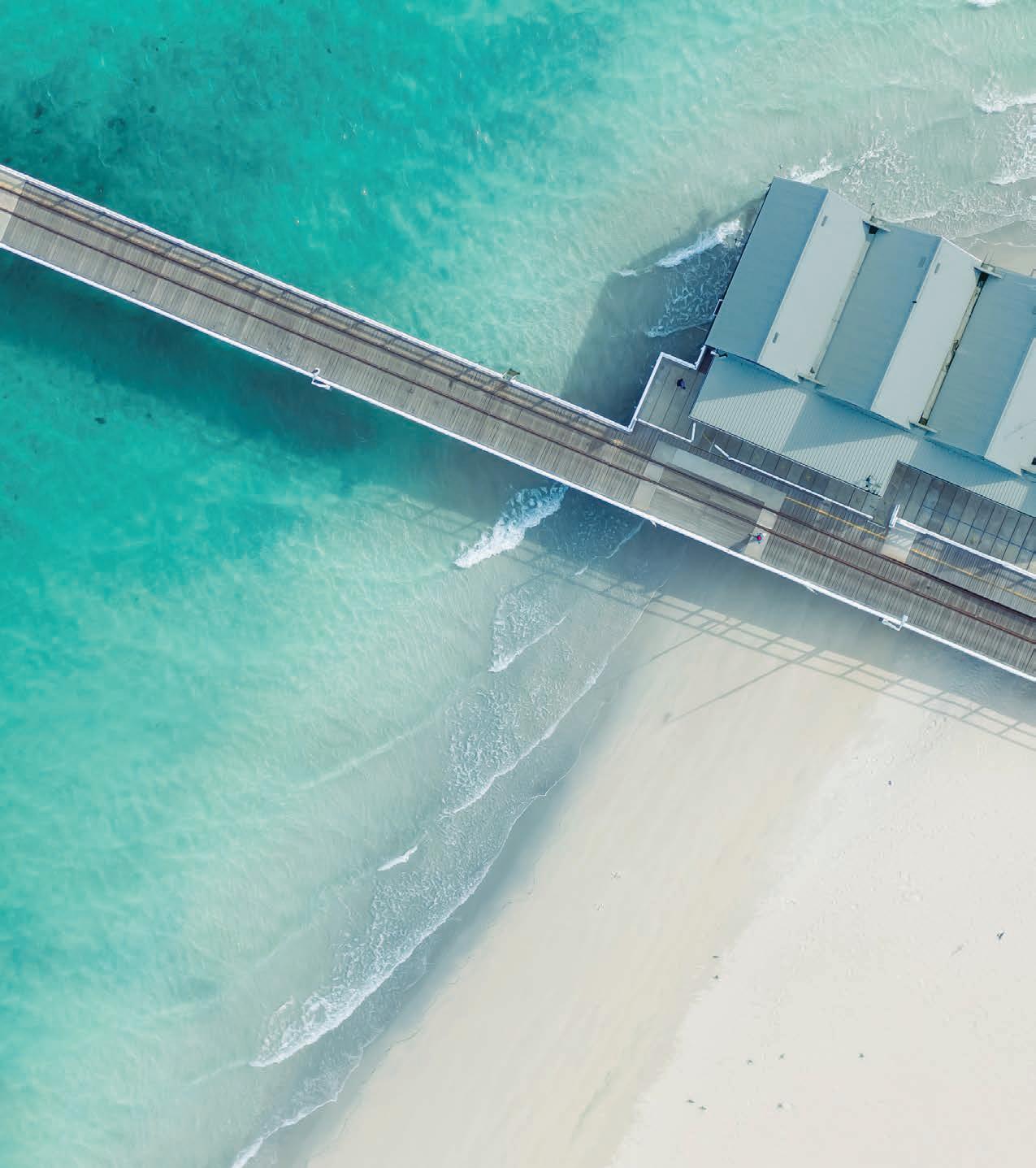




for the WA Curriculum Second Edition
Sha esbury Road, Cambridge CB2 8EA, United Kingdom
One Liberty Plaza, 20th Floor, New York, NY 10006, USA
477 Williamstown Road, Port Melbourne, VIC 3207, Australia
314–321, 3rd Floor, Plot 3, Splendor Forum, Jasola District Centre, New Delhi – 110025, India
103 Penang Road, #05–06/07, Visioncrest Commercial, Singapore 238467
Cambridge University Press & Assessment is a department of the University of Cambridge. We share the University’s mission to contribute to society through the pursuit of education, learning and research at the highest international levels of excellence.
www.cambridge.org







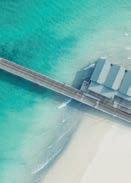
The heritage-listed Busselton Jetty, built in 1865, is the longest timber-piled jetty in the Southern Hemisphere, extending over 1.8 km into Geographe Bay.
First Edition © Cambridge University Press 2021 Second Edition © Cambridge University Press & Assessment 2025 is publication is in copyright. Subject to statutory exception and to the provisions of relevant collective licensing agreements, no reproduction of any part may take place without the written permission of Cambridge University Press & Assessment.
First published 2021 Second Edition 2025 20
Cover and text designed by Loupe Studio Typeset by QBS Learning Printed in <TBC>
A catalogue record for this book is available from the National Library of Australia at www.nla.gov.au
ISBN 978-1-009-65931-4
Additional resources for this publication at www.cambridge.edu.au/GO
Reproduction and Communication for educational purposes
e Australian Copyright Act 1968 (the Act) allows a maximum of one chapter or 10% of the pages of this publication, whichever is the greater, to be reproduced and/or communicated by any educational institution for its educational purposes provided that the educational institution (or the body that administers it) has given a remuneration notice to Copyright Agency Limited (CAL) under the Act.
For details of the CAL licence for educational institutions contact:
Copyright Agency Limited
Level 12, 66 Goulburn Street
Sydney NSW 2000
Telephone: (02) 9394 7600
Facsimile: (02) 9394 7601
Email: memberservices@copyright.com.au
Reproduction and Communication for other purposes
Except as permitted under the Act (for example a fair dealing for the purposes of study, research, criticism or review) no part of this publication may be reproduced, stored in a retrieval system, communicated or transmitted in any form or by any means without prior written permission. All inquiries should be made to the publisher at the address above.
Cambridge University Press & Assessment has no responsibility for the persistence or accuracy of URLs for external or third-party internet websites referred to in this publication and does not guarantee that any content on such websites is, or will remain, accurate or appropriate. Information regarding prices, travel timetables and other factual information given in this work is correct at the time of rst printing but Cambridge University Press & Assessment does not guarantee the accuracy of such information therea er.
Please be aware that this publication may contain images of Aboriginal and Torres Strait Islander people who are now deceased. Several variations of Aboriginal and Torres Strait Islander terms and spellings may also appear; no disrespect is intended. Please note that the terms ‘Indigenous Australians’ and ‘Aboriginal and Torres Strait Islander Peoples’ may be used interchangeably in this publication.
Cambridge University Press & Assessment acknowledges the Aboriginal and Torres Strait Islander Peoples of this nation. We acknowledge the traditional custodians of the lands on which our company is located and where we conduct our business. We pay our respects to ancestors and Elders, past and present. Cambridge University Press & Assessment is committed to honouring Aboriginal and Torres Strait Islander Peoples' unique cultural and spiritual relationships to the land, waters and seas and their rich contribution to society.




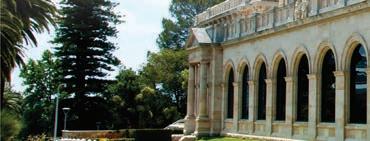



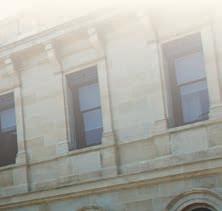

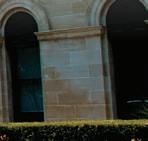




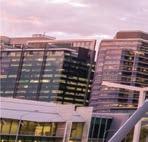
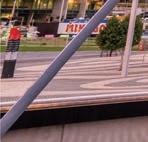


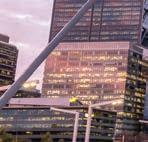
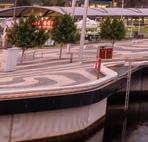
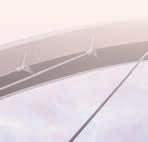

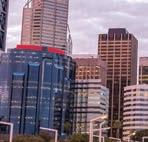
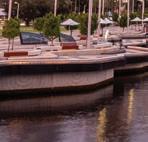
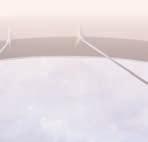

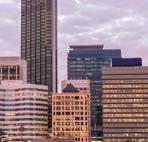


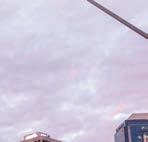

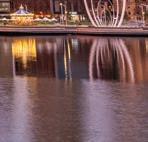
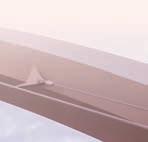

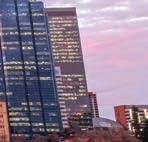



5.2
5.3
5.4
5.5
5.6
6.4
6.5
6.6






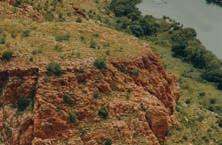

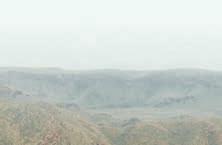
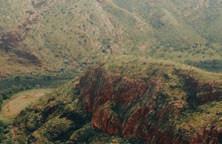
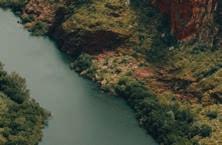







7.4
7.5
7.6
7.7
8.1
8.3
8.4
8.5
8.6
8.7
8.8
9.6
9.7
10.1 Chapter overview
10.2 Timeline of key events
10.3 The physical features of Rome and how they influenced the civilisation that developed there
10.4 Everyday life in ancient Rome
10.5 Warfare and the military in ancient Rome
10.6 The significant beliefs, values and practices of ancient Rome
10.7 The role of significant individuals in ancient Rome
10.8 Conclusion: why does it matter?
10.9 End of chapter activities
11.1 Chapter overview
11.2 Timeline of key events
11.3 The physical features of India and how they influenced the civilisation that developed there
11.4 Everyday life in ancient India
11.5 Warfare and the military in ancient India
11.6 The significant beliefs, values and practices of ancient India
11.7 The role of a significant individual in ancient India: Ashoka
11.8 Conclusion: why does it matter?
11.9 End of chapter activities
12.1 Chapter overview
12.2 Timeline of key events
12.3 The physical features of China and how they influenced the civilisation that developed there
12.4 Everyday life in ancient China
12.5 Warfare and the military in ancient China
12.6 The significant beliefs, values and practices of ancient China
12.7 The role of a significant individual in ancient China: Fu Hao
12.8 Conclusion: why does it matter?
12.9 End of chapter activities

(Available in the
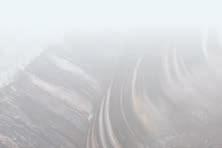

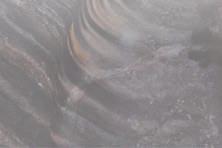
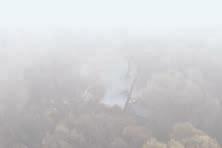
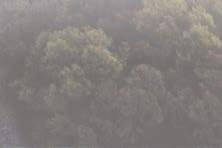

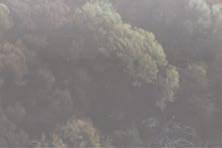

The Key concepts and skills model on page xi shows how this book has used an interconnected approach to integrate the subject matter and skills required throughout the Western Australian Curriculum for Humanities and Social Sciences.
This book contains four parts, with each part covering one of the four topic areas: Civics and Citizenship, Economics and Business, Geography, and History.
Each part of the book begins with a range of overview pages introducing you to the subject at hand.
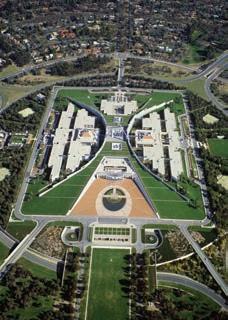
The pedagogical approach to supporting and developing learning growth that underpins this resource is represented by the Learning SOLO model on page xii, including suggestions for students and teachers on how to use this framework.
All chapters have been closely aligned to the Western Australian Curriculum for Humanities and Social Sciences (HASS) for this year level.
The History topic includes a detailed Historical overview Each chapter within the History Topics also opens with timelines of key events.
Chapter overview pages provide an Introduction, list of Learning goals, and Digital resources available for the chapter. Some chapters also include a list of skills you will develop by working through the topic.
Relevant videos can also be viewed on your phone by accessing the QR code in the margin.
Glossary terms are bolded in the text, defined on the page and collated in the digital versions of the textbook for easy reference.
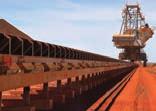
Every chapter also includes many skill-based activities aligned to the curriculum.

The end of chapter activities contain a variety of concluding tasks to consolidate and extend your learning.
A variety of activities explore key concepts and enable you to develop HASS skills while engaging with the topic.
Making connections between the HASS topics: at the end of each topic area, we include a range of activities to help students and teachers make connections between the topics and expand their understanding of HASS concepts.

Each chapter section ends with a set of end of section review questions, to check your recall of the material, as well as the ability to interpret it and create arguments. Throughout the Year 9 and 10 books, there are also application questions for students looking for a challenge.
These activities are different for each topic, so they are useful no matter in which order the topics are learnt.
At the end of the book is another activity, which brings the four topics together, called Putting it all together: key concepts for your memory bank. The authors have chosen certain key concepts per topic area to highlight in each year of the course from the Western Australian Curriculum. This activity brings these concepts together and can be used to consolidate the year’s learning in HASS, for revision, or as an assessment task.
This series offers a suite of digital tools in the Interactive Textbook and Online Teaching Suite, both powered by Cambridge Edjin.
• This series offers a suite of digital tools in the Interactive Textbook and Online Teaching Suite, both powered by Cambridge Edjin.
In the Interactive Textbook, students will find:
• Engaging new videos that aid understanding and support skill development
• Auto-marked quizzes and Scorcher competitions for instant feedback and fun, timed challenges
• Self-assessment tools to rate progress, check answers (if enabled by the teacher), and flag questions for teacher support
• Downloadable worksheets for use in-class or as homework
• A downloadable PDF version of the student textbook for offline access
In the Online Teaching Suite, teachers will find:
• Full access to the student Interactive Textbook
• Pop-up teaching tips
• Test generator to create and auto-mark custom quizzes
• Task management, monitoring and reporting tools
• Editable and downloadable resources, including:
° Chapter tests with answers
° Work planners for each chapter
° PowerPoint chapter summaries
° General capabilities projects with marking rubrics
° Worksheets with suggested responses
The key concepts and skills model below represents the interconnected approach in the Western Australian Curriculum for Humanities and Social Sciences, designed to integrate subject matter and skills. This book has been written with this framework in mind.
The Humanities and Social Sciences knowledge and understanding identifies key concepts that are the high-level ideas involved in teaching students to think from a Humanities and Social Sciences perspective. The concepts from Civics and Citizenship, Economics and Business, Geography, and History are introduced across the appropriate phases of schooling and continue to build through to Year 10 to develop students’ understanding of the Humanities and Social Sciences.
The Humanities and Social Sciences subjects include a range of skills that can be represented broadly as questioning and researching, analysing, evaluating, and communicating and reflecting. Students apply these skills to their everyday learning activities and as part of an inquiry approach to investigate historical and contemporary events, developments, issues, and/or phenomena. Inquiry is not necessarily implemented in a linear fashion and not all investigations will involve all skills. The Humanities and Social Sciences skills are applied across the learning area from pre-primary to Year 10 and should be taught explicitly.
Propose explanations for events, challenges, developments, issues and/ or phenomena; draw evidencebased conclusions and explanations; and suggest courses of action in response to events, challenges, developments, issues and/or problems
democracy; democratic values; the Westminster system; justice; participation; rights andresponsibilities
place, space, environment, interconnection, sustainability, scale, change
Present findings in appropriate forms for different audiences andpurposes using subjectspecific terminology; reflect on conclusions/findings to consider consequences
KEY CONCEPTS AND SKILLS
Develop questions about events, developments, issues and/or phenomena; collect and organise information, evidence and/or data, from primary and secondary sources
scarcity; making choices; specialisation and trade; interdependence; allocation andmarkets; economic performance and living standards
sources; evidence; continuity and change; cause and effect; significance; perspectives; empathy; contestability
Interpret information, evidence and/or data to identify key points orideas, points of view, perceptions and interpretations; identify thepurposeof sources and determine their accuracy and reliability
The Learning SOLO model below presents SOLO taxonomy as an accessible scaffold for use by students and teachers alike, both in and out of the classroom, as an aid to learning growth. Students can visualise how to build on their knowledge using this model. All of the activities in this book have been structured in this way to develop understanding.
Students: this box can help you to understand how:
1. well you have learnt something
2. you might clarify and build your learning so that you feel more confident
3. to use your teacher’s feedback to help you build your success
4. to use the different HASS skills to help you improve in class and assessment
Extended-abstract Communication and reflecting + Questioning and researching + Analysing + Evaluating
Relational Communication and reflecting + Questioning and researching + Analysing
Multistructural Communication and reflecting + Questioning and researching
Unistructural Communication and reflecting
How to use this box:
1. In white writing are the skills you will be using in your HASS classes and in assessments to demonstrate what you have Learnt.
• You will notice that the higher boxes add on skills to the boxes below them.
• This represents how your learning becomes more complex because you are connecting skills and/or ideas.
2. Use the black writing to help you understand how much you are connecting your skills and your ideas.
For example:
Unistructural – You are identifying something you have Learnt
Multistructural – You are working with information you have Learnt
Relational – You are connecting pieces of information that you have Learnt
Extended-abstract – You are connecting content you have Learnt with previous learning and learning from other areas
create, evaluate, assess, argue, hypothesise, debate, predict, measure, criticise
analyse, compare and contrast, correlate, question, integrate, structure, explain, deduce, link
explain, articulate, organise, question, choose, determine, make simple judgements, infer
describe, outline, identify, summarise, copy, select, memorise, define, match, retrieve, repeat, find
In each section are words that you will use in the learning activities that you do in your classes.
• You will notice that these words are different as you move through the sections.
• The words in each section tell you about changes in how you are learning.
• As you move through each section, what and how you are working is becoming more complex because you are connecting skills and/or ideas.
For example:
Unistructural – You are using your learning and your communication skills to copy, list or identify. These are some of the simpler skills to use.
Multistructural – You are using your communication and thinking skills to start describing and explaining connections in what you have Learnt.
Relational – You are using your communication and thinking skills to explain and analyse your learning by connecting different parts of what have Learnt.
Extended-abstract – You are using your communication and thinking skills to assess, debate and evaluate what is important from what you have Learnt by connecting different parts of your learning with other things you already know.


Teachers: SOLO stands for Structure of the Observed Learning Outcome. It’s a way to understand how students learn and how their learning becomes more complex over time.
1.Unistructural: At first, students learn just one or a few basic things.
2.Multistructural: Then, they learn several things, but they don’t see how they connect.
3.Relational: Next, they start to see how these things fit together and form a whole.
4.Extended-abstract: Finally, they can use what they’ve learnt in new and different ways.
It’s like building blocks: you start with a few, then add more, connect them, and eventually create something new and unique with them.
Sally Davies (lead and History author) has a degree in Classics and Ancient History and has been teaching Humanities, Ancient and Modern History and English for 25 years. She is passionate about her speciality, Roman (and all other things Ancient) History, but best loves working with young people to engage them in the core skills of critical thinking and problem solving, which the HASS Learning Area does best. She has worked with the School Curriculum Standards Authority as an EST writer, ATAR Chief Examiner and Chief Marker and has written for ACARA. Sally has developed ATAR and General Course syllabuses through her involvement with the Ancient History Course Advisory Committee, which she currently chairs. Sally is Vice President of the History Teachers Association of WA (HTAWA). In this role she writes study skills books, edits the ATAR Good Answer Guides, and facilitates learning for teachers and students.
Anish Badgeri (Economics and Business author) is an experienced Humanities and Social Sciences Teacher who has taught across a range of public secondary schools in Western Australia. His academic background in Politics, International Relations, and Economics makes him well placed to explore the importance of these concepts in our increasingly interconnected world. Anish is passionate about the power of education in fostering a more inclusive and diverse society.
Anish would like to express his gratitude to the educators that have shaped his life and contributed to his appreciation for the Humanities.
Emilie Ingate (Civics and Citizenship author) is a senior teacher who has been teaching Humanities and Social Sciences for over 12 years. She has recently added a Certi cate IV in Legal Studies to her Bachelor of Arts in Politics and International studies. She believes Civics and Citizenship is a subject connected in many ways to our everyday lives, hoping to show students the relationships between laws, justice, people, power and decision-making that in uence their lives. She has experience teaching both ATAR and General subjects such as Politics and Law, Modern History and Psychology
Emilie would like to thank her people (too many to mention) who have provided encouragement and reassurance during this process, and she sincerely appreciates her fur family who have calmly sat with her while writing providing emotional support and distraction via walks.



Jessica Threlfo (Geography author) is a Humanities and Social Sciences teacher, specialising in the delivery of ATAR Geography. She has taught a range of HASS subjects in Western Australian public secondary schools for more than 15 years, with a particular passion for differentiated learning and assessment. Jessica is a passionate advocate for the inclusion of skills-based learning and the use of ICT to enrich Geography education.
Jessica would like to thank her husband Adrian and their two children, as well as her work family, for their support in the writing of this book.
















Australia is a democratic country, with many laws that affect our daily lives. The rules and regulations contained in these laws tell us what we must do and cannot do. For example, road safety rules set the speed at which we are allowed to travel on a freeway and determine when we are legally allowed to drive. These rules help keep Australian society in order, and there are consequences when a breach occurs.
Civics and Citizenship in Year 7 examines the way that Australia is governed and the legal protections given to its citizens. The purpose and value of the Australian Constitution will be examined, as well as the framework it
provides for our government, including Australia’s parliamentary system and how political power is exerted in Australia through the different states and territories and the federal government. It will look at how citizens participate in constitutional change through voting in what is known as a referendum. The study of Civics and Citizenship also involves the Australian legal system. We will examine how the Australian legal system aims to provide justice through upholding key principles, including the rule of law and the right to a fair trial. There will be an overview of the court system and its key personnel, in addition to the roles citizens play in ensuring that justice is achieved.

Throughout this unit there will be a focus on developing your understanding of democracy, government and law. In Civics and Citizenship, the concept of democracy is a cornerstone of protecting people’s rights and freedoms and measuring the political and legal system. It includes the broad de nition of ‘people power’ and the characteristics of rule of law, open political participation, independent and impartial legal systems, separation of power and transparent and accountable governments. Government is a group or individual that controls rules and systems for a particular country, state or community. Governments are determined by who has power and how they got it. Not all governments are given power legitimately (by agreement), such as through elections; some governments seize power by force and manipulation. Through their actions and treatment of the people, a government can be seen as ‘good’ or ‘bad’. Through the authority they hold, governments create laws, which are the rules they create for society that are punishable by the courts when
broken. Laws set standards for behaviour, relationships, trade and commerce, safety and education for citizens, businesses and other organisations. Everyone should be treated equally when laws are created, and everyone is expected to follow the law, including the law-makers (government). Laws should be above power; this is known as the ‘rule of law’.
The concept of ‘rule of law’ is about everyone being responsible for their actions and obeying the law, without exception. Rule of law can be achieved through:
• adherence to democratic principles and ideals
• protecting rights and freedoms
• ensuring multiple methods and independent and impartial organisations to monitor, investigate and apply consequences for corruption and misuse or abuse of power.
Although this unit has a speci c focus on democracy, government and law, these concepts are parts of the wider ideas of power and justice.
People are at the core of this unit and, as shown in the following diagram, the people are connected to government, law, rights and responsibilities. The arrows move both ways because each has an in uence or acts upon the other.
In a democracy:
• the people elect the government, and the government should represent and be made up of representatives of the people
• the people can help create ideas and support for laws; at the same time, they must follow these laws
• the government can create laws through Parliament; however, the
highest law (the constitution) can restrict governments from making unfair laws; they must act responsibly
• the people have rights as members of a democratic society, yet they must make sure they do not stop others from enjoying their rights
• the people have rights or entitlements when members of a country. This can include the right to vote in elections and the right to have their legal dispute heard in a court. To exercise these rights, people must also ensure that they ful l their responsibilities associated with these rights, such as attending a polling place and lling in a ballot paper and following the law.
B In Civics and Citizenship, people are connected to government, law, rights and responsibilities.
Rights and responsibilities refer to the various freedoms and obligations that individuals have within a democracy. For example, all Australian citizens over 18 have the right to vote in elections, but due to voting being compulsory in our country, individuals also have a responsibility to participate in the election process. Pop this concept into your memory bank. At the end of this book is an activity that will test your understanding of this and other key HASS concepts.













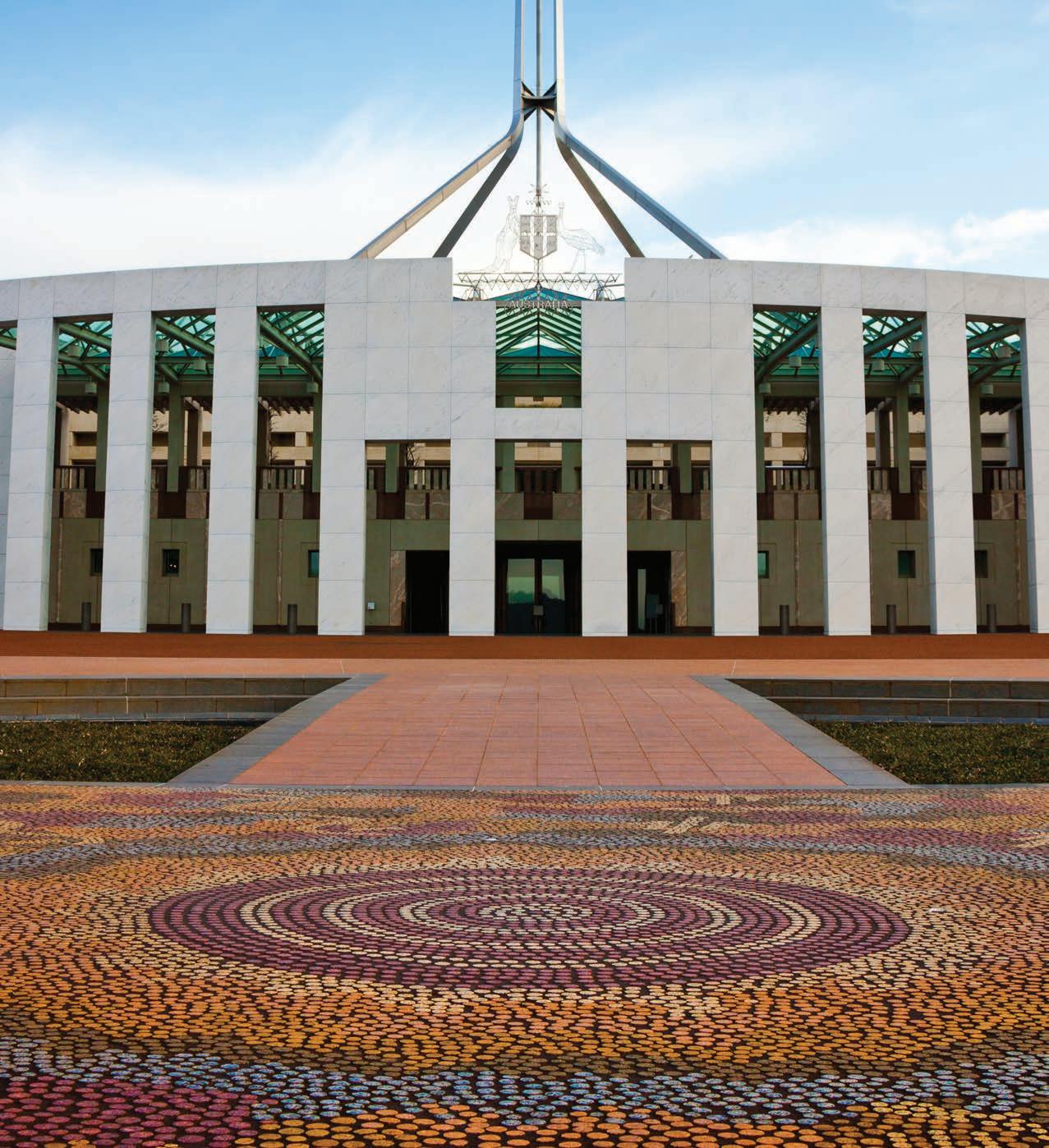
The Commonwealth of Australia Constitution Act 1900 established the principles of representative and responsible government that are highly valued in our society. The Constitution contains the set of rules by which Australia is governed. These rules are important and cannot be changed unless the change is approved by the people through the process of a referendum. Changing the words of the Constitution is hard due to the double-majority requirement – a feature we will examine in detail.
We will look at important concepts for the way our democracy operates and how power is kept in check in the Australian system of government, including the ‘separation of powers’, the ‘division of powers’ and the different roles of the House of Representatives and the Senate in our Parliament.
After completing this chapter, you should be able to answer these questions:
• What is a democracy?
• What is a constitution?
• How does Australia’s democracy operate?
• What is the structure of government in Australia?
• How does the structure of the Australian Government uphold and protect democracy?
• How are the powers and responsibilities of government organised in Australia?
• How can citizens in uence a change in the law?
• How do we change the Australian Constitution?
Visit the Interactive Textbook to access:
• interactive review quizzes and Scorcher competition
• videos, image galleries and other extra materials.
Parliament House is the meeting place of the Parliament of Australia, the legislative body of Australia’s federal system of government. Centremost in the forecourt is the mosaic pavement designed by Warlpiri artist Michael Nelson Jagamara AM. The mosaic is surrounded by a ceremonial pool of water, referencing Australia as a land surrounded by sea. It is a symbolic reminder, at the heart of Australia’s democracy, of Aboriginal and Torres Strait Islander Peoples’ ongoing connection to this land, the oldest continuous civilisation on Earth.
• What is democracy?
• What is a constitution?
democracy a political system where a government’s power is vested in its citizens, who vote through elections to shape decisions
The Western Australian Curriculum states that a democracy is:
A system of government based on the people of an entity, that is, ‘government by the people’; a form of government where the supreme power is vested in the people and exercised directly by them or by their elected representatives under a free and fair electoral system.
Source: Western Australian Curriculum, Humanities and Social Sciences, Glossary
In the Cambridge Dictionary, the de nition of democracy is:
the belief in freedom and equality between people, or a system of government based on this belief, in which power is either held by elected representatives or directly by the people themselves.
Source: Cambridge Dictionary website
Australia’s government processes and structures of Parliament are designed to uphold representative democracy. Representative democracy refers to a system of government where citizens choose representatives from among themselves to form a government through the process of an election.
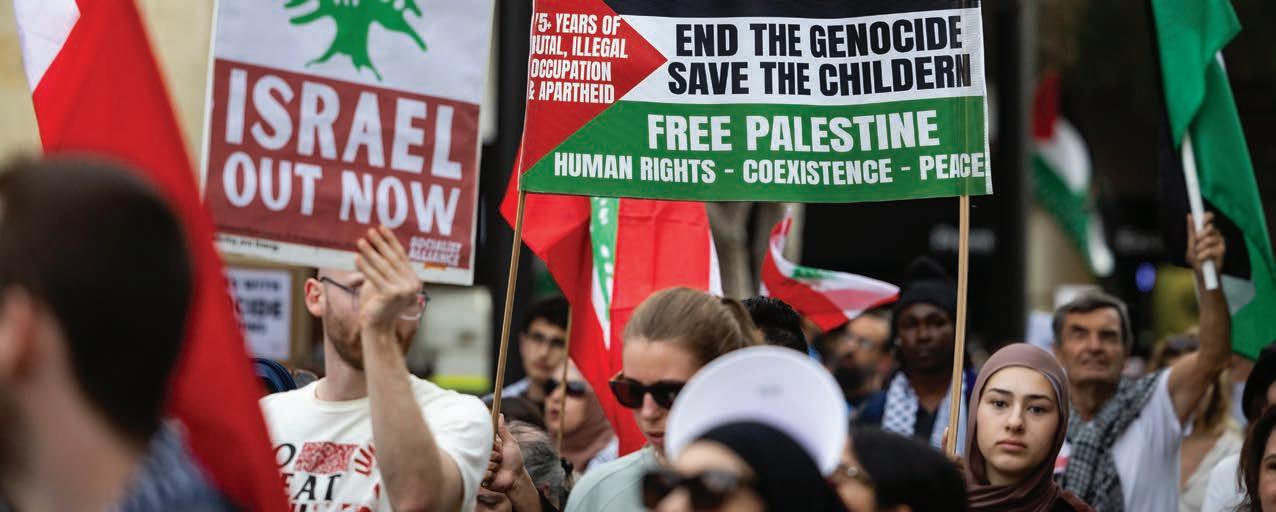
Think, pair, share
Watch the ‘Setting the scene’ video, then read the statement below.
‘The Magna Carta was written in medieval England and is no longer relevant to Australians today.’
1Think about both the ‘Setting the scene’ story and the statement you have just read. List any questions or thoughts you might have. What do you think about the statement? Is it accurate? Why or why not?
2Pair up with a partner, and take it in turns to share your thoughts about the statement. Listen carefully as your partner shares their thoughts, and try to summarise in writing what your partner thinks about the topic.
3Share your thoughts with the class.
Key concepts: democracy, democratic values, the Westminster system
In 1870, Western Australia was granted representative government, with the Legislative Council consisting of 12 elected Members and six nominated by the Governor. Representative government is when the people entrust the job of governing to representatives chosen at regular elections.
HASS skills: questioning and researching, analysing, evaluating

Western Australia adopted the British constitutional practice of responsible government in 1890. Responsible government is a political system in which accountability is crucial; the government is responsible to the Parliament and the people; and it can be held to account (i.e. held responsible) for its actions. Within responsible government, a government is formed by the political party (or coalition of parties) with the most representatives in the lower house (Legislative Assembly). This government must maintain the con dence or support of that majority to remain in power. Under this system, executive power is of cially held by the British monarch and is represented by the Governor of Western Australia. The Governor (currently Christopher Dawson)
acts on the advice of the Premier and the Ministers (the Cabinet) of the state. As such, the executive power is in reality held by the ministry or Cabinet. Ministers may be appointed from either house (Legislative Council – upper house, Legislative Assembly – lower house), but may only hold of ce while retaining the con dence (majority) of the lower house.
There are currently 37 Members of the Legislative Council (MLCs) who are elected from across the state for a term of four years. Members of the Legislative Assembly (MLAs) are elected from each of 59 electoral districts for a four-year term.
Responsible government also needs to consider and be responsive to public opinion. For example, if people are protesting due to environmental concerns about an issue that is ongoing, and perhaps also receiving a lot of media coverage, the public has expectations that they are heard. Members of Parliament are representatives of the people, and as mentioned, are responsible to their electors through the system of elections. A government that does not act for the people and is not responsive to their needs or concerns is likely to not be voted back into power.
A shared ministerial responsibility is the main component of responsible government. The expectation is that the ministry or Cabinet ‘speak with one voice’, and so a Minister is obliged to resign if they are unable or not willing to publicly support a key ministry or Cabinet decision. If the Opposition is successful in raising a breach of individual ministerial responsibility within Parliament, this is known as a censure motion. It may generate negative public opinion and lead to the resignation of a Minister.

The values of ‘unity, solidarity and secrecy’ are key components of ministerial responsibility. Another component of this principle is that Cabinet decisions are made ‘behind closed doors’ and its discussions remain ‘secret’. So with discussions remaining private and an expectation to publicly support decisions, these practices are known as ‘Cabinet solidarity’. Other expectations of a responsible government are:
•individual ministerial responsibility. A Minister is responsible to the Parliament for the management and administrative decisions in matters under the Minister’s control.
•the expectation of integrity. Some are included in the Ministerial Code of Conduct, including:
i.Ministers must not mislead Parliament.
ii. Ministers must not use their position for personal gain.
iii.Ministers should avoid any con ict of interest between their private actions and their of cial duties.
iv. Ministers must not engage in any unethical behaviour that is unacceptable to the community.
Check your understanding
1Recall the year Western Australia adopted the British constitutional practice of responsible government.
2Explain, in your own words, what a censure motion against a Minister is. (Remember, when you ‘explain’, you should include causes and effects).
Key concepts: democracy, the Westminster system HASS skills: analysing
Edith Cowan
Edith Cowan (1861–1932) was a pioneering Australian social reformer and politician. Born near Geraldton, Western Australia, her early life had many personal challenges, including the death of her mother and the execution of her father – experiences that shaped her commitment to social justice.
Cowan was deeply involved in community work, focusing on the rights and welfare of women and children. She helped establish several organisations, including the Karrakatta Club, which was Australia’s first women’s club, and the Women’s Service Guild. Her advocacy contributed to the creation of the King Edward Memorial Hospital for Women.
In 1921, Cowan made history by becoming the first woman elected to an Australian Parliament, representing the Nationalist Party in the Western Australian Legislative Assembly. Her election was a significant milestone for women’s political representation in Australia.
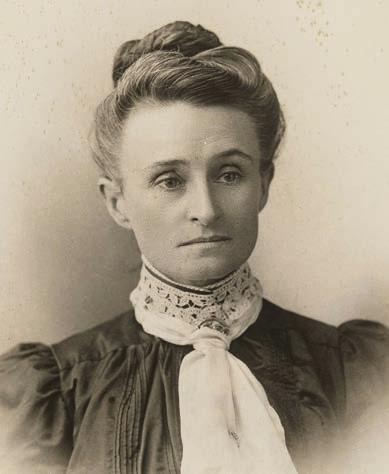
During her term, Cowan focused on issues such as education, health, and the welfare of women and children. She advocated for the establishment of the Children’s Court, which provided a more compassionate approach to juvenile justice. Cowan also supported legislation that improved the legal status of women, including the introduction of the Women’s Legal Status Act 1923, which allowed women to practise law and serve on juries.
Cowan’s work had a lasting impact on Australian society. Her efforts in Parliament helped pave the way for future generations of women in politics and contributed to significant social reforms. Her legacy is honoured through various memorials, including her depiction on the Australian $50 note and the naming of Edith Cowan University.
Analysis questions
Research online to learn more about Edith Cowan’s career and her contributions to society. Develop a timeline highlighting key events in Edith Cowan’s political career and then answer the following questions based on your research.
1Identify Edith Cowan’s key legislative achievements (laws she was able to introduce or change) during her term in the Western Australian Legislative Assembly.
2Explain how her work helped improve the lives and welfare of women and children in Western Australia.
3Discuss the significance of Edith Cowan being the first woman elected to an Australian Parliament. In your response, you could consider:
• why her election was significant at the time
• why her election is still considered significant
• how her election impacted women’s rights in Australia
• how her election impacted women’s political representation
• how Edith Cowan’s election and her achievements are remembered today
• issues regarding women’s rights and political representation that exist today.
Key concepts: democracy; democratic values; justice; participation; rights and responsibilities
HASS skills: evaluating, researching, communicating and reflecting
The Western Australian Curriculum states that a constitution is:
The fundamental principles on which a state or other organisation (such as a club) is governed. Usually this takes the form of a legal document setting out specific powers for the government or governing of that entity.
Source: Western Australian Curriculum, Humanities and Social Sciences, Glossary
colonies, which were independent of each other and had the right to govern within their own borders. These six colonies were not answerable to any authority in Australia, but rather to the British Government. Throughout the 1800s, many groups and individuals began to promote the concept that Australia would be better off if the six colonies amalgamated into one nation, under one centralised government. An emotional and sometimes bitter debate raged for the two decades in the lead-up to Federation in 1901.
Australian Constitution a set of rules that came into effect on 1 January 1901. It outlines some of the rights of Australians and how power is shared between federal and state parliaments.
Federation the process of uniting several states to form a single national government referendum a general vote on an issue affecting the Australian Constitution that all enrolled voters must vote on
In the Cambridge Dictionary, the de nition of a constitution is:
the set of political principles by which a state or organization is governed, especially in relation to the rights of the people it governs.
Source: Cambridge Dictionary website
On 1 January 1901, Australia gained a Commonwealth Constitution, which outlined the legal framework and rules that apply to the governance of Australia. Prior to the Australian Constitution coming into force, Australia consisted of six

(1900). Parliament House Art Collection, Art Services Parliament House.
The different viewpoints and the fears of the smaller colonies of being ‘consumed’ by New South Wales and Victoria played a substantial role in shaping the nal Constitution document. As with any democratic process, politicians have to persuade the public to vote for their proposals, and sometimes they have to make trade-offs to gain voter con dence. This was essential to get the necessary votes in each of the Federation referendums
Amazing but true…
Did you know that Western Australia was the last colony to agree to join the Federation of Australia? In fact, Western Australia only decided to join after a second referendum in 1900, influenced by the promise of a transcontinental railway linking the east and west coasts. This decision was crucial in shaping the Australian Constitution and ensuring the unity of the nation.
After a series of referendums in 1898, 1899 and 1900, the colonies eventually found a compromise position on a proposed constitution, but, before it could take effect, approval from the British Parliament was required. The Commonwealth of Australia Constitution Act 1900 (UK) was passed and Australia came into existence as a nation on 1 January 1901.
The following are the key features of the British Act:
•Australia was a federated nation consisting of six states (Western Australia joined shortly after the other states). The Northern Territory gained self-government in 1978 and the Australian Capital Territory in 1988.
• There was a bicameral federal Parliament (House of Representatives and Senate).
•The High Court of Australia was established to oversee any other courts and provide ‘ nal and conclusive’ judgments upon any appeals it hears (s 73 Australian Constitution).
•It outlined both the division of power between the state and federal governments (s 51) and the separation of powers (Chapters I, II and III) as they would apply in Australia.
•It enabled the Constitution to be altered by a referendum (s 128 Australian Constitution).
The Constitution itself is clause 9 of the Act. Although the Constitution came into force through an Act of the British Parliament, the Act brought the Commonwealth of Australia into existence as a nation, and the Constitution can only be changed by a referendum of Australian voters.
The Australian Constitution contains certain mechanisms to limit the power of the new federal Parliament that resulted from debate and discussion during the Federation process:
•The Senate provides a ‘check’ (restraint) on the power of the House of Representatives.

•The Senate is sometimes called the ‘states house’, since all states have the same number of senators (12) regardless of population. Each territory has two senators.
•Section 128, which covers the process for altering the Constitution, speci es that a majority of states need to vote ‘yes’ on a proposal for it to succeed, that is, four out of six states. In
addition, an absolute majority of voters Australia-wide must vote ‘yes’, that is, 50 per cent of voters plus one. This strict requirement has made constitutional change very dif cult: no referendum has succeeded since 1977.
•‘Division of powers’ ensures that the federal and state parliaments have separate law-making responsibilities. Section 51 outlines the law-making responsibilities of the federal Parliament. Some of these are shared with the states, such as trade; however, responsibilities not mentioned in s 51 are the responsibility of the state parliaments, such as law and order and public transport.
Australia’s representative democracy is enshrined in the Australian Constitution. Members of the upper and lower houses of Parliament must be elected, as sections 7 and 24 of the Constitution dictate that Members of both of the houses of federal Parliament need to be ‘directly chosen by the people’.
The process of elections is the keystone to representative government, where Australian voters elect members of Australian political parties, or independent candidates, for of ce. Once elected, Members of Parliament must act on behalf of voters by representing their views in Parliament. This ensures that issues within electorates are raised and matters are dealt with.
election a local, state or national ballot cast by citizens who vote for a person from a political party or a person standing independently electorate a defined area within a state or territory that is represented by a member of a political party or an independent
In Parliament, the structure of the House of Representatives also shapes who will form the of cial Opposition. The party (or coalition of parties) that has the most non-government Members in the House of Representatives becomes the Opposition party and its leader becomes the Leader of the Opposition.
The Opposition has the of cially recognised objective of challenging the government. Its job is to make sure that different points of view are raised and that it scrutinises the government. It is considered an ‘alternative government’. This means that it would form government if the existing government loses an election.
The Opposition and other nongovernment Members have opportunities to initiate debate on subjects of their
End of section 1.2 review Go online to access the interactive

own choosing and to question Ministers. This may be on matters for which they are administratively responsible. Most discussions of matters of public importance (held daily except Mondays) are on topics proposed by non-government Members. These are usually critical of some aspect of government policy or administration.
1.2 Review questions Recall
1 Define the term ‘election’. 2 Explain the difference between ‘direct democracy’ and ‘representative democracy’.
Recall why sections 7 and 24 of the Australian Constitution are important.
Discuss the role of the Opposition and why this role is important.
5 Research two (or more) examples of when a Minister has resigned from their position. Your examples can be from the federal Parliament or the WA state Parliament. Analyse each example through the following questions.
a Which parliament (federal or state) and chamber (upper or lower house) was the Minister elected to?
b Which electoral division or electorate did they represent (i.e. where in Australia were they elected / who did they represent)?
c What ministry were they the Minister of?
d Explain why they resigned from their position. Did their resignation have to do with the principles of ministerial responsibility (discussed in section 1.2)?
e Do you think Ministers should be able to resign from their positions? Refer to your researched example, and explain reasons for and against Ministers being able to resign in your response.
• What is the separation of powers between the legislature, executive and judiciary?
• What is the composition of the legislature, executive and judiciary?
In 1887, Lord Acton, an English historian, writer and member of the British House of Commons, famously stated: ‘Power tends to corrupt, and absolute power corrupts absolutely.’
This well-known quote is often credited with outlining the core reasoning behind the separation of powers principle that modern democracies are built upon. The concept of the separation of powers was developed by the 18th-century French political philosopher Baron de Montesquieu, Charles-Louis de Secondat. He believed that the civil liberties of society were at risk if the key organs of government were controlled by one person or group.

check and balance the sharing of power between groups, individuals and institutions that allows one group to prevent the abuse of power by another group civil liberties basic rights of individuals that are protected by law (e.g. freedom of religion and freedom of speech)
justice the system of laws in a country that judges and punishes people, but can also mean fairness in the way people are treated
Baron de Montesquieu identi ed these key organs of government (branches or arms of government) with separate roles in governing a state as:
• the legislature: the law-makers (in Australia, this is the Parliament: the House of Representatives and the Senate)
•the executive: the Ministers and government departments who administer the laws made by the Parliament (in Australia, the GovernorGeneral, the Prime Minister and Cabinet are members of the executive)
•the judiciary: the courts that interpret and apply the law.
If one person or group controls all three organs or arms of government, then that person or group has unregulated power and the risk of dictatorship is very real. If the three arms are independent, each acts as a check and balance on the others, guaranteeing that no branch has absolute power and is accountable for its actions, and that civil liberties are protected.
Australia’s founders wanted the doctrine of the separation of powers to apply upon Federation. The rst three chapters of the Constitution are set out in accordance with the doctrine:
Activity 1.2
Check your understanding
•Chapter I: The Parliament (ss 1–60)
•Chapter II: The Executive (ss 61–70)
•Chapter III: The Judicature (ss 71–80).
In theory, Australia has adopted the doctrine of the separation of powers but, in fact, the Australian Constitution only partially realised this because some members of the executive are also members of the legislature. The Ministers and the Prime Minister are members of both the executive and the legislature. The separation of powers does not exist in its pure form in Australia.
The key feature of the separation of powers in Australia with regard to the functioning of democracy is that there is a clear distinction between the judiciary and the other arms of government. For a true democracy to operate, and in the interests of justice, it is crucial that there be no overlap between the judicial and nonjudicial arms of government.
Protecting the independence of the judiciary is one of the cornerstones of our democracy. An independent and impartial judiciary ensures that the separation of powers functions effectively and that the judiciary, through its decisions, can ‘check’ the work of the executive and legislature, thus ensuring that their actions are lawful.
1Outline the role of the three ‘organs’ of government. Explain how the separation of powers operates in Australia.
2Outline the significance of the separation of powers for the operation of a democracy.
Key concepts: democratic values, the Westminster system HASS skills: analysing, evaluating
Chapter III of the Australian Constitution is titled ‘The Judicature’ and it is within this chapter that the judicial system of the Commonwealth is created. Section 71 creates the High Court of Australia and speci es that it must contain one Chief Justice and at least two other judges.
The rst sitting of the High Court was on 6 October 1903, with three judges. In 1906, the number of judges was increased to ve; in 1912, the number of judges was further increased to its current number, seven.
Section 71 also allows the Commonwealth Parliament to create other courts. Over time, Parliament has created the Federal Court, the Family Court and the Federal Circuit Court of Australia, which are all under federal jurisdiction. In 2021, the Morrison government introduced legislation merging the Family Court with the Federal Circuit Court of Australia to form the Federal Circuit and Family Court of Australia.
Section 72 outlines how High Court judges are appointed and, as a result of a successful referendum in 1977, speci es that they must retire when they reach the age of 70. Most High Court judges come from the bench of the state Supreme Courts or the Federal Court. They are chosen by the ‘Governor-General in Council’, which means they are chosen by the government of the day. While most sittings are in Canberra, cases can be heard in the other capital cities and even by video link if it is necessary.
The system of judicial review involves review of the actions of a government of cial or department by a court of law. Generally, the system involves investigating the legality of a decision or action. The High Court exercises judicial review whenever it makes a decision about whether a particular law is constitutionally valid or not. It has almost unlimited jurisdiction to review Commonwealth administrative decisions.

Go online to access the interactive section review and more!
The Federal Court undertakes most judicial reviews by applying the Administrative Decisions (Judicial Review) Act 1977 (Cth). It is important to understand that this Act applies strict rules and does not give the Federal Court the power to review a decision on its merits or fairness, but only on whether the decision is made in accordance with the law. Appeals can go to the High Court.
A far more effective and ef cient way for individuals to appeal the decision of a government of cial or body is through non-judicial review of administrative action
in the Administrative Review Tribunal (ART), which has jurisdiction to review the merits, that is, decide the case again.
Courts other than federal courts may also review decisions on the merits, if they have statutory authority to do so. Generally, judicial review involves the court with appropriate jurisdiction investigating whether a government of cial or department has acted ultra vires (beyond the legal power or authority of the person performing an action), or whether they or it have followed the rules of natural justice (procedural fairness).
Recall
1 Define the term ‘the legislature’.
2 Define the term ‘the executive’.
3 Define the term ‘the judiciary’.
Interpret
4 Create a visual representation of the roles of three branches (legislature, executive, judiciary) of government (e.g. diagram, images, cartoon, caricatures, symbols).
5 Identify what feature of the Australian system of responsible government means that the separation of powers does not exist in its pure form.
6 Discuss why it is important that the High Court has almost unlimited jurisdiction to review Commonwealth administrative decisions.
Argue
7 ‘Power tends to corrupt, and absolute power corrupts absolutely.’
a Rewrite this statement by Lord Acton in your own words.
b Explain what Lord Acton was warning against with this statement. Why is ‘absolute power’ a threat to democracy?
c Identify and explain the features of the Australian system of government that aim to prevent ‘absolute power’.
Key concepts: democratic values, the Westminster system, justice
skills: analysing, evaluating
• What is the structure of government in Australia?
• Why is there a division of power between the states and territories and the federal government?
Australia’s federal system of government is modelled on the British Westminster system. This Federation consists of six
states and two territories as well as a federal body known as the Commonwealth Parliament, making up nine parliaments in total in Australia. The Commonwealth Parliament is located in Parliament House in Canberra, the capital of Australia.

The Westminster system is a key concept that you should work hard to understand well. ‘Westminster’ refers to the UK Parliament, or the part of London where the Parliament buildings are located. Due to Australia’s history as a British colony and adoption of a similar legal and political system, we have inherited many shared values, traditions and processes. These include a constitutional monarchy, a bicameral Parliament and parliamentary system of government. However, other influences, such as from the United States, have meant that Australia’s system is different from that of the United Kingdom. Pop this concept into your memory bank. At the end of this book is an activity that will test your understanding of this and other key HASS concepts.
Westminster system based on the British political system developed in Westminster, London. It is another term for parliamentary government, in which the executive is drawn from the legislature. Government is formed by the majority party or coalition in the lower house of Parliament. The leader of that party or coalition becomes the Prime Minister. state a defined area within Australia controlled by its own political unit, which has the power to pass its own laws. These laws are protected by the Australian Constitution, except where they contradict Commonwealth law. territory a defined area within Australia controlled by its own political unit, but its laws can be revoked by the federal government
Think, pair, share
Look at Figure 1.4.1. Think about which of the three branches of government each part of the equation would belong to. What responsibilities would they have in these branches of government? Journal one point for each part. Discuss this with your partner or class.
Key concepts: democratic values, the Westminster system
bicameral refers to the two houses of Parliament in New South Wales, Victoria, Western Australia, South Australia and Tasmania unicameral refers to a Parliament having one house, such as in Queensland, the Northern Territory and the Australian Capital Territory
A Parliament is a body of elected representatives. It debates proposed legislation, passes or rejects it, and amends legislation. Apart from Queensland and the territories, all state parliaments and the federal Parliament are bicameral. This means that they have two houses, an upper house and a lower house. The Australian Capital Territory’s Parliament is unicameral: it only has a lower house, called the Legislative Assembly. In Western Australia, the lower house is known as the Legislative Assembly and the upper house is called the Legislative Council.
HASS skills: analysing
In federal Parliament, the upper house is the Senate and the lower house is the House of Representatives. Lower houses are elected based on population. For each of the 150 federal electorates with roughly the same voting population, one representative is chosen. The states with a greater population will have more representatives. Upper houses are usually formed on equal representation, so that each state or region has the same number of Senators or Councillors.
The upper and lower houses of Parliament have different roles, as seen in Table 1.4.1.
Lower house
•Forms government
•Decides matters of national interest
•Represents the interests of the people in their electorates
•Proposes, debates and votes on Bills and amendments
•Examines issues in committees
•Scrutinises executive government
Upper house
•Decides matters of national interest
•Represents the interests of people in their states/territories
•Proposes, debates and votes on Bills and amendments
•Examines issues in committees
•Scrutinises executive government
Governor/Governor-General
•Gives Royal Assent (approval) to a Bill passed by the House of Representatives and the Senate; makes recommendations to change a Bill
•Starts the process for a federal election
•Appoints times for sessions of Parliament to be held
•Appoints and dismisses Ministers


State parliaments delegate their lawmaking authority to local councils. Local councils are comprised of elected members from a council electorate. The number of members who make up local councils varies, and this depends on the size of an electorate.
Australia is a constitutional monarchy This means that the monarch of the United Kingdom is also the monarch of Australia. The monarch is represented by the Governor-General at the federal level and by the Governor at a state level. Governorsgeneral and governors are appointed by the monarch based on advice from the respective federal and state governments.
The actual make-up of the Australian Constitution clearly re ects the chief concerns of the Federation process. The reluctance of the states to hand over complete control to the Commonwealth is evident in Chapter I, Part V of the Constitution, in sections 51 to 60. These sections provided the split (or division) of powers between the Commonwealth and the states.
constitutional monarchy a form of government where the monarch is the head of state Governor-General the monarch’s representative at a federal level Governor the monarch’s representative at a state level
1Recall how many states and territories make up Australia’s Federation.
2 The Western Australian Parliament is bicameral in nature. Recall what this term means.
3Suggest why you think the upper house does not form government.
4Outline two strengths and weaknesses of Australia’s bicameral Parliament.
legislative power the legal power or capacity to make laws concurrent powers existing at the same time; powers held by both state and federal parliaments exclusive powers powers that can be exercised only by the federal Parliament
Section 51 of the Constitution speci es the legislative powers of the federal Parliament. The federal Parliament has the power to make laws with respect to all of the matters listed in s 51. These are sometimes referred to as the ‘enumerated powers’. It is important to realise that the states can also make laws in many of the areas listed in s 51 – namely, those areas over which the federal and state governments have concurrent powers
Section 52 outlines the exclusive powers of the federal government. Only the Commonwealth (federal) Parliament can legislate on:
i.the seat of government of the Commonwealth, and all places acquired by the Commonwealth for public purposes
ii.matters relating to any department of the public service (controlled by the Commonwealth, according to the Constitution)
iii.other matters declared by the Constitution to be within the exclusive power of the Parliament.
Section 52(iii) refers to other sections of the Constitution that give the Commonwealth exclusive powers or restrict the states from making laws in that area. Section 90 gives the Commonwealth exclusive powers over customs and excise duties for goods and services entering the country, and s 114 restricts the states from raising or maintaining a military force, giving the Commonwealth sole responsibility for national defence. Section 115 also prevents states from creating money and currency, making this exclusive to the Commonwealth Parliament.
Section 90 of the Constitution gives the Commonwealth exclusive powers over customs and excise duties for goods and services entering the country.
Analysis questions
1Define ‘customs’ and ‘excise duties’.
2 Using your own knowledge and research, list 4–8 goods and services that Australia imports. Include at least one example of an imported service, and explain how a ‘service’ can be imported.
3 Conduct further research to identify what excise duties the Commonwealth Government imposes on your listed imported goods and services.
4 Using your responses to Questions2 and 3 above, explain why the Commonwealth Government imposes excise duties.
5Explain the impacts of increasing and decreasing excise duties on imported goods.
6 Why do you think the power to impose excise duties is an exclusive power of the Commonwealth? In other words, why do you think the states and territories are not allowed to impose excise duties?
Key concepts: democracy; participation; rights and responsibilities; specialisation and trade; economic performance and living standards
HASS skills: questioning and researching, communicating and reflecting
The Constitution is an old document and it is not very exible. As society, technology, values and ethics have evolved over time, it has been the job of the High Court to interpret how the Constitution applies in a contemporary context and which Parliament – state or Commonwealth – has power in particular areas. The High Court has had to make decisions about who has law-making responsibility in areas such as trade and commerce with other nations and foreign affairs.
Obviously there needs to be a con ict-resolution mechanism in place if a state and the Commonwealth make contradictory laws. This is found in s 109:
When a law of a State is inconsistent with a law of the Commonwealth, the latter shall prevail, and the former shall, to the extent of the inconsistency, be invalid.
Source: Constitution of Australia, section 109
Those powers that belong solely to the states are known as the residual powers, that is, all the powers left over that are not otherwise given to the Commonwealth exclusively. Each state has its own constitution, which enables the state to make laws in various areas. This excludes any area directly denied to the states by the Australian Constitution.
Chapter V of the Constitution outlines some of these prohibitions.
New South Wales, Victoria, Queensland and Tasmania have done this in family law, whereas Western Australia has kept this power. All states have referred power to the Commonwealth with regard to antiterrorism laws.
Some of the key residual powers are in the areas of public housing, criminal/civil law, development, schools, police, hospitals and public transport. Environmental protection is another area that was not a consideration at the time the Constitution was drafted and is thus considered a ‘residual power’.
There is a provision in s 51(xxxvii) that allows for a ‘referral of powers’, which means states are able to ‘give’ power to the Commonwealth to make laws with regard to a speci c matter. States such as
An example of an issue in which a state can legislate as it is not referred to in the Australian Constitution is the matter of voluntary assisted dying (VAD). In 2019, Western Australia passed legislation that enabled voluntary assisted dying to become a choice available to people in mid-2021. The reason for the time delay was so that there would be an 18-month implementation period.
As of early 2021, voluntary assisted dying was only available in Victoria. It involves the permission for a person to access medication to legally choose the time and manner of their death. Sometimes a person with an incurable or terminal illness who may be suffering from debilitating pain may want to opt for VAD. There are certain criteria associated with this option. The criteria for VAD in Western Australia are that the person must:
•be aged 18 years or over
• be an Australian citizen or permanent resident who has been ordinarily resident in Western Australia for at least 12 months
•have been diagnosed with at least one disease, illness or medical condition that is advanced, progressive and will cause death; and, will, on the balance of probabilities, cause death within a period of six months (or 12 months for neurodegenerative); and, is causing suffering that cannot be relieved in a manner that the person considers tolerable
•have decision-making capacity in relation to voluntary assisted dying
• be acting voluntarily and without coercion
•have an enduring request for access to voluntary assisted dying.
residual powers those matters on which the states can legislate, as they are not referred to in the Australian Constitution

Figure 1.4.4 Labor Minister Alannah MacTiernan joins in with the congratulatory cheers after Belinda Teh spoke on the steps of the WA Parliament on 6 August 2019 in Perth. Teh met with Premier Mark McGowan and Health Minister Roger Cook, coinciding with the Voluntary Assisted Dying Bill being introduced to the WA Parliament.
The person would then need to be assessed by two doctors who have met certain conditions and undergone required training. These doctors are also able to refer the person for additional assessments if they feel this is necessary.
The next step in the procedure is that the person must make three separate requests, which include an initial request, a written declaration (witnessed by two people who meet speci c requirements) and nally a third request.
The death certi cate must not include any reference to voluntary assisted dying.
Essential to the process is that it remains voluntary and the person can withdraw from the process at any stage.
Table 1.4.2 is a timeline of how the matter of VAD came to be passed as legislation in Western Australia during 2019.
Table 1.4.2 Timeline of the passage of the voluntary assisted dying legislation in Western Australia during 2019
Recall
1 Define the term ‘exclusive powers’. Provide an example.
2 Define the term ‘concurrent powers’. Provide an example.
Interpret
3 Australia is a constitutional monarchy, meaning that at present King Charles III is the Head of State. An alternative system of government is a federal republic. This would mean an Australian citizen could be chosen to become the president. Outline two reasons why Australia should remain a constitutional monarchy and two reasons why it should become a federal republic. Which system do you think we should have?
4 Explain what is meant by ‘division of powers’. Why do you think a division of powers between the Commonwealth and state parliaments is necessary?
Argue
5 Society, technology, and values and ethics evolve over time. It is the High Court’s role to interpret how the Constitution, which was written between 1891 and 1900, should be applied in a contemporary (modern) Australia.
a Explain why the states and lower courts do not have the power to interpret the Constitution.
b Research the historical context of the Constitution (about the time period during which the Constitution was written). Describe 5–10 differences between Australia in the late 1800s and Australia today (including social and technological changes, and differences in values and ethics).
d Using examples from part b, explain why it is important for the Constitution to be open to interpretation by the High Court.
e Section 51 of the Consititution gives the Commonwealth Parliament the power to make laws with respect to:
v. postal, telegraphic, telephonic, and other like services; ix.quarantine
xxi. marriage.
How have these areas of life changed and/or stayed the same over time? Why might the High Court be required to interpret how these powers apply in contemporary Australia?
f Write 1–3 rules that you think the High Court should follow when interpreting the Constitution.
Key concepts: democratic values, the Westminster system, participation
skills: analysing, evaluating, communicating and reflecting
• What does the Governor-General do?
• What are the different roles of the House of Representatives and the Senate?
• What is the role of the Prime Minister, Ministers or the Cabinet, and courts?
The political party that wins the majority of seats in the lower house forms the government. Sometimes different parties will unite to form a government (such as the Liberal–National Coalition). The leader of the winning party becomes the Prime Minister and is the leader of the government. The political party or coalition of parties with the second-largest number of seats in the lower house forms the Opposition.

Ministers are those members of the government who have a special responsibility for particular departments –for example, Minister for Education and Minister for the Environment.
The Prime Minister offers positions (or portfolios) to them and these Ministers usually form the Cabinet, or the ‘front bench’ as they sit at the front in Parliament sittings. Cabinet makes decisions on policy and laws to be drafted for consideration by Parliament. Non-ministerial Members of Parliament are known as the ‘back bench’. When changes are made to the front bench positions, this is known as ‘reshuf ing the Cabinet’.
The Opposition party appoints shadow Ministers who are responsible for forming and promoting the Opposition’s position on such areas as defence, health and education. The Executive Council is made up of the Governor or GovernorGeneral and selected Ministers. It is the body that enables legislation to be put into operation.
The British monarchy still plays a role in the Parliament in Australia. The King must assent to laws. At the federal level, he is represented by the Governor-General and at the state level by the Governor of each state.
Statute law is the law made by Parliament. It is also known as ‘legislation’ or ‘Acts of Parliament’. In Australia, any Parliament has the power to make statute law. This means that state, territory and federal governments all have the right to make laws.
The Australian Constitution sets out the powers of the state and federal parliaments with respect to making law. The Constitution also sets out what Bills the House of Representatives and the Senate can introduce. Section 53 gives both houses equal legislative powers, except that the Senate is not allowed to introduce laws about supply and taxation (government revenue and spending).
Bill a drafted law that has not yet been passed by Parliament
One of the most important functions of Parliament is the passing of laws. The government introduces most laws. A proposed new law is known as a Bill. Ministers, who are responsible for their preparation, usually introduce Bills. Any Member of Parliament can introduce a Bill; however, if a Member who is not a Minister (called a backbencher) introduces a Bill, the Bill is known as a private member’s Bill.
The making of a law can be timeconsuming and dif cult. The process is open to public scrutiny and, as a result, well-organised pressure groups and members of the public can in uence parliamentarians’ opinions.
As Members of Parliament are subject to elections every few years, they are well aware of the consequences
of passing unpopular legislation. This means that proposed legislation often undergoes much discussion in Parliament and may be redrafted many times. Before a Bill passes and becomes federal law, it requires the approval of both Houses of Parliament and the Governor-General. It then becomes an Act of Parliament .
The process for passing laws through the Western Australian Parliament (as well as other states with bicameral parliaments) is generally the same as passing laws through federal Parliament. This process is outlined in Figure 1.5.4.
The process for passing laws in the Legislative Assembly of the Australian Capital Territory has fewer steps, as there is only one legislative chamber. Bills of the Australian Capital Territory are not given royal assent by the Governor-General, and this territory has no governor or administrator.

The process of passing a bill through parliament
Influences on governments to make laws come from many and varied sources. These include:
• community interest/lobby groups
Need for new law is identified
Draft Bill
First
• electoral mandate
• the need to continue or enhance existing laws
• party policy
• national/international events
• proposals put forward during election campaigns.
Cabinet approves the drafting of a Bill. The proposed Bill is drafted by parliamentary clerks and timetabled for its first reading in the lower house. The Bill is presented by the Minister, ready for its first reading.
The first ‘formal’ reading of the Bill takes place: the Clerk of the Parliament reads out the title of the Bill. Each Member receives a copy of the proposed Act.
The Minister then speaks about the proposed Act, elaborating on its general aims. Debate over the Bill takes place. This stage is completed by the clerk, who reads the title of the Bill for the second time.
During the third reading, a vote is taken on the Bill. If the Bill passes, it moves to the upper house. A Bill requires a majority vote before it can pass to the next house. The Bill is examined and debated in detail, and changes (known as amendments) are made if necessary.
In the upper house, the process is repeated. If the Bill does not pass in the upper house, it may be returned to the lower house for amendments or may be rejected.
If the Bill is passed in the upper house, it is presented to the Governor (in the case of Western Australian legislation) or Governor-General (in the case of federal legislation) for formal approval. The Bill now becomes an Act of Parliament and is law as of the date specified in the Act.
See, think, wonder Look at the flow chart in Figure 1.5.4, which shows the process of passing a Bill through Parliament.
1 See: What do you see?
2 Think: Explain what you think is happening. What does it remind you of or what prior knowledge does it connect with?
3 Wonder: What does it make you wonder? Record new questions you now have.
Key concepts: the Westminster system, participation
HASS skills: questioning and researching
delegated legislation laws made by authorities other than Parliament, which are delegated the power to do this by an Act of Parliament
Delegated legislation is legislation made by non-parliamentary bodies. It involves ‘less important’ laws that Parliament does not have time to draft, consider and pass, and so delegates (passes on) the responsibility to ‘subordinate’ bodies such as government departments or local councils. The Act that authorises a body to make delegated legislation is called an ‘enabling Act’.
Types of delegated legislation include:
•regulations: laws made by the Governor-General, state governors or members of the Executive Council
•ordinances: laws made for Australian territories (e.g. Norfolk Island and the Australian Antarctic Territory)
•rules: legislation made for government departments, usually by the department involved
•by-laws: laws made by local councils, which are restricted to the area governed by that council.
A parliamentary committee is a group of representatives and senators who are chosen to investigate proposed laws and issues of concern. Committees are comprised of members of the House of Representatives and the Senate, except for government Ministers. Some committees have members from both houses, and these are called joint committees.
public, experts and those who work in government are often asked to present their views on Bills and issues in the community. A committee can also ask people to attend a questionand-answer session in order to gather information. It is one method for ensuring the accountability of the government because it means it can be questioned on its activities.
A committee aims to ensure that the Parliament’s work is bene cial for Australians and that the laws it makes do not unfairly impact upon groups and individuals. Members of the
Senate estimates are particular committees designed to investigate government spending. Ministers, government department of cials and staff can be called on to explain how money is spent, on what programs and services it is spent and the impact it has.
The government is responsible for creating policies and implementing laws to run the country. The Parliament has an additional role to ensure that the government is acting responsibly as it carries out its business. To scrutinise is to examine in detail and question the actions of people. In Parliament, this means asking members of the government to provide details about the work they are doing. Question time is one method where the Opposition, minor parties and independents have the opportunity to ask Ministers questions about their decisions and actions. These questions may raise issues of importance or highlight areas of weakness in the government. A member of the government is also allowed to ask questions; however, these often will highlight the positive work of the government instead of critically questioning it about its performance. Question time lasts for one hour, four times a week, while Parliament is sitting, and is broadcast to the public.
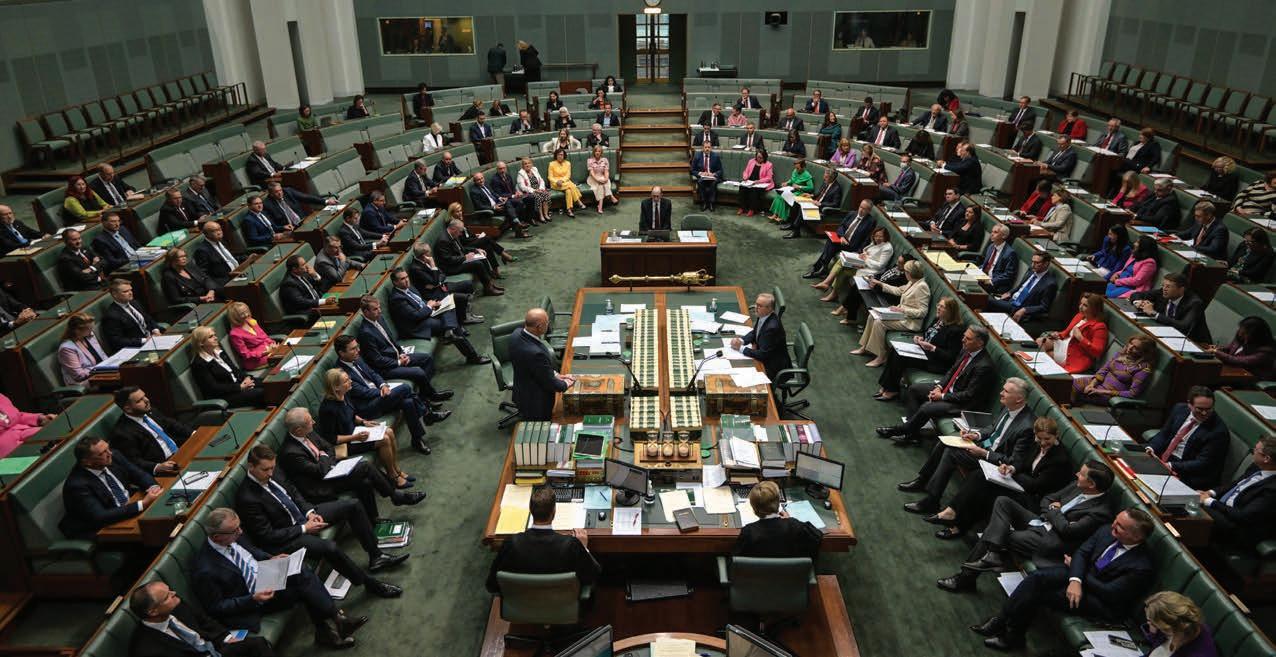
Figure 1.5.5 The House of Representatives chamber during question time at Parliament House on 14 May 2024 as the Labor government prepares to unveil its federal budget
The Australian Constitution sets out the structure and powers of the federal government, including the roles of the executive, legislative and judicial branches. The Constitution also outlines the principles of representative and responsible government, ensuring that power is distributed and checked to protect the rights and freedoms of the people. In Australia, the rule of law and the structure of our federal system highlight the importance of these concepts in maintaining a fair and just society.
1Identify the year the Commonwealth of Australia Constitution Act was established.
2List three key features of the Australian Constitution.
3Define the term ‘representative democracy’.
4Explain why the Constitution is difficult to change.
5Describe the role of the High Court of Australia.
6Compare the responsibilities of the House of Representatives and the Senate in the Australian Parliament.
7Analyse how the separation of powers helps to prevent the abuse of power in the Australian Government.
8Evaluate the importance of the rule of law in maintaining a fair and just society.
Key concepts: democracy; democratic values; the Westminster system HASS skills: analysing, evaluating, communicating and reflecting
Go online to access the interactive section review and more!
End of section 1.5 review
1.5 Review questions
Recall
1 Define the term ‘Bill’.
2 Define the term ‘committee’ and its role in Parliament.
3 Define ‘statute law’. What are some other terms for ‘statute law’?
Interpret
4 Refer to Figure 1.5.4. List the steps in the legislative process. For each step, draw a visual representation of each step (e.g. cartoon or symbol).
5 Which step in the legislative process do you think is the most important. Provide at least two arguments for your judgement.
6 Any Member of Parliament can introduce a Bill. However, for a Bill to pass, it must have the support of a majority of Members. Analyse the problems this might present for the Opposition and smaller parties and independents in passing laws.
7 Explain why you think the process from idea to Bill and, finally, to law is comprehensive and has many steps before becoming an Act of Parliament.
Argue
8 ‘Parliament spends too much time arguing and debating and nothing gets done.’ With reference to the roles of Parliament studied in this section, discuss this statement. Explain two arguments in support of the statement, and two arguments against the statement.
9 Imagine you are a Member of the House of Representatives and you would like to propose a new Bill to be considered in Parliament. Prepare a 1-minute Second Reading speech. Name your Bill, briefly outline how it will work, and summarise the aims of the Bill. Your Bill will be debated during the Second Reading stage. Identify 2–3 potential arguments against your Bill and prepare your responses to these arguments. Your teacher may choose to use your preparation to hold an in-class Second Reading Debate.
Key concepts: the Westminster system, participation HASS skills: analysing, evaluating, communicating and reflecting
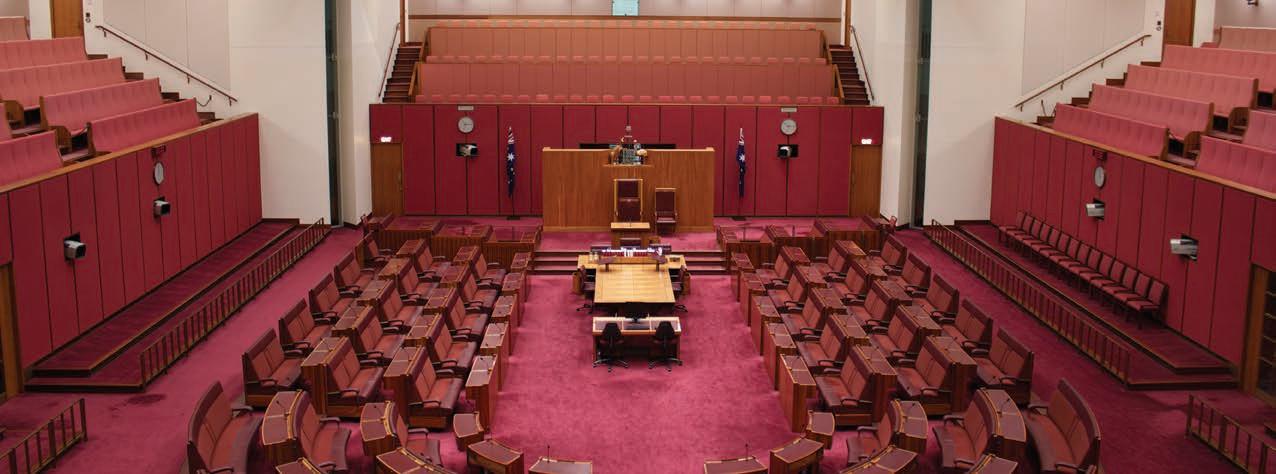
• How do we change the Australian Constitution? writ a form of written command that is legally binding
The Commonwealth of Australia Constitution Act 1900 is often referred to as the ‘birth certi cate of the nation’. The Act contains eight chapters and 128 sections, and provides the rules on how Australia is to be governed. The Act outlines the different areas in which the states, territories and the Commonwealth can make laws. For example, Chapter 1 describes the composition and powers of the federal Parliament, and its bicameral nature. Chapter 5 outlines the lawmaking relationship between federal and state parliaments. Overall, the rules in the Act are there to guide state and federal parliaments.
Chapter 8 of the Commonwealth of Australia Constitution Act outlines the process and rules in relation to changing the Australian Constitution. Section 128 states that the words of the Australian Constitution can only be changed by referendum. A referendum is a national ballot on a question to change the Australian Constitution. In order for a national vote to take place, the proposed change must rst be approved through a Bill by the federal Parliament. The Bill is then sent to the Governor-General, who issues a writ so that a referendum can occur.
To change the Australian Constitution, each proposed alteration must be approved by a double majority of voters in a referendum
A referendum is passed when: and
For a referendum to be successful, a national majority (more than half) of voters from all states and territories and a majority (more than half) of voters in at least four out of six states must vote ‘yes’. This is commonly referred to as the
‘double-majority’ test. Considering these dual standards, referendums require a high level of public support for them to be successful. If the double-majority test is passed, the federal government is bound by the outcome of the referendum.
Consider this statement: The double-majority test is too difficult to pass. We should get rid of this test. Instead, we should pass referendums only with a national majority.
1 Identify factors that pull at each side of this dilemma.
2 List reasons why you agree or disagree with this statement.
3 Propose two ‘What if’ questions to help support your contention.
Key concepts: democracy, democratic values
Since 1901, Australia has held 45 referendums. Only eight of these have been successful due to the dif culty of achieving the double-majority requirement. The Constitution Alteration (Establishment of Republic) 1999 referendum asked Australians to vote yes if they thought Australia should become a republic. An overwhelming number of Australians voted no to this question, which made this referendum unsuccessful.
HASS skills: questioning and researching, analysing, evaluating
One example of a successful referendum in Australia was the Constitution Alteration (Aboriginals) 1967 referendum. Read Case study 1.1 to learn more about this change to the Australian Constitution through a successful referendum.
The last successful referendum in Australia was in 1977, when three questions were proposed to voters:
• to have Senate vacancies filled by persons from the same political party as the person vacating the position
• to allow Territorians (Australian Capital Territory and Northern Territory) to vote in constitutional referendums
• to set a fixed retirement age for High Court judges at the age of 70.
The most successful referendum in Australia was in 1967, where only one of the two proposals was carried, that being changes to the Constitution to count First Nations Peoples in the national census and to allow the Commonwealth Parliament to make laws for First Nations Peoples (this had previously been a law-making responsibility of the states). This proposal was passed with over 90 per cent support. In contrast, the other proposal, to be able to increase numbers in the House of Representatives without necessarily increasing the numbers in the Senate, was not passed at the same time.
A referendum held in 1999 proposed changes to the Australian Constitution that would effectively change the system of government from a constitutional monarchy to a republic, where the head of state would be a president chosen by the Parliament instead of Queen Elizabeth II and her representative the Governor-General. It also asked whether or not a preamble should be inserted into the Constitution. The first change would have a significant impact on Australia’s political system, but the preamble would simply allow the inclusion of a written statement acknowledging Australia as a modern nation, our values and aspirations and recognition of First Nations Peoples. Both proposals were unable to achieve a popular vote of the people or a majority of states.
preamble an introductory statement or declaration
In October 2023, Australia held a referendum proposing the establishment of an Indigenous Voice to Parliament, which aimed to create an advisory body to represent First Nations communities on matters affecting them. Despite strong campaigning, the referendum failed to achieve the required double majority, with over 60 per cent of Australians voting against it. Key factors contributing to its failure included a lack of bipartisan support, insufficient public education on the proposal, and widespread misinformation. The result was a setback for First Nations representation and highlighted the challenges of achieving constitutional change in Australia.
Why were these referendums successful or unsuccessful? We have already mentioned the problems associated with achieving the double majority required for a referendum to be successful. However, it is not the only reason referendums do or do not pass. Some of the key factors that influence the success of a referendum include the following:
• Bipartisan support: when the various political parties show support for a change, the public is likely to reinforce and vote in favour of a change. If interest groups and political parties differ in their opinions, voters presented with many options will be forced to choose a side. This is in part the reason for the success of the 1967 referendum, as there was not a ‘No’ campaign.
• Public education: if the public is educated about the changes and the impacts that a change will have, a ‘Yes’ vote is more likely. People are disinclined to make changes if they do not understand their impacts or influences on their lives.
• Voter ownership: when all citizens and voters are involved in a referendum proposal, it has personal value to them and it will positively impact upon them, they will support a change. If the change appears to only be for the benefit of politicians or small groups, they are less likely to support a change.
Analysis questions
1Explain why the 1967 referendum is considered the most successful in Australian history.
2Discuss the significance of the 1999 referendum and the reasons why the proposals were unsuccessful.
3 Compare the factors that contributed to the success of the 1967 referendum with those that led to the failure of the 1999 referendum.
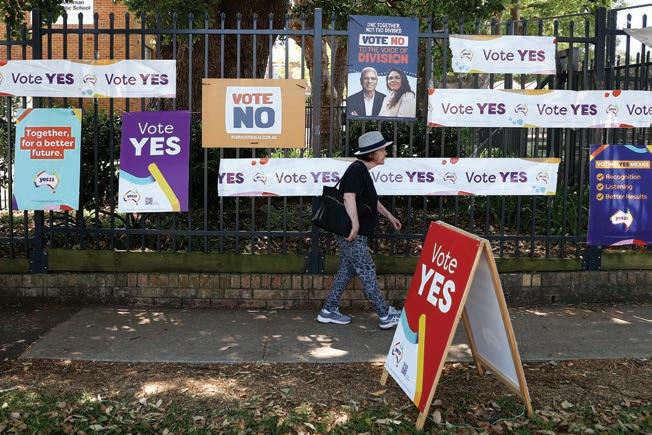
4 Evaluate the impact of bipartisan support on the success of a referendum and the role of public education in influencing the outcome.
5Discuss the significance of the 2023 referendum on the Indigenous Voice to Parliament and analyse the reasons why it was unsuccessful.
Key concepts: democracy, democratic values HASS skills: questioning and researching, analysing, evaluating, communicating and reflecting
Go online to access the interactive section review and more!
End of section 1.6 review
Recall
1 Recall the aim of the Commonwealth of Australia Constitution Act 1900.
2 Outline the process of altering the Australian Constitution.
Interpret
3 Explain why it is difficult for a referendum to pass the double-majority test.
Argue
4 Search for information about the 1999 referendum, then answer the following questions.
a Recall the two questions put to Australian voters in the 1999 referendum.
b Identify the percentage of the population that was in favour of changing the Australian Constitution and how many states voted in favour of changing the Australian Constitution.
c Recall two arguments for the ‘No’ case and two arguments for the ‘Yes’ case to change the Australian Constitution.
d Suggest why you think Australians voted against this change.
Key concepts: democracy, democratic values
HASS skills: questioning and researching, analysing, evaluating, communicating and reflecting
Understanding the Australian Constitution is important because it sets the rules for how our country is run. The Constitution ensures that power is shared and checked between different parts of the government, which helps protect our rights and freedoms. This system ensures that elected officials are responsible to the people, making it easier for us to trust and take part in the political process.
The Constitution also includes rules to prevent any one person or group from having too much power. This helps keep our
government fair and balanced, protecting our democracy and our rights. Additionally, the Constitution can be changed through referendums, which means that the public has a say in how our country is governed.
In short, the Australian Constitution is important because it provides the foundation for our government, ensuring stability, fairness and the protection of our rights. By learning about these principles, we can better understand our role in the democratic process and help build a fair and just society.
That just about wraps up this topic. How do you feel you went working through the chapter?
Before you attempt the following activities, visit the Interactive Textbook to rate your confidence with this topic via a downloadable checklist.
Research task: the 1967 referendum
Using the internet and library, research Australia’s 1967 referendum.
• What was this referendum about?
• What changes did the referendum propose?
• Why do you think the referendum called for these changes?
• What was the outcome of the referendum vote? Find out how each state and territory voted, stating whether the double majority was achieved and explaining how it was achieved.
• What did the referendum achieve for First Nations Peoples in Australia?
• Going further, what new referendum topics have been proposed for Aboriginal and Torres Strait Islander Peoples?
Present your research in the form of a poster, presentation, infographic, booklet or website.
A plebiscite is a survey for the Australian population about potential changes that do not affect the Constitution. Unlike a referendum, it has no legal applications. A plebiscite was held in 2017 to determine the opinions of Australians to a change in the Marriage Act 1961 (Cth) to allow marriage between same-sex individuals.
Using the internet and library, research the 2017 Australian Marriage Law Postal Survey (the same-sex marriage plebiscite) and find answers to the following questions.
1 What was this plebiscite about?
2 Recall the changes did that plebiscite proposed.
3 Recall why these changes were proposed.
4 What was the outcome of the survey? Investigate how each state and territory voted, and the national total.
5 What happened after results were received? Did a change occur?
6 Going further, do you think there are other topics where the government should conduct a plebiscite to propose changes to the law? Discuss.
Present your research in the form of a poster, presentation, infographic, booklet or website.
2050 – a future referendum
It is 2050, you are an Australian voter and you believe the Constitution needs to be amended, as its composition does not meet the values and aspirations of future Australians. Propose a change to the Australian Constitution for a future Australia. Develop a campaign that outlines the ‘Yes’ and ‘No’ arguments, predict what factors would lead to its success, and then conduct a survey of your classmates and teachers to determine its likelihood of success.
Some possible changes you could consider include:
• recognition of Aboriginal and Torres Strait Islander Peoples and/or local government
• a bill of rights
• a republic (perhaps with a new model different from the one proposed in 1999)
• protection of the environment.
Present your campaign in the form of a poster, presentation, infographic, booklet or website.
• Analysis Communism and the 1951 referendum
In 1951, a referendum was put to the people of Australia that proposed giving power to the Commonwealth Parliament to make laws regarding communists and communism. Communism is an economic system in which resources are owned by the government and distributed equally among people. It is often associated with authoritarian political systems and dictatorships and, at the time, the USSR, China, North Korea and Vietnam (progressing) were under communist rule.
• Why would the Australian Parliament want to make laws about communism and communists, but not about other political parties?
• Do you think this is fair? Why or why not?
• The referendum was unsuccessful – only three states were in favour and 49 per cent of the population voted in favour. Why do you think the results were so close?
• What may have happened if it had been successful?
The US Constitution was signed on 17 September 1787. It influenced the development of the Australian Constitution. In 1791, the US Constitution included 10 amendments known as the Bill of Rights. The Bill of Rights guaranteed certain rights and freedoms to the people of the United States. These include the First Amendment (freedom of speech, freedom of religion and the right to protest peacefully); the Second Amendment (the right to keep and bear arms [weapons]); the Fourth Amendment (freedom from unreasonable search and seizure in your home); and the Fifth, Sixth and Seventh Amendments (guaranteeing legal rights such as the right against self-incrimination, the right to a fair and speedy public trial, and the right to seek remuneration for wrongdoings). Australia does not have a Bill of Rights.
• Why do you think a Bill of Rights is important in the governing of a country?
• Which rights that existed in 1791 are still relevant and which ones need to be amended or adjusted? Explain your choices.
• Do you think Australia should have a Bill of Rights? If so, what would it include?

A Martian constitution
Mars is about to be colonised, but first it requires a structure for how it will be governed, and who will have power and over what areas. This requires a constitution to be written. Your task is to create a new Martian Constitution. It will need to have the following:
• system of government (Will you choose constitutional monarchy or a republic?)
• separation of powers (Will you separate the roles of government?)
• roles and responsibilities (What laws can the government/parliament make?)
• law-making process (Will you include how laws are passed/approved?)
• rights and freedoms (Will you include a list of rights that all Martians will have? What will they be?)
• rules for changing the constitution (How can the constitution of Mars be amended?).
Key concepts: democracy, democratic values, the Westminster system, justice, participation, rights and responsibilities
HASS skills: questioning and researching, analysing, evaluating, communicating and reflecting

Australia’s legal system includes a written constitution, statutes (laws made by Parliament), regulations and common law (judge-made law). The system is designed to ensure that justice is served fairly and impartially.
The rule of law is a fundamental principle, meaning everyone must follow the law, and no one is above it. The legal system also includes key principles, such as the presumption of innocence, where an accused person is considered innocent until proved guilty, and the burden of proof, which requires the prosecution to prove the accused’s guilt. Everyone has the right to a fair trial and legal representation to ensure that their case is heard properly.
The Western Australian Humanities and Social Sciences (HASS) curriculum includes a variety of skills that apply across all subject areas, along with key concepts speci c to each subject. These HASS skills and key concepts are interconnected. The following diagram shows how the connection between these skills and ideas can be applied in Civics and Citizenship. This integration develops understanding of how to use what you learn about civics in real-life situations. It is all about seeing the big picture and how everything ts together. is all about seeing the big picture and how
Key concepts: justice, participation, rights and responsibilities
HASS skills: questioning and researching
KEY CONCEPTS AND HASS SKILLS
Key concepts: democracy, democratic values, Westminster system
HASS skills: communicating and reflecting, analysing, evaluating
Figure B Civics and Citizenship concepts and skills in the Western Australian Humanities and Social Sciences curriculum.













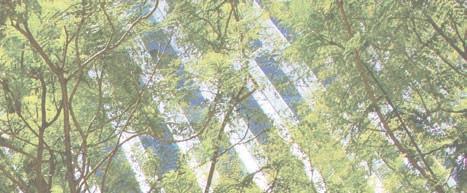


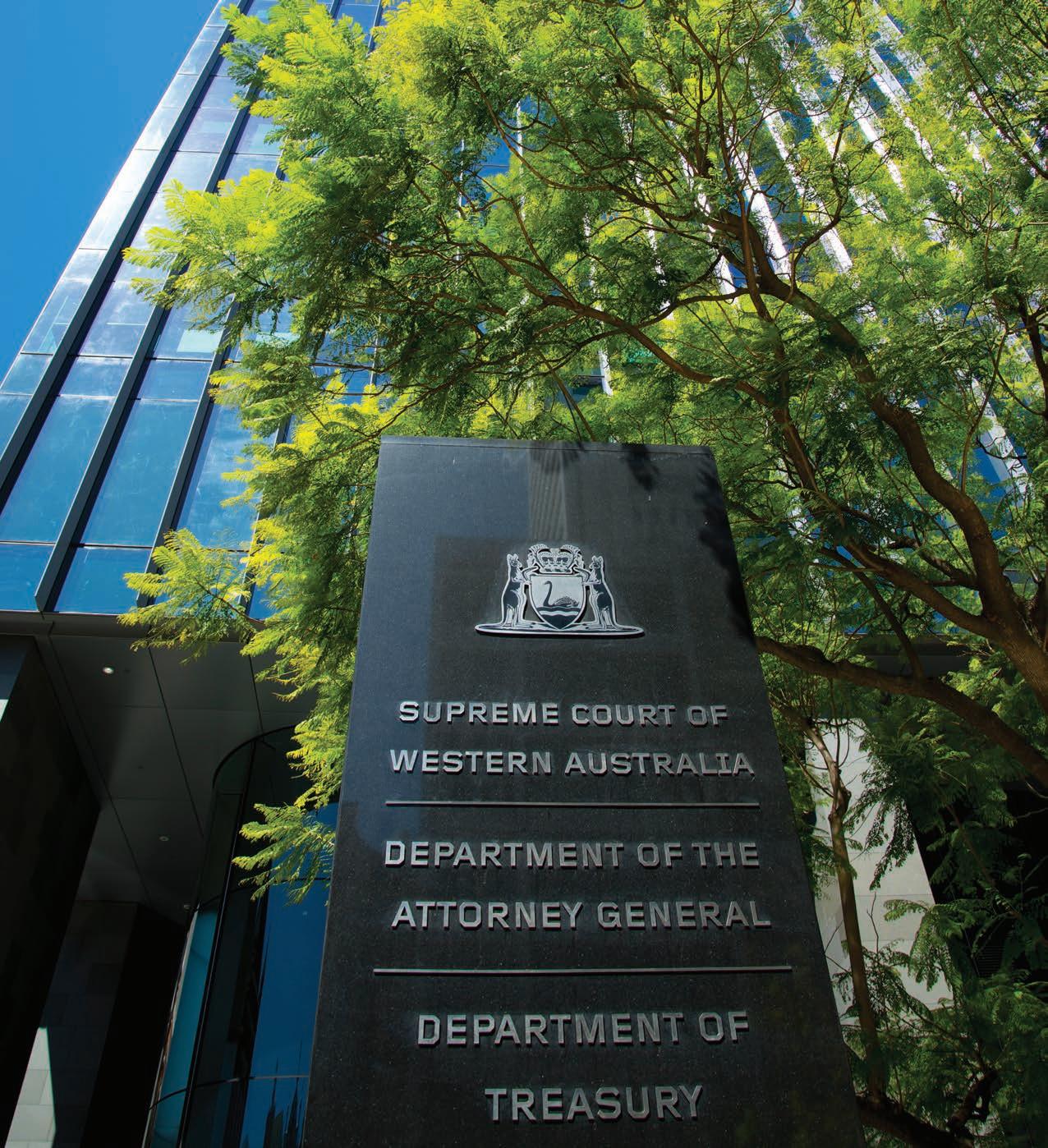

Aboriginal and Torres Strait Islander Peoples should be aware that this chapter contains images and names of people who have, or may have, passed away.
Australia’s legal system is designed to ensure that justice is served fairly and impartially. It operates under the rule of law, meaning everyone must follow the law, and no one is above it. Key principles include the presumption of innocence, where an accused person is considered innocent until proved guilty, and the burden of proof, which requires the prosecution to prove the accused’s guilt. Everyone has the right to a fair trial and legal representation to ensure that their case is heard properly.
Courts, judges, lawyers and court of cials all play vital roles in trials. Judges oversee the proceedings, lawyers represent the parties involved, and court of cials ensure that everything runs smoothly. Citizens also participate in the justice system as witnesses, providing evidence, and as jurors, helping to decide the outcome of trials. This collective effort helps maintain a fair and just legal system.
After completing this chapter, you should be able to answer these questions:
• What are the principles of Australia’s legal system?
• What are the roles of courts, judges, lawyers and court of cials in trials?
• How do the courts provide justice through the rule of law, presumption of innocence, burden of proof, right to a fair trial and right to legal representation?
• How do citizens participate in the justice system?
• How does Australia’s legal system aim to provide justice through its various principles and the roles of different participants?
Visit the Interactive Textbook to access:
• interactive review quizzes and Scorcher competition
• videos, image galleries and other extra materials.
• What are the elements of a fair trial?
• How can citizens access legal representation?
• What is the meaning and importance of the rule of law, presumption of innocence and burden of proof?
The right to a fair trial is an important part of the Australian legal system and it is recognised in a number of international declarations, including Article 10 of the United Nations’ Universal Declaration of Human Rights and Article 14 of the International Covenant on Civil and Political Rights. The High Court of Australia, in McKinney v The Queen (1991) 171 CLR 468, held ‘the central thesis of the administration of criminal justice is the entitlement of an accused person to a fair trial according to law’.
The elements included in the right to a fair trial are encompassed in Article 14 of the International Covenant on Civil and Political Rights. The following is a summary of these rights:
• Independent court: the court must be ‘competent, independent and impartial’.
•Public trial: the trial should be held in public and judgment given in public.
• Presumption of innocence: the defendant should be presumed innocent until proved guilty – the prosecution therefore bears the onus of proof and must prove guilt beyond reasonable doubt.

•Defendant told of charge: the defendant should be informed of the nature and cause of the charge against them –promptly, in detail, and in a language that he or she understands.
•Time and facilities to prepare: the defendant must have adequate time and facilities to prepare a defence and to communicate with counsel of their own choosing.
•Trial without undue delay: the defendant must be tried without undue delay – that is, undue delay between arrest and the trial, perhaps having regard to such things as the length of the delay, reason for the delay, and whether there was any prejudice against the accused.
•Right to a lawyer: the defendant must have the right to defend themselves, or have legal representation of their own choosing or legal assistance assigned to them if they cannot afford their own lawyer.
•Right to examine witnesses: the defendant must have the opportunity to ‘examine, or have examined, the witnesses against him [or her] and to obtain the attendance and examination of witnesses on his [or her] behalf under the same conditions as witnesses against him [or her]’.
•Right to an interpreter: the defendant is entitled to the ‘free assistance of an interpreter if he [or she] cannot understand or speak the language used in court’.
•Right not to testify against oneself: the defendant has a right ‘not to be compelled to testify against himself [or herself] or to confess guilt’.
Unlike the United States, Australia does not provide all of its citizens with the right to free legal representation. However, the complexity of court procedure makes legal representation important, because it improves a person’s ability to receive a fair trial. Being poorly represented or not represented at court may impede this. In the case of Dietrich v The Queen [1992] HCA 57, the High Court stated:
•No double jeopardy: no one shall be ‘liable to be tried or punished again for an offence for which he [or she] has already been nally convicted or acquitted in accordance with the law and penal procedure of each country’.
Australian law does not recognise that an indigent accused on trial for a serious criminal offence has a right to the provision of counsel at public expense. Instead, Australian law acknowledges that an accused has the right to a fair trial and that, depending on all the circumstances of the particular case, lack of representation may mean that an accused is unable to receive, or did not receive, a fair trial.
Source: Dietrich v The Queen [1992] HCA 57
However, due to the high legal costs associated with legal representation, legal aid and assistance can be sought from agencies such as Legal Aid WA. According to its website, Legal Aid WA offers free or low-cost legal services to the community. It can help with questions about the law, assist people going to court and provide advice on legal problems. It aims to:
• improve how people access legal services and participate in the justice system
•think about all of the legal needs a person might have
•target legal assistance for people who experience, or are at risk of experiencing, social exclusion
• help people avoid legal problems, and resolve them earlier, through relevant education, information, advice and referrals
•enhance how different service providers in the legal sector work together and alongside each other.
rule of law the principle that nobody is above the law. This can be seen in the requirement that government actions and decisions must be in line with the laws the government creates.





















Access to legal aid services is vital, particularly for people and groups within the community who are faced with multiple disadvantages or legal issues. If a person is unable to access legal representation and requires this to understand the process and achieve a fair trial, their case can be ‘stayed’ or put on hold until they are able to access a lawyer.
The core of the rule of law is that no one is above the law, including those who make the law. This means that all the groups and individuals who are involved in the legal system – such as the legislators and judges who make, administer and interpret the laws, the police of cers who enforce the law and the lawyers who represent and advise people about the law – are answerable to the same laws as every other citizen. Thus, the rule of law means that everyone is subject to the same laws. Obvious breaches of the rule of law occur when of cials make favourable decisions for relatives and friends but apply the law fully for everyone else.
Section 22 of the Marketing of Potatoes Act 1946 prohibits anyone from selling, delivering, purchasing or taking delivery of 50 kilograms or more of potatoes unless they are a member of the Potato Corporation or an authorised agent. The penalty for breaking this law is a fine of up to $2000 for a first offence or $5000 for a subsequent offence, in addition to an amount up to twice the value of the potatoes.
Compass points
Reflect on the issue of accessing legal representation. Record your responses to the following compass questions.
Discuss this with your class.
1 E = Excited
What excites you about the issue? What’s the upside?
2 W = Worrisome
What do you find worrisome about it? What’s the downside?
3 N = Need to know
What else do you need to help you evaluate this issue?
4 S = Stance or Suggestion for moving forward
What is your current opinion on it? How might you move forward in your evaluation of this issue?
Key concepts: democratic values, justice, rights and responsibilities
HASS skills: questioning and researching, analysing
Australia is signatory to the United Nations’ International Covenant on Civil and Political Rights, an international human rights treaty. Article 14(2) of this treaty guarantees that a person who faces a court trial in Australia is presumed innocent until proved guilty by a court of law. Therefore, no guilt can be presumed until the charge is proved beyond reasonable doubt.
The burden of proof is different for criminal and civil cases. For criminal cases, the burden of proof lies with the prosecution. This means that the prosecution has the onus of proving the guilt. In criminal cases, the accused is given the presumption of innocence. This means that no guilt can be presumed of the accused until the standard of proof is achieved. The standard of proof for
hierarchy
Hierarchy of courts in Western Australia
criminal cases is beyond reasonable doubt. It is the highest standard of proof in the Australian judicial system. This means that after examining all the evidence presented by the prosecution, the jury must be convinced that there is no doubt that the accused committed the crime.
For civil cases, the burden of proof rests with the plaintiff. This means that the plaintiff has the onus of proving that they have been wronged, suffered a loss and/or had their rights infringed. The standard of proof for civil cases is on the balance of probabilities. This means the onus is on the plaintiff to prove that, based on the majority of the evidence presented, they have mostly been harmed or have suffered the loss claimed. This means civil cases do not operate in terms of guilt or innocence; rather, it is whether the plaintiff is able to show enough evidence to convince a court that they have been wronged.
beyond reasonable doubt a legal concept in a criminal trial in which a person can only be found guilty if the judge or jury, after examining the evidence, finds that it conclusively shows the accused committed the crime and there is no other likely cause plaintiff the person making a legal complaint against someone else in court in a civil case
High Court of Australia WA Magistrates Court District Court of WA

The courtrooms of criminal and civil trials
2.2.5 The people involved in the courtrooms of criminal and civil trials in Western Australia.
Aboriginal justice, tax help for have-nots feature in Law Awards
A tireless advocate for Aboriginal legal rights and a pro bono tax service are among the winners of the 2024 Attorney General’s Community Service Law Awards.
The 2024 Awards celebrated the following people and organisations for their work in the legal field. Here are the winners:
• Peter Collins won the Individual award for his nearly 30 years of service at the Aboriginal Legal Service of Western Australia. Peter has been a strong advocate for First Nations justice and has helped many people get fair treatment under the law.
• Curtin Tax Clinic received the Not-for-Profit award for providing free tax services to people who need help, including those in remote communities and prisons. Last year, Curtin Tax Clinic helped over 1000 taxpayers.
• Jennifer Solliss won the Legal Aid Panel Member award for her work as a criminal defence lawyer. Jennifer has represented many people who needed legal help, including those with psychological issues and intellectual disabilities.
• Norton Rose Fulbright law firm won the Legal Firm award for its pro bono work (free legal services) and for sending its lawyers to help not-for-profit groups.
These awards highlight the important work done by lawyers and organisations to help people who might not otherwise get the legal support they need. Read more at https://cambridge.edu.au/redirect/11208.
Analysis questions
1 Recall who won the Individual award at the 2024 Attorney General’s Community Service Law Awards.
2 Recall the kind of services the Curtin Tax Clinic provides and who it helps.
3 Identify why Jennifer Solliss won the Legal Aid Panel Member award.
4 Identify what Norton Rose Fulbright did to win the Legal Firm award.
5 Describe why these awards are important for the community.
Key concepts: justice; participation
HASS skills: evaluating, communicating and reflecting
Recall
1 Define the term ‘rule of law’.
2 Define the term ‘plaintiff ’.
Interpret
3 Using the features of a fair trial listed on pages 44–47, rank them in order of importance, with 1 being the most important to achieve a fair trial, 2 the second-most important to achieve a fair trial and so on. Once you have ranked them in order, explain the reasons why you made your first and last choices.
4 Discuss why civil cases do not operate in terms of guilt or innocence and whether you think this is fair.
Argue
5 A person who faces a court trial in Australia is presumed innocent until proved guilty by a court of law. Therefore, no guilt can be presumed until the charge has been proved beyond reasonable doubt.
a Discuss the importance of the presumption of innocence. Explain, using examples, reasons why the principle is important. Explain limitations or disadvantages of the principle.
b Choose one of the following tasks.
i Write a persuasive speech to argue either that Australia should maintain (keep) the presumption of innocence, or that Australia should remove this principle from our legal system (and follow the principle that an accused is guilty until proved innocent).
ii Create a propaganda (one-sided poster) either promoting or rejecting the presumption of innocence in the Australian legal system.
iii Participate in a class debate on whether the presumption of innocence should apply in Australia. Use tasks i or ii to help you prepare for the class debate.
Key concepts: justice, rights and responsibilities HASS skills: questioning and researching, analysing, evaluating, communicating and reflecting
• What is the role of courts, judges, lawyers and court officials in trials?
Courts are essential institutions where legal cases are heard and decided, ensuring that laws are followed and justice is served. There are various types of courts, including local courts, district courts and the Supreme Court, each responsible for handling different kinds of cases. Judges oversee court proceedings, ensuring that trials are fair and the law is applied correctly. They listen to evidence, make rulings on legal issues and sometimes decide the case’s outcome.
Lawyers represent the parties involved in a trial, with two main types: prosecutors and defence lawyers. Prosecutors represent the state or government, aiming to prove the accused person’s guilt, while defence lawyers represent the accused, striving to show their client’s innocence or argue for a lesser punishment. Court of cials, such as court clerks, bailiffs and court reporters, play crucial roles in maintaining the court’s smooth operation. Court clerks manage paperwork and records, bailiffs maintain order and ensure safety, and court reporters transcribe trial proceedings to create an of cial record.
Making thinking visible 2.2
Think, pair, share
Understand the roles of courts, judges, lawyers and court officials in trials.
1Think: Think about the roles of courts, judges, lawyers and court officials in trials. List your thoughts about what each role involves and why it is important for the legal system.
2Pair: Pair up with a classmate and share your thoughts. Compare your notes and see if you can add any new insights based on your partner’s perspective.
• What did you think the role of the judge is?
• How do lawyers contribute to a trial?
• What are the responsibilities of court officials such as clerks and bailiffs?
3Share: Share your findings with the class.
• Identify the key roles and responsibilities of courts, judges, lawyers and court officials.
• Discuss why each role is crucial for ensuring a fair trial and the correct application of laws.
Key concepts: justice, participation, rights and responsibilities
HASS skills: questioning and researching, analysing, evaluating, communicating and reflecting
Courts play a crucial role in ensuring that justice is served by hearing and deciding legal cases. They are responsible for adjudicating disputes, which include criminal cases where the government prosecutes individuals or organisations accused of breaking the law, and civil cases where private disputes, such as disagreements over contracts or property, are resolved. One of the main functions of courts is fact- nding, which involves hearing evidence from witnesses, reviewing documents and assessing the credibility of the evidence and witnesses.
Courts also interpret and apply the law to the facts of the case. Judges make legal rulings on issues that arise during the trial and provide instructions to the jury on how to apply the relevant laws. Ensuring fairness is another critical role of courts, requiring judges to remain impartial and
follow due process, giving both parties a fair opportunity to present their case. Finally, courts render decisions based on the facts and the law, delivering verdicts in criminal cases and determining liability in civil cases. If the accused is found guilty in a criminal case, the judge imposes a sentence, which could include nes, community service or imprisonment.
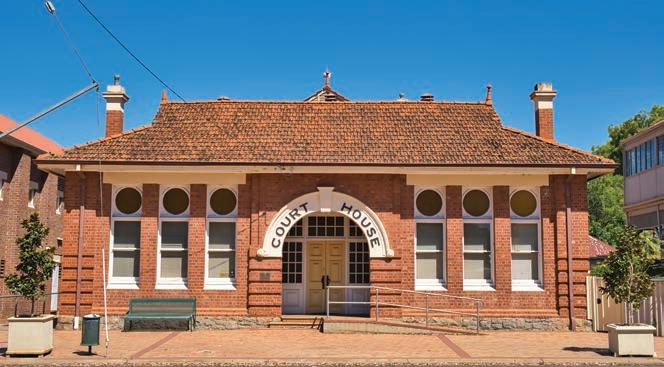
1Investigate a well-known court case in Western Australia. Write a report detailing the facts of the case, the court’s decision, and its impact on society.
2 Watch a documentary or read an article about a recent trial. Identify the key stages of the trial and the role of the court in each stage. Write a summary of your findings.
3 In groups, discuss why it is important for courts to be impartial and follow due process. How does this ensure that justice is served? Share your thoughts with the class.
Key concepts: justice; participation; rights and responsibilities
Judges play a vital role in the justice system by ensuring that trials are fair and that the law is applied correctly. They manage the courtroom, making sure that both parties have a fair opportunity to present their case. Judges interpret legal principles, case law, statutes and constitutional matters to make decisions
HASS skills: questioning and researching, communicating and reflecting
on legal issues that arise during the trial. They also make rulings on various matters, such as the admissibility of evidence and procedural issues, to guide the trial and ensure that it proceeds smoothly.
In cases with a jury, judges provide instructions on the relevant laws and how to apply them to the facts of the case, helping the jury make an informed decision.
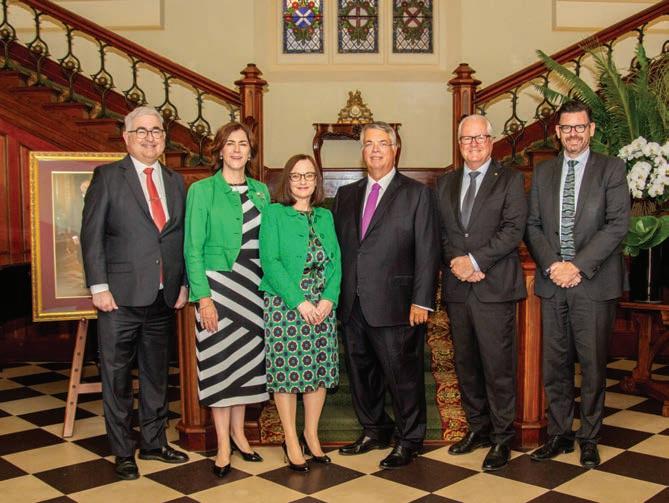
Figure 2.3.2 On 29 January 2024, the Governor made three new appointments to the Supreme Court of Western Australia.
Cultural Immersion Program – judges visit the Kimberley
In cases without a jury, judges determine the outcome based on the evidence presented, deciding whether the accused is guilty or not guilty in criminal cases, or who is liable in civil cases. If the accused is found guilty, the judge imposes a sentence, which could include nes, community service, or imprisonment, depending on the severity of the crime and other factors.
To become a judge in Australia, one must have a distinguished legal career, typically involving many years of experience as a lawyer and a strong understanding of the law. Judges are appointed based on their expertise, integrity and ability to make fair and impartial decisions.
In September 2022, 26 judges from the District, Supreme and Federal Courts travelled to the Kimberley for a Cultural Immersion Program. Hosted by the University of Notre Dame in Broome, the program aimed to enhance the judges’ understanding of Aboriginal cultures, history and languages. This initiative was intended to help judges become more aware of the challenges that Aboriginal Peoples may face when attending court.
Watch the video at https://cambridge.edu.au/redirect/11209 and reflect on what you have learnt using the questions below.
1Recall the purpose of the Cultural Immersion Program that the judges attended in the Kimberley.
2Outline why you think it is important for judges to understand Aboriginal cultures, history and languages.
3Suggest how participating in this program may change the way judges interact with Aboriginal Peoples in court.
4Describe the challenges Aboriginal Peoples might face when attending court.
5Propose how learning about different cultures can help people in positions of authority, like judges, make fairer decisions.
6Evaluate how programs like this one help improve relationships between Aboriginal communities and the legal system.
Key concepts: justice; participation; rights and responsibilities
HASS skills: analysing, evaluating, questioning and researching, communicating and reflecting
Lawyers play a crucial role in the legal system by representing and advising individuals, businesses and government agencies on legal matters. In Australia, there are two main types of lawyers: solicitors and barristers.
Solicitors are usually the rst point of contact for people seeking legal advice. They handle a wide range of legal issues and perform various tasks. These include providing legal advice to help clients understand their rights and obligations, drafting legal documents such as contracts and wills, and negotiating settlements to resolve disputes without going to court. Solicitors also manage legal les, keeping detailed records of
Discuss
their clients’ cases, and may instruct barristers to represent their clients in court by providing them with all necessary information and documents.
Barristers are specialists in court advocacy and litigation. They represent clients in court, presenting cases, examining and cross-examining witnesses, and making legal arguments to persuade the judge or jury. Barristers also provide specialist advice on complex legal issues, draft detailed legal submissions for court, and conduct legal research to build strong arguments for their clients. They stay up to date with changes in the law and legal developments to ensure that they provide the best possible representation.
solicitor a lawyer who is trained to prepare cases and give advice on legal subjects, who can also represent people in lower courts barrister a lawyer who can give specialised legal advice and can argue a case in both higher and lower courts
In groups, talk about the importance of having both solicitors and barristers in the legal system. How do their roles complement each other? Share your thoughts with the class.
Visit the Legal Aid WA website and watch the video explaining the duty lawyer service at https://cambridge.edu.au/redirect/11210, then reflect on what you have learnt using the questions below.
1Describe the duty lawyer service and who can use it. Why is this service important for people who need legal help?
2Recall the main responsibilities of a duty lawyer. Identify how they assist people in court.
3Explain how having access to a duty lawyer might change the experience of someone going to court for the first time. Can you think of a situation where you or someone you know might need the help of a duty lawyer?
APPLY
4 Why is it important for everyone to have access to legal representation, regardless of their financial situation? How does the duty lawyer service contribute to a fair and just legal system?
Key concepts: justice; participation; rights and responsibilities
HASS skills: analysing, evaluating, communicating and reflecting
Court of cials play essential roles in ensuring that court proceedings run smoothly and ef ciently. Some of the key court of cials you might encounter include court clerks, bailiffs, court reporters, judge’s associates and registrars.
Court clerks manage the administrative tasks of the court. They maintain accurate records of all court proceedings, lings and decisions. They also organise the court’s calendar, schedule hearings and trials, and provide administrative support to judges by preparing documents and managing case les.
Bailiffs are responsible for maintaining order and security in the courtroom. They protect everyone in the courtroom, including the judge, jury, lawyers and the public. Bailiffs also manage the jury by escorting jurors to and from the courtroom and ensuring that they follow court rules. Additionally, they enforce court orders, such as taking a defendant into custody.
Court reporters create a verbatim record of everything said during court
Role-play a trial in class. Students will be randomly assigned roles (judge, prosecutor, defence lawyer, court clerk, jury, etc.) and act out a simple case. Afterwards, discuss what you learnt about each role.
proceedings. They use shorthand or stenography machines to transcribe spoken words into written text and prepare of cial transcripts of court proceedings, which can be used for appeals or future reference.
Judge’s associates assist judges with various tasks to ensure the smooth running of the court. They handle documents and exhibits used in the case, communicate with lawyers, witnesses, and other court personnel, and keep a record of court proceedings and verdicts.
Registrars are senior court of cials who manage the administrative functions of the court. They oversee the work of court clerks and other administrative staff, manage the ling of legal documents and ensure that they are processed correctly. Registrars also help the public with courtrelated inquiries and provide information about court procedures.
These court of cials work together to ensure that the legal process is ef cient, fair and orderly. Learn more about the role of court of cials in trials at https:// cambridge.edu.au/redirect/11211.

2.3.3 There are many different roles for legal specialists in a courtroom.
Key concepts: justice; participation
HASS skills: questioning and researching, communicating and reflecting
Learning about the legal system through movies
Apply your learning about the roles of courts, judges, lawyers and court officials in trials by watching and discussing the Australian movie The Castle
1 Watch The Castle as a class. Pay attention to the courtroom scenes and the journey of the Kerrigan family through the legal system.
2 Identify the roles of the judges, lawyers and court officials depicted in the movie. Take notes on how each character contributes to the trial process and the legal arguments presented.
3 Discuss the different levels of courts shown in the movie. Create a chart that outlines the progression of the Kerrigan family’s case from local courts to the High Court of Australia.
4 Analyse the legal arguments and advocacy techniques used by the characters. Write a summary of how the lawyers present their cases, examine witnesses and make legal submissions.
5 Reflect on the importance of fairness and justice in the legal system as portrayed in the movie. Write a short paragraph on how the movie illustrates the role of the courts in ensuring fair trials and the correct application of laws.
6 Hold a class discussion about the movie. List the roles of the legal professionals and the impact of the legal decisions on the Kerrigan family and broader community.
Key concepts: justice; participation; rights and responsibilities
HASS skills: analysing, evaluating, communicating and reflecting
End of section 2.3 review Go online to access the interactive section review and more!
2.3 Review questions Recall
1 Recall the different types of courts mentioned in the text.
2 Identify who oversees court proceedings to ensure that trials are fair and the law is applied correctly.
3 Recall the two main types of lawyers in the Australian legal system.
4 Name three key court officials and their roles. Interpret
5 Explain the role of judges in ensuring fairness during a trial.
6 Describe the difference between the responsibilities of solicitors and barristers.
7 Outline how court clerks contribute to the smooth operation of the court.
8 Explain why it is important for bailiffs to maintain order and security in the courtroom. Argue
9 Discuss why it is essential for courts to have different levels, such as local courts, district courts and the Supreme Court.
10 Evaluate the importance of having both prosecutors and defence lawyers in a trial.
11 Explain the significance of court reporters creating a verbatim record of court proceedings.
12 Consider the role of registrars and explain why their administrative functions are crucial for the legal process.
Key concepts: democratic values; justice; participation; rights and responsibilities
analysing, evaluating, communicating and reflecting
• What can citizens do to ensure that justice is upheld?
The role of a witness is crucial to ensuring that a fair trial is conducted. One of the most important types of evidence is that of a witness. Witnesses can be called to give evidence in court by either the prosecution or the defence and may be examined by either in court. A witness might be someone who saw some aspect of the crime take place, or someone who simply has some relevant knowledge about an aspect of the case that supports the prosecution’s or defendant’s argument. Anyone who witnessed a crime or was interviewed by police may
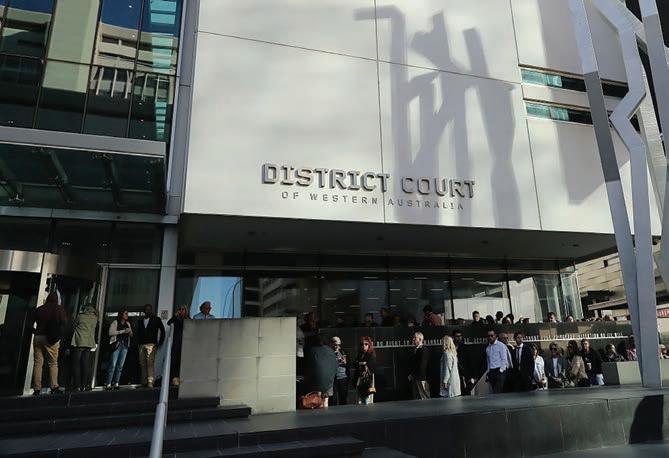
be subpoenaed to appear later in court. A subpoena is a formal court document ordering a person to attend at court at a certain time and place, and cannot be ignored – if it is, it may result in a charge of contempt of court.
A witness giving evidence will be asked to take an oath or af rmation to tell the truth and will be asked a series of questions, usually by both the prosecution and the defence. There are rules around the order and type of questions that a witness can be asked. The information the prosecution and the defence seek is about the witness’s factual rst-hand knowledge or eyewitness testimony and will often be supported by an earlier statement made by the witness and recorded. Witnesses must answer questions truthfully; if they do not do so, they may be guilty of perjury, which is telling an untruth to a court.
Figure 2.4.1 There were approximately 200 witnesses called at the judge-alone trial of Bradley Robert Edwards.
Another type of witness evidence is that of an expert witness. This is a person who has studied some element of the evidence as an independent expert during the investigation (for example, someone who examined DNA, blood spatter or handwriting, or someone who assessed the defendant, such as a psychiatrist). Their job is to give testimony based on


their expert or specialised knowledge and give an opinion or interpretation of the evidence. If a witness is deemed to be an expert, they will be able to give an opinion based on questions put to them. The evidence of an expert witness can often be valuable in that it provides insight into the case that other witnesses cannot give.


















































Perceive, know about, care about



After reading about the role of a witness, answer the following questions.
1 Explain what perjury means and why it is important.
2 Recall why the evidence of a witness is important in a court case.
3 What type of court case would an expert witness be asked to attend?
4 Analyse how reliable you think eyewitness testimony is.
Key concepts: justice, rights and responsibilities
HASS skills: analysing, evaluating
To assist in making the court system as fair as possible, major trials require 12 to 18 citizens to attend as jurors. Their job is to decide, from the evidence presented, if a person is not guilty or guilty. A jury is a panel of citizens, selected at random from a list compiled from the electoral roll, whose job it is to determine the guilt or
innocence of the accused based on the evidence presented to them at trial. Their decision is called a verdict. It is a right of all people accused of serious crimes to have the option of a jury to determine their innocence or guilt. This right has its origins in the Magna Carta, as well as being written in the Constitution (s 80). It is a task that brings with it enormous responsibility. See the following article on jury duty.
Jury duty explained: From allowances to exemptions, here’s what you need to know
If you’re an Australian citizen and you’re enrolled to vote, there’s a good chance that one day you’ll open your mailbox to find a fancy letter requiring you to attend your local court for jury duty.
If you haven’t the faintest clue how the legal system works and your courtroom knowledge is limited to the storylines of TV legal dramas, you’ll likely have a lot of questions.
For starters, what exactly does a juror do? If you’ve got to work, can you skip jury duty? What if you have family to look after or live far away from the court?
The good news is we’ve done the hard yards for you – so here’s what you need to know.
What do juries do? And why do we have them?
Juries are a key part of our legal system. They’re generally made up of 12 people who are tasked with hearing evidence presented in a trial and returning a verdict of guilty or not guilty.
So why do we have juries? And why don’t we let judges decide everything?
The key reason is that juries help people trust the justice system. Without juries, trials would be decided by a single judge (who might not be representative of the broader population) instead of a group of people representing a cross-section of society.
Think about someone who is particularly biased or prejudiced: if they were deciding on a case themselves, the outcome could be very different than if they had to reach agreement with 11 other people in a jury room.
Having a jury also forces lawyers to explain things in terms an average person can understand, rather than a bunch of legal mumbo jumbo.
After all, we need to understand the law if we’re going to avoid breaking it, says Jacqui Horan, a jury researcher and associate professor at Monash University.
How can you get excused from jury duty?
Look, I get it. You saw the jury duty letter and thought, ‘How I am going to get out of this?’
We all have busy lives and jury duty can be a major inconvenience. But, like voting, it’s an important civic duty that we shouldn’t take for granted. (I’ll get to this shortly.)
All that said, sometimes jury duty is going to be impractical or impossible, which is why courts allow people to be exempted or excused in certain circumstances.
Here’s a short and abridged list of some of the reasons you might be excused, courtesy of David Tait, a professor of justice research at Western Sydney University:
• if you are self-employed or run a small business that would be affected by your absence
• if you are a student or apprentice
• if you have a health issue or live with a disability that would make jury service difficult
• if you aren’t living in the state where you have been summoned to attend court, or if you have transport difficulties (e.g. you live very far from the court)
• some professions may exempt you from serving on a jury; this usually covers criminal lawyers, police officers and other people who work in the criminal justice system, but each jurisdiction is different.
For most people though, simply having to work is not going to be a good enough reason to avoid jury service.
For a case in point, consider the chief financial officer who tried to dodge jury duty in Victoria because he had meetings to attend. For his indiscretion, he was fined $2000 and ordered to do 80 hours of community service.
How are juries selected?
If you’re called to court, it’s not a given that you’ll be put on a jury immediately. For one, lawyers have an opportunity to veto potential jurors by using what’s called a ‘peremptory challenge’.
The reasoning for these challenges tend to be based on little more than superstition or folklore, says Professor Horan.
In Victoria, for instance, teachers and nurses are often challenged because of pervasive stereotypes that they have ‘strong views’ or are overly sympathetic to victims.
In many cases, lawyers will challenge potential jurors simply because of the way they look, Professor Horan adds.
If you are excused, challenged or otherwise exempted, you might be required to come back to court another time.
Jurors are paid allowances by the court for their time (and sometimes travel), which can range from $40 per day to more than $100 depending on the state*.
In longer trials, jurors are typically paid more to make up for the inconvenience.
Your work may also pay you while you’re on jury duty.
Under the National Employer Standards, all employers are required to top up their staff’s jury pay to their normal wage for the first 10 days of jury service, but this does not cover casual workers.
Some states like Victoria require employers to keep paying their staff at full pay. Some lucky employees (often public servants) will get full pay even when it isn’t required by law.
But, if you don’t have access to these generous perks, you’re a casual worker, or if you’re assigned to a particularly long trial, there’s a real chance you could be left worse off financially for serving on a jury.
Jurors typically serve on trials that take between seven and 12 days, though more involved matters – such as those for alleged terrorists – can take months or even a year or more, says Professor Tait.
Jurors are often asked about their availability in advance if they could be selected for a particularly long trial. What happens in the courtroom?
In court, the role of the juror is to be a ‘fact finder’, Professor Horan says. In a jury trial, jurors are asked to decide upon the key facts of the case and return a verdict of guilty or not guilty. (In judge-only trials, the judge also takes on this responsibility.)
Consider someone on trial for allegedly driving a getaway car in a robbery: the jurors have to decide whether the accused intended to rob something, the extent of their involvement and whether they were acting in concert or alone, Professor Tait says. The judge’s role in jury trials, by comparison, is to deal with questions of law, such as what evidence can be presented to the court.
When jurors are empanelled, they are usually given stern instructions not to talk to anyone about the case or to look up information online.
The reason is fairness, Professor Tait says. In a courtroom, the defence lawyers have an opportunity to explain or question any evidence that’s presented to the jury.

When a juror is searching around online in their private time, they might be reading something mistaken or misleading [without] knowing it. The defence doesn’t have an opportunity to point this out, which could lead to a miscarriage of justice. ➜
Similarly, jurors are often warned to keep off social media. The fear is that jurors could become aware of information that wasn’t heard in court, that they contact people involved in the trial, or that they use social media to discuss the trial with others.
Judges take this stuff very seriously, and have even dismissed jurors who have researched online or posted about their cases on social media.
While most people are initially apprehensive about serving on a jury, those who have gone through it often value the experience. ‘What we have learnt from surveying jurors is that although jurors are often initially nervous and hesitant –after they’ve been on a jury, they’re far more inclined to do it again because they really appreciate what an amazing experience it can be,’ Professor Horan says. ‘You get to see what it’s like being a judge for a week or two.’
For some people though, jury duty can be confronting and even traumatic.
If you’re serving on a sexual assault or murder trial, you are likely to encounter confronting evidence. Jurors also feel pressure to make the right decision, which can be difficult when evidence is conflicting or confusing.
Sometimes, there are disagreements in the jury room. (In Australia, juries often have to come to [a] unanimous verdict, though in some circumstances judges will still accept verdicts of juries with one dissenting vote.)
It’s a lot to deal with, so it’s no surprise that one study found that 70 per cent of Australian jurors found the experience stressful in some way. Today, many courts offer jurors counselling services to help manage this problem.
While it is not always going to be pleasant, jury duty can be a great experience – and one that we shouldn’t necessarily shy away from.
‘This is one of the most interesting experiences as a citizen you could possibly have,’ Professor Tait says. ‘You will meet people you would never meet otherwise, and you will have really momentous decisions resting on your shoulders. It’s not just a duty, it’s an opportunity.’
Source: Patrick Wright, ‘Jury duty explained: From allowances to exemptions, here’s what you need to know’, ABC News, 15 October 2019
Investigate how historical events and developments have influenced how Australia’s legal system functions to provide justice. Develop your understanding of how justice is applied and the importance of citizen participation.
Analysis questions
1 Research a significant historical event in Australia where the legal system played a crucial role (e.g. the Mabo Case or the Eureka Stockade).
•Write a brief summary of the event, focusing on how the legal system was involved and its impact on justice.
2Identify how the principles of the rule of law, presumption of innocence, burden of proof, right to a fair trial, and right to legal representation were applied or challenged in the historical event.
• Create a chart that outlines each principle and provides examples from the event.
3Discuss the roles of courts, judges, lawyers and court officials in the historical event.
•In a paragraph, explain how these roles contributed to the trial and the outcome of the event.
4 Reflect on how citizens participated in providing justice through their roles as witnesses and jurors in the historical event.
•Write a short reflection on the importance of citizen participation in the legal system.
1 Recall: What was the historical event you researched, and what role did the legal system play in it?
2 Interpret: How were the principles of the rule of law and the right to a fair trial applied or challenged in the event?
3 Analyse: What impact did the roles of judges, lawyers and court officials have on the outcome of the event?
4 Evaluate: Why is citizen participation as witnesses and jurors important in the legal system?
5 Argue: How did the historical event you researched influence the development of Australia’s legal system?
Key concepts: sources; evidence; cause and effect; significance; perspectives; democracy; democratic values; the Westminster system; justice; participation; rights and responsibilities
HASS skills: analysing, evaluating, questioning and researching, communicating and reflecting
assign tasks and track results
2.4 Review questions
Recall
1 Define the term ‘witness’.
2 Recall the role of the jury.
Interpret
3 Discuss why a person may not want to appear as a witness at a court case.
4 Outline how and why it would be difficult to achieve a unanimous (everyone agrees) verdict.
Argue
5 A jury is a panel of citizens, selected at random from a list compiled from the electoral roll, whose job it is to determine whether an accused person is guilty or not guilty based on the evidence presented to them at trial. Investigate some of the reasons why a person may not be the right choice at a criminal trial. Write a paragraph or two on this topic.
Key concepts: participation, rights and responsibilities
Figure 2.4.5 Why might someone not be the right fit to serve on a jury at a criminal trial?
skills: analysing, evaluating, communicating and reflecting
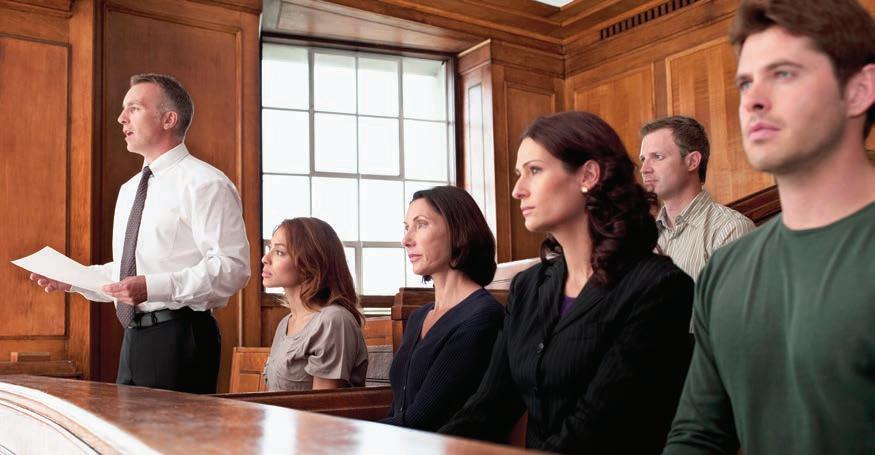
It is easy to look around the world and see conflict in a number of countries.
Russia’s invasion of Ukraine, and the ongoing conflict between Israel and Palestine are two of the most well known examples.
In Syria, where a civil war has continued since 2011, citizens fight against their own government for improved conditions and more freedom. Hundreds of thousands of people have died, many are missing and millions have fled to protect themselves.
In the United States, on 6 January 2021, individuals stormed, looted and damaged the legislative branch of government, the Capitol Building, under the guise of peaceful protests aimed at ‘fixing’ American democracy.
Ongoing conflict in Sudan has caused widespread violence, and many people have had to leave their homes to find safety.
Myanmar has experienced ongoing conflict and violence following a military coup in February 2021. The military’s crackdown on protests and armed resistance from various ethnic groups has made the country unstable and unsafe for the citizens.
Civil war in the Tigray region of Ethiopia has caused many people to be hurt or killed, and there are shortages of food and medicine. The fighting has made life very hard for the people living there.
In a well-governed country, events such as these should not occur.
Systems of government and nations are only as strong as the institutions and processes they have in place to ensure fairness and the good order of society. This includes making sure that power is distributed fairly and that there are mechanisms to address abuses of power and protect the rights and freedoms of people.

While Australia itself is not a perfect example of a well-governed country, it does have strong democratic processes and institutions that prevent corruption, allow for participation of people in civic and economic life and, to some extent, protect the rights and freedoms of people that allow for prosperity, freedom and fairness. Australia often scores highly on global scales of freedom and democracy.
In one of the oldest political concepts, known as the ‘social contract’, the people of a nation are willing to cede power to another authority in return for protection and safety. If the authority abuses that power, the people must be able to change it. Australia’s system of democracy reflects the social contract in that it upholds principles, such as the separation of powers and the rule of law, that limit the power of government, and it weaves into its institutions accountability measures to hold government responsible for its actions, such as elections, question time and committees.
People are provided with ways to participate in political and legal life, such as voting and jury duty. People can also influence the system, accepting that they need to be part of it in order to live a good life. Without strong democratic systems and institutions, fair distribution of resources and the protection of rights and freedoms, societies are at risk of conflict and anarchy.
That just about wraps up this topic. How do you feel you went working through the chapter?
Before you attempt the following activities, visit the Interactive Textbook to rate your confidence with this topic via a downloadable checklist.
Reflect on the importance of the presumption of innocence in the legal system
In a paragraph, explain how this principle protects individuals. Consider how it might feel to be accused of a crime and how the presumption of innocence ensures fairness. Think about the consequences if this principle did not exist.
how the rule of law is applied in another country
Choose a country and research its legal system. Compare it with Australia’s legal system by identifying at least three similarities and three differences. Present your findings in a short report, including examples and explanations of how the rule of law operates in both countries.
role of judges and lawyers in ensuring a fair
Create a mind map that outlines the responsibilities of judges and lawyers. Include how their roles contribute to justice being served. Use specific examples to illustrate their duties and the impact they have on the trial process.
Separation of powers is a key feature of democracy in Australia. Explain why it is important that there is a clear distinction between the judiciary and the other arms of government. Discuss the reasons why there can be no overlap between the judicial and non-judicial arms of government for a true democracy to operate, and how this upholds justice.
Write a short essay on the significance of legal representation in achieving a fair trial. In your essay, discuss why legal representation is important, especially for those who cannot afford it. Use examples to support your points.
Consider the role of legal aid and how it helps ensure fairness in the legal system. Aim for 300–400 words.
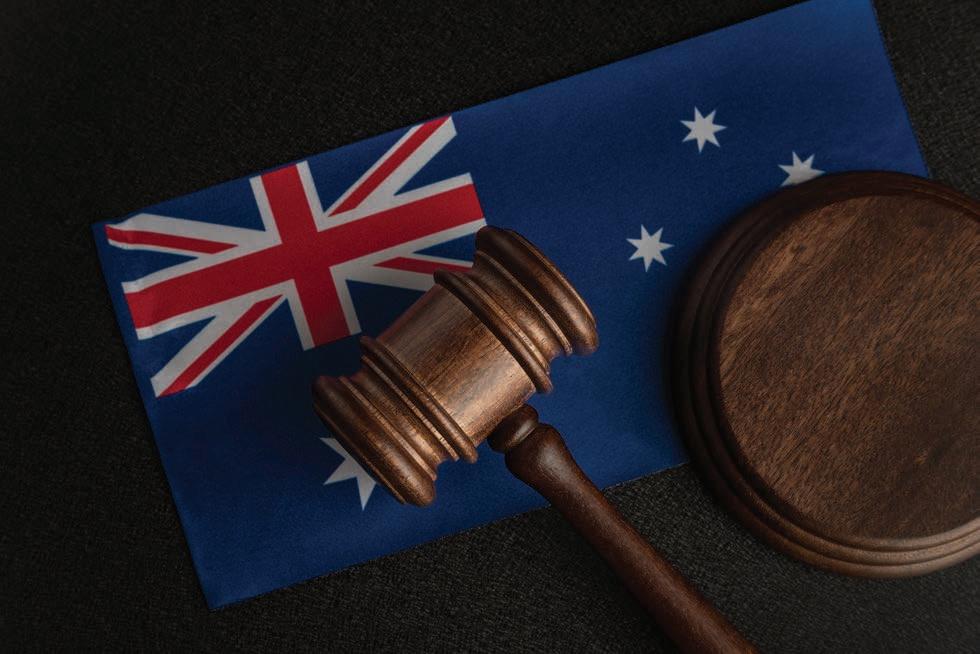
Key concepts: democracy, democratic values, the Westminster system, justice, participation, rights and responsibilities
HASS skills: questioning and researching, analysing, evaluating, communicating and reflecting
Civics and Citizenship has many connections with other subjects in the Humanities. Have you considered how what you have learnt about Australia’s political and legal system relates to the other topics you will cover this year?
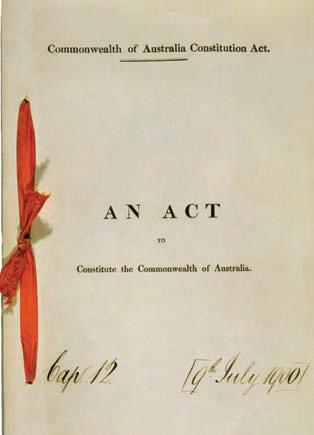
Find out which level of government has responsibility and law-making powers over employees and investigate the rules and laws associated with work. Consider the following topics:
• hours that constitute full-time, part-time and casual work
• minimum wages and awards
• safe workplaces
• responsibilities of employers and employees
• unfair dismissal and dispute resolution.
The Australian Government introduced mandatory superannuation payments for workers. Research this change in laws and find out:
• What is superannuation?
• When was the Superannuation Guarantee introduced?
• Why did the government introduce a mandatory payment?
• When are employers not required to pay superannuation?
• How much superannuation is guaranteed?
There has been discussion about introducing an increase in the Superannuation Guarantee from 9.5 per cent to 12 per cent. What are the advantages and disadvantages of doing this? Consider, for example, disposable income (spending money), impact on the rich and poor, available money in the future.
Constitutions often set up how government is structured and run, its responsibilities and people’s rights. Due to a variety of factors, water has become scarce in parts of Australia. Consider how water and its use and distribution should be governed in Australia.
• Which level of government is responsible for water legislation currently? Should this change?
• Would you consider water a right? Why or why not?
• If water is a right, how can it be protected in the Constitution?
• What current laws and regulations govern the use of water to conserve it now and into the future? (For example, think about sprinkler days/bans, bore restrictions, cost of water.)
• Can we change the laws and regulations to increase the conservation of water? How?
Local government is one of the three levels of government, but it is not mentioned in the Constitution as it is given its responsibilities and powers by state legislation. Investigate the responsibilities of local government and the services your local council or shire provides for the community (council and shire websites are handy here).
• What services does it not provide that you think are needed to improve the living standards and conditions of the community?
• How would the provision of these things improve the lives of people living in the area?
The ancient society you studied would have had a hierarchy of power; that is, ways in which different groups in society were organised in terms of who had the most power through to those who had the least.
Create a hierarchy of power for your ancient society and a hierarchy of power for modern Australia, and then consider the following questions:
• Who has the most power?
• How do they get power?
• Who is responsible for making laws (legislative), enforcing laws (executive) and judging the laws (judiciary)?
• Did principles like separation of powers and rule of law exist?
In Australia, parliaments are responsible for making laws, and often ideas come from the community and their changing values.
Find out who was responsible for making laws in your ancient society. Research:
• What kinds of laws existed in this society and who was impacted by these laws?
• Did the people have a say in the laws that were made?
• Was there a police force to enforce criminal law, and courts where trials took place?
• How were those accused of crimes treated and punished? Did presumption of innocence and rule of law exist? Could witnesses be called and could juries be summoned to make decisions?
For centuries, humans have been engaging in the process of exchange. We initially exchanged products for products, in a concept called ‘bartering’. We then introduced the concept of money as a way of valuing and exchanging goods and services with each other. Today, these transactions are a lot more streamlined. When you go to the supermarket, you select what goods you would like to purchase and exchange them for currency (either with cash or through the tap of a bank card).
Economics and Business raises many questions about these exchanges.
Who makes the goods or provides the services? How much should these goods and services cost? Who decides the cost of these goods and services? Where are these goods and services made? The study of Economics and Business helps us answer these questions, through an understanding of how the market operates. This helps us become more informed consumers in the economy.
In our increasingly globalised world, a decision made by someone on the other side of the planet can have a signi cant impact on our choices here in Australia. Understanding Economics and Business can help us navigate the challenges, and opportunities, of this dynamic.

Consumers and businesses are the two pillars of our market economy. Consumers, who can also be referred to as ‘households’, purchase goods and services in the market. Producers, who can also be referred to as ‘ rms’, sell goods and services in the market. But their roles are more complex than that.
In this unit, the relationship between consumers and businesses will be examined to help us understand the way in which they interact and are interdependent. You will have the opportunity to learn about how consumers in uence business decisions, and how businesses respond to consumer preferences. You will learn about the fundamental economic dilemma of opportunity cost, and the way in which consumers and producers make decisions in response to this concept.
After completing this unit, you should be able to answer these questions:
• Why does opportunity cost exist and how can consumers and businesses respond to it?
• How do consumers rely on businesses to satisfy their needs and wants?
• How do businesses adapt and respond to consumer demands and preferences?
• How do businesses set and adjust prices for their goods and services?
As humans, we greatly value the ability to make choices about our lives. This is true for personal decisions, political decisions, health decisions and economic decisions. However, the extent to which we are able to act freely and have choice is somewhat limited. In this topic, we will learn about the ways in which we can act freely in the face of the economic problem. Are we really able to exercise as much free choice as we think? Economists often say, ‘there is no such thing as a free lunch’. We will explore the theory behind that claim.
This topic will also have a special focus on the concept of interdependence, which looks at the way in which two or more actors in the economy are reliant on each other. We begin by looking at the interdependence between businesses and consumers, which creates a foundation for learning about other actors in the economy.



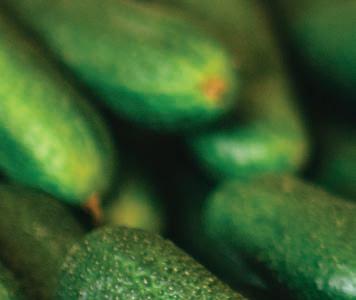


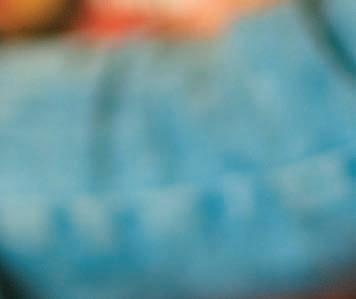










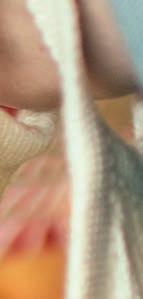
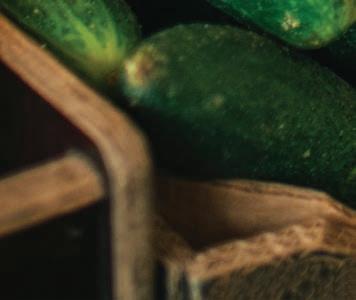








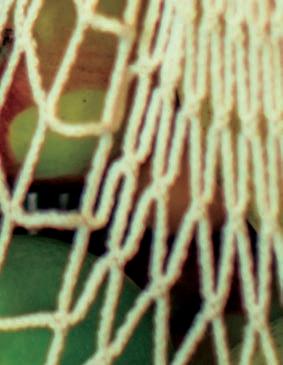




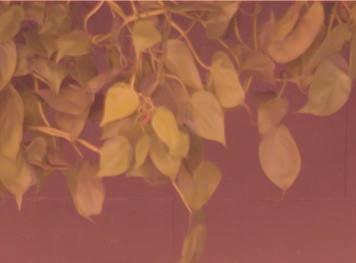




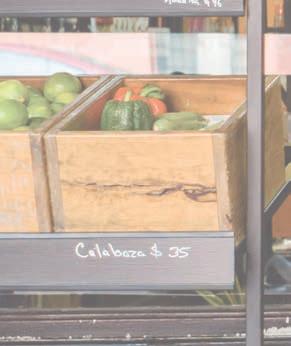
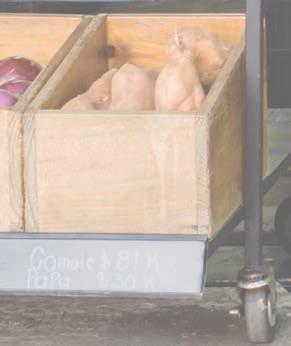




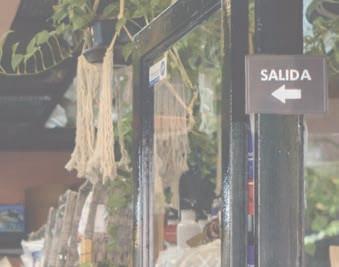






In this chapter, we will look at the ways in which consumers interact with producers. To do that, we will need to develop an understanding of who consumers are and who producers are to learn about their main roles within the economy.
As part of that discussion, we will look at the key economic problem that consumers and producers face every day and what the origin of that economic problem is. Their response to it, and the opportunity cost associated with that, will be a key feature of the topic explored in this chapter.
After completing this chapter, you should be able to answer these questions:
• What is the nature of the economic problem, and how do consumers respond to it?
• What is the circular ow of income model, and how does it illustrate the interactions and interdependence between consumers and businesses in our economy?



meet our growing demand. Economics helps us understand how to balance our desire for more resources without exploiting our natural resources.
Visit the Interactive Textbook to access:
• interactive review quizzes and Scorcher competition
• How and why do consumers change their tastes and preferences for products and how do businesses respond to these shifts?
• How do businesses determine their price strategies, and how do they adapt these over time?
• videos, image galleries and other extra materials.
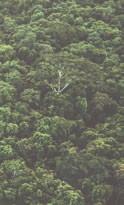



• What is the economic problem?
• How do we respond to the economic problem?
scarcity the concept that we have limited availability of resources on Earth
needs goods and services that are essential for human survival wants goods and services that are nonessential for survival but enhance quality of life economic problem the dilemma of having unlimited needs and wants, but limited resources to satisfy those needs and wants
Earth is our home, and the planet has a nite, or limited, amount of resources that can be used. Some of the resources that form the backbone of our society, such as coal, petroleum and iron ore, are non-renewable, which means they take a long time to be replenished. The scarcity of these resources means that we have to make choices on how we use these limited resources.
On the other hand, one of the underlying premises of economic theory is that humans have unlimited needs and wants. We have an insatiable, or never-ending, demand for new goods and services. The combination of these two ideas poses a dilemma – the challenge of having unlimited needs and wants, yet limited resources to meet those needs and wants. Economists refer to this as the economic problem.
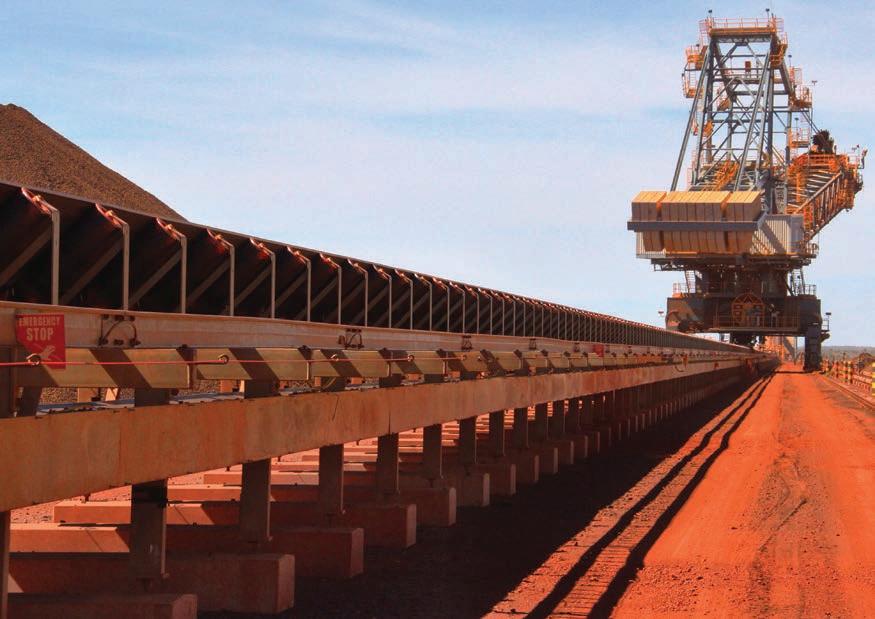
The way in which we respond to this economic problem is important when studying economics. It is said that humans make rational decisions (i.e. we make decisions that are in our best interests), but deciding what is in our best interests can be tricky. We make daily decisions about how to best satisfy our needs and wants. Needs refer to goods and services that are fundamental to human survival (such as food, water and shelter), whereas wants are goods and services that help improve our quality of life but are not necessary for survival.
Needs and wants
1Define the term ‘needs’ and provide an example.
2Define the term ‘wants’ and provide an example.

is one of our most valuable resources, and definitely a need for human survival. However, access has become increasingly difficult for some communities
CONSOLIDATE
3 Create a list of needs and wants in your life.
4Compare which of those are truly needs and which ones are truly wants.
5Describe if there is any overlap between the lists.
6Identify a need in our society that some people don’t have safe and reliable access to. For example, housing is considered a need, but increasing house prices are making it very difficult for all individuals to access this essential human need.
7Explain what role the government should play in supporting people to access this need.
8 In a paragraph, outline your opinions on whether the government should play a larger role in safeguarding needs (e.g. water, food, shelter) for individuals or if you think they should be responsible for this themselves.
Key concepts: scarcity, making choices, interdependence
HASS skills: questioning and researching, analysing, communicating and reflecting
economics the study of how our society produces goods and services with our limited resources, and how these goods and services are consumed rational a decision that is made by weighing up the advantages and disadvantages and choosing the best option
opportunity cost the value of the next best alternative forgone
It is important to note that the line between needs and wants is somewhat blurred. For example, although food is considered a need, it would be dif cult to argue that having access to fast-food chains such as McDonald’s is essential to human survival. Similarly, in our current developed society, many would argue that surviving without a mobile phone is simply not possible! Therefore, when discussing needs and wants, it is important to consider that grey areas may exist. Nevertheless, the distinction helps us provide some useful context

when exploring the way in which we are able to satisfy these needs and wants.
As noted earlier, the economic problem exists due to the scarcity of resources being unable to satisfy our unlimited needs and wants. Therefore, we are forced to make economic decisions on how to use our resources, what to make with them, and what we want to purchase. When we choose to do one thing over the other, we come across the concept of opportunity cost

sacrifice the act of giving up something resources money, materials or inputs that can be put towards producing a good or service
When making economic decisions, we often have to sacrifice one thing in order to pursue another choice. When you have limited resources, you may have to choose between two options in terms of how those resources should be used. This could refer to natural resources, the resource of money or the resource of time.
For example, when you nish school you may only have two hours of free time before you need to sit down and have dinner with your family. In those two hours, you could choose to do homework for school or play cricket with your friends in the local park.

does cost you your time, which could be spent doing other things.
If you choose to play cricket, then the opportunity cost of your decision is the knowledge gained from doing homework for school. If you choose to do homework, then the opportunity cost of your decision is the enjoyment gained from spending time with friends.
Opportunity cost refers to the value of the next best alternative option that was given up, or forgone, when making an economic decision. Businesses also have to make decisions in response to the economic problem that creates opportunity cost. For example, a basketball manufacturing
Opportunity cost
1Define the term ‘opportunity cost’.
2Explain the reasoning behind opportunity cost.
3Outline why opportunity cost cannot be avoided.
business with a single factory currently produces 10000 units a day (i.e. it makes 10000 basketballs a day). The company is eager to expand into making netballs as well, but it does not have the capacity or resources to expand production. Perhaps it could switch from producing basketballs to producing netballs. Perhaps it could produce fewer units of basketballs and start producing netballs. Perhaps it may choose not to produce netballs at all and to keep producing basketballs. In each of these scenarios, the business would experience an opportunity cost of its decision.
4 Create a hypothetical scenario of a business facing an opportunity cost decision.
5Discuss the nature of the limited resources, what options are available, what option you would pursue and what the associated opportunity cost is.
Key concepts: scarcity, making choices, allocation and markets
Studying economics can help you navigate this economic problem by nding creative solutions to minimise your opportunity cost. For example, with the hypothetical scenario provided before, how could you use your two hours more
HASS skills: questioning and researching, analysing, communicating and reflecting
ef ciently? Perhaps you could spend one hour doing homework and one hour playing cricket in the local park as a compromise. Perhaps you could suggest doing homework with your friends so you can gain knowledge and enjoy time with friends!
When thinking about how goods and services are produced, it is useful to classify the inputs into four categories. These inputs, or factors of production, represent all the resources that are
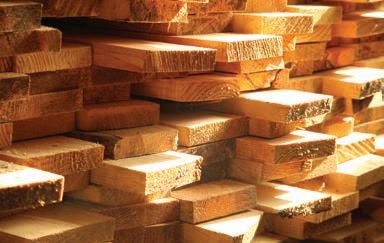
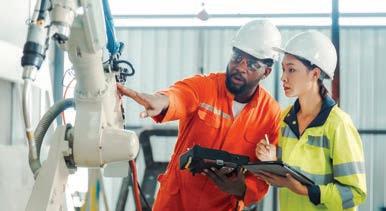


required for producing a good or service. They can be categorised as either: land , labour , capital or enterprise
Table 3.2.1 helps illustrate what these factors of production are and how they can be used to produce goods or services.
Land refers to the natural resources that are used to produce a good or service. Land can include common natural resources such as timber, water, iron ore, oil and coal. It is important to remember that some resources are renewable (i.e. they can be replenished relatively quickly), while others are nonrenewable (i.e. they require a long time to be replaced).
Labour refers to the human resources that are used to produce a good or service. It can include skilled and unskilled workers who participate in the production process of goods and services. Examples include teachers, builders, factory workers, cleaners, nurses and farmers.
Capital refers to any human-made machinery or equipment that was used to produce a good or service. These items can be referred to as assets that have been purchased to help with the production process, and can include items such as machinery, tools, equipment and vehicles (such as trucks and tractors).
Enterprise refers to the knowledge and skills that are used to combine the other factors of production to produce a good or service. Enterprise is often represented by a manager or the business itself, without which it would not be possible to coordinate the other factors of production.
Making choices (also known as the economic problem) arises out of the challenge of balancing unlimited needs and wants with limited resources. This forces us to balance the costs and benefits of our choices and make an economic decision. When you make a decision there is an opportunity cost, which is the value of the next best alternative that was forgone. Pop this concept into your memory bank. At the end of this book is an activity that will test your understanding of this and other key HASS concepts.
Key economic concepts
Let’s consider some of the main economic concepts that we have taken away from this initial part of the chapter.
1Define the term ‘economic problem’.
2 Consider the factors that contribute to the economic problem, and explain how scarcity leads to the economic problem.
3 Thinking about your daily life, describe some ways in which you have experienced the economic problem.
4Describe how you responded to this problem.
5Outline the opportunity cost that occurred as a result of this decision.
Key concepts: scarcity, making choices
A key concept in economics is the scarcity of resources, meaning that resources are limited because they are non-renewable and therefore take a long time to replenish naturally. However, not all resources are considered nonrenewable. There is a growing push to shift our energy resources from non-renewable ones (such as coal and gas) to renewable sources such as water, wind and solar. In Geography, your study of the water cycle and water systems includes a consideration of different renewable and non-renewable resources.
HASS skills: questioning and researching, analysing, communicating and reflecting
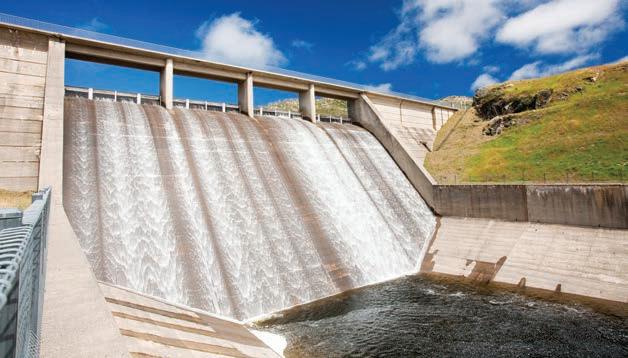
The shift from non-renewable to renewable resources doesn’t mean it comes without economic costs. Think about the cost of developing infrastructure (e.g. wind turbines or hydro-electric dams), the cost of training staff to build and maintain these facilities and the potential cost of land required for solar farms. In economics, no decision can be made without an opportunity cost – even if the resources themselves are fullyrenewable.
1 Outline the difference between a renewable resource and a nonrenewable resource.
2 Water is one of our most precious and scarce resources, yet it is also considered a renewable resource. Explain how water can be both renewable and scarce.
3 Discuss whether you think the shift from non-renewable energy sources to renewable energy is a good decision. Why or why not?
4 In your own words, outline the information in this section of the textbook about how and why we have to make decisions in response to the economic problem.
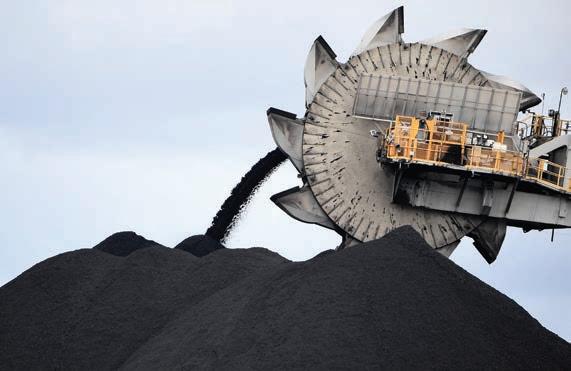
5 Using your evidence and explanations from your answers to questions 1–3, write one short persuasive paragraph that brings all your ideas together about either a explaining why we should use non-renewable resources for our energy needs, or b explaining why we should shift towards renewable resources for our energy needs.
Key concepts: scarcity, making choices, economic performance and living standards
Figure 3.2.7Coal is a large source of Australian energy. In Western Australia, the regional town of Collie is one of our largest sources of coal. However, proposals to close the Collie coal operations and move towards renewable energy have attracted controversy in Western Australia.
HASS skills: questioning and researching, analysing, evaluating, communicating and reflecting
how the concept of
Explain why we experience opportunity cost.
5 Explain what natural resources (factor of production of land) can be used to produce a pencil.
6 Write your own scenario that explains the concept of opportunity cost. Be sure to identify the nature of the economic problem and the opportunity cost of the decision made.
7 With the use of an example, analyse how the four factors of production may be used to produce a specific good or service.
Key concepts: scarcity, making
HASS skills: questioning and researching, analysing, communicating and reflecting
• What role do consumers play in the economy?
• What role do businesses play in the economy?
• How are consumers and businesses interdependent?
• What is the circular flow of income model and how does it operate?
As discussed earlier, consumers and businesses are forced to make daily decisions about what to consume and what to produce. The forum in which they make these critical decisions is called the economy. In this part of the chapter, we will explore the role of consumers and businesses and examine their complex relationship.
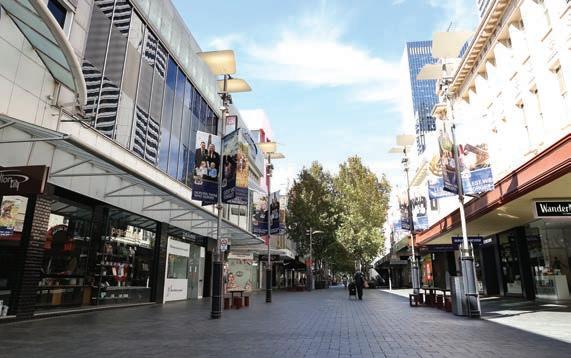
To consolidate our understanding, we will be introduced to a fundamental economic model called the circular ow of income model. Economists use models all the time to help understand how the world works through simplifying economic theories into diagrams. The circular ow of income model illustrates the interaction between consumers and businesses in our economy.
When considering how consumers and businesses interact, it is also important to recognise that they interact in speci c types of economic markets. An economic market is a forum in which two groups interact and exchange resources with each other. A traditional market is one in which consumers and producers interact to exchange physical goods (think of a fruit market where you can purchase fruit in exchange for money). However, there are also instances of non-physical markets (e.g. a stock market where company shares can be bought or sold).
consumers a key group in the economy who purchase goods and services from businesses businesses a key group in the economy who use factors of production to produce goods and services
fundamental something that is very important or core to the study of economics economic model a way of simplifying real-world economics using diagrams to help us study it better economic markets places where two groups interact and exchange resources with each other. They can be physical or non-physical (i.e.virtual).
independent businesses small and often family/ individually run businesses that employ a small number of staff multinational corporations large businesses that operate across multiple countries and employ large numbers of people labour one of the four factors of production that include the human resources used to produce goods and services
Consumers are one of the main actors in an economy – they are also sometimes referred to as households. In the economy, they make decisions about what to consume. In our economy, you play the role of consumer when you go to the shops to purchase goods and services.
It is important not to con ate ‘consumers’ with ‘buyers’ – they are very different descriptions. While it is true that consumers sometimes buy goods and services from businesses, they also have a different role in the market. When thinking about the factors of production (land, labour, capital and enterprise), we can connect some concepts and recognise that households play a second role as workers, or labour, and therefore act as a factor of production in the economy. Consumers are also in a position to offer other factors of production to businesses, although labour is the main resource they provide. In exchange for this labour, they receive wages, or a salary, from the businesses. Using correct terminology in Economics and Business is important to communicate your knowledge and understanding accurately.
As we explore the role of consumers in our economy, it is important to remember the following:
•consumers purchase goods and services from businesses
•consumers provide factors of production (labour) to businesses in return for wages.
Businesses refer to the other main actor within our economy – they can also be referred to as ‘ rms’ or ‘producers’ because they represent the companies that produce goods and services for consumers.
Businesses can range from local independent businesses (such as your corner cafe) to multinational corporations such as Nestlé. They can be small or large, produce a range of products, and operate in any geographical area (or even solely online).
Businesses are also responsible for determining how to make their products. Given the scarcity of resources available, they have to make decisions about how to use these resources, or factors of production, to produce goods and services. It is important to distinguish the concept of businesses from ‘sellers’, as businesses are not exclusively sellers in the market – they can take on other roles as well. For example, businesses also ‘purchase’ labour from households in order to produce their goods and services.
As we explore the role of businesses in our economy, it is important to consider the following:
•Producers sell goods and services to consumers.
•Producers provide wages to consumers in return for their labour.

Figure3.3.2The New York Stock Exchange is the area in which people, called traders, buy and sell shares in a virtual market.
Now that we understand who consumers and businesses are, we can explore the way in which they interact in the economy. The circular ow of income model helps summarise and visualise the interactions between consumers and producers.
At its core, the circular ow of income model tells us that consumers and businesses interact in two important ways. As consumers represent one sector (or part of the model) and businesses represent

another sector, this basic model is referred to as the two-sector circular ow of income model. There are two key ways in which consumers and businesses interact in the circular ow of income model.
Remember that a market is any place (physical or non-physical) in which exchange of products and/or money occurs. The product market is a speci c type of market in which consumers receive goods and services from businesses. In exchange for this, consumers must pay money, which is labelled as ‘expenditure’. The product market is also sometimes referred to as the ‘goods and services market’.
This exchange is illustrated in Figure 3.3.4.
Consumers and businesses also interact with each other in another type of market called the ‘factor of production market’. In this market, businesses receive factors of production (mainly in the form of labour) from consumers. In return, consumers receive wages from businesses.
This exchange is illustrated in Figure 3.3.5.
Businesses receive expenditure (money) from consumers
Consumers receive goods and services from businesses
Figure3.3.4The product market is also known as the ‘goods and services market’.
Businesses receive labour from consumers
Consumers receive wages (money) from businesses Consumers Businesses
Figure3.3.5The factor of production market ➜
Now let’s consider what happens when we try to visualise this all together.
Figure 3.3.6 illustrates the interaction between consumers and businesses in both the product market and the factor of production market simultaneously.
Consumers receive wages (money) from businesses
The top half of the model illustrates the factor of production market where labour is exchanged for wages. The lower half of the model illustrates the product market where goods and services are exchanged for expenditure.
Consumers
Consumers receive goods and services from businesses
Factor of production market
Businesses receive labour from consumers
Businesses
Product market
Money ow Real ow
Figure3.3.6The circular flow of income model ➜
You may have noticed that the anticlockwise ow in purple on the outside of the diagram represents the exchange of money between consumers and businesses (i.e. consumers receive money in the form of wages from businesses, whereas businesses receive money from consumers in the form of expenditure).
This is called the ‘money ow’ or ‘income ow’ in the circular ow of income model.
Businesses receive expenditure (money) from consumers
On the other hand, the clockwise ow in orange on the inside of the diagram represents the exchange of real goods and services between consumers and businesses (i.e. consumers receive goods and services, whereas businesses receive labour). This is called the ‘real ow’ in the circular ow of income model.
The circular ow of income model assumes that the state of the economy is stable and everything is equal. This means that the model assumes that the amount of wages earned by households will be equal to the amount of expenditure spent by households (i.e. wages = expenditure). This is called a state of equilibrium –a state where economic forces are in balance.
However, we know that is not always true as consumer behaviours and actions
are not constant. For example, what do you think would happen if consumers became worried about the future and decided to spend less money? This would decrease their expenditure, which would in turn decrease the amount of goods and services being produced. Therefore, one action can have a ow-on impact on other sectors of the economy. As you learn more about the circular ow of income model in future years, you will learn about what happens when the circular ow of income model is in disequilibrium and the impact of this.
equilibrium an economic concept where all economic forces are in balance and stability is created disequilibrium an economic concept where economic forces are imbalanced and change needs to occur in order to return to equilibrium
Recall
1 Outline what consumers receive in exchange for providing labour in the circular flow of income model.
2 Describe one role of consumers in the economy.
3 Describe one role of businesses in the economy.
4 Challenge yourself by drawing the circular flow of income model from scratch on a blank piece of paper without referring to the diagram in this section. Ensure that the arrows are pointing in the right direction referring to money flow and real flow accurately. You may want to use different colours to highlight different exchanges or flows in the model.
Interpret
5 Explain the exchange that occurs between consumers and businesses in the product market.
6 Explain why consumers and businesses are said to be ‘interdependent’ in the economy.
7 Compare the difference between ‘real flow’ and ‘income flow’ in the circular flow of income model.
Argue
8 Analyse what would happen in the economy if consumers suddenly decreased the amount of money they spent on goods and services (i.e. decreased expenditure).
Key concepts: allocation and markets, specialisation and trade, interdependence HASS skills: questioning and researching, analysing, communicating and reflecting
• In what ways do consumer tastes and preferences change over time?
• How do businesses adapt to meet these changing tastes and preferences?
consumer behaviour the way in which consumers make decisions about what to purchase adaptive the ability of producers and businesses to change their practices and products as consumer preferences change competitive the idea that businesses must stand out compared to their rivals in order to attract consumers and be successful
As our society continues to change, so do the tastes and preferences of consumers. This is true whether it comes to our taste in fashion, food or entertainment. More recently there has been a shift in consumer behaviour towards more environmentally friendly products as attitudes towards environmental sustainability change.
In responding to these changes, businesses have to be highly dynamic and adaptive. This means that they must pay attention to what consumers prioritise when choosing how to spend their money and meet these expectations. Doing so enables businesses to be competitive in the market.
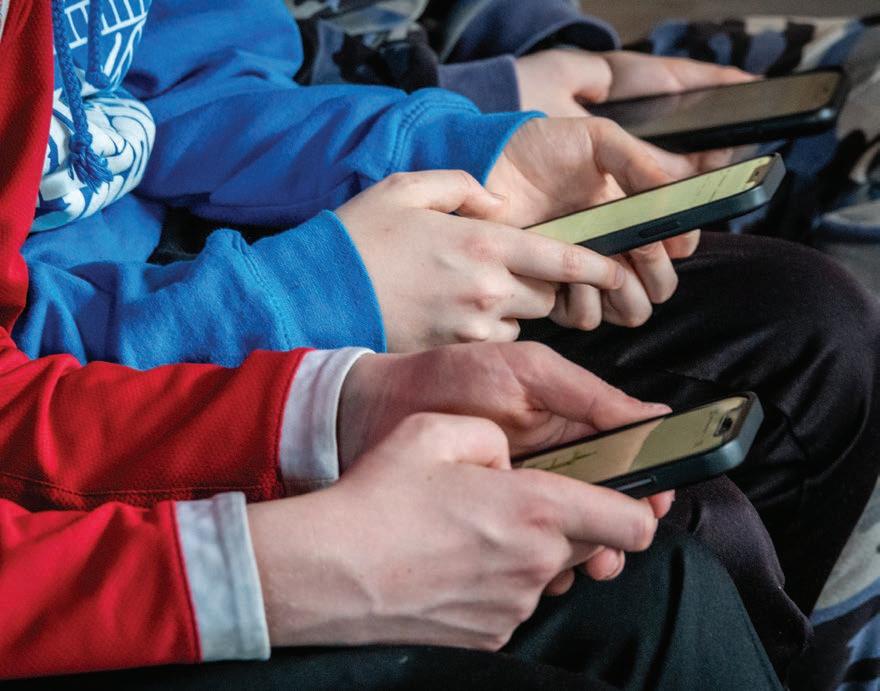
As society’s values and priorities change, the preferences and tastes of consumers shift as well. This is evident in the rise of campaigns regarding ethical consumption and buying ‘local’ as well as the popularity of exible and individualised service delivery companies (such as Uber, Amazon and DoorDash). Successful companies have been effective in identifying and responding to these trends ahead of their competitors.
The rise of the internet and the growing use of smartphones have encouraged consumers to prioritise individually tailored experiences and rapid service delivery. As consumers have become more accustomed to accessing social media, instant messaging and news at their ngertips, their expectations for goods and services have evolved.
For example, before access to smartphones became widespread in the late 2000s, use of the internet was often limited to homes and workplaces. Consumers had to go to shops to purchase goods, as online shopping was highly limited in scope. Interstate or international communication was predominantly conducted via posted mail, or in some cases fax and email, because mobile phone communication was too expensive. In the space of 20 years, the internet has transformed the way we live our lives and our economic behaviours.
Today, in Australia, we are accustomed to being able to purchase goods online via websites such as Amazon and have access to personalised offerings through platforms such as Net ix. Businesses have had to respond to this by shifting away from the traditional model of selling goods in shops to selling them online.
Figure3.4.2You no longer need to wait days to communicate with a friend via the post. Instant communication is possible thanks to the internet and smartphones where you can message, email or text a friend with no delay.
ethical consumption consumers purchasing goods and services that have been made without causing harm to people or the planet prioritise to value something more than other things accustomed to be more used to or familiar with something predominantly something is done most commonly oroften

Evidence shows that online shopping is becoming more and more popular among Australian households. Online shopping involves the consumer browsing online shopping platforms via the internet and purchasing goods and services through these websites. The product is then delivered to the consumer’s household, which can be done almost immediately!
Figure3.4.3Data from Australia Post showing the number of households (in millions) engaging with online shopping in Australia between 2019 and 2023
The gradual rise
Consumers and retailers embraced digital retail channels for convenience.
Shoppers increasingly favoured eCommerce platforms, marking a shift towards a digital- rst approach in consumer shopping behaviour.
BNPL andAmazon come onthe scene
Buy now pay later (BNPL) paymentsgrewinpopularity in 2017.Afterpayreached 2.3 million customers by the middle of 2018. By December 2017,Amazon enteredthe arena, driving even greater growth in online retailing.
The COVID-19 effect
eCommerce underwent a majortransformation driven by the COVID-19 pandemic, leading to a signi cant surge in online shopping. By September 2021, online spending reached its peak with 1 in 4 retail dollars being spent online, making eCommerce an integral aspect of daily life.
The new normal established itself asthe Online shopping has rmly ‘new normal’ inAustralian retail and an integral part ofthe retail fabric. eCommerce adoption is expectedto continue rising steadily.
from Australia Post showing the rise of the popularity of online sales in retail companies
Analysis questions
1 Use the data in Figure 3.4.4 to calculate the overall trend in the increase in percentage of online share in retail for: a 2013 to 2020 b 2021 to today.
2 Use the data in Figure 3.4.3 to calculate how many more households are engaging in online shopping in 2023 compared with 2019.
3 Using the data from questions 1 and 2 and from Figures 3.4.3 and 3.4.4, describe the impact of digital media and the internet on household shopping preferences since 2013.
4 Using your analysis skills and your understanding of the role of the internet in changing consumer behaviours and preferences, identify and describe two or three reasons why you think spending has been affected by the increase of digital technologies. ➜
Key concepts: allocation and markets, economic performance and living standards
HASS skills: questioning and researching, analysing, evaluating, communicating and reflecting

Figure 3.4.5Blockbuster Video was a very popular store to rent DVDs until the mid-2000s.

➜
Television revolutionised the way in which we were entertained and absorbed information. It first became popular in the 1950s and remained a dominant form of household entertainment for decades. Blockbuster Video was a very popular company featuring DVD and video game rentals where customers could rent television shows and movies to watch at home.
However, as consumer preferences in the age of the internet started shifting, so did the way in which businesses responded to these demands.
In 2007, a company called Netflix launched a streaming media service that enabled customers to watch videos on demand via the internet at home, rather than having to go to a physical store to rent DVDs. This concept was expanded to include a catalogue of over 60 000 hours’ worth of content in 2025. While Netflix has experienced commercial success in the 21st century, the story has not been so positive for Blockbuster Video.
In 2019, the last Australian Blockbuster Video store, located in Morley, Perth, closed down. At its peak, the company had over 9000 stores worldwide. The cause of its decline was a shift in consumer preferences away from wanting to rent physical DVDs to being able to choose streaming options from the convenience of their own home. The rise of Netflix and the demise of Blockbuster Video are closely related and provide a useful case study in the importance of responding to consumer preferences.
1 Outline why consumer preferences shifted from physical rentals to online streaming services.
2 Describe why you think Netflix was so successful in responding to consumer preferences.
3 Identify other examples of on-demand services or companies that have replaced more traditional company models.
dominant something is the most common or major way of doing things
DVD (digital versatile disc) a round disc that stores digital media such as videos and music. The media can be accessed by playing the DVD through a machine called a DVD player.
streaming media content that can be accessed via the internet video on demand media content that can be accessed by consumers at their convenience without fixed times (which is the case on traditional media formats such as television) catalogue the complete list of items available for viewing or purchasing
Key concepts: specialisation and trade, allocation and markets, interdependence
HASS skills: questioning and researching, analysing, evaluating, communicating and reflecting
The United Nations describes climate change as ‘one of the major challenges of our time’. Since the turn of the century, there has been an increasing focus on
promoting environmental sustainability at an individual, business and government level. This has translated into consumers adopting a more environmentally conscious mindset when it comes to consuming goods and services.

Ethical consumption is becoming increasingly popular today – with people being more mindful of where their products come from and how they are made. This is particularly true for clothing and food; however, an Australian toilet paper company has also become well known for its ethical production. Who Gives A Crap (WGAC) is an Australian company that makes eco-friendly toilet paper out of bamboo and recycled material. It also donates 50 per cent of its profits to build toilet facilities in developing countries. The company’s emphasis on environmentally friendly and ethical consumption has earned it a large and loyal consumer base in Australia and overseas.
Fairtrade chocolate
Chocolate is one of the most popular foods in the world. It is prized for its flavour and taste. There is also scientific evidence to back up the belief that eating chocolate make us feel happier!
However, the way in which chocolate is made around the world faces many ethicalchallenges. The key ingredient in making chocolate is cocoa, which is mainly grown in West Africa, Central America and South-East Asia. Some of these regions experience worker exploitation and environmental damage due to the poorer government regulation around growing cocoa.
Fairtrade is an organisation that seeks to authenticate responsible and ethical producers around the world. The Fairtrade Mark is a label that is used to identify and certify products that are ethically produced. Here are some key figures about Fairtrade cocoa:
• Most cocoa farmers in Ghana and Côte d’Ivoire earn less than $2 per day for their work.
• Two-thirds of Fairtrade certified cocoa farmers in Côte d’Ivoire are women.
• In the United Kingdom, Fairtrade chocolate makes up 12 per cent of chocolate sales.
Investigate the website at https://cambridge.edu. au/redirect/11219 to discover the positive impact of Fairtrade on improving the livelihoods of farmers and workers worldwide.
Analysis questions
Use the data from Fairtrade.net to demonstrate the extent of Fairtrade in 2022.
1 Use the table ‘Top 7 products’ to identify the amount of Fairtrade Premiums paid to producers and workers, in euros, for the following products: a bananas b cocoa bean c cotton d sugar e tea.
ethical challenges controversies regarding the way in which a good is produced in terms of its impact on people and the environment cocoa a bean that is the key ingredient in the production of chocolate worker exploitation when workers experience limited rights and poor pay government regulation the laws put in place by the government to protect workers and the environment
certify the process of acknowledging or verifying that a
certain way

2 Use the graph ‘Total Fairtrade Premium received by producers in recent years’ to describe the trends in the total Fairtrade Premium that is being received by producers since 2010.
3 In your own words, explain what you think the goal of Fairtrade is.
4 Use your analysis skills and the evidence you collected from your answers to Questions 1–3 to assess whether you think Fairtrade is achieving its goal in promoting ethical consumption of key resources.
Key concepts: allocation and markets, specialisation and trade, interdependence, economic performance and living standards
HASS skills: questioning and researching, analysing, evaluating, communicating and reflecting
global awareness the idea that people are becoming more aware and informed about experiences of people in other parts of the world ethical something that has been done or made in a morally good way (i.e. it does not harm people or the environment)
forced labour instances when people are made to work against their will or in poor working conditions
As the sharing of information online becomes more available, so does the awareness of how our goods and services are being produced. Increasing global awareness about the existence of ‘sweatshops’ (factories where workers experience unsafe working conditions and low wages) and growing concerns about ethical and forced labour have encouraged consumers to choose more ethical products.
This has extended to campaigns around encouraging local consumption. For example, the Western Australian Government has initiated a campaign titled ‘Buy West Eat Best’, which is designed to help consumers purchase locally grown produce.
In 2019, Laura Thompson, a Gunditjmara woman from Victoria, and her business partner Sarah Sheridan created a company that is now called Clothing The Gaps. The enterprise was established as a way of promoting awareness about issues facing First Nations Peoples in Australia while selling fashion that is ethically produced by a workforce of almost entirely First Nations Peoples. The company has won multiple awards for its advocacy and clothing and is accredited by Ethical Clothing Australia for selling ethically produced clothes made in Australia.
Clothing The Gaps has become a very popular enterprise in Australia, and demonstrates the success of businesses adopting community-minded and ethically conscious production means. The name ‘Clothing The Gaps’ comes from the Australian Government’s ‘Closing the Gap’ framework, which was intended to be a strategy to reduce inequalities between Aboriginal and Torres Strait Islander Peoples and non-Indigenous Australians on key health, economic and education targets.
Analysis questions


1 Explain why Clothing The Gaps was established and describe consumer trends that you think it was responding to.
2 Explain why the clothing industry is one that has a number of companies focusing on ethical consumption.
3 Outline what the rise of ethical companies in the clothing industry tells us about the fashion industry more broadly.
4 Describe any other examples of ethical clothing manufacturing that you are aware of.
Key concepts: making choices, economic performance and living standards
HASS skills: questioning and researching, analysing, evaluating, communicating and reflecting
3.4 Review questions
Recall
1 Define the term ‘forced labour’.
2 Identify two examples of online service or delivery platforms.
3 Describe what it means to ‘buy local’.
Interpret
4 Explain the role of the internet in changing consumer tastes and preferences.
5 Explain why consumers may be more environmentally aware now than they were in the past.
6 Explain why Who Gives A Crap has been such a successful business.
Argue
7 Imagine that you are a producer or business owner that has the option of producing products locally at a higher cost, or producing them overseas at a cheaper cost. Explain which option you would choose, and why.
8 The internet has reduced our reliance on purchasing goods and services from physical stores as we are increasingly purchasing them online. Analyse whether you think this is a positive change or a negative change.
Key concepts: making choices, economic performance and living standards, specialisation and trade
HASS skills: questioning and researching, analysing, evaluating, communicating and reflecting

• What factors influence a business’s decision to set prices for its products?
• How and why do businesses adjust the price of their product according to the demand?
strategy a way of making decisions that considers the advantages and disadvantages to make the best decision
pricing the way in which businesses decide how much money to sell their products for
Economists would argue that the biggest factor that determines whether a consumer purchases a good or service is the price. However, setting the price of a good or service is a complicated and dif cult decision. On one hand, businesses need to set a price high enough to cover the cost of creating the product and make a pro t. On the other hand, prices need to be low enough to attract consumers.
There are a number of different approaches a business could take when deciding the price of its product. Its strategy could be guided by the nature of its product, the anticipated demand, the cost of production or the relationship with other products. Consider the pricing strategies in Table 3.5.1.
Figure3.5.1Sales occur when companies reduce the price of a good or service to encourage more consumers to purchase it. Black Friday sales have become a very common approach to discounting for businesses around the world.

Cost plus pricing
Competitive pricing
In this approach, a business will charge a price for a product based on the costof production plus a small profit. This strategy may be described as an accurate way to set prices because it reflects the cost of making that particular good or service.
This is a strategy where a business will set prices based on the prices that have been set by competitors
Market entry pricing or penetration pricingIf a business is introducing a new product, or entering a new market, it may choose to charge a lower price in order to promote its product and attract more consumers. In the short term, this may lead to a financial loss (i.e. the business is losing money), but once the business has attracted enough customers it may increase prices in the long term.
Loss leader pricing
Premium pricing
Dynamic pricing
If a business sells multiple products, it may sell a specific product at a lower price (even at a financial loss) in the hope of attracting consumers who then purchase other products at the same time. This model relies on producers selling a diversity of complementary goods, which means that as consumers purchase the ‘loss leading’ good they are likely to purchase other goods at the same time, thereby creating revenue for the company.
Sometimes, businesses may set the price of a product higher than required in order to market it as a ‘luxury’ or ‘premium’ product. This perception may actually work to attract more consumers by encouraging the exclusivity of the product.
Some businesses, such as ride-share services, adopt a strategy called dynamic pricing where the cost of a ride will depend on the supply and demand of a product. For example, during rush hour, the cost of a ride will be more than it would be during non-peak times.
Figure3.5.2Swedish furniture company IKEA is well known to have very affordable food in its restaurants. This is because its food is often sold at a loss to encourage consumers to come in to the shop in the hope that they will purchase other products. This strategy is called loss leader pricing.
cost of production the value of the resources (or factors of production) required to produce a good or service profit the surplus (or extra) money that a business received for selling a good or service after factoring in the cost of production (i.e. price of product – cost of production = profit received) competitors other businesses in a market that produce similar goods or services and are therefore in competition
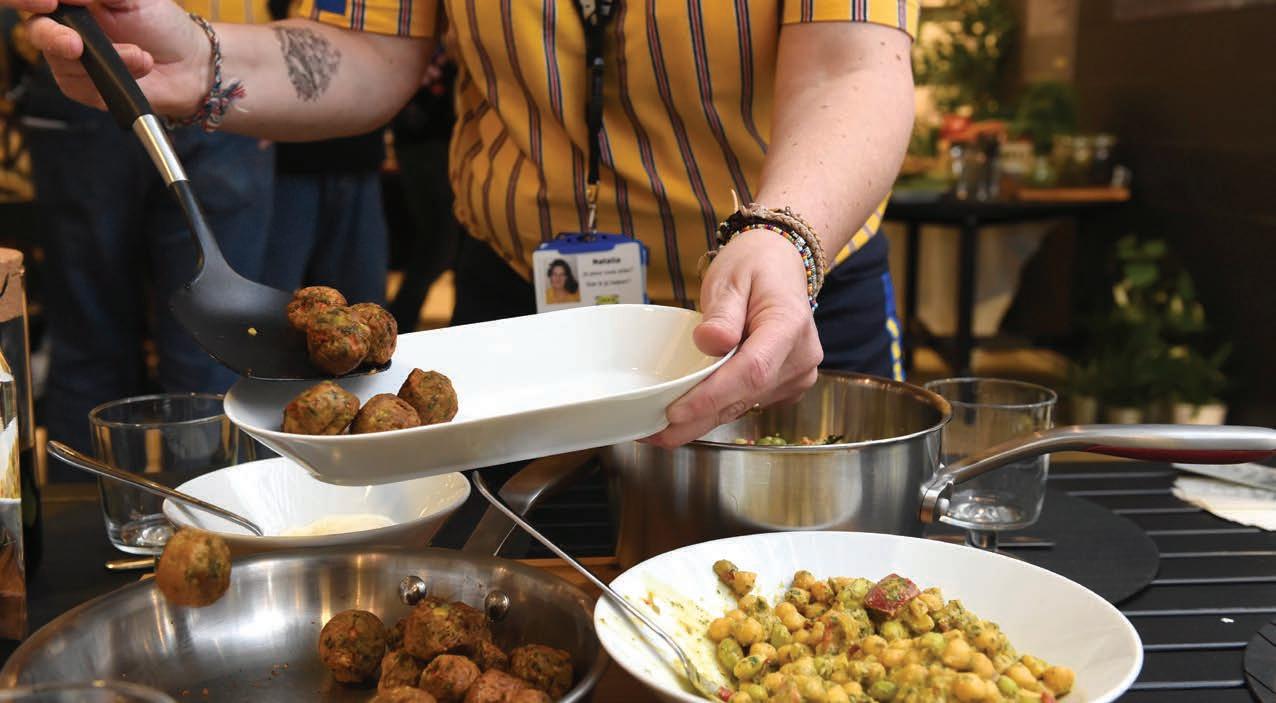

A SWOT analysis is a way of examining a particular strategy or business and assessing how effective it may be. Select one of the pricing strategies in Table 3.5.1 and respond to the reflective questions below.
1 S = Strength
What is a strength of your chosen pricing strategy? Why is it advantageous?
2 W = Weakness
What is a weakness of your chosen pricing strategy? What is a limitation?
3 O = Opportunity
What is an opportunity for further growth in the business from your pricing strategy?
4 T = Threat
What is a potential threat to the business as a result of your pricing strategy?
Key concepts: allocation and markets
How do businesses adjust the price of their product according to demand?
As consumers’ preferences and tastes shift, their demand for certain products will also change. Economic theory
HASS skills: questioning and researching, analysing, evaluating, communicating and reflecting
suggests that as the demand for a product increases, the price must increase. Likewise, if the demand for a product decreases, the price must decrease. Businesses will respond to these shifts in demand by adjusting the prices according to demand.
McDonald’s is one of the most well known brands across the world. It has a presence in close to 120 countries and serves millions of customers every day. It is also popular among economists as it allows a fascinating comparison between how McDonald’s prices goods and services across different countries, economies and markets. You might think that the price of a Big Mac, a very popular item from McDonald’s, would be the same across the world, but in reality there is a huge variance.
To help with this, economists invented the Big Mac index, which was first introduced by The Economist magazine in 1986. It helped compare the price, and power of consumers, across different countries.
Today, a number of different sources produce a comparison of Big Macs. For example, the online data-gathering platform Statista released its own research into Big Mac prices in 2024 by country.

The verdict? In Australia, a Big Mac costs $9.40 in Australian dollars (or around $5.50 in US dollars). In Switzerland, the same product is estimated to cost US$8.07. At the other end, in Taiwan, a Big Mac is expected to cost around US$2.28. This huge range represents the very complex way that businesses decide how to price their products across different markets and countries.
Investigate the website at https://cambridge.edu.au/redirect/11355 to discover the price of Big Macs in other countries as well.
Analysis questions
1 Explain why you think McDonald’s charges different amounts for a Big Mac depending on where it is purchased. Do you think it is acceptable for McDonald’s to do this?
2 A Big Mac is cheaper in Australia than it is in Switzerland, but almost double the cost of one in Taiwan. Explain why you think this may be the case.
3 Compare the price of Big Macs across a range of different countries. Describe what you notice about the type of countries in which Big Macs are a lot cheaper. Describe what you notice about the countries in which Big Macs are a lot more expensive.
4 Consider some products in your local community that cost different amounts, based on where you purchase them. For example, the price of a litre of milk at a major supermarket like Coles or Woolworths is likely to be different from the price of a litre of milk at a local grocery store or at a fuel station. Explain why this difference in pricing exists.
Key concepts: allocation and markets
HASS skills: questioning and researching, analysing, evaluating, communicating and reflecting

Although adjusting prices is the most common and easiest way for attracting more consumers (remember, lower prices and more people will want to buy a product), there are other non-price strategies that can be used. A non-price strategy is a way for businesses to attract more consumers to purchase their product that does not involve changing the price of a good or service.
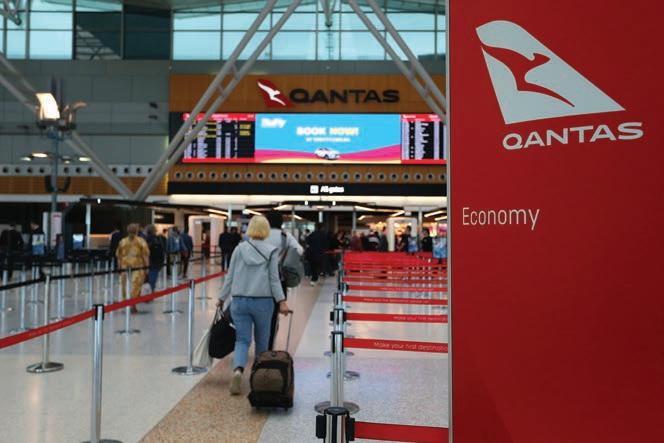
Strategies that could be used include the following:
•Gami cation and collectables: businesses can often encourage consumption of goods or services by turning their product into a game. This can include attaching a competition or award to a speci c product that can only be accessed through purchasing products. For example, Coles and Woolworths are known to offer collectables for spending certain amounts at their stores (e.g. Magical Builder characters, Cubeez).
•Introducing prizes: businesses can create demand for their product by creating prize systems for spending money. For example, consumers could receive a raf e entry for every $20 spent, which could win them a prize. This encourages consumers to spend more money to increase their chances of winning a prize.
• Loyalty programs: many businesses have introduced loyalty programs where consumers receive ‘points’ for spending their money at a business. Coles and Woolworths have Flybuys and Everyday Rewards respectively. Loyalty programs are also very common features of hotels and airlines, with Qantas Frequent Flyer and Virgin Velocity being two popular programs. By introducing these loyalty schemes, businesses have created incentives for consumers to spend their money and develop loyalty to the brand.
•Bundling products: businesses are also known to combine or bundle a range of goods and sell them as one product in order to encourage greater consumption. For example, McDonald’s is known for selling its burgers as ‘meals’ that include a drink and a side. Some fast-food companies extend this practice to include family meals to encourage greater consumption.
3.5 Review questions
Recall
1 Define the term ‘profit’.
2 Describe the pricing strategy of ‘cost plus pricing’.
3 Outline what the ‘demand’ for a product refers to.
4 Outline what a non-price strategy refers to.
Interpret
5 Explain what type of pricing you think would be best for a business that is new to a market or introducing a new product.
6 Describe some other examples, apart from Uber, of businesses that use dynamic pricing.
7 Coles and Woolworths are the two largest supermarket chains in Australia and often sell the same products. However, the price of these identical products may differ. Explain why this may be the case.
Argue
8 Imagine that you are a business owner selling a product. Identify what type of product you are selling and explain what type of pricing strategy you would implement. Outline your rationale for adopting this pricing strategy.
9 Consider that you are a business that is investigating alternative ways to attract consumer demand without lowering your prices. Outline what non-price strategies you could implement for your business and how you would roll them out. Develop a non-price campaign strategy for your business and produce an advertisement (a brochure or poster, for example) that illustrates your strategy to potential consumers.
Key concepts: allocation and markets, interdependence
HASS skills: questioning and researching, analysing, evaluating, communicating and reflecting
3.6 Conclusion: why does it matter?
We are faced with the economic problem every day of our lives. We have to make decisions about how best to spend our limited time, money and energy to best satisfy our needs and wants. Studying economics can help inform how we respond to this economic problem.
The relationship between businesses and consumers is fundamental to our economic system, and the exchange between businesses and consumers helps set up a foundation to understand the role of other
actors in the economy. Your dual role as a consumer is to purchase goods and services from businesses as well as to sell labour in return for wages.
As a consumer, you also play a role in the overall tastes and preferences of society. This drives the types of products offered by businesses and also plays a role in the ways that businesses price their products. Understanding your role can help you navigate this decisionmaking process better.
Re ection
That just about wraps up this topic. How do you feel you went working through the chapter? Before you attempt the following activities, visit the Interactive Textbook to rate your confidence with this topic via a downloadable checklist.
Australians have a love for eggs. Australian Eggs estimated that, in 2023, 18.9 million chicken eggs were consumed each day. That amounts to over 6.9 billion eggs per year! Not only is our egg industry very large but it is also very diverse. Discover the nature of consumer preferences for eggs by completing the following:
1 Describe where eggs are produced in Australia. Are there particular regions or areas where they are mainly produced?
2 Compare different ways of producing eggs (caged eggs, barn eggs, and free-range eggs). What are the requirements to be labelled as ‘free range’?
3 Describe how prices vary for the different types of eggs listed above.
4 Develop a tally with your peers about what types of eggs their family purchases. Your options may include caged eggs, barn eggs, free-range eggs and organic eggs.
5 Survey your peers to determine what the main reason behind this choice was.
Discover how consumer demands have caused businesses to respond by researching one of the following trends:
• preference for organic foods
• preference for healthy foods
• preference for environmentally packaged foods.
For your chosen trend:
1 Describe what has caused this to become a trend. Outline why consumers seek to consume products in this way.
2 Explain how producers have responded as a result.
3 Describe some examples of successful businesses in this market.
4 Predict some future related trends in this industry.
Increasing access to the internet and social media has seen the rise of online influencers on platforms such as TikTok and Instagram. These influencers play a large role in shaping consumer tastes and preferences among younger generations, particularly in areas such as fashion, cosmetics, food and music. This often includes doing paid promotions for products as well.
Explore how the influencer economy has impacted changing tastes and preferences of consumers by selecting one example of an online influencer and considering:
• the area they are seeking to influence (e.g. travel, fashion, cosmetics, food)
• what trends or brands they have promoted in the past
• whether these promotions are paid or sponsored by companies
• what trends they have shaped, and how this has shifted consumer demand.
between consumers and businesses
Draw a diagram of the circular flow of income model explored earlier in this chapter and explain the relationship between consumers and producers. Include the following vocabulary in your response:
• consumers (or households)
• businesses (or producers or firms)
• exchange
• interdependent
• product market
• factor of production market.
Imagine that you work in a company and are writing an email to your CEO about the best pricing strategy for your business. You need to decide how you will price your strategy and your rationale for doing so. In your response, include:
• the type of good or service you are providing
• whether you are new to this industry or already established
• what type of pricing strategy would be most appropriate for your product and business, and why
• whether you anticipate this being a good long-term strategy or not.
Key concepts: scarcity, making choices, specialisation and trade, interdependence, allocation and markets, economic performance and living standards
HASS skills: questioning and researching, analysing, evaluating, communicating and reflecting
The world is a highly complex and dynamic place. We have already established the unique interdependence between consumers and producers, and the need for producers and businesses to be adaptive and responsive to the constantly shifting tastes and needs of consumers. A key idea linked to this concept is ‘innovation’, which is a characteristic that enables individuals and businesses to develop new products, ideas and techniques to stay competitive in the market.
In this unit, the topic of innovation and enterprise will be explored in greater detail. You will have the opportunity to learn about how businesses adopt unique and creative strategies in response to consumer demands to ensure that they stay ahead of their competitors. You will learn about the characteristics that make an effective entrepreneur, while exploring the shortfalls of the entrepreneur ecosystem in creating fraudulent entrepreneurs.
After completing this unit, you should be able to answer these questions:
• What are different ways to establish and operate businesses?
• What does it mean to be innovative?
• What are the characteristics of an entrepreneur?
• What are fraudulent entrepreneurs and why do they pose risks to society?
A key concept in economics is the ability to develop new practices and processes in order to be ahead of your rivals and maintain your dominance of the market.
Innovation is a key concept in this chapter, and the ability of businesses and individuals to adapt to new ways of doing things and offer new products to consumers. Doing so enables them to be competitive, which means that they have an edge over their rivals or competitors. In this chapter, you will explore both key concepts and understand their application in terms of real-life examples of entrepreneurs and businesses.



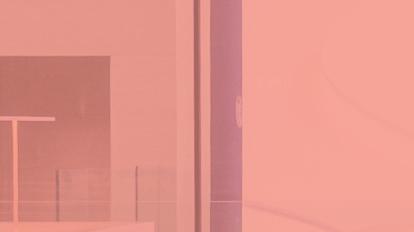


In this chapter, we will move away from abstract economic models to real-life examples of how businesses respond to consumer tastes and needs. To do that, we will need to develop an understanding of what it means to be innovative and entrepreneurial, and study some examples of this.
We will study the types of businesses that exist in our economy and learn about some of the characteristics of effective innovators and entrepreneurs. We will also explore the threats of fraudulent entrepreneurs, or individuals who use the principles of entrepreneurship for private gain at the expense of others.
After completing this chapter, you should be able to answer these questions:
• What are the different types of business ownership models in Australia and their respective features, advantages and limitations?
• What does it mean to be innovative and how does it improve the experience of consumers?
• How do businesses identify and respond to gaps in the market?
• How does technology help businesses improve their services?
• What are the characteristics required to be a successful entrepreneur?
Visit the Interactive Textbook to access:
• interactive review quizzes and Scorcher competition
• videos, image galleries and other extra materials.

• What are the different types of business ownership models in Australia?
• What are the features, advantages and limitations of different business ownership models?
liabilities any legal or financial responsibilities that an individual or company has reporting obligations the requirement of companies to provide information to government bodies about their finances and operations employee anyone that is hired by a business for work on an ongoing basis
Creating a business is a highly complex decision, as there are many different approaches one could take. This is because there are many different types of business that someone could choose to model their business on. Different business ownership models, or business structures, have unique advantages and limitations. Therefore, it is up to the individual setting up a business to choose a model that best suits their needs.
In this chapter, we will be looking at four main types of business ownership models: sole traders, partnerships, companies/corporations and franchises.
A sole trader is often the simplest business structure, because, by de nition,
it consists of an individual running a business. A sole trader is an individual person who is fully responsible for the business, the decisions that are made and the liabilities it may incur. The sole trader model is designed for businesses that are simple and small in scale, because there are fewer reporting obligations to the government. Reporting obligations include the responsibility of a business to report its revenue and pro ts (for tax purposes).
Being a sole trader does not mean that you have to do everything yourself. You are still allowed to hire people for your business; however, they are employees and do not have any ownership over the business.
Figure 4.2.1 KFC is one of the most well known fast-food brands in Australia; however, did you know that most KFCs are run by independent business operators rather than directly by KFC?
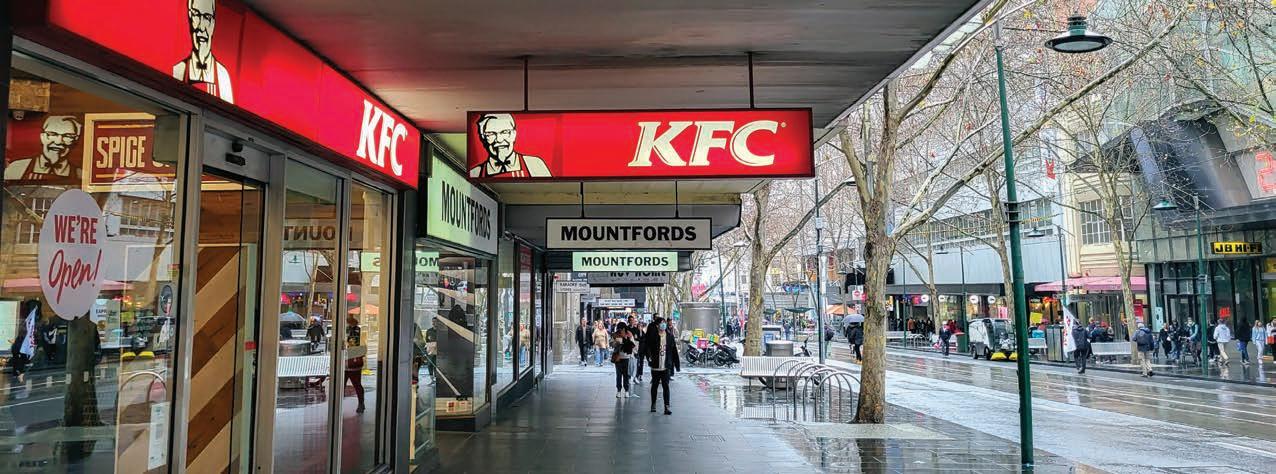
Some of the key bene ts of the sole trader model come from the simplicity of the model. These include:
•Sole trader businesses are very easy to set up and operate.
•Sole trader businesses give owners full control over business decisions and pro ts.
•Sole trader businesses have fewer reporting requirements compared with other business models, and this makes them easier to run.
The simplicity of the sole trader model also provides a number of limitations. These include:
•Sole trader businesses must be set up with funding from the owner’s personal funds as there are limited opportunities to borrow money.
• Sole trader businesses do not allow multiple people to own a business and share the costs of running the business.
•Sole trader businesses have unlimited liability held by the owners (i.e. if the business loses money, the owner is responsible for repaying any debt if it exists and may be forced to use personal assets such as their home, car or bank accounts).
• Sole trader businesses also have limited capacity for growth because they rely on the support and ownership of one person.
Partners have to make business decisions together. If there are multiple partners, this may come down to a voting process. Although there are different levels of partners (and different types of partners can have different levels of liability), the commonality is that they are all legally and nancially responsible for the business if things go wrong. The partnership agreement, if there is one, will determine the way in which this liability is shared.
Like a sole trader business, partnerships are allowed to hire employees; however, employees do not have any ownership over the business.
Some of the key bene ts of the partnership model include:
•Partnerships can have collaborative decision-making processes, as decisions can be shared by multiple people, and therefore a diversity of viewpoints can be brought in.
• Partnerships allow for resources to be pooled when setting up a business, which extends to the pooling of skills as well.
• Partnerships divide any liability between the partners, and therefore one person is not responsible for the whole business if the situation worsens.
•Partnerships have fewer reporting requirements to the government compared with more formalised business models, and a partnership is relatively easy to set up.
A similar, but slightly more complex business model is the partnership business structure. In this approach, a group or association of people come together to run a business and share the income, or losses, from the business between themselves. Like a sole trader model, the partnership model sees the owners share the liability if something goes wrong.
debt a sum of money that is owed to another party (usually to a bank or other loaning body) assets any property owned by a person or company regarded as having financial value diversity having people from different backgrounds (whether age, gender, race or other identity features) pooled bringing multiple things together

Limitations of partnership model
Partnerships also have limitations (some of which are similar to those experienced by sole trader businesses). These include:
•Partnerships, by virtue of having more than one owner, can be slow in making decisions because multiple viewpoints need to be considered.
•Partnerships share the liability between the partners, which means they are
Making thinking visible 4.1
Mapping businesses in your local area
held responsible if something goes wrong. Furthermore, a single partner can be held liable for other partners’ debts if they have insuf cient funds to pay it off.
•Partnerships see any pro t/income shared between multiple partners, thereby decreasing the amount of money received by each of the owners.
It is likely that your local area (whether it is your local shopping centre, high street or town centre) has a variety of different business types. Using an online mapping program, or by walking in the area after school one day, conduct a survey of the shops that you see and record the following information:
1Identify how many businesses are in the area.
2Outline the split between sole traders, partnerships, corporations and franchises in this area.
3Discuss why you think this split of business types exists.
Key concepts: allocation and markets HASS skills: questioning and researching, analysing, evaluating, communicating and reflecting

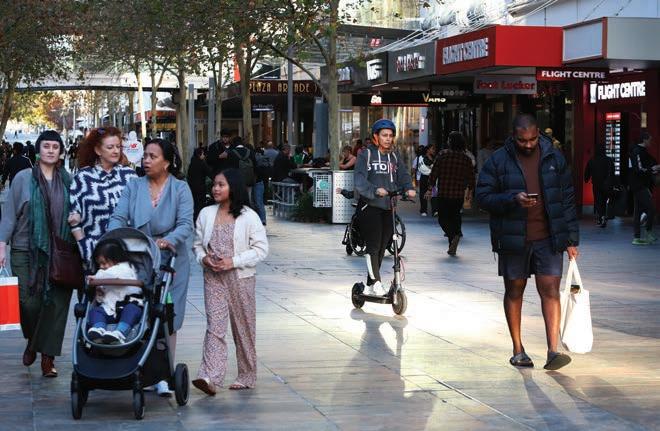
As humans, we are legal entities or beings that are recognised by the law. Companies, or corporations, are also legal entities that have their own set of rules and obligations.
To establish a company, an individual or group of associates must register a company with the Australian Securities and Investments Commission (ASIC), which is responsible for overseeing business operations in Australia. Registering a new company involves multiple registrations, including registering for tax purposes, registering for an Australian business number (ABN) and registering for any potential trademarks.
Although companies are more complex business models, they do offer a number of bene ts.
Advantages of company or corporation model
Some of the key bene ts of the company or corporation model include:
•Companies are separate legal entities from their owners, so owners are not always directly nancially liable if a company gets into nancial dif culty.
•Companies are able to raise more money to fund investment because there are more potential owners, and parts of the company can be sold as ‘stocks’ to potential buyers.
•Companies can continue to exist even if the establishing owners move on – they exist on their own and simply need directors to run the company.
However, companies also have limitations. These include:
•Companies are often more complex to set up, and are subject to greater government regulation than a sole trader or partnership, which requires more stringent recordkeeping and reporting requirements.
•The running and operating costs of a company can be a lot higher than those of a sole trader or partnership.
•Companies can experience slow decision-making processes because of the number of shareholders that may be involved in the process.
trademarks symbols, logos or branding that is legally protected by a company stocks (also called shares) a portion of a company that is sold off to generate money for investment purposes operating costs the expenses that a company must pay in order to run its business (such as costs of workers, costs of machinery, costs of renting offices or factories)
Activity 4.1
The ASX is the marketplace where shares in Australian publicly listed companies are bought and sold. Selling shares is a unique way for businesses to raise capital to expand their business. Visit https://cambridge.edu.au/redirect/11356 and choose a company to research. Answer the following questions:
1Identify the current price of one share in the chosen company.
2Describe the trends in the share price over the past 12 months.
3Calculate the amount of money an investor would have made or lost if they had purchased 1000 shares in the company one year ago.
Key concepts: making choices, allocation andmarkets HASS skills: questioning and researching, analysing, communicating and reflecting
agreement a set of expectations and terms that have been acknowledged and arranged between two or more parties business model the way that a business conducts its operations
You may be surprised to know that some of our biggest and most well known fastfood chains operate under the franchise model of business. McDonald’s, one of the largest fast-food chains in the world, has more than 1000 stores in Australia. Of those, 85 per cent are owned and operated by franchisees. But what is a franchise?
A franchise is an independently run and operated branch representing a larger company or corporation as part of a franchising agreement. The main company or corporation (which is the franchisor) agrees to let someone (the franchisee) use the name, brand and business model of their company to sell goods and services. McDonald’s, for example, has agreements with over 850 different parties to run and operate McDonald’s stores in Australia using the same name, brand, products and business model. A franchisor will often receive a share of the pro ts made by a franchisee.
A prominent example of a popular Western Australian franchise business is Dôme Cafe, which has dozens of locations across Western Australia.
Dôme operates as a franchise, where individuals can purchase the licence to operate a Dôme Cafe using the company’s existing branding, products and business models.
Some of the key bene ts of the franchise model include:
•Franchises are able to use existing successful business models that have been developed by large and successful companies.
•Franchises are highly supported by their franchisor company, including through provision of resources, branding material and technical advice.
•Franchises are able to brand themselves with highly recognisable company names that are likely to be familiar with customers.
To help assess the viability of strategies, businesses often use a ‘PMI’ framework to help analyse costs and benefits of different choices. PMI stands for plus, minus and interesting.
In this activity, you should develop a PMI chart for all four business models to assess their strengths and weaknesses. This will help you later as you have to evaluate which model you would pursue. An example of a PMI chart is shown below.
concepts: allocation and markets, specialisation and
skills: questioning and researching, analysing, evaluating, communicating and reflecting
However, franchises also have limitations. These include:
• Franchises have to give up a proportion of their pro ts to the parent company as part of the franchise agreement, or have recurring fees to pay.
• Franchises have limited creative control over their business – they can only market and sell products that have been approved by the parent company.
• Franchises face high initial setting up costs , which are often higher than setting up an independent business because they cover the licence for using the franchisor company’s name, knowledge and business model.
• Franchises are highly reliant on the franchisor for financial wellbeing, and the health of the parent company can have a direct impact on the franchise.
creative control the ability of individuals and businesses to choose to make their own decisions regarding aspects of the business setting up costs the initial financial expenses incurred as a result of establishing a business
4.2 Review questions
Recall
1 Describe the meaning of the term ‘sole trader’.
2 Describe the main features of a company model of business.
3 Outline the meaning of the term ‘debt’.
Interpret
4 Distinguish between the liability held between sole traders and partnerships.
5 Outline three benefits of starting a business through the franchise model rather than as a sole trader.
6 Outline three limitations of the partnership model of establishing a business.
Argue
7 Discuss which business structure you would choose if you were starting your own business. Why would you choose this structure? What limitations may exist?
Key concepts: making choices, allocation and markets, specialisation and trade
HASS skills: questioning and researching, analysing, evaluating, communicating and reflecting

Go online to access the interactive section review and more!
Figure 4.2.5 A partnership involves an agreement between two or more parties to come together and share in the operation, profit and liabilities of a business.
• What does it mean to be innovative?
• How does innovation improve the experience of consumers? innovation the act of using new and creative solutions to challenges entrepreneurship the act of setting up or establishing a new business entrepreneurs individuals who set up new businesses with financial and/or personal risks competitive to have an advantage or edge over rivals in an economic market
For millennia, as humans we have been adapting the way we do things to respond to external challenges and to improve our quality of life. At some stage in human history, the wheel was invented, and that transformed our models of transportation, travel and warfare. More recently, we can see other examples of humans adopting creative and unique solutions to pressing global problems.
Although the word ‘innovation’ has become an increasingly popular buzz word today, it has existed as a practice for thousands of years. Innovation refers to the act of adapting or creating new approaches or solutions to challenges. It
Case study 4.1
Innovation is not just about producing a new physical product; it can also be about the way in which consumers access a particular service.
Music is a universally enjoyed recreational activity for humans. Whether through playing or listening, music has existed for hundreds of years across cultures as a way of expressing ideas, feelings and emotions.
However, access to music hasn’t always been easy. How are you supposed to listen to your favourite artist or band if they live in another country? How can we listen to music without it having to be from a live performance? This was the exact problem considered by one of the greatest innovators in history – Thomas Edison. He invented a device called the phonograph, later called a gramophone, which allowed sound to be recorded, stored and replayed at a later time. This technology evolved over time into other forms of music players such as radios and jukeboxes, before innovation took it further into portable devices such as the Sony Walkman.
is closely related to the economic concept of entrepreneurship, which is the act of establishing a new business with nancial and/or personal risks in the hope of succeeding and generating pro t. An entrepreneur is a person who establishes such a business.
Innovation is essential to the functioning and survival of a business, as it enables businesses to continue to adapt their practice in response to changing economic conditions and consumer preferences. Innovation enables businesses to be competitive against rivals, which allows them to stay ahead of their competitors.
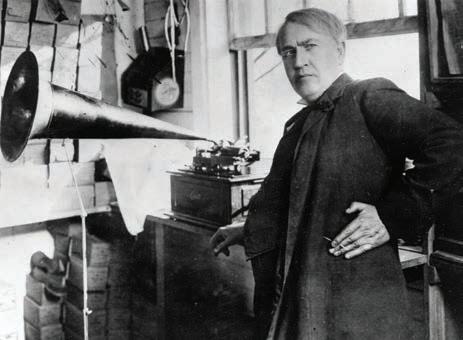
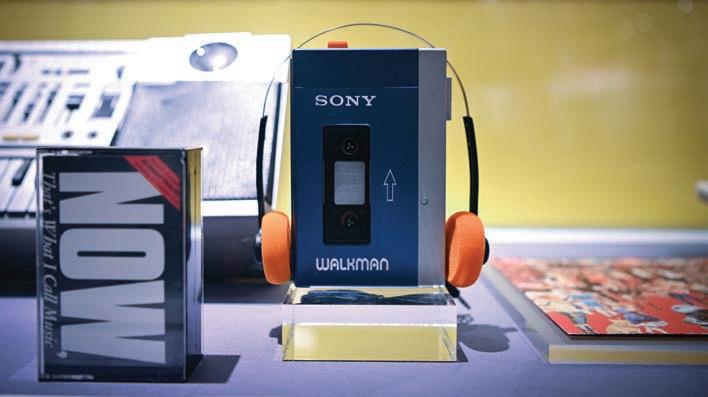
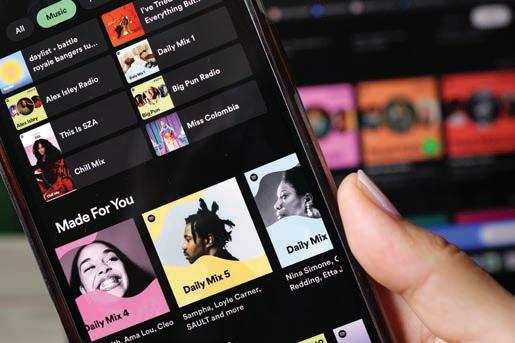
Figure 4.3.3 A few decades ago, being able to access music anywhere you want from a portable device with a touch screen would have been unthinkable. Today, it is a reality due to the innovation experienced in the music entertainment industry. ➜
➜ The iPod was introduced in 2001 by Apple and represented another revolution by storing music without the need for a cassette or CD. This was complemented by the introduction of iTunes, which allowed customers to purchase digital versions of songs and play them directly from their Apple iPod.
However, consumers were still hungry for more. The model of purchasing music and playing it was efficient but highly cost prohibitive. It would cost a lot of money to select and purchase songs to listen to, and consumers were seeking alternative ways of listening to music that were both easy and cheap. Spotify is a Swedish audio streaming provider that was launched in 2008. It allows consumers to ‘subscribe’ to their services and have access to a catalogue of over 100 million songs. This can then be played on their personal device whether it is a computer, a television or a smartphone. Spotify was innovative in its approach to music by giving consumers flexibility to listen to whatever they wanted to, and whenever they wanted to, with a flat monthly subscription fee.
Analysis questions
1Outline the meaning of the term ‘innovation’.
2Describe how innovation has existed in music across the years with reference to specific examples.
3Explain why you think one of the innovations in music outlined above was most significant.
Key concepts: allocation and markets, specialisation and trade
Innovation is important because it helps improve the customer experience through access to new products and services. It can also help reduce prices by increasing competition.
However, innovation should focus on improving the consumer experience
cassette a small plastic box that contains a tape that can be used to play music
CD (compact disc) a flat circular plastic disc that contains digital information that can be accessed by a CD player
HASS skills: questioning and researching, analysing, evaluating, communicating and reflecting
on a number of levels beyond cost and product quality. Consumers are increasingly becoming aware of ethical and environmentally sustainable consumption, so it is important for businesses to recognise and cater their innovation towards these priorities as well.
Does innovation have drawbacks?
London and New York are two of the most important cities in the world, and are home to some of the busiest airports in the world. It currently takes around 8 hours to travel between the two megacities via passenger aircraft. What if it was possible to do it twice as fast? Perhaps even faster?
While this does sound crazy, the reality is that this used to be possible until 2003. The Concorde was one of the world’s most famous passenger planes, and would travel at supersonic speeds between some of the world’s major cities. One of the most popular routes was between London and New York. The Concorde could travel at over 2000 kilometres per hour (which is a lot more than the modest speeds of around 900 kilometres per hour performed by passenger jets today).

sonic boom the noise made when an object reaches the speed of sound and breaks the sound barrier sustainable a product, or way of doing something, that is able to be maintained in the long term
The Concorde used innovative technology to supercharge its engines, enabling it to travel so fast. It revolutionised air travel, which would ordinarily involve having to take frequent fuel stops to get from one destination to another.
Despite all of this, airlines made the decision to stop flying the Concorde in 2003. Why? Well, although the Concorde represented huge developments in technology, innovation and passenger experience, it also had significant drawbacks.
For example, when the aircraft accelerated to the speed of sound (which is the speed at which sound travels) and broke the sound barrier, it caused a large sonic boom. This was highly unpopular with residents who lived in areas under the Concorde’s flight paths. Additionally, the aircraft used an
enormous amount of fuel to power its engines. The aircraft could also only carry a limited number of passengers because of its design.
All of these factors contributed to airlines abandoning the Concorde as a choice of aircraft, and moving to more sustainable and cost-effective options. Today, aircraft designers such as Boeing and Airbus are increasingly focusing on developing more fuel-efficient aircraft.
However, there is hope for a more sustainable version of the Concorde to return to the skies. Innovative US company Boom Technology has conducted test flights for its proposed Overture aircraft, which would achieve similar speeds to the Concorde. Innovations in development of aircraft, such as the inclusion of lightweight carbon fibre material, have helped improve the sustainability of air travel as well.
Overall, it is clear that innovative approaches that just focus on cost or time are not guaranteed to be successful. To be innovative also requires a consideration of the impact on humans and the environment to ensure that the practices are sustainable for the long term.
Analysis questions
1 Outline how the Concorde represented an innovative development in air travel.
2 Describe two limitations of the Concorde that ultimately led to its abandonment.
3 Explain whether you think the Boom Technology Overture aircraft will be successful or not. What makes it different from the Concorde?
Key concepts: allocation and markets, specialisation and trade
HASS skills: questioning and researching, analysing, evaluating, communicating and reflecting
Making choices that consider sustainability is important for innovation and competitiveness. This means that new processes and technologies can be maintained in the long term so that they can be enjoyed by future generations. Pop this concept into your memory bank. At the end of this book is an activity that will test your understanding of this and other key HASS concepts.
Innovation has been a part of Australia’s culture for thousands of years. Our First Nations Peoples have been adopting innovative approaches for tens of thousands of years – from innovative re
management practices to hunting and agricultural techniques. More recently, Australian innovators have made signi cant impacts in areas such as ight safety (through the invention of the ight data recorder and cockpit voice recorder) and disability advocacy (through the creation of hearing aids such as the Cochlear implant).
An icon of Australian backyards is the Hills hoist, which was an innovative solution to drying clothes in space-constrained environments. In 1945, Lance Hill and his wife found it difficult to dry their clothes in their backyard because of the number of trees. Rather than cutting down trees, Hill created an innovative rotating clothes line that could be raised or lowered. By 1994, over five million Hills hoists had been sold, and they are a ubiquitous feature of suburban Australia. The Hills hoist represents an innovative and Australian approach to a simple, yet important, challenge.

Innovation has become a much larger feature of the Australian economy in recent years. A survey from the Australian Bureau of Statistics found that nearly half of Australian businesses reported being ‘innovation-active’. This means that they believed they were adopting innovative practices and developing new approaches to tackle challenges.
The Australian Government Department of Industry, Science and Resources is responsible for supporting industry innovation in Australia to improve competitiveness against other nations. This includes providing grants and funding to companies seeking to introduce innovative products through research projects and other initiatives.
innovation-active a way of running a business that emphasises the importance of having new business approaches and practices grants sums of money that are given to organisations by the government for specific purposes
Innovation in Australia
Innovation has been a growing focus for the government and businesses in Australia. In 2023, just under half (46 per cent) of Australian businesses reported being innovation-active. Furthermore, one-third of those businesses reported that they witnessed environmental benefits as a result of the introduction of new processes and goods and/or services.
However, innovation varies from industry to industry. Some industries, such as media and telecommunications, have a much higher percentage of innovation-active businesses than industries such as construction.
Professional,
Financial
Accommodation and
Health
Rental,
Administrative
Transport,
Furthermore, the barriers experienced by some businesses highlight the
practices and processes in Australia.
Analysis questions
1Explain why you think the Australian Government has a focus on improving innovation in Australia. Consider what benefits it may bring to the government.
2 Referring to Figure 4.3.6, identify the top three industries in which innovation-active businesses are most commonly found.
3 Referring to Figure 4.3.7, describe the biggest barriers experienced by businesses to furthering their innovative practice.
4 With reference to the barriers identified, analyse what the government is doing and discuss what it could further do to support innovation in Australia.
Key concepts: specialisation and trade, economic performance and living standards
So how can we best support innovators, particularly young innovators, to develop creative and unique solutions to some of the pressing problems facing Australia? Apart from the government, there are groups (sometimes called ‘incubators’) that seek to provide expertise, support and resources to aspiring young innovators to help achieve their ambitions.
HASS skills: questioning and researching, analysing, evaluating, communicating and reflecting
One such group is called Bloom, which describes itself as a ‘youth-led innovation hub’ that seeks to empower young people to become innovators in Western Australia. Based at St Catherine’s College at the University of Western Australia and Curtin University, the target demographic is young people at university with aspirations for community change and impact.

Henry Ford pioneered assembly line production and revolutionised production efficiency. Read the short article from the Ford company website at https://corporate.ford.com/articles/history/moving-assembly-line.html about the revolutionary ideas about systems in manufacturing that Ford was responsible for.
1 Identify three changes that Henry Ford made to increase efficiency; this is your evidence to show what changes were made.
2 Explain why each of these three changes made a difference.
3 In your own words, outline the information covered in this section about why it is so important to have systems in place for a business to be successful.
4 Using your evidence and explanations from your answers to questions 1–3, write one short paragraph that brings all your ideas together about the importance of investment in systems that build efficiency in businesses.
Key concepts: innovation, efficiency, technology, process
HASS skills: questioning and researching, analysing, evaluating, communicating and reflecting
End of section 4.3 review Go online to access the interactive section review and more!
Recall
1 Define the term ‘entrepreneurship’.
2 Define the term ‘competitive’.
Interpret
3 Explain the progress of innovation in the music entertainment industry since Thomas Edison’s invention of the phonograph.
4 Describe the industries where innovation tends to be more common (i.e. there are a higher number of innovation-active businesses). Suggest reasons for this being the case.
Argue
5 Evaluate whether you think innovation is a force for good or bad in our society. Use examples of both positive and negative impacts of innovation on consumers, businesses and the environment.
Key concepts: allocation and markets, specialisation and trade, economic performance and living standards
HASS skills: questioning and researching, analysing, evaluating, communicating and reflecting
• How do businesses identify gaps in the market?
• How does technology help businesses respond to gaps in the market?
To be successful, businesses need to be able to identify and respond to business opportunities as soon as possible. Doing so enables them to be ahead of their competitors and offer unique services in
the market. As discussed in the previous chapter, the rise of the internet and shifting consumer preferences have enabled some businesses to outsmart their competitors and create market dominance.
Case study 4.3
The rise of Uber
A very well known example of a business identifying and responding to a business opportunity is the case of Uber, which is a ride-share service that exists around the world. Uber was first founded in 2009 by Travis Kalanick and Garrett Camp, after they found themselves stuck in Paris on a snowy evening without success in finding a taxi. This problem challenged them to come up with a solution that would enable customers to request a ride from their exact location on their phone.
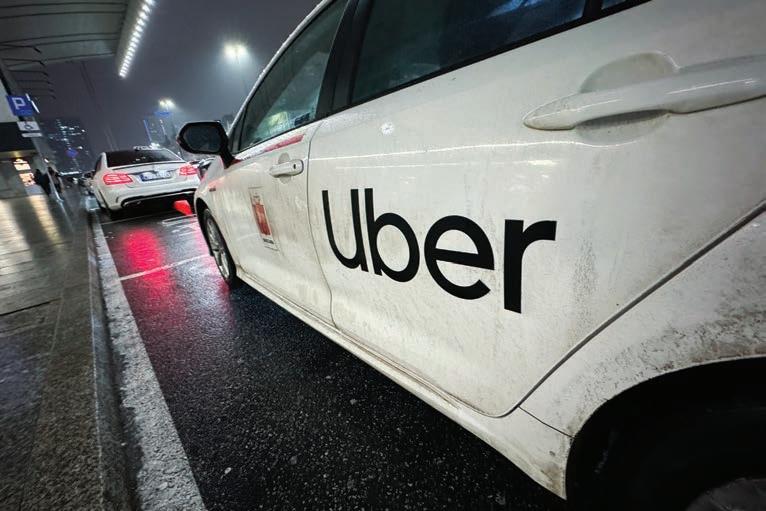
business opportunity a situation in which a business identifies an opening in the market and can take advantage of it competitors other businesses working in a similar market that act as rivals market dominance the ability of a business to have a large command of consumer interest in a particular market ride-share a model of business where a company connects contracted drivers with customers via a digital app
independent contractors people who provide services to a company but are not employees of the company private transport services services that allow customers to travel from one point to another in a private vehicle (i.e. not on public transport)
gig economy a type of market in which workers have flexible working conditions and are connected directly to consumers through a digital app customer experience the overall satisfaction a customer has from using a particular product or service campaign to organise a coordinated course of action against a particular group or idea
The concept that Kalanick and Camp developed was a ride-share service, where individual consumers could request rides directly with contractors who were vetted by Uber and included on its app. Unlike traditional taxis, which are usually overseen by a larger company, such as Swan Taxis in Perth, ride-share providers are independentcontractors who use their own private cars to provide private transport services for customers. This is said to be an example of the ‘gig economy’, which is a type of market in which people have flexible, and often short-term, work through a digital app that connects them directly with consumers.
In 2016, Uber was given permission to operate in Western Australia and the service was first rolled out in Perth. It helped improve the customer experience because it allowed customers to have access to ondemand services through an app on their phone. However, Uber was controversial because of the impact it had on the existing taxi service industry in Perth. In fact, in 2015 a group of taxi companies campaigned against Uber because of the impact it would have on their business. Ultimately, this campaign met with little success as Uber became much more popular than taxis very quickly. Uber was soon joined by other competitors, such as Didi, Lyft and Ola. However, due to the highly competitive landscape, not all companies have survived. In 2024, Indian ride-share company Ola (which was previously a strong market performer) announced it would be leaving the Australian market.
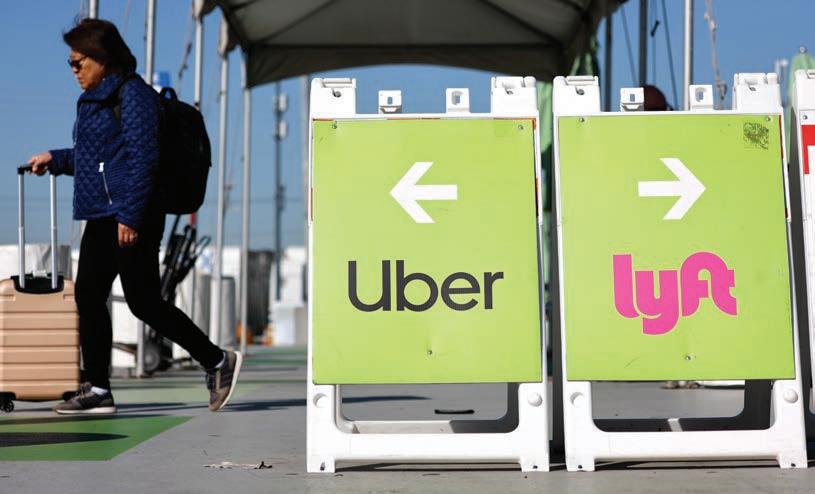
Ultimately, this example highlights the effectiveness of Uber as a company in identifying the need for a more efficient and effective transport service for consumers.
1Identify the main problem that led to the creation of Uber. How did the founders come up with the idea?
2Describe how Uber’s ride-share service is different from traditional taxi services. What makes Uber part of the gig economy?
3Explain why some taxi companies were unhappy with Uber’s arrival in Perth. What impact did Uber have on their business?
4Discuss the benefits and challenges for drivers working for Uber compared with traditional taxi drivers. What are some advantages and disadvantages?
5Evaluate the overall effectiveness of Uber in providing a new transport service. Do you think Uber was successful in meeting the needs of customers? Why or why not?
Key concepts: making choices, scarcity, allocation and markets, specialisation and trade
HASS skills: questioning and researching, analysing, evaluating, communicating and reflecting
Competition between ride-share and taxis
As discussed in Case study 4.3, there is ongoing friction between conventional taxi services and technology-driven ride-share services such as Uber.
In 2019, Australian research company Roy Morgan conducted research into consumer habits and preferences for transport services to explore the impact of ride-share services such as Uber in the Australian market. Roy Morgan’s report found that across Australia, Uber overtook taxis as the preferred private transport service for Australians in 2019.
Jun-16Aug-16Oct-16Dec-16Feb-17Apr-17Jun-17Aug-17Oct-17Dec-17Feb-18Apr-18Jun-18Aug-18Oct-18Dec-18Feb-19Apr-19Jun-19
However, it is important to note that this use is not consistent across all age groups. Roy Morgan also found that Uber was a more popular option in some age groups, whereas taxi still dominated as a preferred option for Australians over 50 years of age.
Analysis questions
1 Use the data in Figure 4.4.3 to calculate the overall trend in the increased usage of Uber from 2016 to 2019 in Australia.
2 Use the data in Figure 4.4.4 to rank the age groups based on their use of Uber for private transport services.
3 Explain why you think there is a difference in the preference of different age groups towards Uber and taxis. Why do you think older Australians are more likely to stick with taxis?
4 Predict what you think has happened to the popularity of Uber since 2019.
5 Since Uber’s introduction, a number of competing ride-share services have been introduced in Australia, such as Bolt and Didi. Explain the impact of this increased competition on Uber’s business success.
Key concepts: interdependence, allocation and markets, specialisation and trade
Go online to access the interactive section review and more!
HASS skills: questioning and researching, analysing, evaluating, communicating and reflecting
4.4 Review questions
Recall
1 Define the term ‘ride-share’.
2 Define the term ‘market dominance’.
Interpret
3 The gig economy has become an increasingly common feature of our market today. Identify and describe some other examples of companies that use this model of service in our world today.
Argue
4 Discuss the positive and negative impacts of gig economy based services, such as Uber, on communities. Consider the impact these services have on existing providers and services as well as the potential benefit to consumers.
HASS skills: questioning and researching, analysing, evaluating, communicating and reflecting Online quiz Teachers can assign tasks and track results
Key concepts: making choices, interdependence, allocation and markets, specialisation and trade
Figure 4.4.5 Food delivery might be the most common example of gig economy jobs you might encounter, but there are a number of others!

• What does it mean to be a successful entrepreneur?
• What are the attributes and characteristics of a successful entrepreneur?
To be a successful entrepreneur, one must have a number of characteristics that would enable them to succeed in what is a fast-paced and dynamic world. Through studying some examples of entrepreneurs in Australia and internationally, we will look at how entrepreneurs demonstrate the following skills and characteristics:
•Entrepreneurs are often strategic thinkers, which means that they are able to pursue long-term and shortterm goals through weighing up the costs and bene ts of choices.
•Entrepreneurs should be effective communicators, which means being
able to articulate their vision to their teams and potential customers.
• Entrepreneurs are often highly effective leaders, which means they are able to bring people together to collaborate in pursuit of a common goal or objective.
•Entrepreneurs should have effective problem-solving skills, which means they can think of creative solutions to pressing problems.
When an entrepreneur establishes a business from scratch, it is considered to be a start-up enterprise. These are businesses that are designed to start on a small scale before being expanded after testing the success of the business model and product.

strategic thinker a person who has the ability to pursue long-term and shortterm goals through weighing up costs and benefits communicator a person who has the ability to express their ideas effectively with a team or with consumers leader a person who has the skill to motivate and energise a team to achieve collective goals problem-solving skills the ability to proactively identify and respond to challenges start-up a business that has been created by an entrepreneur from scratch
gap in the market when consumer needs for a particular good or service are not being met by the existing products on offer business plan a document outlining the goals and strategies of a business
The essence of an entrepreneur is to be able to identify a meaningful business opportunity and to act on it. This requires a high degree of strategic planning and thinking (i.e. the ability to weigh up costs and bene ts and take action to achieve short-term and long-term goals).
A successful entrepreneur is one who is able to identify a gap in the market (or the absence of a service that would be popular among consumers) and effectively ll that gap. An entrepreneur may be able to articulate this strategic thinking through a business plan, which is a detailed plan describing how a business intends to achieve its goals.

failure has been down to the people I’ve surrounded myself with. Some people are only half full, they live in fear. But as an entrepreneur you need to nd the people that say, “Give it a go”. Find people who support the idea, have started their own business intelligently and are ahead of the curve.’
non-verbal communication our body language and the way that indicates our feelings and expression concise short and succinct empathetic able to understand and relate to how others feel
Janine Allis, the founder of Boost Juice, is one of the most well known Australian entrepreneurs and businesspeople. She was an effective strategic planner and thinker because she identi ed a gap in the Australian market and took the initiative to respond to it. Boost Juice was established in 2000 as a response to the lack of healthy and fast juice options in Australia and has since grown to have over 580 stores across multiple countries.
In an interview with SmartCompany in 2013, she notes that, ‘For me, success or
Entrepreneurs also need to possess excellent communication skills and be able to express their ideas and thinking to their team and consumers. This could include written communication, verbal communication or even non-verbal communication (such as body language).
Effective communication is concise, clear and easy to understand by its intended audience. Skilled entrepreneurs are able to adapt their communication style to suit their audience (i.e. the way in which someone speaks with an employee could be different from the way they interact with customers or a board).
Entrepreneurs are rarely successful if they endeavour to pursue their goals individually. Instead, entrepreneurs must often lead and work with teams to achieve their collective goals. Therefore, to be an effective entrepreneur one must be an effective team leader.
Leadership can mean many things. An outdated model of leadership is someone who is ‘strong’ and can make effective decisions. In today’s world, leaders need to be far more complex than that. Effective leadership involves being highly collaborative with teams, empathetic of consumers and employees, and ethical in decisionmaking. Effective leadership doesn’t lead by having followers; effective leadership empowers all members of the team to be leaders of themselves.

Sir Richard Branson is an outstanding example of an individual who demonstrates effective leadership and initiative, and has been showing these characteristics for decades. He has been described as a highly bold and innovative leader who embraces risks, successes and failures in business. Doing so enables him to learn from his mistakes and identify new opportunities for growth and development. Branson highlighted the importance of ‘making mistakes and experiencing setbacks’ as being ‘part of the DNA of every successful entrepreneur’. He famously founded the airline Virgin Atlantic in 1984, and took it further in the 21st century with the founding of Virgin Galactic, which is seeking to facilitate passenger travel to space.
Businesses can be dynamic and fastpaced environments, and often there is a need to respond to problems that can arise rapidly and unexpectedly. Being able
to problem-solve is a key characteristic of an effective entrepreneur because it enables them to react constructively in stressful circumstances.
Being proactive about potential challenges is also a key skill of entrepreneurship, and can be referred to as taking initiative. Having good initiative enables entrepreneurs to predict potential challenges or opportunities and take advantage of them. This may involve some degree of risk-taking in order to achieve meaningful rewards.
A well-known Australian entrepreneur who demonstrates these characteristics is Melanie Perkins, co-founder and CEO of software company Canva, which provides an online graphic design platform. Canva was launched in 2013 in recognition of the challenges with designing visually engaging and accessible products. The founders showed initiative by identifying this gap in the market and working to ll it. Canva was worth nearly $50 billion in 2024 due to its growing popularity.
initiative the ability to be proactive about situations and take action before a problem arises risk-taking actions that involve some degree of potential personal or financial sacrifice in return for a reward
Analysing entrepreneurs
After learning about some different types of entrepreneurs and their characteristics, let’s answer some key questions.
1Identify four defining characteristics of an entrepreneur.
2Describe what makes an entrepreneur different from a businessperson who is working for an existing company.
3 Select one of the case studies of entrepreneurs that we have studied and analyse their journey to success. Examine the challenges they experienced in setting up their business and how they overcame these challenges.
Key concepts: interdependence, specialisation and trade, economic performance and living standards
A fraudulent entrepreneur is someone who engages in fraudulent activities under the guise of establishing a business or enterprise. Because entrepreneurship is about being at the forefront of new technologies and practice, it can sometimes be dif cult to determine whether a business idea is genuine or simply too good to be true.
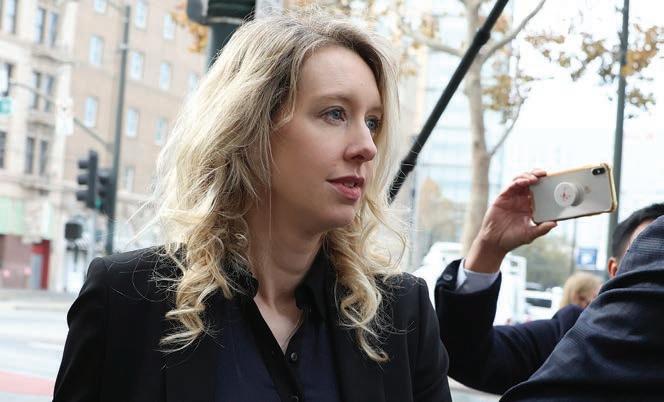
HASS skills: questioning and researching, analysing, evaluating, communicating and reflecting
A well-known example of this is the case of Elizabeth Holmes, who founded the supposedly revolutionary medical technology company called Theranos. Over a period of 10 years, Elizabeth Holmes had founded her company Theranos, raised over US$700 million in funding from high-pro le investors, and established partnerships with huge pharmaceutical corporations in the United States, such as Walgreens. Her company claimed that it had developed technology that would enable comprehensive and rapid blood tests to be conducted from a small sample of blood, which would have been revolutionary if true.
In 2015, Holmes’s story started unravelling and she was exposed by a journalist in the Wall Street Journal, before being charged with criminal fraud. She was found guilty and sentenced in 2022 for a prison term of over 11 years. Her story highlights the risk of start-up culture, which seeks to glorify entrepreneurs and innovators.
End of section 4.5 review
Recall
1 Define the term ‘problem-solving’.
2 Describe three ways in which individuals can communicate with each other.
3 Outline what Sir Richard Branson’s views on failure are.
Interpret
4 Failure is considered to be a weakness; however, some entrepreneurs believe that it helps make us stronger. Discuss the importance of experiencing failure to build resilience and achieve success.
5 There are a number of characteristics that make up an effective entrepreneur. Consider the different characteristics, and create brainstorm of how you have demonstrated these characteristics in your own life. Use examples from school, home, sporting clubs/activities and friends to illustrate how you have demonstrated the characteristics of an entrepreneur.
Argue
6 Discuss which of the characteristics of an entrepreneur you think are most important to be an effective businessperson and provide reasons to support your answer.
Key concepts: scarcity, making choices, interdependence, specialisation and trade, economic performance and living standards
Being innovative and adaptive is essential for any business to thrive and survive in our highly competitive and dynamic economic landscape. Innovation ensures that businesses adopt new practices and processes to best meet the needs of their consumers. Retaining consumers and generating revenue are essential to the sustainability of any business.
The culture of innovation and enterprise is important in supporting entrepreneurs to establish their own ventures and businesses in order to fill important gaps in the market.
HASS skills: questioning and researching, analysing, evaluating, communicating and reflecting
Doing so enables consumers to have access to new and exciting products or an improved customer experience.
Over the course of this chapter, you have learnt about the innovative and enterprising approaches that have been taken by a variety of businesses in Australia and around the world. Through the study of those examples, you have developed an understanding of the key skills and characteristics that defi ne what it means to be innovative and enterprising.
Re ection
That just about wraps up this topic. How do you feel you went working through the chapter? Before you attempt the following activities, visit the Interactive Textbook to rate your confidence with this topic via a downloadable checklist.
As discussed, there are some examples of entrepreneurs who have exploited consumers and investors for their own benefit. Conduct some research on other examples of such fraudulent entrepreneurs and answer the following questions.
1 Outline the personal details of the entrepreneur and describe the idea behind their business.
2 Explain the technology or information that they falsely claimed to have developed.
3 Assess the extent of their fraud. How many people did they defraud? How much money did they obtain fraudulently?
4 Outline the consequences of their actions. Have they been held accountable?
In this activity, you will be taking on the role of a consultant who has been approached by someone who wants to start up a business and is seeking your advice on what type of business to set up. Consider the brief presented to you by your client, and respond with your advice on what type of business model to choose. Your advice should include the features of the chosen model, the benefits of the model and the potential drawbacks.
Client brief – Your client has indicated that they are seeking to set up a small-scale business, and hope to work very closely with a friend of theirs in setting up their business. Your client is thinking of setting up a bakery, but is not sure if they should set one up as part of a franchise or go it alone as a sole trader. The impact of their friend should also be considered, as they may want to partner with them in setting up a business. Ultimately, your client values:
• the ability to have full creative control in terms of what is made and the products sold
• the ability to take risks with the business and to be rewarded for taking the risks
• the ability to make decisions independently and without having to negotiate with other stakeholders.
Assess what type of business model you would suggest they use, and explain why. Discuss what drawbacks there are for this model in terms of the client’s wishes and analyse how you could overcome these limitations.
Imagine yourself as an entrepreneur. What type of business would you be running? How would you operate it? Write a series of short and long answers to the following questions.
1 Identify your business name and describe what your business does.
2 Outline whether you own the business alone or with others. Do you have employees? If so, how many?
3 Analyse entrepreneurial skills and attributes that you bring to your business. Discuss whether you use innovation, initiative, creativity and communication.
4 Explain how your business makes money. Outline the main source of income.
5 Explain how your business makes a difference in the community.
6 Discuss what would make your business better or more successful than other businesses.

Key concepts: scarcity, making choices, interdependence, specialisation and trade, economic performance and living standards
HASS skills: questioning and researching, analysing, evaluating, communicating and reflecting
Economics and Business has many connections with other subjects in the Humanities. Have you considered how what you have learnt about scarcity, entrepreneurship and innovation relates to the other topics you will cover this year?

How does the justice system overlap with the world of work? What is the process if a business breaks the law?
Consider the following topics:
• businesses that sell faulty or dangerous products
• employees who act dishonestly or steal from their employer
• employees who injure themselves at work
• the impact of stress and mental health on work
• discrimination and harassment in the workplace.
Where do political parties get their money and what do they use it for? Should we be concerned about this? Find out:
• How much money do political parties receive from donations?
• Who is making these donations, and why?
• Where else do political parties get their money?
• What do the parties use this money for?
• What laws govern the money that political parties receive and spend?
There is a debate in Australia and around the world about whether governments should become more involved in the economy. Research the difference between market economies and command economies and list the positive and negative factors of each.
How do economists view the scarcity of natural resources such as water? Can markets and prices help to solve water scarcity? Consider:
• Why do some resources, such as water, cost money while others, such as air, are free?
• What has happened to the price of water over time?
• Would increasing the price of water make people use less of it?
• What might happen if water became so scarce that some people could not afford it?
Many economic factors influence the liveability of a place. Think about how each of these would push people away or pull them towards an area:
• the availability of jobs
• the price of housing
• the quality of infrastructure
• the quality and variety of shopping
• the laws around entrepreneurship and ease of starting a business.
















The world of work in the ancient world
How was work in the ancient world similar to that of today? How was it different? Consider the following topics:
• What were the main types of work done in the past?
• How many jobs might a person have during their lifetime?
• What determined the work people did?
• What was the typical working day like?
• What were some of the challenges of working in the past?
There are many examples of innovation and entrepreneurship from ancient history. Using your historical depth study, think about:
• What inventions were made during this time and how do they influence our lives today?
• Who benefited most from creativity and innovation?
• How were business owners and entrepreneurs treated during this time?








What do you think are the most important challenges facing our world today? Geography is a fascinating subject for anyone who is curious about how the world works. It can improve the lives of people and their environments. Geography involves the study of Earth’s physical environment and human activities , and how these two areas affect each other. Table A shows some of the topics that geographers study.
Table A Areas of study for geographers
Physical environment
•Landforms (such as beaches, volcanoes and mountains)
•Bodies of water (such as oceans, seas and lakes)
•Climate and weather
•Plants and animals
Figure A shows the devastation caused by a tsunami that hit Indonesia in 2018.
Geographers studied the area’s physical environment and discovered that an unusual natural process had occurred to cause the tsunami shown in Figure A. They found that the eruption of the Anak Krakatau volcano triggered an underwater landslide that then created the tsunami. Also, by studying the human activities in the area, geographers discovered why so many people were affected.
Human activities
•Land use (such as farms and cities)
•Culture, architecture, religion and language
•Population growth and decline
•The movement of people from one place to another
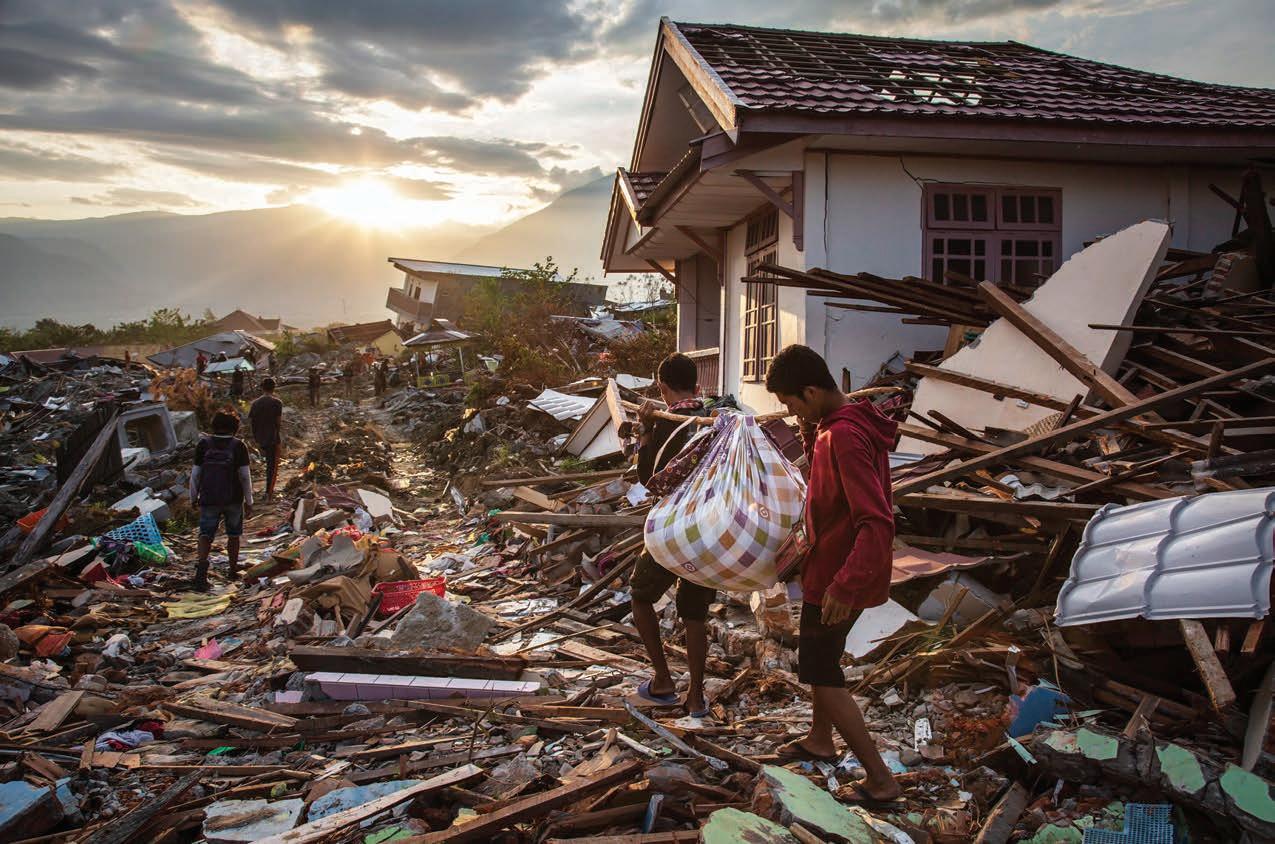
The tsunami in Indonesia struck popular tourist beaches during peak season when hundreds of tourists were there for the Christmas and New Year holiday. Tsunami warning systems had not worked for six years because they had been damaged and vandalised. Furthermore, the warning systems that were in place only activated when an earthquake was detected, not when there was an underwater landslide. Many locals considered an earthquake to be a sign for people to move to higher ground, but they did not have a suf cient education on how volcanic activity causes tsunamis and the risks involved.
By studying the relationship between humans and the environment, geographers are able to understand why people would risk living in dangerous areas. In the case of Java and Sumatra, the natural environment provides locals with healthy soil to grow crops and the
ocean provides them with seafood. The tropical climate and beaches also supply those who live there with a source of income from the tourist industry. The land near volcanoes is often cheaper and many cannot afford to move further away. Often, the local people do not want to move because the area is their home.
The study of geography nds solutions to important challenges. For example, geographers used sonar surveys to map the sea oor beneath the Anak Krakatau volcano in order to understand how the landslide caused the tsunami. They also educated people about the warning signs of a tsunami when it is triggered by a volcano.
There is no doubt that geographers can be game changers and life-savers, but to perform their important role, geographers need to rely on geographical concepts and skills.
climate the longterm trends in the weather conditions of a place, such as its average rainfall and temperature
hydrological relating to the study of water on Earth –for example, where it is and how it is used
fieldwork gathering information and data about a natural or human environment outside the classroom
Geographical concepts and skills help to guide the way you question and think about an issue. The seven concepts that are used in the following chapters on geography are: place, space, environment, interconnection, sustainability, scale and change.
Geography is a process of questioning, discovering and communicating what you have learnt. This process of inquiry involves the following geographical skills:
•being motivated by an issue or curious about a phenomenon
Table B Primary and secondary data in geography phenomenon an occurrence or observable fact
•asking questions that relate to geographical concepts
•researching a topic by collecting primary and secondary data (see Table B)
•analysing information to come up with conclusions and to gain an understanding of a topic
•evaluating what is being done in response to an issue or phenomenon by seeing if a response is successful
•communicating and re ecting in ways that help people, governments and the media understand an issue and suggesting or creating solutions based on the research and evidence.
To give you an example of geographical concepts and skills in action, a geographer looking at Figure B might ask the following questions:
•How has this volcano changed?
•What is the scale and distribution of this change?
Primary data is data that you collect specifically to help you answer an inquiry question. This data is collected during fieldwork
Examples:
•Photographs
•Collecting samples
•Interviewing people
•What interconnections between factors caused the change?
•What impacts have these changes had on the environmental, social and economic sustainability of the region?
You will learn more about geographical concepts and skills in this and the following chapter. In Chapter 3 you will study the topic of water. This chapter describes how water connects people and places, how hydrological hazards occur, what their impact is on people, and how water use is managed. Chapter 4 looks at place and liveability. You will learn what makes a place a good area to live, how a person’s town can impact upon their life, and how geographers can make places safe, healthy and inspiring environments for people to thrive in.
The work of geographers has been, and will always be, important. In the past, geographers have helped to determine the circumference of Earth, how and where to grow food, and how to reduce the damage caused by natural disasters.
Secondary data is data that was created by someone else for a different reason. However, the information can still help you answer your own question.
Examples:
•Published statistics
•Satellite imagery
•Online interactive maps

➜
B These satellite images were taken of the volcano on Anak Krakatau before erupting (left) and after erupting (right). The most obvious change that the eruption had on the region is that a large part of the southern flank of the volcano slid into the ocean, which has changed Anak Krakatau’s shape and size.
Today, and into the future, the discoveries geographers make will help us overcome modern challenges, such as climate change, the extinction of species and the sustainable use of resources such as water.
Geography is an empowering and forward-thinking subject. It requires an
open mind to consider many questions and perspectives. A geographer also has to be sharp enough to understand the information that is collected and to create a future that is better than the present. Who knows where your study of geography will take you? The possibilities are endless!
C Anak Krakatau erupting in 2018. The unusual interconnection between this eruption and the following tsunami launched geographers into a new area of research, in the hope that we can stop such tragedies from happening again. ➜
sustainable causing little or no damage to the environment and therefore able to continue for a long time
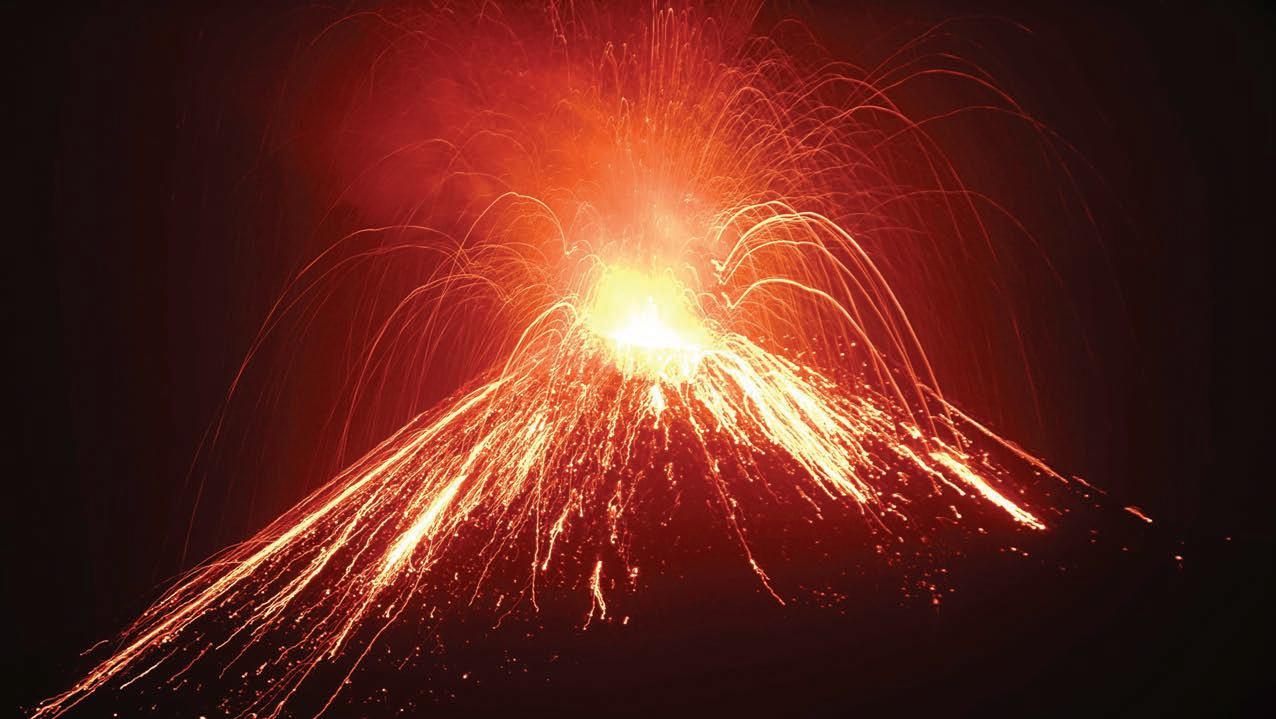
Water is the most precious resource we have. We use it every day in our homes, as well as to grow food, make energy and products, and move people and goods all over the world. Water is a nite, renewable resource. This means that there is the same amount of water on Earth today as there was when Earth was formed and, if managed well, it can be reused forever. In fact, the water you drink today could contain molecules that dinosaurs and cave people drank well before your time!
Every day there are more people using the water on Earth, but only 2.5 per cent is drinkable. So, how we treat this precious resource has never been so important.
As our use of water increases, we have come up with clever ways to access fresh water. In Perth, 10 per cent of the water ushed down the toilet and sink is recycled into drinking supplies. In Kuwait, almost 100 per cent of drinking water comes from desalination plants that turn saltwater into fresh water. However, there are also ways that we pollute or waste water.
Water is part of an interconnected system called ‘the water cycle’. This means that the pollutants we put into the
soil and sky can contaminate our water, and reduce the amount of clean water that we can use.
In this unit, you will investigate what water means to Australians and people around the world. Understanding the connections between water, people and places is an essential part of your study. In many places, water scarcity is a serious issue that can potentially lead to disastrous consequences. Each situation is unique and requires a range of management strategies to ensure that water use is sustainable.
After completing this unit, you should be able to answer these questions:
• What is the difference between a renewable and a non-renewable environmental resource?
• Where are Australia’s water resources located?
• How is Australia’s water distributed and why does it vary?
• What is water scarcity? How is this caused and why is it a problem?
• How is water scarcity managed or overcome?
In this unit, you will have many opportunities to practise geographical concepts.
The concept of place involves the physical location of an area, and the meaning that the location has for individuals, communities and cultures.
Space refers to the spatial distribution of places and their characteristics. We use maps and spatial technology to examine, monitor and compare spatial distributions so that we can assess and manage changes.
Scale refers to how big something is compared to something else. This can be represented on maps using a linear scale, or when considering whether an impact will affect a small area, an entire country or the whole world.
When geographers look at change, they investigate the type of changes that have occurred. They also look at when, where and why change has happened.
The environment in geography refers to the characteristics of an environment, how an environment supports life, and the connections between an environment and people.
Where is it located, what are its geographic characteristics and how is it significant to different people?
Is it economically, socially and environmentally
Interconnection involves the links between places and the ways in which people in uence or are in uenced by the characteristics of places.
Sustainability refers to whether a place or environment can maintain its current needs without affecting the ability to meet the needs of future generations.
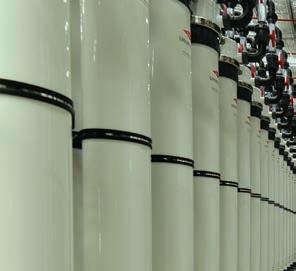


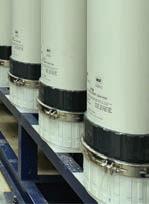
How are the features distributed and how has the distribution changed over time?
What type of change has occurred and what are the consequences?
What are the components of this environment and what processes have formed it?
people?
Does it occur at a local, national or global scale?


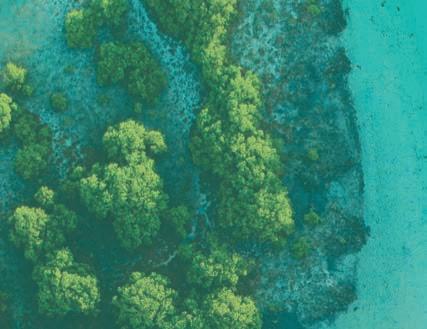








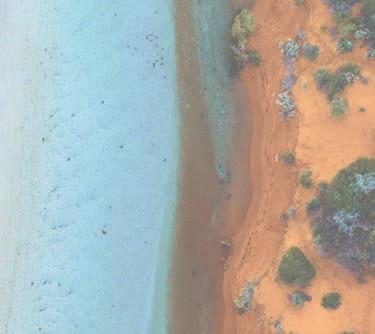
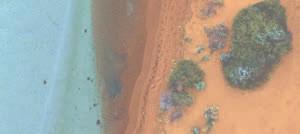

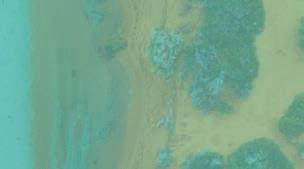
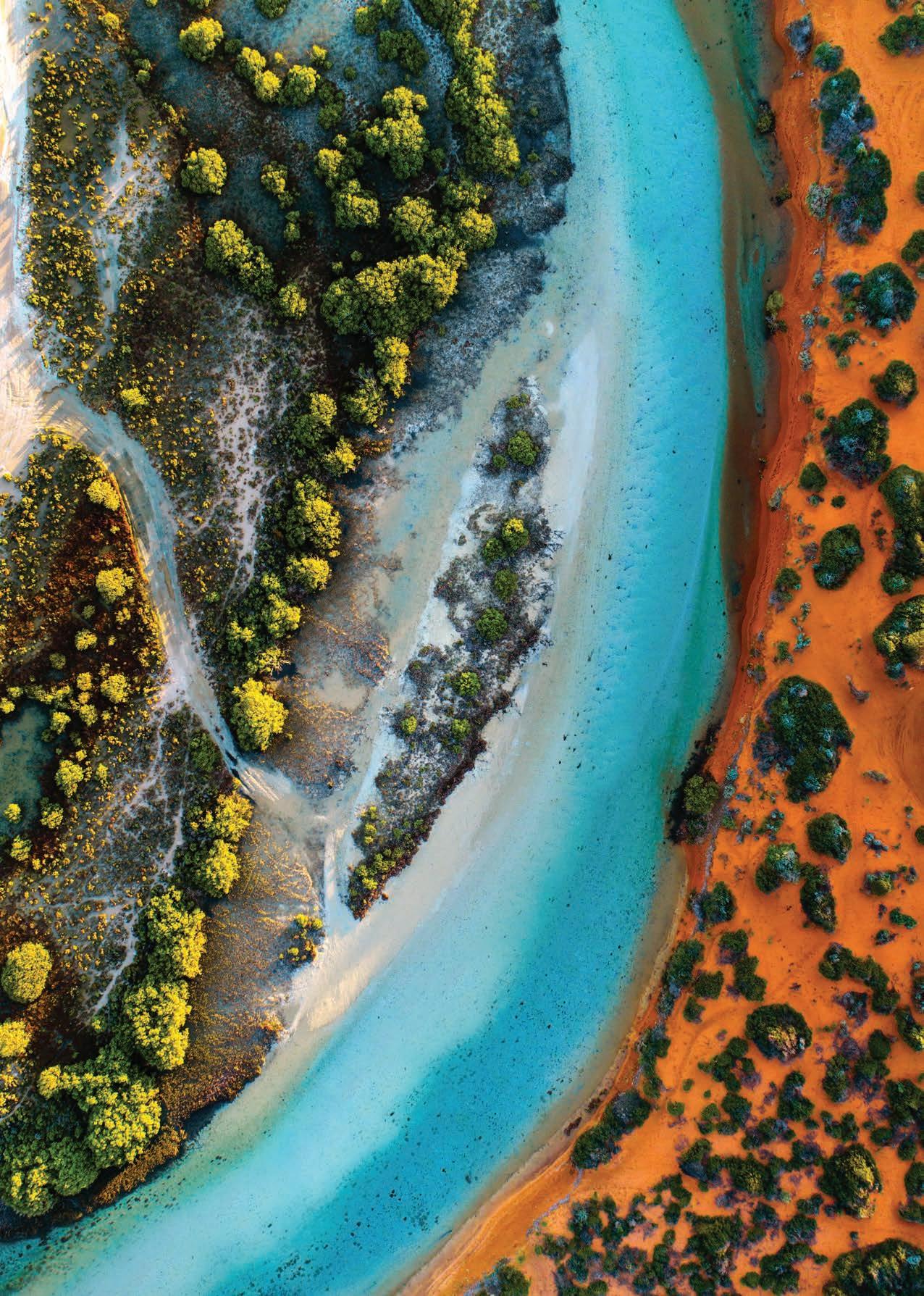

Water is one of our most important environmental resources. This chapter explores how environmental resources are classi ed, such as renewable and non-renewable. You will locate Australia’s different types of water resources and discover why the amount and quality varies. The chapter will introduce the problem of water scarcity in our world, including its causes, impacts and ways to manage water resources. You will be challenged to consider the value of water, and the way it connects people, places and environments in the landscape.
After completing this chapter, you should be able to answer these questions:
• What is the difference between a renewable and a non-renewable environmental resource?
• Where are Australia’s water resources located?
• How is Australia’s water distributed and why does it vary?
• What is water scarcity? How is this caused and why is it a problem?
• How is water scarcity managed or overcome?
After completing this chapter, you should be able to:
• explain processes that in uence the characteristics of places
• identify, analyse and explain spatial distributions and patterns, as well as identify and explain their implications
• identify, analyse and explain interconnections within places and between places, and identify and explain changes resulting from these interconnections
• analyse maps and other geographical data and information, using digital and spatial technologies as appropriate, to develop identi cations, descriptions, explanations and conclusions that use geographical terminology.
Visit the Interactive Textbook to access:
• interactive review quizzes and Scorcher competition
• videos, image galleries and other extra materials.
Figure E Shark Bay is a World Heritage Site in the Gascoyne region of Western Australia. In the Malgana language, the region’s traditional name is Gathaagudu, meaning ‘two waters’.
• What is an environmental resource?
• What is the difference between a renewable and a non-renewable resource?
environmental resources materials that are from the natural environment, such as water and wood
environment the air, water and land of a particular area, which contains people, animals and plants geographical processes a series of events or actions that change environments, spaces and places
Resources are used by people to satisfy our needs and wants. This could include constructing a building, generating electricity or earning money. Environmental resources are those that are found naturally in Earth’s environment. They include things like light, wind, heat, water, plants, animals, soil, rocks and minerals.
When we speak about the environment, we are referring to all the features that make up our surroundings and make it possible to live on Earth. The features of the environment can be divided into four spheres:
•atmosphere, which includes the air we breathe and the sunlight we feel
•hydrosphere, which is all of the water found on Earth, including the oceans, rivers and lakes
•lithosphere, which includes all of the rocks and soil
•biosphere, which is all of the living things on Earth, including plants, animals and people.
Different parts of these four spheres interact with one another. For example, rain that falls from the atmosphere might ow into a river, the hydrosphere. This river might cut through soft soil on a river bank, the lithosphere, and provide a water supply for local animals, the biosphere. The interactions between different parts of the environment are known as geographical processes
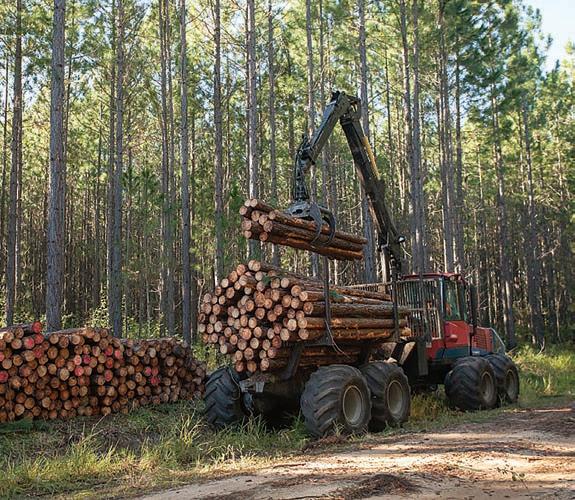
Features of the environment
Read about the features that make up an environment and then complete the following.
1 Create a diagram showing how the four spheres of the environment interact with one another.
2 Provide an example of an environmental resource for each of the four spheres that make up the environment.
Key concepts: environment, interconnection
A common way to classify environmental resources is based on whether they are renewable. Renewable resources are those that can naturally replenish themselves at a rate that is faster than people use them.
Some resources are renewable, but if they are used at a rate that is quicker than the rate they renew themselves, then they can eventually run out. For example, if people choose to harvest trees from a forest, they might grow back naturally or they could be replanted by people. However, depending on the species of the tree and the climate, it might take each tree 30 years to grow back to a mature height. This means that if trees are
HASS skills: evaluating, communicating and reflecting
harvested too quickly, the supply can run out faster than it grows back, even though they are a renewable resource.
In geography, we use the concept of sustainability to describe whether the use or modi cation of an environment can continue at the same rate into the future, without leading to negative impacts. In the example just given, sustainable forest management and timber harvesting would involve logging trees at a rate that would allow a forest to regenerate to a point where the forest could be logged again. Logging at an unsustainable rate would mean forests are not left to regenerate. Instead, the size of a forest would continue to get smaller and smaller until timber could no longer be harvested because no trees would be left.
renewable resources resources that can be produced as quickly as they are used
harvest to pick and collect crops, or to collect plants, animals or fish to eat species a group of plants or animals that are classified as having the same characteristics sustainability the wise use of resources so that they are available into the future regenerate to grow again
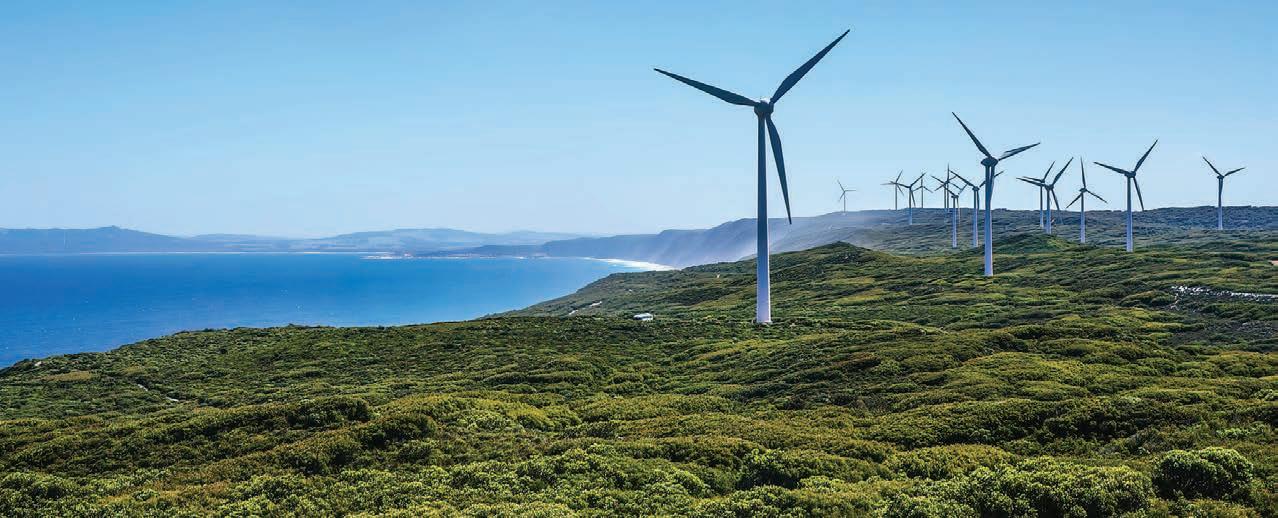
non-renewable resources resources existing in limited quantities that cannot be replaced after they have all been used fossil fuels fuels that were formed underground from plant and animal remains millions of years ago. Examples include gas, coal and oil.
ore a type of rock or soil that can be mined to obtain metal
Non-renewable resources are those that cannot be replaced once they are used. Fossil fuels are a common example. Fossil fuels are produced from buried deposits, which are formed from layers of decayed plants and animals (fossils). Over millions of years, the layers of organic remains have been exposed to intense heat and high pressures. These geographical processes have changed the organic remains into fossil fuels. Fossil fuels include:
•crude oil
•coal
•natural gas.
Crude oil, when extracted, can be re ned into oil, grease and petroleum. Technically, new fossil fuels are being created following the same processes that
formed them in the rst place. However, this does not occur on a time-scale that makes them renewable for use. For example, it will take 300 million years for new coal to form from the current dead plant material!
Nuclear energy is another example of a non-renewable resource. The process of creating nuclear energy requires the use of uranium ore. An ore is material from which a metal or valuable mineral can be extracted. Uranium ore is mined from rock deposits in different parts of the world, including Australia. Nuclear energy is created by splitting uranium atoms in a process called ‘ ssion’. The splitting of the atoms generates heat to produce steam, which is then used to turn turbine generators that create electricity.
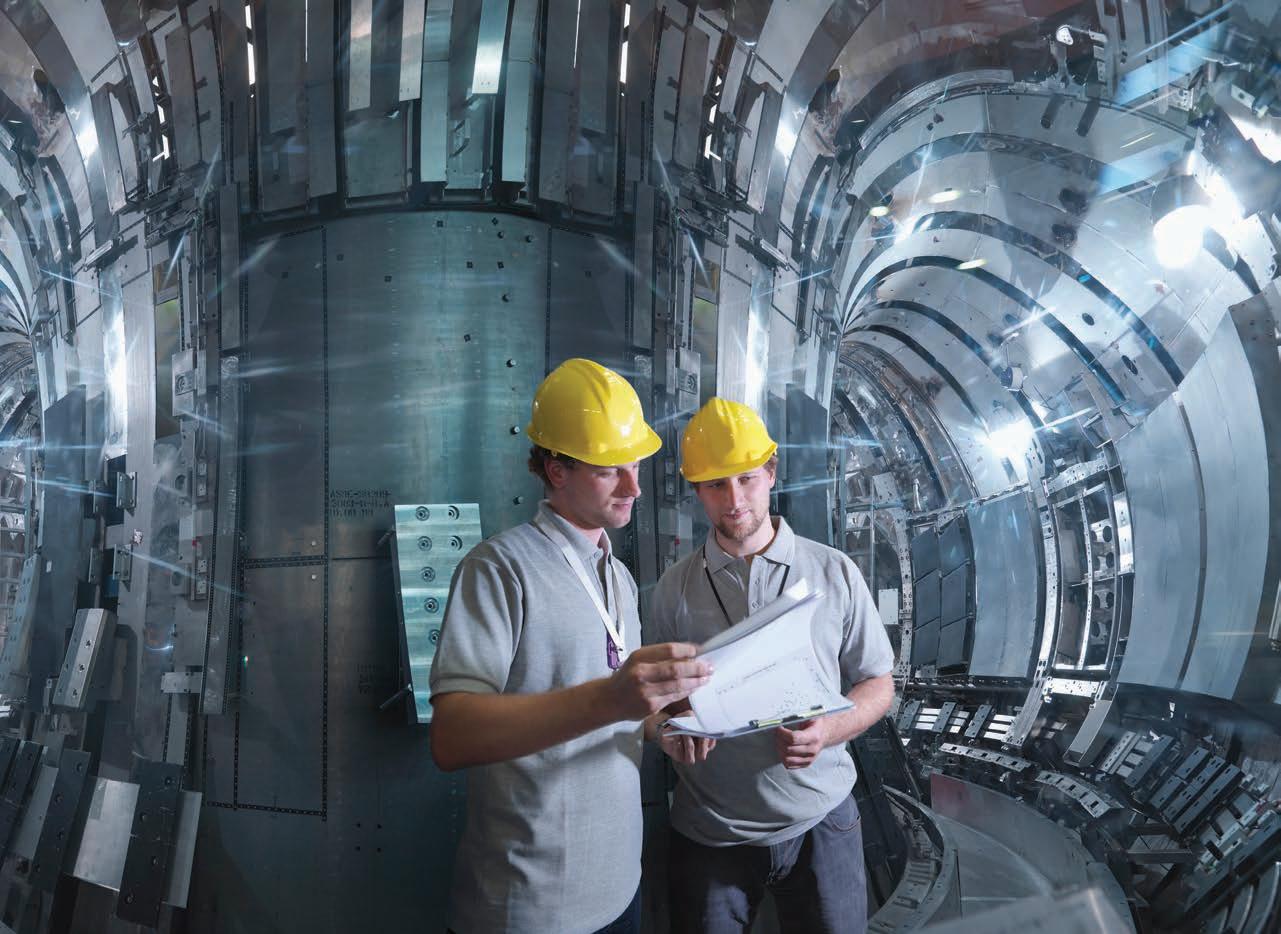
An important role of a geographer is to classify the world around them. This helps them to understand features of Earth and how the features interact with each other. Geographers classify species of plants and animals, as well as different types of rocks, rivers and mountains.
Based on the information here about environmental resources, classify the following resources as either renewable or non-renewable. Also classify each resource as either finite or infinite. Write a sentence justifying why you have classified each resource the way that you have.
• Native animals hunted as a food source
• Saltwater from the ocean that is converted into fresh water
• A forest that is used to harvest individual trees and then left to grow back
• A forest where all the trees are harvested so that the land can be turned into a farm
You may wish to use the table template shown here to help set out your classifications.
Renewable or non-renewable
Key concepts: place, space, environment, interconnection, sustainability
Some renewable resources will never run out. These are known as infinite resources. Scientists predict that the sun will last for another 6.5 billion years. Although this technically is not in nite, this time span is much longer than the amount of time that Earth has existed, and is therefore considered to be renewable. Resources that have a limited supply, such as nonrenewable resources, will eventually run out. Every time they are used, there is less
HASS skills: analysing, evaluating of the resource remaining. These types of resources are known as finite resources

it is formed over millions
regenerate on a human time-scale.
infinite resources resources that are without limits
finite resources resources that have a limit or end

fresh water water with less than 0.5 per cent of dissolved salts
glaciers large masses of ice that move slowly. They are frozen rivers of ice that form when snow accumulates and is compacted.
ice caps thick layers of ice that permanently cover an area of land
Water is one of the most abundant resources on Earth. In fact, it is estimated that Earth contains 1260 quintillion litres. That’s 1260000000000000000000 litres! Approximately 97.5 per cent of this water is saltwater. It is found in oceans, which cover 71 per cent of Earth’s surface. This leaves 2.5 per cent as fresh water
Fresh water supports all life on land, including people. Though the usage varies depending on location, the average individual in Australia uses 340 litres of water per day. This does not include all the water used to grow crops. Individuals need water for drinking, cooking and washing.
Water vapour in the atmosphere
5.2.6 Although Earth contains a large amount of water, only a very small percentage is available as fresh water.
Although fresh water is a small percentage of the total water on Earth, if this 2.5 per cent were readily available it would be a plentiful supply. However, 79 per cent of all fresh water is frozen in glaciers and ice caps, such as those covering Greenland and Antarctica
(see Figure 5.2.6). A further 20 per cent is located underground in the groundwater supply. In fact, just over 0.5 per cent of all the fresh water on Earth is available in lakes and rivers.
While geographers analyse maps to draw conclusions, cartographers create them. All maps have six key features, commonly referred to as BOLTSS: a border, orientation (north point), legend, title, scale and source.
Use a blank world map template and create your own map to illustrate the world’s most prominent water features. Be sure to include:
glaciers.
Key concepts: place, space, environment, scale
HASS skills: communicating and reflecting
All of the water on Earth is constantly changing form through the processes involved in the natural water cycle (see Figure 5.2.7). Owing to the warmth of the sun, the surface water in rivers and lakes turns water into water vapour. This process is known as evaporation Similarly, water in plants and trees undergoes transpiration . As water cools in the atmosphere, clouds form and the water condenses. From this condensation, water droplets and ice
crystals form. When clouds grow large enough, the water falls as precipitation , such as rain and snowfall. When this falls on the land, some of the water soaks into the soil and is added to the groundwater through infi ltration . This water eventually ows underground into rivers, lakes or to the coast. Water that does not in ltrate into the soil ows over the land and into rivers. This is known as run-off . This water eventually makes its way into river systems and ows back out into the ocean where the cycle repeats itself.






















































Concept maps are a type of diagram used to show processes or how concepts are interconnected. They include terms inside boxes, with arrows linking the boxes to demonstrate the steps of a process or connections between topics.
A concept map can be used to summarise the processes within the water cycle and the different forms of water found in the cycle. Copy and complete the concept map here to summarise the water cycle.
concepts: interconnection



















evaporation the process of a liquid changing to a gas, especially by heating transpiration the process of losing water through the surface or skin of a body or a plant condensation the process by which water vapour in the atmosphere cools and changes into liquid water precipitation water that falls from the clouds towards the ground, especially as rain or snow infiltration the process by which water is absorbed into the ground run-off water that is not absorbed by the land and flows from high areas to low areas



geographical concepts and skills 5.3





and
Since water is constantly undergoing different processes in the water cycle, it can be described as a renewable resource. Many communities around the world rely upon regular rainfall to renew their water supply. Although rainfall and river ows are usually regular and therefore renewable, these processes can decrease or stop completely during extended dry periods. In these cases, water is temporarily non-renewable.
Despite constantly changing between a solid, liquid and gas, the total amount of water on Earth never changes. This means that the overall supply of water is nite. However, in areas that receive high and regular amounts of rainfall, the resource can certainly seem in nite. In other places, supplies are constantly monitored and the use might need to be restricted if the nite supplies run low.
Water is considered an environmental resource because it has a wide variety of uses. These include:
•domestic – used in the home for ushing toilets, showers, cooking and cleaning
•agriculture – used to grow crops and raise animals
•industry – used to manufacture and transport products
•environment – used to maintain the health of natural and human environments
•recreation – used in community swimming pools, and to maintain parks, ovals and golf courses.
Colour terms are often used to help define different types of water resources. Blue water is water found in rivers, lakes and dams. Green water is water that is stored in the soil and used by plants during their growth. Grey water is wastewater that comes from household uses, such as baths, sinks, washing machines and dishwashers. It is not safe to drink but can be reused to water the garden. Black water is sewage and wastewater that contains everything that we flush down the toilet.
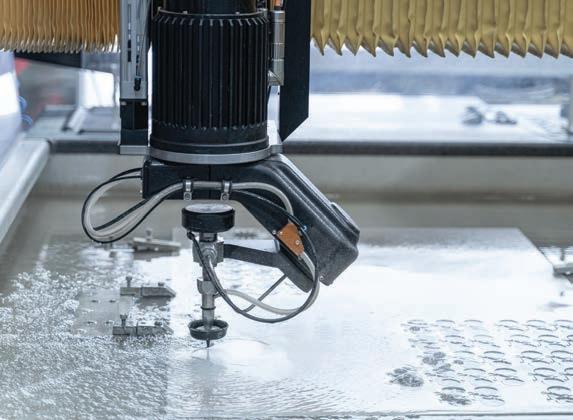
Figure 5.2.8 Water is an essential resource to the operation of factories, including machinery such as water jet cutters.
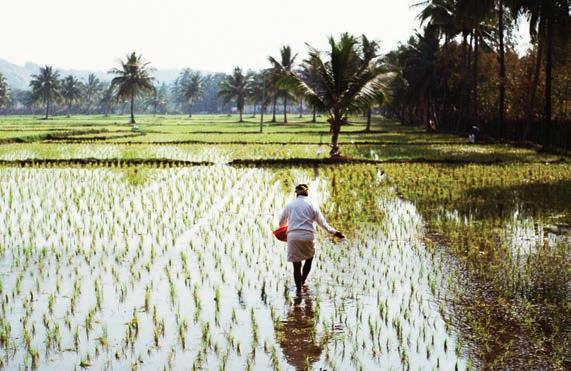
Figure 5.2.9 Rice, one of the most produced staples in the world, is grown in flooded fields.
In geography, interconnection refers to the links and relationships between objects and places. People often play an important role in these links as human activities often impact on and change natural processes. As water transforms through the water cycle, it plays a significant role in connecting places and changing an area’s characteristics.
The flow of rivers downstream provides important links between places. These connections vary in scale from small urban creeks to rivers that flow across several countries. The Mekong River is one of the largest rivers in the world and flows 4350 km through China, Myanmar, Thailand, Laos, Cambodia and Vietnam.
In larger river systems, rivers have been, and still are, a major source of transport and a vehicle for trade. In 1853, paddle steamers became a form of inland transport and trade along the Murray River in southeastern Australia. While the common cargo was once bales of wool, today these paddle steamers carry tourists up and down the river. The West Australianbuilt paddle steamer Decoy (see in Figure 5.1.14 on the next page) is an iconic entertainment venue that has been steaming along the Swan River for over 30 years. The Decoy offers a range of experiences, including live music cruises and history tours. The Mississippi River is the fourth-longest river in the world and is a significant part of trade in the United States. The barges (see in Figure 5.1.16 on the next page) there transport items like petroleum, iron, steel, grain, paper and wood to various ports.
Water can take many forms as it flows through different environments. In Bhutan, the water source for many villages comes from glaciers located tens or even hundreds of kilometres away. Glaciers are frozen rivers of ice that form when snow accumulates and is compacted. This usually occurs in mountainous regions. When ice from Bhutan’s glaciers melts, water flows into rivers and downstream to villages. People then use this water for agriculture, which is the main industry in Bhutan.
interconnection the relationship between places and people, and the ways in which they influence one another
The amount of water available for people living in downstream regions of a river system depends on the amount extracted by the upstream users. If users upstream withdraw too much water, the quantity of downstream supplies is reduced. Furthermore, if pollution is added to a river upstream, it can damage the quality of downstream supplies. Pollution in this context includes industrial waste from factories or mining operations, and fertilisers and pesticides from farm use that get washed into waterways when it rains.


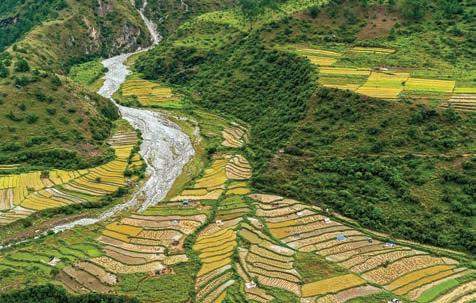
exploitation the use of something in order to get an advantage from it
tributaries rivers or streams that flow into a larger river or a lake
nutrients any substance that plants or animals need in order to live and grow
In the case of the Mekong River, the exploitation of water resources in upstream countries, such as China and Laos, is causing havoc for Cambodia. Cambodia is heavily reliant on the Mekong River, as it provides 85 per cent of the agricultural water supply. The fishing industry, which makes up 12 per cent of Cambodia’s economy, also relies on a healthy river flow to support 500 local species of fish.
However, since the 1990s, the river and its tributaries have been dammed throughout South-East Asia, largely for the generation of hydropower. These dams have blocked the movement of fish, reduced the amount of nutrients in the water, and have made water levels downstream irregular and unnatural. Furthermore, in cases where dams have collapsed, downstream communities have been flooded. Villagers in Cambodia who rely on the Mekong River are losing their livelihoods and are being forced to change their lifestyles due to the actions of people hundreds of kilometres away.




1List two examples of how water is or has been used for trade and transport.
2Describe the way in which water connects villages to the glaciers in Bhutan.
3 State some ways in which water use in the upstream countries of the Mekong River has impacted villages in Cambodia.
4Explain what interconnection means and provide at least two examples in your explanation.
Key concepts: place, environment, sustainability, change
HASS skills: questioning and researching, analysing, evaluating, communicating and reflecting
5.2 Review questions
Recall
1 Define the following terms:
• fresh water
• evaporation • transpiration • condensation • glaciers • infiltration
2 Identify how much of the total water on Earth is fresh water.
• run-off.
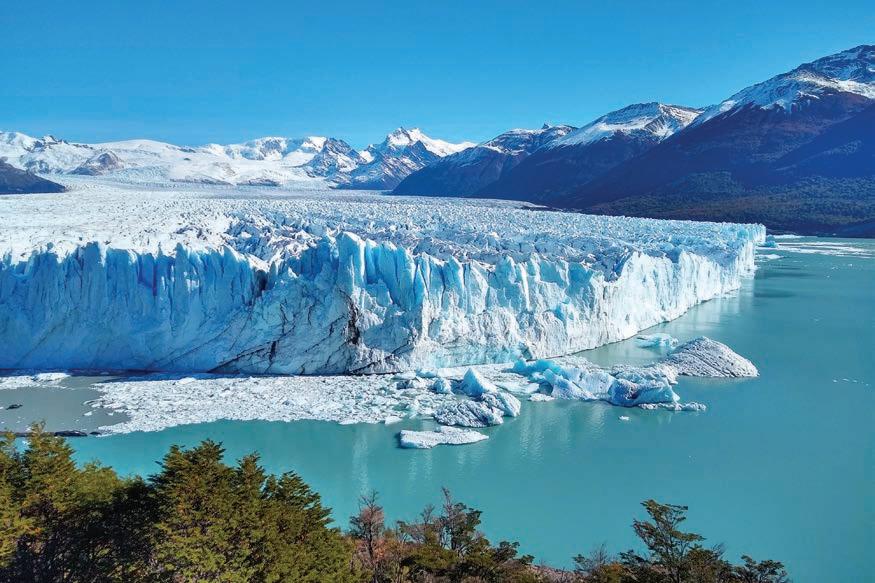
3 Describe, or create a diagram of, the six processes that water undergoes within the water cycle.
Interpret
4 Explain why water can be described as both a renewable and a finite resource.
5 Outline how water is used. Argue
6 Discuss whether you think Australia should continue to rely on non-renewable resources to meet its growing needs, or should there be a complete shift towards renewable and sustainable alternatives, regardless of cost and feasibility?
Key concepts: place, environment, sustainability, change
HASS skills: questioning and researching, analysing, evaluating, communicating and reflecting
• Where are Australia’s water resources located?
• How is Australia’s water distributed and why does it vary?
available water resources water that can be accessed easily and cheaply potential water resources water that is not easily obtained perennial something that happens repeatedly or all the time ephemeral something that happens only for a short time arid very dry, often without rainfall to support plants
When describing the location of water resources, we can divide water into two categories: available and potential water. Available water resources are those that can be accessed relatively easily and cheaply. This includes the water found in rivers, lakes and groundwater. Potential water resources are those that are not as easy to obtain. They include saltwater, ice, water vapour and wastewater. Accessing these resources requires complex and expensive extracting and ltering technologies. As populations grow, many places are forced to use these types of resources to ensure that their water supply is renewable.
As the name suggests, surface water is water located on the surface of Earth. This includes rivers, lakes and wetlands,
such as swamps. Most major cities developed near a reliable supply of surface water that was easy and cheap to access and use.
In some cases, surface water resources are perennial , which means that they are permanent. Perennial resources are lakes that always contain water and rivers that flow all year round, such as the Blackwood River in south-west Western Australia. In drier areas, surface water resources are often ephemeral , which means they are semi-permanent. Ephemeral resources dry up during seasons with low rainfall. This is a common occurrence in many arid places in Australia, such as the Gascoyne River in west-central Western Australia.
To ensure that there is enough surface water to meet agricultural, domestic and industrial needs, reservoirs and dams are constructed to store large quantities of water.
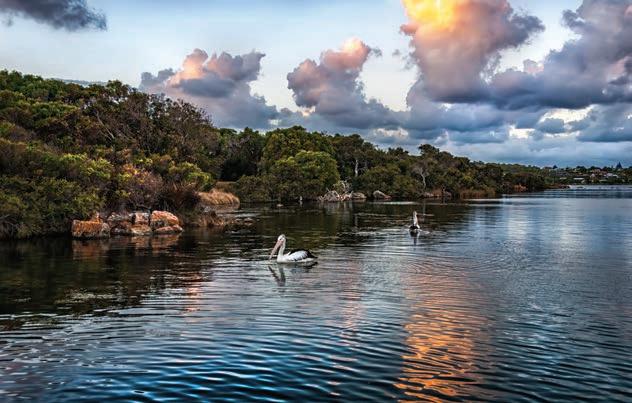

Reservoirs and dams
Reservoirs are large natural or artificial lakes that are used to store a large quantity of water. In order to store water, the ow of rivers is stopped using a dam. Dams are barriers that prevent the ow of water downstream through the use of a wall. Dams have gates that can be opened to allow excess water to be released. By controlling the ow of rivers, dams can also be used to stop oods and to generate hydro electricity
Western Australia’s largest reservoir is Lake Argyle, which has a capacity of 10760 gigalitres. This is tiny compared to the Kariba Dam between Zambia and Zimbabwe, which can store 180000 gigalitres!
Despite their usefulness, dams lead to a number of environmental
consequences. They alter the natural ow of rivers and streams, and that impacts on river ecosystems. Fish that need to migrate upstream and downstream to feed and breed are unable to cross barriers. This has led to the extinction of many species. Altering a river’s natural ow can also affect water temperature and water quality. This impacts on food networks, and the growth and reproduction of a variety of plants and animals.
While dams can prevent downstream cities and towns from ooding, they also stop natural ood events, which are an essential process that helps to maintain the health of oodplains, forests and wetlands. Dams also stop small particles known as sediment from owing downstream, which is needed to maintain downstream habitats.
artificial made by people, often as a copy of something natural
hydro electricity electricity produced by the force of fastmoving water such as rivers or waterfalls
gigalitre a metric unit of capacity equal to one billion litres

An annotated photograph is one that has been labelled with names and descriptions. This can be done by hand or digitally. Geographers use annotated photos to demonstrate their observations from photos taken out in the field. They use annotated photographs to demonstrate specific features, processes or impacts. Create your own annotated photograph by following these steps:
1 Find a photograph of a Western Australian dam using Google Images.
2 Print your photograph or copy it into a graphics editing program.
3 Add lines leading to specific features of the photograph that you wish to describe. Do not use arrows to label features because arrows indicate movement.
4 Add key words and short descriptions to demonstrate the features and purposes of a dam, as well as some of their environmental consequences.
5 Add a title and source to your annotated photograph.
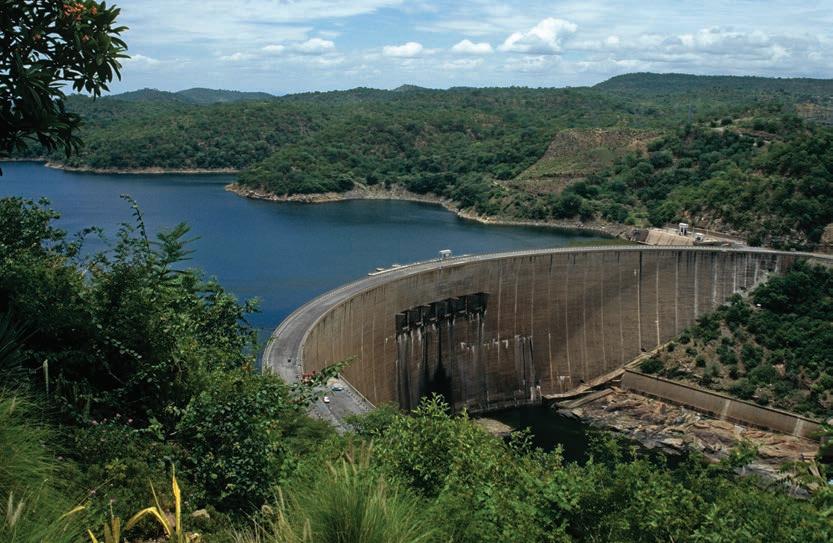
Key concepts: place, space
porous something that has many small holes so liquid or air can pass through, especially slowly megalitre a metric unit of capacity equal to one million litres
Groundwater is water that is located below Earth’s surface. It comes from rainfall that has in ltrated into the ground, and has been absorbed by soil and porous rocks. The boundary between groundwater supplies and the drier soil above it is called the water table.
HASS skills: analysing
Australia has a large system of groundwater basins, which stretch under about 60 per cent of the continent. The Great Artesian Basin is the largest of these; it is estimated to hold around 8700 megalitres of water. Many people living in dry areas are reliant on groundwater supplies, especially when rainfall is erratic or during extended periods of drought.



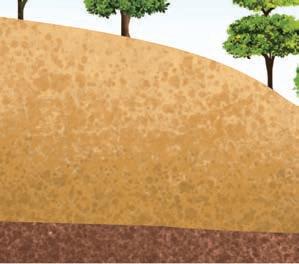


During these periods, water is pumped to the surface using bores. Although groundwater supplies are nite, they are replenished during periods of high rainfall.
The largest groundwater source for Western Australia is the Gnangara groundwater system, as illustrated in Figure 5.3.5, which contains three aquifer layers. Just like a sponge, these layers of rock material store and permit water to move through it. Groundwater currently accounts for around 40 per cent of Perth’s water, which is slowly depleting the resource, but groundwater replenishment projects aim to manage the quantity of water sustainably.

bores holes drilled into the ground to access underground water resources aquifer layers of rock or sand that contain water groundwater replenishment the act of refilling aquifer supplies with water





















































sewage waste matter such as human urine or solid waste
potable water that is clean and safe to drink
filtered the process of removing solids and impurities from water
purified the process of removing dirty or harmful substances from water
Desalination is the process of removing salt and other minerals from water. This can turn water from the ocean or underground sources into water that is safe for human consumption. Given the size of the ocean, water from desalination is a very reliable resource, particularly useful in coastal areas that have low or inconsistent rainfall. However, desalination plants are expensive to build and maintain. The cost to build a single plant in Australia is more than $1 billion, and this does
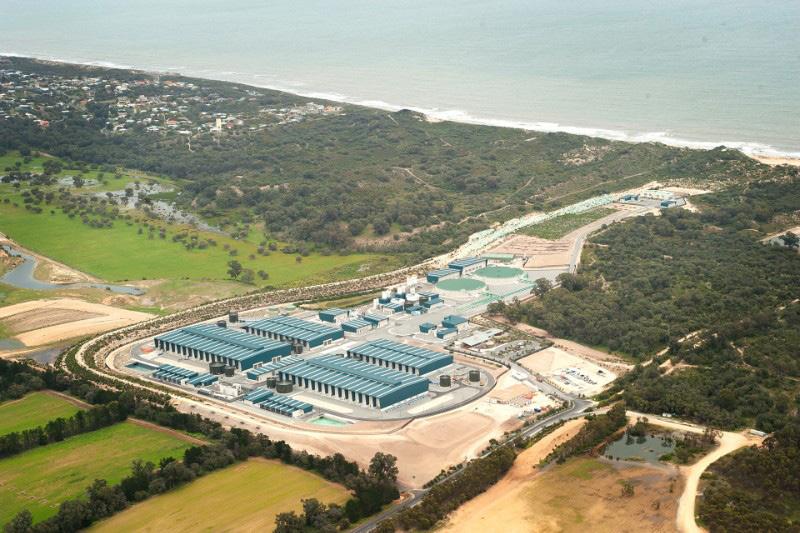
not include the ongoing maintenance costs on the equipment. Desalination plants also require a very large amount of energy to run. Despite the costs, desalination plants have been built to provide water to Perth, Sydney, Adelaide, Melbourne and the Gold Coast.
Water recycling involves reusing treated wastewater, such as sewage. Recycled water can be used to water crops on farms, ush toilets and replenish groundwater supplies. If wastewater is treated thoroughly, it can even be used for drinking. Water that is suitable for drinking is called potable water.
The process of water recycling involves transporting water to a wastewater treatment plant, where it is filtered and purified. While the use of recycled water is not yet widespread in Australia, wastewater in Victoria’s Goulburn Valley is recycled and returned to the Goulburn River. It is then processed to be safe for drinking. In the future, Perth hopes to recycle all of its sewage to contribute to the city’s water storages. Although many people may nd the idea of drinking recycled sewage dif cult to swallow, there have not yet been any cases of human health problems associated with the consumption of recycled water.
Desalination is an extremely old technology. The ancient Romans used early forms of desalination to ensure that their soldiers did not get dehydrated when they were in areas without a consistent supply of fresh water. The ancient Romans used clay filters to trap salt, which allowed their soldiers to keep on the move when they were away from fresh water sources.

Positives and negatives
In a table, summarise the positive and negative factors of using surface water, groundwater, saltwater and recycled water as water resources. Consider the environmental and economic impacts of using these resources.
Key concepts: place, sustainability, change
Water beyond this world
Water is essential to all life, and it will be necessary for a colony to survive on Mars. With preparations for the very first expeditions becoming a reality, explore the difference between available and potential water by investigating the following prompts:
• Is there water on Mars?
• What evidence exists to prove this?
• Is this water available or potential?
• How do future human expeditions aim to be water secure?
HASS skills: questioning and researching, evaluating
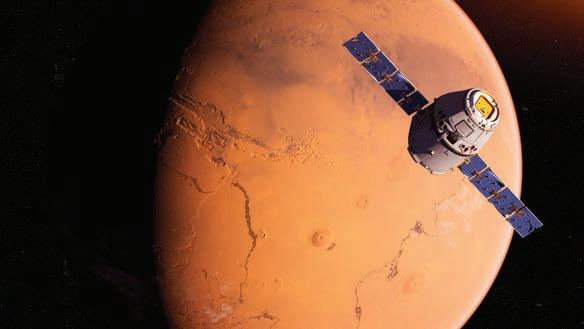
Key concepts: place, environment, sustainability
The distribution and variability of Australia’s water supplies
I love a sunburnt country, a land of sweeping plains, of ragged mountain ranges, of droughts and ooding rains.
‘My Country’ – Dorothea Mackellar
HASS skills: questioning and researching, evaluating
The excerpt from Dorothea Mackellar’s poem ‘My Country’ sums up Australia’s water resources perfectly. It is a land of contrast; Australia’s climate is prone to extended periods of low rainfall and to oods. While some areas have a very high average rainfall, others are classi ed as deserts. As such, the availability of water varies considerably.
The quantity of Australia’s water resources has changed over time and will continue to do so well into the future. These changes are caused by natural factors such as seasonal variation and long-term climate variation.
Human activities are also able to in uence Australia’s water supplies as we alter the natural water cycle.
The amount of renewable fresh water added each year is largely based on the amount of precipitation that falls in a region. This amount uctuates across the year due to the seasons.
Precipitation recharges rivers, lakes, reservoirs and groundwater. As long as the amount of water used by the population of a region each year is less than the amount of precipitation, water resources will remain stable. This means that the water use is sustainable. If the amount of water withdrawn is greater than the
amount of precipitation, supplies of water will decrease.
One of the main factors determining the availability of water resources in a location is the amount of precipitation that it receives. As we learnt previously, precipitation refers to any form of water that falls from the clouds due to gravity and lands on Earth’s surface. This includes rain, snow, hail and sleet
Australia is the second driest continent on Earth after Antarctica.
Although the average annual rainfall in Australia is 417 mm, Figure 5.3.9 shows that this number varies signi cantly across Australia. Coastal areas generally receive the most rainfall, whereas rainfall decreases towards the centre.
Developing geographical concepts and skills 5.5
Spatial distribution refers to the arrangement of a particular phenomenon or activity on the land. Using cardinal directions, named features and data from the legend, you can describe the distribution of rainfall in Australia.
Refer to Figure 5.3.9 and answer the questions below to construct a description of the spatial distribution of rainfall in Australia.
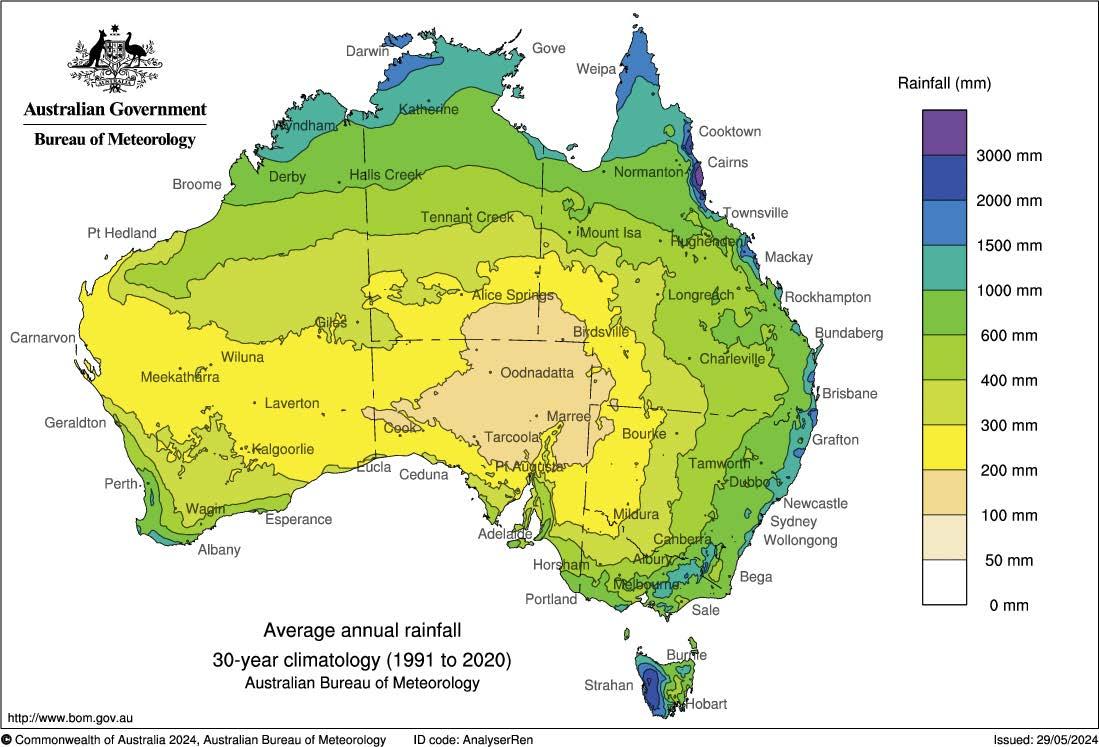
1 Using the compass and names of states/territories, identify which areas of Australia experience the highest rainfall.
2Name one location that is located in this region.
3 Using data from the legend, determine how much rainfall this region experiences.
4 Using the compass and names of states/territories, identify which areas of Australia experience the lowest rainfall.
5Name one location that is located in this region.
6 Using data from the legend, determine how much rainfall this region experiences.
Key concepts: place, space, environment, scale
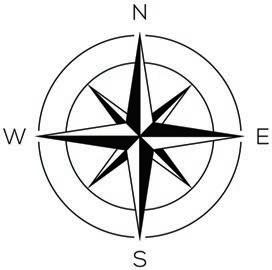
skills: analysing, evaluating
Another factor relating to water resources is the presence and size of rivers. Many major cities and towns are built near rivers because they provide a reliable water source. In the past, rivers were heavily relied on for transport and as a food supply. The damming of rivers enables water to be stored in reservoirs so that it can be used for irrigation.
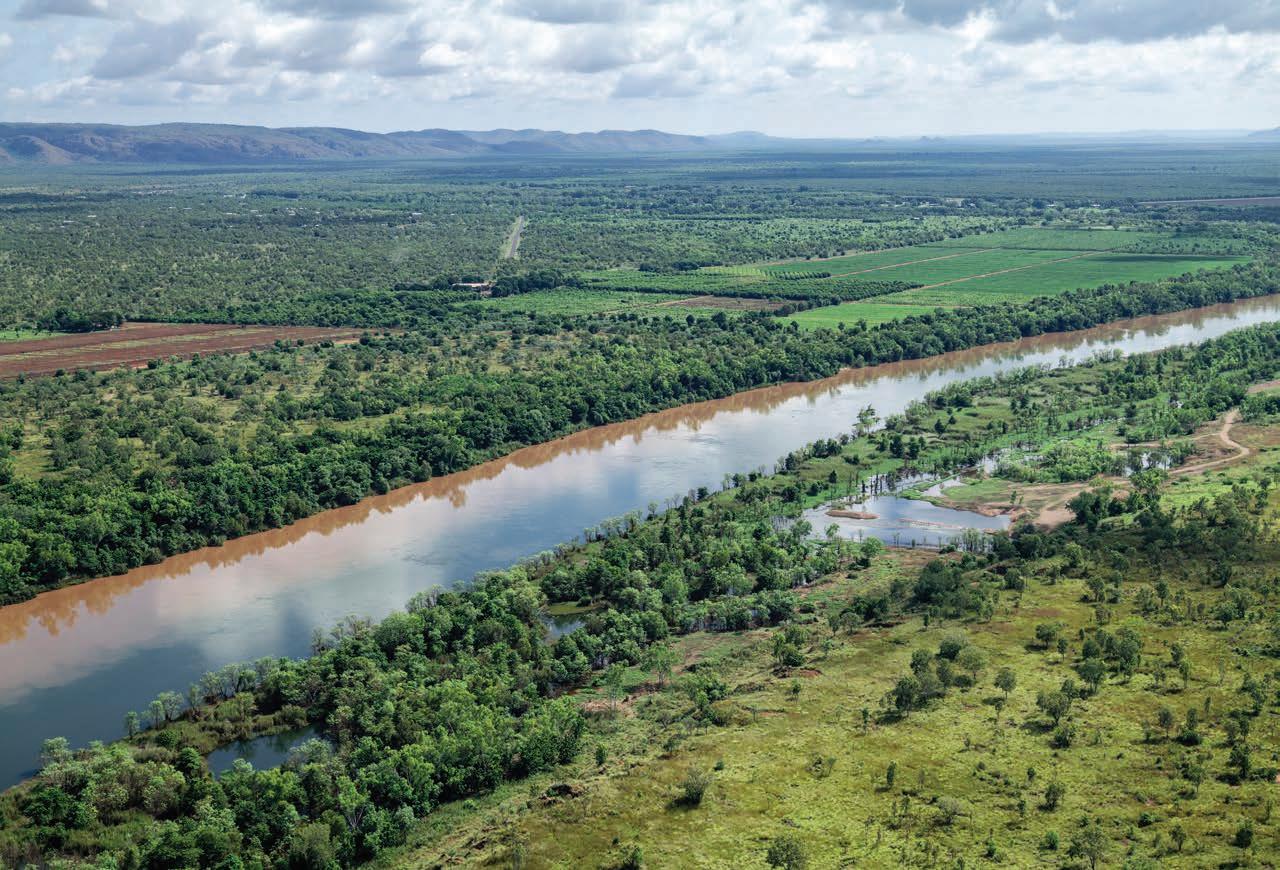
drainage basin an area of land where precipitation collects and drains into a central point such as a river channel
The size of rivers is linked to precipitation. When precipitation falls, it collects and drains into streams that ow downhill into larger streams, which eventually become a large river channel.
The area of land that collects rainfall is known as a drainage basin. Australia has a large system of groundwater basins under about 60 per cent of the continent (see Figure 5.3.12). Australia’s Great Artesian Basin is the largest and deepest groundwater basin in the world. It covers 1.7 million square kilometres across Queensland and into the surrounding states and territories. The Great Artesian

Basin is estimated to hold around 8700 million megalitres of water.
Just like rivers and other forms of surface water, access to groundwater resources varies signi cantly across Australia. Australians are reliant on groundwater extracted from basins in arid areas where rainfall is erratic and drought conditions are more common. Hundreds of bores are used to pump water out of the ground for use in agriculture and industry, as well as for domestic purposes.
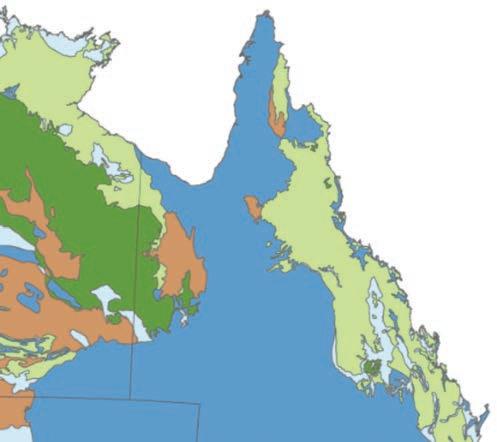
Principal hydrogeology
Fractured or fissured; extensive aquifers of low to moderate productivity
Fractured or fissured; extensive, highly productive aquifers
Local aquifers: generally of low productivity
Porous; extensive aquifers of low to moderate productivity
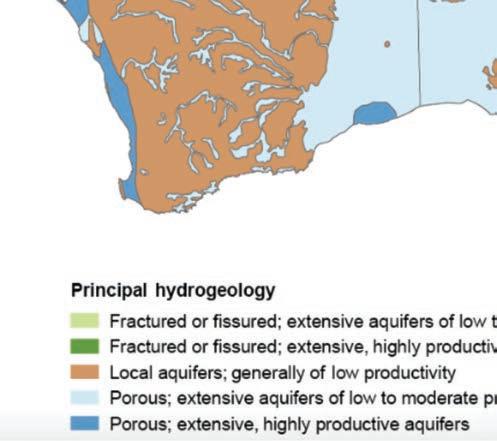
Porous; extensive, highly productive aquifers

Figure5.3.12 The spatial distribution of Australia’s groundwater supplies. The aquifers, in dark blue and dark green, are the largest and highest quality supplies.
Source: Bureau of Meteorology Groundwater Insight
to 10
Figure 5.3.13 The spatial distribution of Australia’s population ➜
Describing the spatial association between different features
Describing the spatial association between features on different maps is an important part of understanding the relationship between them. It involves looking at different maps of the same scale and analysing how similar or different their spatial distributions are. In other words, are the features arranged in the same way? A spatial association can be described as strong if the two maps have a very similar distribution or arrangement. A spatial association is moderate if the distribution matches in some regions but not others. And a spatial association is weak if the two maps do not appear to have much of a relationship.
1 Refer to Figures 5.3.9 and 5.3.13 and answer the following.
a Is there a strong, moderate or weak association between average rainfall and population density?
b Provide examples of places from the maps to support your answer.
c Are there any exceptions to this relationship?
dSuggest a reason for the relationship you see between rainfall and population.
2 Refer to Figures 5.3.12 and 5.3.13 and answer the following.
a Is there a clear relationship between groundwater supplies and population density?
bSuggest a reason for your answer.
Key concepts: place, space, environment, interconnection, sustainability, scale, change
HASS skills: questioning and researching, analysing, evaluating
The quantity of water available in Australia uctuates naturally due to seasonal variation throughout the year. Much of Australia experiences four seasons, with
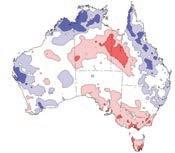
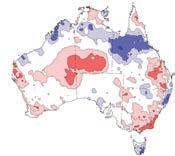
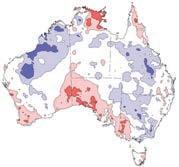
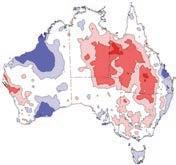
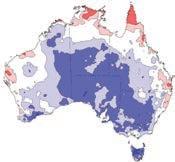


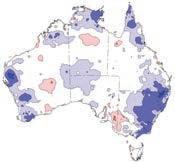
winter rainfall being relied upon in many areas to produce enough rainfall to ll dams to capacity and recharge groundwater levels. However, as shown in Figure 5.3.14, the location of the highest and lowest levels of rainfall changes from year to year.
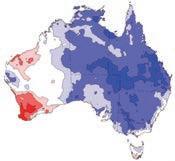

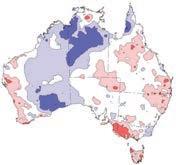
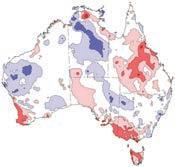
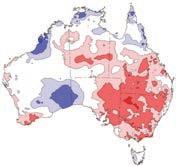

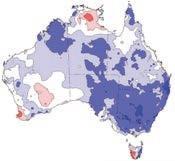

Connect, extend, challenge
Observe Figure 5.3.14 and complete the following.
1Outline how the series of maps connects with what you already know about Australia’s rainfall.
2Propose new ideas the series of maps provide to extend your thinking.
3Discuss what challenges or puzzles emerge for you.
Key concepts: place, space, interconnection, environment
In the tropical north of Australia, as shown in Figure 5.3.15, there are only two seasons: the wet and dry. Due to its close proximity to the equator, locations such as Broome and Kalumburu, experience warm temperatures and humid conditions for much of the year. The rainfall in this climate region, as the name suggests, occurs in
HASS skills: questioning and researching, analysing, evaluating
the wet season between October and April. The quantity of rainfall is far higher than most of Australia, excluding the alpine regions, as monsoons originating from the tropics bring torrential downpour. It is often described as transformative, as dry riverbeds come to life and shades of green return to the land.

climate change long-term variation in Earth’s rainfall and temperature patterns
Climate change is responsible for long-term variations in water resources. Australia’s weather and climate are changing. Consistent with global trends, Australia’s average temperature was warmer each decade since national records began in 1950. In fact, the hottest year on record was 2019 and eight out of the nine warmest years recorded have occurred since 2013. Rainfall patterns are also changing. The south-west of Australia has observed a 16 per cent decline in rainfall between April and October since 1970. Similarly, south-east Australia has experienced a 9 per cent decline in rainfall since 1994. In contrast, northern Australia’s wet season has seen a 20 per cent increase in rainfall since 1994. Within these
Where does your water come from?
Have you ever wondered where your school’s water is sourced from? Or if these sources have changed over time? The Water Corporation provides an interactive portal where you can find out. Simply search online for ‘Water Corporation where your water comes from’ to get started!
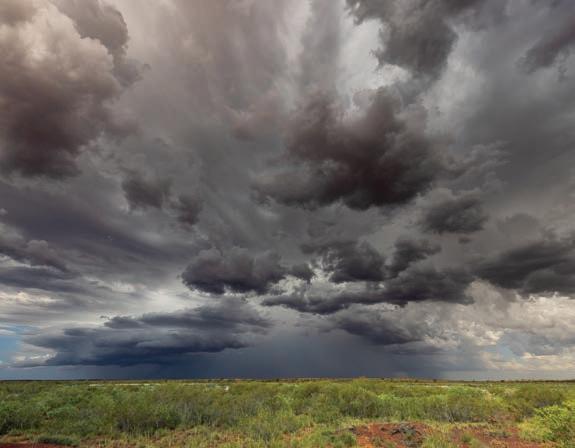
time periods, the increased frequency and intensity of droughts and oods across Australia have been observed.
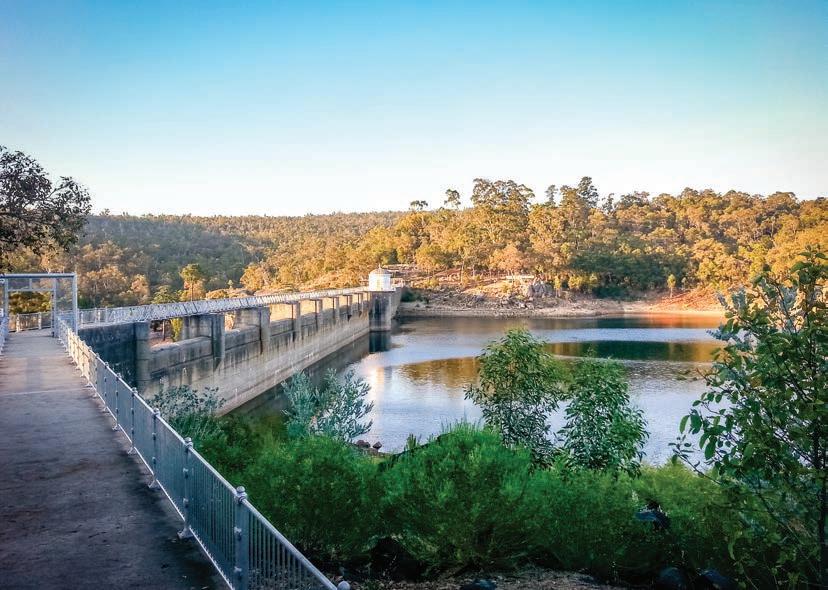
Key concepts: place, space, change HASS skills: communicating and reflecting
The development of urban environments involves the change of a natural environment to one that is arti cial. This typically involves the removal of trees and other vegetation, as well as the construction of houses, buildings, roads and footpaths. Although this development is necessary to house a growing population, it can completely transform the way water moves through an environment. In these human environments, rather than following the natural water cycle (see Figure 5.2.7), water follows the urban water cycle (see Figure 5.3.18).
In the natural water cycle, water in ltrates the soil and maintains groundwater supplies. In urban areas, there is far less exposed soil. The landscape in an urban environment is
dominated by hard surfaces. These are surfaces like concrete where no water can penetrate. Therefore, much less water in ltrates into the soil and groundwater in an urban environment, and far more ows as run-off. The run-off can lead to increases in ooding and in the amount of pollutants entering local rivers. Similarly, the use of stormwater drains can be argued as an interruption to the cycle as it diverts water to a different location than it would naturally ow.
Disruptions to the water cycle can create variability in the natural supply of water. When humans build dams along a river, they prevent the natural ow of water. The area prior to the dam will create an area of storage, creating an unnatural surplus of water upriver and a deficit downriver. Human activities can also create shortages of water when water is mismanaged or overused.
urban relating to towns and cities hard surfaces human-made surfaces, such as concrete, that cover the natural ground and limit the amount of water that can infiltrate the soil to become groundwater





























































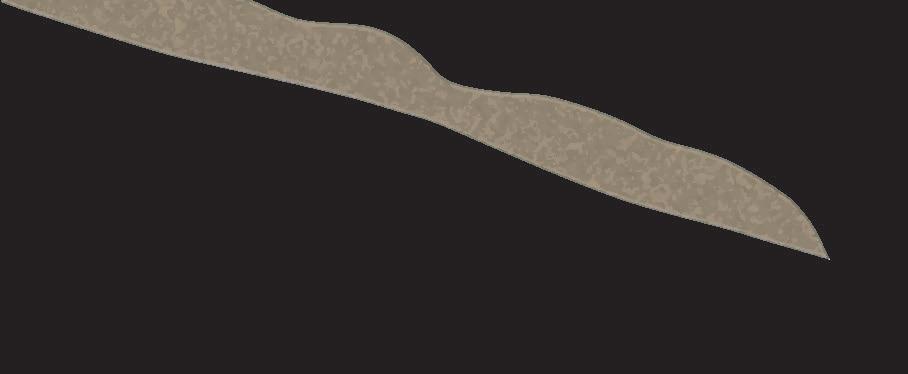







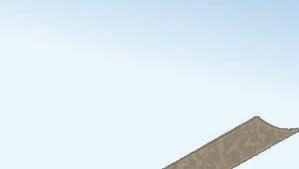





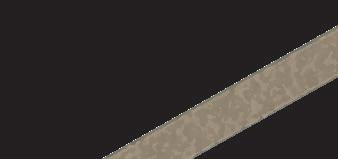




The natural water cycle versus the urban water cycle
Compare Figures 5.2.7 and 5.3.18, then answer the following questions.
1 Identify the major differences between the movement of water in the natural and urban water cycles.
2 Describe the impacts you think these differences will have on the local environment in an urban area.
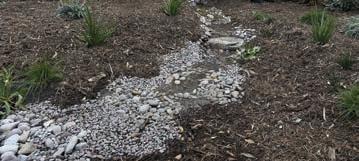
Figure 5.3.19 Stormwater run-off is directed into raingardens like this one so that water can filter into the ground rather than flooding local creeks.
3 One way to reduce the impact of urban development on local waterways is to construct raingardens. The Kings Square development in Perth’s central business district is part of Perth City Link. As part of the development’s approach to sustainability and total water cycle management, a network of raingardens was incorporated into the streetscape design to provide stormwater treatment, protect sensitive groundwater systems that flow into the nearby Swan River, improve the long-term health of street trees, and integrate with the surrounding elements of the streetscape. Investigate whether or not a raingarden would be suitable to construct outside your home or school.
Key concepts: place, space, environment, interconnection, sustainability
HASS skills: questioning and researching, evaluating
Go online to access the interactive section review and more!
End of section 5.3 review
quiz
5.3 Review questions
Recall
1 Describe the difference between available and potential water resources.
2 Describe the environmental consequences of building dams.
3 Identify where most of Australia’s groundwater is located.
4 Describe one potential water resource for Australia. Interpret
5 Explain how urban development changes the water cycle and describe the impact this has on water resources.
6 Explain why water use is sustainable when the amount used is less than the amount added through precipitation.
7 Explain why groundwater is such a significant water resource for Australians.
8 Describe how rainfall varies spatially across Australia. In your answer, refer to specific regions and places.
Argue
9 Discuss whether there is a spatial relationship between rainfall, groundwater and population in Australia.
Key concepts: place, space, environment, interconnection, sustainability, scale, change
HASS skills: questioning and researching, analysing, evaluating
• What is water scarcity and what causes it?
• Why is it a problem?
• How is water scarcity managed?
Booming populations, lack of rainfall, unchecked urban development and unsustainable water use are all factors that contribute to disasters such as water scarcity and drought. However, if we look closely at the factors that cause water scarcity, we can nd ways to manage and reduce the impacts of water shortages.
Water scarcity is when there is a lack of freshwater resources to meet the demands of water usage within a region. This occurs when the amount of water needed for agricultural, industrial and domestic uses is greater than the amount of water available. When the amount of water naturally replenishing supplies is insuf cient to meet
demands, this is known as physical water scarcity. In some cases, although there is enough water available, the infrastructure needed to access it does not exist because it is too expensive to build. This is known as economic water scarcity.
Water scarcity affects people on every continent. Approximately 2.2 billion people lack access to safely managed water, of which 703 million lack access to basic water. Safely managed water is any improved drinking water that is located on premises, readily available and free from contamination. As shown in Figure 5.4.1, basic water is any improved water that can be collected within a 30-minute trip. This means that approximately 1 in 11 people in the world survive from a limited, unimproved or surface water source.
water scarcity a lack of freshwater resources to meet the demands of water usage within a region infrastructure the physical structures and facilities needed within a community, such as roads, buildings and pipelines Drinking water ladder
This means you have access to an improved drinking water source that is located on the premises, available whenever you need it and free from contamination.
If you have drinking water from an improved water source and your trip to collect water is less than 30 minutes round trip, you have what is called basic service.
Limited
If you have drinking water from an improved water source, but it takes you more than 30 minutes round trip to collect it, you have limited service.
Unimproved
If your drinking water comes from an unprotected dug well or spring, you have unimproved access.
Surface water
This means your drinking water is from a river, dam, lake, pond, stream or canal.
Currently, over 3.6 billion people experience water scarcity for at least one month of the year. As shown in Figure 5.4.2, countries in the Middle East and North Africa are facing the highest levels of water scarcity.

If current trends continue, water scarcity is likely to become an increasing problem.
According to UN Water, more than ve billion people may face water shortages by 2050. As shown in Figure 5.4.3, the problem is expected to get worse for many of the regions that are already at risk.
Refer to Figure 5.4.3, then answer the following questions.
1Name three countries or regions that are likely to face higher levels of water scarcity by 2050.
2List factors that you think will be responsible for these increases in water scarcity.
Key concepts: place, space, environment, sustainability, scale, change
HASS skills: analysing, evaluating
Collecting and recording geographical data
Geographers use a variety of methods to collect relevant information and data to investigate the world. One of the best methods for recording data can be a table.
Visit the Essential Need website and access the ‘World Water Map’ through the education section. The interactive map allows you to click on specific countries, search by name and display historical data relating to water access.
1 Create a table similar to below to compare the percentage of water access of up to six different countries in 2022. Country Percentage needing access to water (%)
2 Create a table similar to below to track how the water access of one or more countries changes over time.
Key concepts: place, space, change
There are several factors that lead to water scarcity, including:
• decreases in rainfall, which lead to a reduction in water-replenishing supplies
•increases in population, which lead to an increase in demand for water
•rapid urban development, which spreads out onto wetlands and pollutes waterways
• increased poverty, which stops countries from being able to purchase or construct
HASS skills: questioning and researching
water-management infrastructure (such as desalination or water-recycling plants)
•unsustainable allocation of water withdrawals for purposes like irrigation.
Figure 5.4.4 shows a change in the amount of renewable freshwater resources per capita in selected countries since the 1960s. Over this period, the populations of these countries have also increased (see Figure 5.4.5). This means that the amount of water available has to be shared between more people, which gives each person a smaller share.
Renewable internal freshwater resources flows refer to internal renewable resources (internal river flows and groundwater from rainfall) in the country.
Data source: Food and Agriculture Organization of the United Nations (via World Bank) (2025) OurWorldinData.org/water-use-stress
5.4.4 The change in the amount of fresh water from 1961 to 2021
Source: Our World in Data and World Bank
Data source: HYDE (2023); Gapminder (2022); UN WPP (2024)
Note: Historical country data is shown based on today's geographical borders.
Figure 5.4.5 The change in the population from 1964 to 2023
Source: Our World in Data and Gapminder: HYDE & UN WPP
that lead to water scarcity
Read the information about factors that cause water scarcity, then answer the following questions.
1 Rank the factors leading to water scarcity from the most significant to the least significant. Write a paragraph justifying your ranking and compare your choices with a classmate.
2 Refer to Figures 5.4.4 and 5.4.5.
aList the countries that have had a significant decrease in the amount of water available per capita since 1961.
bList the countries that have had a significant increase in their population since 1964.
cCompare your answers for parts a and b. Discuss whether population growth alone appears to have a large or small impact on water resources per capita.
dSuggest why population growth does not always have a significant impact on water resources per capita.
Key concepts: place, space, environment, interconnection, sustainability, scale, change
evaluating
A geographic information system (GIS) is a form of spatial technology used to gather, manage and analyse spatial information. This data is organised in layers using an interactive map. National Geographic MapMaker is an example of a GIS where different layers can be added to a global map. Data types include temperature, elevation, population density and precipitation.
Visit National Geographic’s MapMaker website, then do the following tasks and answer the questions.
1 Click on the ‘Layers’ tab and select ‘Add layer’.
2 Select the ‘Climate and weather’ category, and click on ‘Precipitation and rainfall’.
3 Once the rainfall data has been added to your map, click on ‘Legend’ to see what the different coloursrepresent.
aName three locations that receive above 1500 mm of rainfall each year.
bName three locations that receive less than 200 mm of rainfall each year.
c Most of South America receives more than 1000 mm of rainfall each year. Does South America add much fresh water to its water supplies each year?
d The Middle East does not add much fresh water to its supplies each year. Does this region receive a high level of precipitation?
e Based on your answers to parts c and d, what can you conclude about the importance of precipitation in recharging water supplies?
Key concepts: place, space, sustainability, scale, change
HASS skills: questioning and researching, analysing, evaluating, communicating and reflecting
drought a long period of water shortage, usually as a result of low rainfall agricultural industry the business involved in cultivating plants and livestock
cull the selective slaughter of animals to reduce their population
There are several serious problems associated with water scarcity, including drought, loss of jobs, economic issues, health risks and environmental damage.
When there are extended periods of low rainfall, there is often a shortage of water. This means that there is not enough water to meet the needs of people or the environment. This includes domestic supplies for people living in urban areas and agricultural supplies for farmers living in rural areas. The period is called a drought.
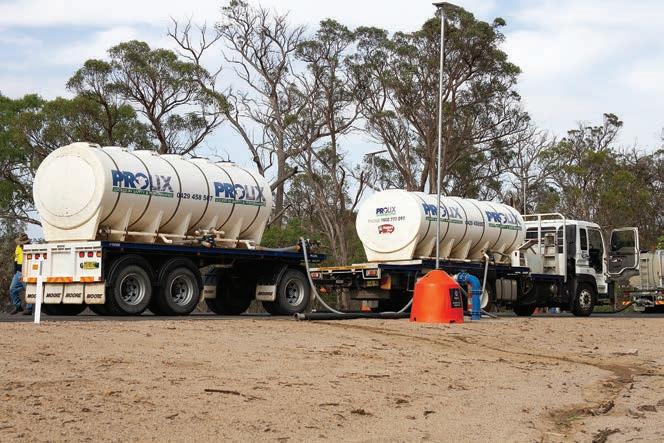
In January 2020, Stanthorpe in southern Queensland had residential taps turned off and water was carted to local collection points. This is known as Day Zero and is a common risk to many Australian regional and rural country towns. The town’s water supply was sourced from the Storm King Dam, which due to a lack of rainfall was not able to support the town. Instead, at a cost of more than $14 million, the town had about 40 truckloads of water delivered daily for over 18 months. The 5000 local residents had to shower in plastic tubs, then use that water to ush the toilet and wash clothes.
For people living in drought-affected regions, water scarcity is not just about having shorter showers or not being able to water the garden. Instead, water shortages in these regions can mean the destruction of the environment and the local agricultural industry
This leads to the loss of jobs and a severe drop in the local economy. Crops fail during a drought and farmers are usually forced to sell or cull livestock as they do not have enough feed to keep them alive. Farmers are often left feeling helpless, which can lead to depression and other mental health issues.
Australia has experienced several severe droughts throughout its modern history. These include the Federation Drought (1895–1903), the World War II Drought (1937–47) and the Millennium Drought (1997–2009). A recent drought began in 2017 and affected large parts of the country. It contributed to the dry conditions that fuelled disastrous bush res during the 2019–20 summer season and left many towns without water.
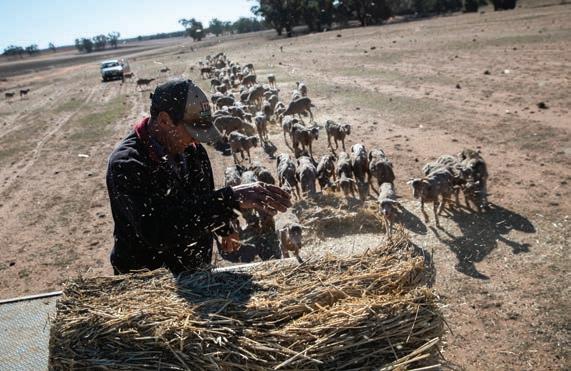

A water crisis is de ned as a situation where the amount of fresh water that is easily available within a region is less than what the region needs. This means that each year the amount of stored water decreases. If this situation continues for an extended period of time, supplies can eventually run out.
Between 2022 and 2023, the capital of Uruguay, Montevideo, faced a severe water crisis. The city is home to about 60 per cent of the country’s population, and the main water source they rely upon is the Paso Severino Reservoir. Water storage levels had been declining steadily as the weather phenomena of La Niña and global warming caused
drier conditions than the region usually experienced. This lack of rainfall meant the dam levels remained far lower than the water needed to support the city.
So grave was the situation that the Uruguayan Government took a drastic measure – it recharged the dam using water from the River Plate. This river is located close to the Atlantic Ocean and has a high sodium level. The World Health Organization recommends that sodium levels in drinking water should not exceed above 200 mg/L. The water in Montevideo was twice that. As a result, the Uruguayan Health Ministry warned the public to minimise tap water intake for pregnant women, infants and people suffering from medical issues.
Niña the cooling of water in the central and eastern Pacific Ocean water crisis occurs when the amount of fresh water that is easily available within a region is less than what the region needs


Refer to the graph in Figure 5.4.10, then answer the questions that follow.
Rainfall changes in Uruguay
(mm)
Figure5.4.10 Variation in Uruguay’s average annual rainfall between 2013 and 2023
1Describe the overall trend in precipitation over the time period shown.
2 What do you think is the cause for peaks (maximums) and troughs (minimums) over time?
3 At the height of the drought, the Paso Severino Dam was at 2 per cent of its capacity. How does it compare to the level in Perth or in your local city or town?
Key concepts: place, environment, interconnection, scale, change
stunting to prevent the growth or development of the body
Water scarcity has a direct impact on the health of people. In fact, more than one million people die each year from a lack of access to safe water and sanitation. Access to safe drinking water is essential to the development of a healthy child.
HASS skills: questioning and researching, analysing, evaluating
Without adequate water and nutrition, a child is at risk of not growing to their full potential, which is known as stunting. Those who have no choice but to drink unsafe water risk illness from drinking contaminants. Every 2 minutes a child dies from a water-borne disease such as typhoid.

The necessity of handwashing to limit the spread of COVID-19 was widely publicised in Australia, but carrying out this task is not simple in a country lacking access to safe water. Approximately 2.3 billion people globally, that is three out of 10, do not have access to soap or safe water to clean their hands. This places over a quarter of the world at risk of illness and disease relating to hygiene.
The burden of water collection from communal sources takes a physical toll on the body. Often, the task of collecting water is placed on women and children. With no choice but to carry heavy vessels of water, women and children forgo participating in work or schooling as collecting water is a requirement for survival. It is estimated that globally women spend 200 million hours collecting water each day.

During 2023 and 2024, the Paruna Wildlife Sanctuary in the Avon Valley east of Perth suffered environmental damage after one year of drought and higher than average temperatures. The sanctuary is an important wildlife corridor between the Avon Valley and Walyunga National Parks. The area is an essential habitat for mammals, birds, reptiles and amphibians. Threatened species such as the Chuditch (Western Quoll), Carnaby’s Black Cockatoo, Honey Possum and the Western Pygmy Possum reside in the area.



As well as affecting people, water scarcity can lead to a variety of negative environmental impacts. When water is scarce and needed to support a growing population, more is withdrawn from natural sources and less remains to support the natural environment. This can affect environments containing rivers, lakes and wetlands. The amount of water in these environments is reduced and many of the natural processes that are needed to maintain the health of local ecosystems, like oods, are not able to occur.
Perth’s rainfall has been steadily declining for decades; however, the winter of 2023 was exceptionally dry with Perth receiving approximately 560 mm of rainfall. The once green woodland of Paruna Wildlife Sanctuary east of Perth experienced a mass die-off of vegetation across the 1941 hectares of land, as shown in Figure 5.4.13. Animals relying on nectar, such as the Honey Possum, face the most serious concern as the lack of owering plants will impact their survival. The now dry landscape presents a hazard risk as dead vegetation provides fuel for a bush re to start or spread.
grow
Observe Figure 5.4.13. Geographers use photographs to observe changes in the environment and use these to draw conclusions. Take the following steps to analyse the changes occurring in Paruna WildlifeSanctuary.
1Identify the similarities and differences between the two photographs.
2Describe one consequence the changes have or will have on this environment.
3Explain why these changes have taken place.
4Propose one way the changes can be managed or overcome to restore the environment.
Key concepts: space, place, interconnection, change HASS skills: analysing
Although water scarcity is often caused by factors that are beyond the control of people, such as extended dry periods, in many cases the impacts can be managed, reduced or overcome. Ways to address water scarcity occur at different scales. Globally, many nations work together to assist one another through organisations such as the United Nations. During the UN Climate Change Conference COP29, held in Azerbaijan in 2024, nations launched the Baku Dialogue to continue the response to climate change with a focus on lessening the impact on global water supplies. Within Australia, the federal government’s Department of Climate Change, Energy, the Environment and Water (DCCEEW) leads our current response and provides national direction for a sustainable future. At a local level, individual cities, towns and communities manage their water in a range of ways, such as water saving initiatives in households.
Australia was one of the rst countries in the world to replenish its groundwater supplies, with the Water Corporation being the rst utility to undertake the strategy. Located in Craigie, a suburb in Perth’s north, is the Advanced Water Recycling Plant (AWRP).
Treated wastewater in Perth was originally used to irrigate local parks, ovals and greenspaces. Of the water not bound for irrigation, the treated wastewater would simply end up in the ocean. With groundwater levels declining over time, it was proposed to trial adding treated wastewater into aquifers to replenish their levels in 2012 over three years. Today, the AWRP has the capacity to pump between 14 billion to 28 billion litres of treated wastewater into aquifers below Craigie, Wanneroo and Neerabup. Not only is the treated wastewater cleaner than the water within the aquifers, but the natural ltration that these locations provide ensures that if we need to access this water it will be suitable for use.
In 2018, the Orange County Water and Sanitation District was awarded a Guinness World Record for recycling 100 million gallons (378 million litres) of wastewater into potable water in 24 hours.

vessels that are used to purify wastewater
Orange County, California.
1 SEAWATER INTAKE
Seawater is drawn from the ocean through specially designed intake structures. Seawater is drawn at very low speeds –even small fish will be able to swim against the intake current – and a protective grille will ensure that larger marine life can’t swim into the structure. Long tunnels will protect the marine environment, including the beaches and dunes.
2 FILTRATION
As previously described, seawater is a potential water resource. There are over 16 000 desalination plants in 177 countries which transform seawater into drinking water.
In Western Australia, we use the Indian Ocean as our source of seawater. This seawater is forced under pressure through special membranes which have pores that are so tiny that salt, bacteria, viruses and any other impurities cannot pass through. This process is called reverse osmosis The salt and other impurities, called brine, is returned to the sea via diffusers. The diffusers ensure that as the brine is released back into the water it is not at a high concentration level as this could harm marine life. The water that has been desalinated is then treated to ensure that it meets drinking water standards.
reverse osmosis when a liquid moves through a porous membrane in the opposite direction of the natural process



Pre-treatment filters remove solids such as sand and sediment.





3 REVERSE OSMOSIS
Filtered seawater passes through two stages of reverse osmosis, where it is pushed through ultra-fine membranes under high pressure. Fresh water will pass through, leaving seawater concentrate behind.
4 REMINERALISATION
Desalinated water is remineralised to meet Australian Drinking Water Guidelines and state health requirements.



5 STORAGE
Drinking water is stored before it is distributed into Melbourne and regional water networks, where it may be blended with water from existing catchments.
6 WATER OUTLET
Seawater concentrate is safely returned to the ocean through diffuser structures. Ocean currents dilute the concentrate within seconds.
5.4.15 The process involved in desalination to create drinkable water
Perth currently has two desalination plants, with a third in Alkimos under construction and planned to be ready for 2028. The rst plant was opened in Kwinana, the Perth Seawater Desalination Plant, and began production in 2006. It currently produces around 15 per cent of Perth’s water supply. In 2011, production of water at the Southern Seawater Desalination Plant commenced in Binningup. This plant currently provides around 30 per cent of Perth’s water supply. By 2050, it is predicted that desalination will provide 57 per cent of Perth’s water in order to support the growing population as our rainfall declines.
In most parts of the world, agriculture uses the most water resources. Table 5.4.1
shows the amount of litres needed to grow 1 kilogram of a variety of different foods. Based on this information, it is clear that the food we choose to consume has a very large impact on the amount of water resources that are needed.
Table 5.4.1 The amount of water needed to grow 1 kilogram of
Developing geographical concepts and skills 5.8
Drawing a bar graph
Bar graphs are a simple way to display and compare quantities. They allow us to see which values are greatest and how much variation there is between quantities.
Turn the data provided in Table 5.4.1 into a bar graph by following these steps.
1 Have a look at the range of values. What are the largest and smallest values? This will help you to determine how high your graph axes have to go.
2 Create a set of axes and label them. The foods will go on the horizontal axis and the amount of water they use will go on the vertical axis.
3 Divide your vertical axis into even amounts. These should start from below your lowest value and go to above your highest value.
4 Add the names of the foods to the horizontal axis.
5 Draw your bars, ensuring that they are an even width and have a gap between them.
6 Add a title and legend to your graph.
Irrigation is de ned as the arti cial application of water to land for the purpose of agricultural production. The water used for irrigation is taken from surface water resources, such as rivers, lakes and reservoirs, and groundwater supplies. This means for many locations it is essential to manage its use to ensure that there is enough water for all in a region now and into the future.
There are several types of irrigation. Some of these are presented in Table 5.4.2. The choice of irrigation types will depend on the amount of water available, the amount of water needed, the soil type, the types of crops grown, the shape of the landscape and the local climate. The choice of irrigation type varies considerably across the world because of the availability of technology and money to purchase equipment.

Irrigation typeDescription
Furrow A series of small, shallow channels to guide water down a slope across a paddock
Sprinklers Sprinkler systems that spray water over the crops; some are fixed in position while others are mounted on wheels or a trailer to move across the landscape
Drip Tubes placed above or below the soil’s surface, with holes that frequently drip small amounts of water onto the soil
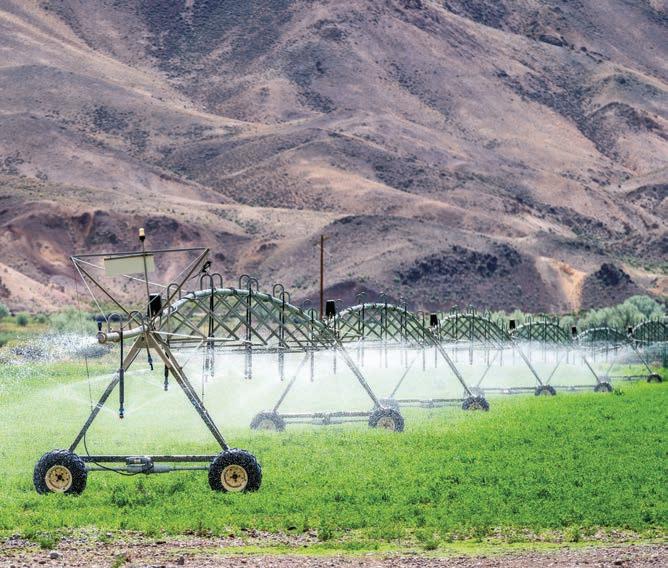
Although irrigated farmland covers less than 1 per cent of Australia, it produces 30 per cent of all of our agricultural products. Irrigated farmland also uses 90 per cent of the total amount of water resources used by agriculture. There are 40000 farmers who use irrigation and many more employed in related industries. Altogether this contributes around $10 billion to the Australian economy each year.
availability how easily people can access a service or facility

Australia’s irrigation industry is highly regulated . Farmers are issued with irrigation licences and are allocated an amount of water that they are able to extract from surface and groundwater supplies. This regulation aims to ensure that irrigation is sustainable.
The Western Australian Department of Agriculture and Food even has an app, Irrigate WA, which assists farmers to implement the most sustainable irrigation schedule based on variety of crops, regions and soil types. The app uses real-time weather data to determine evaporation rates to calculate the correct irrigation duration and frequency to ensure a positive crop yield.
The Water Corporation is a Western Australian Government authority that manages Perth’s domestic water supply. The authority also manages wastewater, drainage and bulk irrigation services. Perth’s population is growing, so the Water Corporation wants to ensure that the domestic water supply can continue to support the population.
The Water Corporation has developed a program called Waterwise, which encourages residents to limit their water consumption by changing the way they use water at home. As a part of the program, the Water Corporation offers suggestions about how to reduce water consumption in the garden, bathroom, kitchen and laundry. Initiatives such as prescribed watering days for gardens have saved Perth 4.5 billion litres of water each year – that is the equivalent of lling Optus Stadium almost ve times!

The Waterwise program doesn’t stop at just households, it assists councils and businesses to incorporate sustainable water practices into new or existing development. The Wanneroo Aquamotion, in the City of Wanneroo, has seen its visitor numbers triple from 118 000 in 2019 to 351 000 in 2023. With more visitors comes more water usage, particularly in the shower change rooms. A number of water management strategies were implemented, including:
• upgraded sinks, shower and toilet xtures and ttings
• tap timers on showers
• smart water fountains
• a range of signage promoting shorter showers or use of the half ush on toilets
• plant room upgrade to reduce backwash.
At the local level, individual households can all help to reduce water wastage. Complete the following tasks to investigate your household water use.
1 Look at one of the water bills for your household. What is the average water use per person?
2 Visit the Waterwise web page on the Water Corporation’s website and click on ‘Waterwise advice’. Which of the suggestions that the Water Corporation gives do you already do in your household? Which of the suggestions do you think you could try in the future?
Key concepts: environment, sustainability
HASS skills: analysing, evaluating

Water is and always has been essential to all aspects of life. Not only does water sustain life, but it is culturally and spiritually important to many ancient and modern societies.
Think, pair, share
Many cultures from the ancient past as well as today have a deep connection with water. Answer the following questions before sharing your responses with a partner. Then discuss your answers with the rest of the class.
1List all the ways you use water in your life. Consider how water is used at home and at school. Also think about the water that might be needed to produce items that you purchase or consume.
2 What are your experiences with water in the landscape? Consider water that is near your home, a place you visit regularly or somewhere you have been to on holiday.
3 How do you think water supplies and water in the landscape might change or be impacted on in the future? Consider environmental damage, population growth and changes to the climate.
Key concepts: environment, sustainability
HASS skills: evaluating
Since ancient times, water has been a signi cant part of cultures around the world. Many civilisations made water an important part of their religious rituals and beliefs.

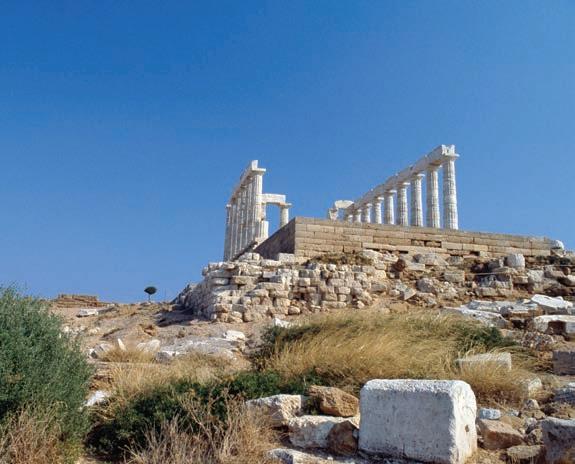
➜
aquaculture
the breeding and harvesting of fish and other freshwater organisms
weir a small dam or barrier stopping the flow of a river
The ancient Egyptians called the Nile River the ‘father of life’. They believed that the god Khnum controlled the ow of the Nile and sent the oods each year. To keep this god happy and ensure that the Nile River continued to ow, the ancient Egyptians built shrines and temples honouring Khnum. They also threw food and statues into the Nile River as offerings to the god.
Ancient Greeks had a similar connection with water through their god, Poseidon, who was the god of the sea and water, as well as earthquakes, storms and horses. The ancient Greeks relied heavily on the sea for trading and transport between the mainland and the Greek islands. There are ancient temples dedicated to the worship of Poseidon in Greece.
To learn more about ancient Egypt, see Chapter 8, and to learn more about ancient Greece, see Chapter 9.
Archaeological evidence shows that Aboriginal Peoples lived along the river banks in places throughout mainland Australia. They managed these waterways to ensure that they could use the sh and plant life to feed themselves.
The connection between Aboriginal Peoples and water was recognised in 2019 when the Budj Bim Cultural Landscape was added to UNESCO’s World Heritage List. This site in south-western Victoria is an aquaculture system containing weirs, channels and holding ponds to trap sh. The system supplied the ancient Gunditjmara people with a reliable food source to consume and trade.
To learn more about Aboriginal and Torres Strait Islander Peoples, see Chapter 7.
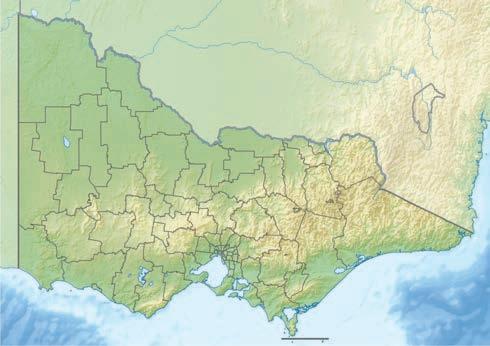
Hindus believe that large rivers are sacred and provide a connection with the gods. The Ganges River is one of the most signi cant rivers in Asia. It is over 2500 km long and ows through some of the most populated places in India and Bangladesh. Four hundred million people rely on it for drinking, bathing and irrigation.
The Ganges River is sacred for Hindus as it is considered to be a form of the goddess Ganga. Many Hindus believe that if they bathe in the Ganges River they will be cleansed of their impurities and negative actions. Millions of people make pilgrimages to the Ganges River to bathe in its waters. Many people also scatter the ashes of their deceased loved ones on holy rivers like the Ganges River. Hundreds of Hindu festivals and

celebrations are held on the banks of the river each year.
Water has been and still is a signi cant part of the culture of Aboriginal and Torres Strait Islander Peoples. Water is a symbol of life and has been a central part of Indigenous lifestyles for tens of thousands of years.
In modern Australia, Aboriginal and Torres Strait Islander Peoples living in remote communities in the Northern Territory see water management as a high priority. Due to a lack of permanent rivers in desert areas, many of these communities rely heavily on accessing bore water from groundwater supplies. The people in these remote communities are forced to compete with mining, livestock and urban areas to access their share of a limited water supply.

Water is the life for us all … If that water go away, everything will die. That’s the power of water. He connect with the land.
John ‘Dudu’
Nangkiriyn, Bidyadanga, Western Australia
1 Identify a river or lake in your local area or in Western Australia.
2 Conduct some research to find out:
a the Traditional Owners of the land the river or lake is on.
b the current and/or past First Nations name given to the river, lake or area by the Traditional Owners
c what resources the body of water and surrounding areas provided the Traditional Owners over different times of the year, and how the Traditional Owners used the resources
d how the Traditional Owners and non-Indigenous people currently use and value the area and resources

e how the First Nations cultural and historical significance of the area has been acknowledged, respected and protected.
3 Choose one of the following activities to summarise what you have learnt.
a Write a paragraph summarising your learning.
b Create a postcard with a photo of the area and water system. Write to someone telling them about the history and significance of the place.
Key concepts: place, space, interconnection
Fieldwork 5.1
Exploring the significance of a local water resource
HASS skills: questioning and researching, evaluating
Fieldwork is an essential part of studying geography. It enables you to investigate many of the concepts studied in the classroom by collecting data out in the real world. In this investigation, your aim is to explore a water resource close to your school or home, and determine the ways it is used as well as its significance for the surrounding region.
First, choose a local resource and develop a plan for a fieldwork investigation. Use the following structure to plan your investigation and present your results.
Title and introduction: Introduce your study by providing some context. This should include the location of your chosen water resource and what aspects you will be investigating.
Aim: Write an aim for your eldwork that is achievable based on the data that you intend to collect.
Research question: Write a research question that you intend to answer using the data that you collect. Examples include:
• What are the different ways this resource is used by people?
• What role does this resource play in the local water supply and the surrounding environment?
• How is this resource managed?
Hypothesis: Write a clear and concise hypothesis. This is a testable statement that provides a prediction prior to collecting the primary data. It should relate to the research question.
Primary data collection: Consider the types of primary data that you will need to test your hypothesis and answer your research question. Examples include:
• observations, annotated photos and eld sketches showing the interconnection with the surrounding landscape
• water quality samples
• analysis of the quality and species of vegetation surrounding water bodies
• interviews and surveys of local residents about how they use the resource
• an interview with a group that manages the water supply, such as the Water Corporation, a catchment management authority or a local community group.
Secondary data collection: Use a range of secondary sources to supplement your primary data. Examples include:
• satellite images and elevation data gathered using Google Earth
• previous studies and management information from the websites of management groups and government authorities.
Presenting and analysing your data: Summarise your data using tables, graphs and maps where appropriate. Analyse your data to draw conclusions, answer your research questions and state whether your hypothesis has been supported or disproved.
Conclusion and evaluation: Summarise your ndings and evaluate the success of the eld trip. What were the positives and negatives of your data collection? What could be done differently next time? What additional data could be collected to extend this investigation?
References: Always ensure that you keep a record of any sources used and present these in a bibliography.
End of section 5.4 review
Recall
1 Describe an example of an ancient civilisation having a spiritual or cultural link with water.
2 Define the following terms: a water scarcity b physical water scarcity c economic water scarcity d drought.
3 List three impacts of a drought.
Interpret
4 Outline and describe one factor that leads to water scarcity.
5 Explain how water scarcity can impact both the natural environment and people in rural and urban areas.
6 Discuss one way water scarcity can be overcome. Be sure to include the positives and negatives of the strategy. Argue
7 ‘The history of water management by Aboriginal and Torres Strait Islander Peoples is valuable and should be a primary concern when managing water resources.’ Discuss whether you agree with this statement. Refer to specific examples to justify your opinion.
Key concepts: environment, interconnection, sustainability
5.5 Conclusion: why does it matter?
Water is a precious resource and is essential to life on our planet. It is so important that scientists are looking for it on nearby planets because where there is water, there is also the possibility of life.
As this chapter has explained, fresh water is not evenly distributed across the world and
HASS skills: evaluating, communicating and reflecting
the number of people who struggle to access it is going to increase. Geography is not just the study of what is, but also of what could be. How will you help address water scarcity in your local area, in your state or on Earth? Water connects us all. The future of water resources is everyone’s problem. So be a part of the solution!
That just about wraps up this topic. How do you feel you went working through the chapter? Before you attempt the following activities, visit the Interactive Textbook to rate your confidence with this topic via a downloadable checklist.
Turning wastewater into potable water is seen by some as a necessity and by others as an absolute last resort. Consider a situation where the Western Australian Government decided to start recycling Perth’s wastewater. Choose a perspective from the following list:
• The premier of Western Australia
• A government authority, such as the Water Corporation
• The owner of a Perth business that needs a large water supply
• A local resident.
Use the following sentence stems to explore this topic.
• I am thinking of turning wastewater into potable water from the point of view of …
• I think turning wastewater into potable water is …
• A question I have from this viewpoint is …
Choose one of the examples provided in this chapter to study water as an environmental resource more thoroughly. Develop a research question, and research additional detail and statistics to answer the question. Then, present your findings in a report.
Some ideas are given here:
• Is solar, wind, fossil fuel or nuclear energy a sustainable option for the future of energy production?
• What are the impacts of drought in Australia? Find out how much of Australia is affected, the main causes of the problem and the ways that Australians are trying to reduce the impacts.
• To what extent are dams in Australia or elsewhere in the world impacting the environment, people and local economies?
• Is desalination the answer to the world’s water crisis?
Problem-solving task
As the global population continues to grow, domestic water use places an increased pressure on water supplies. Either research a modern technology that reduces domestic water use or design your own. Discuss how this technology works and how it could be incorporated into existing houses in Australia.
Claim: Water resources are renewable yet finite. Sustainable management of this environmental resource is needed to ensure that people, the environment and the economy are not negatively impacted.
Discuss whether you agree with the above statement. In your response, refer to the types of water resources in specific places, the impacts associated with water supplies and the ways that water is managed in the area.
Key concepts: place, space, environment, interconnection, sustainability, scale, change
HASS skills: questioning and researching, analysing, evaluating, communicating and reflecting

The places we call home look and feel different to each of us. Factors such as our location, income and connections to the community and the natural environment all play a role in how we experience our neighbourhoods, towns, cities and suburbs. To live well in a place, we need access to basic necessities. We also need to be able to enjoy the culture, entertainment and activities that make a place feel safe and fun. So, liveability not only means surviving in a place but thriving there, too.
Places are always changing. Figures A to D show the changes that have occurred in Perth from 1934 to 2022. Soon, streets could be dominated by driverless cars, while farms may be perched on city rooftops.
How you feel about a place can also change as your needs alter over time.
For instance, growing up in a rural region might be great when you are young because you can enjoy the open space and freedom. However, later you may decide to move to a city to go to university.
In this Geography unit, you will investigate what places mean to Australians and people around the world, as well as what services and facilities make a place liveable. This will help you to recognise key characteristics of our built environments, and understand the human activities and beliefs that have helped to shape them. You will also learn to see places from the perspectives of different groups of people. Understanding the characteristics of built environments and others’ perspectives can help you be more connected to your own environment and community. You may even want a career as a town planner or an architect!
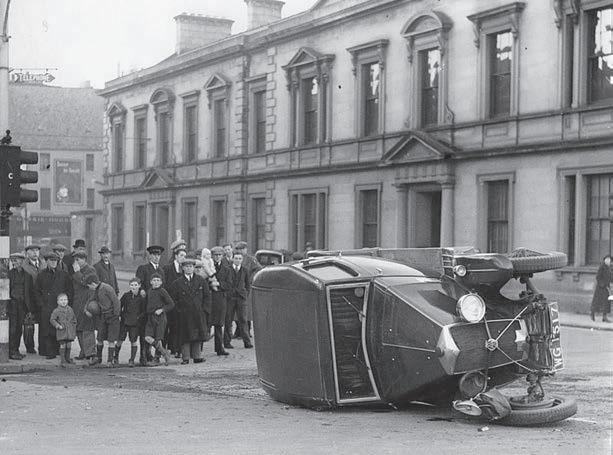


After completing this unit, you should be able to answer these questions:
• What is place and liveability?
• Which factors in uence where people live and what they think about their place?

• How do we measure the liveability of a place?
• How does the accessibility of facilities and services affect the liveability of places?
• How does environmental quality in uence the liveability of places?
• How have people improved the liveability of places?
In this unit, you will have many opportunities to practise geographical concepts.
The concept of place involves the physical location of an area, and the meaning that the location has for individuals, communities and cultures.
Space refers to the spatial distribution of places and their characteristics. We use maps and spatial technology to examine, monitor and compare spatial distributions so that we can assess and manage changes.
The environment in Geography refers to the characteristics of an environment, how an environment supports life, and
Where is it located, what are its geographic characteristics and how is it significant to different people?
Is it economically, socially and environmentally sustainable?
Place
the connections between an environment and people.
Interconnection involves the links between places and the ways that people in uence or are in uenced by the characteristics of places.
Sustainability is both a goal and a way of thinking. It is about the ability of the environment to continue to support present and future life.
Geographers investigate the world around us at many levels, and this is called scale. We can observe places at the local, national and even global scale.
When geographers look at change, they investigate the types of changes that have occurred. They also look at when, where and why change has happened.
What are the components of this environment and what processes have formed it?
How is it linked with other places and with other people?
How are the features distributed and how has the distribution changed over time? What type of change has occurred and what are the consequences?
Does it occur at a local, national or global scale?
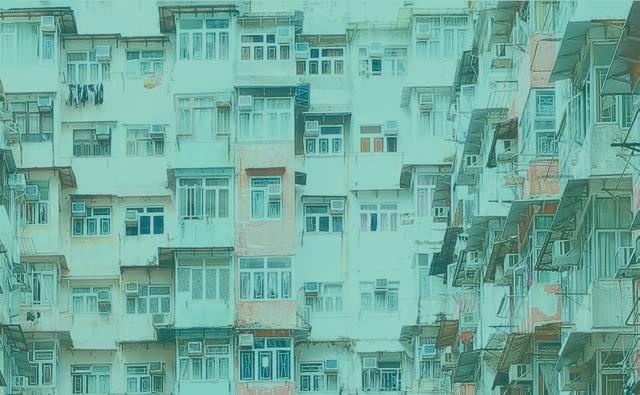

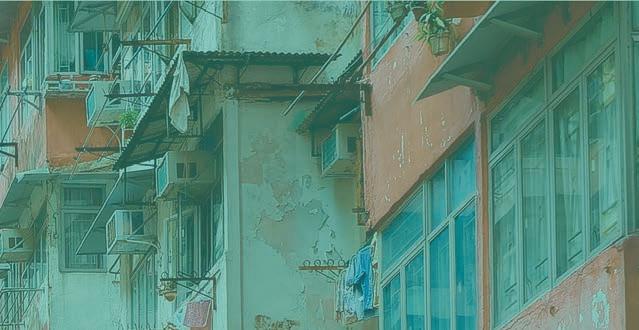






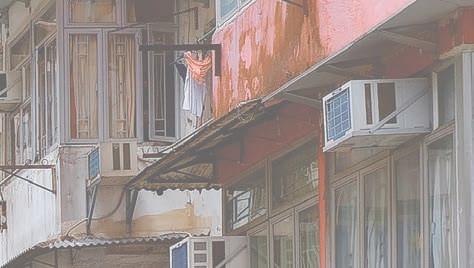


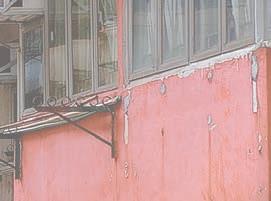
In this chapter, you will explore the concepts of liveability and sustainability in different parts of the world. You will complete various eldwork activities and conduct research to nd out about a range of developments throughout the world, including Perth. You will work through a range of activities and case studies to build your skills and to encourage you to think like a geographer.
After completing this chapter, you should be able to answer these questions:
• What is liveability?
• What factors affect liveability?
• What does liveability mean to you?
• How do we measure liveability?
• What makes one place more liveable than another?
• How does access to services and facilities affect the liveability of a place?
• How does environmental quality affect the liveability of a place?
• How does a feeling of social connectedness affect the liveability of a place?
• How does a feeling of community identity affect the liveability of a place?
• How can liveability be increased?

After completing this chapter, you should be able to:
• conduct a survey and review your ndings
• complete a eld sketch with annotations
• read a topographic map
• create a mind map to brainstorm ideas
• create a line graph to illustrate data over time.
Visit the Interactive Textbook to access:
• interactive review quizzes and Scorcher competition
• videos, image galleries and other extra materials.
Focus questions
• What is liveability?
• What factors affect liveability?
• What does liveability mean to you?
This concept of liveability focuses on why people live where they do. The reasons a person lives in an area or moves to a different area are often based on their perceptions about the liveability of a place.
People live in different areas for a variety of reasons. Some people move for employment and education opportunities, some people move seeking safety and security, and some people stay in an area because of their connection to it.
Activity 6.1
Features of liveability
Examine the places shown in Figures 6.2.1 to 6.2.10 and use Google Street View to explore the areas further. Then, answer the questions that follow.


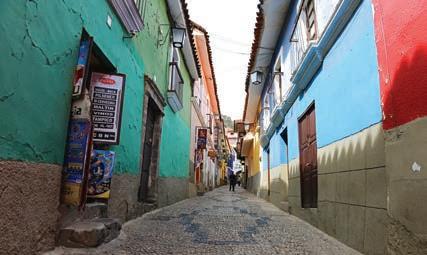
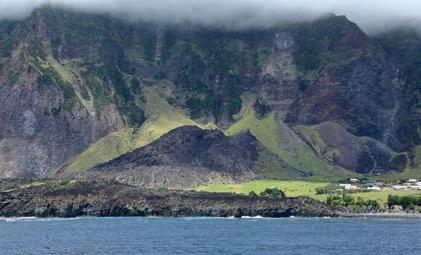
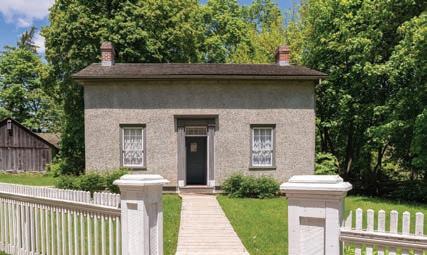
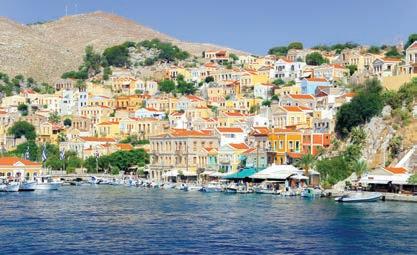

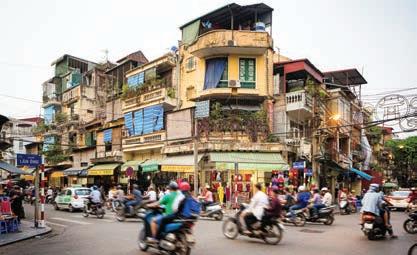
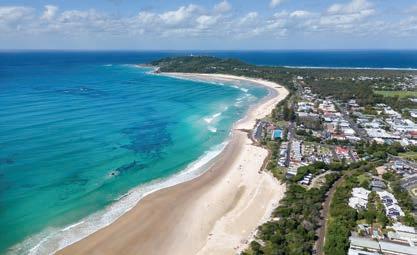

1Identify the features that affect the liveability of each area shown. Consider both the positive and negative features of living in each place.
2 Which place, or places, could you see yourself living in?
Key concepts: place, space, sustainability, scale, change
HASS skills: questioning and researching, evaluating
Liveability is a measure of the living conditions of a certain place. To measure whether a place has a high or low level of liveability, we look at the quality of economic, environmental and social living conditions in that place. The features of a place are often perceived differently because they depend on a person’s background, age and culture. This perception of a space means that different people value diverse features and experience those features in unique ways. Their perception is what creates a sense of place. In other words, your experiences in a space and the meaning you attach to it make up your ‘sense of place’.
In geography, the term space refers to a physical area. This includes all the area’s objects or physical features. Spaces often relate to a point of latitude and longitude, and vary in their scale They can be small, like a room, or large like a city, country or region. How each physical feature is distributed in a space is an important consideration because it contributes to how that space is used. For example, a city or town that is spread out with limited public transport will usually have high use of private vehicles.
liveability the qualities of a place that enable a person to live there with a good standard of living. To work out whether a place has a high or low level of liveability, we consider the quality of economic, environmental and social living conditions in that place.
Activity 6.2
Ranking task
Use the content you have read so far to answer the following questions.
1 With a partner, brainstorm features that make a place liveable.
2 Choose five factors that you consider to be the most important and create a concept map like the one shown here. For each factor, you should also provide a reason for why you think it is significant.
perception the way something is viewed or understood sense of place the meaning that a person or group attaches to a specific area or space space how different places, and the features within places, are distributed scale the size of an area and how it is viewed in relation to another area
Share your concept map work with the class and explain why you think each factor you chose is important.
push factor the reasons people move away from an area pull factor the reasons people move into an area
The choices people make about where they live are often based on push factors and pull factors. A push factor is a reason that causes a person to leave an area, such as unemployment, poverty, lack of access to services and limited opportunities for education. A pull factor is a reason a person moves to or is drawn to an area. These are positive motivations that will bene t the person who is moving to a place, such as better
Case study 6.1
Understanding different perceptions of place
job opportunities, accessible services, education and living conditions.
Forced migration is a push factor. In times of con ict, many people are forced to leave their homes due to fears about their safety and security. These people do not have a choice about where they live, and they simply have to go somewhere so they can be safe. According to the United Nations High Commissioner for Refugees, approximately 122.6 million people around the world were forced to leave their homes at the end of June 2024.
Yasin is a refugee who came to Australia from Afghanistan to escape the civil war. Read what Yasin says about his journey to and first impressions of Australia, then answer the questions that follow.
When I was 10 years old, the decision was made for me to leave behind my parents and five sisters to escape Afghanistan with my uncle and cousin. At that time, the Taliban had taken over, and because our family was Hazara, there were already threats towards us. Unfortunately, as my parents were farmers, they only had enough money to pay the smugglers to take one person out. And my parents chose me.
Once I arrived in Pakistan, I was very relieved to be safely out of the war, but at the same time I was really missing my family, and often cried myself to sleep. After a month, we flew to Singapore, where we got on a big ship to Indonesia. That trip was horrible, as we were hidden in the bottom with the rubbish. It was steaming hot, and I couldn’t breathe. Next, we and 90 other people got on a fishing boat to Australia. That trip lasted seven days. Even though it was 22 years ago, I still remember it like it happened yesterday. The first night was very stormy. The boat going around in circles, and all the men were emptying out buckets of water from the engine room. A lot of people were crying because we all thought we were going to die. But eventually the storm calmed down and the boat start going forward.
From then on, that trip was one of the best experiences I have ever had. All we could see was the colour blue, and to me it was just beautiful. Every night for seven nights, I would sit at the front of the boat, watching the ocean, the stars and the moon. Before that, I never knew the ocean existed, or about sharks, or even that the world was so big, because I had never been to school. So even though everyone else was crying, for me, everything was amazing! Figure 6.2.11 Yasin ➜

On the last night, a storm hit us again and damaged the engine, and after that, for many hours, we just floated on the Indian Ocean. I became very frustrated, and started to panic. Finally, we saw the Australian navy approaching – I’ve never seen people so happy as we were at that moment! I was carried onto the ship, and then we were taken to the shore, where they gave us food and clean clothes. When I took off my t-shirt, half of my skin came off with it, and to this day, I still have a scar on my shoulder.
For three months, we stayed in a detention centre in Darwin. I actually loved it there! There was aircon, television, a playground. School as well. All things I had never had before.
Source: Yasin, New Humans of Australia website, 7 July 2022
Analysis questions
1 List the push factors that forced Yasin to leave his home.
2 Describe Yasin’s journey from Afghanistan to Australia.
3 Compare the liveability of Yasin’s homeland, Afghanistan, with his new home of Australia. What are the benefits of this new home for Yasin? (It might help to think about the access to services and new opportunities.)
Key concepts: place, environment, interconnection, sustainability, change
A person, family or community may have historical ties or cultural ties to a location, and these ties can have a signi cant role in shaping their perception of a place. For example, we often see homeowners defending their property against a bush re while authorities urge them to evacuate. This evokes many questions about how a place can have so much meaning to some people that they would put themselves into harm’s way to protect it.
HASS skills: evaluating
In countries with histories of resilience, such as rebuilding after a natural disaster or con ict, there is often a sense of pride and connection between the people who live there. The notion of leaving after overcoming adversity is often dif cult for some to fathom. Familial ties to a location can also in uence whether someone lives in a certain place. Consider whether your own family has lived in the same suburb, town, state or country for multiple generations.
historical ties meaning related to aspects of the past cultural ties meaning related to habits, traditions or beliefs in a society
Case study 6.2
A resilient community: Tukuraki village
Fiji is no stranger to natural hazards. Tropical cyclones, floods and earthquakes are common to this region. Tukuraki, a remote village in western Viti Levu, provides an example of a village that, in the face of adversity, persevered to keep its community together. In 2012, a landslide occurred due to heavy rainfall and flooding that devastated the village area, causing damage to homes, the water supply and roads, and claimed four lives. The community was temporarily relocated as the village was deemed unsafe by the government. Less than 11 months later, a category 4 tropical cyclone damaged the newly built temporary homes and surrounding crops were lost. Despite this, some villagers attempted to return. In 2015, a new village site was approved, and construction began.
The people of Tukuraki endured another tropical cyclone in 2016, and again the community was impacted. Today, the community lives at the new village site in homes designed to withstand future hazards.
Analysis questions: step in, step out, step back
Complete the questions below to examine the perspective of this community in comparison with your own.
1 What do you think this community might feel, believe, know or experience?
2 What would you like or need to learn to understand this community’s perspective better?
3 What do you notice about your own perspective and what it takes to take somebody else’s?
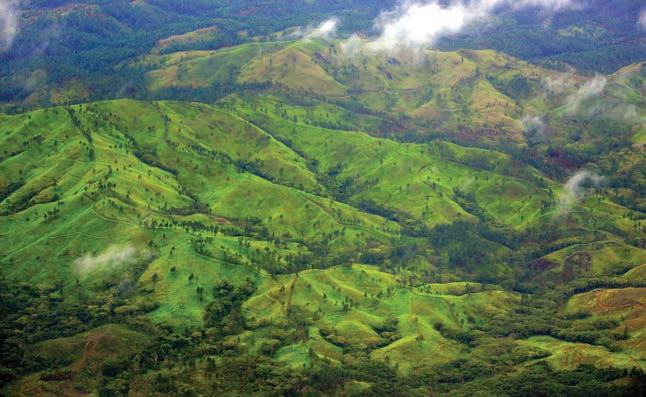
Key concepts: place, space, interconnection, environment
Culture, the habits, traditions and beliefs of a society, can in uence where and how people live. Places with rich cultural offerings, such a theatres, museums, music and art venues, often attract people who value these things. Paris, New York and Melbourne are considered vibrant cultural centres, which attracts people seeking this lifestyle to move there.
People also tend to live where they feel a
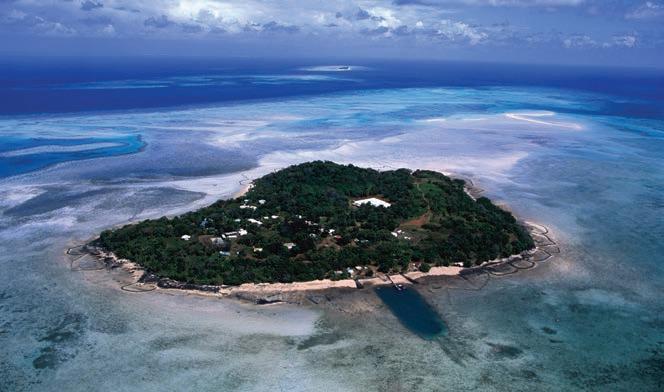
skills: questioning and researching, analysing, evaluating
sense of belonging, often linked to their religion, culture or linguistic identity. This means that people determine where they want to live based on whether they can freely speak their language, practise their chosen religion or continue their traditions.
First Nations Peoples have a deep spiritual connection to the land that encompasses their identity, culture and traditions. The term given to this connection is ‘Country’. Country includes all living things and the knowledge, cultural practices and responsibilities that connect them. Torres Strait Islander Peoples’ connection to the land and sea is expressed as ‘Ailan Kastom’, translated as island custom. The term refers to the unique culture, traditions and practices of the Torres Strait Islander Peoples that maintain their connection to sea, land and their ancestors. Many First Nations Peoples, where possible, live on or near their traditional lands to maintain this connection.
Jeneita is a young Indigenous woman who grew up in Perth, and currently works as an Aboriginal and Islander Education Officer in her local community. She explains that any place can have a spiritual or cultural connection; it can be your home, your family’s origins or a place where you feel in sync with yourself. Read what Jeneita says about growing up in Boorloo, then answer the questions that follow.
Growing up in Perth, or Boorloo as it’s known in Noongar, has profoundly shaped my identity as a young Indigenous woman. The connections I have to places like Coogee, Woodman Point, Point Walter (Dyoodalup), and Fremantle (Walyup) are incredibly meaningful. These are the places where my family are from and gathers for cultural celebrations and bonding moments, serving as vital opportunities to honour our heritage, share stories, and pass down traditions to the next generation.
Every time I think of or visit these places, I feel a profound cultural and spiritual connection that reaffirms our identity and strengthens the bonds that unite us as a community. Perth (Boorloo) holds immense spiritual significance for me, embodying the rich culture and stories that have been passed down through generations. The teachings from my Elders have deeply shaped my understanding of our connection to the land, while learning the Noongar language has enriched my appreciation for our heritage and identity.
The dances we perform connect us to our ancestors and the spirits of the land, with each movement telling a story. The art we create, inspired by our surroundings, visually represents our culture and helps keep our traditions alive, fuelling my passion for preserving and sharing our culture.
My spiritual connection to Boorloo is a vital part of my identity. It embodies the rich culture and stories that have shaped me, and even though some loved ones are no longer with me, I will always feel a deep connection to this land. The teachings, traditions, and gathering have shaped me as who I am today.


Investigate the cultural and spiritual importance of your local area.
1 Identify the Traditional Owner/s of this area.
2 Describe the importance of the area to their history, culture or spirituality.
3 Does your local area use dual naming of sites? Provide an example if relevant.
4 Explain why this is important in Australia.
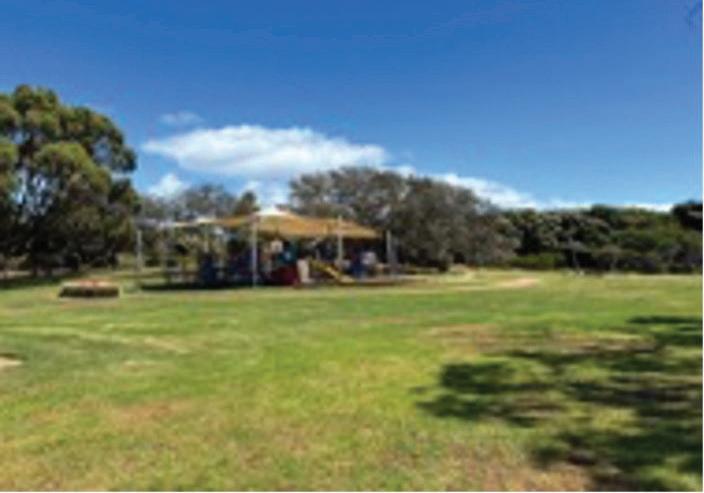

Key concepts: space, place, interconnection
A comparison between Perth and Vienna
HASS skills: questioning and researching, communicating and reflecting
Read the information provided to you about Perth and Vienna, and then answer the questions that follow.
Perth is the capital city of the Australian state of Western Australia. It is located on the western coast of Australia and is in the lands of the Whadjuk Noongar people. The metropolitan area of Perth has 2.6 million residents.

of the Darling Scarp to the east acts as a natural
The city centre lies along the banks of the Swan River, approximately 20 kilometres inland of the Indian Ocean. The Perth metropolitan area currently extends as far north as Two Rocks and south to Mandurah. The presence of the Darling Scarp to the east acts as a natural boundary to the urban area. This close proximity to the Darling Scarp and its ranges has meant that Perth has experienced many bushfire events, including the Roleystone/ Kelmscott Bushfire 2011 and Wooroloo Bushfire 2021. The city experiences a Mediterranean climate characterised by hot, dry summers and mild, wet winters. It is a hub for state government, business and education in Western Australia.
metropolitan area a major city and its nearby suburbs or towns that form a continuous urban area



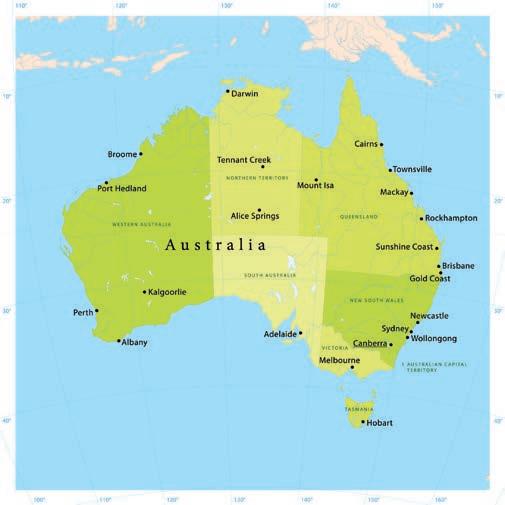

Public transport in Perth is coordinated by Transperth, which provides trains, buses and ferries. Tickets can be bought for single use or a SmartRider card can be used to access the network. A range of concessions and special fares are available for pensioners, students, families and concession card holders. As the city is expected to grow, the public transport system is planned to grow with it. This growth will include additions to the rail network and a high-frequency bus-transit system. These rail and bus networks will link together to provide the city with stronger options in public transport.
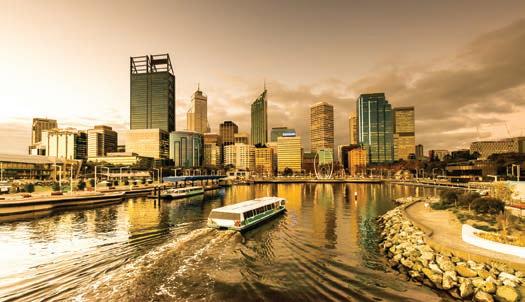
Homes in Perth are more affordable than those in Sydney and Melbourne. This is an economic factor that helps to make Perth liveable. Many people have moved from Sydney and Melbourne to Perth because of this economic pull factor. High-rise apartment buildings are increasingly common in the suburbs close to the CBD. Suburbs further away from the CBD tend to have low-density houses and townhouses.



The people of Perth embrace an outdoor and active lifestyle. Most residents of the city live within an hour’s drive of either the beach or the Perth Hills, both of which offer a range of recreational activities. Perth is also close to many weekend destinations, including the South West region. Destinations such as Margaret River, Albany and Busselton are popular for the range of local food, culture and nature experiences. Perth’s suburbs have high levels of access to services such as schools and healthcare. Crime rates are relatively low and the city is generally considered to be safe.

Vienna is often listed as one of the world’s most liveable cities. It is the capital of Austria and has a population of 2.0 million people (2.8 million within the metropolitan area). The city is located on the banks of the Danube River. The city has an oceanic climate with warm summers and cold, dry winters. Humans have occupied the land as far back as the Stone Age. The bubonic plague (Black Death) struck in 1679, killing one-third of the city’s population. The city was also deeply affected by the world wars. Vienna was bombed 52 times and 20 per cent of the buildings were destroyed during World War II. This long history has shaped a unique city.

The centre of Vienna is on UNESCO’s World Heritage List. For this reason, there are no high-rise buildings within the area. The buildings in the historic city centre have a wide variety of historic design features. The centre includes castles, gardens and monuments.

Vienna is one the wealthiest regions within the European Union. The city is Austria’s main centre for tertiary education; it has many universities and professional colleges. The Viennese value education, and their city has been home to some of the great thinkers of history, such as the founder of psychoanalysis, Sigmund Freud.
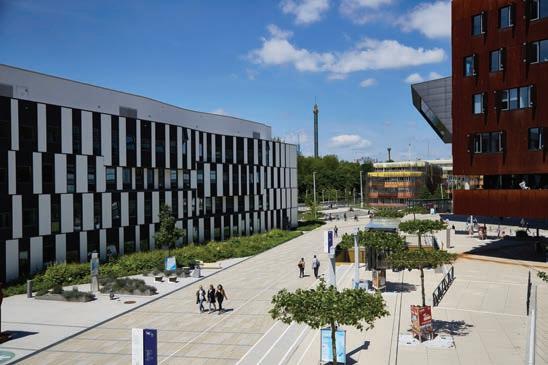
Vienna has four main forms of public transport. There is a subway (U-Bahn), a local train system (S-Bahn), a tram system and a bus network. The public transport system in Vienna is extensive and frequent. It is also less expensive than in other major cities in Europe. A yearly public transport ticket costs only one euro per day. These low costs and the high levels of service that accompany them enhance the city’s liveability.
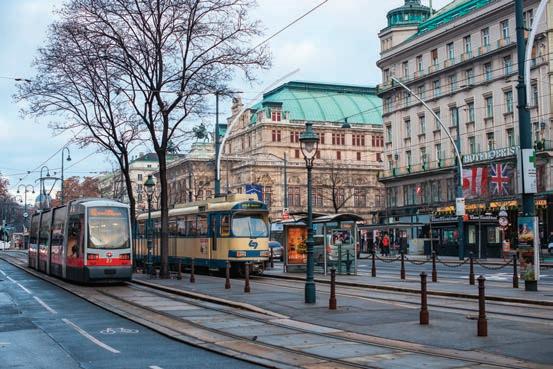
Vienna has a long and proud history of art and culture. Some of the most celebrated composers and musicians are associated with Vienna, including Mozart and Beethoven. The city is home to many theatres and opera houses. Vienna is also home to many sporting teams that compete nationally and internationally. The long history, cultural pride and relaxed atmosphere of Vienna make it one of the most liveable cities in the world.
1 Create a Venn diagram so that you can see the similarities and differences between Perth and Vienna. You can use the information in this case study and your own online research.
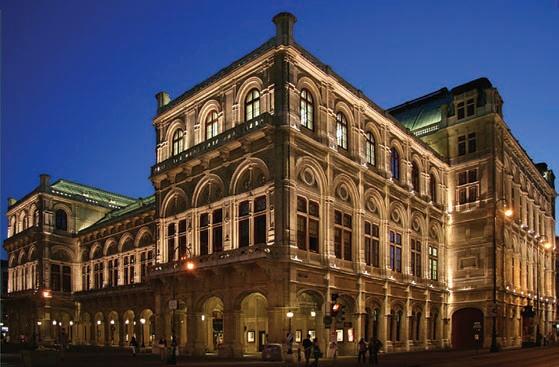
2 Which features of liveability in Vienna could be used to improve the liveability of Perth?
Key concepts: place, space, environment, interconnection, sustainability, scale, change
HASS skills: questioning and researching, analysing, evaluating
See, think, wonder
Copy the following table onto a piece of paper.
See
What are the things you see, observe or notice in this image?
Think What do you think about the liveability and sense of place in this image? Why?
Wonder What does it make you wonder about the space?
Figure 6.2.27
Figure 6.2.28
Figure 6.2.29
With a partner, use Figures 6.2.27, 6.2.28 and 6.2.29, which show different places in Perth, to complete the table.
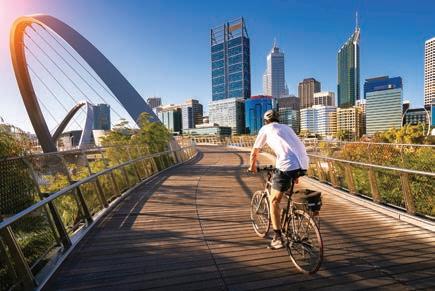


Mapping my local area
1 Using Google Earth, create an annotated map of your local area. Mark points of interest and features of liveability in the area.
2 Describe the distribution of your area’s features. (Where are these features located? What does the space look like?)
3 Evaluate the liveability of your local area. Consider what features make it a great place to live? List features that could be added to improve your area.
Key concepts: place, space, scale
HASS skills: analysing
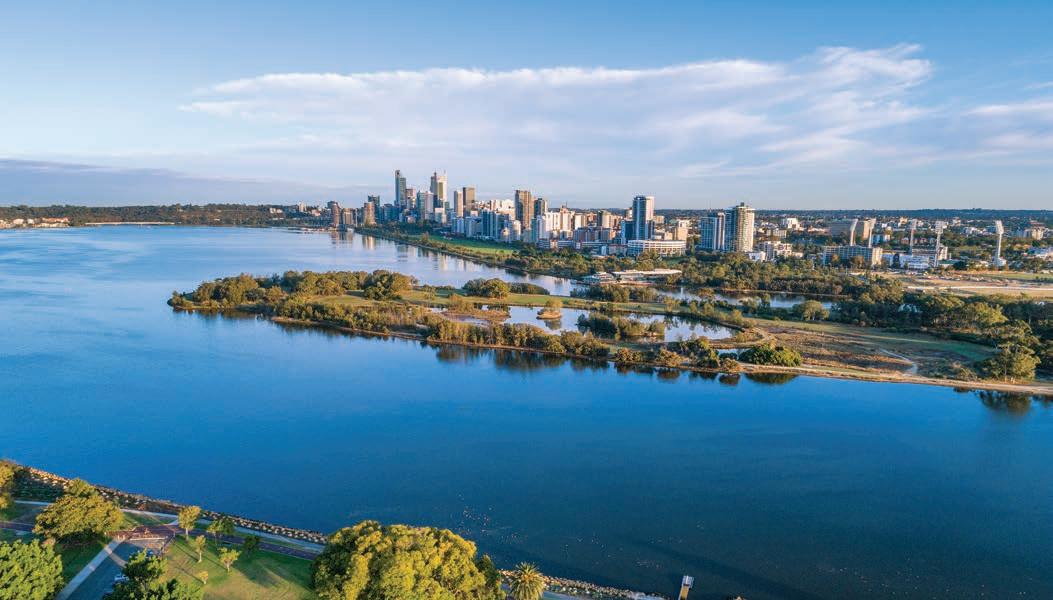
Fieldwork 6.1
Conducting a survey of the local neighbourhood
Fieldwork in Geography consists of practical activities that are done away from your classroom at school. It can involve a range of activities, including: observing, questioning, planning, collecting, recording, evaluating, representing, analysing, concluding, communicating, reflecting and responding.
In this fieldwork task, you will visit your neighbourhood and answer some questions. These questions will form a class survey about the local neighbourhood. Here are the steps to take.
1 As a class, discuss the criteria to make sure that you understand what each criterion is asking you to look for.
2 Complete the survey form, based on the suburb you live in.
3 Compare your completed survey with people in your class who live in the same area as you.
4 Compile your survey results for your suburb and identify the top five features of liveability in your area.
5 In a small group, make a poster that advertises these features of liveability for your local area.
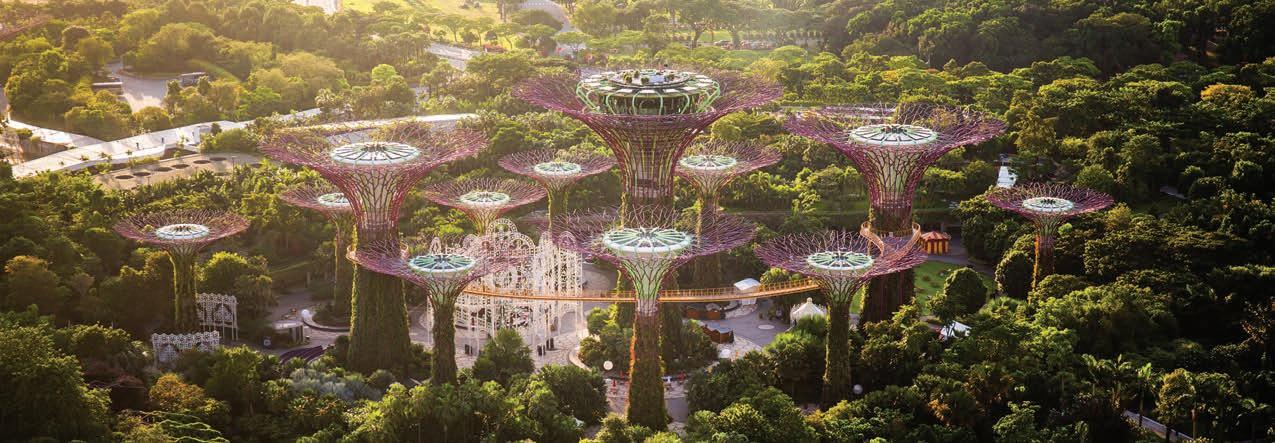
Several organisations conduct research on the liveability of cities throughout the world. Each year, these organisations rank cities based on set criteria. Some of the measures relate to physical infrastructure and features like transport, while other measures are more subjective and relate to people’s perceptions, such as whether an area is safe. Geographers and urban planners use the data to evaluate the features of a place that enhance or degrade its liveability. This evaluation is then used in their planning decisions so that they can make changes to other towns and cities to improve their liveability.
Judgements about a place’s liveability are based on perceptions. A person’s perception comes from their personal experiences, background and values.
Different people value different features of a space and are drawn to those features based on their preferences and values. This attraction to a feature is a pull factor. For example, young adults may be drawn to the bright lights and buzz of the city, and therefore choose to live and work there. They can then easily access the features of the city they like. Other age groups or families may value more space. They might choose to live further away from the city so that they can access more

open areas, such as parks, bush walks and other natural features. While these people’s daily travel to their jobs may be longer, they have the space and the lifestyle that they value. People judge the liveability of a place based on tangible factors like infrastructure and services, as well as intangible factors like safety and culture.
Environmental, social and economic factors in uence the liveability of a place. Liveability, or quality of life, is often measured by factors like access to fresh water, food, housing, transport, healthcare, education, and a safe and stable environment.
Mercer, one of several organisations that measure liveability, uses the following criteria to measure liveability in the Mercer Quality of Living Survey:
tangible things that you can physically see and touch intangible something that exists but you cannot see or touch it
•stable and reliable government, legal and law-enforcement services
•economic and business environment
•availability and quality of medical services, health and hygiene (including sewerage, waste disposal and levels of air pollution)
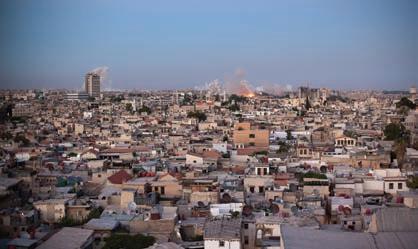
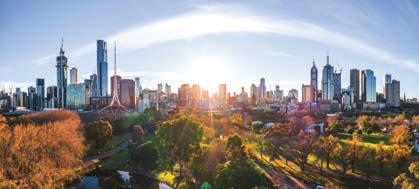
•education
•public services and transportation (including electricity, water, public transportation and traf c congestion)
•recreation, such as restaurants, theatres, cinemas, sports and leisure
• consumer goods, such as the availability of food and a range of other items
•housing, including rental housing, household appliances, furniture and maintenance services
•natural environment, including climate and records of natural disasters.
Mercer’s Quality of Living Survey in 2024 used these criteria to rank 241 cities. The cities in Europe dominated the top 10, with the exception of Auckland ranking 5th and Vancouver ranking 7th. While Zurich attained the top ranking in the survey, Sydney and Melbourne were placed in the top 20 at 12th and 20th.
Another organisation that studies liveability around the world is the Economist Intelligence Unit (EIU).
Every year, the EIU ranks over a hundred cities around the world. It measures over 30 different factors about each city, such as how good the education and healthcare are, how clean the water is, and if there is a lot of crime. Each city is then given a score out of 100, with a score of 1 being completely horrible to live in and 100 considered as being as good as it gets.
According to the EIU Global Liveability Index, the most liveable city in 2024 was Vienna. Vienna received a score of 98.4, while Damascus was the lowest-scoring city, with a score of just 30.7. Australia had two cities inside the top 10, including Melbourne (4th, with 97.0) and Sydney (tied 7th with Vancouver at 96.6). Perth tied with Geneva in Switzerland for its number 15 ranking, scoring an overall liveability rating of 95.9 out of 100.
Conduct online research to access the most recent reports from Mercer and the EIU on liveability. Then, follow these steps.
1 Select a liveability report.
2 Choose two environmental, economic and social measures used in the index.
3 Conduct research to compare a city in the top five with a city from the bottom five of your chosen index. Use the criteria that you selected in step 2 to make your comparison.
4 Create a presentation of your findings.
Key concepts: place, space, environment, change HASS skills: questioning and researching, analysing, evaluating, communicating and reflecting
During election campaigns, candidates often pitch policies and promises that target improving the liveability of cities and states.
1 Research a recent local or state election. Identify your local council or electoral district and the candidates running at the time.
2 Select 2–3 candidates and research their election campaigns. Outline policies or election promises that link to factors of liveability. Explain how their policies aimed to improve liveability in your local council area, city or state.
3 Identify who won the position or seat at the election. What initiatives or laws have they supported or implemented that have improved (or decreased) the liveability of your local area, city or state?
4 In the Australian system of government, power to make laws is divided between local, state and the Commonwealth governments.
a Describe what each level of government is responsible for. You can refer to Chapter 1 of this textbook to help you.
b Which level of government do you think has the greatest potential to influence the liveability of our cities? Justify your answer with arguments supported by examples.
Key concepts: place; environment; interconnection; sustainability; change; democracy; participation; rights and responsibilities
HASS skills: analysing, evaluating, questioning and researching, communicating and reflecting
1 Define liveability.
2 Describe the difference between a tangible liveability factor and an intangible liveability factor. Give one example of each.
3 Identify the highest ranking and lowest ranking cities in the world in 2024 according to the EIU Global Liveability Index.
4 State how many of Australia’s cities ranked in the world’s top 10 according to the EIU Global Liveability Index. Which cities were they?
5 Why do geographers and urban planners use data to evaluate the features of a place? Interpret
6 Explain what features would make Perth number 15 of the most liveable cities.
7 Explain why Damascus is one of the world’s least liveable cities. Argue
8 What do you think we can learn from looking at the liveability of cities from around the world?
Key concepts: place, space, environment, interconnection, sustainability, scale, change
HASS skills: questioning and researching, analysing, evaluating, communicating and reflecting
• How does access to services and facilities affect the liveability of a place?
accessibility resources or services are available and affordable for all people to use sanitation the system for taking dirty water and other waste products away from buildings to keep places clean and protect people’s health
Accessibility, the access to facilities and services, affects the liveability of a place. Adequate access needs to be available and affordable, and facilities and services need to be environmentally, socially and economically sustainable. This is so future generations can continue to live in the area and bene t from access to the same quality of facilities and services.
For a settlement to function effectively, residents need access to services like clean, fresh water. Water is vital to a settlement, which is why so

many cities are located close to major rivers. As modern cities grow, the people that live in them need access to a variety of services and infrastructure. This includes sanitation, housing, adequate and affordable food, employment and healthcare. Residents also need to feel connected. Transport plays a vital role in connecting people and places. Public transport gives people the ability to go to different places and access services, which is especially important for those who do not have access to private vehicles.
See, think, wonder
Observe Figure 6.3.1 and complete the following questions.
1. See: What do you see or notice about the village?
2. Think: What do you think life would be like for people living here?
3. Wonder: What do you wonder about Ko Panyi?
Key concepts: place, space, interconnection, environment
HASS skills: questioning and researching, analysing, evaluating
To enhance the liveability of an area, accessibility to other locations, services and facilities is vital. Accessibility is often best provided through roads and public transport. Sometimes the cost of a car can be unaffordable and, at other times, people make the choice not to have a car. Some social groups, such as migrants, international students, the elderly and younger people, rely heavily on public transport to feel connected and to move around. To ensure sustainability and equity, large settlements need to provide public transport options, such as buses, trains, ferries and trams.
Many cities across the world are transforming their cities into pedestrian and bicycle friendly spaces. While this is usually to target environmental issues such as air pollution, providing cheap and affordable methods of transport can make a place more liveable. To encourage this transformation, local businesses or councils often offer bike-sharing programs where residents and tourists can hire a bicycle or e-scooter to commute around the area. According to Guinness World Records, the largest bike-share program in the world is located in Hangzhou, China. Its network contains 84100 bikes across 3572 stations. Some locations in Western Australia offer e-scooter hire

to promote eco-friendly and convenient travel options. These currently include City of Perth, City of Stirling, Albany, Rockingham, Bunbury, Esperance and Geraldton.
Ensuring safe and reliable access for people with a disability, travelling with young children or the elderly is also essential to forming an inclusive society. Making changes to public transport or facilities encourages independence. For people with disabilities, it can allow them to travel without relying on others. For elderly individuals, it can maintain their autonomy and mobility. For parents with children, it can lessen the stress of using the service.
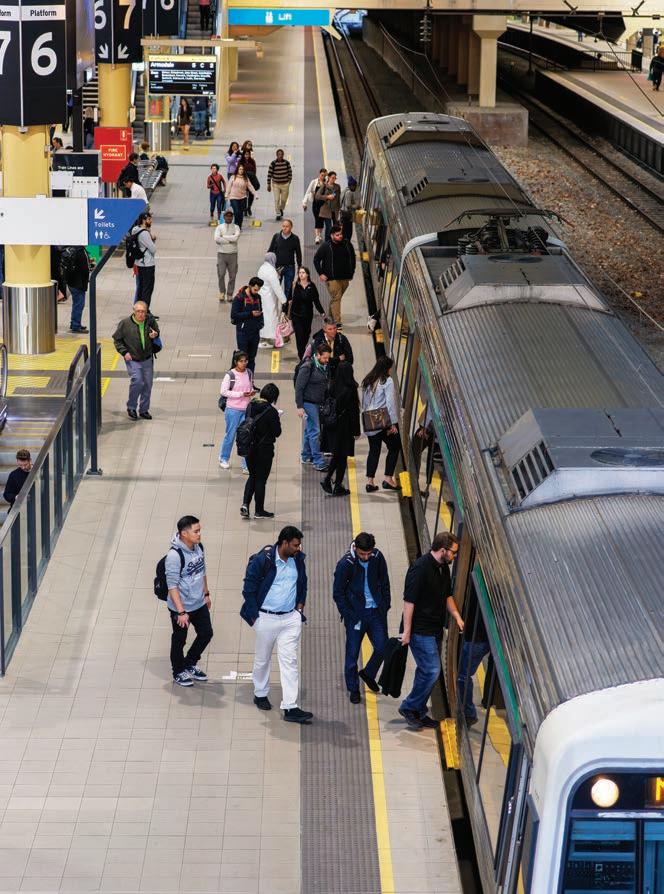

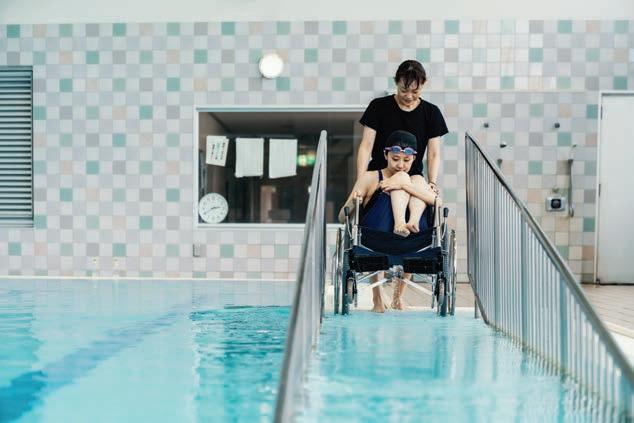
Activity 6.4
How accessible is your school?
How easy would navigating your school be if you relied on a wheelchair or motorised scooter? Is your school designed to support someone who is blind or has a vision impairment? Create an observation chart to evaluate your school’s level of accessibility by completing short journeys from one location to another. An example below will help you get started.
Area of observationLevel of accessibility (1 being not accessible and 5 being easily accessible)
Classroom to the library Library to the oval
Reason for the rating
After recording your observations, analyse your findings by completing the following questions.
1 What physical barriers did you notice that might make it difficult for someone using a wheelchair, crutches or walker to navigate the school grounds?
2 Were any areas of the school easily accessible to all students?
3 What actions would you take to make a more inclusive school environment?
4 How did walking through the school from the perspective of someone with a disability change your understanding of accessibility?
Key concepts: place, space, interconnection, change
affordability the ability to afford a service or attendance of a facility – for example, going to the doctor rural–urban migration when people move from rural areas to urban areas, usually for better opportunities such as employment and education
Sustainable access to facilities and services enhances the liveability of an area for its residents. The availability and affordability of services and facilities acts as a pull factor by attracting more people to a place. This attraction leads to population growth.
Over time, Western Australia’s population has grown, partially due
HASS skills: questioning and researching, analysing, evaluating
to its pull factors. However, a lack of accessibility to services in rural and remote areas has often led to rural–urban migration. This means that people move from rural areas to live in cities.
To sustain regional centres, state governments are giving more power to local governments to run local services. This makes it easier for people in rural areas to access the services that they need, so that they don’t feel the need to move to cities.
Representing data in a line graph
Simple line graphs provide an effective way to show change over time. The graph here is an example of a line graph showing population change over time for Australia.
Create a line graph that shows Perth’s population growth from 1988 to 2024, using the data in Table 6.3.1.
Resident population of Perth
Table 6.3.1 Estimated resident population in Perth from 1988 to 2024
population density a standard measurement of people per square kilometre, which can be calculated at different scales (suburbs, cities, countries, regions) urban planning the process of planning the layout and infrastructure of a place
megacity a city with 10 million or more residents
To construct a line graph, follow these steps:
1 Draw a horizontal line. On the far left of the line, draw a vertical line upwards. The horizontal axis is called the ‘x-axis’. The vertical axis is called the ‘y-axis’. The point where the x-axis and y-axis intersect is called ‘the origin’.
2 Mark in 19 points along the horizontal axis and 13 points along the vertical axis. These points should be equal in scale. Leave the first point (the origin) blank.
3 Below the horizontal x-axis, write in the progression of years from the beginning of your data set to the finish. Refer to Table 6.3.1 for the information you need.
4 To the left of the vertical y-axis, write zero at the origin and then work your way up each of the 13 points by 0.5 until you reach 2.5. This is enough to cover your smallest and largest y-values.
5 Neatly label each axis and give the graph a title.
6 Plot each value on the graph by creating a dot where the population data meets the year. For example, where the data on the left meets 1.2, measure across to where this lines up with 1988 and mark the spot with a small dot.
7 When all the data has been marked on the graph, join the points with a continuous hand-drawn curve.
8 Now stand back and examine your line graph. What does it tell you about population growth in Perth?
Key concepts: place, space, scale, change
Population density refers to the number of people per square kilometre. This can be calculated for a small space, a city, a country or a region. Population density is one of the most important aspects of urban planning. Urban planners use information about a population to make decisions on future services and infrastructure. Population density determines the types of dwellings that can be constructed in an area and the services that are provided. If density is low, then services are sparse and less ef cient. If density is too high, an area can become overcrowded and uncomfortable. A well-planned urban area usually has
HASS skills: analysing, evaluating
a mixture of housing, commercial and industrial uses.
High population densities are a major feature of megacities. A megacity is a city with a population of 10 million people or more. Megacities often have major social and economic pull factors, such as housing, education and employment. These factors have led to rural–urban migration, which is also a phenomenon known as urbanisation. Currently, more than half of the world’s population lives in an urban area. This urbanisation can sometimes lead to improvised settlements, known as slums. Services can become dif cult to deliver in these areas and so living standards are often poor.
Comparing images
Look at Figures 6.3.6 to 6.3.9 and choose which images are good examples of:
1 high-density living
2 low-density living
Some pictures may fit into more than one category.
3 a slum
4 a megacity.
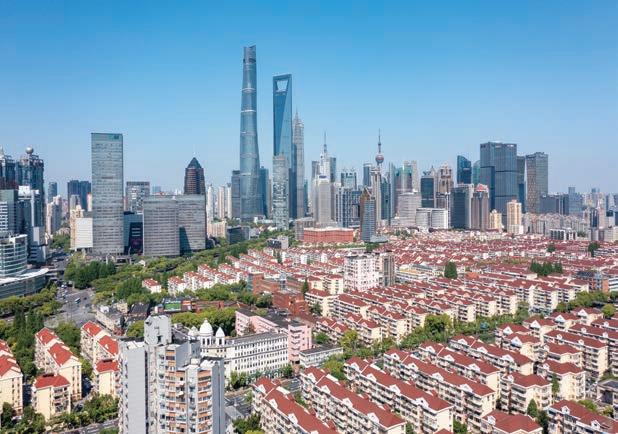



Key concepts: place, space, scale HASS skills: analysing, evaluating
Calculating population density and interpreting data
The population density of an area is calculated by dividing the total population by the total land area. Use the equation here to calculate the population densities for the countries provided in Table 6.3.2. Copy and complete the table with your calculations. Then, answer the questions that follow.
Population density = Total population Area in square kilometres
Calculating population density
Table 6.3.2 Population and land area of selected countries
1 Which country has the highest population density?
2Compare Australia’s population density with that of other countries listed here. Why is Australia’s population density so low?
3Calculate the population density of your classroom by using the following steps.
a Measure the dimensions of your classroom using a tape measure and determine the number of square metres of the room. (For example, if a room is 6 metres wide and 6 metres long, it is 36 square metres.)
b Count the number of people in the class.
c Divide the number of people by the size of the classroom to get the classroom population density.
Key concepts: place, space, interconnection, scale
Large-scale services are sometimes dif cult to provide to rural communities because these areas are often geographically spread out and the populations are small. However, advancements in technology have improved the effectiveness of providing
HASS skills: analysing, evaluating
services to rural areas. For example, healthcare providers are improving healthcare in these locations through technology. Increasingly, doctors are consulting with patients in rural and regional areas through electronic communications. Some rural and regional hospitals are also using nurses and other healthcare professionals to consult with patients rather than doctors.


For more critical cases, transport and accommodation are provided at a very low cost to rural and regional residents so that they can access the treatment services in larger urban areas.
Rural areas have also seen improvements in accessing educational services. Because of digital technology, students who live in rural and regional areas now can access distance education. Previously, students accessed lessons via radio communication. But, as technology improves, students are increasingly able to access their lessons online and interact with their teachers using live streaming. Students are also better able to share their work with their teacher and collaborate online with other students.
5 A green space in your suburb is scheduled to be developed into an inclusive and accessible recreational space for young people. Conduct further research and draft a design to meet the intended purpose of the space. Be sure to include labels and annotations to explain your design.
6 ‘Accessibility needs to be considered by urban planners.’ Do you agree with this statement? Explain your reasons.
HASS concepts: place, space, interconnection, change
HASS skills: questioning and researching, analysing, evaluating, communicating and reflecting
• How does environmental quality affect the liveability of a place?
Water and air quality are essential factors in determining the liveability of a place. Access to clean water and air improves the health of a population as well as the natural environment. Living near oceans, rivers and even open space, can also in uence people’s decisions about where to live as it can provide a certain lifestyle.

Air pollution has become a larger problem as cities become busier. This has severe impacts on people’s health, causing more premature deaths than smoking cigarettes. In Oslo, the capital of Norway, many initiatives are reducing air pollution. ‘CityTrees’, which are park benches covered in a living wall of moss, absorb pollution. One CityTree cleans the air more effectively than 275 real trees. Oslo has over 23 000 charging stations to encourage electric vehicle use, and its buses are powered by biogas, which is produced from city sewage.
Many cities are built close to river systems to take advantage of the resources of the natural environment. This proximity to a river system means that there is consistent access to fresh owing water for the population. The river is also useful for transportation to ship people and goods. As discussed in the previous chapter, water was one the key reasons for where civilisations grew. Living near an abundant source of water allowed humanity to shift from a predominantly hunter-gatherer way of life to create the rst permanent settlements.
Approximately 2.4 million people live in and rely on the Murray–Darling Basin, located across south-eastern Australia. The region provides an abundant source of water and fertile soil, which is ideal for agriculture. In fact, 40 per cent of all Australian farms are located here. This illustrates that rivers and soil can be influential factors for where people who wish to pursue agriculture would choose to live and work.
Around 122 000 First Nations Peoples live in the region. The Murray River (Murrundi), the Darling River (Barka) and its tributaries have been home to more than 50 different First Nations groups for over 50 000 years. They have a strong spiritual connection and obligation to care for the river basin. Numerous sacred sites are located in the region, with many listed as heritage sites to ensure their protection. Historically, the waterways have provided an ideal location for traditional practices such as fishing, hunting, and harvesting medicinal plants. Today, living in the traditional lands of their ancestors helps to maintain connection with Country and ensure the continuation of their culture.
Research activity
1 Select one of the following topics.
• Ngaut Ngaut Conservation Park
• Wahrung (Gunbower National Park)
• Coorong National Park
• Mungo National Park
2 Name the Traditional Owners of this location.
3 Explain why this location is significant to their culture, identity or spirituality.
Key concepts: place, space, environment
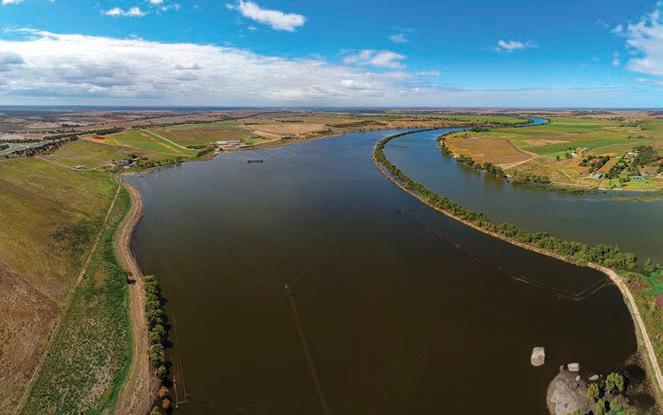
HASS skills: questioning and researching, analysing, communicating and reflecting
A key element to Australian culture is ties to the coast. Proof of this is where most Australians live. Over 87 per cent of Australian residents live within 50 kilometres of the coast. For some people, the ability to access the coast can enhance their quality of life. Coasts offer lifestyle, economic and environmental bene ts. Living near the coast means a more moderate climate as the sea breeze can in uence temperature. Coastal locations often have many job opportunities, in shing, tourism and shipping industries, which is a strong pull factor for many people when deciding where to live. Oceans provide an array of water-based recreation. The scenic beauty of the coast increases an area’s appeal and often in uences housing prices.


Creating a field sketch
Use Figure 6.4.5 to construct a field sketch by following these steps.
1 Study the scene or photograph you want to draw and select the features to be sketched. It may be helpful to use a viewing frame.
2 Using a soft pencil (it makes it easier to erase mistakes), draw a frame the same shape as the scene you wish to sketch on a blank piece of paper.
3 Divide the scene you wish to sketch into three parts: the foreground, middle distance and background as shown in the figure.
4 Sketch in the main features or lines of the scene. This may include the horizon and other prominent landform features.
5 Mark in other prominent features or lines, such as roads, railway lines, rivers or powerlines. These will provide reference points for the addition of detailed features.
6 Add detail if appropriate. Details may include buildings, trees and fences.
7 Use shading and colour to highlight the key features of your field sketch. Avoid making your sketch too cluttered.
8 Label the main features shown in your sketch.
9 Give your field sketch a heading and note the date of the observation.
10 Highlight your frame with a black felt-tipped pen.
Key concepts: place, space, scale
Open space contributes to the liveability of a place by enhancing the quality of life, promoting healthy habits and fostering a sense of community. Open spaces such as parks, gardens and recreational areas encourage physical activity. Physical activity has many bene ts for the human body, such as reducing the risk of obesity, heart disease, stress, anxiety and other health issues. Open spaces provide places for community to interact, leading to stronger social ties and fostering inclusivity. Consider your local oval or sports facility as an example of this.
HASS skills: analysing

Designing a place to maximise the use of renewable resources is also important. If this is done, the sustainability and liveability of a place increase, which then in uences the willingness of people to remain or to move to that location. Many locations around the world are using innovative solutions to improve the quality of the environment.
The energy and structures used in cities tend to attract and produce heat. This generation in heat is known as a heat island. To reduce the effects of heat islands, major cities in Germany have introduced green roofs. A green roof involves partially or completely covering a roof with vegetation. A green roof creates insulation, provides habitats for local species, absorbs carbon dioxide and helps to cool air temperatures. As of 2020, Germany had 120 million square metres of rooftop vegetation. The use of green
roofs in Germany has been so successful that they are now being used in designs in other parts of the world.
In Santander, Spain, smart technology is already making the city more ef cient: rubbish bins send alerts when they are ready to be emptied, and streetlights automatically dim when no one is on the street.
In this topic, we have examined some of the ways that environmental quality, as well as access to services and facilities, affects the liveability of a place.
In the next activity, we use a topographic map to examine the distribution of human features (such as services and facilities) and natural features (such as vegetation) in a town.
We can then use this information to think about how the distribution of characteristics in a space can in uence the liveability of a place and consider how liveable this town would be for the local residents.

Reading and interpreting topographic maps
In this activity, you will practise the geographic skill of reading a topographic map, as well as look closely at the interconnection of human-made and natural environments. Look at the topographic map for the Western Australian city of Albany (Figure 6.4.8) and answer the questions that follow. You can also go to the digital versions of the book to zoom in on the image.
You can also refer to the ‘Guide to using topographic maps’ in the Interactive Textbook.
Topographic maps use contour lines to show the shape of Earth’s surface. Contour lines allow us to know the heights of mountains, the ocean’s depths and how steep an area is, just by reading a map. Contour lines are often represented on a map by thin brown lines that join points of equal elevation. Some of the lines have a number written on them. These numbers represent the metres (or feet) above or below a certain point (usually sea level). The closer the contour lines on a map, the steeper the terrain. This is because the elevation is changing a lot in a short distance. The contour interval is what we call the difference in elevation from one contour line to the next. Because not all contour lines have the elevation written on them, we can use the contour interval to work out the elevation of the unnumbered lines.
Topographic maps also have grid lines. These grid lines can help us locate and explain where different features of the map are found.
We can find larger features, such as Lake Seppings, by finding its area reference (AR). An AR is made up of four numbers. The first two numbers are called eastings. These numbers run along the top and bottom of the map. The numbers increase in an easterly direction along the map. The following two numbers are called northings. We find these numbers along the side of the map. These numbers increase in a northerly direction along the map. To find the AR of Lake Seppings, we first look to the easting number to the left of the lake. In this case, the number is 60. We then find the northing number directly below the majority of the lake. This makes up our second two-digit number, 64. The AR for Lake Seppings is therefore 6064.
To find smaller features, we need to be more specific and use grid references (GR). A GR has six numbers. The first three numbers of a GR identify the easting, and the following three identify the northing. The first two numbers of the easting and northing are easy to determine as they are the same as the AR. For instance, the AR of the brewery on Brunswick Road is 5762.
To determine the numbers of a GR, imagine that each AR square has 10 equally spaced horizontal lines and 10vertical lines running through it. Each imaginary line is numbered 1 to 10. If you want to pinpoint something in an AR, you use the imaginary numbers of the horizontal and vertical lines to indicate where the feature is. For example, the brewery on Brunswick Road at AR 5762 is about 8 imaginary lines across and 5upwards, which means its GR is 578625. Notice that the GR is the third and last numbers.
Symbols are often used on maps to represent the features of a map. These symbols are found in the legend. They often try to look similar to the feature that they are trying to represent. For example, can you find the symbol for a lake in the legend? Can you find a lake on the topographic map? What is the AR or GR of this lake?
1Identify one natural characteristic located at AR 6164.
2Identify the type of community facility located at AR 6064.
3Identify the natural characteristics located at:
• GR 586628
• GR 605623
• GR 607627.
4Identify the human characteristics located at:
• GR 584634
• GR 606633
• GR 574625.
5 Choose one of the natural and one of the human characteristics that you identified above and explain how each of these might improve or reduce the liveability of Albany.
6 Using the scale on the map, determine roughly how large the city of Albany is (as shown on the map).
7 The population of Albany is approximately 38 000 people. Do you think this is likely to be a high- or low-density place?
8 What assumptions could you make about the liveability of this city, based on the services and infrastructure this location has to offer? What may be some of the benefits and drawbacks of living here?
9 Use the contour lines in and surrounding Albany to read the topography. Is the topography of the city relatively flat or hilly?
10 What is the elevation of the highest point that you can find in this city?
11Identify one benefit and one drawback of living in a place with this type of topography.
12 The closer the contour lines on a map, the steeper the terrain. Explain why this is the case.
Landgate Topographic Map Series – 2014



Figure 6.4.8 A topographic map of Albany, Western Australia (legend on previous page) ➜
Go online to access the interactive section review and more!
End of section 6.4 review
6.4 Review questions
Recall
1 Explain why the quality of the environment is an essential factor for determining liveability.
2 Define sustainability.
3 Explain how sustainability and liveability are complementary concepts in urban planning.
Interpret
4 Explain, or diagram, how green roofs reduce the effect of heat islands.
5 Evaluate the quality of your local environment.
a List the positive and negative aspects of your area.
b Using your list, decide whether your local environment is of a high, moderate or low quality. Provide reasons for your opinion.
6 Observe Figure 6.4.9 showing a current section of the A7 Motorway in Hamburg, Germany.
a Compare and contrast the features of the urban environment shown.
b Predict what might become of the motorway.
c Research ‘Covering the A7 in Hamburg’. Outline how this initiative aimed to improve the liveability of the area.

7 ‘Innovation is the key to designing sustainable and liveable cities.’ Do you agree with this statement? Explain your reasons for your point of view. ➜
Key concepts: place, environment, interconnection, sustainability, change HASS skills: questioning and researching, analysing, evaluating, communicating and reflecting
• How can the liveability of a place be increased?
Sustainability and interconnections are increasingly important features of liveability. Urban planners are developing innovative ways to improve the liveability of local areas. This section contains case studies of a range of strategies that aim to enhance the liveability of a place.
To improve sustainability and reduce urban sprawl, many cities are turning to urban consolidation and urban renewal. Urban consolidation is the idea that if planners increase the density of
Case study 6.6
Elizabeth Quay, Perth
housing within a metropolitan area, the fringe areas of the city will not continue to sprawl as quickly. This can be achieved by subdividing established blocks of land – for example, knocking one home down and replacing it with three units or building multi-storey apartment buildings. Urban renewal is often largescale redevelopment projects carried out by either government or private businesses. These projects often address areas that are heavily run-down or require rejuvenation in order to be more sustainable. One example of these urban processes in Western Australia is the development at Elizabeth Quay.
urban consolidation keeping residential development and population growth restricted to the urban areas that already exist urban renewal the improvement, or sometimes the replacement, of buildings in a city
Additional content available: Social connection and community identity
Read the information about Elizabeth Quay. Then, carry out further online research to answer the questions that follow.
Elizabeth Quay is a major project for urban renewal and urban consolidation located on the foreshore of the Swan River. The development is expected to be completed in 2026 and is set around a 2.7-hectare inlet. It currently includes a mix of residential, commercial, recreational and cultural spaces across 10 hectares. The goal of the development was to create a new entertainment and leisure precinct for the Perth city centre containing multi-storey hotels, apartments and office spaces. Lot 4, the final remaining space in the development, was secured in 2021 for a 54-storey tower which will cost over $400 million to deliver. The construction sites at present guarantee an average of 500 jobs across Western Australia each year. After completion, it will provide further jobs in industries such as transportation, hospitality and tourism. To create a sense of place, a range of public artwork is on display to provide aesthetic details, express identity for particular locations, and celebrate culture in the local community.
Analysis questions
1Explain where Elizabeth Quay is in relation to the Perth CBD.
2 What are the aims of the Elizabeth Quay development?
3 How will Elizabeth Quay be sustainable? Create a table to identify features that are economic, social and environmental.
4Explain the positive and negative impacts the design of Elizabeth Quay will have on its liveability.
Key concepts: place, space, environment, sustainability

HASS skills: analysing, evaluating
Developing geographical concepts and skills 6.5
Describing change within a spatial location
In this activity, you will explore the concepts of space and change. A useful tool to explore how a chosen location has changed over time is Google Earth. The Google Earth application allows a user to locate and explore historical images of a place over time.
change the ways in which something is different from the past
Observe Figure 6.5.2, which provides three images of a portion of the Perth city foreshore. Spend some time looking at these images and then answer the following questions.

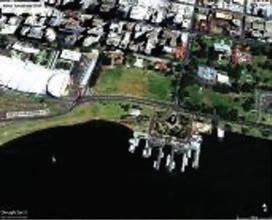

1List the changes you see between 2000 and 2010.
2List the changes you see between 2010 and 2025.
3 How has the function of this space changed over time? Provide evidence from the images to support your conclusion.
Key concepts: place, space, environment, change
HASS skills: analysing, evaluating
Observe Figures 6.5.3 to 6.5.5 of Milan, Italy. Take the following steps to analyse the process of urban renewal in a city more than 1000 years old.
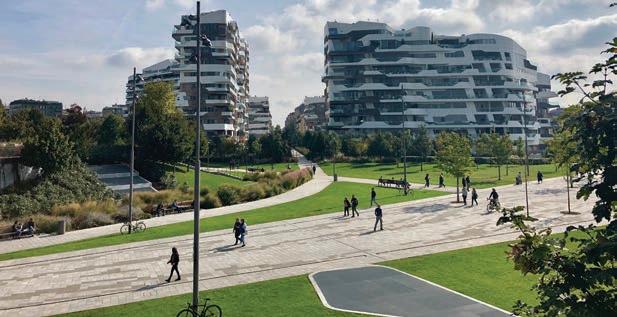


1 Identify what architectural features can you see in the image that distinguishes modern buildings from antique ones?
CONSOLIDATE
2Compare how do the materials, design styles and purposes of these buildings differ.
3 Analyse what these contrasting architectural styles tell you about the history and development of Milan as a city?
4 Do you think the blend of modern and antique buildings enhances or detracts from Milan’s liveability and aesthetic appeal? Evaluate why?
youth young people aged between 12 and 24
consultation a meeting to discuss something or get advice
marginalisation the act of treating someone as if they are not important Key concepts: place, space, interconnection
Australia de nes youth as young people aged between 12 and 24 years old. This age range is signi cant as it marks the transition between being dependent on your caregiver to moving towards full independence as you learn to make decisions for yourself. During this transition in your life, you may face a range of challenges that can be impacted by where you live. Common challenges faced by youth in their local areas are:
• lack of safe and accessible spaces
• limited recreational and social facilities
• housing affordability
Mandurah Skate Park
• transportation challenges
• environmental and mental health impacts
• social exclusion and marginalisation
Young people often report a lack of ageappropriate recreational facilities, such as sports centres, skate parks or creative hubs, in their local area. Most towns and suburbs offer options for children to engage with spaces (e.g. playgrounds), but these often do not cater to people over 12 years of age. Urban places also contain many stressors, such as noise pollution, overcrowding and a lack of privacy. Ensuring green spaces, whether they are managed parks or natural environments, offers spaces to relax and engage with nature.
The City of Mandurah’s Youth Strategy aims to provide young people in Mandurah with a voice in how the future of their community will be developed in order to meet their needs. The consultation process identified a number of concerns from Mandurah’s local youth population. The lack of youth events and facilities where young people could have fun and feel safe was listed.
The Mandurah Skate Park is located along the waterfront of Mandurah town centre. It is in a prominent area, easily accessible by bus routes and paths. The 5000-square-metre facility was opened in 2020. The design includes four key zones that are terraced down towards the Peel Harvey Estuary, including an advanced competition bowl near the iconic Mandurah Bridge. Open green space, accessible pedestrian pathways, a half basketball court, and a range of sheltered seating are in the immediate area.
Analysis questions
1 Why are skate parks more suited to youth than a playground?
2 Why do you think including features other than skating areas is essential to a youth space?
3 What problems do you think can be addressed by building skate parks in a community?
4 Investigate whether there is a youth space in your local area. Describe its location, design and purpose.

The transition from living at home with a caregiver to taking on the responsibility of paying your own rent is life changing. The challenge of nding affordable and accessible housing near your educational or working environment is often not simple. For young people who are transitioning out of the child and family protection system, housing is a signi cant stress. Often lacking in a connection to family, or living away from their friendship circle, these youth face the problem of
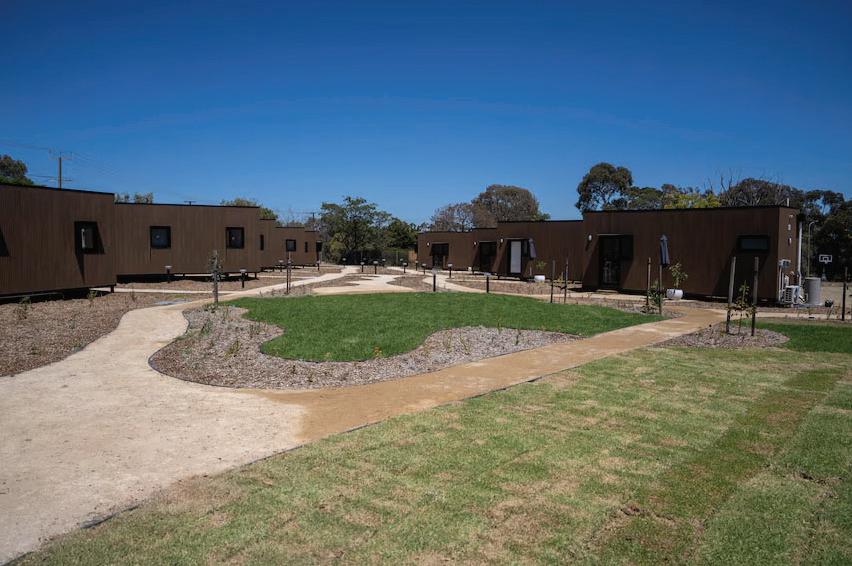
securing housing without a social network to assist. In places such as Australia, London and the United States, cities are investing in tiny homes as a solution to not only homelessness, but also to provide affordable housing for young people. As seen in Figures 6.5.7 and 6.5.8, a tiny homes village was built in Tonsley by Junction and the South Australian Government to provide 10 transition homes for youth moving out of the care system.
A key step during one’s youth is to gain employment. Often young people do not have or are in the rst steps of gaining their driver’s licence. This means that often the employment opportunities they seek are within walking distance or accessible by public transport. Urban planners have traditionally included a commercial and retail hub in most suburb designs. A local shopping precinct offers an array of employment opportunities in retail and hospitality.
Public transport is provided through most parts of the Perth metropolitan area. However, some areas are less accessible than others due to limited services or the complexity of changing between multiple buses and trains to reach your

destination. For example, Byford is one of the fastest growing suburbs in Perth and approximately 20 per cent of its population is youth. Currently, there are only four timetabled bus services in the suburb, which only transport people within the suburb or to Armadale Train Station. What would be a 10-minute car ride for most, is a 30-minute journey via bus for those relying on public transport. From there, commuters use Armadale as a hub to reach their destination. The average commuter aiming to travel from Byford to Perth Station can expect to spend over one hour and thirty minutes travelling each way. However, the Western Australian Government’s METRONET project aims to change this.

METRONET’s vision is to create a well-connected Perth with more transport, housing and employment options. An 8-kilometre extension of the existing Armadale Line to Byford will provide residents of Byford and the wider Serpentine-Jarrahdale area with a 42-minute journey to Perth Station. It is estimated that by 2031 over 3450 people will board the train each weekday. For young people, the addition of a train station broadens their future employment and educational opportunities. The local town centre of Byford will likely experience increased development when the station opens in response to higher foot traffic in the area. If more businesses grow or are opened, this creates more job opportunities and a wider range of services to access. Similarly, the reduction in travel time and ease of connection between Byford and the Perth city centre will make university, TAFE and other educational institutions more accessible. Being more connected to the Perth transit network can also reduce the experience of social isolation that some people feel when they live in the suburbs located on the periphery of the metropolitan area.
1 Explain how the Byford Station will increase the liveability of Byford for young people.
2 Consider the public transportation of your area. How easy is it to get to your school? To a TAFE or university campus? To the nearest shopping centre? Or to the Perth city centre?
Key concepts: place, interconnection, sustainability, change
Surf parks: a wave of opportunity or a waste of water?
Surf parks are a recreation facility or attraction that contains a surf lagoon or a standing wave attraction. They are certainly a feature that can increase the liveability of a place, but not all members of the community agree. Investigate surf parks, such as the Perth Surf Park set to open in 2027, to explore the issue further. Guiding questions include:
• How do surf parks work (e.g. wave generation)?
• What environmental concerns exist?
• How might a surf park affect the local community and environment?
• How can a surf park be made more sustainable?
• Are there alternative recreational projects that use fewer resources?
Creative task
Design a sustainable surf park that minimises water and energy use.
Key concepts: place, space, interconnection, environment, sustainability

HASS skills: questioning and researching, analysing, communicating and reflecting
End of section 6.5 review Go
6.5 Review questions
Recall
1 Define urban consolidation.
2 Explain how Elizabeth Quay is an example of urban renewal.
3 Identify who is considered youth in Australia.
4 Describe at least two challenges facing youth liveability.
Interpret
5 Discuss to what extent you think Elizabeth Quay is sustainable.
6 Select one strategy that can improve liveability for youth. Outline its advantages and disadvantages.
Argue
7 Identify and evaluate the features of liveability in your suburb. Justify your argument.
8 Propose at least two strategies to improve the liveability of your suburb. Explain how they will improve the area.
Key concepts: place, space, environment, sustainability, scale, change
People are on the move and will always be on the move. One day, you may find yourself moving to a new house, to another town or even abroad. We must understand the motivations of movement – economic, environmental, political or social – because it will always be a topical issue. Even as you read this, there will be people applying for a visa to enter Australia or braving the open sea to come to a better life here. Our understanding of this topic allows us to be more
HASS skills: analysing, evaluating
tolerant of and respectful to migrants who add value to our multicultural society.
If people are generally seeking more liveable places, this identifies a common problem for the world. How can we design future places to accommodate these growing levels of migration without compromising the sustainability of the location? Perhaps you can think of ways to design future liveable cities. Geography is a field of action, not just study.
That just about wraps up this topic. How do you feel you went working through the chapter? Before you attempt the following activities, visit the Interactive Textbook to rate your confidence with this topic via a downloadable checklist.
I used to think that place and liveability meant …
Now I think that place and liveability means …
This exercise in visible thinking asks you to connect, extend and challenge the knowledge you had prior to reading this chapter with what you have learnt.
How does what you know about place and liveability connect to what you have learnt in this chapter?
Which new ideas in the chapter extend or push your thinking in new directions?
What concepts in the chapter challenge or confuse what you used to think about place and liveability? Do you have any questions about what you have learnt?
A tale of two cities: Masdar and Melbourne
Visit the Interactive Textbook to access a detailed research task that compares two different places and their approaches to enhancing liveability.
A new community is being developed. It is your task to plan this new community using the knowledge you have gained from this chapter.
Search for ‘If the World Was Only 100 People’ on YouTube and watch the video to understand the characteristics of the community you are creating.
With a partner or a group, design a community that will accommodate these people. What you create should consider the following key concepts:
• liveability
• accessibility
• walkability
• sustainability
• community
• place
• social connection
• safety.
You should ensure that you include infrastructure that supports healthcare, schools, roads, recreation, open spaces and anything else you think is essential for liveability.
After you have designed your liveable area, create an aerial view of the place on A3 paper and label the key features.
Key concepts: place, space, environment, interconnection, sustainability, scale, change
HASS skills: questioning and researching, analysing, evaluating, communicating and reflecting

Geography has many connections with other subjects in the Humanities. Have you considered how what you have learnt about water in Australia and place and liveability relates to the other topics you will cover this year? Here’s a sample:


















Which level of government is responsible for the management of water? Investigate the possibility that all levels of government manage water resources to some degree.
• Local city council or shire: Is stormwater managed in your area? Are there specific guidelines for rainwater or bore water use? Are there safety requirements for recreational water use? Visit your local government website to find out.
• State: Identify the state government department responsible for managing water in Western Australia. How does this department manage water in urban, rural and remote areas? Visit the following link https://cambridge.edu.au/redirect/11212 to find out.
• Federal: Why would the federal government provide leadership in the management of the Murray–Darling Basin? Investigate the location using a map or research the Water Act 2007 for further information.
Government plays an important role in the planning of places. It does this through town planning. Visit your local city council or shire website to see if your area has plans for new housing estates, renewal of streetscapes or consolidation projects, etc. Can you identify how these plans may improve the liveability of the area? Perhaps you can draw your own city plan to suggest changes to address liveability issues in your local area.
Bottled water is a lucrative business with increasing environmental ramifications. How has the bottled water industry responded to the demands of consumers in relation to:
• preferences for healthy and/or sports options
• environmentally friendly packaging
• being ethically sourced?
FIFO phenomenon
The phenomenon of FIFO (fly-in fly-out) workers in the mining industry has changed some remote and rural places. Consider the costs and benefits of using this type of work for the individual, the mining company and the mining towns.


Real estate agents set an initial price for a property when it is placed on the market for sale. What factors determine the initial price of a property? How might the initial price change if demand does? Identify potential reasons for demand going up or down.



Ancient civilisations often grew along water sources. Identify the major water body that these civilisations developed near: Egyptian, Greek, Roman, Indian and Chinese. How did each civilisation move water from the river to homes? Investigate whether any innovations were made.


Ancient civilisations valued water as it often represented life. Select one ancient civilisation and research whether there were significant beliefs, values or practices related to water. Summarise your findings as a fact sheet.





The Agora in Athens is today an archaeological site, yet it was used for about 5000 years as an assembly, commercial and residential area. Many artist impressions exist of what it may have looked like. Research and investigate the purpose and design of the Agora. Create and annotate your own sketch of the Agora of Athens to identify the features that create a sense of place for the Greeks.
Without our memories, we would quickly become helpless. Our memories do many things for us, nearly all of which help us learn in some way, like becoming better at kicking a football, learning better words to explain ourselves, or improving our skills to make a great cup of coffee. But memory also helps us do even more important things like make decisions, nd objects or places, develop relationships with other people and understand things from different points of view. Without memory, we would be lost; literally, we wouldn’t even be able to nd our way home every day.
History is the way that we remember as a community and society, rather than as individuals. Understanding history helps whole societies do important things like make government policies, plan trading arrangements with allies or decide what to do about global warming – in short, to decide what needs to be supported, changed or
redirected in the societies we all live in and love. Studying history, therefore, offers us insights into what it means to be human.
In Year 7, the Western Australian Syllabus focuses on Ancient Cultures. Studying the ancient past is very worthwhile because it is amazing to think about just how similar our own ideas and values are to those of the people in the past. This helps us see clearly that people and societies have not changed in a great many ways, even over thousands of years. This lets us learn from the successes and mistakes that were made by people who came before us, and helps us plan more effectively for our own future. It also helps us realise that what happened in what we tend to think of as ‘the past’ is still here with us today, all the time, passed through our people and cultures in so many ways.
The ancient past is also fascinating because many things were so different
Because it all happened such a long time ago, there is also a great deal of information about ancient societies and people that is missing, and this makes ancient history full of mysteries. All of the information about studying History in this book will tell you about how historians and archaeologists, scientists and local communities nd and use information to ll those information gaps, which helps them solve, or at least better understand, history mysteries.
As you work through Chapter 7, think about what skills a historian must use. What do you think these skills might be useful for, other than being a historian? For instance, developing empathy with people in different cultures from the past can help us become more tolerant of people in our own lives who we don’t get along with or don’t understand. Also think about the fact that ‘what we know’ changes over time –and think about why this happens.
Events in the past are not as simple as they seem. This is because events can be understood from different perspectives. In fact, people often argue about what an event means, and if you think about it, we do this all the time in our everyday lives. New discoveries are made all the time and change what we know about the past. This means that nding the ‘truth’ about what happened is a journey we must keep
Understanding the past from the point of view of a particular individual or group, including thinking carefully about the circumstances they faced, and the motivations, values and attitudes behind their decisions and actions.
making, because each new nding helps us gain better understanding.
The skills and knowledge that you gain from studying history are skills you will use in everyday life and will help give you a new understanding of the world. You will learn how to nd and understand sources of information. You will learn to think creatively and critically about information that you learn. And you will learn more about how to come to your own conclusions and build your own interpretations based on the evidence available. In the Western Australian Curriculum for Year 7 History, History focuses on Deep Time and what this means for Australia’s First Peoples. The syllabus in Western Australia also considers ve other ancient societies (Egypt, Greece, Rome, India and China) covering the period from around 65 000 BCE to the end of late antiquity, around 650 CE.
Historians use several key concepts and skills to help them think about an issue. This book will draw your attention to these concepts as you learn about the everyday life, beliefs, values and customs of societies through time that have shaped our societies today. The historical concepts are:
Any written or non-written materials that can be used to investigate and provide information.
Considering just how important an event, idea, place, group or individual has been.
Is used to examine the relationship between events, decisions or actions. This is very important in understanding what happened in the past because it helps us connect one event or action with another by considering what occurred and what the result was of this event or action.
Cause and effect
The information obtained from sources that helps us understand something about the past (or present or future). Evidence can be used to help put together a description of the past. Historians call this a ‘historical narrative’. Evidence can also be used to support an idea or to prove or disprove a conclusion.
This is point of view, the ideas, values and beliefs held by an individual or group. These points of view affect how individuals or groups understand events going on around them.
Occurs when ideas are debated. This can happen when there are gaps in the evidence or there are different perspectives.
Refers to aspects of life or society that have remained the same or that have changed over time.
source any written or non-written material that can be used to investigate and provide information artefact an object made by a person, such as a tool or a piece of furniture. It can tell us something about the people and society it came from.
BP means ‘before the present’ and will be used in Chapter 7 in places to describe what is called ‘geological time’, which is a scienti c term used by archaeologists, geologists and other scientists. It refers to radiocarbon ages because BP uses radiocarbon dating techniques. Radiocarbon dating was discovered in the 1940s. All living organisms contain the gas carbon-14 (C-14 or 14C). When any organism dies, the 14C slowly decays at a known rate called its ‘half-life’; every 5730 years, half of the 14C is gone. So, if you measure the amount of 14C in a dead organism, you can calculate how long ago it died and how old it is.
• BCE means ‘Before the Common Era’ and CE means ‘Common Era’.
• There is also a calendar known as the ‘Gregorian calendar’ that uses BC instead of BCE and AD instead of CE. BC stands for ‘Before Christ’ and AD stands for ‘Anno Domini’, which is the Latin for ‘the year of our lord’ (meaning from the time Jesus was born). These terms are culturally tied to Christian practices.
• The Western Australian syllabuses and this book use the terms BCE and CE.
• c. There are times when historians do not know the exact date of something. In this case, the abbreviation c. (circa) is used to show that a date is approximate. For example, the Great Pyramid of Giza was built in c.2560 BCE.
A good detective is always looking for clues, and historians do the same thing.
Historians always try to start understanding the past by looking at a primary source. Sometimes these primary sources are artefacts (something you can touch, like a statue or carvings on a wall), sometimes they are documents (like a letter) and sometimes they are stories that have been handed down and told from generation to generation.
Secondary sources are very useful to historians. Secondary sources are created
after the event to help us to understand it, like a textbook, a news article, a documentary or a website. These sources can give us the opinions of other experts who have studied the same topic. Using what these experts think about ideas, events or peoples can help us understand more about the past.
People often have very different views of the same events, so primary and secondary sources are useful tools to help us develop our own ideas. When we explain what we think happened in the past, we need to use primary and secondary sources to support our point of view or perspective.
Artefacts
Primary sources
Is it supported by information in other sources? Accuracy
Written documents
Historical sources
Textbooks
Journal articles
What type of source is this?
What is it useful for?
Usefulness
Is the information factual, or an opinion? Accuracy
Evidence from scientific studies
Secondary sources
What does it show about the past? Content
Questions to ask when using historical sources
Documentary films
Reliable websites
Who wrote or produced this? Origin
Where and when was it produced? Origin
What was happening at the time it was produced? Context
When and why was it created? Purpose
origin analysis of a source to establish who created the source as well as where and when it was produced context the analysis of sources to understand the nature of society and the historical period in which the source is created, the signi cant events / related to the source, and the language and ideas of the time purpose analysis of a source to establish the original reason for its creation accuracy the analysis of a source to establish correctness by identifying purpose, corroborating the information with another source and assessing bias usefulness the analysis of a source to determine how relevant it is in relation to historical questions
Introducing historical concepts and skills: significance, perspective and contestability
In Chapter 7, there will be a particular focus on the concept of signi cance. As we will see, deciding on what is important or signi cant involves making judgements. Chapter 7 will also include opportunities to learn about perspective and contestability. You will be given the chance to see the perspectives of different people from different places, times and cultures and decide what you think when presented with a clash of different ideas about or interpretations of the same event. These clashes are where you will be thinking about ‘contestability’.
HASS skills: questioning and researching, communicating and re ecting
HASS skills: analysing, evaluating KEY
HASS SKILLS
Key concepts: signi cance, perspectives, contestability, cause and effect
Key concepts: sources, evidence, empathy, continuity and change
How are history skills and concepts used and how are they useful outside the history classroom? This activity will help you analyse sources and evidence and think about the important concept of signi cance. History skills and concepts are activities we do every day in our lives, so practising them in a History class will help you outside the History class too. Winner!
When you are doing this activity, you will be practising using the history concepts – sources, evidence, signi cance, empathy. You will also use some of the HASS skills – analysing, communicating and re ecting.
Become a museum curator for your own life. Collect evidence and artefacts and explain the importance or significance of each piece that you have collected, just like a museum would. To help you complete this task, you might need to visit your local museum or go to any of the WA Museums to do some research about how museum exhibits are set out so that you can see what kind of information is included with each exhibit, or you might research online what format and structure museum exhibits use. There are also lots of online sites you can use to create an online museum – you might decide to find one and create a virtual ‘Museum of Myself’.
• Use the following ve focus points (categories) to help you get started:
1 A day in the life – design a wall painting to describe a day (can be an average or a very special day).
2 Adventures – what, where, when, who, why, how?
3 Pets – past, present, future.
4 Music – themes, songs of your life (title, artist, reason chosen).
5 Friends and family – curate a gallery of images.
• Now create ve (or more) other categories that would be important for your museum and curate the evidence/artefacts to support each category.
When your museum collection is complete, do some re ection. Write your answers to the following questions:
a Why did you choose the evidence/artefacts you chose? What was signi cant about them?
b What categories were easy to nd evidence and artefacts for, and which were di cult? Why do you think this was?
c Which categories show you changing? Describe the changes you presented and explain why these were important to you.
d Which of your artefacts are concerned with people, events and ideas? Go back and label them clearly. Is there more about people, events or ideas? What do you think this says about you?
What you did for your ‘Museum of Myself‘ was to nd sources and make decisions about what is important to remember and record in your life, and to then explain why each thing you chose is important. This is what historians do when they collect evidence and try to make sense of events, people and ideas from the past; but while you did this for one person, historians try to do this for whole societies and cultures.
Key concepts: signi cance, perspectives
HASS skills: analysing, evaluating
Did you know that the Western Australian Museum has six public museums? Find out where your closest museum is and what its focus is. Also, many local communities and community groups have started their own museums that have collected the evidence of the people, stories and history of that community. Find and visit your local museum. Amazing
Across the ancient world, people and communities shared common experiences, yet each society developed uniquely based on their land. Studying ancient societies helps us understand what has changed and what has remained the same.




First Peoples people digging for yams. Crops of tubers for Yams were cultivated in a way that allowed for them to be regrown the next season.
100 000 BCE
Homo sapiens have begun to migrate from Africa
Di erent forms of farming evolved, depending on the types of animals and crops suited to the area. Di erent agricultural techniques also developed.
40 000 BCE
Construction of the Brewarrina sh traps, Australia
10 000 BCE
Neolithic period begins (New Stone Age)
Ancient societies developed barter systems between di erent groups into networks of trade across much of the world.
6500–4000 BCE
Beginning of agriculture in Europe and Egypt
2
Palaeolithic period begins (Old Stone Age)
8000–4000 BCE
Development of agriculture and silk weaving in China
Painting of the Lascaux caves in France
Humans living at Madjedbebe, Australia 15 000–10 000
5000 BCE Farmers in the Andes in South America begin to domesticate potatoes
In Chapters 7–12, you will be investigating ancient cultures from both the West and the East. In these cultures, the wealth created by agriculture and trade led to a range of specialised new skills being developed and therefore a range of jobs, such as craftspeople, artists, scribes and priests, as well as leaders. Most ancient societies were hierarchical in some way, with their leaders (often rich people who were royalty or military leaders) or elders at the top and warriors, priests, scholars and peasants below them.

Laws developed in every ancient society. Laws were either written, or remembered and taught via song, story and art.



Walga Rock is also known as Walgahna Rock or Walganna Rock. Research what image is represented on this site that makes it such a history mystery.
Art
Artworks, including statues, architecture and paintings on rock, papyrus and paper, can provide evidence of daily life, religious beliefs and the environments and politics of ancient societies.
4000–2500 BCE
Farming and villages in western India
In Chapters 7–12, you will explore Aboriginal and Torres Strait Islander cultures, as well as ancient cultures from Europe, Africa and the East. Consider the common experiences that connect these cultures and the unique qualities that each society developed based on their speci c needs and environment. Below are some common features and experiences shared by all human societies, highlighting the di erent ways ancient cultures approached similar challenges.
Not all ancient societies developed writing in the way that most cultures in the 21st century would think of writing, where shapes have corresponding sounds. Writing as Western cultures use it was rst developed in ancient Sumer (cuneiform script) and Egypt (hieroglyphs), emerging from 3400 to 3200 BCE. Writing developed in India around 2600 BCE and in China between 1500 and 1000 BCE. Translating ancient texts and inscriptions can provide important evidence for historians.
2700–2200 BCE
Pyramids built in Egypt
Detailed systems of belief developed in all ancient societies. These beliefs determined the laws, social organisation, marriage, and rituals associated with death, fertility and crop production.
The earliest human tools were made by ancient people all over the planet from stone or animal bone.
800–700 BCE
Rise of the Greek poleis (city-states)
3180–1500 BCE
Neolithic settlements (e.g. Skara Brae) and megaliths (e.g. Stonehenge) built across Europe
58–50 BCE
79 CE
The Roman cities of Pompeii and Herculaneum are destroyed by a volcanic eruption
Roman conquest of Gaul, led by Julius Caesar
Ancient pottery has been found across Africa, Europe, Central and South America, and Asia. Pottery enabled humans to store or transport food, allowing them to remain in one place rather than following food sources. Ancient pottery gives evidence of the food eaten by people in ancient societies, as well as the goods traded between di erent settlements.


166 CE
Roman merchants reach China by sea

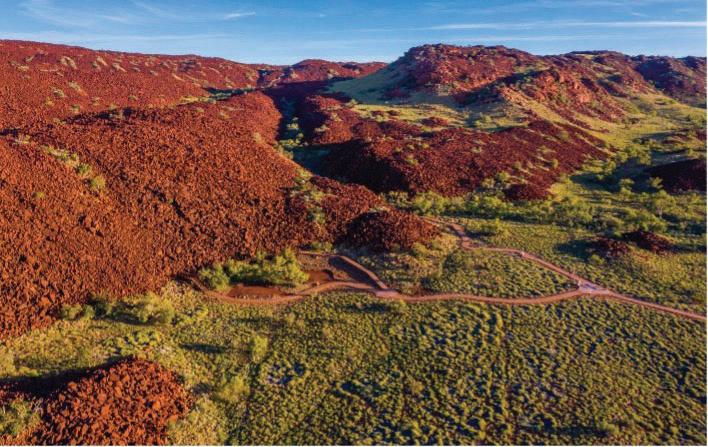
archaeologist a person who studies human history by digging and uncovering sites, and investigating objects and other remains continuity something continuing for a long period of time without being changed or stopped Deep Time history refers to the events and processes over vast spans of time cultural heritage an expression of the ways of living developed by a community and passed on from generation to generation
Source B Murujuga National Park ➜
How do First Peoples, historians and archaeologists understand time?
Deep Time is a term used by historians, archaeologists and scientists. They use it to describe the continuous cultural practices of Aboriginal and Torres Strait Islander Peoples that have been developing for tens of thousands of years. Unlike ancient civilisations that came to an end, such as the Egyptian, Greek and Roman civilisations, Aboriginal and Torres Strait Islander cultures are still alive today. This is a continuity or unbroken link to the past. This is why using terms like ‘ancient history’ or ‘prehistory’ is inaccurate when referring to Aboriginal and Torres Strait Islander
cultures, because they are not cultures of the past; instead, they are ongoing and connected to the present. You will see later in Chapter 7 that this continuity has shaped the way Aboriginal and Torres Strait Islander Peoples view time.
In Chapter 7, you will explore the 65 000 years or more of human history on the continent now called Australia. You will learn about the people who lived here through Deep Time history, and how those times connect to the many vibrant First Peoples and cultures of today. You will explore the beliefs, values and practices that contribute to sustaining relationships between First Peoples and Country.
Studying Aboriginal and Torres Strait Islander history means studying both an ancient and a contemporary society. Chapter 7 brings together Aboriginal and Torres Strait Islander ways of knowing about the past as well as historians’ ways of knowing about the past. It shares some of the First Peoples’ stories of what has come before now. Through the chapter, you will develop skills to respectfully engage with First Peoples’ cultural heritage.
While learning about First Peoples through Deep Time history, you will develop an understanding of how historians and archaeologists investigate history, including the range of sources that can be used. Chapter 7 uses oral histories and archaeological evidence.
For many First Peoples, people who have passed away need to be treated with respect and their image or name should be avoided. Aboriginal and Torres Strait Islander Peoples should be aware that Chapter 7 may contain images, names and links to footage of people who have passed away. Aboriginal and Torres Strait Islander students and teachers learning from this chapter can apply their own cultural protocols for working with references to people and objects from the past.
Aboriginal and Torres Strait Islander Peoples are contemporary peoples who have the longest continuing cultures on Earth. There are more than 260 distinct First Peoples. Each has its own languages, cultures, knowledge systems and histories. In studying this living culture, we respect diversity and apply integrity by identifying the clan, nation, language group and/or place that historical particular knowledge comes from.
The term ‘First Peoples’ will be used to refer to the people of the past and the people of the present, to convey continuity. Terms such as ‘Europeans’, ‘settlers’ and ‘settler-colonisers’ are used to describe arrivals since 1788.
Wherever possible, offensive terms have been avoided; however, we have opted to retain offensive terms in original sources as
these are of historical signi cance because they help us to understand attitudes and values at the time.
Through the Deep Time history that Chapter 7 is focused on, this continent was not called Australia. First Peoples focused on Country rather than the entire continent. However, in this text, the continent will be called Australia for easier reading.
Until very recently, the First Peoples were not able to contribute to histories written about Australia. The discipline of ‘history’ came to this continent with the First Fleet and when settlers wrote their versions of the history of Australia, it focused on the white settlers and began in 1788, recording the activities of the settlers from their own perspectives.
This means that there is a need to deliberately include First Peoples’ activities and perspectives in history. Chapter 7 recognises that the First Peoples and settler historians have different ways of knowing the continent now known as Australia, and different ways of knowing the history of this place. As you go through the chapter, you will develop your skills to think about the different perspectives that are found when you study the past and how to work with these in respectful ways.
In Chapter 7, there will be a particular focus on the concept of signi cance. The Western Australian Curriculum de nes signi cance in the study of History as ‘the importance that is assigned to an issue or site, or a particular aspect of the past, for example an event, or the contribution of an individual’. As we will see, deciding on what is important or signi cant involves making judgements. The chapter will also include opportunities to learn about
perspective and contestability. You will be given the chance to see the perspectives of different people – understanding different perspectives is an important history skill –and decide what you think when presented with a clash of different ideas about or interpretations of the same event. These clashes are where you will be thinking about ‘contestability’, another important History concept in the Western Australian Curriculum.
settlers people who move to a new place and establish a permanent society historical signi cance relating to the long-term importance of an event, person or idea, this is a term people today apply to identify important things that happened in the past perspective the way we see something, a point of view or attitude towards or about something

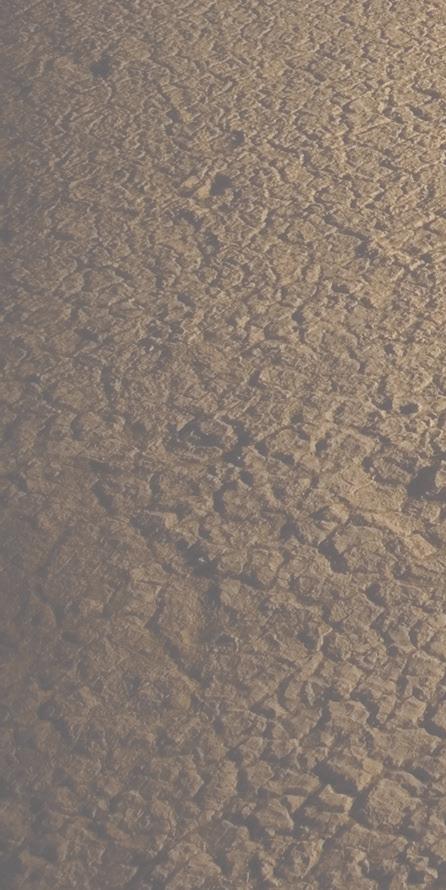

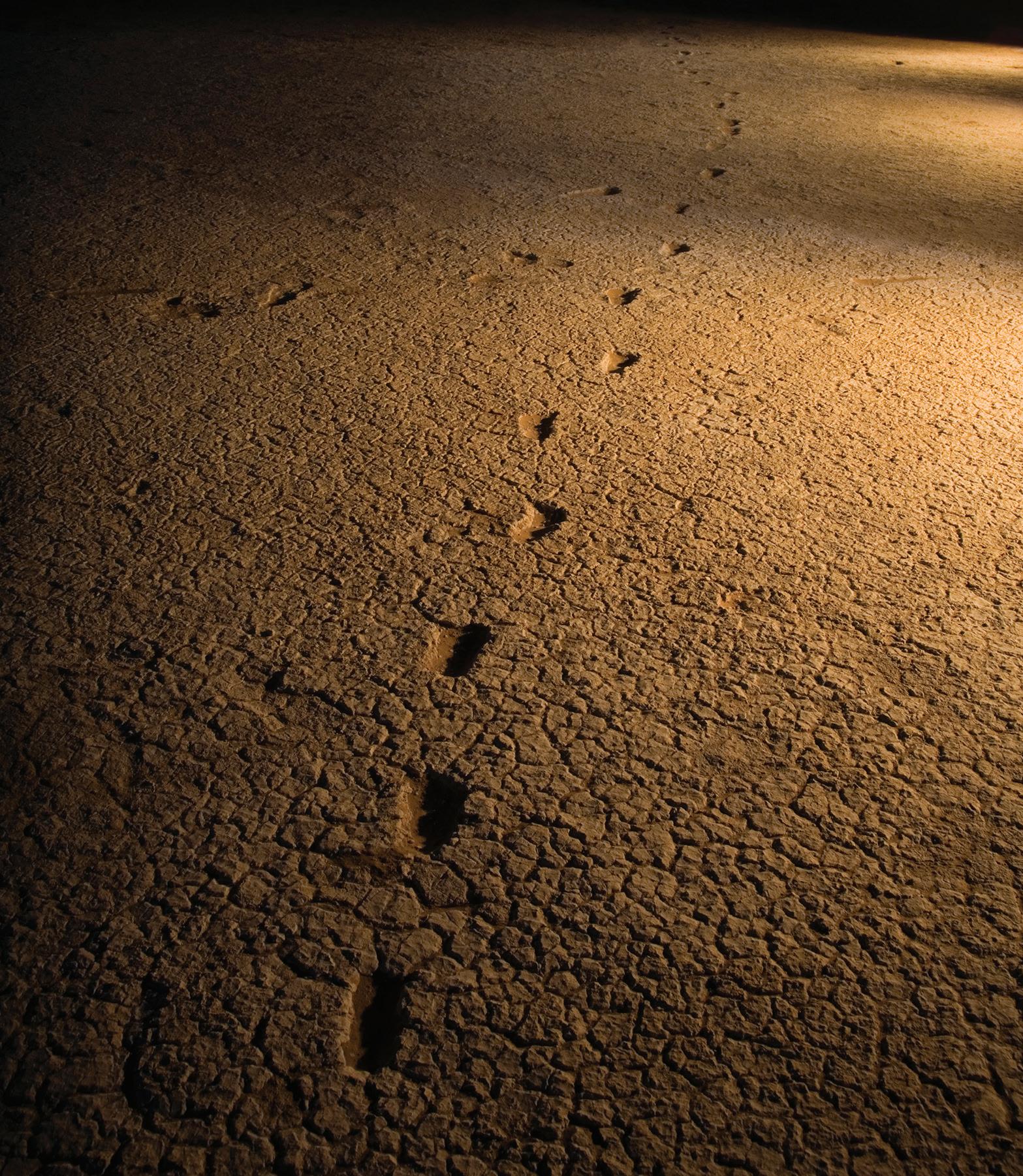
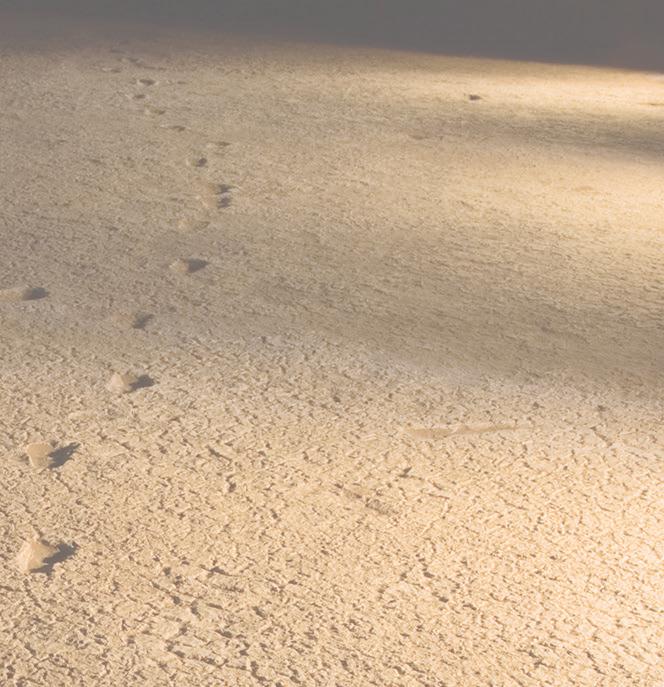
After completing this chapter, you should be able to answer these questions:
• What is History?
• How do First Peoples and historians measure time?
• What do we know about Aboriginal and Torres Strait Islander Peoples being the world’s oldest continuing cultures?
• How did Aboriginal and Torres Strait Islander Peoples develop early innovative technologies?
• How were these technologies developed in different places?
After completing this chapter, you should be able to:
• explain what signi cance means in the study of history
• develop historical empathy with people in the past and present
• understand how some things have changed, and some have continued over time
• interpret historical and archaeological sources in both print and visual form
• use evidence to build an argument
• evaluate the reliability of historical sources
• correctly use special terms speci c to the topic.
Visit the Interactive Textbook to access:
• interactive review quizzes and Scorcher competition
• videos, image galleries and other extra materials.

Researcher Elspeth Hayes with Mark Djandjomerr and traditional owner May Nango extracting comparative samples at a cave adjacent to Madjedbebe, an ancient site in Arnhem Land, Northern Territory. Credit: David Vadiveloo / Gundjeihmi Aboriginal Corporation ➜
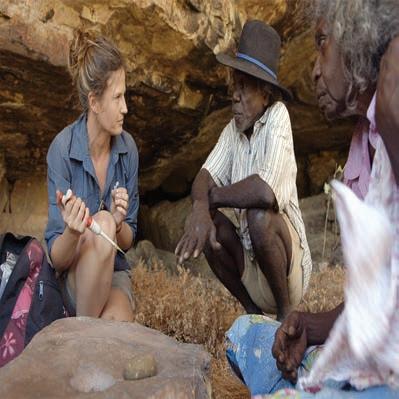
40000 BP
A representation of Diprotodon optatum, the largest known marsupial from the Pleistocene of Australia ➜
65000 BP
Earliest archaeological evidence of the First Peoples dates from this time; the artefacts are from Madjedbebe in the Northern Territory

Mungo Lady and Mungo Man lived at this time in the lands of the Paakantji, Ngyiampaa and Mutthi Mutthi peoples, which are a part of what is now known as the Willandra Lakes Region, a World Heritage area of New South Wales
20000 BP
Peak of the Ice Age. The climate was dry and there was little rain, which made the deserts of Australia much larger. Australia is joined to nearby land masses (New Guinea and Tasmania) by ‘land bridges’. However, archaeologists believe water crossing by boats or rafts was always necessary to reach mainland Australia
50000–25000 BP
Evidence of megafauna living in Australia at this time has been found in many locations in Western Australia. Megafauna existed alongside the First Peoples
20000 BP
First Peoples live through the coldest parts of the Ice Age in places like Kutikina Cave in Tasmania, which is occupied between 20000 BP and 13000 BP
11000 BCE
Much of Australia’s coastline begins to be changed by inundation as ice sheets covering Earth begin to melt. New Guinea and Tasmania are separated from mainland Australia. Australia’s current coastline took shape around 6000 years ago
This story is shared with the permission of Tagalaka knowledge holders. Near the bottom of these hills is an important waterhole that always has water. All the animals know they can always come for a drink here. There are emus, nuukan and brrook (wallabies), waangu and kaani (goannas), zalk (bustards), possums, yarngarddith (turtles), snakes, birds and ngaarba (brolgas). It’s a big waterhole and there is enough for everyone. The ngaarba are starting to get worried because they know there is a lot of waal (water) – a ood is coming. They warn everyone, watch out, there’s a ood coming! Everyone starts to panic because they realise the ground is at and there is nowhere to go to escape the water. The ngaarba start building big mounds, like their nests, that rise up out of the ground – the hills you can see. This provides high ground for all the animals to go to when the oods come. This is why this is the Ngaarba Dreaming place; the ngaarba ancestors created this place, and people have travelled here from other Countries in the region to hold the Ngaarba ceremony.
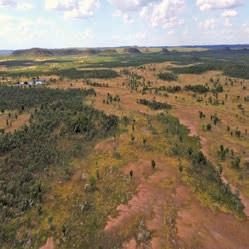
• 1770 CE British navigator James Cook arrived in Australian waters and mapped the east coast. He had contact, sometimes violent, with numerous First Peoples, including the Guugu Yimithirr people at Gungardie, which came to be known as Cooktown in the Cape York Peninsula. Cook spent 48 days at Gungardie repairing his damaged vessel HMB Endeavour. Cook claimed the east coast of the continent for the British Empire.
• 1788 CE onwards Invasion and colonisation of Australia by the British Empire. During the 1800s, much of Australia experienced a period known as the Frontier Wars between First Peoples and settlers.
8000 BCE
7500 BCE
Sea levels rise 100 metres and the extensive plains of the Northern Territory, in what is now the Gulf of Carpentaria, are inundated. The rising sea levels had a profound impact on societies, with numerous First Peoples’ oral histories preserving the details of coastal ooding and populations evacuating the coastal regions and migrating inland
Climate settled into a pattern broadly similar to present-day Australia
7000 BCE
Evidence of stone houses from this time has been found in the Dampier Archipelago, Western Australia
3000 BCE
There is evidence of the arrival of the dingo and the extinction of the Tasmanian tiger on mainland Australia around 5000–4000 years ago

A typical Makassan boat. This depiction was painted by a Yolngu artist, Nagingapa Naminyamanja, in 1969.
1500 CE
Makassan peoples from Indonesia begin to visit northern Australia on a seasonal basis, trading with Aboriginal Peoples on the mainland. There were many visits to Australia’s shores during the 1600s and 1700s. Seafarers from the Dutch East India Company also regularly sailed along the Western Australian coastline at this time on their way to the East Indies (now Indonesia) as part of the spice trade
1Compare the two understandings of time (the timeline compared to the Ngaarba Dreaming story). How might these in uence how you study history and know the past?
2Describe how the environment might have changed while the First Peoples have lived here and propose how they might have adapted to survive.
Key concepts: signi cance, contestability, continuity and change, sources, evidence
HASS skills: analysing, evaluating
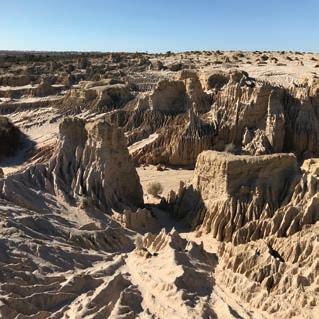
Deep Time history of Australia refers to the continuous history of Aboriginal and Torres Strait Islander Peoples, spanning over 65 000 years, one of the world’s oldest continuous cultures. Deep Time emphasises the long and complex history of the cultural practices, innovative technologies, and belief systems of First Peoples in Australia, as well as the continent’s geological eras and evolutionary changes during the period. This deep history challenges Western notions of history by emphasising a timeline that does not rely on written records but is based on the connection between Australia’s First Nations Peoples and the land.
Not all ancient societies developed writing in the way that most cultures in the 21st century would think of writing, where shapes have corresponding sounds. However, the stories of the First Peoples were recorded by them across Australia in over 100 000 signi cant sites using petroglyphs (chipped into surfaces) and pictographs (painted onto surfaces). First Peoples used artworks in sacred and public places to record their stories, which means they have great cultural signi cance to the First Peoples.
Ancient pottery has been found across Africa, Europe, Central and South America, and Asia. In 2024, the oldest pottery ever found in Australia was discovered at Jiigurru/Lizard Island o the Queensland coast. It is 2000–3000 years old and is the rst evidence that First Peoples used pottery. Up until this discovery, it was thought that Aboriginal Australian communities were unaware of pottery manufacture before European settlement. Academics who are studying the pottery from Monash and James Cook Universities suggest that as they learn more about these artefacts, our understanding of the history of the society of First Peoples will be rewritten. This is a really good example of how what we ‘know’ about the past can change. Pottery enabled humans to store or transport food, allowing them to remain in one place rather than following food sources. Ancient pottery gives evidence of the food eaten by people in ancient societies, as well as the goods traded between di erent settlements. It has been suggested that the pottery recently found in Queensland is more evidence of the extensive trade networks built by those communities at the time.
Farming by First Peoples included crops of grain and tubers for yams. Yams were cultivated in a way that allowed for them to be regrown the next season. Yams would often be planted next to river and stream beds in small patches on rich soils and harvested in the autumn months after the rainy season when the soil is at its softest.


The earliest human tools were made by ancient people all over the planet from stone or animal bone. Some of the oldest examples of First People’s tools found in Australia come from a cave called ‘Devils’ Lair’ (it gets its name from the number of ancient Tasmanian Devil bones that were found in the cave) in the southwest of Western Australia. These tools include axes, cutting and sewing tools and are c.48 000 years old.

Aboriginal and Torres Strait Islander Peoples traded a variety of things, such as metal, minerals and food, in the same way all other cultures exchange commodities. However, for First Peoples across Australia, trade was not just associated with physical objects, it also included songs, dances and art, stories, rituals and ceremonies. These connected the people to the land and sky and animals. Trade in other ancient societies in India and China, Europe and Persia also took place. These nations developed a network that was known as the Silk Road from about 130 BCE.
The First Peoples of Australia had a complex system of law long before the establishment of British law in Australia that is often referred to as 'traditional law'. Traditional law is and was not a set of laws that all First Peoples throughout Australia used; instead, it refers to the common features of acceptable and unacceptable behaviour in Aboriginal and Torres Strait Islander communities. Problems regarding traditional law were managed by Elders – the oldest people in the community.
First Peoples in Australia were traders, shermen, hunters and farmers. This work is connected to Country, and everyone had their role in this work to support the community.

• How do First Peoples understand time?
For many First Peoples today, the past is part of the present, connected in Country and knowledge stories. This connection is often described with the word ‘everywhen’, which means time is both the past and the present. The ancestors created the land, Country, people, animals, plants and water sources, and all of this is still visible where people live today. When these landscapes and events are cared for and celebrated in song, story and dance, First Peoples are maintaining and celebrating the past in the present.
What I like to do when people ask me how long have the Aboriginal people been here is I like to get a ball of twine or wool and you get a little bit of the twine I say to them ‘this much (10 cm of the twine) is your parents’, and the kids will say, ‘yeah but they’re old’, and then I say ‘this much (20 cm of the twine) is your grandparents’ and they say ‘ah but they’re really old’, and then I roll the ball out and say ‘that’s the Aboriginal people’ and they get it.
There is no time, it’s all one, and itself, so the history just continues and keeps owing and owing on.
Source 7.4.1 Dr Wayne Wonitji Webb is a Wadandi Pibulmun Yunungjarli Elder and custodian from the southwest of Western Australia. Taken from an interview with World Surf League. Dr Wayne Wonitji Webb And The Power Of Wadandi. ➜
Australian Aboriginal people have a sense of a much longer history that challenges the western historical imagination … Time is multi-layered … [There is a] connectedness between human and other living beings, and in which the Earth itself is a living force. [It is an] undated, multi-layered ‘now’, with living spirits present and walking around, conducting themselves in the everyday.
Source 7.4.2 Non-Indigenous researcher Ann McGrath describes how Deep Time connects to the present.
The human presence here [in Australia] has been revealed to be more ancient than that of Europe … and the Australian landscape, far from being terra nullius is now recognized to be cultural as much as natural, imprinted with stories and law and shaped by the hands and resticks of thousands of generations of Indigenous men and women.
Source 7.4.3 Settler researcher Billy Grif ths explains Deep Time in his book Deep Time Dreaming: Uncovering Ancient Australia, 2018, p. 2.
Refer to Sources 7.4.2 and 7.4.3.
1Explain First Peoples’ understanding of time.
2Describe your own perspective of time.
3Explain how historians can respond respectfully to First Peoples’ understanding of time.
Key concepts: perspectives HASS skills: communicating and re ecting
Historians imagine time as a line joining the past, present and future in turn. This is called chronological order. Historians often show this understanding of time passing using a diagram known as a timeline. In this understanding, from a moment in the present, people look back at things that have already happened. Because these things are gone in that moment, in Western cultures, things that have occurred are understood to be nished in some way; they have passed so they are in the past.
Geologists call the series of Ice Ages from 1.6 million to 11 000 BP the Pleistocene era; our current Holocene era started 11 000 BP
European historians constructed a timeline to try to describe human development that starts about 10 000 BP that was divided into Ancient, Medieval (Middle Ages) and Modern histories. The period before this was usually described as prehistory, which means a time before history started being recorded in the same way that it is now – through written records.
Source7.4.4 This geological time-scale is not to scale. It is measured in millions and billions of years. It explains important geological and life form changes over the lifespan of the planet.
The term ‘prehistory’ was often used to convey the idea that only ‘simple’ societies existed and that any complex human communication interaction and technology had not started yet. Settler historians in Australia once dismissed the presence of the First Peoples before 1788 as inconsequential; however, today there is increasing recognition of the extraordinary achievements of the First Peoples, demonstrated in the longevity of their cultures and the sustainable nurturing of landscapes. The term ‘Deep Time history of Australia’ refers to the long period of time that people have interacted with the Australian continent. EraPeriodEpoch
However, ‘the past’ covers a very long period, so people who work with the past develop ways to divide it, so that they can try to describe and study the changes and track the continuities. For example, the geological timescale refers to processes that have happened over millions of years.
Source7.4.5 A timeline representing European historical periods
Think, pair, share
1Explain whether or not this image helps you understand how long the Australian continent has been occupied by Aboriginal and Torres Strait Islander Peoples and nonIndigenous Australians.
2Explain why it is important to understand these di erences.
3 Can you think of another way to show this information? Take a moment to plan it on paper and then explain this information.
4Explain your approach to a partner.
Class project: developing perspective
5 Take a piece of string about 6 metres long and stretch it across the classroom.
6 Label one end of the string 65000 BCE and the other end ‘now’.
7 Use the timeline you constructed, Source 7.4.4 and Source 7.4.5 to write down all the key events that happened between 65000 BCE and 1500 CE.
8 Attach these events to the string – you could do this with pegs or clips. You will need to measure out the gaps on the string between each event carefully so that you have the events the right distance away from each other in ‘time’. To do this, you might need to refresh your memory about how to construct a timeline.
9 Now research, write down and add the key dates to the timeline for the arrival of: a the rst Dutch ships b the First Fleet of settlers.
10 You have just created a classroom timeline of the occupation of Australia that you can put up on the walls of your room. Well done!
11 Carefully hold the string out in a long line. Does this help you understand how long the Australian continent has been occupied? Which way of seeing this do you prefer to help you understand, the image of the clock or this timeline? Explain your reasons.
12 Now take the string and coil it carefully into a circle about 1 metre across, layering it carefully so that the oldest events are on the bottom and the more recent events are on the top. This is how the First Peoples understand time – as something that is still with us, giving meaning to and underneath everything we do.
13 Does this coil help you understand the di erence between the way First Peoples and historians see time? Which do you prefer? Explain your reasons.
14 Decide as a class which way you would prefer to display your classroom representation of time. Will this be as a line or a circle? Write a label for the nal product to go with it on the wall, explaining what it is and including an explanation of both ways of understanding time.
Much of what we know about ancient peoples comes from the work of archaeologists. Archaeologists help us understand time because they are specialists in nding and understanding material evidence. This means they look at how items and objects that are left behind tell us about the time when these objects and items were in use in some way. When it is possible, archaeologists use knowledge handed on through the stories people have left and what they nd in the material remains to understand time. However, sometimes there is no story at all, and archaeologists use the objects they nd to help them discover a cause (why something happened) and an effect (what happened as a result). Without archaeology and the way it has developed to use scienti c methods, we would not have clear information about many people, places or ideas. You will learn later about Kutikina Cave in Tasmania. This is a really good example of how archaeology helps us understand cause and effect, and time, through objects.
The word ‘archaeology’ comes from the Greek words archaios, meaning ‘ancient’ or ‘old’, and logos, which means ‘study’. There have been historians since ancient times, but archaeology as a recognised area of study only developed in the 19th century. While historians focus on written records, archaeologists deal with the physical remains of earlier eras, called artefacts. Artefacts can range from small pottery shards to large buildings such as the pyramids of Giza.
investigation by experts who specialise in areas such as geology, human anatomy, biology, botany and physics. This specialist knowledge helps us to understand the lives of the people who occupied the site being studied, revealing information about when they lived, how they died, what they ate and what they believed.
Archaeology involves nding, excavating and interpreting archaeological sites. Archaeologists are assisted in their
Early archaeologists are often criticised for being treasure hunters because their focus was on nding valuable objects that would bring them wealth and fame.
One important early archaeologist of the 19th century was wealthy German businessman Heinrich Schliemann. Schliemann is best known for nding the site of the Trojan War: the city of Troy, made famous by Homer’s epic poem The Iliad. Schliemann carried out excavations at the site, in modern-day Türkiye, and found some amazing objects, including Priam’s Treasure – a collection of gold and treasure – though he was later accused of falsifying the events around the discovery of the treasure. Schliemann was also criticised for his destructive methods of excavation, including his use of dynamite, and his failure to properly record what he found. Despite these criticisms, Schliemann made important discoveries and was instrumental in promoting the development of archaeology as a eld of study.
Over time, archaeology has become more professional and is carried out primarily by people working with academic institutions such as universities. Modern archaeology is more closely tied to science than treasure hunting.
material evidence physical objects that can help explain an event or a site or solve a history mystery
Sites can be revealed accidentally. This may happen when new construction takes place or as a result of natural processes, such as erosion and landslides. An example of this happened in Australia in 2005 when an almost complete skeleton of a man was discovered at Narrabeen in Sydney, when workers were digging a gas pipeline. The body turned out to be approximately 4000 years old. Examination of his remains revealed he had most likely been killed by a spear. Another example was when student Kevin Kiernan found Kutikina Cave in Tasmania. You can read more about this later, but the artefacts found in this cave proved that First Peoples were living much farther south in Australia and much longer ago than was originally thought.
Once a site has been found, and the dig team has been organised, the excavation will commence. Excavators will start by mapping the site using technology, such
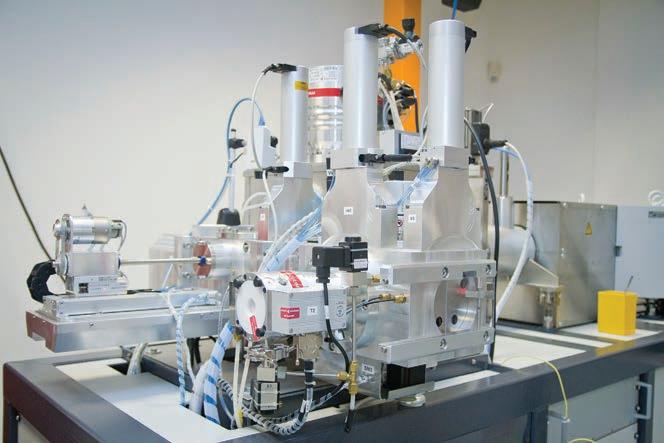
as ground-penetrating radar. Once they have mapped the site, excavators start slowly uncovering the site layer by layer. Different tools are used when excavating, ranging from heavy machine diggers to small hand trowels and brushes. It is important that people working on the dig are systematic in their approach and do not damage the material they are uncovering. Once the site has been found, archaeologists get to work trying to identify what they have found and how old it is.
Source7.4.7 An accelerator mass spectrometer (AMS), used for radiocarbon dating ➜
As science and technology have advanced, new methods of dating archaeological evidence have become available. These methods, known as absolute or scienti c dating, provide much more exact dates. It is important to acknowledge that even though these methods are called absolute dating, they really provide date ranges. It is still impossible at this stage to provide exact dates down to a year using these techniques. They work best when they are used together with other dating techniques to create a fuller picture of when things occurred.
Radiocarbon was one of the earliest methods of scienti c dating, developed in the 1940s. It is used to date organic material such as hair, bones, papyrus and wood. It is based on the principle that all living things absorb the radioactive isotope carbon-14 while they are alive. Once they die, the carbon-14 starts to decrease at a steady rate. The date of the material is determined by how much carbon-14 is left.
Thermoluminescence dating measures how long it has been since an object has been heated. Only objects that have been heated to over 500°C can be dated using this method. It is used on materials like pottery or stones heated by camp re. Reheating the sample to over 500°C shows the amount of radiation trapped in an object since it was last heated, creating a ash of light that is measured. There are some problems with this method because it can be inaccurate. One of the major uses for this technique is in determining if artefacts are genuinely ancient rather than forgeries.
Dendrochronology involves dating tree rings. Trees grow at different rates each year depending on environmental factors such as rain, sun and temperature. During good years, trees grow faster and the rings are thicker. During poor years, trees
do not grow as quickly and the rings are thinner. The differing sizes of the growth-rings act like a barcode, revealing when the tree was alive. By comparing different samples, dendrochronologists can build up a detailed database for a region that goes back thousands of years. The sample can then be used to date wooden objects found at archaeological sites, such as wooden beams from an ancient building.
When excavating a site, layers called strata help archaeologists determine the history of the site. Archaeologists uncover a dig carefully, layer by layer, because each layer represents a different time period. The deeper we dig, the further back in time we go. Sometimes the strata are disturbed by human activity. People digging pits into lower strata or natural events such as landslides disturb the layers, which makes identifying and dating different layers dif cult.
Source7.4.8 Dendrochronology uses different samples to build up a sequence, which allows the samples to be cross-dated. ➜
Investigate Kutikina Cave in Tasmania
Kutikina Cave is a rock shelter in south-west Tasmania and is an incredibly important archaeological site found in 1977 and studied in the early 1980s by archaeologists Don Ranson and Rhys Jones. Its contents tell us a lot about the Toogee people who lived in southwest Tasmania.
Some 250 000 fragments of bone and 75000 artefacts were found in the cave, many of them stone tools such as scrapers, anvils, grindstones and hammerstones. Others were tools made of bone that had been sharpened on one end and may have been used to make clothes. These artefacts have changed historians‘, archaeologists’ and scientists’ understanding of where First Peoples lived in the later Pleistocene era and the way stone and bone tools were used at this time.

With the onset of the last ice age, the sea levels dropped and exposed a dry route from the Australian mainland to the Tasmanian peninsula. Mainland inhabitants were quick to take the opportunity to relocate, and the nds in this cave demonstrate that the hunters who took up residence here about 30000 years ago became the most southerly human beings on Earth in the late Pleistocene era. This made the First Peoples in the area the closest to the Antarctic ice, as close as the hunters in northern Europe were to the northern ice sheets in the Arctic. Scientists and archaeologists think that the area at the time was probably a tundra environment. Charcoal in hearths and replaces was found throughout the cave, suggesting that many res were lit by the occupants.
tundra an environment where tree growth is made di cult by permanently cold temperatures and short growing seasons lobbying communicating with government o cials to try to in uence their decision
The cave and its important artefacts were threatened by the planned development of a hydro-electric dam across the Franklin River, which would have ooded the area in the early 1980s. The Tasmanian Government wanted the dam to go ahead, arguing that it would meet the state’s energy needs and create jobs for Tasmanians at a time of high unemployment. Protesters and environmental activists from across the country lobbied the Australian federal government to stop the dam. They wanted to save the First Nations heritage and pristine wilderness that would be destroyed by it. They were successful and their action saved a key wilderness area and raised awareness of environmental issues. The political success of the environmental groups involved eventually led to the formation of the Australian Greens as a political party at the federal level.
Kutikina Cave was occupied between 3000-years BP and 15000 years BP.
Look at Source 7.4.10, the timeline of ice ages, and answer the following question.
1Describe what the climate was like at the time the cave was occupied.
Now look carefully at the stratigraphic diagram in Source 7.4.11 and read the descriptions of what was found in each unit (layers) underneath the diagram.
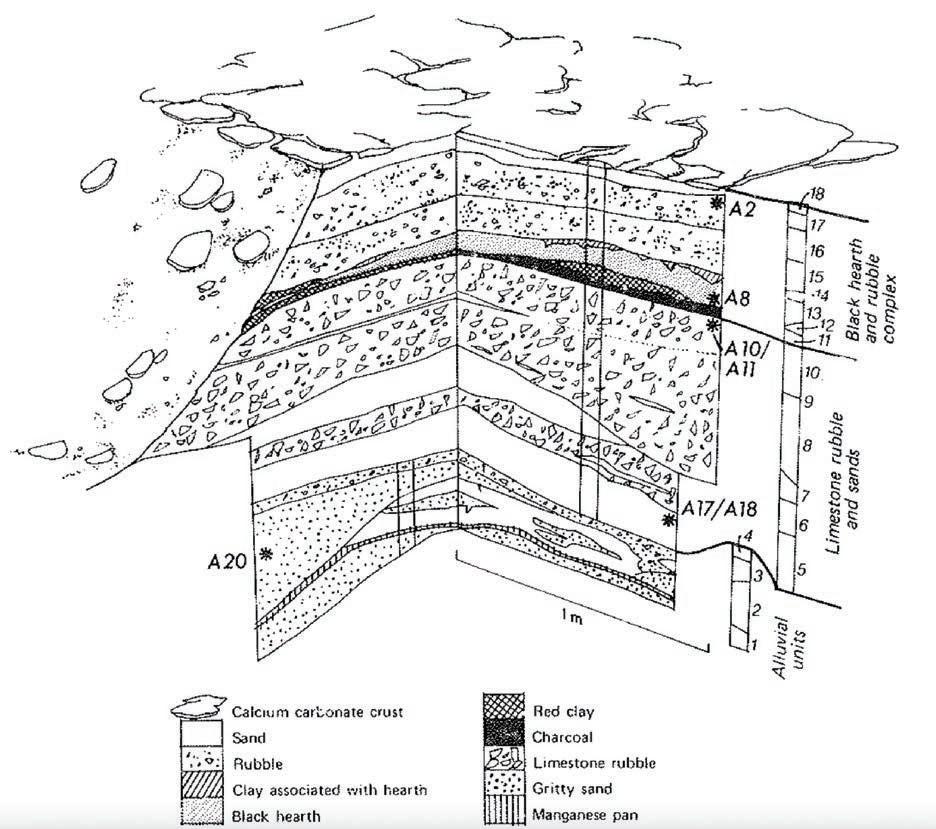
Source 7.4.11 Stratigraphical section of the excavated archaeology at Kitukina Cave in 1981 from the excavation report by Kevin Keirnan (who found the cave), Rhys Jones and Don Ranson
Unit 1 – The oldest artefacts (stone tools) found here
Units 5, 7, 9 – Many stone tools
Unit 6 – Ochre found
Unit 6 – Upwards from this unit, wallaby and wombat bones were found that had been sharpened into tools. There is evidence in the surrounding area of wallabies, which would have provided food, fur and bones for tools.
Unit 8 – Upwards from this unit, Darwin glass was found. This naturally occurring glass is a form of the black or very dark coloured mineral Australite, which likely occurs on Earth because of meteorites. In areas where it is found, it has been used by First Peoples as a sacred object or cutting tool, and can be used to sharpen other tools. The Darwin glass in the cave probably came from a meteorite crash site 25 km away from the cave.
Unit 16 – No artefacts found in this layer or higher.
Think about signi cance and cause and e ect while you answer the following questions using what you have learned.
2 Which unit (layer) is the oldest? Explain why.
3 Identify which you think is the most signi cant unit or layer and explain why in a short paragraph.
4 Explain why the nds at this site were so important.
5 Explain what archaeologists contribute to our understanding of the past.
Use your understanding of the geography concept of place to answer the next question.
6 Explain why you think this site and the excavation that took place in the cave were important in creating cultural and historical links to the land for the Aboriginal and Torres Strait Islander Peoples.
Key concepts: signi cance, continuity and change, place
End of section 7.4 review Go online to
HASS skills: communicating and re ecting, analysing
7.4 Review questions
Recall
1 Identify how the First Nations Peoples of Australia farmed crops.
2 Identify the type of archaeological evidence that uses trees to help date objects.
3 De ne the term BCE.
Interpret
4 Explain how First Nations Peoples of Australia understand time.
5 Explain how historians understand time.
6 Explain how archaeologists understand time.
Argue
7 The past is part of the present. Think of one example of this and explain how we are connected to our past through the present.
Key concepts: signi cance, continuity and change, perspectives
skills: analysing
Focus questions
• What is Country?
• How do First Peoples interact with Country and connect to place?
• How do First Peoples pass on their Knowledge?
The First Peoples of Australia have the oldest continuous culture in the world. This means that First Peoples today are custodians of the cultural and intellectual heritage of their ancestors from thousands, and tens of thousands, of years ago. In this time, much has stayed the same (continued) and great change has occurred, but the cultures and communities of the First Peoples have remained. Historians can look to First Peoples today for insights into Deep Time history.
To understand how First Peoples have interacted with the Australian continent for 65000 years as the oldest continuous culture on the planet, historians need to explore how the First Peoples understand the land as a living being called Country. People and Country are connected. The First Peoples record their history in their knowledge stories. Scientists use dating techniques to determine what has happened
to land through Deep Time and how people responded to these changes. Respectful historians can recognise and work with both these ways of knowing time and place.
First Peoples today understand Country as a living being that is interacted with culturally and spiritually. This provides insights into how First Peoples in the past may have interacted with and responded to changing landscapes.
Country is more than a boundary that sets out the land that someone owns. This is the way settlers in Australia see land. Country is a living thing, created by the ancestors, interacted with, known and loved as its own entity. It is given a capital letter, just like a person’s name. People and Country need each other. Country takes care of people and people need Country.
More than 60000 years of people and Country interdependence means
that people and Country have found a way to be together that bene ts both. Country is also a vibrant web of spiritual relationships. This makes it a cultural landscape, a place that people belong to, not land that belongs to people.
People have an important role in caring for Country. People need to know all the plants, animals, seasons, weather patterns, waterways, canopy, Sky Country and Sea Country and how these t together, and take actions that make sure
all these aspects of Country are healthy and thriving. Part of the important role of people is managing who is on Country and who is using which resources, to ensure that nothing is exploited or damaged.
First Peoples are connected to Country in kinship. This means that Country is like family and you treat Country like it is a person. Connections to Country are so important, they give someone their identity. Country is a living being, much like the people reading this book.
1. Read the short story below and think about how Country is described by the narrator of the story
2. Read the explanations in the sources below the story.
3. When you have read all these explanations, write down your own description of what Country means to First Nations Peoples.
4. Now write down how you think about where you live, your house, your garden, your apartment, your bedroom, your school, your soccer club, all the important places in your life. Share your ideas about what these places mean to you with a partner. Are your ideas the same or di erent from the explanation of what Country means to the First Peoples?
The girl had lost her way. She had wandered far from the Mothers, the Aunties and the Grandmothers, from the Fathers and the Uncles and the Grandfathers. She had hidden in the shadow of a rock, and fallen asleep while she waited for her brothers and sisters to nd her. Now it was night, and no one answered when she called, and she could not nd her way back to camp.
The girl wandered, alone. She grew thirsty, so she stopped by a waterhole to drink, and then hungry, so she picked some berries from a bush. Then the night grew colder, so she huddled beneath an overhanging rock, pressing herself into a hollow that had trapped the warm air of the day. Finally she saw a crow ying in the moonlight, apping from tree to tree and calling ‘Kaw! Kaw! Kaw!’. The girl followed the crow. She followed him through the trees and over the rocks and up the hills, until at last she saw the glow of her people’s camp res in the distance.
The people laughed and cried at once to see that the girl was safe. They growled at her for her foolishness, and cuddled her, and gave her a place by the re. Her little brother asked her if she had been afraid; but the girl said – ‘How could I be frightened? I was with my Mother. When I was thirsty, she gave me water; when I was hungry, she fed me; when I was cold, she warmed me. And when I was lost, she showed me the way home.’
➜ Key concepts: perspectives
Source 7.5.1 Ambelin Kwaymullina uses a story to explain Country in her book The Lost Girl (2014). Ambelin is a Palyku woman of the Pilbara region of Western Australia. She has written a number of children’s books, both alone and with other members of her family.
HASS skills: communicating and re ecting
The land is the mother, and we are of the land; we do not own the land rather the land owns us. The land is our food, our culture, our spirit, and our identity.
Source 7.5.2 Gai-mariagal and Wiradjuri man Dennis Foley explains his perspective on the relationship to Country. Foley is an academic and university lecturer specialising in business.
People talk about country in the same way that they would talk about a person: they speak to country, sing to country, visit country, worry about country, feel sorry for country, and long for country. People say that country knows, hears, smells, takes notice, takes care, is sorry or happy … [C]ountry is a living entity with a yesterday, today and tomorrow, with a consciousness, and a will toward life.
Source 7.5.3 Non-Indigenous anthropologist Deborah Bird Rose describes how First Peoples that she has interacted with describe Country.
The rst lesson from my friends around the camp re is the way they look at the world around them. They see its riches. They look at the sky and understand its meanings. They look to the land and sea around them and see additional sources of food. They look at the people who make up their family and community and they see the blessings in what they do have … There is also interconnectedness to the natural world … the interconnectedness to country is a source of a contented life.
To not know your country causes a painful disconnection … It is this knowledge [of Country] that enables me to identify who I am, who my family is, who my ancestors were and what my stories are. We are indistinguishable from our country.
Source 7.5.4 Eualeyai and Kamillaroi woman Larissa Behrendt explains her perspective on the Aboriginal and Torres Strait Islander connection to Country and community. Behrendt is an academic specialising in the law, a writer, a lmmaker and an Indigenous rights advocate. ➜
Source 7.5.5 Arrernte and Luritja woman Catherine Liddle explains her perspective on the importance of Country and community. Liddle is a journalist and media expert.
We long for the land and the land longs for us … When there is no one there on the land it grows uncared for. Everything overgrows because you don’t look after it, you don’t burn it, you don’t hunt on it to make a balance. So things get overgrown, they get out of balance.
Source 7.5.6 Gay’wu Group of Women explain their relationship with their Yolngu Country.
For us, we balance as we care for Country and it cares for us. But we are not separate from it. We are in kinship with it. kinship a social system that establishes a person’s relationships and responsibilities to other people and entities
Many First Peoples understand there was a creation time when the ancestors created Country and all living things, including people. This means people have been here ‘since the beginning’ or ‘always’. Because the land and all living things are here, we are still living in the time of creation. People continue the world the ancestors created by looking after it physically and spiritually. Some First Nations people do not consider scienti c information to be essential in understanding where they came from, while others nd it useful.
White fellas like theorising we come from somewhere else other than Australia to lessen our connection to Country. We are from here. Our knowledge of our history is embedded in our blood and our country. Whitefellas’ knowledge of our history is only as good as their technology.
Source 7.5.7 Aunty Val Cooms, a Quandamooka Elder, explains her understanding of her origins. The Quandamooka Country is in south-eastern Queensland.
Aboriginal people have always known that we have been on our land since the start of our time, but it is important to have science show that to the rest of the world.
Source 7.5.8 Kaurna Elder Lewis O’Brien. Kaurna Country is in South Australia.
We have no books, our history was not written by people with pen and paper. It is in the land, the footprints of our Creation Ancestors are on the rocks. The hills and creek beds they created as they dwelled in this land surround us. We learned from our grandmothers and grandfathers as they showed us these sacred sites, told us the stories, sang and danced with us the Tjukurpa (the Dreaming Law). We remember it all; in our minds, our bodies and feet as we dance the stories. We continually recreate the Tjukurpa.
Source 7.5.9 Nganyinytja, a Pitjantjatjara woman and Elder, tells how her people’s history is written in the land.

Source7.5.10 This painting is called Yarrkalpa (Hunting Ground) and is by a group of artists called the Martumili Artists. These artists are from the Martu people and they live in central northern Western Australia. This painting tells part of the Dreaming story of the Seven Sisters, a creation and knowledge story that extends across the Western Desert. In this knowledge story, the sisters are pursued across the country and the land, foods, animals and water are created. The creation and Songline can be seen in the landscape and is ever-present.
language group a community of people who speak a common language, often re ecting cultural, historical and ancestral ties
First Peoples consider that they have always been in place, since their ancestors created living landscapes. First Peoples know where their connections to Country are. The AIATSIS map of Indigenous Australia (linked in the following activity box) shows different language groups across the continent.
See, think, wonder
Examine the AIATSIS map of Indigenous Australia – https://cambridge.edu.au/redirect/11318 – to answer the following questions.
1 List three details that you can see when you look closely at the map.
2 Identify the source line. Source lines often explain who created the source, and when and where it was created.
3 The source line for the map tells you where the person who created the map got their information from. Most information came from sources written by non-Indigenous people. Consider whose perspectives and information are being used to create this map, and whose perspectives and information might be missing.
4 Explain how this map di ers from a map that shows the states of Australia. Why might this di erence exist?
5 There are hundreds of distinct language groups on this map, showing the diversity of First Peoples’ perspectives. Explain how this diversity impacts on the work of historians.
6 What does this map make you wonder?
Research task
7 Ask a local knowledge holder to share some of their knowledge with your class.
8 Explore with your teacher ways that you might engage with local knowledge holders. Who are the knowledge holders for your area, and who might be an appropriate person to engage with?
9 Identify ways in which your class might engage respectfully and reciprocally (which means to respond to a gesture with a corresponding one) with a knowledge holder.
10 Compile a list of things you would like to know about the Deep Time history of your area. Share your list of questions with your class and create a class set of questions for your guest knowledge holder.
11 Investigate yarning, a way to learn by sharing rather than asking questions. How could your class learn from the knowledge holder through yarning?
Key concepts: continuity and change, perspectives
First Peoples pass on knowledge through storytelling – spoken stories but also stories shared through art, dance and song. Telling stories is a powerful way to remember details as well as to convey abstract ideas. Each community has its own body of traditional knowledge and its own belief system, and this knowledge has been passed on for thousands of years. Each language group has its own word to name this traditional set of knowledge and beliefs. Often these names have been translated into English using the word ‘Dreaming’.
HASS skills: analysing, communcating and re ecting
Dreaming stories are connected to speci c Country, speci c places or speci c things in a place. For example, Jarntu, also known as Well 35 on the Canning Stock Route in northern Western Australia, is a deeply sacred place connected to the ancestral being that gives it its common name – Jarntu the Dingo mother whose puppies inhabit the local rockholes and soakwaters. Jarntu is at once a Dreaming story, an ancestral being and a place. To be a custodian or Traditional Owner of a place is to also be a custodian of the knowledge of that place and be responsible for passing the traditional knowledge on to the right people. Knowledge custodians are often called Elders.
Knowledge stories/Dreaming stories knowledge connected to speci c Country, places or things, with deepening levels, connected to dance, song, art, ceremony and cultural practices, passed on through kinship
oral history the recording of past events in a spoken form, including through song, story or dance anthropological to do with the study of humankind
Songlines are a means of storing and learning knowledge, ancient and modern. They are stories embodied in the land, sea and skies to be remembered and passed on through song, dance, art, ceremony and, most importantly, through attachment to Country. A Songline is a system for the retention and transmission of knowledge to enhance lives (from: https:// cambridge.edu.au/ redirect/11216).
cultural landscape a place with many layers of history that evolves through design and use over time. A cultural landscape embodies the associations and uses that evoke a sense of history for a speci c place.
Historians refer to the history-related content of these knowledge stories as oral history; however, the stories involve much more information.
They talk about rainbow serpent – snakes – in Dreamtime they were human. They would travel around the countryside making songs and stories where the water is.
Source 7.5.11 Wangkajunga man Putuparri Tom Lawford explains the Rainbow Serpent. Putuparri grew up in Fitzroy Crossing. His people have lived a nomadic life in the desert of Western Australia for over 40000 years, knowing they could always retreat to their sacred waterholes. ➜
transmitting lived experience and wisdom. Songlines can be practical – for example, sharing information that helps manage the land and its resources effectively by tracking times and places where food or water might be plentiful or scarce. But Songlines are also part of passing on wisdom, and they are ways of mapping the continent, and they have enabled trade across the whole of Australia.
The Songlines shouldn’t be just an anthropological footnote, but a part of Australian history as it is taught in schools. To tell the real story of this continent, you’ve got to have both histories. They are held in di erent ways, told in di erent ways, but are essentially complementary. To really belong to this place, you’ve got to embrace the Songlines. They are the story of this land.
Source 7.5.12 Margo Ngawa Neale. Margot is a professor at the Australian National University in Canberra and is the Senior Indigenous curator at the National Museum of Australia in Canberra. She is a Gumbaynggirr and Wiradjuri woman, an author and historian. Her First Nations name is Ngawa Gurrawa, which means ‘talkative but knowledgeable’.
You have seen the importance of oral histories earlier in the chapter, but you should also be beginning to understand that so much more than history has been successfully shared in the knowledge and wisdom handed down in this way for many thousands of years. Songlines are a really great example of the continuous cultures of the Aboriginal and Torres Strait Islander Peoples. Songlines are incredibly rich ways of communicating all sorts of things. Speci c events that happened are captured in the stories of Songlines,
Dr Anne Poelina, a Nyikina Warrwa woman from the Kimberley Fitzroy region in Western Australia, explains that the Marlaloo Songline is about two serpents travelling through the cultural landscape naming places along the way. One serpent rises up from Linagoodung Cave (Mount Anderson Cave) and travels through Nyikina Country to the beginning of Mulaloo Country, where he is confronted by the serpent from Mulaloo. As the two of them travel through the countryside, they name places and compete, and as they travel they come to signi cant places in the cultural landscape. This Songline is very important to the people because the Songline has been part of the culture since ancient times and is brought to life by the voice and the singing of the Elders and continues to connect them with the land and the wisdom that is handed down through the story.
Songlines are also maps to take people through walking country. Anne recounts that an Elder in her community in the Kimberley who was totally blind made the journey from the Kimberley to Uluru on foot, twice, because he knew the Songlines. The song was a map that took him from place to place, it told him where instruments like dishes, axes and grinding stones were hidden, buried in special places to be used, then reburied for others to use later so that they could get through the landscape. Because he knew the song, he could walk this incredible distance using the wisdom in the song.
There are also Songlines that move through the whole country – these were also trade routes. The Songlines were how people traded in their reciprocal economy from the Kimberley to the desert, pearl shell and spinifex were traded for different types of ochre along with all sorts of other goods and services.
But the Songline is not just a map to a place, it is a highly organised set of information about when to travel and/or trade in the right season and at the right moment, giving details of when stars are in alignment because part of Songlines also connects astronomy and stories to show people how to navigate. Many of the Songlines navigate in the full moon, so that travellers can see the road ahead in the moonlight. Stories like the Seven Sisters Songlines (Sources 7.4.13 and 7.4.14 on the following page) pass on the ancient wisdom that connects all the elements, the sky, the earth, the water and the sacred sites in the landscape, with the people.
Anne explains that the songs are therefore alive because the land and river and Country are alive because they hold memory, and memory through the Songlines allows people to connect with the environment. The ancient wisdom in the Songlines continues to connect culture and humanity as Songlines are taught and shared by Elders through generations, the songs connect people now with ancient wisdom that is still relevant and useful. How ‘alive’ the Songlines are is easy to understand when you consider that some Songlines have become modern-day roads, such as the stretch of Highway 1 between Perth and Adelaide, and the section linking Darwin and the Kimberley, and the Bells Line of Road across the Blue Mountains, linking Richmond with Lithgow.
For more information about Anne Poelina, visit https://cambridge.edu.au/ redirect/11217.
reciprocal something done in return for something else

The Minyipuru began their journey from Roebourne as a big group of sisters and their mothers. At various places along the way, they lost members of their party until eventually only seven sisters remained. At Kalypa (Well 23) the Minyipuru met a group of Jukurrpa men; it was the rst time either group had seen members of the opposite sex. The men tried to grab the women, but the Minyipuru chased them, hitting them with their digging sticks and leaving them lying there.
At Pangkapini the sisters met Yurla, an old man who had followed them from Roebourne. Yurla grabbed one of the women at Pangkapini, but her sisters tricked him and managed to rescue her. At another site further east, he tried to catch ve of the sisters, but again they escaped, ying on to Marapinti.
Many of the sites on the Seven Sisters’ journey through this country are now wells on the Canning Stock Route in Western Australia.
Source 7.5.14 In Aboriginal cultures across Australia, and in other cultures around the world, the Pleiades star cluster is associated with the story of the Seven Sisters. Minyipuru Jukurrpa is the Martu version of this story. Martu Country is the Pilbara desert in Western Australia.
He points to the sky and explains: ‘Aboriginal people, according to creation stories, that’s where we came from – up there as opposed to walking across the land bridge [from mainland Australia]’.
Source 7.5.15 pakana man Tony Brown explains his understanding of his people’s origins. ➜
It’s an extraordinary thing. We don’t nd this in other places around the world … Say I’m a man from central Australia, my father teaches me stories about my Country. My sister’s children, my nephews and nieces, are explicitly tasked with the kin-based responsibility for ensuring I know those stories properly. They take those responsibilities seriously. At any given point in time, my father is telling the stories to me and his grandkids are checking. Three generations are hearing the story at once … that’s a kind of sca olding that can keep stories true. When you have three generations constantly in the know, and tasked with checking as a cultural responsibility, that creates the kind of mechanism that could explain why [the First Nations peoples of Australia] seem to have done something that hasn’t been achieved elsewhere in the world: telling stories for 10000 years.
Source 7.5.16 Settler researcher Nicholas Reid describes how oral traditions could be accurately passed down in First Nations cultures across 300 generations in a way that does not exist in any other part of the world.
Knowledge stories: developing your understanding of signi cance and perspective
Refer to Sources 7.5.11 to 7.5.16 to help answer the following questions.
1Explain First Peoples’ understandings of time and their origins. Use information from sources to support your explanation.
2 Describe First Nations Peoples’ knowledge systems and techniques for sharing knowledge.
3Describe what important knowledge the Songlines pass on.
Some ancient stories that still exist today hold knowledge to help us understand changes in the Australian landscape. These Dreamings, passed down through generations about events from a long time ago, are supported by scienti c evidence. For example, there are dreaming stories from 21 different places along Australia’s coast that tell of a time when the sea
The principal story concerns two Aboriginal peoples, the Noonuccal of North Stradbroke and the Nughies of Moreton. One version states that a bailer shell [a type of sea snail] kept by the Noonuccal contained power over the winds and was coveted by the Nughies. When the keeper of the bailer discovered this, he summoned the winds and commanded them to blow so hard that the connection between the islands would be severed, something that caused the Nughies to become stranded thereafter on Moreton Island.
Source 7.5.17 A knowledge story about the rising sea levels in the area that separated Moreton and north Stradbroke Island near Brisbane, Queensland ➜
According to Gungganyji informants … the barrier reef was the original coast here at a time when a man called Gunya was living here. [After he] consumed a customarily forbidden sh, the [ancestors] caused the sea to rise in order to drown him and his family. He evaded this fate by eeing to the hills but the sea … never returned to its original limits.
levels were much lower than they are now. They describe how the seas started to rise, changing the land and forcing people to nd new ways of living. Scientists say that sea levels reached their current height about 7000 years ago, so these stories must have been told long before that.
Researchers Patrick Nunn and Nicholas Reid summarised the following knowledge stories that were shared with them in 2016 (Sources 7.5.17 and 7.5.18).
7.5.18
In the Whitsunday Islands … the distance became too great, with the mainland over 30 kilometres away … the people were left to cope on their own [and] they did so by becoming specialised marine foragers. They developed their own artistic traditions and a distinct social and linguistic identity. They invented new tools to suit their particular subsistence needs: shhooks from shell sh and turtle shell, spear points from bone and wood, as well as nets and shell-scraping tools.
Source 7.5.19 A non-Indigenous archaeologist, Scott Cane, explains the impact of rising sea levels on the Ngaro Country in Queensland’s Whitsunday Islands. The Ngaro were skilled seafarers who navigated their three-piece canoes over large distances to trade, fish and hunt small whales.
There’s the story about the once-dry Port Phillip Bay being a place kangaroos grazed. It has been recorded by three independent sources. Other histories refer to o shore islands on the west coast like Rottnest, Carnac and Garden being part of the mainland between 7500 and 9000 years ago, when the sea level was about eight metres lower than it is now.
Source 7.5.20 Nicholas Reid (from the University of New England) explains changes in landscape described in stories from across the country.
Shoreline during Last Glacial Maximum
Cape Don (Cobourg Peninsula)
Bathurst and Melville Islands
Brue Reef
Goulburn Islands Elcho Island Gulf of Carpentaria and the Wellesley Islands Torres Strait
Darwin
Arnhem Land
Kimberley
WESTERN AUSTRALIA
Rottnest, Carnac and Garden Islands
Oyster Harbour Cape Chatham
Perth
NORTHERN AUSTRALIA
Eucla Bremer Bay
Spencer Gulf Fowler Bay
Kangaroo Island
SOUTH AUSTRALIA
MacDonnell Bay
Adelaide
VICTORIA
Melbourne
Bass Strait Cape York
Cairns – Great Barrier Reef
Hinchinbrook and Palm Islands
QUEENSLAND NEW SOUTH WALES
Brisbane
Sydney
Key Canberra
Port Phillip Bay (Melbourne)
Moreton and North Stradbroke Islands
Botany Bay and Georges Rivers
Gippsland
TASMANIA
Australia's land mass today Land exposed by lower sea levels during the Ice Ages
Source 7.5.21 A map – developed by non-Indigenous researchers Patrick Nunn (from the University of the Sunshine Coast) and Nicholas Reid (from the University of New England), showing 21 locations where recorded Aboriginal and Torres Strait Islander Peoples’ knowledge stories tell of rising sea levels.
Activity 7.5
Signi cance and continuity and change: knowledge stories
Use Source 7.5.21 to answer the following questions.
1Explain the features of the map.
2 Interpret the map and write what it conveys in your own words.
3 Empathy is the ability to share someone else’s feelings or experiences by imagining what it would be like to be in that person’s situation. Developing empathy is one of the great skills you will learn in History. Brainstorm the impacts that rising sea levels may have had on Aboriginal and Torres Strait Islander Peoples.
4Suggest how Aboriginal and Torres Strait Islander Peoples responded to rising sea levels with innovations.
Key concepts: empathy, perspectives
HASS skills: communicating and re ecting, analysing
Many Aboriginal and Torres Strait Islander Peoples’ stories tell of a time of giant animals. The well-known story of the Rainbow Serpent is just one of these stories, and the story of the creation of Gariwerd (the Grampians) is another. Physical evidence of megafauna and representations of these creatures in Aboriginal and Torres Strait Islander Peoples’ art have been found in many archaeological sites, including the rock art at Murujuga, of the Ngarda-Ngarli people on the Burrup Peninsula in the Pilbara Region of Western Australia.

Fossil evidence has placed the Thylacine (Tasmanian Tiger) on the Australian mainland, proving Tasmania was once connected to the mainland during the Pleistocene era, when sea levels were lower. Thylacine bones have been found in Western Australia. If you visit Mammoth Cave in Margaret River, you can walk through the cave and see the bones of a Thylacine, the Zygomaturus (an early hippopotamus-like marsupial) and several other megafauna that used to live in the region.
The Australian extinct megafauna included animals you can see at Mammoth Cave:
• Macropus – the world’s biggest kangaroo
• Thylacine – sometimes called the Tasmanian Tiger, a carnivorous wolf-like animal
• Zygomaturus – a giant marsupial believed to be like a modern hippopotamus
• Diprotodon – a marsupial that is a distant relative of wombats and koalas.
The following story from First Nations woman Jacinta Koolmatrie could be considered evidence of megafauna being mentioned in oral histories for tens of thousands of years.
Since the beginning of time my ancestors have been telling stories … as a young Adnyamathanha kid I was told the story about the Yamuti. The Yamuti was a very large and scary animal that speci cally looked to steal little kids. This story was not told in a way that placed it in the past, Yamuti existed in real time. We were always told that if we ever saw the Yamuti we had to run to the nearest tree and climb high, because the Yamuti had one aw, the Yamuti could not look up … one of the striking descriptions of the Yamuti was that he is very big. Bigger than us kids especially. Thousands of years ago megafauna were abundant on this land. One animal in particular was the Diprotodon, the largest marsupial to have existed. The Diprotodon was incredibly large and thought to have been a browser, eating plants like shrubs. However it’s mostly believed to have been a harmless animal.
Thinking more about the Diprotodon’s physical description, it is oddly similar to that of the Yamuti. Interestingly, I was even told that our understanding that a Yamuti could not look up, did show some potential of being present on a Diprotodon’s skeleton … If the Yamuti and the Diprotodon are the same animal, this shows an incredible depth of knowledge that has owed through thousands of Adnyamathanha generations [more than 40000 BP].
Whether or not you believe the Diprotodon is the Yamuti, our stories are derived from the truth. Something happened over 40000 years ago that made my ancestors tell a story to protect their children.
Source 7.5.23 Jacinta Koolmatrie, an Adnyamathanha and Ngarrindjeri person, shares a story of a Yamuti.
Responding to the source
1 Compare Jacinta Koolmatrie’s description of the Yamuti with Diprotodon.
2 Suggest what Koolmatrie’s knowledge could tell historians about Deep Time history.
3 Research what other changes to the landscape or other ancient megafauna First Peoples have told stories about that can help us understand how Australia has changed over time.
Key concepts: continuity and change
End of section 7.5 review Go
HASS skills: questioning and researching, communicating and re ecting
7.5 Review questions
Recall
1 Identify how First Peoples record their history.
2 Identify the name given by historians to knowledge stories passed through generations of people.
3 De ne what is meant by ‘cultural landscape’. Interpret
4 Explain what Dr Anne Poelina says about the signi cance of songlines.
5 Explain how songlines help the First Peoples to trade. Argue
6 Use your analysis skills to go back and examine the evidence from First Peoples about rising sea levels and megafauna in Australia thousands of years ago. What does this evidence tell us about how reliable the knowledge of the First Peoples in Australia is?
Key concepts: signi cance, evidence HASS skills: analysing, communicating and re ecting
• How have First Peoples cultivated food on land and in the water?
• How have First Peoples managed water sources?
• How has re been used to care for Country?
• How do First Peoples read seasonal indicators?
• What happens in Sky Country?
First Peoples developed sophisticated systems of agriculture that included building dams and wells; planting, irrigating and harvesting seeds; and preserving, storing and trading surplus produce. First Peoples used complex land management alongside hunting and foraging practices. Many of these methods are still in use on Country to this day. In many areas of Australia, large, settled campsites were long-established features of First Peoples’ societies before the Europeans arrived. Primary sources, archaeological records and oral traditions give us insight into what Australia was like before the Europeans came. Research reveals that Australia’s precontact communities were diverse and complex, and that trade and communication between large campsites and villages were key features of the life of First Peoples in many areas.
First Peoples on Country today continue to actively manage the land in sophisticated ways. They use unique food cultivation systems, such as
regenerative food cultivation developed by their ancestors shared through the generations, as well as incorporating new techniques. These systematic ways of using the Australian landscape have also been recorded by non-Indigenous people since the earliest times of European contact, exploration and colonisation. First Peoples’ food cultivation works with plants and animals to develop regenerative practices that avoid exploitation.
Historian Bruce Pascoe used the original journals of the rst European explorers and settlers in Australia to examine how different First Peoples farmed. The historic journals that Pascoe quotes from reveal glimpses of what Australia might have been like before the Europeans came, and perhaps what ancient First Peoples’ societies were like.
Yam cultivation was widespread in areas with more rainfall and different varieties were grown with differing techniques according to location. A European colonist commented there were ‘millions of murnong’ (yams) being grown and harvested by First Peoples in south-east Australia. Other Europeans commented on the growing of grain crops such as millet in the more arid areas.
regenerative food cultivation a method of farming that creates biodiverse, sustainable and resilient food systems yam a type of root vegetable grains small, hard, dry seeds from grasslike plants, used as a staple food source, often ground into our for making bread















Ancient First Peoples’ grain belt
Contemporary grain belt





Where the ancient First Peoples and contemporary grain belts overlap Region along the Darling River where European explorer Hamilton Hume noted, in the 1820s, that First Nations Peoples gathered grain from wild oats and made an edible paste by grinding it
[The] women were spread over the plain as far as the eye could see, collecting murrnong … I inspected their bags and baskets … and each had a load as much as she could carry.
Source 7.6.2 An 1841 description by George Augustus Robinson of Aboriginal and Torres Strait Islander women digging for yam, similar to a sweet potato, cited in historian Bruce Pascoe’s book Dark Emu, 2014



Source7.6.1
This diagram shows the traditional First Peoples’ grain belt compared with the modern Australian grain belt. It shows how much of the continent First Peoples were able to use for grain cultivation. ➜
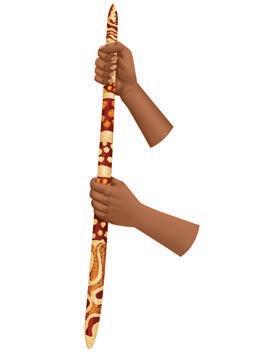

Source7.6.3
An illustration of a decorated digging stick. Murnong yams were harvested using special digging sticks often made from wattle wood.
Source7.6.4 A murnong yam plant, also known as a yam daisy. This photograph shows the ower (above ground), while the edible tuber grows beneath the ground. The blooming of the ower was an indicator that the root was ready to be harvested.
The Aborigines farmed as an activity rather than a lifestyle. They grew crops of tubers such as yams, grain such as native millet, macadamia nuts, fruits and berries. People reared dingoes, possums, emus and cassowaries, moved caterpillars to new breeding areas and carried sh stock across country.
They knew that kangaroos preferred short grass, native bees preferred desert bloodwood, koalas tall eucalypts and rock wallabies thick growth. The Aborigines set templates to suit land, plants and animals. Explorers such as Eyre, Mitchell and Leichhardt noted how Indigenous Australians red grass to bring on short green pick to attract kangaroos and other animals. To do this they had to make sure the grass was nutritious and to provide shelter so that the kangaroos would not feel vulnerable.
Source 7.6.5 Extract from Tony Stephens, ‘The rst farmers’, Sydney Morning Herald, 1 October 2011, a review of the book The Biggest Estate on Earth by Bill Gammage ➜
The Nhunggabarra did not store food in large containers and they did not use any conservation technique, such as smoking or salting … [Instead, they used] ‘live larder’ technology: … sh, eels and lobsters were trapped and stored alive in waterholes and ponds along the watercourse of every river …
A simple log felled and positioned at precisely the right spot in a creek acted as a barrier against predators for small sh. [First Peoples] placed fresh saplings and small branches by the log every year so small sh could congregate there, creating safe havens or ‘voluntary’ natural coves …
The live larders made maximum use of the natural environment and were indistinguishable from nature itself.
Source 7.6.6 Non-Indigenous author Karl-Erik Sveiby explains Nhunggabarra food storage techniques.
Australian National University archaeologists have found the earliest evidence of indigenous communities cultivating bananas more than 2000 years ago … at Wagadagam on the tiny island of Mabuyag in the western Torres Strait. The site comprised a series of retaining walls associated with gardening activities along with a network of stone arrangements, shell arrangements, rock art and a mound of dugong bones. Soils from the site showed de nitive evidence for intensive banana cultivation in the form of starch granules, banana plant microfossils and charcoal. Lead researcher, Kambri-Ngunnawal scholar Robert Williams, says the ndings help dispel the view that Australia’s First Peoples were ‘only hunter gatherers’.
Source 7.6.7 Extract from ‘Indigenous banana cultivation dates back over 2000 years’, Australian National University website, 12 August 2020 ➜
Refer to Sources 7.6.1 to 7.6.7 to answer the following questions.
1 Create a mind map or visual representation of how First Peoples produce and store food.
2Identify features of First Peoples’ food production techniques.
3Explain the connection between food production techniques, knowledge of the environment and sustaining food sources.
4Compare First Peoples’ regenerative food cultivation practices with Anglo-Australian agricultural practices today.
5Discuss the bene ts and limitations of each system.
Key concepts: sources, evidence HASS skills: analysing, evaluating
sh traps methods for capturing sh in seas, rivers, creeks and streams, such as pools of shallow water against arti cially built walls or fences or woven nets or baskets placed in weir and pond systems sh weir a way of channelling sh into sh traps by using a fence or wall built into the water of a river, creek or stream. The fence allows the water to freely ow through it.
From the 1700s into the 1900s, European and settler historians categorised types of societies and put them in a hierarchy. They proposed that people started as nomadic hunter-gatherers and progressed through stages to develop agriculture and villages. Associated with these stages were different political systems from no
leadership to a single leader like a king or emperor. Settlers writing about First Peoples considered that the First Peoples were ‘primitive’ as they had not developed European agricultural techniques, and that it was a responsibility to teach First Peoples ‘advanced’ farming techniques. These ideas have been refuted today and the value of First Peoples’ sustainable and regenerative agricultural practices is slowly being recognised.
Hunter-gatherer Agricultural
People in nature
Prehistory
Simple technology
Primitive social development
Mastery over nature
History
Complex technology
Advanced social development
Source 7.6.8 Adapted from B David and TP Denham, ‘Unpacking Australian prehistory’, in B David et al., The Social Archaeology of Australian Indigenous Societies, 2006, p. 63 ➜
Activity 7.8
Responding to the sources: food cultivation and ideas of social evolution
Refer to Source 7.6.8 to answer the following questions.
1Identify features of First Peoples’ food production methods.
2 Yarn about whether a hierarchical scale is a helpful way to compare how simple or complex a society is.
3Suggest ways the achievements of First Peoples’ regenerative practices could be promoted and recognised.
Key concepts: signi cance HASS skills: communicating and re ecting, analysing
Fish traps and sh weirs are quite common throughout northern Australia. Fish traps and sh weirs were used to catch sh and to farm sh. The Burarra people of Arnhem
Land, for example, farmed barramundi in sh traps and sh weirs. Fish traps were built in locations along sandy beaches, near mangrove forests, near rivers and creeks. Each trap is traditionally cared for by the people with custodial connection to it.
Indigenous people throughout Australia have constructed sh traps and weirs over a long period of time and there is considerable variety in types, numbers, size and location of these sites. They were designed to capture aquatic animals, predominantly sh, and the more durable of these structures (i.e. those made of stone) are still visible on Australia’s coasts and rivers today. Fish were also caught in natural pools and in a variety of small portable traps … The terms ‘traps’ and ‘weirs’ are often used interchangeably … A ‘weir’ is an obstruction placed in a stream or tideway or along a shoreline to channel sh to where they can be gathered … a ‘trap’ is a device placed in an area to capture and impound sh …
Source7.6.9 Non-Indigenous Queensland researchers Michael Rowland and Sean Ulm explain First Peoples’ sh traps and weirs. ➜
Fish traps were built by the Noongar people throughout many of estuaries in the Albany region in Western Australia to catch sh at low tide. These are the oldest man-made structures in Australia. The traps consisted of low stone structures that were used to trap sh that swam in on the high tide and then were unable to escape when the tide fell. Large rocks were placed at the top and smaller rocks at the bottom. By removing the smaller rocks, the juvenile sh could be let out for the next season. The Wilson Inlet and Oyster Harbours sh traps that we know of are about 6500 years old.
The traps rely on tidal ebbs and ows. When they were not in use, rocks were removed so they were left open to allow sh to come and go. The sh traps were used all year around. In the winter they were used less as most of the Menang People travelled inland at that time of year. Fish traps were shared when large celebrations were held with people from all over the Great Southern and South West. The traps in the Wilson Inlet near the Nullaki (Noongar for place of seaweed) were much larger than the Oyster Harbour ones as they were needed to feed a lot of people.
describes the traps between Denmark and Albany. Vernice’s work with the Albany Heritage
Group Aboriginal Corporation has allowed her to help protect these signi cant cultural sites and turn them into a place of education.

Use Sources 7.6.10 and 7.6.11 to help you think about what the photo tells us about the way the Menang people used technology. Now use a 20 Thinking Routine to organise your ideas:
1 Look at the image for 30 seconds.
2 Write down 10 words or phrases that come to mind regarding the picture.
3 Write down 10 di erent words or phrases that come to mind regarding the picture.
4 Organise your 20 words or phrases into a paragraph that explains how the Menang people used technology.
Key concepts: signi cance, sources, evidence HASS skills: analysing, communicating and re ecting
Source 7.6.12 This illustration shows an example of a sh weir and a sh trap typical of those used in northern Australia. A sh trap is positioned behind a sh weir. A woven funnel is inserted into the mouth of a net. It depicts a barramundi sh trap used by the Burarra people of Arnhem Land. First Peoples also used these traps to farm sh.
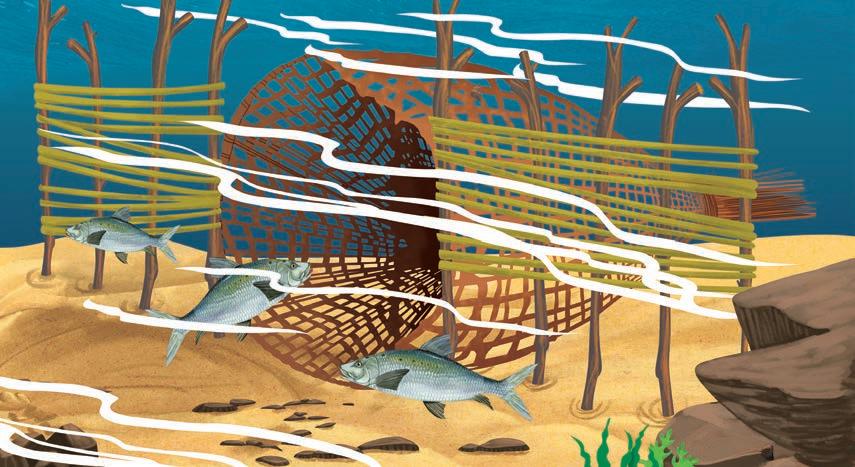
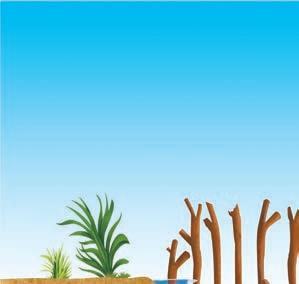

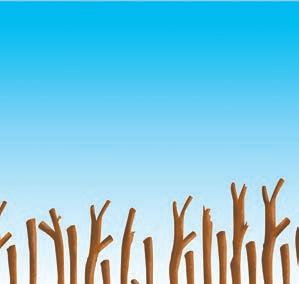
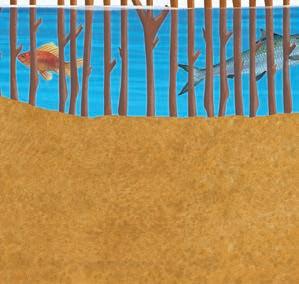
A fence made of wooden branches and other vegetation. The gaps between the branches are wide enough to allow water and small sh to move through the fence.

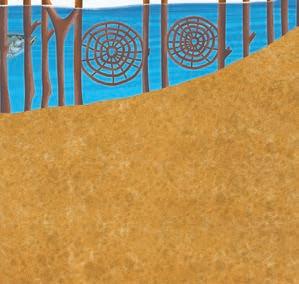
Woven nets, shaped like tubes, are placed into gaps in the fence to capture larger fish as they try to swim through the barrier. Often nets had woven funnels inserted into their entrance and wider bellies to make it hard for larger sh to swim out of the net.

Source7.6.13 This illustration shows an example of a sh weir. Fish weirs were built across creeks and narrow rivers. Water can continuously ow through the weir. Weirs were built from materials readily available in the landscape, including wood, logs, branches, rock or coral.
Using Sources 7.6.12 and 7.6.13, and additional independent research if necessary, suggest how sh traps might have worked in a creek or a river. Draw a diagram and share it with your partner to compare each other’s ideas. Key concepts:
HASS skills: questioning and researching, communicating and re ecting, analysing
Coastal sh traps rely on making use of the changing tides to trap sh. First Peoples have detailed and complex knowledge of tidal patterns and the seasons. This knowledge often relied on studying moon cycles and, in some areas, astronomy.












































































A rock or coral wall separating shallow water from deeper waters.






The walls create pens that ood at high tide and drain at low tide. These pens are the sh traps.




































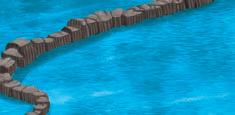









Fish and other marine creatures swim over the walls and into the pens at high tide. When the water level goes down at low tide, the sh are trapped inside the pens. They are gathered from the traps by the local people.






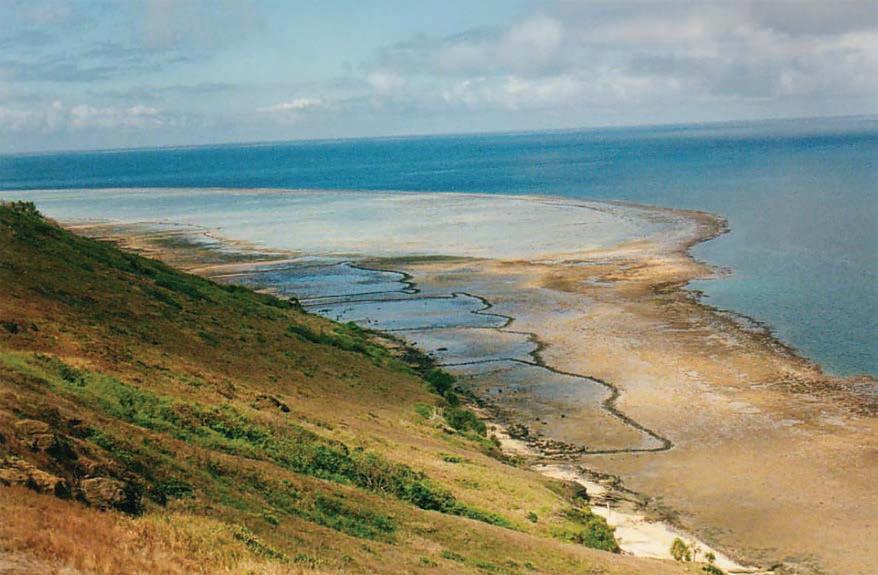
Responding to the sources: sh traps
Use Sources 7.6.12 to 7.6.15 to answer the following questions.
1Compare a sh trap and a sh weir. Explain the di erence and how they can work together. Explain how sh traps work in coastal areas.
2Suggest what might have been the advantages and disadvantages of using sh traps as a source of food.
3Explain how these sources provide an insight into the way First Peoples managed their environment in a sustainable manner.
4 Create a model of a sh trap.
Key concepts: sources, evidence
HASS skills: communicating and re ecting, analysing
Rainfall is low and unpredictable in Western Australia’s arid regions. However, Kalgoorlie–Boulder and the wider Gold elds region is Wongatha Country, and the Traditional Owners of the lands surrounding Kalgoorlie depended on and protected their water sources for many thousands of years. When Europeans arrived, they relied upon, and often forced, this ancient knowledge from the First Nations Peoples to help them locate water sources, which included wells, soaks and springs.
One of the main sources of water for the First Nations Peoples were ‘gnamma’ holes. These natural cavities are commonly found in hard rock, particularly granite outcrops, and as such act as natural water tanks, which are replenished from underground stores and rainwater run-off. Gnamma holes vary in shape and depth, and the small surface area of the hole helps to minimise evaporation.
First Nations Peoples would lay sticks and leaves over the narrow openings of the gnamma holes to protect the water from being fouled by animals and to help prevent evaporation.
What scenes of bitter quarrels these wateringplaces have witnessed! The sel sh striving, each to help himself, the awful su erings of man and beast, horses and camels mad with thirst, and men cursing the country and themselves, for wasting their lives and strength in it; but they have witnessed many an act of kindness and self-denial too.
Source 7.6.16 David Carnegie writing of his 1896–97 expedition ➜
By the early 1890s the trickle of new arrivals coming to search for gold had become a ood. The population of Western Australia went from 49782 in 1891 to 100 515 in 1895. This increased pressure on water sources, and many of the First Nations Peoples’ watering places were subsequently drained, destroyed, polluted by animals or lined to create more permanent water supplies for the goldminers.
They’d nd a big at sandstone rock where all the water went to the middle. They’d light res there and they’d crack all the sandstone; they dug it away. They’d light another re. They built these wells – most were shaped like a keg. They were narrow at the top, wider in the belly and narrow at the bottom. They dug them around 4 foot (about 1 metre) deep on the tops of sandhills, where the sandstone is. Some of them have a big at rock on top of them, some of them are just open. That’s how they saved their water!
Source 7.6.17 Elder Lindsay Black explains how Aboriginal Peoples made wells in the Central Highlands area of Queensland.
Source7.6.18 Longitudinal section, showing the pro le of Bull Gully Aboriginal Rock Wells, Victoria. The wells were strategically dug into sandstone in a natural rainwater catchment. The narrow mouths serve to reduce evaporation and pollution by animals or wind-borne debris. It is possible that the wells were, in the past, covered to further conserve water. The maximum depth of the wells is about 130 centimetres, for a capacity of approximately 160 litres, which represents a valuable water resource, particularly in dry seasons. Local residents indicated that they do not have any knowledge of the wells ever drying up.

Source7.6.19 Water tanks, known as ‘gnamma’ holes, are natural cavities varying in shape and depth commonly found in hard rock and used by First Nations Peoples. They are replenished from underground stores and rainwater run-off. These gnamma holes are on top of Pildappa Rock, a granite outcrop in Eyre Peninsula, South Australia.
Use Sources 7.6.16 to 7.6.19 to answer the following questions.
1Explain how rock wells were used by First Peoples to collect and manage water supplies. Suggest what knowledge First Peoples need to be able to make these water storage areas, and to be able to collect and store water.
2 Research other innovative ways First Peoples managed their water sources.
3 Research how water supplies were eventually secured for the expanding population of the Kalgoorlie–Boulder region as a result of the gold rush. Write a paragraph explaining how the area gets its water now.
Key concepts: signi cance HASS skills: questioning and researching, analysing
Fire has practical and spiritual applications for many First Peoples today. The ancestors gave re to people and showed them how to use it to keep Country clean and strong. The right re does many things, such as keeping waterways clear where they need to be, encouraging the growth of the right seeds for an area, providing new grass for animals that depend on it, keeping competing undergrowth away from trees that need resources, protecting sacred parts of the landscape, allowing areas to grow without re, and clearing selected areas. In this way, people are part of Country; Country cannot be strong without First Peoples. First Peoples pass on the knowledge stories and ceremonies about re, and when they burn Country they are continuing the ancestors’ creation.
Fire is used for cooking and warmth, and smoke has important spiritual, ceremonial and communication purposes. Fire has been used to crack rocks and to shape tools. First Peoples use re in ceremonies such as a Smoking Ceremony. This involves smouldering particular plants on embers to produce a steamy smoke that First Peoples consider to have spiritually cleansing and healing properties. Many First Nations Peoples have this knowledge passed on from previous generations, and researchers have found evidence of these practices through Deep Time. This knowledge and these practices continue today.
Cultural burning, sometimes called re-stick farming, has been used by First Peoples for tens of thousands of years. It is still used today, although it is dif cult in many areas for First Peoples to access Country to do cultural burning. Doing the right re involves knowing Country in detail. The right re is generally small and contained.
Not all Country is burnt with cultural burning. Deep gullies and rainforests, for example, are usually avoided, as are areas that contain bush foods and bush medicines. The tops of trees are also spared. This allows safe havens for birds, animals, insects, seeds and fruits. The best time to light a re is carefully selected so it only burns what needs to be burnt. ‘Cool res’ burn slowly, ‘trickling’ through the landscape, and can be easily put out.
David Claudie, a custodian of the north Kaanju homelands of Cape York, describes the use of re as ‘Indigenous science’. Non-Indigenous historian Bill Gammage has argued that re-stick farming made resources ‘abundant, convenient and predictable’ for First Peoples.
Fire is really important. It has its own dreaming. There are people and families who are responsible for the re dreaming. They know the songs and the ceremony …
My grandfather used to talk with the other men about the best time and place to burn. They would wait for the right wind and pick the right grass.
They were careful not to burn Country belonging to other people.
Source 7.6.20 Veronica Dobson, a skilled educator and Arrernte woman, describes the traditional importance of re.
That plume of smoke would indicate that you had been sitting there. That’s just like the knock on the door.
You could be there for a day, you could be there for a week – until they’ve [worked] you out. They’ll know you’re there. They’ve seen the re and when they’re ready they will send some young blokes up to get you.
From there you should lay any weapons on the ground in front of you and walk over them to indicate your peaceful intention … Until you’ve had a feed, sat down, you was looked after – then the boss would talk to you. After you’ve settled down, that was acceptance.
Source 7.6.21 Yamatji actor Ernie Dingo explains the importance of using smoke and re as a cultural practice when visiting a different Country or area.



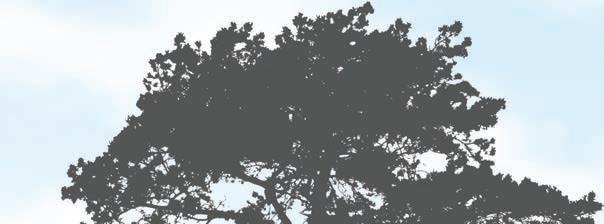

Canopy up to 17 m

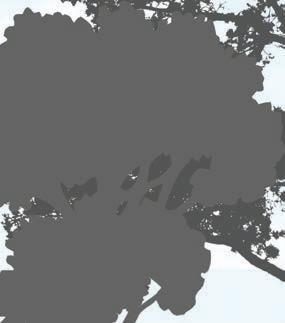
The canopy is not burned during cultural burning. This gives shelter to animals while also preserving seeds and fruits. Caring for the canopy also provides shade and helps the landscape to recover.

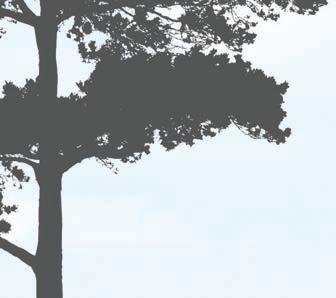

In ‘hot fires’, the flames often reach high into the canopy of the trees. Hot fires can destroy the entire landscape. The soil is often baked and all wildlife, fruits and seeds are often destroyed.







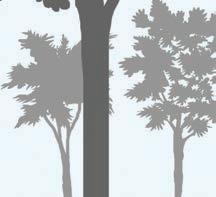




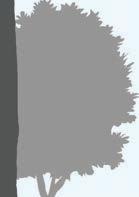
Non-Indigenous fire management practices often burn large areas of land at a higher height than cultural burning. These fires are considered ‘hot fires’.
up to 5 m


Cultural burning, or 'cool fires', involves burning grasses, leaf litter, and the lower bark of trees. The fire spreads slowly and is closely watched. Animals have time to flee. They are sometimes channelled and hunted as they flee.
















Grasses


With cultural burning, seeds, nutrients and roots remain safe and some moisture remains in the soil. This helps the landscape to recover and the native grasses and herbs to regrow. Fallen logs remain largely unburnt. This leaves behind habitat for animals.



Source7.6.23 This watercolour was painted by Joseph Lycett (c.1817). It is titled, Aborigines using re to hunt kangaroos. This painting was created about 30 years after the arrival of the First Fleet.

Source7.6.24 Engraved drawing of Aboriginal people hunting kangaroos, from the book Ridpath’s Universal History by John Clark Ridpath, 1897
natives a colonial word for First Peoples that is no longer used as it has derogatory meanings
➜
Fire, grass, kangaroos, and human inhabitants, seem all dependent on each other for existence in Australia; for any one of these being wanting, the others could no longer continue. Fire is necessary to burn the grass, and form those open forests, in which we nd the large forest-kangaroo; the native [sic] applies that re to the grass at certain seasons, in order that a young green crop may subsequently spring up, and so attract and enable him to kill or take the kangaroo with nets. In summer, the burning of long grass also discloses vermin, birds’ nests, etc., on which the females and children, who chie y burn the grass, feed.
Source 7.6.25 This is an account, in 1848, by the Scottish explorer Thomas Mitchell, describing the re management practices he observed being used by the First Nations Peoples he encountered. Extract from T Mitchell, Three Expeditions into the Interior of Eastern Australia; with Descriptions of Recently Explored Region of Australia Felix, and of the Present Colony of New South Wales, 1848, pp. 412–13.
mosaic pattern a combination of diverse pieces of land, as in grass and adjoining forest
In eastern Tasmania, human ring increased the extent of the mosaic pattern of open sclerophyll forest and grassland plains. This is the optimum habitat for some of the macropods, such as the Forester Kangaroo, and the plains provided extra food for the Kangaroos, wallabies, emus, and native hens on which the Aborigines fed … It is interesting that, through ring, man may have increased his food supply and thus probably his population. At the most general level, ring at the bush, in the same way as clearing a forest to create a eld, increased the proportion of solar energy per unit of the ground that man could utilize. Perhaps we should call what the Aborigines did ‘ re-stick farming’.
Source7.6.26 Extract from non-Indigenous archaeologist Rhys Jones, ‘Fire-stick farming’, Australian Natural History, vol. 16, 1969, pp. 226–7 ➜
Many of the species of plants and animals found in the Kimberley region in Western Australia exist nowhere else on Earth. The return to traditional re management practices is helping safeguard this biodiversity In this area, First Peoples have engaged with an initiative called Healthy Country to carry out land management using Indigenous knowledge and traditional Aboriginal land management practices to regenerate Australia. As Tom Vigilante, study co-author and Healthy Country Manager, explains

Source 7.6.27 Fire management on Wunambal Gaambera Country in the Kimberley ➜
As Tom Vigilante, study co-author and Healthy Country Manager, explains: ‘Intense and uncontrolled late-season res were damaging the ecology. One big re going through means surviving animals and birds have to travel further to nd food. Small mammals like northern quoll, golden bandicoot and scaly-tailed possum have less cover and can then be easily predated by feral cats.’
By creating a mosaic of burned and unburned patches across the landscape, Indigenous re management provides crucial habitat diversity. This patchwork e ect o ers refuge for wildlife and promotes the regeneration of native vegetation.
Source 7.6.28 A description of the value of traditional methods to control re damage carried out by the Balanggarra, Dambimangari, Willinggin Wunumbal Gaambara peoples.
Source ‘New study con rms Indigenous re management equals success against wild res in the Kimberley’, WWF Australia website, 23 September 2024.
See, think, wonder Refer to Source 7.6.27.
biodiversity the variety of life on Earth, including plants, animals and microrganisms
1 See: Describe what you see in the photo. Look at the kind of vegetation, how green it is, the direction of the wind, the strength of the re.
2 Think:
a Before starting a re, First Peoples feel the ground for moisture. Suggest why they would do this and what it would tell them. How would animals respond to this re?
b Who could you ask to nd out more information?
3 Wonder: What does this type of burning make you wonder?
Key concepts: continuity and change, perspectives HASS skills: questioning and researching
Each of the sources has been produced at a di erent time and contains di erent perspectives.
Categorise the paintings in Source 7.6.23 and 7.6.24 as either a primary source or a secondary source if you are investigating the practices of:
a Europeans recording the hunting practices of First Peoples
b The hunting practices of First Peoples in the early 1800s
c The hunting practices of First Peoples in the Deep Time history of Australia.
1 Justify your answers.
2 Analyse what each source tells you about the relationship between re and First Peoples.
3Compare how each source understands the purpose of the burning practices and what this tells you about their perspective.
4 Research cultural burning online. Compare Lycett’s painting (Source 7.6.23) with photographs of modern cultural burning practices. Have the practices changed drastically in the past 200 years? What might this indicate?
5 Research the Healthy Country initiative. Write a list of its core goals and practices.
Key concepts: continuity and change, perspectives
First Peoples have been able to generate sustainable and sustaining life patterns and technologies due to their extraordinary knowledge of Country, all things of it and the relationships between all things. This includes an understanding of relationships, cycles and patterns of seasons, the movement of stars, the life cycles of animals and plants, and human activities related to all of these. Careful custodianship of Country means being able to read the indicators – that is, identify, understand and respond to the expected changes in the environment. This knowledge was re ned over tens of thousands of years and forms the living culture of First Peoples.
HASS skills: questioning and researching
The old people utilised the dolphin and tamed them to help hunt the mullet and with their spears they would tap them on the water to make a percussion sound along with traditional song they would call the dolphin towards the shore.
The dolphin would push the mullet towards the shore where our people would be hunting with nets and spears. Before this would happen, the old people waited for the sea eagle to take the rst sh as this was a sign that we were allowed to hunt. The sea eagle could see the schools of mullet travelling north and would wait for the strongest schools to travel through rst before starting the hunt. Once the mullet was caught the old people would share their catch with the dolphin.
Source 7.6.29 Kabi Kabi artist James Doyle explains patterns of natural indicators. Many First Peoples have detailed seasonal calendars that connect all seasonal events on Country.
Responding to the sources
Create a brainstorm of all the things that a detailed knowledge of seasonal calendars enables First Peoples to do on and for Country.
Key concepts: signi cance
HASS skills: analysing
Just as we are standing on Country, the world above is ‘Sky Country’ and it has its own seasonal relationships and indicators. For many First Peoples, Sky Country is where people came from or will go to; it is the home of many ancestors. First Peoples see constellations in the night sky, know the phases of the moon and movement of planets, and can use this information as indicators, to monitor passing seasons, to navigate and to be connected to other people and knowledge.
For some Torres Strait Islander Peoples, a shark constellation, Baidam, was used to help navigate boats on long voyages, to predict the seasons for growing fruits and vegetables, and to indicate shark mating season – a dangerous time to be in the water!
Europeans know this constellation as the ‘Pleiades cluster’.
In many parts of mainland Australia, the stars of the Pleiades were thought to be ancestor women travelling across the landscape. On the east coast of Australia, this constellation was used as an indicator of whale migrations. The Milky Way galaxy is known by most First Peoples and often represents a celestial river or stream.
Several First Peoples, including the Kamilaroi and Euahlayi peoples of New South Wales, watch an emu in the sky as an indicator of seasonal change and action. This is not a constellation but a dark space in the night sky. When the emu rst appears in the sky in mid-autumn, it marks the beginning of the emu breeding season. By midwinter, the emu has changed direction and indicates the emus are sitting on their eggs. Eggs can be sustainably collected for food. By late winter, the emu appears as two circles in the night sky.
constellation a group of stars that appear to form a recognisable pattern in the night sky

This indicates that it is time for sacred ceremonies to begin at the Kamilaroi and Euahlayi circular-shaped bora grounds. Through spring, the emu sits at a waterhole, indicating that waterholes are full in Kamilaroi and Euahlayi Country. In late summer, the emu dips below the horizon, indicating that the waterholes are drying and that it is time to move on to new areas. The emu does not appear in the sky again until the breeding season.
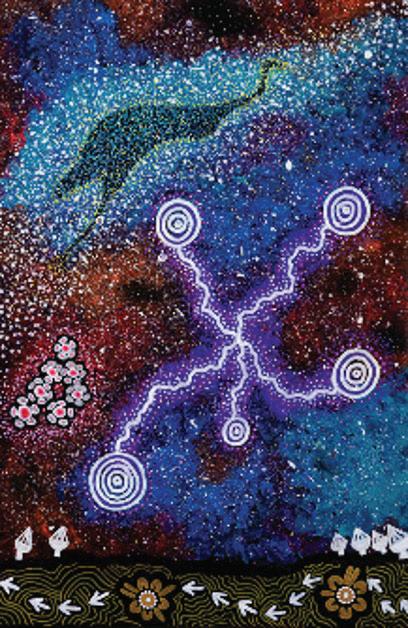
Source 7.6.31 Wajarri artist Noeleen Hamlett painted this picture featuring the Southern Cross and Emu in the Sky. Wajarri Country is in the Murchison region in Western Australia. The Murchison Radioastronomy Observatory is featured in Noeleen’s painting. ➜
Noeleen says about her painting:
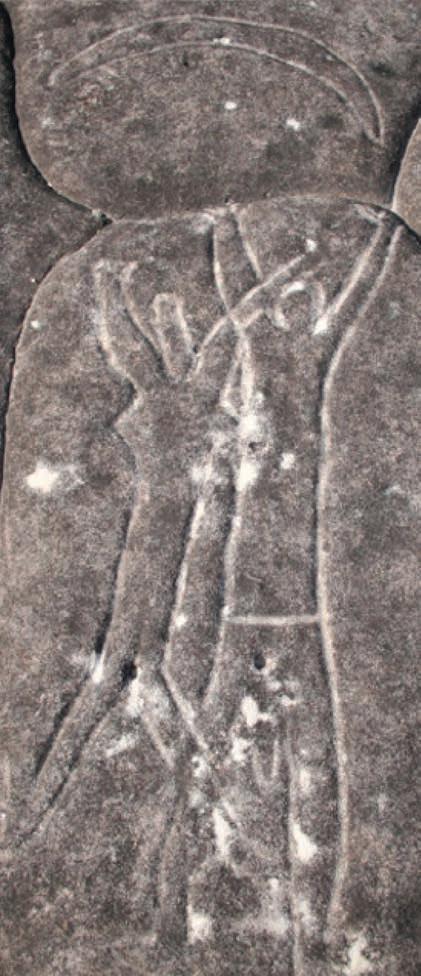
Source 7.6.32 A non-Indigenous researcher has speculated that this rock engraving, at the Basin Track, Kuring-gai Chase National Park, New South Wales, represents the Sun woman and Moon man during an eclipse, as one Source partially obscures the other (which is what happens during an eclipse).
Under our southern sky, the Southern Cross is our compass at night. The Emu in the Milky Way tells us when it’s emu egg season. The Seven Sisters teach vital skills and lessons of survival, changing seasons and talks of creation. The Sisters became part of the landscape, water and springs as they ed from Yurlu. It also teaches us about the bond of family and relationships. The ower-shaped symbol and the emu footprints represent moving forward, coming together to re ect our vision to create a better future. The telescopes look beyond the black holes in our galaxy to challenge and enrich our understanding of the Universe.
Responding to the sources: rock engraving
Brainstorm the kinds of evidence that would help you decide if Source 7.6.32 is a depiction of an eclipse. Using your ideas from your brainstorm, decide your point of view on whether you agree or disagree with the speculation that this is a depiction of an eclipse. Justify your perspective with evidence from both science and First Peoples in a T chart.
Re ect: Thinking back to what you have learnt about knowledge sharing, describe how Noelene Hamlett’s painting (Source 7.6.31) combines elements of di erent knowledge stories about Sky Country.
Key concepts: perspectives
HASS skills: analysing
Re ecting on your learning
1 Take 2–3 minutes of individual re ection to create, from memory, a list of key ideas you recall from this section.
2 Swap your list with the list of one of your classmates. Take 1–2 minutes to read that list and add new things (such as details, missing ideas or a correction).
3 Repeat step 2 at least twice with di erent classmates.
4 Retrieve your list. Read through and review all the additions made to your list. Add any new ideas you might have had from reading three other lists.
5 Based on the information and sources in this section, either create a mind map or a graphic organiser or write a short response of 5–10 sentences to summarise what you have learnt.
Key concepts: signi cance, empathy, perspectives
HASS skills: communicating and re ecting, analysing, evaluating
Go online to access the interactive section review and more!
1 De ne regenerative cultivation.
2 Identify three ways that First Peoples used regenerative cultivation.
3 Identify how First Peoples caught sh in creeks.
Interpret
4 Describe how the Wongatha people of the Kalgoorlie Boulder region protected their water resources.
5 Explain how cultural burning preserves biodiversity in the Kimberley.
• What funerary customs have First Peoples practised?
• How can First Peoples, historians and scientists work together respectfully?
displacement forced removal of people from their ancestral lands, often resulting in loss of culture, connection and livelihood dispossession the taking of lands and resources without consent
Elders knowledge holders respected by First Peoples, often called Aunty or Uncle
This chapter has been concerned with the Deep Time history of Australia, which is the time before Europeans arrived. Since 1788, First Peoples have faced massacres, displacement, dispossession and cultural damage and loss. First Peoples’ societies have always been culturally and linguistically diverse; different histories since 1788 have
added more ways to make Australia a diverse nation.
Scienti c investigations are one way for First Peoples to reclaim their cultural heritage. This means that scientists, archaeologists, historians and First Peoples today must nd respectful ways to work together.
Source7.7.1 On 17 November 2017, at Lake Mungo, Mungo Man and the remains of other people who lived about 40 000 years ago were carried in a casket made from 5000-year-old red gum to their ancestral lands, with Aboriginal Elders leading a ceremony.

See, think, wonder Refer to Source 7.7.1.
1 See: Describe what you see in the photo.
2 Think:
a Who could be inside the casket?
b Why might it be important that these remains are returned to ancestral lands?
c The casket has been made of very old wood. Why might this have been chosen?
d Who could you ask to nd out more information?
3 Wonder: What does this practice make you wonder about what funerary customs First Peoples have practised?
Key concepts: signi cance, empathy, perspectives
Peoples all over the world have important cultural practices that guide what to do when someone passes away. For many First Peoples, the death of a family member and period of mourning is known as Sorry Business in Aboriginal English. It is a signi cant time, and various protocols, ceremonies and rituals can be practised in which people are expected to participate. There is cultural diversity across the Australian continent.
HASS skills: analysing, evaluating, communicating and re ecting
For many First Peoples, if Sorry Business is not completed properly a deceased person’s spirit cannot nd its way home to the ancestors and will be restless and unhappy. It is an important cultural obligation to ensure that deceased spirits are taken care of and returned to their ancestral home.
For example, the Yolngu Peoples of Arnhem Land used log cof ns, or hollow logs, in which to hold the bones of those who have died. Today, these log cof ns are valued as works of art.

Source7.7.2 Aboriginal Memorial, an artwork at the National Gallery of Australia (NGA) in Canberra, is created in the style of Yolgnu log cof
Hollow logs made for a burial ceremony are large. Smaller hollow logs may be made to keep the bones of the deceased at the home of the family for a period of time. The hollow logs can also represent the deceased person – the designs on the log are the same as the designs painted on the body during the burial rites. Many of the hollow logs have a small aperture [a small opening or hole] either carved or painted towards the top. Yolngu believe that this provides the soul of the deceased with a viewing hole to look through and survey the land.
Source 7.7.3 The NGA’s description of why hollow logs were made ➜
Read the next two sources to hear what the Noongar people feel about their continuing relationship to Country after they die.
It doesn’t matter where you go, you know where you come from. You might go out of your country, but you know where your home is. Where you were born is where you will be buried.
Source 7.7.4 Glen Colbung, oral history, 2008 ➜
Last night I went to sleep in my homeland. My home, my home, my great, great miya-miya home.
Source 7.7.5 Gus Ryder, oral history, 2008 ➜
The in-laws, who arranged and performed the burial now have a tombstone made. People have sent in money. The family wraps the tombstone in cloth and decorates it. They then give a feast for the in-laws after ‘going to rest’ prayers and hymns are said. The oldest man in the village may speak of the person’s life. Gifts of cloth, produce, money, garden are given by the family to the in-laws to say thank-you for arranging the funeral. The head in-law returns the thanks and calls everyone to eat together.
The two-way sharing between in-laws and family is parallelled by a reciprocal balance between the living and the departed one, whose spirit is freed to a new world. This new rite is of rst-order importance among the Meriam and other Torres Strait Islanders: it completes a two-stage burial rite, which was outlawed by the missionaries. Wherever Torres Strait Islanders are, and more than half of them live today in towns of North Queensland, tombstone unveiling ceremonies continue to have a central place in their lives today.
In Torres Strait Islander communities, Sorry Business includes ‘tombstone unveiling ceremonies’ or a ‘tombstone opening’. This ceremony refers to the ritual of a decorated headstone being unveiled for the family and community to remember a loved one. This reinforces the connections between the living and those who have gone, marks the completion of an extensively decorated tombstone and the family’s nal goodbye. The entire family is involved with the ceremony, which lasts a whole day and ends with feasting and dancing.
➜
Source 7.7.6 Non-Indigenous anthropologist Nonie Sharp describes a ‘Tombstone Opening’ ceremony.
How can
historians
together respectfully?
Since 1788, some settlers showed interest in the funerary practices of First Peoples but generally the approach has been disrespectful. Many funeral grounds or markers have been destroyed and remains of deceased people have been disturbed or destroyed, often deliberately.
Scientists have also often disregarded First Peoples’ funerary customs and associated understandings, believing that their interest in the science of human remains is more important than First Peoples’ relatives receiving proper funerary rites.
These circumstances have led to mistrust and dif cult relationships.
Building trust
1 Re ect on your own cultural practices around funerary customs. Use your empathy skills and write down what you think it would feel like, if these were not completed properly.
2 Write a list that identi es three ways that historians and scientists can build trust with First Peoples.
Key concepts: empathy, perspectives
Respecting First Peoples’ funerary traditions: the story of Mungo Man
Lake Mungo, in the Willandra Lakes region in south-west New South Wales, is home to the Paakantji, Mutthi Mutthi and Ngiyampaa Peoples. Each has their own understanding of their origins. Today, Lake Mungo is a semi-arid desert environment, but thousands of years ago this was a lush area surrounding a lake lled with water. Scientists have determined that the lake has been dry for about 10000 years.
Lake Mungo is one of the most signi cant archaeological sites in Australia. When researchers led by a non-Indigenous geologist and archaeologist, Jim Bowler, began to study the area in the late 1960s and early 1970s, they found evidence of the traditions of First Peoples in the area. This included evidence of funeral practices in which bodies were washed with ochre and cremated. Australian archaeologists excavated the remains of ‘Mungo Man’ and removed the bones from the area. Over the years, research teams took many other bones and artefacts that they found in that area ‘out of Country’ for study. This was not an uncommon practice at the time around the world. The researchers made many important scienti c discoveries about the length of human settlement in Australia and about ancient customs and practices – especially those regarding funeral practices.
HASS skills: communicating and re ecting
The excavations, however, came to be widely criticised. Paakantji, Mutthi Mutthi and Ngiyampaa Peoples actively campaigned to have the remains returned. In November 2017, ‘Mungo Man’ and the ancestral remains of 104 other people were returned to Elders and reburied according to traditional custom, on Country, at Lake Mungo.
Aboriginal people have demanded that excavation of archaeological remains from lake Mungo in western New South Wales cease … A lawyer acting on behalf of the people had written to the archaeologists concerned to say they should stop and return all nds to the traditional owners. A similar letter had been sent to the National Parks and Wildlife Service asking that permits no longer be given for this type of archaeological work. Some other groups had also written letters about interference with burial sites in other areas.
The lake Mungo excavation was described as a ‘crisis’ … [and] draft laws which had been drawn up for the protection of sacred sites were criticised … There were also calls made for the Australian Government to consider legislation to control the trade in valuable Aboriginal artefacts. Some of these were even being sold overseas.
Source 7.7.7 Adapted from ‘Let remains alone, Aborigines say’, The Canberra Times, 28 September 1974, p. 7
anthropologist scientist engaged in the study of humankind, both from past and present societies
The recovery and management of the remains of ancestors is an issue of great sensitivity to Aboriginal people. This sensitivity comes from both cultural beliefs and the treatment of Aboriginal people by governments, scientists and others in the recent past. Many skeletons and other remains, both ancient and modern, were taken and studied without permission. Some were scattered, sent overseas and kept in collections. This is still a controversial issue today and not all remains have been returned to their Country and their people.
Source7.7.8 An extract from the Mungo National Park website, written by the Willandra Lakes Traditional Tribal Groups Elders Council and New South Wales National Parks and Wildlife Service, 2021
Traditional owners say the return of the remains of the historic Mungo Man, who was removed by scientists from his resting place more than 40 years ago, will provide closure and is a step toward reconciliation. More than four decades ago anthropologists removed the ancient skeleton of an Aboriginal man –the discovery of which rewrote Australian history. Now he has been returned home to his descendants, travelling for days in a hearse from Canberra.
Traditional owners hosted a welcome home ceremony attended by hundreds to celebrate the historic return of the 42000-year-old remains of Mungo Man to his original resting place.
‘Today is one of those catalytic moments that we need to enhance Australian society, and bring empathy into, understanding the Aboriginal culture,’ said Paakantyi man Michael Young, who is also a member of the Aboriginal Advisory Group for Mungo Man’s return …
Mungo Man was buried with his limbs stretched out, his hands crossed across his groin and was covered in ochre that had been brought from more than 200 kilometres away.
It was some of the earliest uncovered evidence of ritualistic burial in the world, and proved that early Aboriginal Australians had a robust belief and burial system – around the same time as Neanderthals were roaming Europe.
After his remains were uncovered he was moved to Australian National University in Canberra where he was kept for about 40 years.
Geologist Jim Bowler found Mungo Man and said the profound scienti c discoveries could not have taken place if he was not moved …
‘The Aboriginal people voiced their objection, we were intruding into their history, not our history.’ …
While many are celebrating the historic return of Mungo Man, there are major concerns there is still no nal resting place for him …
Mr Bowler said state and federal governments should do more to create a respectful nal place of rest … ‘He needs a major memorial, a major identi cation of his iconic status. In the pages of earliest Australian history his name stands out, and we have failed to make a nal resting place for a historic remains.’
Source 7.7.9 Extracts from non-Indigenous journalist Isabella Higgins, ‘Mungo Man returned to ancestral home where he died 40000 years ago’, ABC website, 17 November 2017
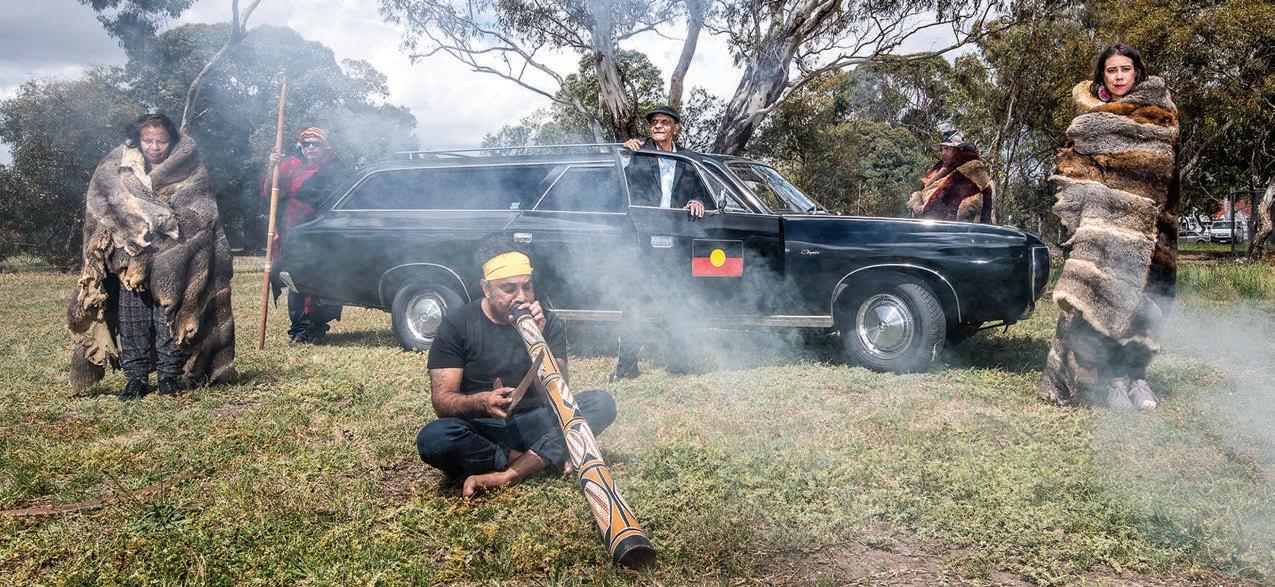
Source7.7.10 In November 2017, the remains of ‘Mungo Man’ and 104 other ancestors were returned to their Country at Lake Mungo. Proper ceremonies were conducted.
Two more key historical concepts you will learn about in your studies of History in Year 7 are contestability and empathy. We discussed the difference between primary and secondary sources earlier in the chapter. When historians have different interpretations of something such as an event, we use the term ‘contestable’
➜
to refer to a clash of ideas. It lets us keep in mind that not everyone agrees about the meaning of things in History. Empathy is the ability to share someone else’s feelings or experiences by imagining what it would be like to be in that person’s situation. Developing a sense of empathy for people in the past is one of the great skills you will learn in this subject.
Source7.7.11 First Nations Peoples and others gather for a traditional, on Country, funeral ceremony for Mungo Man’s remains and the remains of others. Mungo Man was the ancestor of the Mutthi Mutthi, Ngiyampaa and Paakantyi peoples. These three communities worked together for 40 years to achieve a government decision in 2015 to repatriate (return) his and other remains.
contestability where interpretations of the past di er empathy the ability to relate to other people

Thinking deeper historical concepts
Did you know you are engaging in conceptual thinking? The historical concept in this question is contestability.
Activity 7.17
Responding to the sources
Refer to Sources 7.7.7 to 7.7.11.
1Analyse why you think non-Indigenous scientists felt they could take the remains of buried First Peoples.
2 Re ect: If you were a scientist interested in the Deep Time history of Australia, how would you have acted in this situation?
3List: What does respectful Deep Time history research look like?
Key concepts: contestability, perspectives, empathy
Re ecting on your learning
HASS skills: communicating and re ecting, analysing
1 Take 2–3 minutes of individual re ection to create, from memory, a list of key ideas you recall from this section.
2 Swap your list with the list of one of your classmates. Take 1–2 minutes to read that list and add new things (such as details, missing ideas or a correction).
3 Repeat step 2 at least two times with di erent classmates.
4 Retrieve your list. Read through and review all the additions made to your list. Add any new ideas you might have had from reading three other lists.
5 Based on the information and sources in this section, either create a mind map or write a short response of 5–10 sentences to summarise what you have learnt and to answer the question: ‘What are respectful ways for historians to work with First Peoples’ cultural heritage?’ Be sure to consider both First Peoples’ understanding of time and place and historians’ understandings of history.
6 Consider how the information and sources in this section could contribute to answering the overall inquiry question: ‘How have First Peoples sustained a regenerative relationship with the Australian continent through Deep Time?’
7 Re ections are personal explorations. Write, sketch, create or tell to explore your thinking on the content in this topic. Use these sentence stems to help you:
• I used to think …
• Now I think …
Key concepts: empathy, perspectives, continuity and change
HASS skills: communicating and re ecting, analysing, evaluating
1 Create a 3–2–1 organiser.
Using the information about key features of ancient societies in the ‘Historical overview’, write down:
• 3 things you have learnt
• 2 interesting facts and
• 1 new word.
Now share your 3–2–1 ideas with a partner. What did you both choose that was the same (compare)? What did you each choose that was di erent (contrast)?
2 Create a table with two columns and write the title ‘The common features of ancient societies’ at the top.
• At the top of one column write ‘Australia’s First Peoples’ and at the top of the other write ‘Other ancient cultures’.
• Reread the information about trade, art, writing and pottery in the ‘Historical overview’.
• Choose ONE of these topics to focus on. This might be because it is more interesting or has more examples or because of another reason.
• Using what you just reread from the topic you chose, summarise in your table columns, using your own words, the information about that topic for Australia’s First Peoples and other ancient cultures.
Using your information in both columns, highlight or underline things that are the same in one colour and things that are di erent in another colour.
3 Do you have more that is the same or more that is di erent? Compare your table with that of a partner.
4 Using what you have identi ed as the same and di erent as your examples (or evidence), write a short paragraph in response to the following statement:
People in every ancient society across the world developed features in their societies in exactly the same ways.
Key concepts: continuity and change, signi cance
HASS skills: communicating and re ecting, analysing
Go
End of section 7.7 review
7.7 Review questions
Recall
1 Identify what Sorry Business includes in Torres Strait Islander culture.
2 Identify how some settlers have been disrespectful about First Peoples' funerary practices.
3 Identify when and where the remains of Mungo Man were discovered.
Interpret
4 Explain what happens if Sorry Business is not completed.
5 Explain why First Peoples are trying to protect the sacred sites in Lake Mungo.
Argue
6 Using your understanding of empathy, perspectives and contestability, argue why historians and archaeologists should be more respectful of the cultures of First Peoples.
Key concepts: contestability, perspectives, empathy, continuity and change
HASS skills: communicating and re ecting, analysing, evaluating
It matters because without understanding the past, we put the future in danger. Planning for the future can only be done well by considering all the important things that have happened in the past, and using what has been learnt to make a good plan about how to go forward.
It also matters because learning how to think like a detective is an important life skill. Historians are ‘time detectives’ – they learn to ask questions about the information they nd, and they know how to pull together di erent pieces of information to make sense of them all. This is an important life skill, because it can help us to make choices, whether we are choosing the phone/car/house we want to buy, or nding out whether we are being told the truth by our boss about how much we were paid.
Refer to Source 7.8.1 on the following page. Thinking about evidence in this way and asking
these kinds of questions means learning to think critically. This doesn’t mean thinking negatively. Instead, it means being able to evaluate, assess and analyse information for strengths and weaknesses, which is necessary for making good decisions. This is why questioning and researching, analysing, evaluating, and communicating and re ecting are key HASS skills. These skills help in developing understanding of the key history concepts of sources, evidence, perspectives, signi cance and contestability.
You don’t have to be a historian to see how useful these ways of learning to think and act are. Nor do you need to be a historian to use these skills. You probably already do use them, every single day. Studying History will just make you better at them.
Source: The concept of source refers to any written or non-written materials that can be used to investigate and provide information about the past.
Evidence: Evidence is about the information obtained from sources that is valuable for a particular inquiry. Evidence can be used to help construct a historical narrative, to support a hypothesis or to prove or disprove a conclusion. Sources become evidence when they are used to support or dispel a claim.
Questioning and researching: Developing questions about events, developments, issues and phenomena; collecting and organising information, evidence and data, from primary and secondary sources.
Contestability: The concept of contestability occurs when particular interpretations about the past are open to debate, as a result of a lack of evidence or di erent perspectives, for example.
Signi cance: The concept of signi cance is the importance that is assigned to particular aspects of the past (e.g. events, developments, individuals, groups, movements and historical sites). Signi cance includes an examination of the principles behind the selection of what should be investigated and remembered.
Perspective: The concept of perspective is a person’s point of view, the position from which they see and understand events going on around them.
Analysing: Interpreting information, evidence and data to identify key points or ideas, points of view, perceptions and interpretations; identifying the purpose of sources and determining their accuracy and reliability.
Evaluating: Proposing explanations for events, challenges, developments, issues and phenomena; drawing evidencebased conclusions and explanations; and suggesting courses of action in response to events, challenges, developments, issues and problems.
Source 7.8.1 The interconnections between some important history concepts and skills
Re ecting: Thinking carefully, especially about opinions and possibilities.
That just about wraps up this topic. How do you feel you went working through the chapter? Before you attempt the following activities, visit the Interactive Textbook to rate your con dence with this topic via a downloadable checklist.
Go back through the chapter and nd one example of:
• something that is signi cant
• something that is contestable, that people have di erent perspectives about
• something that made you re ect (think carefully)
• something you would like to research more about.
Now write one sentence explaining your reasons for choosing each. Use the following sentence stems to help you:
• This is signi cant/contestable because …
• This made me think carefully because …
• This is interesting because … and I want to know more about …
Create an archaeological site in a shoebox using small objects from around the home or classroom. Carefully bury a few small artefacts in layers of di erent material, like coloured sand and soil.
• Think carefully about the di erent strata you will lay down and what objects will go in each level.
• Write a short paragraph explaining the history of your site.
• Ask a partner to carefully uncover the site, layer by layer, and write a site report interpreting their nds.
• Compare the two reports and discuss the ndings.
Work with a partner to nd at least two di erent pieces of information in the news about one important event that has happened recently. This can be on any topic. Your family or teacher might help you nd these. Online articles or articles from two di erent newspapers would work well for this task – for example, an article from The West Australian and one from The Guardian newspapers. Label one article ‘Source 1’ and the other ‘Source 2’.
• For each piece of information/article/source, write down: the key points being made; any evidence or data used; any opinions being given.
• Now write two lists: What things are the same in both of your sources? What things are di erent?
• Look at what you have written about both of your sources so far. Decide which of the sources you think is more reliable.
• Write down two reasons why you think this.
• Explain your ideas to another pair working in your class.
1. Choose a famous historical gure and explain why studying them is important.
2. Explain the role that sources play in constructing history.
3. Summarise how technological and scienti c methods have increased our understanding of the past.
4. Why is conservation important to archaeologists?
Be a detective
Make sure you use at least two pieces of evidence and/or examples to support your ideas when you answer the question below. You will need to write one paragraph (at least four sentences) to answer this question properly.
Question: Why should we care about the past, and what can we learn from it?
Key concepts: sources, evidence, continuity and change, signi cance, perspectives
HASS skills: analysing, questioning and researching, communicating and re ecting, evaluating
So much of who and what we are today came from civilisations and people who lived thousands of years ago. Many of the traditions and cultural practices of the settlers in Australia come from the ancient civilisations of Europe and the Mediterranean. Our society, languages and values are based on a mix of many of the ideas and skills developed in these ancient societies, including democracy, architecture, religion and engineering. However, powerful ancient societies who built empires did not only exist in Europe and the Mediterranean; the Asia–Paci c region was home to the ancient civilisations of India and China during the same period.
The cultural beliefs and practices of all of these unique civilisations have helped shape the way we live and think in Australia today. The ancient past has impacted on us in ways we often do not realise.
In Year 7, you have the chance to explore six of the most signi cant ancient civilisations in world history: Egypt, Greece, Rome, India, China and of course the oldest continuous culture in the world right here in Australia, which you have explored in Chapter 7. You will investigate their physical features, key
individuals, beliefs and practices and key historical events. As you investigate these fascinating ancient societies, think about what we do today in Australia that originated in these ancient civilisations.
After completing this unit, you should be able to answer these questions:
• How do we know about the ancient world?
• Why and where did ancient societies develop?
• Why and how did ancient societies change and stay the same?
• What key beliefs and values emerged, and how did they in uence the people?
• What were the causes and effects of con ict between ancient societies in this period?
• Which signi cant people, groups and ideas from this period have in uenced the world today?
Source A The Great Sphinx, Pyramid of Khafre and Great Pyramid of Khufu in Cairo, Egypt; The Parthenon at the Acropolis of Athens, Greece; Ruins of the Roman Forum, Rome, Italy; Mahabodhi Temple in Bodh Gaya, Bihar, India; The Great Wall of Qi in China stretches from Changqing District in Jinan, across central Shandong Province to the Yellow Sea in Qingdao.


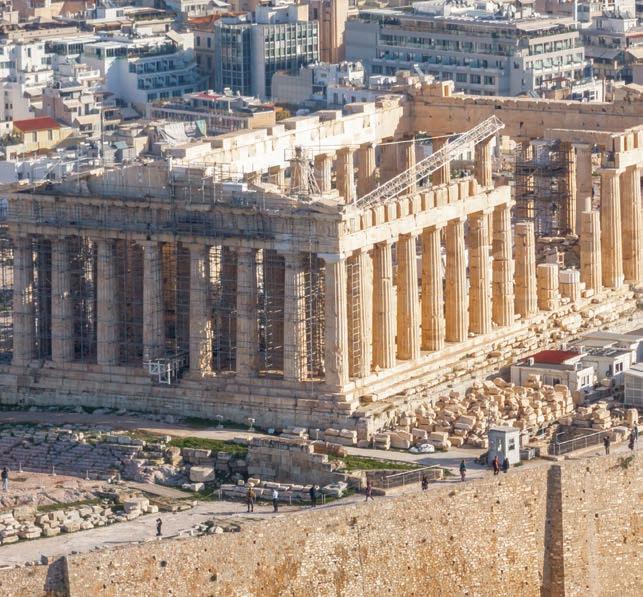


Some of the chapters in this book have a special focus on the concept of cause and effect. This means you will be developing your ability to explain why things happened in the past and what the results of those events were.
There are many different types of causes and effects. Causes and effects can be political, economic and social. There is also usually more than one cause or effect for an event, so we need to avoid falling into the trap of thinking an event only has one trigger or one result. As you read the chapters, you can look for opportunities to build your understanding of cause and effect.
Some chapters also have a focus on the concepts of continuity and change and empathy. This means you will develop your ability to explain what changed and what stayed the same over time, as well as your understanding of what life was like for people in the past.
others is a crucial life skill because it will help you see the world from more points of view than your own, and this will help you make better decisions.
Identifying continuity and change is a key skill when studying history. These chapters will help you identify when things change and why, which groups were involved and what types of things stay the same. Empathy is understanding the past from the point of view of a particular individual or group, including an understanding of what their circumstances and challenges were, and what motivations, values and attitudes were behind their decisions and actions. Developing a sense of empathy towards
The majority of Egyptologists agree on the dates for events that occurred in ancient Egypt. This system is known as the Conventional Egyptian chronology, which places the beginning of the Old Kingdom in the 27th century BCE , the beginning of the Middle Kingdom in the 21st century BCE and the beginning of the New Kingdom in the mid-16th century BCE .
Despite this general agreement, many disagreements remain among academics, resulting in different dating systems used by academics studying ancient Egypt, which can be anywhere from 500 to 30 years different from the conventional dating system dates.
So, how do we decide when something happened and give it a de nite date?
Simple – we don’t. Because so many experts disagree about how to accurately date the artefacts and evidence found in ancient Egypt, as history students all we have to do is to choose one dating system and stick with it when we are writing about ancient Egypt.
In this book, we will use the conventional system – but, because this is so contested, we will refer to Old Kingdom, Middle Kingdom and New Kingdom more than we will refer to dates. There will also be some reference to the ‘Three age system’ of dating things outlined on the following page.
Similarly, you may see lots of different spellings for the names of various people in ancient Egypt while you study this topic. There is a good reason for this too. It is because the ancient Egyptians wrote in either hieroglyphs or hieratic script. You will read more about these later. To make sense of these ancient languages that no one reads or writes anymore, we have to go through three processes:
1. Transliteration changes the symbols used in hieroglyphs, hieratic and demotic into alphabetic symbols.
2. Transcription then happens because we have to write the transliterated symbols into our own language.
3. Translation then puts the meaning of each word into our individual languages. This might be English, French, German, Japanese or any other language.
This is where it gets tricky because different languages translate different sounds using different letters, and this results in differences in spelling. This can be confusing. If you can read French, German, Dutch or Italian, you will nd the transcriptions and therefore the spelling of names vary between languages. So, although they are spelt differently, Thutmosis is the same as Thutmose and Tuthmose.
However, do not panic. Again, all we have to do is pick one accepted spelling for each name that we use and stick to it.
periods, depending on the technology people used. His system created the terms Stone Age, Bronze Age and Iron Age. This method of dividing the past creates a timeline of ancient people based on the types of materials they used to make their tools. These terms are still in common usage, despite being inexact. Other periods, based on the principles of the three-age system, such as Copper Age, Steam Age and Digital Age, have become common historical terms.
Historians have also sought to divide history into blocks of time based on periods of human history. Examples of periods include the Dark Ages, Middle Ages, the Renaissance and the Enlightenment. These terms refer to broad blocks of time with no clear beginning or end dates. The primary reasons these terms are used is to allow historical analysis of human development. We also group history into ancient, medieval and modern periods to denote when signi cant changes in culture occurred.
The three-age system of dating time has been widely used by historians. It was developed by Danish scholar CJ Thomsen in the 19th century when he worked as director of the Royal Museum of Nordic Antiquities. Thomsen divided the collection of the museum into different
Relative dating is the practice of determining the date of artefacts in relation to each other without working out their exact age. Stratigraphy is an example of relative dating as things found in the same strata are assumed to be from the same time period. Another method is comparing artefacts with other objects that have similar features (such as artistic style, size or materials used). As technologies and artistic styles evolve over time, they can be used to group things on a timeline. This is called typology dating. Although relative dating does not provide an exact date, it is fast and cost-effective and helpful in understanding what things, people and events came rst, what occurred at roughly the same time, and what came after.
typology using the characteristics of an object to classify them over time. It helps in showing how an object has changed over time.

Source B The evolution of lighting, demonstrating the principles of typology dating ➜
Creative task
Look at Source B.
1 Apply the principles of typology to create your own sequence of drawings showing the development of a technology over time.
a You could draw different versions of a computer from an ancient abacus or the Antikythera mechanism, to the latest laptops and super computers.
b You could also look at other areas of technological development, such as aeroplanes, trains or cars.
2 Choose five different examples and explain how your sequence shows the principles of typology dating.
Key concepts: continuity and change, cause and effect, significance
HASS skills: questioning and researching, communicating and reflecting











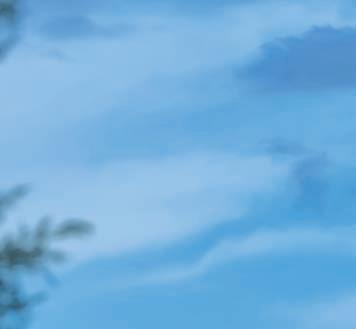
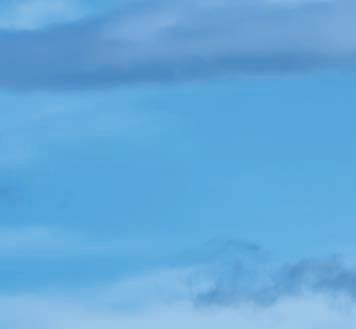












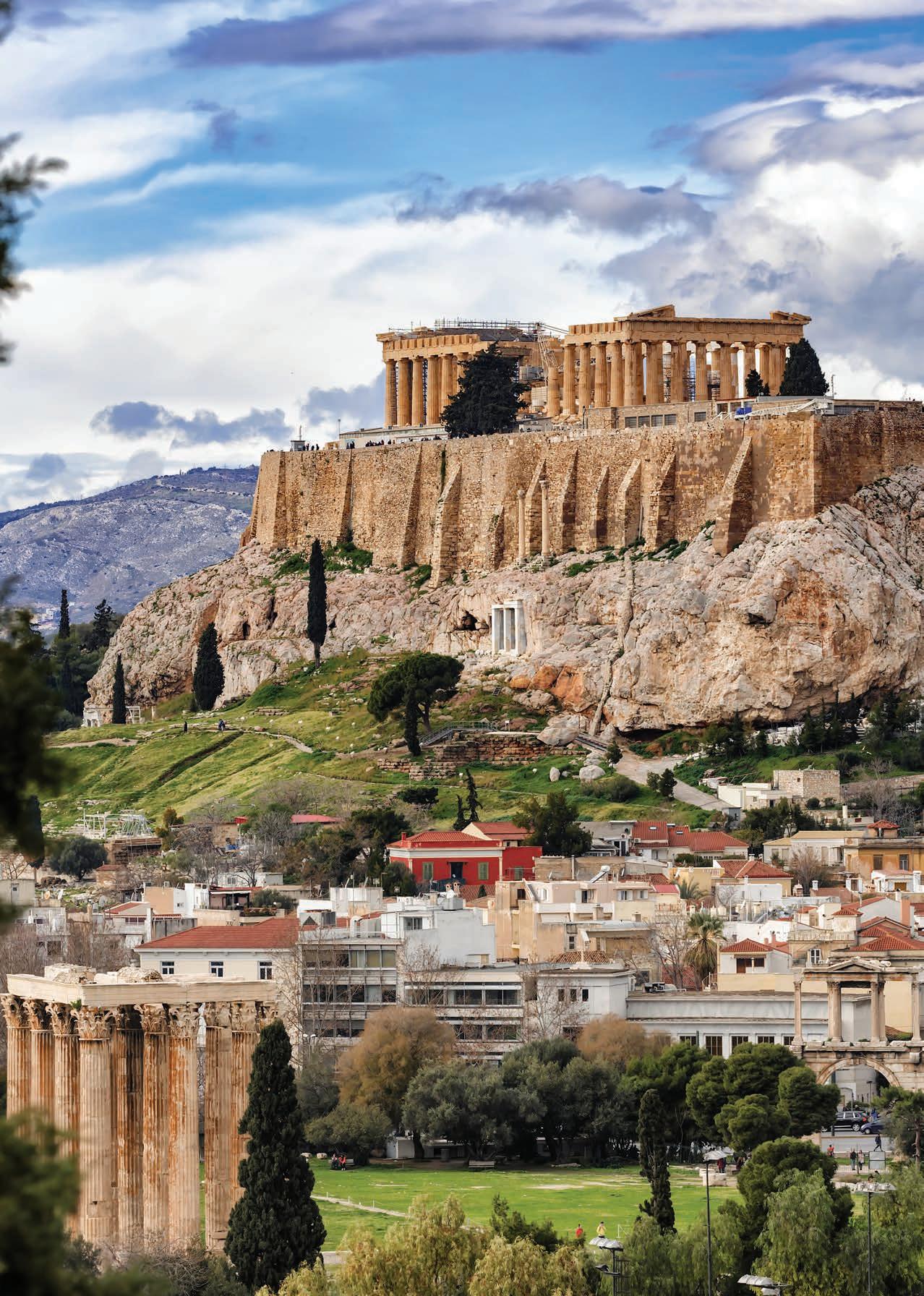

The ancient Greeks dominated the Mediterranean around 3000 years ago. They were explorers and sailors, spreading their culture from Türkiye, around the shores of the Mediterranean Sea to Italy, Sicily, North Africa and as far west as France. Alexander the Great extended Greek in uence across Europe and Western Asia as far as Afghanistan and India, and into Egypt in North Africa.
Today, the ancient Greeks are important because they formed the foundation of much of our own culture. Our government, ways of thinking, scienti c understanding, mathematics knowledge, art and literature styles and sports have all been impacted by the ancient Greeks.
They believed many different things and much has changed since the time of ancient Greece. However, some of their beliefs and traditions, such as democracy, are part of everyday life in Australia, while some of their actions and beliefs may seem strange. Ancient Greece is therefore both familiar and strange to us, which is one reason why this area of study is so interesting and popular.
After completing this chapter, you should be able to answer these questions:
• How did geography affect how ancient Greece developed?
• What were the signi cant beliefs and values of the ancient Greeks?
• What was everyday life like for the ancient Greeks?
• What were Greek warfare and military life like?
• Who were signi cant individuals in ancient Greece?
• How do archaeologists uncover information about ancient Greece?
After completing this chapter, you should be able to:
• explain what cause and effect means in the study of history
• understand the role of historians and archaeologists in uncovering the past
• develop historical empathy with people in the past
• interpret written and archaeological sources
• evaluate the reliability of sources
• correctly use special terms speci c to the topic under study
• use evidence (dates, statistics, examples) to build an argument
• re ect on your ndings and re ne your learning.
Visit the Interactive Textbook to access:
• interactive review quizzes and Scorcher competition
• videos, image galleries and other extra materials.
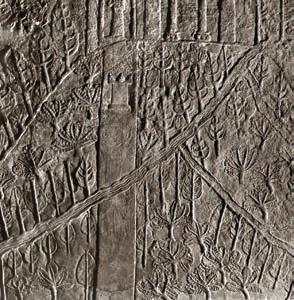
Carving from 645 BCE of ancient Mesopotamian irrigation channels for farming
What came before this topic?
• c.4000–3000 BCE Early forms of farming begin in Mesopotamia
• c.3100–2686 BCE Farming societies in early Egypt develop along the Nile River
• c.3000–1450 BCE Greek-speaking tribes enter Greece
c.2000 BCE The beginning of the Mycenaean era. Organised cities spread across the Greek mainland

c.1100 BCE The Trojan War is fought. The city of Troy is destroyed by the Greeks
Reconstruction of the ‘bull-leaping’ fresco from the Minoan royal palace at Knossos
c.3000–1600 BCE
The Minoan civilisation develops in Crete. It is one of the earliest organised societies in Europe
c.1400 BCE The city of Athens is founded
1 Use the timeline to identify some of the famous individuals associated with ancient Greece. What are these people known for?
2 Research and write about what happened during the Trojan War. What is the most famous event in this conflict?
Key concepts: cause and effect, significance
HASS skills: questioning and researching, communicating and reflecting
c.1100–900 BCE Greece enters a time when written records disappear (little is known about this period). Mycenaean culture is destroyed, possibly by invaders

Relief of Trojan and Greek soldiers in
• c.336–323 BCE Reign of Alexander the Great
• c.27 BCE Beginning of the Roman Empire
• 1 CE Birth of Christ

c.700 BCE
Homer writes The Iliad and The Odyssey, two famous stories that survive today
Roman copy from 1 CE of Alexander the Great ➜
c.490–479 BCE
The period of the Greco-Persian Wars. Greece prevents Persian invasion at the Battle of Marathon. Although the battle of Thermopylae saw setbacks for the Greeks because of the defeat of the 300 Spartiates led by Spartan King Leonidas, the Greeks rallied and followed up with a crushing sea victory at Salamis. The final battle was won by Greece, with the Spartans leading the Greeks at Plataea

c.750–500 BCE
Early forms of democracy emerge throughout Greece
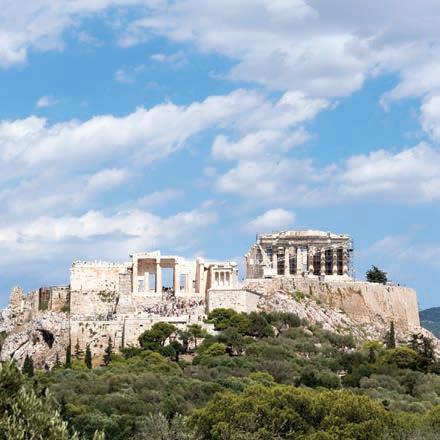
c.460s BCE
Greece enters a ‘classical age’ and Pericles implements a radical form of democracy in Athens
c.431–404 BCE
The Peloponnesian War. Athens and Sparta go to war, which brings the classical age to an end
c.356 BCE
Alexander III of Macedon, commonly known as Alexander the Great, was born. Alexander was a king of the ancient Greek kingdom of Macedon and introduced a culture of ‘Hellenism’, which helped to ensure that Greek culture and language continued to diffuse across Europe and the Near East for hundreds of years
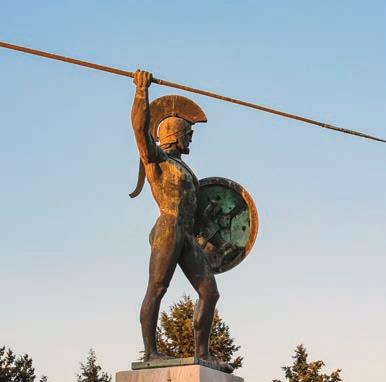
• How did geography affect the ways ancient Greece developed?
city-state a city that rules itself and the area immediately surrounding it
Source 9.3.1
The Mediterranean Sea and the Greek city-states in the 9th to 6th centuries
Ancient Greece developed as a series of independent cities called city-states . It was not a large kingdom like ancient Egypt or ancient China. Instead, each city-state (called a polis by the Greeks) controlled the area that immediately surrounded it. Greece’s landscape is very mountainous, so city-states found controlling more than the area directly around them challenging.
The geography of Greece influenced how ancient cities like Athens, Sparta and Corinth developed politically, economically and socially.
Greece is in south-eastern Europe. It is surrounded by the Aegean, Mediterranean and Ionian Seas. Africa lies to the south and Asia is to the east. Thousands of small islands exist off the Greek mainland. Many of these were home to Greek communities during ancient times and remain home to its people today.
The Greek mainland is a harsh rugged, mountainous environment. There are different climates across Greece, depending on location.
In the mountains, the winters are cold, the plains in summer are extremely hot, while parts of Greece experience weather conditions very much like ours in Western Australia. In many places, the soil is poor and shallow, so is not suitable for growing large crops for farming. This meant that the city-states could not easily grow a lot of the basic food staples like wheat or barley to feed their populations.
The rugged environment made transport and trade by road dif cult. To overcome this, most communication and transport was done via the sea. Some Greeks took to the sea much more readily than others. The Athenians, for example, became expert sailors very early on, while the Spartans tended not to favour moving around by sea even though they have some of the most rugged and mountainous territory in Greece, which made it challenging for them to travel overland.
The mountainous landscape also kept city-states separate, which meant they ruled themselves and were independent from one another, but they did have a lot
of similarities across their cultures, which they recognised brought them together as the Hellenes (the word for Greek in Greek).
The mountainous terrain did have advantages too. It provided the city-states natural protection and defence. Large armies had dif culty moving across the landscape. An example of this is when a small number of Greeks held off a large Persian army at Thermopylae by ghting in a narrow mountain pass. The separateness of the citystates at times made their relationships with each another competitive. This sometimes caused con ict between them, like the Peloponnesian War when Athens and Sparta and their allies fought each other for almost 30 years, but at other times they united against common enemies like the Persians.
Greece’s mountainous terrain had a signi cant impact on the types of food that could be produced. The Greek mainland was unable to grow large grain crops, which is what helped sustain other ancient civilisations. Therefore, the ancient Greeks had to import much of their food from other lands, such as Egypt and southern Italy. The ancient Greeks were able to trade the olives and grapes they grew in Greece’s rocky soil for the extra grain they needed.
The olive was such an important crop for the Greeks that groves of olive trees were sometimes considered sacred, and were associated with the gods. In legend, the goddess Athena gave olive trees to the city, which was why they chose to name the city after her. The olive was used as a food and trade source, and today some of the olives Greece produces, such as kalamata olives from Sparta, are enjoyed everywhere around the world.
The ancient Greek city-states mostly developed along the coastline because the mountains tend to come very close to the coast, leaving only a small strip of land suitable for settlement, which increased their need to trade. These societies were therefore reliant on the sea. As a result, ancient Greeks became expert sailors and navigators. They explored far beyond Greece, developing trade relationships with other ancient civilisations such as Egypt. Despite their lack of accurate navigation tools, like a compass, Greek sailors explored around the eastern Mediterranean.
They were able to use the stars to help them navigate across open water and, because of the Greek islands, they could sail great distances across the sea by island hopping as they travelled. This meant that although they would travel very long journeys in total, they never needed to be out of the sight of land, making sea travel safer. Through their exploration, they developed relationships with the nations right around the Mediterranean Sea. The ancient Greeks, particularly the Athenians, therefore developed large navies that helped them to defend their cities.
Using historical sources as evidence
Examine the following sources and then answer the questions that follow.
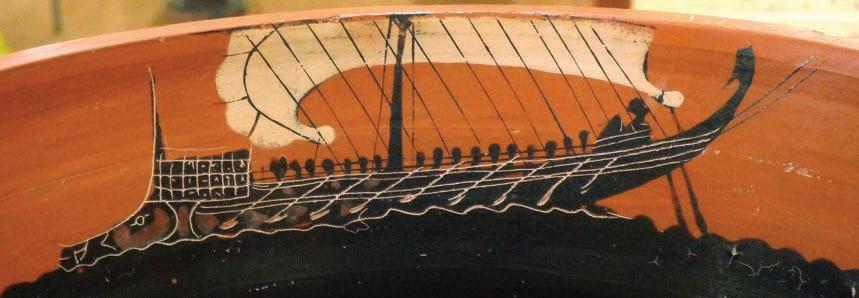
Sources are evidence for historians and archaeologists and are how we learn about people and events in the past and present. This activity will help you think about how sources and evidence help us understand important history concepts like cause and effect.
1 Examine Source 9.3.2.
aIdentify who created this object.
b When was it made?
cDescribe what has been painted on the side of the object.
d Use your analysis skills to explain what the source shows us about the importance of ships and sailing to the Greeks.
2 Examine Source 9.3.3.
aIdentify where this photo was taken.
b What are some key characteristics of the landscape? Describe them.

Source 9.3.3 The geography in Rethymno, Greece. It is easy to see how the rugged mountains reach right to the sea, leaving small spaces for human habitation.
3 Now use the evidence you collected in your answers to the questions so far to explain how Sources 9.3.2 and 9.3.3 help us to understand that the ancient Greeks were reliant on the sea.
Key concepts: sources, evidence, cause and effect
HASS skills: analysing, communicating and reflecting
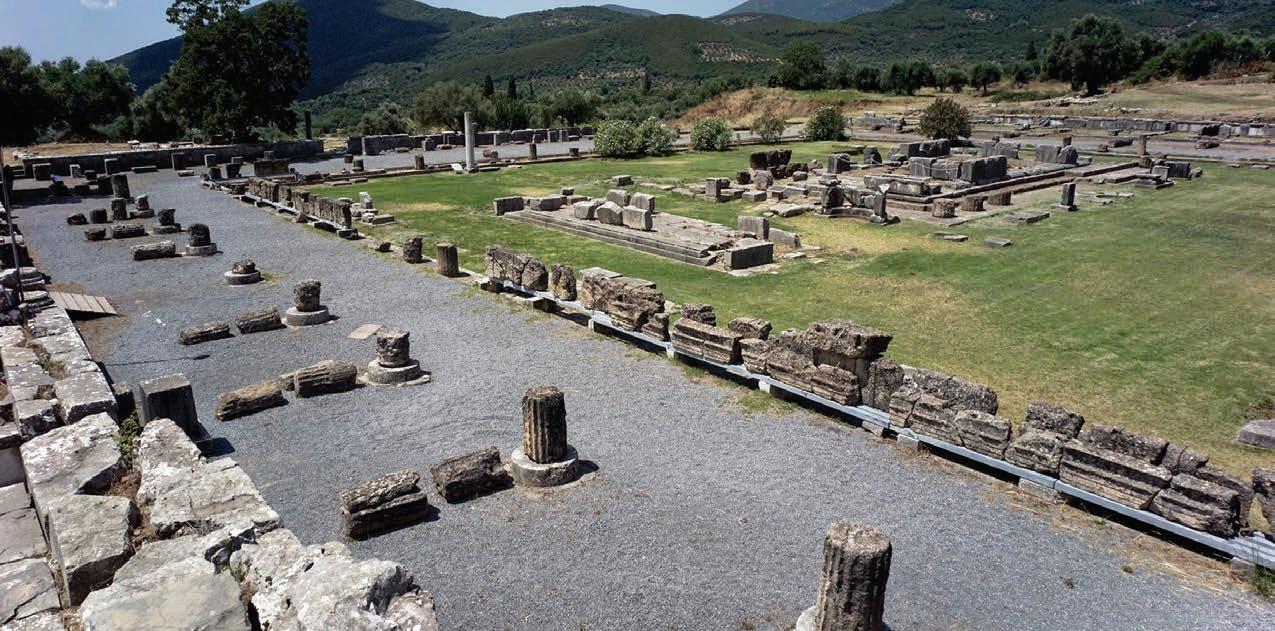
Source 9.3.4 The archaeological site of Messene gives us an excellent idea of the way of life in an ancient Greek city-state. Shown here are the ruins of the town’s agora
The geography and climate of Greece affected how the ancient Greeks lived from day to day. Most of the year they spent outdoors because of the warm climate.
As a result, Greek cities developed large marketplaces called agora. People would meet in the agora to enjoy the good weather, do business deals, gossip with their friends and discuss current events. The agora was surrounded by long
verandas called stoas. The stoas provided shade, and were places for traders and merchants to set up stalls to sell goods. Unlike people in colder climates, the ancient Greeks did not need to spend a lot of time inside to keep warm. During the winter months, most ancient Greek sailors returned home because of the rough winter seas. Armies would also usually stop ghting in winter too.
agora an open public space used for markets or assemblies
Source 9.3.5 Site plan of the Acropolis, Athens, showing major archaeological remains ➜
Go online to access the interactive section review and more!
Cause and effect
One of the most important ways of thinking in history is to understand cause and effect. Events do not happen without a reason. Historians can explain what causes an event and what the effects of an event were. Most historical events have more than one cause and more than one effect.
Based on the reading in this section, create a graphic organiser like the example here to show the causes of ancient Greece’s reliance on the sea.
Of the causes you have identified, which do you think was the most significant? Why do you think that?
Key concepts: cause and effect, significance
End of section 9.3 review
HASS skills: analysing, evaluating, communicating and reflecting 9.3 Review questions Recall
1 Identify what the small, independent cities were called that developed in ancient Greece.
2 The varied climate made it diffi cult for the ancient Greeks to grow a particular type of crop. What type of crop was diffi cult to grow?
3 Identify which regions the ancient Greeks developed their trading relationships with. Interpret
4 Explain what effect the climate had on ancient Greek cities and the way they were designed.
5 Explain what caused the ancient Greeks to become expert sailors and navigators of the sea. Argue
6 Explain the significance of the landscape and climate in influencing how ancient Greece developed as a society.
Key concepts: cause and effect
skills: communicating and reflecting
• What was everyday life like in ancient Greece?
• What different day-to-day experiences did rich and poor Greeks have?
• What ideas, innovations and technology did the Greeks use?
When historians consider what life was like for people living in ancient Greece, they are using empathy to try to understand the people and their lives at the time. One of the ways to learn about people from all sections of society, be they rich or poor, is to investigate what their day-to-day experiences would have been like. It is easier to do this for the rich and powerful about whom much was written and recorded both in their own lifetime and since. However, nding out about the poor, the slaves and the working people is much more challenging, and for this we rely a lot more on the material evidence or archaeology.
In this section, you will discover who the Greeks really were – what they enjoyed, where they worked, what they ate and wore, and where they lived. You will notice that most of the sources in this section are archaeological, as you progress through the section, think about why this might be.
Daily life in ancient Greece depended on which city-state people lived in, and we can get a good idea of some of the key aspects of everyday life by thinking about Athens and Sparta, the two most important Greek cities of the classical period (the 5th century BCE). These cities show us that life in ancient Greek cities was similar in some ways, but very different in others. Athens and Sparta were very different from each other. This, perhaps inevitably, led to some erce con ict between them at times.
Athens was one of the leaders of Greece during the Greco-Persian Wars. The city also fought against Sparta in the Peloponnesian War that followed. Athens is known for developing the form of government known as democracy in the 460s BCE, and although democracy was only used in Athens for a short time, other city-states adopted it as well. Athenian democracy is the basis for the system of democracy used in countries like Australia today.
Athens was home to most of the great writers and thinkers of ancient Greece. Aristotle and Socrates came from Athens.
Sparta was an interesting and unique city of ancient Greece. Sparta had a different kind of society from the rest of Greece because it was a military state. The city did, however, have some elements of democracy like the other city-states. Sparta had a brutal education system, but it allowed women more freedom and economic power than anywhere else in ancient Greece. Therefore, Sparta was a city of contradictions, which is why it is an interesting example of Greek society.
Greco-Persian Wars a series of conflicts between the Greek city-states and the Persian Empire Peloponnesian War a series of conflicts between Athens and Sparta, and their allies
military state a society that is organised around the military. All of the Spartan boys who were citizens had to go into state military training. This was the only job they were allowed to do, and they started at age 7 when they moved out of the family home and into the military barracks.









Source 9.4.1 Map of Greek trade routes
Peloponnese a south-western mass of land in Greece surrounded by sea. It is joined to the mainland by a narrow strip of land called the Isthmus of Corinth. Sparta was dominant in the Peloponnese for centuries.




Becoming expert sailors meant that trade grew very effectively between the Greek city-states and their neighbours. Several important trading centres grew up, making Greek trade by sea very effective. These centres were in places that supported the best access to trade routes and resources. For example:
• Athens: Athens has a very deep harbour and its port, the Piraeus, became (and remains) a major trade hub in the ancient world, dealing in goods like pottery, food, textiles and silver.
• Corinth: found in the Peloponnese, Corinth was another vital trade centre, particularly noted for ne pottery and metals.
• Rhodes: this island was an important place for trade between the Aegean and the Eastern Mediterranean, and was famous for its shipbuilding and skilled sailors.















































• Ephesus: located in Asia Minor (modern Türkiye), Ephesus was an essential port for trading luxury goods, grain and textiles.
Goods traded by the ancient Greeks were very varied and could be moved around the region in large quantities because the Greeks had excellent ships and were very good sailors. Fine Greek pottery was in great demand across the region. Examples have even been found on the Atlantic coast of Africa. Slaves were also traded in large numbers in ancient Greece.
Amphorae are large terracotta pots or jars that were used for transporting all kinds of goods by the ancient Egyptians, Greeks and Romans. Many of them have been found in shipwrecks across the Mediterranean. What was in these jars tells us a lot about what and where trade happened in ancient Greece.
DNA analysis of ancient storage jars found in ancient Greek shipwrecks from Cyprus suggests that wine, olive oil, grain, vegetables, herbs, ginger, walnut, juniper and herbs like mint, thyme and oregano were regularly exported by the Greeks. Additionally, we know that eels, cheese, honey, meat (especially from sheep and goats), tools (e.g. knives), perfumes, bronze work, marble and ne pottery (especially Attic and Corinthian pots) were also popular.
Precious metals were used in jewellery, art and coins. Athens had a lot of silver, which we know about from ancient sources such as the writer Thucydides, who lived in Athens during the Peloponnesian War in the 5th century BCE , and from surviving inscriptions. The mines were extremely productive, providing Athens with a good income of 200 talents per year. One talent was the equivalent of around nine years’ worth of wages for a single skilled labourer. Though Greece had quite a lot of silver, it was not as rich in gold, which had to be imported from places such as Thrace in the north (on the border of Greece and modern Bulgaria and Romania) and the islands of Thasos and Siphnos.
In ancient Greece, salt was so valuable that it was frequently used to make payments. Often, people used salt to buy slaves. This is where the expression ‘not worth their salt’ comes from.
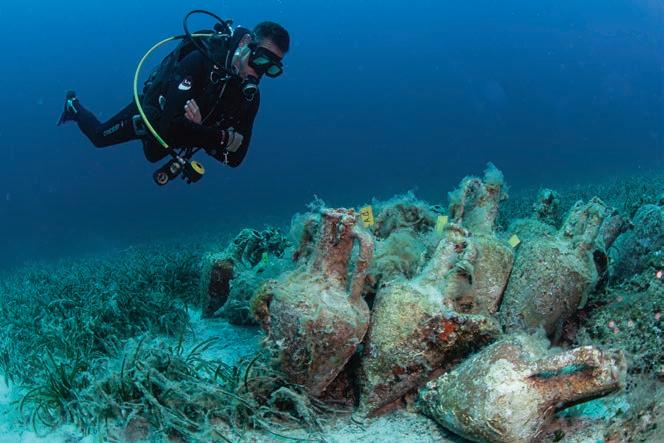

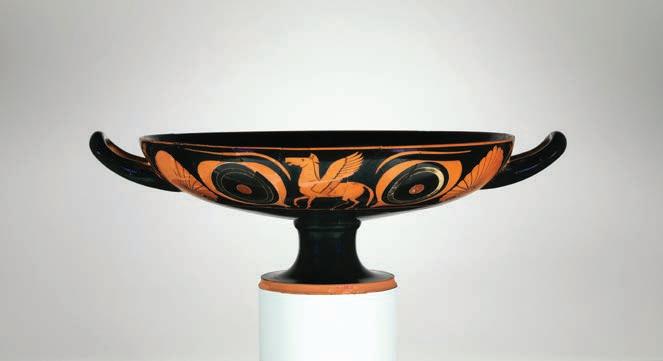

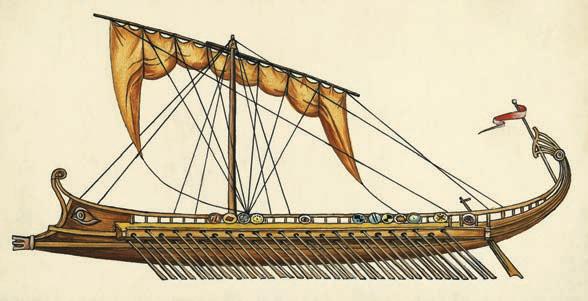
Source 9.4.6 Drawing of a trireme. The three levels of rowers are clearly visible.
However, goods were imported from outside Greece too. Grain, salt and sh came from the Black Sea in the east. Wheat, slaves, papyrus, textiles, glass and metals such as iron, copper, tin and gold came from across the region.
The expansion of Greek trade significantly contributed to the growth and wealth of the city-states. Wealth generated from trade allowed the citystates to flourish and achieve political and cultural power. Trade also brought in substantial income through taxes and tariffs, boosting the economy. Increased wealth led to the expansion of urban areas, creating more jobs and higher standards of living, and could be invested in public buildings such as temples, theatres and agoras . The long-term economic effects of trade led to Greek city-states forming alliances to protect and increase their opportunity to trade.

Trade also built cultural connections that allowed ideas to be exchanged with other societies and helped spread Greek language, art and philosophy across the Mediterranean. Philosophical and scienti c ideas were traded between Greek and non-Greek thinkers like the Egyptians too.
The Greeks’ excellence in shipbuilding was key to their trade success. Shipbuilding was advanced and sophisticated. Greek shipbuilders designed various types of ships based on
Source 9.4.7 This artist's impression shows what a naval battle using triremes would have been like. This is a scene from the Battle of Aegospotami in 405 BCE during which the Spartan admiral Lysander destroyed the Athenian eet, thus ending the Peloponnesian War.
use, which could be trade, transportation or warfare.
• Triremes are the most famous Greek ships and were known for their speed and manoeuvrability. They were generally used for warfare, but the navy supported trade by protecting trade ships from pirates and securing trade routes across the Aegean Sea.
• Early large Greek merchant ships were kerkouros. These combined rowing and sailing and seem to have been in use between 500 and 100 BCE. They could carry an average of 250–500 tonnes of cargo and may have been up to 50 metres long.
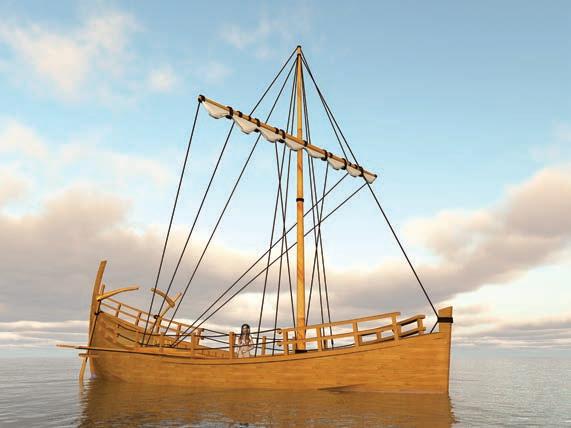
Source 9.4.8 Ancient Greek kerkouros trade ships may have looked something like this, with sails and oars.
• Penteconters were used both for trade and warfare. They were smaller than triremes and carried about 50 rowers. Because they were smaller, they had a shallow draft (less of the hull was below the waterline), making them more suitable for coastal navigation. Homer mentions penteconters in his epic story about the Greek hero Odysseus’s journey home after the Trojan War.
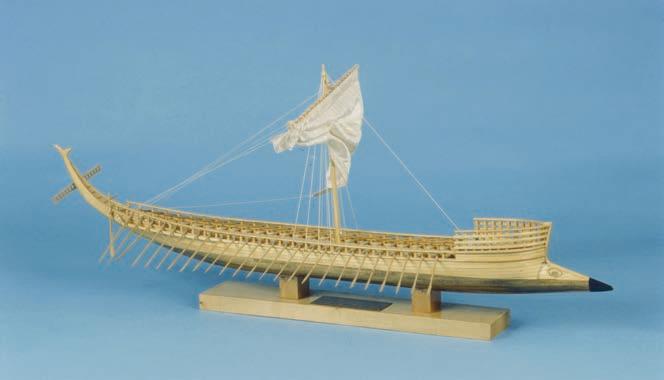
Source 9.4.9 Smaller ships with 50 rowers used for war and trade had shallower hulls, making them good for use close to the coast.
Activity 9.2
Exploring ancient Greek trade
1 Create a 3–2–1 organiser.
Using the information in this section about trade in ancient Greece, write down:
• 3 things you have learnt
• 2 interesting facts and
• 1 new word
Now share your 3–2–1 ideas with a partner. What did you both choose that was the same (compare)? What did you each choose that was different (contrast)?
2 Identify three resources or goods that were traded by the ancient Greeks. Choose something that is made by people, something that is grown by people, and something that is found in the environment and/or earth.
3Explain why Greek shipbuilding was so important to trade.
4Identify what was traded that was not a resource or some kind of goods.
5Explain why this kind of trade made Greece more influential.
Key concepts: significance, continuity and change
HASS skills: communicating and reflecting, analysing, evaluating
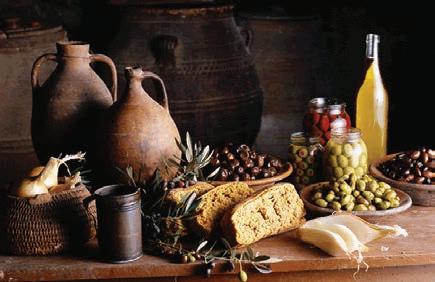
The ancient Greeks did not consider extravagant and rich meals a good thing. This is quite different from some other ancient cultures. However, there were some big dinner feasts that only men could attend called symposiums, where there was lots of eating and drinking while boys or slave girls served food and drink, danced, juggled, played music and entertained the attendees.
The three main staple foods of the Greek diet were wheat, oil and wine. They ate a lot of bread, which they would dip in wine or olive oil. It is believed the ancient Greeks had many different types of bread, perhaps as many as 50.
Typically, there were three meals a day. Breakfast was light and usually consisted of bread or porridge, perhaps with some olives or gs. Lunch was also a light meal. There would be more bread, but this meal would perhaps add some cheese or gs. The big meal of the day
was dinner, which was eaten around sundown. Dinner would sometimes be a long social event with a variety of foods.
The Greeks ate a lot of vegetables, such as cucumbers, beans, cabbage, onions and garlic. Figs, grapes and apples were common, as well as asparagus, fennel, chickpeas and celery. They also gathered and boiled dandelions to eat. The bulbs of certain plants, such as iris, were also edible, and they ate stinging nettles. Honey was an important Greek food. It was used as a sweetener in many different foods and could also be used as a medicine. The Greeks believed that Zeus was fed milk and honey as a baby. For them, honey was almost magical. Today, we know that honey can be used as an antiseptic (to ght infection) and as an anti-in ammatory.
The Greeks drank water with wine. Wine would be watered down so it would not be too strong. People in the ancient world were aware that untreated water could make them sick, so they mixed it with wine because the alcohol in the wine would purify the water to some extent. They sometimes also drank a thick gruel called kykeon, which included water, barley and herbs.

The main meat was sh, but the wealthy would sometimes eat other meat, including beef, chicken, lamb and pork.
Some favourites in the Greek diet may seem strange to us today, but perhaps the strangest was a popular food in Sparta called ‘black soup’. Black soup was made from pig’s blood, salt and vinegar.

Because Greece has a mild climate with very hot summers, simple clothing was better. Most clothing was made at home, and it is clear from ancient vase paintings that it was often very colourful. The fabric used was usually spun and dyed at home and was often a type of linen or wool.
Both men and women wore a garment called a tunic. Men’s tunics reached their knees, while women’s tunics came to their feet. The tunic would usually be tied at the waist.
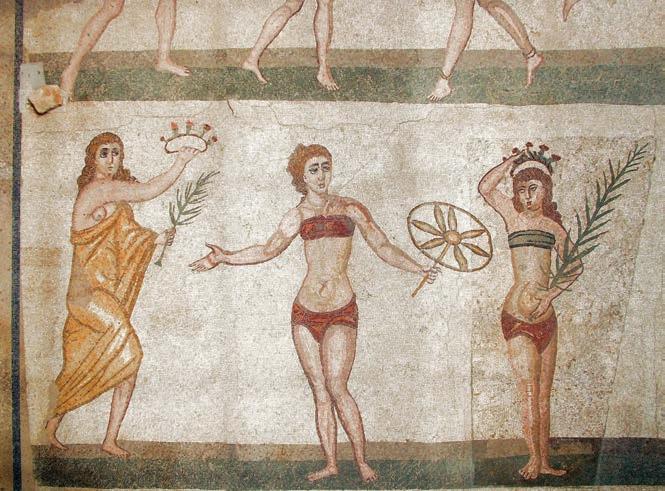
Women wore a tunic called a peplos. The peplos was full-length and would be draped and pinned at the shoulder in different ways. Women also wore a chiton This was worn over the peplos and could be made from lighter imported linen. The chiton was usually very long and pulled together or sewn at the shoulders.
Greek women also sometimes wore an undergarment around the middle of the body called a strophion
Men also wore a chiton, but theirs was made from a lighter material because men often had to work outdoors. A man’s chiton could be draped over one or both shoulders depending on what they were doing. A shorter chiton would be worn over their left shoulder for horseback riding or other vigorous activity.
Both men and women wore a garment called a himation, a cloak for colder weather. The himation could be used by soldiers away from home as a blanket as well as a piece of clothing. Soldiers had another cloak called a chlamys, which was a large rectangle of wool.
Both women and men wore sandals, slippers, soft shoes or boots, although at home they usually went barefoot.

Ancient Greek families generally centred around the household. A typical household consisted of a husband and wife, their children and any slaves the family owned. Sometimes grandparents also lived in the house.
In most of ancient Greece, a house was built around an open-air courtyard. Houses were built of stone, wood and clay bricks or stone, with roofs made from clay tiles or reeds. In this outdoor area, women might cook, animals might be cared for, or there may have been a religious shrine, perhaps to Hestia, the goddess of homes and hearth.
The size of the property would depend on the family’s wealth but would typically contain somewhere between
two and 12 rooms or areas. Floors in smaller homes were compressed earth, but bigger more luxurious homes had mosaic oors.
Some properties had two storeys. In this case, women, children and perhaps also slaves, depending on the family’s wealth, would tend to live upstairs.
The central courtyard was a private place. Because women were only allowed to leave their homes for short periods in many city-states like Athens, and then only if they had their husband’s permission, the privacy of their courtyard allowed them to enjoy time outside. The courtyard was the centre of family life. Meals were often eaten in the courtyard. The family would gather together in the evening and talk about their day or tell stories, much like we do with our families at dinner time today.
The average ancient Greek home rarely had wells or water supplies, so women would fetch water from outside the home. Public latrines and chamber pots – typically emptied on the street – were used to remove waste instead of toilets. However, an aristocrat’s home would include more amenities. The image in Source 9.4.15 is an oikos, a nobleman’s home, and while there are some features that would have been common to all homes, you will notice that a bathroom is included.
The hearth re used for cooking and heating in Greek homes was kept burning in honour of the goddess Hestia all year round. This re was also used for making charcoal, which could then be used again for heating. The Greeks sent out colonies of people when their city-states were getting overpopulated. One of the most important things they took with them were the coals from their hearth re from their old home to light the re in their new home.
In ancient Sparta, homes were very different. Men lived in the barracks until they were 30, whether they were married or not. Women lived in very plain homes (today we would call spartan homes ‘minimalist’, meaning they had little furniture, clutter or personal items), which husbands visited from time to time until they were 30, after which they were allowed to live with their families. When the boys were seven years old, they went to the barracks to live and begin their military training. Spartan women had far more freedom than other women in ancient Greece. They were educated, did regular exercise and could own property. The women, and the groups in spartan society who were not warriors, kept the community going when the men were away training or ghting.
many poorer Greeks, life could be hard because resources like water, farmland and timber for building could be scarce.
The majority of people worked in agriculture. It was the most important industry in the Greek economy. You already learnt in this chapter about what ancient Greeks traded, much of which was food grown on the land. Competition for fertile land between city-states and the poor soil in many places meant that many Greek farmers became highly skilled at working the land they had access to. They developed irrigation to allow them to grow crops in areas that were not otherwise suited for growing. Because of the rocky landscape, they developed a terracing system to create strips of attened land.
Animals were also farmed, mostly sheep and goats that were moved from winter lowland pasturage to the moist and cool mountain regions during the hot summer months. Cattle, horses and donkeys, though less numerous, were also present.
Information about shing in ancient Greece is found in the ancient sources and depictions on mosaic. From this evidence, we know that shing lines, spears, tridents, sh weirs (traps) and nets were used for shing. Greece has many natural harbours, so sea shing was a common occupation.

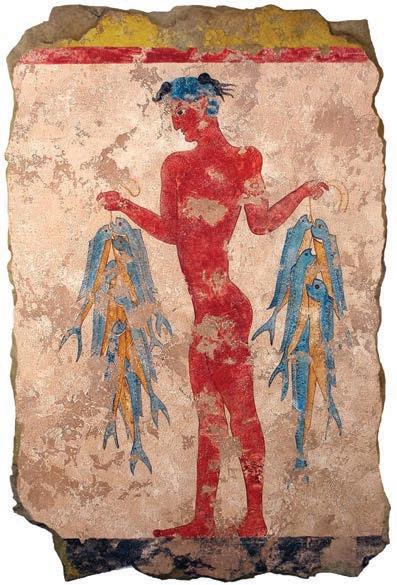
Fishing took place both from the shore and on sailboats. Tuna hunts using a ‘lookout’ method have been described by ancient authors. This included putting a lookout up in a high tree. When a school of sh approached, the lookout would shout to those in the boats below, who would surround the sh with large nets. Dolphin hunting was also

conducted in antiquity. Dolphins were hunted with spears for their fat, not for their meat.
Skilled craftsmen included sculptors, architects, cobblers, metalworkers (goldsmiths, silversmiths and blacksmiths), potters and painters. There were also numerous very highly skilled shipbuilders and vase-painters in classical Athens (5th century BCE). Information about craftsmen comes both from literary texts and archaeological evidence.
Pottery was one of Greece’s most popular exports. The Greeks made pottery for everything – carrying and storing water and food, plates, cups and cutlery. Pottery was even used for storing the ashes of the dead, a practice some of us still have today. Pottery is so durable that a great deal of it has survived, and it makes up most of the artefacts we have available to us today to understand life in ancient Greece.
The British Museum explains that what you can see in the section of the pot shown in Source 9.4.18 tells the story of ‘the abduction of Elera and Eriphyle, the daughters of the Spartan king Leukippos by Kastor and Polydeukes’, two sons of Zeus. The sisters struggle as the brothers drag the women onto their chariots, their divine father Zeus looks on approvingly from the side while Aphrodite, the goddess of love and union, watches from beside her altar. ‘Clearly Aphrodite’s assistant Peitho, the personi cation of Persuasion, has convinced everyone to turn this into a double wedding. She is the source who rushes away to the right, turning guiltily to look back at what she has done.’
Greek pottery was known for its beauty and high quality, but a lot of it was also quite affordable, leading to it being traded widely throughout the region.
The designs on Greek pottery included a huge variety of images, including heroic stories, battles, gods and goddesses, scenes of daily life, such as men’s symposium parties, children attending school, women collecting water, working at home on the loom or chatting with their friends, as well as real and mythological animals and plants.
Potters were highly skilled, as were the painters who decorated the vases. Artists through time have learnt about geometry and scale from the pottery of the ancient Greek artists, who frequently signed their work.
The decorations and stories painted on the pottery have also been useful to historians and archaeologists in piecing information together about the ancient Greeks. Pottery styles changed, which helps historians date things in ancient Greece. We know when the styles changed, which means that we can use the images and the styles and the names of the artists to help us understand a chronological framework of events and people and ideas from ancient Greece. Early pottery from about 1000–700 BCE had geometric designs.
Black-source pottery became popular from 700 BCE. The Athenians seem to have
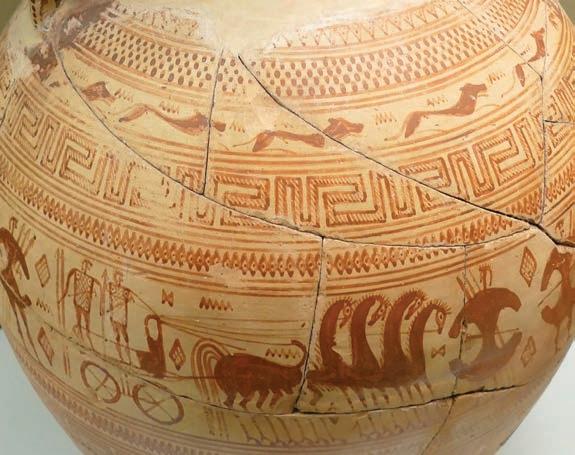
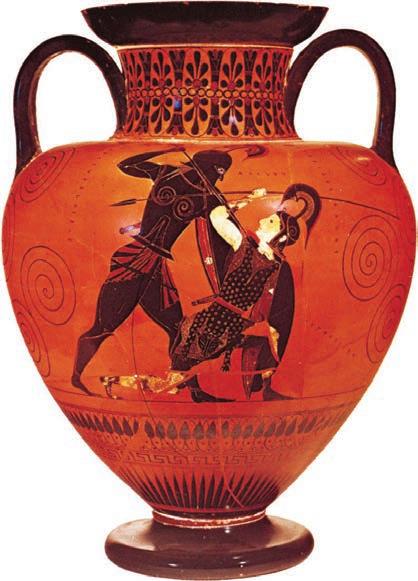
adopted this style of pottery by about 630 BCE. It gets its name from the use of the darker colours of the sources on a lighter, usually red, background.
Red source pottery was invented at Athens in 530 BCE. It is the reverse of the black-source style, the reddish sources appear light against the black background of the pot surface.
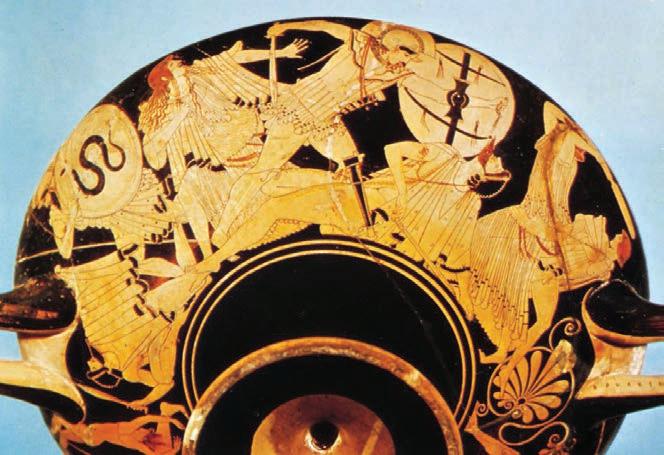
Education in Athens was only for rich boys from wealthy families. Learning focused on academic subjects, music and physical education. The discipline in schools was extremely harsh. Students were beaten with a sandal or cane if they lost concentration or made mistakes.
School in ancient Athens did not look like it does today. Boys had only one teacher and they usually learnt in a room at the teacher’s house. Teachers were not respected and were poorly paid. They were usually foreigners or slaves. The low opinion of teachers is strange considering how important Athenians thought education was. However, this was not always the case. The rich paid for their children to be educated by the famous philosophers. For example, Alexander the Great was educated by the famous philosopher Aristotle.
Girls were expected to stay at home and learn the skills of weaving, cooking and managing the household
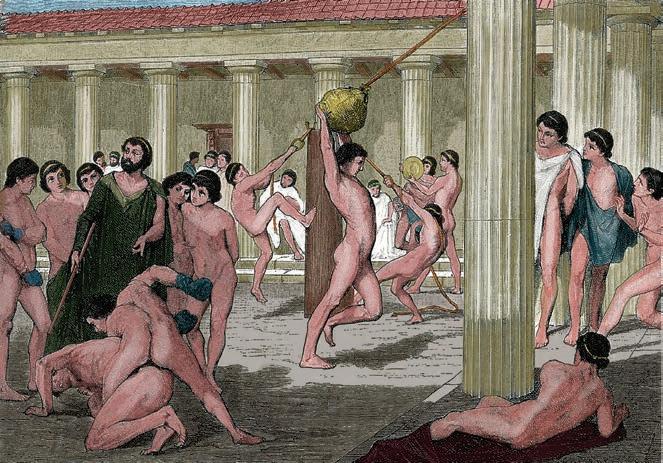
nances. Athens was not a great place to be female.
A unique aspect of Spartan society was the city-state’s education system. Boys left home when they were seven years old to live in a barracks ( agoge ) with other boys the same age. The boys never went back to their family home again. They were subjected to harsh discipline and were whipped if they did not follow instructions. The boys exercised naked, did all their own housekeeping and were given only small amounts of food. They were trained to be expert soldiers and to obey orders without question.
The education of Spartan girls was similar to Spartan boys but with some important differences. Girls stayed at home and their education focused on preparing their bodies for childbirth. At times, girls would exercise with the boys. There was as much rivalry among the girls as there was among the boys.
Girls did not bother training for domestic duties, like weaving, because this was seen as trivial and was done by slaves. Instead, Spartan girls focused on physical activity to improve their bodies. They were also aware of the history of their culture. They were renowned for their ability to sing and dance and knew the same ‘choruses’ (songs that told stories about heroes and important Spartan cultural and military events) as the men.
The Spartan education system made its citizens very loyal to the city-state. However, some historians have said the system did not allow for Spartans to adapt to change.
Greek architects and engineers were experts in what they did, and their designs are still copied today. Some of the most famous examples of Greek architecture are temples, recognised by their tall columns, symmetry and balance. Greek temples were very grand buildings with a fairly simple design. A row of columns lined the outside. Above the columns was a decorative panel of sculpture called the frieze. Above this was a triangle shaped area with more sculptures called the pediment. Inside the temple was an inner chamber that housed the statue of the god or goddess of the temple. The most famous example of an

ancient temple like this is the Parthenon in Athens. You will learn more about the Parthenon when you learn about Greek religion.
Developing historical concepts and skills 9.2
Archaeologists use specific methods to conserve the remains of the past. They treat the ownership of what they find very carefully. To do this, archaeologists try to work with local communities to uncover and protect what they find. Unfortunately, when archaeologists first developed their skills in the late 19th century, they sometimes did not act with the same ethical understanding that we have today.
There are many examples of archaeologists, many of whom were treasure hunters, removing extremely valuable and significant artefacts from where the objects were originally found. These artefacts are now displayed in museums and private collections around the world. There has been a lot of argument about what to do with these artefacts. Should they be returned to their original homelands or should they stay in the museums they currently occupy? Some argue that these artefacts have been bought by and are much better preserved in museums than they would have been if they had stayed in their original locations. They say the museums are keeping the artefacts safe for future generations to see.

One of the biggest controversies involving artefacts from ancient Greece concerns the Parthenon Marbles. The Parthenon Marbles are a set of marble sculptures that were originally part of the Parthenon on the Acropolis in Athens. In the early 19th century, the British Lord Elgin bought the marbles from the Ottoman government, who controlled Greece at that time. Lord Elgin transferred the marbles from their home at the Acropolis to Great Britain, where they came into the possession of the British Museum. They are still on display at the British Museumtoday.
Source 9.4.24 A small ceramic container shaped as an Athenian hoplite, known as an aryballos . It was created around 600–570 BCE and was used to hold perfume or gels.
conserve to protect something so that it is not damaged or destroyed ethical understanding to consider different perspectives on what is morally right
The British Museum tells the story of cultural achievement throughout the world, from the dawn of human history over two million years ago, until the present day. The Parthenon sculptures are a significant part of that story. The Museum is a unique resource for the world: the breadth and depth of its collection allow a global public to examine cultural identities and explore the complex network of interconnected human cultures. The Trustees lend extensively all over the world and over 3.5 million objects from the collection are available to study online. The Parthenon sculptures are a vital element in this interconnected world collection. They are a part of the world’s shared heritage and transcend political boundaries.
Greece regained its independence from the Ottoman Empire in 1832 and began to focus on restoring the remains of its ancient past. Greece has asked for the return of the Parthenon Marbles from the United Kingdom, but so far this request has not been met. The Trustees of the British Museum’s official position is outlined in Source 9.4.25.
Other historians and public sources have a very different opinion on this issue:
These nations have a right to their own heritage and should not have to prove their capacity to care for it to satisfy any foreign museum. To hide behind outdated treaties signed by longvanished empires does not address the moral issue of one nation generating income from the display of treasures taken from another.
Source 9.4.26 Jonathon Downes, ‘Losing “Our” Marbles’, History Today, 2010, p. 19
Lord Elgin (1766–1841 CE) was a Scottish nobleman who was responsible for removing the Parthenon Marbles from Greece and transporting them to Great Britain. The cost of removing the marbles was signi cant. They were eventually purchased by the British Museum. The marbles are sometimes referred to as the Elgin Marbles.
The debate about whether Britain should give back the Parthenon Marbles is complex. If every museum had to give back every piece they had acquired, there would not be much left in the museums to show. If the marbles had never been taken to Britain, they might not have been preserved as well as they are now. Passionate views are held on both sides of this ethical debate. Many Greeks see the marbles as a significant part of their history and cultural identity.

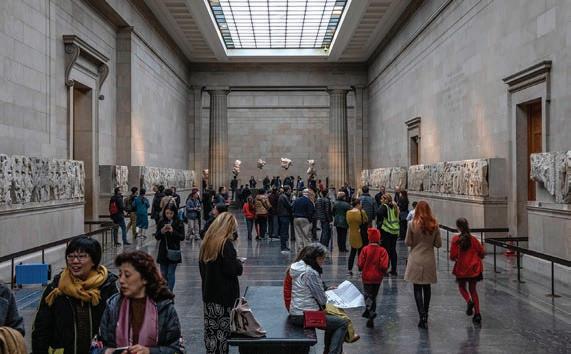
Source 9.4.27 The Parthenon Marbles on display in the British Museum
Identify the factors that ‘pull’ at each side of the dilemma about the Parthenon Marbles, then answer the questionshere.
1Identify the reasons that support the British Museum keeping the Parthenon Marbles.
2Identify the arguments for the Parthenon Marbles to be returned to Greece.
3 What do you think about this dilemma?
4 Use your evaluation skills to suggest a good way to resolve this tug of war.
Key concepts: significance, perspectives, empathy, contestability
Besides temples, Greek engineers and architects built many other types of public buildings and structures, including large theatres that could hold over 10000 people. Often theatres were built into the side of a hill and were designed in such a way that the sound travelled so well that even the back rows could hear the actors. A great example of this is the theatre at Epidaurus (Source 9.4.28). The theatre stands on a slope of Mount Kynortion in Argolis, Greece, and has a maximum capacity of 13000 to 14000 spectators. It is still used today for special events. The regularity and mathematical proportion of its shape allows the slightest sound to travel throughout the whole theatre. The architect Polycleitus is credited with designing it.
HASS skills: analysing, communicating andreflecting
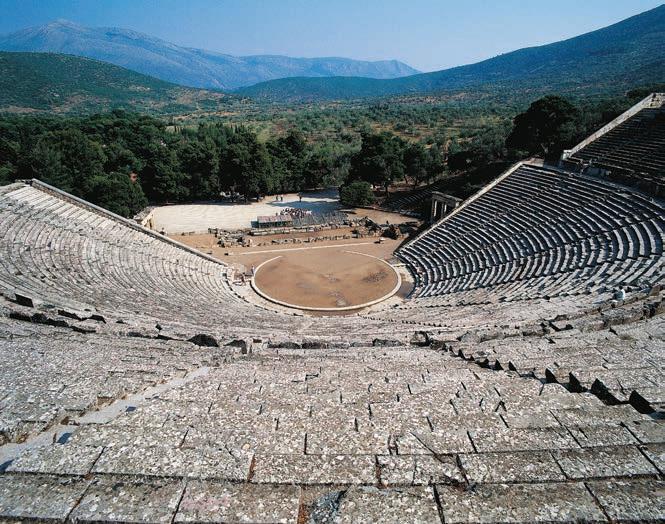
For many years, historians thought that the ancient Greeks did not like bright colours and preferred their marble statues to be white. However, archaeologists found several ancient Greek statues in the second half of the 19th century that had bits of colour left on them. There were traces of red for lips, traces of black for hair and a whole range of colours for clothing, including gold leaf. The spotless, white marble of ancient Greece is a myth – their statues were multicoloured! The colour disappeared because it was exposed to oxygen and weathering, which wore the colour away. Coloured artefacts have been found buried where they were protected from the elements.
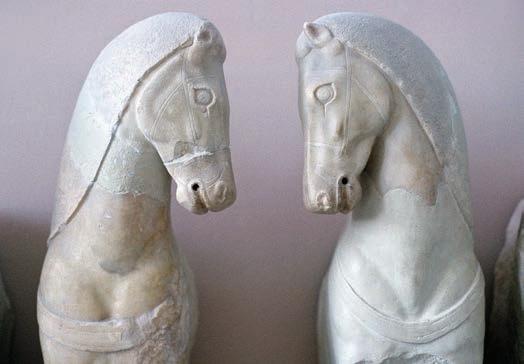

Ancient Greece also produced some of the most in uential scholars in history who were philosophers, scientists, mathematicians and artists. Their contribution to our own understanding of the world today cannot be underestimated. Apart from all the academic work they did, each of them was also a teacher.
Pythagoras (c. 570–490 BCE) is known as the father of mathematics. Pythagoras believed mathematics offered a rational way of explaining the cosmos. He discovered the complex relationships between numbers in relation to proportions and ratios, and his discoveries, including the geometry between three sides of a triangle, have in uenced architecture and mathematics for thousands of years.
Socrates (469–399 BCE) is known as the father of Western thought. He is one of the most famous Greek philosophers in history, and his drive for knowledge changed the course of philosophy. He believed that knowledge was the ultimate good and that pursuing knowledge was vital to living a good, virtuous life. To him, ignorance was the ultimate evil. Socrates’s ideas survived because his pupil, Plato, made Socrates the central character of his own writing. His ideas survived to become the core principles of scienti c reasoning for centuries. Socrates’s ideas and teachings were not popular in Athens at the time, mainly because he regularly embarrassed people by making them look stupid. He also publicly criticised the government. However, he was executed for showing disrespect to the gods and corrupting young people, which he was probably guilty of, though he was never sorry for his actions, because he had encouraged disrespect for authority among his students. He was accordingly convicted, sentenced to death and died by taking poison.

Aristotle (384–322 BCE) is known as the father of logic. Aristotle studied under Plato and was the tutor of Alexander the Great. While Aristotle was interested in ethics and philosophy, he also contributed to a great many other things, including motion theory in physics, medicine, mathematics, psychology, biology, where he tested early ideas about atoms, and politics, which he wrote a great deal about.
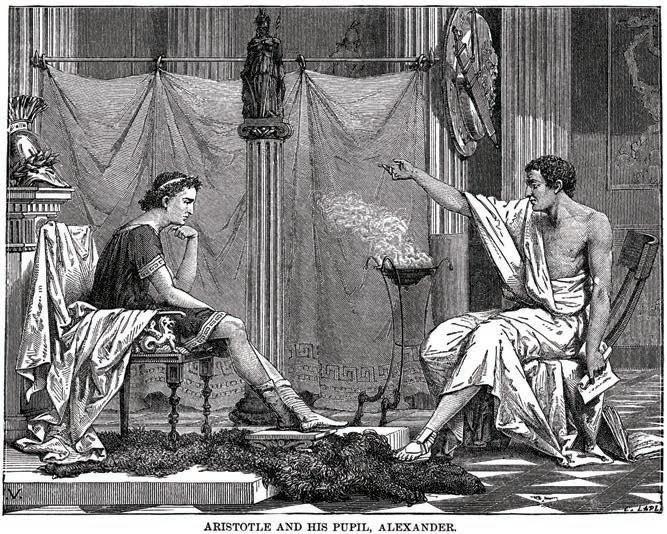
The Antikythera mechanism
Humankind has always been interested in time. Ancient people marked time for many reasons, from knowing when to eat and sleep, to determining when to plant crops and when to observe important dates, such as festivals and religious holidays. People in the ancient world used a variety of methods for calculating time. One of the most common involved tracking the movement of celestial bodies such as the moon, planets and stars. This process is still used today to determine important dates. For example, the lunar months are used to find out when Easter and Ramadan are to be held for Christians and Muslims, respectively. Other methods of measuring time included calendars, sundials and water clocks.
The ancient Greeks developed the Antikythera mechanism, an ancient analogue computer, discovered in a ship that sank near Greece more than 2000 years ago. It measured the relative position of the planets and stars, allowing the user to determine key dates, such as the Olympic games. The kind of maths and science that were needed to create this mechanism demonstrate the extent of the expertise of the scholars and engineers in ancient Greece.
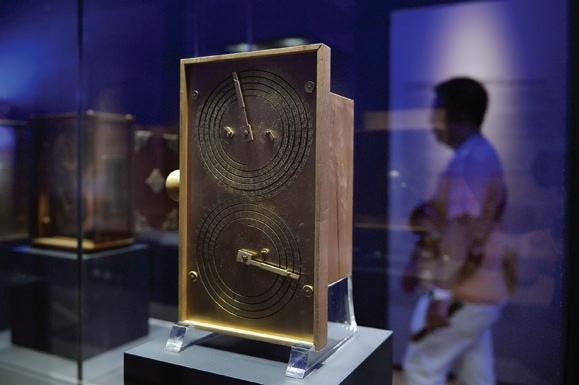
Research another ancient calendar or time-measuring device, such as a water clock. Find out who created it. Write a paragraph outlining how it worked and who used it. Include an image if you can find one.
Key concepts: continuity and change, cause and effect, significance
HASS skills: questioning and researching, communicating and reflecting
Work outside the house was done by men in most parts of Greece. Greek women had virtually no rights of any kind and were controlled by men at nearly every stage of their lives. The most important duties for women who lived in cities were domestic. Women were limited to the traditional roles of having children, preferably male, and running the household. Women who lived in the countryside would do some of the agricultural work, and might harvest olives and fruit as well as gathering vegetables.
Since men spent most of their time away from the house, home life was dominated by women. The wife was responsible for raising children, spinning,

weaving and sewing the family’s clothes. She supervised the daily running of the household. If there were slaves in the house, the female slaves would be supervised by the wife while they cooked, cleaned, and carried water from the fountain. Only women in poor homes carried out all these duties by themselves.
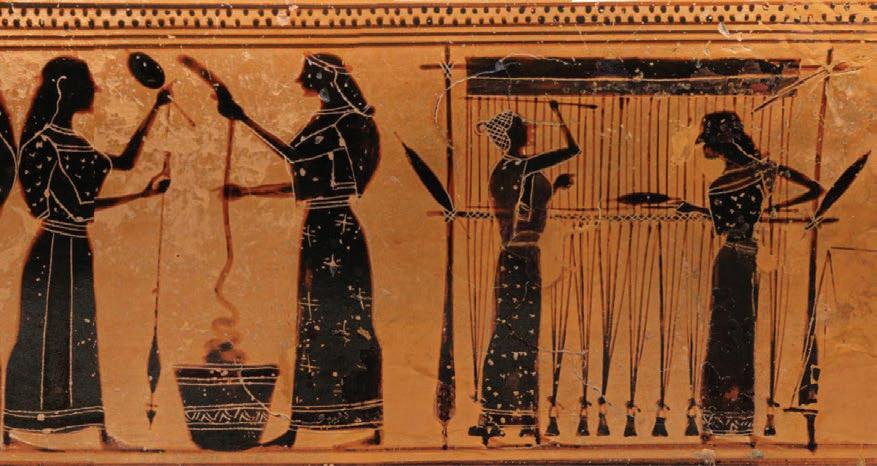
Greek women had to limit their time outside the house to visiting their nearest female neighbours or family. Exceptions were weddings, funerals and state religious festivals in which some women were expected to play prominent public roles.
Women may have spent much of their time in the courtyard of the house, the one place where they could regularly enjoy fresh air.
Sparta was the only place in Greece where women had a different experience. Spartan women had more rights and enjoyed greater independence than women in any other city-state. In Sparta, women could inherit property, own land, run businesses and were better educated than any other women in Greece at the time.
Unlike Athens, where women were considered second-class citizens, Spartan women were equal to their men. The laws of Sparta emphasised the importance of equality among all citizens. Girls were given the same physical tness training as boys and were educated at the same level at home, while boys would attend a state school. The slaves in Sparta, called helots, took care of labour around the house, including weaving, cleaning and cooking, allowing Spartan women to concentrate on what they considered their most important role – motherhood. Spartan children were expected to honour the city-state through virtuous behaviour, so mothers were very invested in raising their children well. Spartan women also had the responsibility of running the farm or estate, managing nances and operating businesses, because the men were frequently away.
Comparing primary and secondary sources

The famous Greek playwright Aristophanes was from Athens. In his play Lysistrata, he makes fun of Spartan women and their constant physical training: playwright a person who writes plays
Lysistrata: Welcome Lampito, my dear. How are things in Sparta? Darling, you look simply beautiful. Such colour, such resilience! Why, I bet you could throttle a bull.
Lampito: So could you my dear, if you were in training. Don’t you know I practice rump jumps every day? rump jumps an exercise that involved the person jumping up and hitting their feet
Source 9.4.37 Aristophanes,
168 ➜
1Identify how Lysistrata greets Lampito.
2Describe what Lampito says is the reason for her fitness.
3Explain what kind of evidence this source provides.
Key concepts: sources, evidence, perspectives, empathy
HASS skills: communicating and reflecting
Like other ancient cultures, including Rome, Greece was a slave economy. This means that much of the labour done to keep the economy going was carried out by slaves. Historians are not sure exactly how many slaves were in Greece, but it is estimated that between 30 and 40 per cent of the population were slaves. Even the poorer families could own at least one slave, but some wealthy families would own hundreds. Most slaves were foreigners who had been captured in war
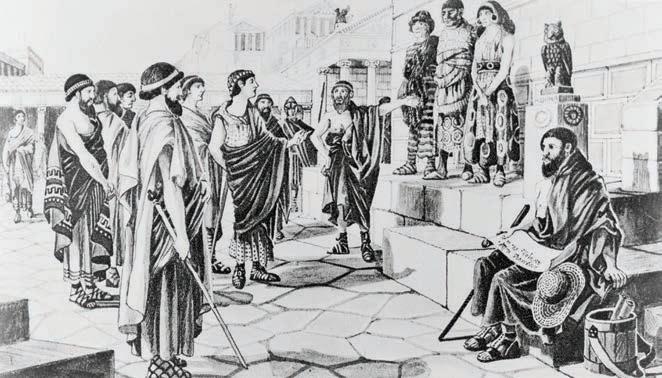
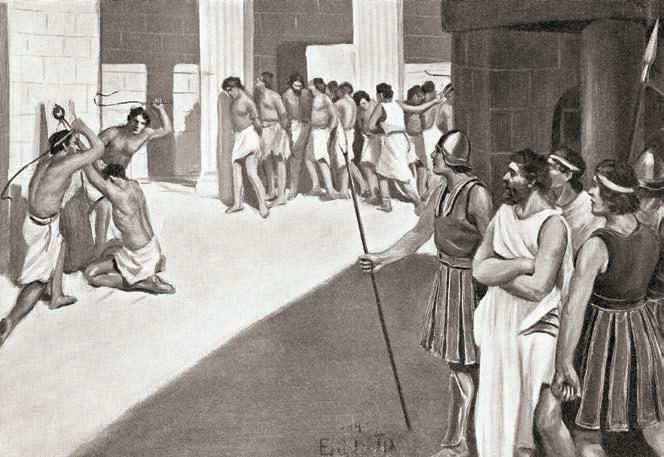
or bought through the slave trade. If they went through a tough time, Athenians could become a slave if they couldn’t pay their debts through a practice called debt enslavement. This was a way of becoming ‘enslaved’ to someone until the debt had been paid off.
Slaves did a wide variety of work, depending on their skills and who owned them. Some slaves carried out hard labour in the mines or on farms. Other slaves did household chores, and the educated and skilled ones worked as clerks or artisans in the city.
Owners might allow slaves to save money and buy their own freedom, though some were freed by their masters. Freed slaves were not citizens and often had continued responsibilities to their former owners.
In Sparta the helots were a different kind of slave. The Spartan population had expanded, and they needed more agricultural land, so they made war on their neighbours the Messenians. Sparta defeated Messenia in a series of wars that led to the entire population of Messenia becoming state-owned slaves. However, the helots – as the Messenians became known – were more like serfs in the medieval period. They worked land they did not own, but they could not be bought or sold by the Spartans whose farms they worked because they were owned by the government. Spartans took the majority share of everything the helots grew and produced. Helots were mostly expected to work in agriculture, but they were also important workers in Spartan households and could end up in the army working for the top ranks of the military elite. The helots outnumbered the Spartans 20:1 and were often rebellious, which meant that they were a constant threat to the Spartans. The Spartans therefore employed a group of secret police called the krypteia, whose job it was to monitor the helots and keep them in line.
Members of the krypteia operated in small groups or alone, often in darkness, often armed with a dagger and basic provisions to carry out their missions to eliminate helot threats. They were brutal and would put any helots to death who were suspected of being rebels. This meant they were key in helping prevent helot revolts.
The ancient Greeks loved to be entertained, and a variety of options were available.
Nearly every Greek city had an openair theatre, with seats arranged in tiers. Performers were all male actors wearing masks, and performances could include plays, singing, dancing and choruses.
Greek plays tended to be either comedy or tragedy. Tragedy tended to have some kind of moral lesson and featured stories where pride or ambition or similar had led to some terrible outcome, such as the story of Prometheus, who stole re for humanity

from the gods and was eternally imprisoned as a result. Competitions were run to nd the best tragic plays and playwrights. Sophocles, Euripides and Aeschylus were the most in uential and successful tragedy writers during the 5th century BCE Comedy tended to ridicule mythology, or mock politicians of the time. Jokes and humour could be quite rude; the Greeks loved jokes about bodily functions. Comic actors wore grotesque masks and tights with padding on the rump and belly.
The Greeks loved athletic events. The most important athletic competitions began in 776 BCE at Olympia. By the 6th century BCE, other games involving all Greek-speaking city-states were being held at Delphi, among other places. Many local games, like the Panathenaic games at Athens, were modelled on these games.
Athletics was about being t, fast or strong enough to beat an opponent. For this reason, many sports in ancient Greece did not include team competitions; instead, performances focused on setting records. Athletics competitions looked similar to those today because they included running races, long jump, discus and javelin throwing, wrestling, the pentathlon (a combination of these ve events), horse races and chariot races.

During competition and training, athletes were usually naked and covered with olive oil to keep off the dust. Competitors trained in the gymnasium, a covered colonnade, often coached by past victors.
The Greeks celebrated festivals at harvest time and to honour their gods. Festivals were often nanced by the state and were regarded as an important part of the reputation of the city-state. As city-states grew, more people came to these festivals and they became more elaborate. Processions, sacri ces, athletic events and musical performances were part of the celebrations.
Some festivals were celebrated across Greece, others were local.
The festival of Dionysia was in honour of Dionysus, the god of wine and fertility. Dramatic competitions were a feature of this festival, so it was very important for the development of tragedy and comedy plays. The Olympic Games was the most famous athletic festival, held every four years in
Olympia to honour Zeus. Winners received olive wreaths and were celebrated as heroes, enhancing their city-state’s prestige.
The invention of the board game draughts was ascribed to Palamedes, one of the heroes of the Trojan War, demonstrating that board games were played in Greece as far back as 1100 BCE. Nuts and coins were also used as counters in some games, and games of dice were played in various ways.
Kottabos was one of the world’s rst known drinking games. This game was played at Greek symposiums and involved inging the dregs left over from a cup of wine at a target. Usually, the participants sat in a circle and tossed their dregs at the basin in the centre. The game was so popular that ancient Greeks built special round rooms where the game could be played, so all competitors were equidistant from the target. It has been suggested that after centuries of being played it died out because it was such a mess to clean up afterwards.

Source 9.4.42 The Dionysus festival was celebrated in the spring in March. During the festival, dancers danced until they passed out, drank wine, and made their way towards the most important point of the ceremony where the animal sacri ces took place. The festival was celebrated in many places and was administered by the highest of cials. Originally, the festival lasted for ve or six days, later increased to seven days. The rst day was usually spent preparing. Parades were held and victims were sacri ced on the second day. In the following days, comedy and tragedy plays were performed, and on the last day a meeting was held to give prizes to the winners of the games.
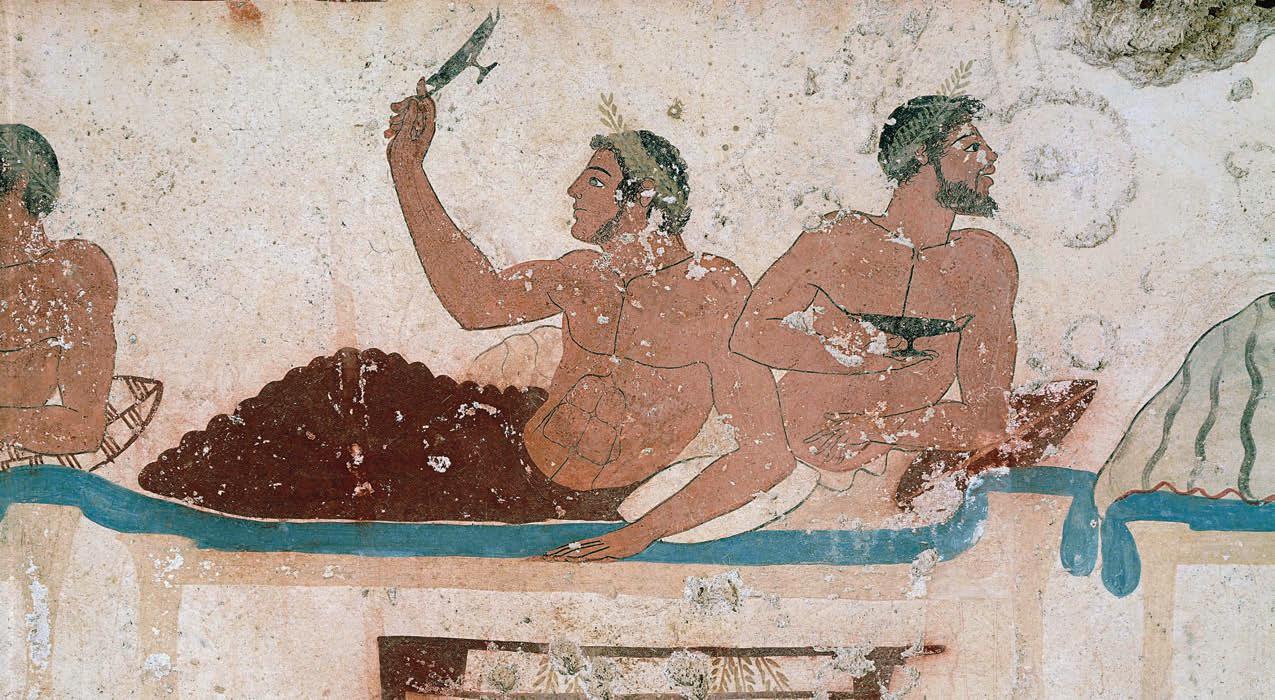
Children in ancient Greece loved to play with toys. Archaeologists have uncovered all sorts of toys and games; a popular one was knucklebones. The pieces for the game were made from the ankles of sheep and goats. Players threw knucklebones like dice and often carried them around in their own pouch. Knucklebones were popular toys because they were cheap, and most children could get them.
Rattles, spinning tops and pull toys were also popular. A close relative of the yo-yo may have been created in Greece made out of two terracotta (pottery) discs.

Boys often played with toy chariots; girls played with dolls. Some dolls from ancient Greece had moving arms and legs and were made from ivory and glass, or with rags, clay or wax, but most were made from terracotta. Some had holes in the top of their heads for a string; perhaps the string was used to make the dolls move and dance. Some of these dolls may have been used in religious rituals as well.
Marbles were very popular. The earliest marbles were most likely made from chestnuts and acorns, but later they were made from polished stones.

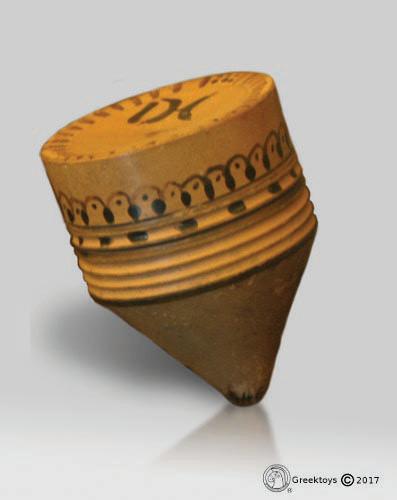
End of section 9.4 review
Go online to access the interactive section review and more!
9.4 Review questions
Recall
1 Explain what women could do in Sparta that was unusual and different from other ancient Greek city-states.
2 Identify three kinds of food that were the staple food in a Greek diet.
3 Identify two items of clothing that were similar and different for men and women.
4 Identify the most common jobs in ancient Greece.
Interpret
5 a Identify three kinds of fine pottery made by the ancient Greeks. Explain how the designs changed over time.
b Identify four uses for this fine pottery and explain why you think the variety of uses for Greek pottery made it so popular.
Argue
6 Visible thinking routine: create a tug of war diagram.
Scholar’s name Scholar’s name
You are going to argue which scholar from ancient Greece discussed on pages 348– 349 was more influential. To help you build your argument and collect and understand your evidence, create a tug of war diagram.
a Draw a line across your page that represents the rope in a tug of war game and make a mark in the middle of this line to show where the two sides are. Leave yourself enough room to write above and below the line.
b Choose two of the scholars discussed on pages 348–349. Write the name of the first scholar you chose above the line on one side and the name of the other scholar on the other side.
c Write reasons for each side of the argument, on each side of the rope line you have drawn.
• First write down examples of what makes the individual important.
• Second, write down reasons why their important contribution is significant. Write your reasons why in two different coloured pens (one colour for each side).
• Now that you have collected evidence and reasons for both scholars, write down reasons that:
• support the idea that one scholar is more influential and argue why this is the case
• support the idea that the other scholar is more influential and argue why this is the case.
When you have all of your evidence written in your two colours on each side of the rope line, look at it all carefully and decide which evidence persuades you which individual is more important, or if the evidence persuades you that they both were.
d Write a short paragraph to explain your decisions using the evidence from your tug of war rope diagram. Online quiz Teachers can assign tasks and track results
Key concepts: sources, evidence, perspectives HASS skills: analysing, evaluating
Focus questions
• How did the Greeks build their military?
• What was Greek warfare like?
• Who did the Greeks have conflict with?
• What weapons and weaponry did the Greeks use?
The Greeks were involved in some of the most spectacular and famous wars and battles in history, including everything from facing unwinnable odds to building vast empires. This section will look at how the Greeks faced con ict by focusing on the infamous Trojan War, Alexander the Great and the battles of Marathon and Thermopylae, all of which are the stuff of legends and heroes.
First of all, it is important to understand how the Greeks built a military capable of defeating almost every enemy they faced. Throughout time, their approach changed, but two constants were the basic formation they used to move troops around the battle eld and their basic armour.
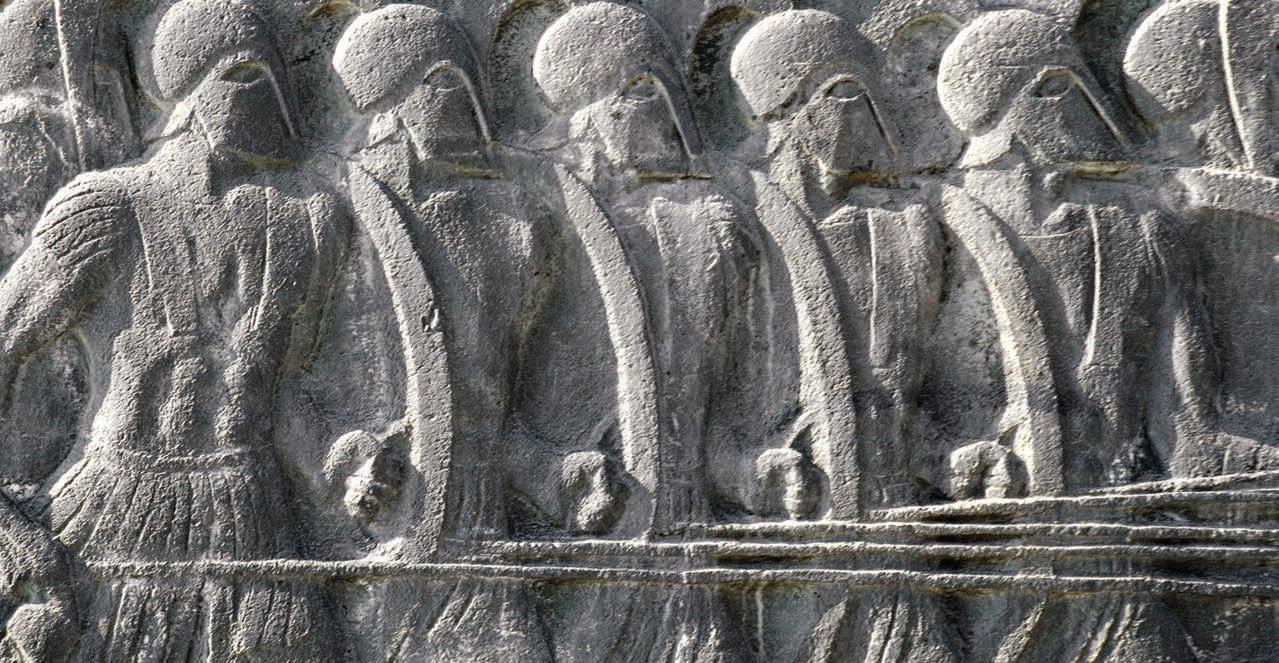
The ancient Greek forces at Troy, the Spartans, Alexander and the Athenians retained their use of the phalanx on the battle eld. The phalanx was a rectangular-shaped group of soldiers, usually made up of heavy infantry armed with spears and spikes or similar and carrying shields, who were tightly packed together. The use of this formation continued throughout Greek history, but the ancient Greek writers also called any massed infantry formation a ‘phalanx’,
regardless of its equipment. The purpose of the phalanx was to smash through the enemy line. The tightly packed formation proved very effective, and there were few casualties within the lines because the soldiers were protected by their shields. If anyone did fall, the soldiers behind could immediately cover the gaps.
Greek soldiers were called hoplites. This name comes from their armour, which was called the hopla.
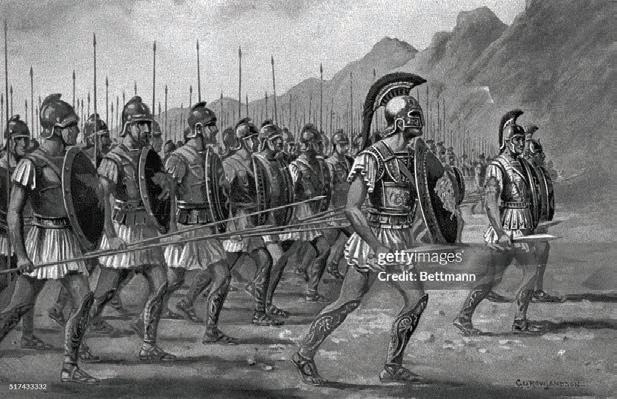










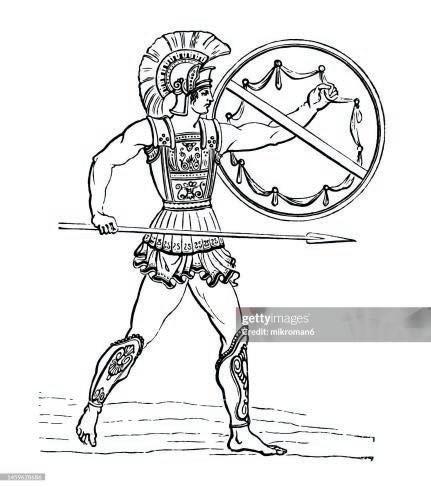

Source 9.5.2 Hoplites dressed for battle. Over time, the construction of these elements of armour changed. At times they were solid bronze, but later they were made from layers of linen stuck together, stiffened by being soaked in vinegar and salt, and reinforced by layers of bronze. (1) greaves covered the legs; (2) breastplate; (3) helmet; (4) shield – used to protect but also as an offensive weapon to batter and barge. Each soldier carried (5) a long lance and a short metal sword.
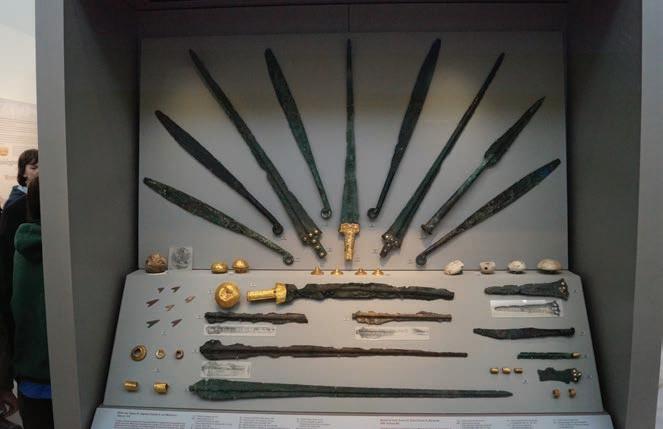
Swords, shields and lances/spears changed over time, across different places and depended on the strategy of the leaders.
During the early period of the late Bronze Age (c.1200–1100 BCE), the Mycenaeans (famous for attacking Troy in the Trojan War) used long, thin, rapier-like swords, but over time they started to use shorter and stouter blades. Bronze bends relatively easily and tends to dull quickly, so shorter stabbing swords were more practical.
A lot of the longer blades from this time show signs of repairs, especially around the hilt where they tended to break or split.
By the 6th century BCE, the most common Greek sword had a leaf-shaped blade and straight cross guards. These swords were often short, probably around 60 cm. By the 3rd century BCE, the kopis or machaira was a favourite of soldiers and cavalry. It had a curved blade and is sometimes referred to as a sabre.
The Mycenaeans used many different lances and spears, and their spearheads range from large leaf-shaped to much smaller blades with wings above the socket. These differences are because they were used for different things. Longer spears would be wielded with two hands and could be used for thrusting. They would also be necessary if ghting from a war chariot. Shorter spears were used
one-handed with a shield and could be thrown if necessary.
Alexander the Great’s father, Phillip II of Macedonia, introduced the sarissa, which were very different spears. Alexander’s sarissa-equipped infantry allowed him to effectively conquer a huge empire. This spear was very long, anywhere between 4 and 6.5 metres, and gave his infantry extra reach so that the spears of the enemy could not reach them. This meant that the Macedonian infantrymen did not have a free hand to carry a shield, so they hung a small bronze shield around their necks. Alexander’s close formation of men marched or ran at their opponents, bristling with these long spears, and must have been a fearsome sight. Alexander himself would go with them, mounted on his warhorse on the left wing.
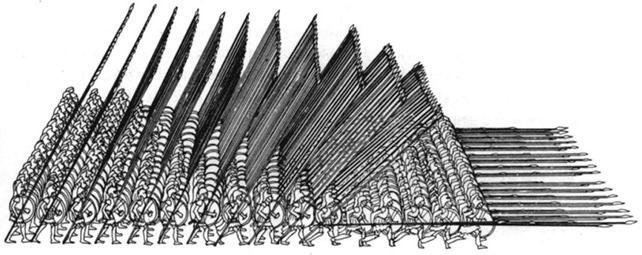
Shield design evolved over time. Initially, shields were made of wood and covered with layers of animal hide or bronze. As warfare techniques and materials advanced, the shields began to feature a round, convex shape, which provided better protection against arrows and other thrown weapons. The hoplite shield was designed to be held with one arm, allowing the
soldier to wield a spear or sword with the other hand. It was usually about 1 metre in diameter and weighed around 6 kg, making it effective in close combat. The shield played a vital role in the phalanx, where the soldiers’ tightly knit formation meant that their shields overlapped, creating a virtually impenetrable wall of defence, making the hoplites an incredibly formidable force on the battle eld.
Greek hoplite shields had a distinctive design that set them apart from other ancient shields. The bronze surface was decorated with either legends
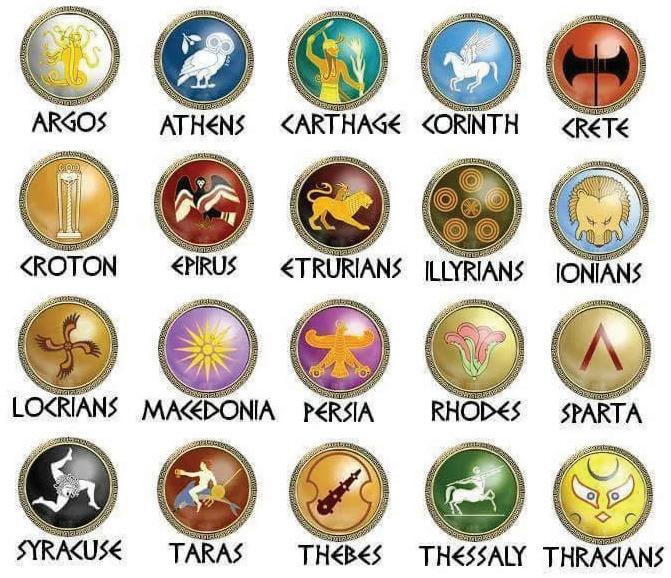
and characters from mythology or with symbols representing the city-state the soldier belonged to. These designs gave the soldiers a sense of unity and loyalty.
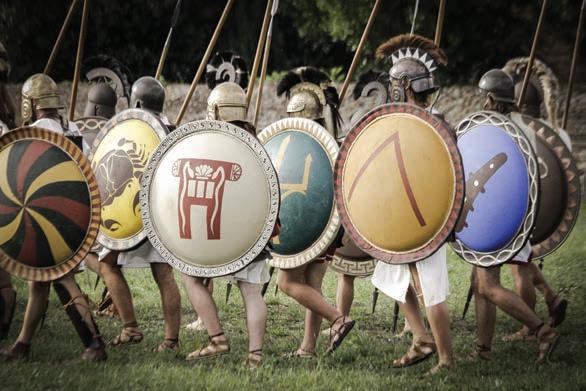
Using historical skills and concepts: historical significance
The designs on the shields shown in Sources 9.5.5 and 9.5.6 identify different Greek city-states. Today, we still have particular ways of identifying the place where groups of people come from, something that we are part of, like a club or state or team.
Using symbols in this way is very powerful because it creates a sense of unity and is a way to demonstrate our identity and represent an important part of who we are. This gives many of us a sense of belonging and place.
1 Use your analysis skills to write four dot points explaining what the designs used on the shields in Sources9.5.5 and 9.5.6 remind you of the way we use symbols to identify identity today.
2Identify which city-state shields soldiers in Source 9.5.6 carry.
3 Look at the shields in either image and suggest reasons why at least two of the city-states might have chosen this image for their shields.
Key concepts: significance, empathy
HASS skills: analysing, communicating and reflecting
The Trojan War was 10 years long and took place in the late Bronze Age (c.1100 BCE) between the Mycenaean Greeks and the people of Illia, or Troy, in modern Türkiye.
The events of the war were recorded in Homer’s epic poem The Iliad. Homer told a mythological story that included all the good elements of a myth – heroes, gods, great deeds and sorrowful sacri ce. Because of this, many people thought it was just a myth for thousands of

years. However, archaeologist Heinrich Schliemann was determined to nd out if any parts of story were in fact history. He knew that some other ancient writers, including some from Egypt, also talked about the war, saying that a combined group of 22 Greek cities went to Troy. Schliemann tracked down the location of Troy in Türkiye and excavated it in the 1870s. He found so much evidence that the Greeks fought an extended war at Troy in the late Bronze Age that now we know that a lot of Homer’s story was based in truth. This is a good example of how what we ‘know’ can change.

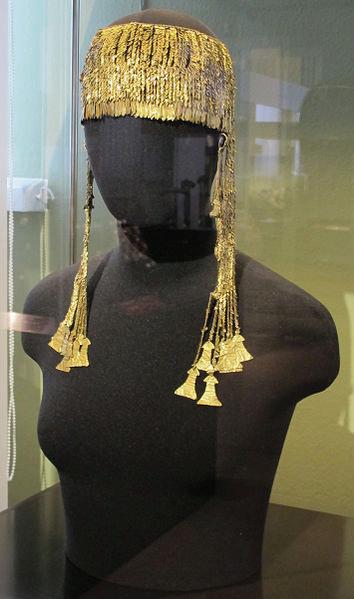
Source 9.5.8 This is a Greek death mask found in the home of Agamemnon in Greece. This one dates from the period of the Trojan War (c.1100 BCE). The Greeks would put masks on their dead to honour and commemorate them. This one is made entirely from gold and was so grand that Schliemann called it ‘The Mask of Agamemnon’ when he discovered it at Mycenae in 1876. It was found over the face of a body located in a burial shaft. Though there is no proof to support his theory, Schliemann believed that he had discovered the body of the legendary Greek leader Agamemnon. Today you can see this mask in the Archaeological Museum in Athens.
Source 9.5.7
Sophia Schliemann (1852–1932) wearing a gold headdress from what her husband called the ‘Treasure of Priam’, a large collection he found of gold, silver and pottery items plus other artefacts that date from the period when the Trojan War was fought. The headdress is now in the Pushkin Museum, Moscow.
The story of the war starts with a clash between the gods at the wedding of King Peleus and the sea-nymph Thetis. They had invited almost all of the gods to their wedding except Eris, goddess of strife. She was angry, so she threw a golden apple among the guests with ‘To the Fairest’ written on it. The goddesses Hera, Athena and Aphrodite all caught the apple at the same time and fought over who was the most beautiful. Because they could not decide who should win, Paris, son of the Trojan king, was chosen to decide. Each of the goddesses offered Paris gifts so he would choose her. Hera offered Paris control over all of Asia Minor (modern Türkiye), where he lived. Athena offered wisdom. Aphrodite offered Paris the love of the most beautiful woman in the world.
Paris gave the apple to Aphrodite. But Aphrodite did not care that the most beautiful woman, Helen, Queen of Sparta, was already married to King Menelaus of Sparta. Regardless, Aphrodite had her son, Eros, shoot Helen with a golden arrow and she fell in love with Paris. They left for Troy, causing Menelaus, Helen’s husband, to declare war on Troy to get his queen back. Menelaus’s brother was Agamemnon, the king of Achaea, who was the most powerful king in Greece at the time, and Menelaus knew that he would need his brother’s help to bring the Greeks together to ght the Trojans.
They pulled the horse into the city and had a big party to celebrate their victory. But when night fell, the Greeks hiding inside the horse opened the city gates to let in the rest of the Greek army and set re to the city. When the Greek army returned, they won the war and burned the city to the ground. Use of re as a weapon in this way is called razing
Agamemnon agreed to support his brother, and the war went on for 10 years, with possible victory swinging to one side and then the other. Some of the ghters were the legendary Achilles and the eldest son of the Trojan king, Hector. In the end, the Greeks won by building a big wooden horse, which we now call the Trojan Horse. Achilles and Agamemnon’s friend Odysseus, King of Ithaca in Greece, suggested this tactic. Greek soldiers hid inside the horse and put it on the shore for the Trojans to nd while they sailed their boats out of sight. The Trojans thought the Greeks had gone and that the horse was a gift in their honour.
One famous part of the story relates the tragedy of Hector. Achilles’s closest friend Patroclus stole Achilles’s armour one day and pretended to be him on the battlefield. Hector killed Patroclus, thinking he had defeated the mighty Achilles, but of course this was not so, and Achilles was stricken with grief. Achilles challenged Hector and killed him in a brutal duel, after which he dragged Hector’s body around behind his chariot to show his disregard for the enemy.
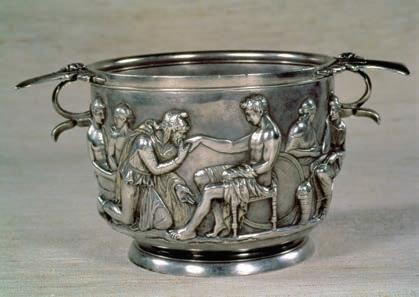

Tug of war
You are going to use the information to decide how much of Homer’s story about the Trojan War is myth and how much is history.
To help you collect and understand your evidence, create a tug of war diagram:
1 Draw a line across your page that represents the rope in a tug of war game, and make a mark in the middle of this line to show where the two sides are. Leave yourself enough room to write above and below the line.
2 Write ‘Myth’ above the line on one side and ‘History’ on the other side.
3 Write reasons for each side of the argument, on each side of the rope line you have drawn, in two different coloured pens (one colour for each side). Make sure you justify your reasons with evidence. Write down evidence that: •supports the idea that the story is myth and argues why this is the case •supports the idea that the story is history and argues why this is the case. When you have all of your evidence written in your two colours on each side of the rope line, look at it all carefully and decide which evidence persuades you if the story is primarily myth or primarily history, or if the evidence persuades you that it is a bit of both.
4 Write a short paragraph to explain your decisions using the evidence from your tug of war rope diagram.
Key concepts: contestability, sources, evidence
HASS skills: analysing, evaluating
Alexander is best known for creating one of the largest empires in history in a very short period of time. As a child, he was educated by the Greek philosopher Aristotle. Alexander was a skilled horseman, a fearsome warrior, a strategy genius and very young and ambitious. In fact, he was only 32 when he died from a fever.
THE EMPIRE OF ALEXANDER THE GREAT
Alexander’s route
Alexander’s empire
Battle
Hydaspes (Jhelum) R. Indus R.
Egypt. His vast empire stretched as far as India.
In 338 BCE, Alexander’s father, Philip II of Macedonia, brought all the Greek city-states except Sparta under his rule. Young Alexander was given command of one section of the army. He excelled in this role and earned the loyalty of the army. In 336 BCE, Philip was killed and Alexander became king and was successful in winning the loyalty of most of the Greek states. His plan was to push Greek in uence farther east, so in 334 BCE he brought together a large army to invade the empire controlled by Persia. He freed the Greek settlements in Asia Minor (now Türkiye) from Persian rule and made them his allies.

This meant he now controlled the whole eastern Mediterranean and had achieved it in just two years. Near the Nile River, he founded the city of Alexandria, which is still there today. Although it was destroyed in (perhaps) the 4th century CE , Alexander built the rst library of its kind at Alexandria. This famous library held the largest collection of information in the world from countries across the region and, although we do not know precisely how many scrolls were there, it held thousands – anywhere between 40 000 and 400000 at its height.
In 331 BCE, Alexander went back into Asia and again defeated Darius. After that, he was called king of Asia. Soon afterwards, Alexander captured Babylon, in what is now Iraq, and Susa, the Persian capital.
In 333 BCE, Alexander defeated King Darius III of Persia, at the famous battle of Issus where he was massively outnumbered by the Persian troops but used his phalanx to out ank the enemy. Alexander sustained a nasty wound in this battle, but after defeating the Persians he marched southward along the coast of Phoenicia (present-day Lebanon).
In the next year, Alexander took Egypt from the Persians and became pharaoh.
Many of Alexander’s men now wanted to go home, but instead he had them advance further into Asia. In 327 BCE, Alexander went to India. There he fought his last great battle at the Hydaspes River in modern-day Pakistan. At this battle against King Porus, he encountered something he had not seen before: 200 war elephants. This was probably where the Greeks experienced their greatest casualties, but Alexander defeated the Indian armies and founded two cities, which meant that large areas of modern India and Pakistan were absorbed into the Macedonian empire. Alexander’s famous warhorse, Bucephalus, was killed in this battle. In honour of the great horse whom he alone had been able to tame and ride, Alexander named one of the local cities Bucephala after him.
Despite their successes, at this point Alexander’s men refused to go any farther. They were tired, had been away from home for many years and wanted a break. This forced Alexander to return to Susa in 324 BCE.
Nonetheless, Alexander still wanted to secure and expand his empire, so in the following year he went to Babylon. However, he was weakened by his travels and battles and died very suddenly of a fever. His body was taken to Alexandria in Egypt and placed in a golden cof n there. His generals divided up his empire after his death because without him they could not keep it united. One of his generals was Ptolemy, who took over Egypt. He made himself pharaoh, married into the royal Egyptian family and was the founder of the Egyptian Ptolemaic Dynasty. Perhaps his most famous descendant is Queen Cleopatra.
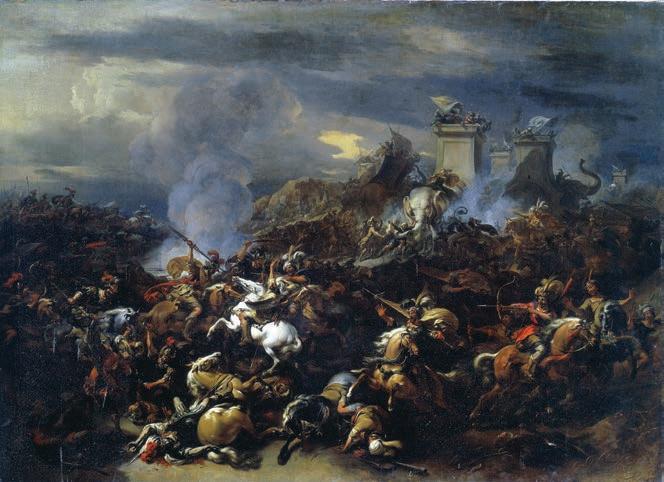
9.5.13 A painting of the ‘Battle between Alexander and Porus’, 326 BCE The forces of Alexander the Great fought the Indian ruler
on the banks of the River Hydaspes (now the River
in Pakistan). Although Porus had the advantage of battle elephants, which the Greeks had never encountered before, Alexander still defeated Porus.
Cause and effect and significance
Create the following graphic organiser to help you make sense of Alexander’s success and what impact he had. Placing different events in the graphic will help you to see how what made Alexander strong, what he was able to achieve and what he left behind after his death are connected to each other.
success
historical concepts and skills 9.3 Key concepts: cause and effect,
legacy or impact
HASS skills: analysing
Persian Immortals an elite military unit for two centuries between 550 BCE and 330 BCE. Ten thousand-strong, the Immortals represented the best of the empire’s troops. They operated as the emperor’s guard and were part of the army.
These infamous clashes between the Greeks and Persians took place in the 5th century BCE and are both classic underdog stories. Both battles proved the superiority of the Greek hoplite soldiers, strategy, weapons and armour.
The Greco-Persian Wars (490–479 BCE ) were fought between Greece and Persia. The con ict was one of the most signi cant in ancient Greek history. We mainly know about these wars from the Greek historian Herodotus. However, Herodotus’s writings were unreliable to some extent because:
•his writings contain factual errors •he can be narrow-minded when explaining the causes of the wars
• he is pro-Greek, which means he tends to make the Greeks look better than they possibly were; he is very biased.
In the 490s, the King of Persia, Darius, decided to invade mainland Greece. He was looking to extend Persian territory, but speci cally, he wanted revenge against Athens, which had helped the Greeks in Asia Minor (modern Türkiye) revolt against the Persians some years earlier. Darius sent an enormous army, and was very con dent of victory.
The Battle of Marathon was fought on a plain near the town of Marathon in the Greek region of Attica, by an Athenian force of about 10000 Greeks led by the Athenian general Miltiades. Quite against expectations, the Greeks completely defeated the huge Persian force, which may have had as many as 90 000 men, led by one of the so-called Persian Immortals , Datis. The Athenian victory led to the Greek city-states later uniting into the Hellenic League to defeat King Darius’s son, Xerxes. The Athenian victory was proof that the Greek hoplite could defeat pretty much any enemy, even when outnumbered. Although massively outnumbered, the Athenians took advantage of their familiarity with the land and their superior armour and weapons. According to the 5thcentury historian Herodotus, the Greek Pheidippides ran more than 150 miles from Athens to Sparta to tell the Spartans that the Persians were coming and get their help. However, Sparta was celebrating an important religious festival and did not set out for Marathon until too late, arriving after the battle had been won.
Source 9.5.14 A map of the position of Greek (blue) and Persian (red) forces at the Battle of Marathon in 490 BCE. The Greeks, led by Athens, won the battle and prevented the invasion of Greece by Persian King Darius.
The Greeks only had about 9000 Athenians and 1000 Plataeans, but they had a number of advantages, the rst being that they arrived at Marathon before the Persians, so were essentially able to pick the battle eld.
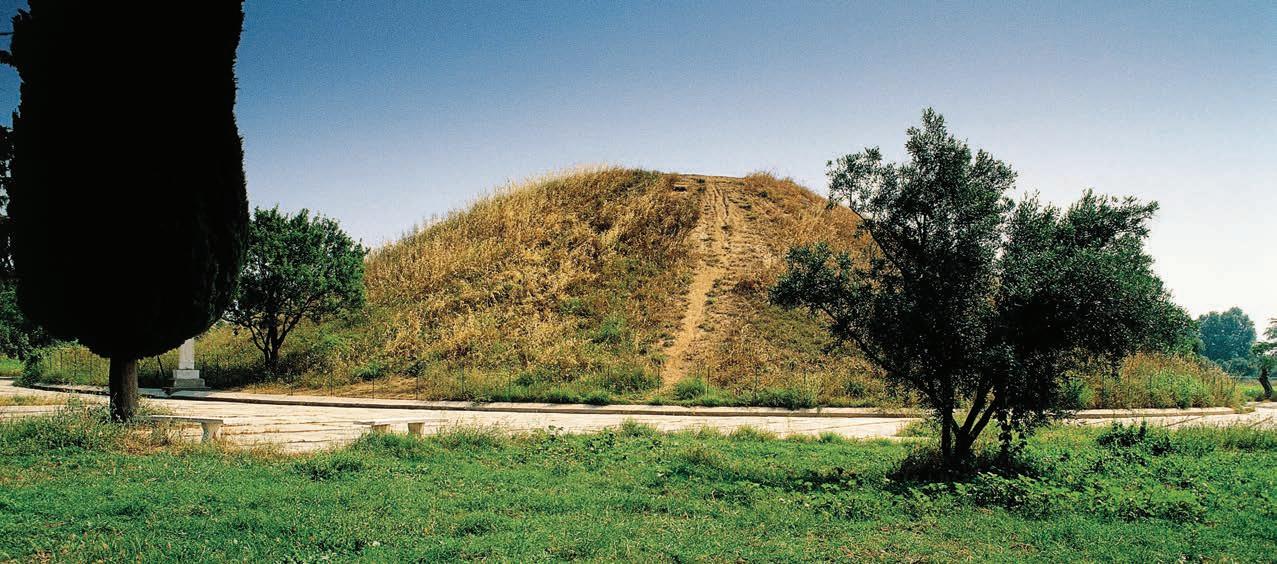
One hundred and ninety-two Athenian fallen warriors were placed in a massive, hemispherical mound, 12 metres high. The site was excavated in 1882 initially but was revisited in 1970 by Spyridon Marinatos and his team, who conducted a partial excavation of the burial trench inside the smaller mound, revealing ve perfectly preserved skeletons, carefully placed side by side. Next to each skeleton was a tiny painted oil phial, and a large plate for use in the afterlife. The skull of a sixth warrior was also found, bearing the marks of the spear or sword that likely killed him.
This allowed the Greeks to offset their numerical inferiority because they chose a plain with hills and forests on one side and a swamp on the other, which created a choke point, making the larger forces of the Persians dif cult to use.
Their next advantage was the strategy employed by the Greek general Miltiades. Instead of placing the best Greek troops in the middle, Miltiades put the best men on the anks. The
importance of this becomes obvious when you see how the anks were used. The Greek hoplites also went out to meet the Persians, meaning that the Persian cavalry and archery were not very effective. Once the battle began, the Greek centre gave way, and the stronger anks moved up around the Persians in the rst recorded ‘pincer movement’ in history. The Persians were crushed, and Miltiades’s classic manoeuvre is still taught by the military today.
The historian Herodotus tells us the story of Pheidippides, an Athenian runner, or hemerodrome (day-runner or messenger), who was sent to Sparta to request help when the Persians landed at Marathon, Greece. He ran about 240 km in two days and then ran back. He then ran the 40 km to the battlefield near Marathon and back to Athens to announce the Greek victory. It is said that he ran the entire distance between Marathon and Athens without stopping. When he arrived in the Athenian assembly, he called out ‘hail, we are the winners’ and then collapsed and died.
When the modern Olympics began in 1896, the organisers were looking for a great event that would link the Games to the ancient glory of Greece. The legend of Pheidippides inspired them to introduce the marathon race as an event in the first modern Olympic Games in Athens. The Greeks staged a selection race for the 40 km Olympic marathon on 10 March 1896, which was won in 3 hours and 18 minutes. The winner of the first (men only) Olympic marathon, on 10 April 1896, was Spyridon Louis, a Greek water-carrier, who won the race in 2 hours 58 minutes and 50 seconds. Today, the record for the men’s marathon is 2 hours and 6 minutes.
For the next few Olympics, the length of the marathon remained close to 25 miles. But at the 1908 Olympic Games in London, the course was extended, allegedly to accommodate the British royal family so that it could finish in front of the royal box at the Olympic stadium, a distance of 26.2 miles (42.195 km). In 1921, the length of a marathon was formally standardised at 26.2 miles.
Using historical sources as evidence
Here is Herodotus’s account of the Battle of Marathon.
… the Athenians in close array fell upon them, and fought in a manner worthy of being recorded … There fell in this battle of Marathon, on the side of the barbarians, about six thousand and four hundred men; on that of the Athenians, one hundred and ninety-two. Such was the number of the slain on the one side and the other.
Source 9.5.16 Herodotus, The Histories, Book 6, Penguin Classics, 2003, pp.110–17 ➜

1 How does Herodotus make the Athenians look?
2 Given that Herodotus was not at the battle and was writing many years after the event, evaluate how reliable this source is.
Source 9.5.17 The Athenians were greatly outnumbered at Marathon by the invading Persians, but they eventually overcame their more lightly armed foe.
Key concepts: sources, evidence, perspectives, contestability HASS skills: analysing, evaluating
The sacri ce of King Leonidas of Sparta alongside 300 of his elite Spartan warriors in this battle is one of the most powerful stories of bravery and courage in history. Although the Greeks lost this battle, the time that the Spartan defence cost the Persian advance into Greece meant that the Greek city-states could be safely evacuated. So, although Leonidas and his men all died, they saved all the people in central Greece, which was an important victory.
The con ict between Persia and Greece continued after the Athenians and their allies defeated Persia at Marathon. The Persian King Xerxes tried to nish what his father Darius had failed to do and expand the in uence of Persia into Greece. The Greek city-states were not united even after their victory at Marathon, and many believed they had no chance of resisting the enormous Persian Empire’s army.
King Xerxes demanded the Greek citystates surrender, and some did. However, some city-states refused to submit to the Persians, the most important being Athens and Sparta. Xerxes therefore made it his mission to crush Athens and Sparta and subdue the rest of Greece.
In 481 BCE, Xerxes personally led the Persian army and navy to conquer Greece. He had spent nearly 10 years building both the army and navy into a force that would dominate Greece. According to Herodotus, the Persian army had millions of soldiers. Modern historians think it was more likely to be between 70000 and 300000 soldiers. The Greeks only had about 7000. The Greek city-states that resisted Persia formed an alliance called the Hellenic League, which the Greeks agreed should be led by Sparta.
Because of the size of the Persian army and navy, the Greeks knew they had to use their knowledge of the landscape to their advantage, just as they had done at Marathon.
It was decided that they would force the Persians to ght in narrow passes and harbours to prevent them being able to use all of their troops and ships at once. Thermopylae was chosen because it is a narrow pass on the east coast of central Greece. It was also known as the ‘hot gates’, because of its nearby hot sulphur springs. In ancient times, the cliffs were on one side of the pass, and the sea was on the other and it was so narrow that two chariots would barely be able to travel side by side. A narrow harbour called Artemisium was chosen for the Greek ships to ght the Persian navy. Both battles were fought at the same time. The Greek strategy was that if either the battle on land or the battle on the sea was lost to Persia, the surviving force would retreat so that they could ght another day.
elite Spartan warriors with him. The rest of the 7000-strong Greek army was made up of soldiers from the Greek city-states who joined the Hellenic League. Xerxes did not believe such a small force would oppose him. However, the Greeks formed into a phalanx, making an impenetrable wall of overlapping shields and layered spears, spanning the entire width of the pass. Xerxes sent his troops into the pass with disastrous results. The Persians’ arrows and short spears could not break through the long spears of the Greek phalanx, and they quickly discovered that their lightly armed and armoured men were no match for the vastly superior armour and weaponry of the better trained and equipped Greek hoplites. Enormous casualties were sustained by the Persians in their battle with the disciplined Spartans and Greek troops. Because of the terrain, the Persians were unable to surround the Greeks, so their superior numbers were almost useless. The Greeks defended the pass successfully in this way for two days. After watching so many of his troops fall, Xerxes decided to send his legendary Immortals, so named for their erce ghting and impenetrable line. However, even the Immortals lacked the power to break the Spartan phalanx and were forced to retreat.
However, on the second day a Greek named Ephialtes betrayed the Greeks by telling Xerxes of a path that led around Thermopylae, which the Persians could use to surround the Greeks and defeat them. This path was defended by 1000 of the Greek troops but when the Persians turned up, they could only offer brief resistance and ed, leaving the Persians to advance behind the Greeks unopposed.
The Greek troops were led by the Spartan King Leonidas, who brought 300
Leonidas realised that further ghting was pointless and sent all but the 300 Spartans, and a few of the most loyal troops, away. This small number of Greeks stayed, knowing that their effort to delay the advance would lead to their deaths.
The story goes that after the Spartans’ spears broke, surrounded by the Persians they kept ghting with their short swords, and after those broke, they fought with their bare hands and teeth. Although the Greeks killed many Persians, including two of Xerxes’s brothers, Leonidas was eventually killed, along with all 300 of his men. The last Spartans were killed by Persian archers after ghting fanatically to recover their king’s body.
When the body of Leonidas was found by the Persians, Xerxes, in a rage at the loss of so many soldiers, ordered that the head be cut off and the body mounted and put on display, but apparently Xerxes later deeply regretted this. Leonidas’s body was eventually returned to Sparta, where he was buried with full honours.
There is a short text honouring the Spartans on a monument at the site of the battle that we know about from Herodotus:
Go tell the Spartans, stranger passing by, that here, obedient to their laws, we lie.
The Greeks may have lost this battle, but the sacri ce of the 300 gave the people of central Greece enough time to evacuate all their cities. The navy at Artemisium was also able to retreat, meaning they
were able to regroup and, using the same tactic of ghting the Persians in narrow spaces, resoundingly win the next sea battle against Persia at Salamis. The Greek population were also saved, but the Persians advanced, destroying the empty Greek cities as they went. Athens was burnt to the ground (or razed) twice.
Effects can also be thought of as something that has an impact on other things, so if you see the words ‘effect’ or ‘impact’, you are being asked to think in the same way.
The ancient Greeks were able to stop the Persians from taking over Greece. A signi cant effect of this victory was the common Greek identity that developed – the ancient Greek city-states had united against a massively superior enemy and defeated them. Unity was strength and after this the Greek city-states thought of themselves as a united people for the rst time.
Another signi cant effect of the Greek victory was the emergence of Athens and Sparta as two of the most powerful citystates. For Athens, victory brought about the peaceful ‘classical age’, which was a time when its power and in uence in Greece was mostly unmatched. Athens created an alliance of cities, called the Delian League, that did not include Sparta. Over time, the Athenians tended to see the league as their empire, which worried the Spartans.
Herodotus (c.484–425 BCE) was a Greek writer who invented what we think of as ‘history’ – the study of the past. He wrote about the wars against the Persians, and about his travels through Egypt, Africa and Asia Minor. While the events that Herodotus wrote about are generally accurate, many of the details are thought to have been exaggerated to cast the Greeks in a favourable light.
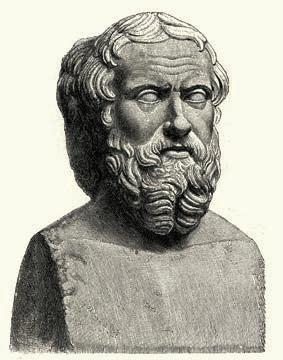
Herodotus is an important source because he was able to talk with people who were there at the time, but his accuracy is sometimes questionable and he made all kinds of assumptions about what he saw and heard, so his conclusions are not always reliable. Does this make his information useful, or not?
1 Go back through this section and find two pieces of evidence that we have from Herodotus about conflict in Greece in the 5th century BCE. Assess the accuracy of each piece of evidence. Give it a rating out of five.
2 Now assess how useful this information was in helping you understand something that happened at the time. Give it a rating out of five.
3 Write one to two sentences to explain what you think about the usefulness of Herodotus’s information. Include a short explanation of why you think this.
Key concepts: sources, evidence, contestability
skills: evaluating, communicating and reflecting
9.5 Review questions
Recall
1 Describe the phalanx in your own words.
2 Describe how Macedonian spears or lances were different from those used by other Greeks.
3 Identify the names of two Persian kings who intended to invade Greece in the 5th century BCE. Interpret
4 Using at least one source from this section, use your analysis skills to explain how archaeology has helped us understand the conflict between the Greeks and Troy. Argue
5 Use your evaluation skills to debate the following statement: The sacri ce of the Spartans at Thermopylae was worthwhile. Create two lists:
• one that argues that the loss of the Spartan king and his allies was a waste of manpower and experienced leadership
• one that argues that the sacrifice of the Spartans was worthwhile for all of Greece. Using your lists, write a short paragraph that explains whether you agree or disagree with the statement. Use evidence from your lists to support your ideas.
Key concepts: sources, evidence, perspectives
HASS skills: analysing, evaluating
• What were the significant beliefs, values and practices of the ancient Greeks?
pantheon all the gods in a religion or mythology
Ancient Greek religion was very different from most modern religions. For example, the ancient Greeks were very involved in their daily religious practice. Religious belief affected almost every aspect of ancient Greek life. Religion also uni ed the ancient Greeks and gave them a common identity.
The ancient Greeks were polytheistic, which means that they believed in many gods. The most important of these gods were the
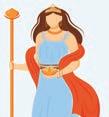
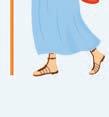


Queen of the gods
Responsible for:
• Women
• Marriage
Symbol:
• Polos (high cylindrical crown)
Responsible for:
• Wisdom
• Weaving and crafts
• War Symbols:
• Owl
• Aegis (shield)




12 Olympians, but there were also many others. Each god in the Greek pantheon controlled an aspect of the world. Ancient Greeks believed that making sacri ces and praying to their gods would make their lives easier. The gods often made mistakes and intervened in the lives of humans.
Sources 9.6.1 to 9.6.3 show the names, responsibilities and symbols of some of the most important ancient Greek gods.
The system and central ideas in the Greek pantheon were adapted and adopted by other cultures, such as Rome.
Responsible for:
• Agriculture
• Harvest Symbols:
• Flowers
• Fruit
• Grains



Responsible for:
• Hunting
• The moon
• Childbirth Symbols:
• Moon
• Bow and arrows





Responsible for:
• Love
• Beauty Symbol:
• Seashells
Responsible for:
• The hearth Symbol:
• Fire
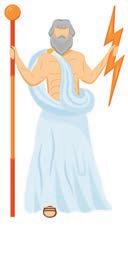
King of the gods
Responsible for:
• The sky
• Weather
• Travellers Symbols:
• Throne
• Sceptre
• Thunderbolt
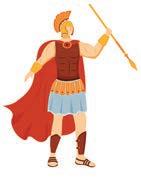
Responsible for:
• War Symbol:
• Armour

Responsible for:
• The sea
• Earthquakes
• Horses
• Bulls Symbol:
• Trident
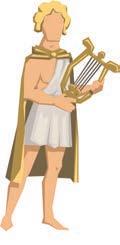
Source 9.6.2 The six Olympian gods ➜
Responsible for:
• Education
• Music and the arts
• Archery
• The sun
• Prophecy Symbols:
• Lyre
• Bow

Responsible for:
• Fire
• Metalworking craftsmen Symbol:
• Anvil

God responsible for:
• Death
• The underworld
Symbol:
• Pomegranate

Nine goddesses responsible for:
• Artistic talents such as music, dance and song
Source 9.6.3 Other important ancient Greek gods ➜

Responsible for:
• Messages from the gods
• Travel
• Trade Symbol:
• Winged sandals
Outsider god, responsible for:
• Drama
• Wine
• Revelry
Symbols:
• Vines
• Ivy
• Animal skins
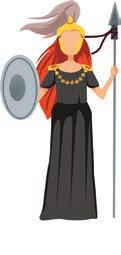
Female spirits of vengeance responsible for:
• Punishing those who had done wrong
mythological something that is imaginary, from myths or legends
Acropolis the complex of temples and other buildings built on the hill in the centre of Athens
Aside from gods, the ancient Greeks also worshipped heroes. These heroes were based on myth, although some heroes were historical sources. Achilles and Heracles (called Hercules by the Romans) were mythological heroes, although there is evidence to suggest they were originally real-life people. Achilles and Heracles were worshipped and revered in ancient Greece for shaping Greek society.
The 10 tribes in Athens were named after 10 heroes from Athenian history. People visited the tombs of these heroes to worship them. In fact, the ancient Greeks believed that heroes sometimes became gods after they died. This was the case with Heracles, who was regarded as one of the greatest of all Greek heroes. The Spartans believed they were directly descended from Heracles – they thought that he was the source of their great strength and skill in battle.
Consider the ancient Greeks’ perspectives about the different roles of males and females by looking at the roles of the gods and goddesses in Sources 9.6.1, 9.6.2 and 9.6.3.
1Describe the kinds of responsibilities the male gods had.
2Describe the kinds of responsibilities the female gods had.
3 Use your analysis skills to explain what your examination of the roles of the gods and goddesses tells you about ancient Greek gender roles.
Key concepts: perspectives
HASS skills: analysing
Greek temples were important public buildings. They showed off a city-state’s wealth and culture, and were built to honour the gods. Temples in ancient Greece were seen as the home of the gods. The architecture was intended to make people feel a sense of wonder and awe. The most famous example of an ancient Greek temple is the Parthenon on the Acropolis in Athens. The Parthenon was a temple dedicated to the goddess Athena.
Priests would sacri ce animals to the gods in an area in front of the temple. Food and drink, such as cakes and wine, were also offered to the gods and left on their altars. The ancient Greeks would offer sacri ces to the gods and pray for the gods to favour them in return.

Source 9.6.4 A modern artist’s representation of the Acropolis as it probably would have looked in ancient times ➜
Question stems
Based on what you have read so far, brainstorm a list of questions about ancient Greece. You can use some of these question stems to help you.
1 Why … ?
2 How would it be di erent if …?
3 What are the reasons …?
4 Suppose that …?
5 What if …?
6 What if we knew …?
7 What is the purpose of …?
8 What would change if …?
Come back to these questions as you finish each section of the chapter. Which questions can you answer now? Would you update questions based on your new knowledge?
Key concepts: significance
HASS skills: questioning and researching, communicating and reflecting
As we saw in Chapter 7, in the study of history contestability means that an issue is debatable and different historians may have very different opinions about the same subject.
Scan the QR code to watch a story about the oracle at Delphi, however the priests who interpreted Pythia’s words were notorious for accepting bribes! The Spartans were known to have bribed the priests to make sure the oracle said something favourable to them.
1 Did the god, speaking through the oracle, give answers to the questions put to the oracle, or were the priests in control of the answers people received?
2 How reliable were the responses to these questions?
3 Why did people consult the oracle if the answers weren’t always reliable?
Key concepts: perspectives, contestability
HASS skills: analysing

The ancient Greeks did not have weekends. Instead, most work would stop when they had festival days. The Athenians had over 120 festival days spread throughout the year. Each festival was different, but often a celebration would go for several days and focus on an element of Greek life. These are some examples of Athens’ festivals:
• Dionysia was held in spring and was an annual celebration of new life.
• Genesia was held in September. It was an annual festival to remember and celebrate the dead.
• Panathenaia was held in mid-July. It celebrated Athena’s birthday

and so was the most important festival for Athens. Every four years, the Athenians had a bigger celebration where they played many games.
Sporting events were also important to the ancient Greeks. People came from all over Greece to participate in athletic competitions. The sporting festivals were known as the Panhellenic Games. Some of the most important sporting events in ancient Greece were the:
•Olympic Games – dedicated to Zeus and held every four years at Olympia or Elis
•Pythian Games – dedicated to Apollo and held every four years at Delphi
•Nemean Games – dedicated to Zeus and Heracles, and held every two years at Nemea or Corinthia
•Isthmian Games – dedicated to Poseidon and held every two years at Isthmia or Sicyon.
What happens after we die? Different religions have different answers to this question, and the ancient Greeks were no different. The ancient Greeks believed that when a person died, they were sent to the underworld . The underworld was ruled by the god of death, Hades. People who had lived lives that harmed others were tormented for eternity. The Greek afterlife had three parts: Tartarus (where the evil were punished for all eternity), the Asphodel Meadows (for those who led neither good nor bad lives) and the Elysian Fields (for heroes).
The ancient Greeks performed complicated rituals when a person died. They believed that these acts would help the soul pass safely into the underworld. If the rituals were not completed, the person’s soul would wander aimlessly for
• Only women could prepare the body for burial
• The body was cleaned and a coin was placed in the mouth, or in some cases, two coins were placed over the eyes
• The coin was for the soul to pay Charon, the ferryman, who would row the soul over the River Styx into the underworld
• For two days the body was laid out in a room
• Friends and relatives could come to pay their respects
• The women in the house would cut their hair, mark their head with ashes, and sing a lament or song of sorrow (some families hired professional singers)
all eternity. This is a common idea in many cultures, and is still in place today in many cultures that have strict rules about what is done to honour the life of a deceased person. What examples can you think of?
The ancient Greek funeral practice had ve stages: 1 preparation, 2 prothesis, 3 ekphora, 4 burial, 5 tending the dead.
• The funeral took place before sunrise on the third day
• The body would be carried out from the home to the grave
• Funerals became so extravagant that laws were eventually introduced to limit excessive displays of grief
• The body was either buried or burned at the burial site
• Families would leave gifts at the grave
• An animal was sacrificed to the gods
• Ancient Greek society believed in respecting and honouring their ancestors
• The period of mourning lasted 30 days
• Relatives would visit the grave every year on the anniversary of the person’s death
9.6 Review questions
1 Who was expected to prepare the body of the deceased?
2 What term is used to describe a belief in many gods?
3 Explain how the ancient Greeks worshipped their gods.
4 Use your analysis skills to explain the similarities between ancient Greek funerals and Australian funerals in the 21st century.
5 Use your evaluation skills to explain the significant beliefs of the ancient Greeks and how they honoured the gods.
• Why was Pericles a significant individual in ancient Greece?
There were many signi cant individuals throughout the history of ancient Greece. One of the most important was an Athenian general and politician called Pericles. Pericles (also known as Perikles) is the person who is most associated with ‘radical democracy’. Radical democracy was where all major decisions were made by all citizens gathered in the assembly. It was implemented in Athens before the Peloponnesian War.
463 BCE
Pericles is the leading prosecutor in the trial of Cimon (who was the most important general at the time)
472 BCE
Pericles presents the play The Persians at the Dionysia, which demonstrates he is one of the wealthy men of Athens
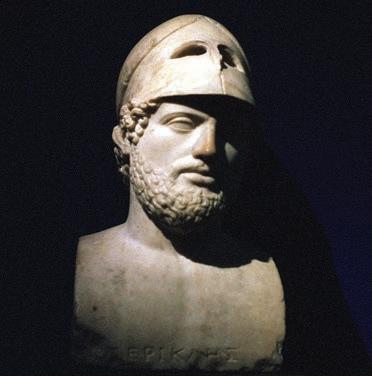
461–429 BCE
Pericles is the effective ruler of Athens and implements radical democracy. Pericles introduces many successful social and economic reforms, even achieving full employment
462–458 BCE
Pericles and his allies succeed in introducing more democratic practices into Athens
c.459–431 BCE
Pericles’s policy was a key factor in developing the Delian League into an empire – their allies were most tightly controlled while Pericles was in charge
Pericles was born in Athens to an important family during the Greco-Persian Wars. He was related to famous Athenian politicians and generals, and was in uenced by some of the most signi cant individuals of classical Athens. These people included:
•Anaxagoras – a great thinker who taught Pericles to ignore superstitions
•Damon – Pericles’s music teacher, who sparked his interest in politics and philosophy
•Protagoras – a renowned sophist thinker
• Sophocles – an accomplished dramatist
•Phidias – an excellent sculptor.
The ancient writers Plutarch and Thucydides described Pericles as intelligent with great speaking and debating skills. Plutarch and Thucydides also said Pericles was determined, and had a sense of justice and integrity. He showed rm leadership and loved Athens. In his early years, Pericles served in the Athenian navy and spoke in the assembly in support of democratic ideas. He quickly became one of the most in uential speakers in the assembly because of his skills. Eventually, Pericles took a position of leadership in Athens.

Pericles became a key leader of Athens in the period following the Greco-Persian Wars. He was elected as one of the 10 generals to implement the decisions of the Athenian assembly. Pericles had to win the support of the people to be elected to this position, which he did 15 times in a row. His success in being re-elected so many times gives us a good understanding of his popularity, as well as his speaking and debating skills.
Plutarch (45–125 CE) was a Greek writer and biographer who lived in the Roman world. Plutarch has become an in uential writer and is one of our main sources on ancient Greek and Roman societies. While he wrote about Pericles and the ancient Greeks more than 500 years after they had lived, he remains one of the main historical sources we have of the Greek and Roman civilisations. Plutarch has remained a popular historian for nearly two thousand years and there is barely a time in history when he has not been widely read and studied.
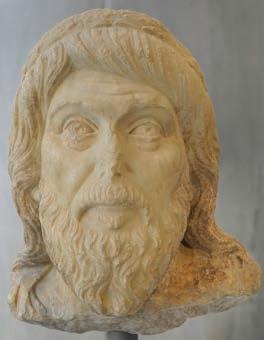
archonship high
offices in command of important jobs in the city-state of ancient Athens
Using historical sources as evidence Plutarch wrote about Pericles, stating:
His teacher in music … was Damon … it was he who trained Pericles for his political contests … Pericles also studied under Zeno the Eleatic… Zeno had perfected the technique of cross-examination, which enabled him to corner his opponent by the method of question and answer.
… But there was one man more closely associated with Pericles than any other … This was Anaxagoras of Clazomenae, whom men of the time used to call Intelligence personified …
Source 9.7.3 Plutarch, The Rise and Fall of Athens: Nine Greek Lives, Penguin Classics, 1964, p. 168 ➜
1Explain how Plutarch portrays Pericles in this source.
2 Use your analysis skills to explain if Plurtach’s writing conveys a positive or negative image of Pericles.
Key concepts: sources, evidence, cause and effect, perspectives
Pericles had many signi cant achievements while he was a leader in Athens. He helped implement a radical form of democracy by:
•introducing pay for the most important government jobs and jury service
•making the role of archonships open to lower economic classes
•a hugely ambitious and very successful public building program
HASS skills: analysing, evaluating
•restricting citizenship to a smaller group of people.
These changes made it possible for Athenians who did not have much money to take a bigger role in the management of the city. This is because government work was no longer limited to the wealthy as some jobs in government were now paid employment.
Think about democracy today, and, using the list above about the main features of democracy in ancient Greece:
1 Use your research skills to research what roles in government today have a wage so that people can work in government.
2 Use your analysis skills to explain why you think that it is important to pay people for their roles in government.
Key concepts: democracy, cause andeffect
HASS skills: questioning and researching, analysing
If you worked for a newspaper in ancient Greece and were asked to write a headline for one of Pericles’s significant achievements, what would it be? ( Hint : make sure you capture the most important aspect of his achievement in your headline.)
Key concepts: perspectives, empathy, contestability
Pericles expanded the Athenian Empire by making sure the Athenian navy was the biggest and most well trained in Greece, setting up garrisons and
Revolts
Cimon
Tolmides
Pericles
Pericles
HASS skills: evaluating, communicating and reflecting
democratic governments in allied cities. He also signed treaties with cities outside of the control of Athens, and in this way spread Athens’ in uence across Greece.
garrison a group of troops stationed in a town or city
One of Pericles’s lasting legacies is the construction of many of ancient Greece’s famous buildings. This was one of the reasons for his popularity, as the building program created a great many jobs paid for out of the public coffers (taxes paid by the allies). Athens enjoyed full employment while Pericles was in charge. The famous buildings built under the leadership of Pericles include the:
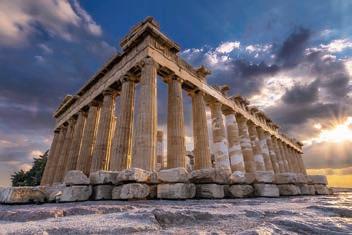

•Parthenon
•statue of Athena
•Temple of Athena Nike
•Temple of Hephaestus
•Temple of Poseidon
•Hall of Mysteries at Eleusis
•Propylaea
•Odeon.

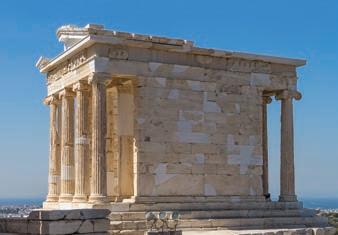


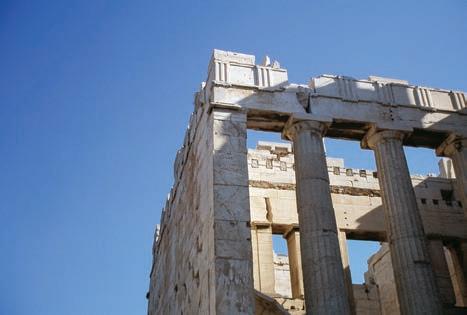
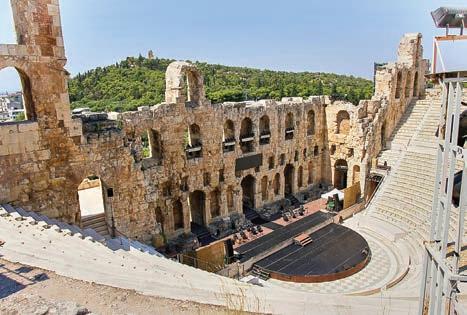
We can look at historical sources to gauge the opinions people had of Pericles. Activity 9.9 shows us what Thucydides’s opinion was of this Athenian leader.
Using historical sources as evidence
An interesting opinion on Pericles comes from the ancient historian Thucydides. He describes Pericles in the following way:
Indeed, during the whole period of peacetime, when Pericles was at the head of affairs, the state was wisely led and firmly guarded, and it was under him that Athens was at her greatest …
The reason for this was that Pericles, because of his position, his intelligence, and his known integrity, could respect the liberty of the people and at the same time hold them in check. It was he who led them, rather than they who led him, and since he never sought power from any wrong motive, he was under no necessity of flattering them: in fact, he was so highly respected that he was able to speak angrily to them and to contradict them … So, in what was nominally a democracy, power was really in the hands of the first citizen.
Source 9.7.6 Thucydides, History of the Peloponnesian War, Book 2, Penguin Classics, 1974, p. 163
1Identify how Thucydides makes positive comments about Pericles.
2 Read the source carefully to identify any negative comments about Pericles.
3Explain how reliable you think Thucydides is as a commentator on Pericles. Justify your answer.
Key concepts: significance, perspectives, contestability
historical concepts and skills 9.5
HASS skills: analysing, evaluating
Pericles was undoubtedly a great leader, but the information that exists about him is nearly all biased and represents him very positively. This is because the person who wrote one of the most important sources for the period was a peer of Pericles – Thucydides, who was an important general in the highly successful Athenian navy. Perhaps because of his own background and experiences, Thucydides believed that Pericles’s leadership was the best thing that had ever happened to Athens. Was he right? The Athenians may have thought so, but most of their allies hated Athenian rule while Pericles was in charge because the Athenians were harsh, cruel and often ruthless.
Consider whose perspective is ‘right’? Do you think it matters? Perhaps it is more important that we think about these different perspectives and try to see the situation from both sides.
1 Think about a situation where you have disagreed with someone about something important to you. What key points of difference were there in this disagreement? Did you both think you were right? Why? How did you (or how might you) resolve your differences?
2 Write down your ideas about these questions and share your ideas with a partner.
3 Use your understanding of perspective to imagine you are the other person in this disagreement. How does the disagreement look from this perspective? Write down your ideas and share your ideas with a partner.
9.7 Review questions
Recall
1 Identify in what period Pericles grew up.
2 Name some of the people who influenced Pericles.
3 Identify how many times Pericles was re-elected a general. Explain what this tells us about how popular he was.
4 Identify the famous buildings that Pericles was responsible for building in Athens.
Interpret
5 Use your analysis skills to explain how Pericles made it easier for poorer Athenians to be involved in government.
6 Describe what Thucydides thought of Pericles’s leadership of Athens.
7 Use your analysis skills to explain why Thucydides says that power was in Pericles’s hands even though Athens was a democracy.
Argue
8. Why was Pericles a significant individual in ancient Greece?
Key concepts: continuity and change, significance
HASS skills: evaluating, communicating and reflecting
9.8 Conclusion: why does it matter?
Ancient Greece was the beginning of many of the big concepts that we take for granted today, such as ‘democracy’, ‘drama’ and ‘voting’. There are also plenty of other concepts that had their beginnings in this amazing society.
After the time of Pericles and the Peloponnesian War, ancient Greece began to change. Speci cally, a ‘Greek identity’ spread throughout Greece. Alexander the Great was able to use the idea of Greek identity to create a uni ed empire, which went on to become a major power in the ancient world.
Ancient Greek ideas spread around the Mediterranean and the Near East, including Egypt, Italy and Mesopotamia, and even as far as India.
Ancient Greek mythology has inspired stories for thousands of years, many of which are still enjoyed today. The in uence of ancient Greece runs deep in our society and has in uenced much of how Australia works. We might not realise the extent of this in uence unless we study the incredible achievements of these intriguing ancient people.
Self-assessment
That just about wraps up this topic. How do you feel you went working through the chapter? Before you attempt the following activities, visit the Interactive Textbook to rate your con dence with this topic via a downloadable checklist.
Follow the ow of main ideas
What have you learnt about ancient Greece? For this activity, copy the diagram and ll it out by explaining your understanding in a few points. (We have done one topic for you.)
Geography of Greece
Structure of Greek society
Significant beliefs in ancient Greece
Conflict in ancient Greece
Pericles
Archaeology and ancient Greece
Conserving ancient Greece
• Many archaeologists over the years have helped us to conserve the past of ancient Greece.
• Some archaeologists have used controversial methods to preserve precious artefacts.
• The Parthenon Marbles are a famous example of artefacts that have been removed from their original location.
• There is much debate about whether Britain should give the Parthenon Marbles back to Greece.
Once you have nished adding your notes, rank each category in its order of importance by placing a number to the left-hand side of each box. Justify your decisions in a paragraph.
I used to think that ancient Greece was …
Now I think that ancient Greece …

➜
Source 9.9.1 A reconstruction of the statues above the western door of the Parthenon. The statues were created from a detailed, early 20thcentury drawing.
2 a I used to think that life in ancient Greek society was …
b Now I understand that life in ancient Greek society was …
3 a I used to think that ancient Greeks believed in …
b Now I understand that ancient Greeks believed in …
4 a I used to think that ancient Greeks fought …
b Now I understand that ancient Greeks fought …
This exercise in visible thinking asks you to track the difference between what you knew about ancient Greece before starting this chapter, and what new understandings you have acquired since reading the chapter.
Using the stem sentences here, write a paragraph explaining what you previously knew about the topic. Then write another paragraph explaining what you now understand about the topic.
1 a I used to think that the geography of ancient Greece was important because … b Now I understand that the geography of ancient Greece was important because …
Identify four major changes that Pericles made to Athens (and/or Greece). Write one paragraph explaining:
• whether these changes were good or bad for Athens
• whether these changes were good or bad for Greece.
Make sure you use evidence to support your ideas. Try to include information from the ancient primary sources in this chapter.
As a historian, you will need to con dently and correctly use the terms related to your subject. Write a paragraph in response to the question using all the key terms listed. Ensure that your use of these terms shows your understanding of what each term means.
Question: Explain the practices of ancient Greeks that are still followed today in Australia. Use these words correctly in your answer:
• democracy
• drama
• education
• philosophy.
Investigate the di erent aspects of ancient Greek civilisation and identify their key elements. Try to nd historical sources for each topic.
Copy the lotus diagram provided and ll it in with your research. This will build a complete picture of what you have learnt in the di erent learning areas. One area has been left blank so that you can add topics of your own choosing. When you have nished creating your lotus diagram, use it to answer the following question. Your answer needs to be an extended written response.
Question: Explain how di erent elements of ancient Greek society were in uenced by Greece’s geography.
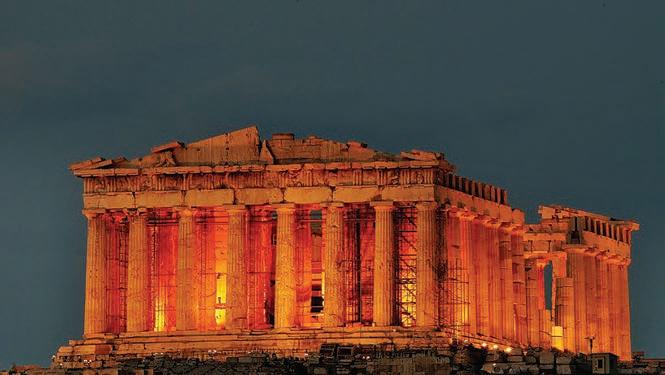


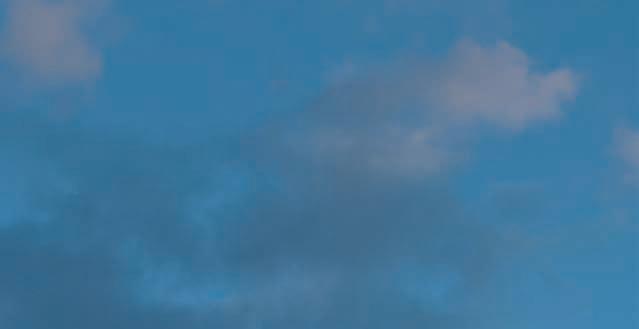








Source A The Colosseum as it is today in Rome, Italy. Known in the past as the Flavian Amphitheatre, construction began under the emperor Vespasian in 72 ce and was completed in 80 ce by his son and successor, Titus. The Colosseum was the largest amphitheatre ever built at the time and held 50 000 to 80 000 spectators. It was used for gladiatorial contests and public spectacles such as mock sea battles, animal hunts, executions, re-enactments of famous fights and dramas based on classical mythology. The Colosseum is situated east of the many other famous buildings that remain from ancient Roman times in the centre of Rome at the Roman Forum.
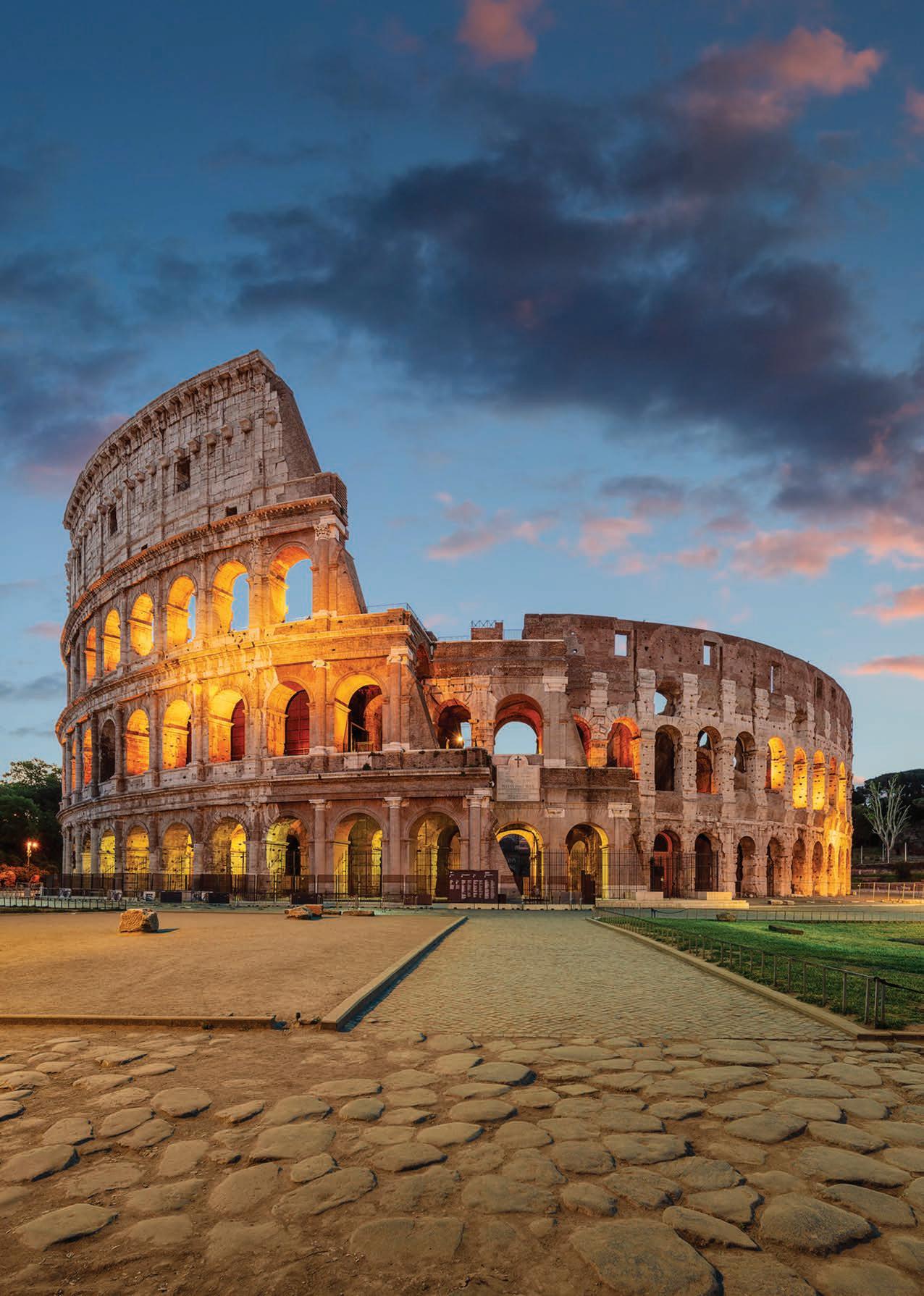

As historians in the 21st century, it is important to think about the legacy of the ancient Romans. The ways in which they in uenced our world can be seen all over Europe, the Middle East and North Africa in the areas that were once part of the Roman Empire. The Romans had a huge in uence over millions of people, as many nations adopted Roman ways of doing and thinking which continued in the cultures that followed. While there was change after the Roman Empire ended, a great deal of ancient Rome survived throughout the millennia and is still with us today, which is perhaps their biggest legacy.
At its biggest, the Roman Empire stretched from Italy right around the Mediterranean Sea, to Africa, the Middle East, northern Europe and Great Britain. Everywhere the Romans went, they left behind impressive buildings, monuments and roads. Their empire was huge, much bigger than the empire of the Egyptians and Alexander the Great. The borders of the Roman Empire met those of some of their rivals, the Parthians in the east, and the so-called ‘barbarian’ groups in the north, who would eventually divide and destroy Rome sometime not long after 410 CE
The ancient Romans were ambitious, and they were excellent at organising. In order to create and rule their enormous empire, they had to have a well-organised government and disciplined army, and effective leaders to control it. In fact, some of the nastiest villains in history were cruel and terrible, but incredibly powerful, Roman leaders.
Often, the ways that the Romans enforced their power and in uence were extremely brutal. Rome invaded and took over many other places, stealing from the local people and often enslaving or killing them. The Romans took other peoples’ resources and used them to build even bigger armies to take even more land. Most of the cities, settlements and farms were created and maintained using slave labour and the spoils of war. Studying ancient Rome therefore reminds us of the great things that people can achieve, but also the cruelty and violence that the powerful can in ict on others.
After completing this chapter, you should be able to answer these questions:
• How did geography affect the ways ancient Rome developed?
• What was daily life like in ancient Rome?
• What were Roman warfare and military life like?
• What religion and beliefs did the Romans have?
• Who should we consider as signi cant individuals in ancient Roman history and why?
After completing this chapter, you should be able to:
• explain what cause and effect and change and continuity mean in the study of history
• analyse different historical perspectives
• determine historical signi cance
• understand the role of historians and archaeologists in uncovering the past
• develop historical empathy
• interpret written and archaeological sources in both print and visual form
• correctly use special terms speci c to the topic
• use evidence (dates, statistics, examples) to communicate your ideas and build an argument
• re ect on your ndings and re ne your learning.
Visit the Interactive Textbook to access:
• interactive review quizzes and Scorcher competition
• videos, image galleries and other extra materials.

• 1000 BCE Evidence that Rome was settled
• 1000–700 BCE Latins (including Romans), Etruscans, Sabines and Samnites settled in Italy
• c.750–400 BCE Greek settlements in southern Italy and other parts of the Mediterranean were established
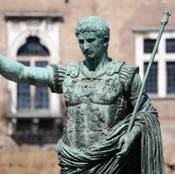
73–71 BCE
509 BCE
Rome becomes a republic and the government develops. Rome expands to control more of the Italian peninsula by defeating neighbouring territories
115–100 BCE
Roman territory and even Italy itself face a number of external threats. Jugurtha and Mithridates attack from Africa and the East, and the Germanic tribes attack from the north
Spartacus, an escaped gladiator, leads a huge slave rebellion in Italy. At one point, he leads a slave army of 100 000. It takes the Roman army and its generals nearly three years to defeat them
58–51 BCE
After being consul, Julius Caesar conquers Gaul (modern-day France) and tries to invade Britain, but is forced to withdraw. The invasion of Britain will not be achieved for another 100 years
753 BCE
The legend of Rome’s founding by King Romulus

264–146 BCE
Rome takes on its greatest challenge – it fights and wins three wars against the great African city state of Carthage. Rome keeps invading across the Mediterranean and fights successful wars in Greece and the Middle East to control most of the area
99–61 BCE
Internally, the Roman political system is under threat from ambitious Romans who lead rebellions, several of them even marching their own armies against Rome and killing their political rivals in brutal executions
59 BCE
Gaius Julius Caesar is made consul of Rome
founding when something new is created by a people, generally a city or place consul the leader of Rome. During the Roman Republic, two consuls were elected to office every year.
senator politician who has been elected to a senate
barbarian someone from another place who spoke a different language. For ancient Romans, a barbarian was any person who was not part of the Roman Empire. sack to invade and destroy a city

• Augustus, Caesar’s heir, becomes the first emperor and the imperial system develops
• Imperial Rome continues until c.410 CE when Rome was invaded and the culture destroyed by Barbarians from the north
• The Christian Byzantine or Eastern Roman Empire continues until it finally collapses and is taken over by the Islamic Turks
• The Roman Empire is separated into smaller kingdoms, run by barbarian rulers (even Italy is split into separate states)
• In 800 CE, the French ruler Charlemagne creates an empire covering what are now France, northern Spain, Italy, Germany, Austria, the Czech Republic, Hungary, Italy and Croatia

44 BCE
A group of Roman senators murder Julius Caesar
64 CE
A big fire occurs in Rome. Emperor Nero blames the Christians, who are a new religious community
c.200 CE
The borders of the Roman Empire come under increased attacks by barbarian tribes. Under pressure, a number of costly civil wars weaken the empire
313 CE
49 BCE
Julius Caesar becomes unpopular in Rome and a civil war begins between his supporters and those who oppose him. In 45 BCE, Julius Caesar wins the war and becomes the sole leader of Rome
27 BCE
The rule of the first emperor, Augustus, begins. He is the great-nephew of Julius Caesar. The Republic of Rome becomes the Roman Empire
79 CE
The Colosseum in Rome is opened. Pompeii and Herculaneum are buried by the eruption of Mount Vesuvius
283 CE
The Roman Empire is split into the eastern and western empires

Portrait of Charlemagne, who was one of the most powerful kings during the medieval period of European history ➜
Emperor Constantine accepts Christianity as a religion after centuries of Christians being persecuted and shunned. Christianity later becomes the official religion of the empire
1 Use the timeline to identify three challenges faced by ancient Romans. These could be natural disasters, major changes or attacks.
2 Create two historical questions about significant events shown in the timeline. These should be questions that you would like to learn about as you move through the chapter.
Key concepts: continuity and change, cause and effect, significance
HASS skills: questioning and researching, communicating and reflecting
402–410 CE
The Goths and Vandals (‘barbarian’ tribes) take control of parts of the empire. In 410 CE, Alaric the Goth is able to sack the city of Rome itself
• How did geography affect the ways ancient Rome developed?
We may never know exactly how Rome was founded, but by studying the geography of Rome it is possible to understand why Rome was so successful.

Rome began as just one city, but the rulers of Rome conquered all of Italy, and then expanded around the Mediterranean Sea, then more widely across Europe, North Africa and the Middle East. Ancient Rome maintained control over its vast
empire for hundreds of years. How the Romans achieved this when others failed was due in part to geography.
Look at the map of the Roman Empire shown in Source 10.3.2 and you will see that Rome is almost exactly in the middle of Italy. Its position meant that it was easier for the early Romans to manage territory on the Italian peninsula that they had conquered as they slowly took control of the neighbouring Italian communities.

However, look at the map again and you will see that Italy is also in the middle of the Mediterranean Sea. Its position in the centre of the Mediterranean region meant that it was also in an ideal place to conquer the territory all around it across Europe and North Africa, and still be able to manage the empire from its centre of power, the city of Rome. Therefore, geography gave the Romans a signi cant advantage from the start.
The city of Rome is located on the banks of the Tiber River, close to the western coastline of Italy. The river ows out into
the sea, and the ancient Romans took advantage of this by using the river and the Mediterranean Sea to travel, trade and to conquer their neighbours. Goods were shipped from farms down the Tiber River and into the city of Rome. From there, more ships travelled to the mouth of the Tiber River and out to sea.
The Mediterranean Sea connected Rome to all of its neighbouring territories, making it easier for Rome to trade and also to conquer surrounding lands. The ancient Romans used the sea so much for transport and trade that they named it mare nostrum, which translates as ‘our sea’.
Mountains and hills
The city of Rome is famously built on seven hills, which provide the city with protection because it is easier to defend a hill from attack. If you go to Rome today, be prepared for lots of walking up and down steps and slopes. According to one myth of the founding of Rome, Romulus and Remus fought over which hill they should use as the site of the city. The city grew so big that it eventually covered all of the seven hills, but the communities that had originally been small villages on
each hill retained their own identities, and much like we do in the suburbs we live in today, the residents of the city always thought of themselves in terms of which hill community they belonged to within the city.
The Italian peninsula is home to two large mountain ranges. The Alps soar across the north and divide the Italian peninsula from the rest of Europe, whereas the Apennines run the length of Italy. If you look on Google Earth at Italy today, you can see these mountain ranges.
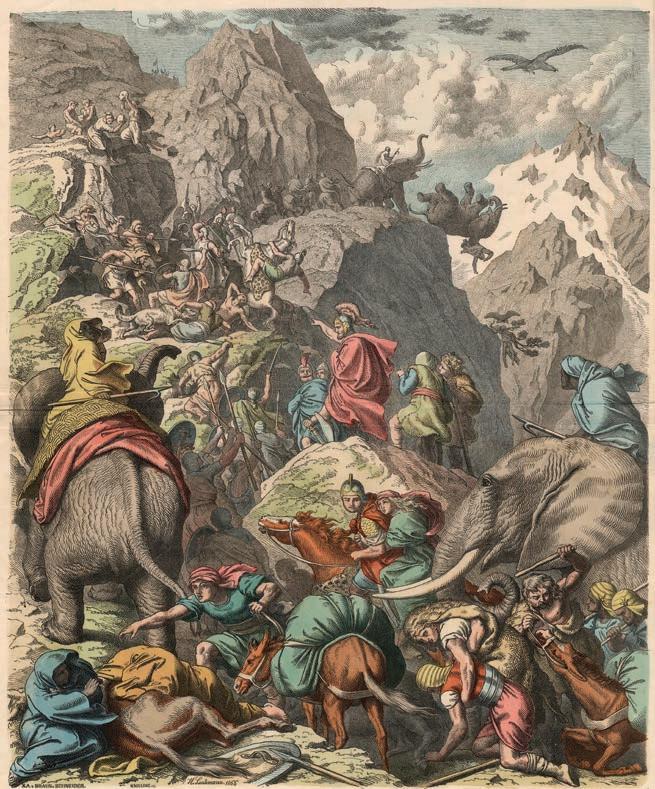
The mountains offered the ancient Romans plenty of protection from enemies, particularly in winter. However, the mountains were not a perfect defence. Unlike some of the mountain ranges in Greece, there are many passes through the Alps that mean this impressive mountain range is not impossible to cross. In fact, in 218 BCE, Hannibal, the ruler of Carthage in North Africa, invaded Italy by crossing the Alps. He brought with him an entire army, including elephants, which were very effectively used in battle against the Romans, ending with him attacking the city itself. You can read more about Hannibal later in the chapter.
Source10.3.5 An artist’s impression of Hannibal’s journey across the Alps, along with his army and elephants







As you study ancient Rome, you will practise how to ask historical questions. History is about inquiry – asking the kinds of questions that help us to examine the evidence and try to piece together how people lived their lives and what might have occurred. Good historians investigate what makes them curious. To do this, it is necessary to be able to formulate questions that help you to think about the puzzles and mysteries from history.
Use the question stems below to develop some questions about what is important or ‘significant’ for us to know about Pompeii and ancient Rome.
1 How do we know ...?
2 What caused ...?
3 What were the reasons for ...?
4 What happened after ...?
5 What can this source tell me about ...?
6 Why did people in ancient Rome ...?
Key concepts: significance

HASS skills: questioning and researching, communicating and reflecting

10.3.6 Plaster casts of victims of Vesuvius at Pompeii. Left: a muleteer (worked with mules) found sitting with back to the wall of the Athletics school. His mule was close by. Right: two people embracing. The casts were made in the 1870s by Italian archaeologist Giuseppe Fiorelli, who wanted to nd out what had been in the spaces that he was nding in the rock when he excavated Pompeii. He pumped plaster into the cavities, let it harden and then removed the rock carefully from around the plaster cast revealing what happened to some of the people of Pompeii. Fiorelli reasoned that the ash and rock that had covered Pompeii and its people during the eruption had hardened around the bodies and other organic material before they decomposed, but when the bodies decomposed cavities were left in the rock. Because of Fiorelli’s work, we have a very clear idea about the last moments of some of the residents of Pompeii during the eruption of Vesuvius.

analysis (in the study of history) to identify the purpose of sources and determine their accuracy and reliability evaluation (in the study of history) proposing explanations and drawing conclusions about a historical event, development or issue and its connections with the present contestability (in the study of history) this occurs when interpretations about the past are up for debate, especially between different historians
Using historical sources as evidence
1 Read Source 10.3.8 carefully. Pliny was an eyewitness to the eruption of Vesuvius. List the things that Pliny saw on the day that Vesuvius erupted in the order they appear in the extract from his letters.
2 Now look at Source 10.3.9 This image was painted several centuries after the eruption. Make a list of what you see in the image that tells you about the eruption.
3 Look at both of your lists and highlight in two different colours all the things that are the same and all the things that are different. What you are doing while you do this is using the historical concept of contestability, meaning that not all accounts about the past agree.
4 How accurate is the painting? Write one to two sentences that explain why the information from the image is ‘contestable’ or may not be very accurate. Make sure you use at least two points from your lists to help you.
Ashes were already falling, not as yet very thickly. I looked round: a dense black cloud was coming up behind us, spreading over the earth like a flood. ‘Let us leave the road while we can still see,’ I said, ‘or we shall be knocked down and trampled underfoot in the dark by the crowd behind.’ We had scarcely sat down to rest when darkness fell, not the dark of a moonless or cloudy night, but as if the lamp had been put out in a closed room.
You could hear the shrieks of women, the wailing of infants and the shouting of men; some were calling their parents, others their children or their wives, trying to recognise them by their voices. People bewailed their own fate or that of their relatives and there were some who prayed for death in their terror of dying. Many besought the aid of the gods, but still more imagined there were no gods left and that the universe was plunged into eternal darkness for evermore.
Source 10.3.8 A letter from Pliny the Younger to Tacitus, from ‘The destruction of Pompeii, 79 CE’ ➜
What you just did was to analyse both Sources 10.3.7 and 10.3.8, and you have evaluated both sources for accuracy. Evaluation and analysis are important historical skills in the Western Australian Curriculum. What you have also done is identify that evidence about the eruption of Vesuvius is contestable. This is an important historical concept.
Source 10.3.9 This painting, called Eruption of Vesuvius, was painted in the 1780s CE by the Austrian painter Michael Wutky, who visited Mount Vesuvius several times while it was active in the late 18th century so that he could paint the volcano’s eruptions and lava more realistically. ➜
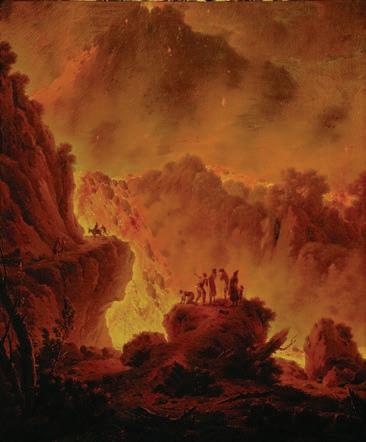
Key concepts: sources, evidence, significance, contestability
HASS skills: questioning and researching, analysing
Rome and its surrounding areas were also good places to grow food. This region experiences a lot of volcanic activity, due to its location between the Eurasian and African tectonic plates Volcanic soils are rich with nutrients, and the climate of Italy meant that crops grew well there.
tectonic plates parts of Earth’s surface that move in relation to each other. Where the edges of the plates occur, the heated inner core of the planet breaks as volcanic activity on the surface.
As the population of Rome grew, they needed more food. They invaded and conquered their neighbours, the Latins and the Etruscans, partly to seize land so that they could grow more crops. The Tiber River was used to transport crops into the city to feed the people. The map in Source 10.3.10 shows the kinds of foods grown in ancient Rome around the Tiber River. Latins ancient Italian tribe of
Etruscans

Using historical sources as evidence
The people of ancient Rome were aware that the site of their city and empire was well located. The historian and author Livy wrote:
➜
With good reason did the gods and men choose this site for the founding of the city. Rome’s hills provide a healthy environment, the Tiber is favourable for navigation upstream to inland crops and downstream to the sea, and the sea itself is close enough for trade and yet far enough that we are not in danger of invasion by foreign fleets. Consider too Rome’s location at the centre of Italy. This site is uniquely suited by nature for the expansion of a city – as is proven by the size itself of our city while yet so young.
10.3.12
Another writer, Vitruvius, also felt that Rome’s success was due to where it was located geographically. He thought that the climate had an impact on the character of the people too. Vitruvius argued that Romans became the leaders of the world because Rome was neither too hot nor too cold. He wrote:
It is a fact that southern nations, although extremely clever, give way when it comes to a contest of courage. This is because their spirit has been [weakened] by the hot sun. Conversely, people born in the [cold] regions of the north, though better suited for the violence of warfare on account of their fearless courage, are slow of mind, and [have] … no thought of strategy.
… the peoples of Italy are temperamentally balanced in each direction, having both physical strength and a mental vigour suited to their courage … Thus did divine intelligence situate the city of the Roman people in an extraordinary and temperate region, so that it might extend its empire across the world.
Source 10.3.13 Vitruvius, Architecture 6.1.10–11, from Peter J Aicher, Rome Alive: A Source Guide to the Ancient City, vol. 1, 2004 ➜
1Identify three things mentioned in either of the sources that demonstrate the location of Rome as contributing to its success.
2 What do these sources agree on about Rome’s geography?
3 What do they disagree on? (Hint: think about what is different in the two writers’ arguments.)
4 Both of these sources are written by Romans about their home, Rome. Explain why being from Rome might have affected what these people wrote.
Key concepts: sources, evidence, perspectives, contestability
HASS skills: analysing, communicating and reflecting
Cause and effect
When studying history, it is important to understand not just what happened, but why it happened. This is the study of cause and effect.
So far, this chapter has considered why Rome succeeded in growing into the enormous empire it became. Now reflect on what you have learnt. You can summarise your understanding by creating a cause-and-effect diagram, such as the one shown here. Draw a similar diagram on a piece of paper, filling in the spaces for cause and effect. The arrows should lead from the causes and point to the effects.
Use your cause-and-effect diagram to answer this question: Why did Rome succeed and grow?
Key concepts: continuity and change, cause and effect
End of section 10.3 review
HASS skills: analysing, communicating and reflecting
assign tasks and track results
10.3 Review questions
Recall
1 Name three crops that were grown around the Tiber River, near the city of Rome.
2 What did the ancient Romans call the Mediterranean Sea?
3 When was Pompeii destroyed by Mount Vesuvius? (Hint: refer to this chapter’s timeline.)
4 Explain the impact of ancient Rome being located on a river and near the sea.
5 Explain why Pompeii is such an important site for learning about life in ancient Rome.
Interpret
6Explain why the people of Pompeii lived so close to an active volcano.
Argue
7 Use your analysis skills to decide what Rome’s most important geographical advantage was. Think about all the geographical reasons why ancient Rome succeeded and identify which you think was most important for Rome’s success. Explain your answer.
Key concepts: continuity and change, cause and effect
HASS skills: analysing, communicating and reflecting
• What was everyday life like in ancient Rome?
• What different day-to-day experiences did rich and poor Romans have?
• What ideas, innovations and technology did the Romans use?
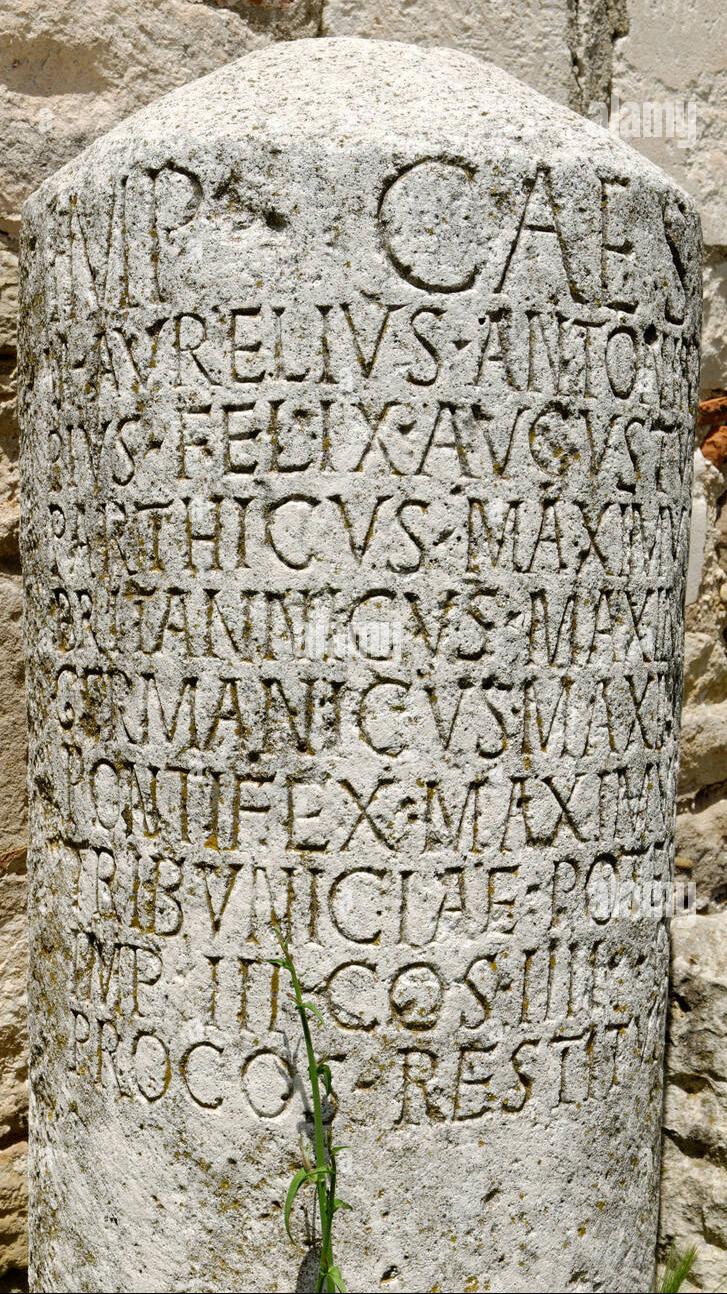
When historians consider what life was like for people living in ancient Rome, they are using empathy to try to understand the people and their lives at the time. One of the ways to learn about people from all sections of society, be they rich or poor, is to investigate what their dayto-day experiences would have been like. It is easier to do this for the rich and powerful about whom much was written and recorded both in their own lifetime and since. However, nding out about the poor, the slaves and the working people is much more challenging, and for this we rely a lot more on the material evidence or archaeology.
In this section, you will discover who the Romans really were: what they enjoyed, where they worked, what they ate and wore, where they lived. You will notice that most of the sources in this section are archaeological. As you progress through the section, think about why this might be.
Source 10.4.1 A Roman milestone. In the 3rd century BCE, streets starting from Rome had milestones or distance columns, continuously placed after every Roman mile along the course of the street. Later, these also included information on how the road was constructed and who built it.
Trade was vital to ancient Rome. The empire was extremely expensive to run and maintain, and trade brought in most of the income Rome needed. The population of the city of Rome grew to one million (much bigger than any other city in the ancient world) during the empire, and such a huge population required many things to be brought in via trade, just as big cities do today.
Because trade was so important, the Romans made trade as easy as possible. On land, the Romans built an immense road network, which they used to move goods, to communicate across the whole empire and to move the Roman army with great ef ciency and quite quickly, by ancient standards, across vast distances. A key feature of Roman roads is that they are generally as straight as possible. This meant using their understanding of engineering and
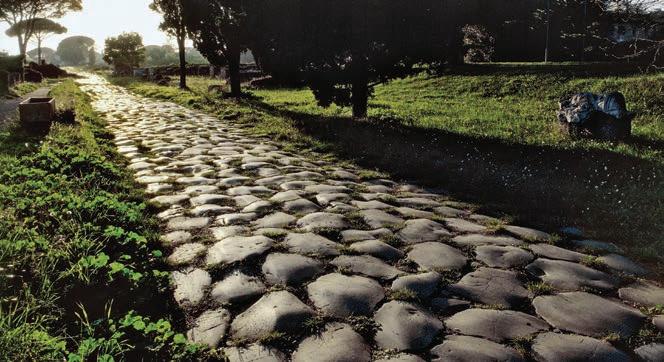
Source 10.4.2 A section of the ancient Via Appia, arguably the world’s oldest (built c.300 BCE) and longest (800 km) surviving road. This main road was ancient Rome’s vital lifeline, serving as both a military and economic highway. It may also have played a role in inspiring the famous saying ‘All roads lead to Rome’. The cobbles are regular and smooth and there is drainage on either side to move the rainwater away from the surface.
science to build across mountains and valleys, to cross rivers and swamps.
Many of these roads have been maintained since they were built and are still in use (with modern surfaces, of course) all across Europe, the Middle East and North Africa.
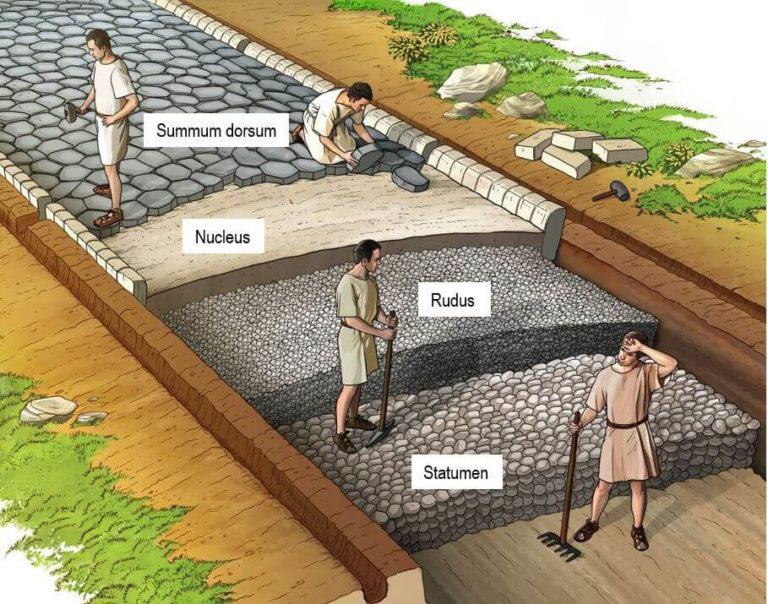
The average width of an ancient Roman road was 5.5–6.0 metres, and consisted of several layers:
• Foundation soil – the base on which a road was built was compressed and then covered with sand or mortar.
1 Statumen – a layer of crushed rock 25–60 cm thick.
2 Rudus – a 20 cm thick layer of crushed rock in cement mortar.
3 Nucleus – a concrete base layer made of cement, sand and gravel; 30 cm thick.
4 Summum dorsum – the nal layer consisting of large 15 cm thick rock blocks.
regular upright slabs. ➜
The high level of Roman engineering expertise and scientific understanding is easily seen in this diagram. Although it was straight, the road was not flat, it was higher in the middle to allow water to drain away. This prevents water pooling on the surface and wearing it away. Surveyors would take exact measurements of where the road needed to go before construction started. Teams would then level the surface before the rest of the specialists and labourers came to put down the various layers of materials seen in the diagram to finish the road. Roads are still built in similar ways today.
Additionally, the Roman Empire had vast and complicated sea trade routes. Sea was the quickest way to get products anywhere, but it was risky; there were lots of pirates and the weather in the Mediterranean can be treacherous. Thousands of Roman ships sank in the Mediterranean and Black Seas. Over 900 of these wrecks have been investigated by archaeologists who specialise in exploring underwater sites. There have been some amazing nds on these wrecks that have told us a lot about what, and how much, the Romans traded. One of the discoveries included honey found in a sealed jar that was still good to eat after 2000 years under water!
The Roman port of Ostia brought goods in and out of the city. It was situated at the mouth of the River Tiber, and the river was used to move goods the short distance of 15 Roman miles from Ostia to Rome itself. Many ships travelled between Ostia and major ports across the Mediterranean, including Carthage in North Africa, a journey that took between three and ve days. The archaeological
remains at Ostia show us that traders from all over the world set up of ces or shops. There are 50 individual places like this at Ostia with mosaics and inscriptions that tell us what happened in every shop, and that these shops dealt with countries all over the empire.

Source 10.4.4 Terracotta transport amphora, 85 cm tall, red clay with pointed bottom. Their shape made amphorae easy to stack and store. This type of amphora was often sealed with wax and was used for transporting grains, wine, honey, oil, sh sauce, grapes and sh.
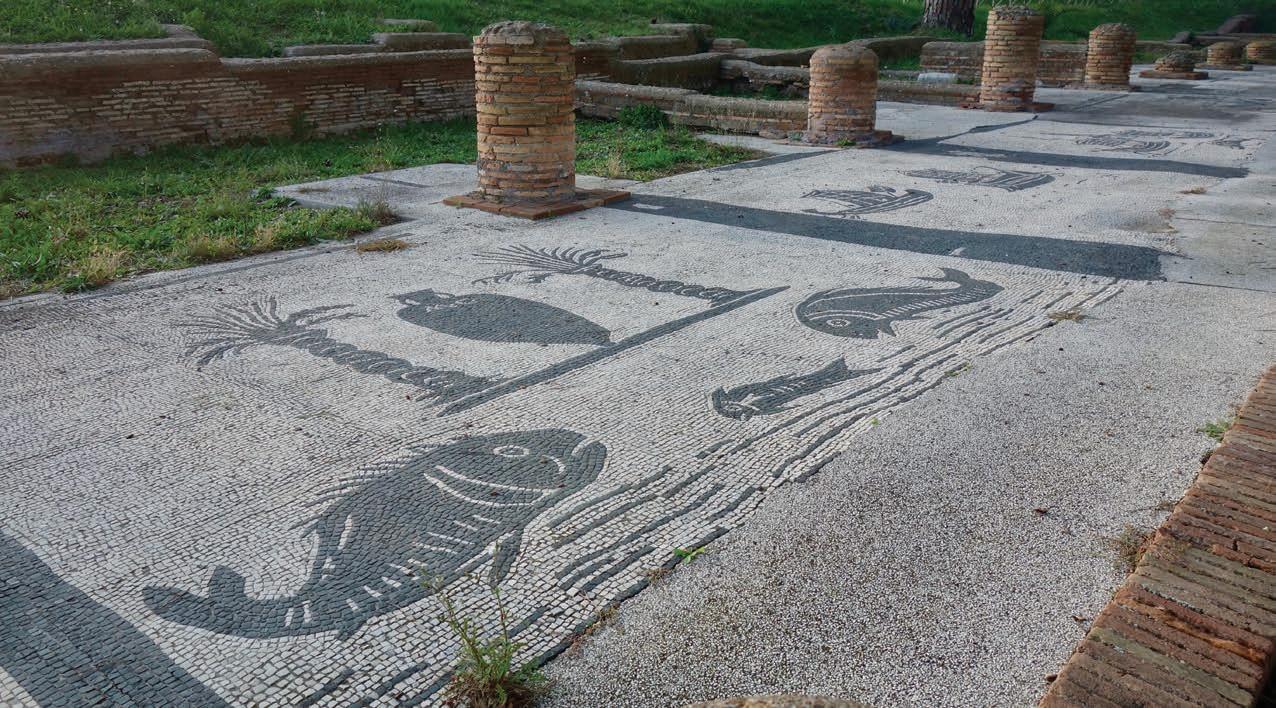
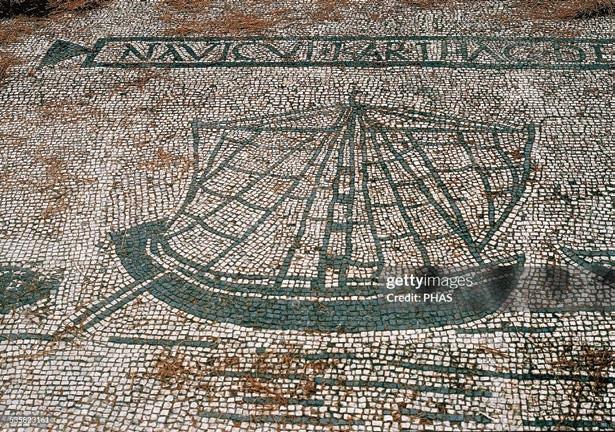
Source 10.4.6 Mosaic depicting a cargo ship from Carthage, showing the international traders who were trading in the Roman port of Ostia. This was one of the 50 shops in the Square of Guilds or Corporations.

Source 10.4.7 Mosaic depicting grain measurers. This shop specialised in trading grains.





















Trade grew to some extent because there were many years of peace within the empire. Trade was vital to the success of the empire, but when the Roman Empire collapsed, trade throughout the empire also collapsed. This had a very negative impact on the many countries and people who had built trade connections with Rome over hundreds of years.
The Romans traded a huge variety of materials. There was a huge slave
trade back and forth across the whole empire. Glass and sand were imported from India, and gold and silver came in from Spain. Silk came into Rome from China, and perfumes and spices came in from the Middle East and North Africa. Timber, tin and wine made journeys across the Mediterranean and were traded as far away as Britain. Exports included corn, leather, marble, olive oil and purple dye.
Many nations were happy to become part of the Roman Empire because it was desirable to have access to so much in the way of goods and services through the enormous trade network built by Rome. In this way, the Romans also spread their language and culture across much of Southern Europe, North Africa and the Middle East. Spreading culture and ideas like this is called Romanisation. Romanisation the process of making something similar to the beliefs and practices of Rome
Many European languages today are based on Latin, the language spoken by the Romans. The list includes English, French, Italian, Spanish, Portuguese, Romanian and Sardinian. Latin became so incredibly widespread across Europe largely as a result of Rome’s trading networks. Today, of all the words in the English language, 50 per cent are Latin. This means that half of all the words in English have Roman ideas and culture in them that have been adopted and have not changed much at all for thousands of years. So, while ancient Rome might have come to an end in one sense, it remains very much with us todaybecause 50 per cent of all the words you are reading in this book have come straight from the ancient Romans.
Investigate the similarities between ancient Roman trade and modern economic systems, and analyse the impact of trade on economies. Develop your understanding of how trade has been an important component of economies from ancient times until today. You will also develop skills in identifying, explaining, discussing and evaluating these concepts.
Research
• Use the internet to research the trade routes of the Roman Empire and modern trade routes.
• Compare the ancient Roman trade routes with modern trade routes used by Australia.
• Research the key goods that were traded in ancient Rome, such as grain and wine.
• Research what are Australia’s main exports today, such as minerals and agricultural products.
1Identify the main goods traded in the Roman Empire and compare them with Australia’s main exports today.
2Explain how trade routes in ancient Rome were similar to or different from modern trade routes.
3Discuss the importance of trade for the Roman economy and how it compares to the importance of trade for Australia’s economy today.
4Evaluate the impact of trade on the economic stability of both ancient Rome and modern Australia.
Key concepts: interdependence, specialisation and trade, continuity and change,
HASS skills: questioning and researching, analysing
Working with historical sources
In this activity, you are going to be thinking about the concepts of change and continuity, evidence and significance. You will also be using your research skills and using your analysis skills.
1 Look at Source 10.4.1 and Source 10.4.2 and read what the text tells you about Roman roads. What do these sources tell you about the Roman people? Think as widely as you can and create a brainstorm or a graphic organiser to help you collect your ideas.
2 Look at the map in Source 10.4.8. Think about the different kinds of goods that were available because there was so much trade. Write a list of five things that you think could be found in at least three different parts of the empire.
3 Now fact check your list and do an online search of what could be found in the three places you chose.
4 Look at the house in Source 10.4.14. How similar is the design of the house to our houses today in Western Australia? List the things that are the same and are different.
5 What do your lists tell you about how much culture we have inherited from the Romans?
Key concepts: continuity and change, perspectives
What we know about what the Romans ate, how this food was gathered and even how some of it was cooked comes from written texts (including cookbooks), wall paintings, mosaics, and in some cases even from the remains of food found at places like Pompeii.
Cereals made up most of people's diet. Wheat and barley were the most common grains used to make bread and porridge, the staple food for poorer people. Roman bread was usually quite coarse and dark in colour. The mills that ground the grains were of different
HASS skills: questioning and researching, analysing, evaluating
quality, with higher quality harder stone being used to make ne our. However, the average person would spend much of their life eating bread that had been ground on softer coarser stone that wore away during the milling process and ended up in the our. As you can imagine, lots of ground stone in the bread was not good for anyone’s teeth, and some of the skeletons of the people who died at Herculaneum, another village destroyed when Mt Vesuvius erupted, show just how badly teeth could be eroded. One poor man had had such terrible tooth infections that his jaw bone had rotted away in two places.
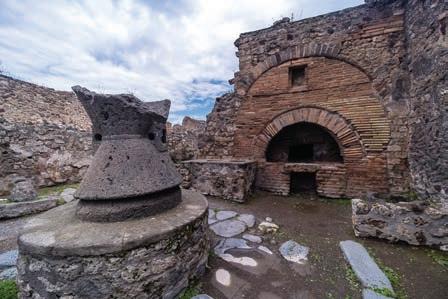

fermenting a chemical process that breaks down substances into simpler ones. It is caused by microorganisms like bacteria, yeast and mould.
Ancient Romans had access to many fruits and vegetables still used today. Just as you can now, you could expect to nd apples, gs and grapes (fresh and dried as raisins), pears, plums, dates, cherries and peaches. Similarly, vegetables included what we still see in supermarkets all the time: beans, lentils, peas, asparagus, mushrooms, onions, turnip, radishes, cabbage, lettuce, leek, celery, cucumbers, artichokes and garlic. Olives and olive oil were very much a staple food, as they are today, but for the Romans they were an important source of healthy fats. Both fruit and vegetables could also be pickled or preserved to conserve them so that they were still available when they were out of season.
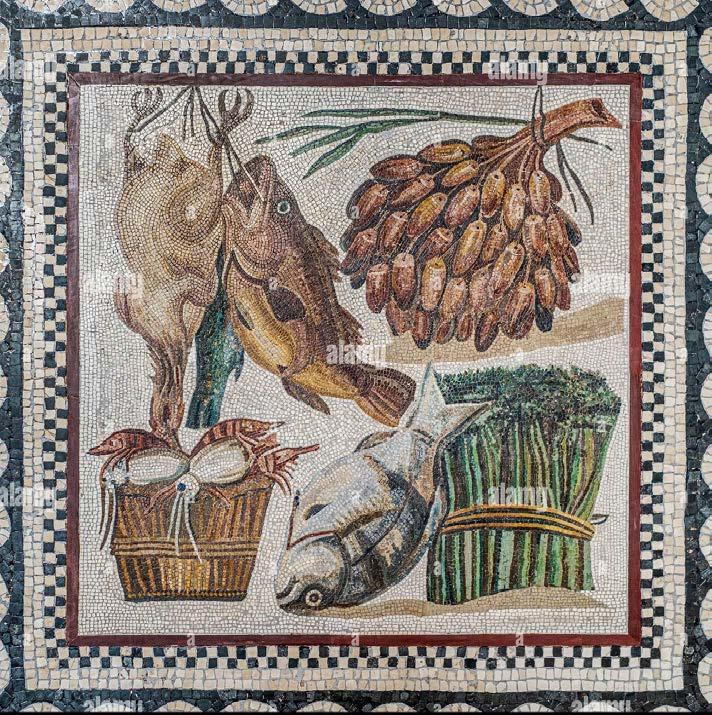
Meat and sh
Meat was generally expensive, so was often prepared as small cuts or sausages. Pork, veal, mutton and goat were popular but rabbit, hare, wild boar and deer were also eaten, and many of these animals were farmed. The Romans loved birds of all kinds being on the menu. You could expect to eat partridge, pheasant, goose, duck, and even blackbirds, doves and magpies. The Romans also loved large exotic birds, and it would not be too unusual to go to a rich person’s home and find flamingo, peacock, ostrich or parrot as the main dish, foods that would be sure to impress the dinner guests. In fact, the worlds’ oldest surviving cookbook, written by the Roman Marcus Gavius Apicius between 14 and 37 CE , contains several recipes for peacock. You can still buy this book today, and some of its recipes are pretty good, although you’ll have to find replacements for some of the more exotic ingredients.
The Mediterranean is full of seafood, so it is not surprising that the Romans ate a lot of it. Fish and shell sh were also farmed in arti cial saltwater and freshwater ponds. Favourites that we still enjoy that turned up at the Roman table were cray sh, crabs, mussels, clams, scallops and oysters. The Romans even had their own very popular version of ketchup, which was a very strong sauce called garum made from fermented sh. Apparently, the smell of the sh fermenting in the garum factories was pretty awful. Fish guts were another extremely popular method of avouring food.
The type of clothing worn would depend on how rich people were to an extent. Men and women wore a version of the toga, which the Romans adapted from the Etruscans. Richer and important or wealthy people’s clothes were made from ner material and were more colourful. Slaves might be dressed in ne robes like their masters, or in cheap shabby garments or nothing much at all depending on their role, job and the wealth and status of their owner.
Roman men tended to wear togas. This distinctive garment was a semicircular, woollen cloth that was often white. It was worn draped over the left shoulder and around the body. The senators who were elected to important positions in the Roman government, called the senate, had purple stripes on the bottom of their togas, and the more stripes
they had, the higher their rank. In Rome, the colour purple was made by crushing rare molluscs. This was very expensive, which is why only very rich and important people used purple. Julius Caesar sometimes wore a toga that was entirely purple to show his importance and wealth. Purple is still used to denote importance –for example, the of cial robes of the Kings and Queens of England are purple.
Women in ancient Rome wore an equivalent garment to the toga known as a stola. The stola was a long pleated sleeveless robe that could be made out of a range of materials, though traditionally it was wool, like the toga. Outside the house, over the stola women often wore the palla, a sort of rectangular shawl that was up to 3 metres long and 2 metres wide. Keeping these garments clean and washing them would have been a challenge.

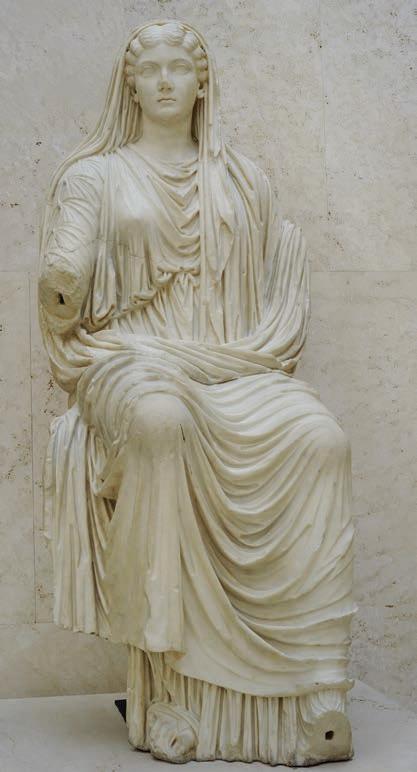
Most people living in Roman cities lived in small apartment buildings called insulae Insulae were generally three to ve storeys high and included a number of small apartments with two small rooms.

The bottom oor of the insulae were usually shops that opened onto the streets. Larger apartments were also on the ground oor or near the bottom. Many insulae were poorly constructed from wood or a mixture of wood and brick. People cooked on open res in these buildings, so they were dangerous places and house res were common.
Wealthy Romans lived in large homes called a domus. Most Roman houses had similar design features much like our homes do today. We have learnt a lot about these kinds of homes from the excavations at Pompeii.
There was an entryway that led to the main area of the house called the atrium Other rooms, such as bedrooms, dining room and kitchen, might be off to the sides of the atrium. Beyond the atrium was the of ce. In the back of the home was often an open garden.
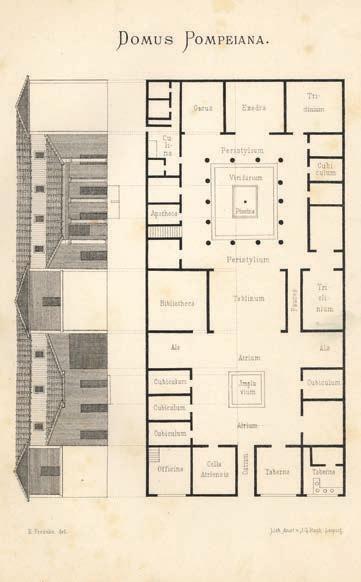
10.4.15
Typical rooms in a Roman house:
• Vestibulum – the entrance hall to the house. On either side of this impressive entrance hall there might be rooms with small shops opening out to the street.
• Atrium – an open room in the middle of the house. The atrium typically had a beautiful garden and a small pool that was used to collect rainwater, called the impluvium.
• Tablinum – an of ce or living room usually for the man whose house it was.
• Triclinium – the dining room. Usually the most impressive room and beautifully decorated with mosaics and frescos painted on the walls in bright colours so that guests could be impressed.
• Exedra – an elegant lounge, sometimes used for dining.
• Cubiculum – bedrooms.
• Culina – a kitchen.
Roman villa
The Roman villa of a very wealthy Roman family was often part of an extensive farm in the countryside. Homes in the country were much larger and extravagant than where the family lived in the city. There were many more rooms, including servants' quarters, courtyards, extensive baths, pools, storage rooms, exercise rooms and gardens. All wealthy homes also had the kinds of comforts we would expect and appreciate, such as running water in bathrooms and kitchens, well-plumbed toilets that led to complex sewer systems to take away waste, and heated oors.
important jobs, such as political administration and military leadership, were reserved for the upper class known as the patricians. While the common people, known as the plebeians, were involved in a variety of everyday jobs. Some jobs were inherited roles from parents or picked up through family status, but it was possible to choose a job to some extent.
The Roman Empire was heavily dependent on slaves. It is estimated that over 25 per cent of all the people in the Roman Empire were slaves. A wealthy man could own as many as 500 slaves who could be used in many ways. Some of the most common jobs done by slaves included farming, domestic services and construction. However, educated slaves were also available, but they were very expensive because they had incredibly valuable skills that meant they could be used as lawyers, accountants, teachers and doctors by their masters. One important feature of Roman life was that when slaves were freed, they could become Roman citizens, though as freedmen (as they were known) they had fewer rights than citizens who had been born free.
The Roman Empire was huge, so, a diverse range of work and professions were needed to maintain the economy of such a vast empire. The most


That slaves could become freedmen shows that Romans did recognise the value of some of their slaves. However, Rome continued to rely on its slaves as a main source of labour to work on its farms and in its industries and homes until the end of the Roman Empire in the 4th century CE , and very few slaves were actually freed. Freed slaves took on the names of the families that had freed them and had obligations to their ex-owners.
Look at the slave’s collar shown in Source 10.4.17, then complete the activities that follow.
Responding to the source
1 What is this object? Why was it made, and who for?
2 What does the inscription tell us about slaves? (Hint: look at the source caption to see the inscription’s translation.)
3 What does the source tell us about how owners viewed their slaves?
Practise using empathy and thinking about perspective
Write a diary entry imagining you are the slave who had this collar put round their neck. In your diary entry, write about:
• why you ran away
• how you were caught
• what it felt like when the collar was welded shut around your neck
• how you feel about having to wear this collar for the rest of your life.
Now write a diary entry as the master of this slave who ran away. When you write this entry, write about:
• why you think the slave ran away
• why this slave is valuable enough to offer a reward for if they run away again
• why you decided that putting this collar on the slave was a good thing to do.
Key concepts: sources, evidence, perspectives, empathy
Rome had a complex government run by a large council of around 600 men called the senate. Jobs in government included tax management, military service, public administration as well as membership of the senate. These jobs were reserved for the upper classes, and senators had a job for life. Other government jobs included


Source 10.4.17 A slave’s collar with the inscription: ‘I ran away. Hold me; when you will have brought me back to my master Zoninus, you get a gold coin.’ Dated from 4–6 CE ➜
HASS skills: analysing, communicating and reflecting
magistrates in the courts and governors in the provinces (those areas outside Rome that belonged to the empire).
These could include tax collectors called publicanus, and clerks who did all the paperwork who were called notarii. Financial of cers also worked for the treasury.
Lawyers, teachers, and engineering jobs only went to more educated and skilled Romans. Many of these people came from wealthier families. As you have already read, educated slaves from respectable backgrounds could become teachers and lawyers.
Roman engineers have left their mark on the world. Much of what they achieved is still standing today. The engineers were responsible for the successful road network across the empire, the huge monuments, the military technology applied to heavy artillery and siege works, and the incredible public buildings such as the Colosseum, all of which are examples of the high level of education and technological skills that the Romans mastered.
The Colosseum is an enormous stadium built by the emperor Vespasian and completed by his son Titus in 80 CE. It seated an audience of 50000 to 80 000 people for gladiatorial games and spectacles. It was constructed on a grand scale to try to restore Rome to glory, after a period of political instability and civil war.
Known by the Romans as the Flavian Amphitheatre after the family of emperors responsible for its construction, the Colosseum was opened by the emperor Titus with 100 days of celebratory gladiatorial games. Gladiatorial games remained popular within the Roman world until they were of cially banned in 404 CE. From that point onwards, the Colosseum was not used with the same frequency as it had been in earlier centuries. If you visit Rome, you can still go into the Colosseum today. Much of it remains, and it is possible to climb up to the top of the viewing areas or to have a tour of the areas that were originally below the arena oor, where the gladiators and wild animals were housed while they waited for their ghts.

The aqueducts are a great example of Roman engineering. Aqueducts were large structures made out of stone, whose purpose was to direct water wherever the Romans needed it to go. Often that meant taking fresh water into urban areas so that clean running water was available for everyone constantly in the cities and towns. Rome had 11 aqueducts, bringing water in from as far as 92 km away. Aqueducts could be many metres tall and were usually constructed with many arches to make them as strong as possible. Across the top of the aqueduct there was a channel that carried the water. Water could be carried hundreds of metres above the land or over a valley so that the Romans could receive and use it where it was needed. Many of the Roman aqueducts were so solidly built that they still exist today. Some of them are still in use. Their remains demonstrate the skilful engineering and building skills of the Romans.
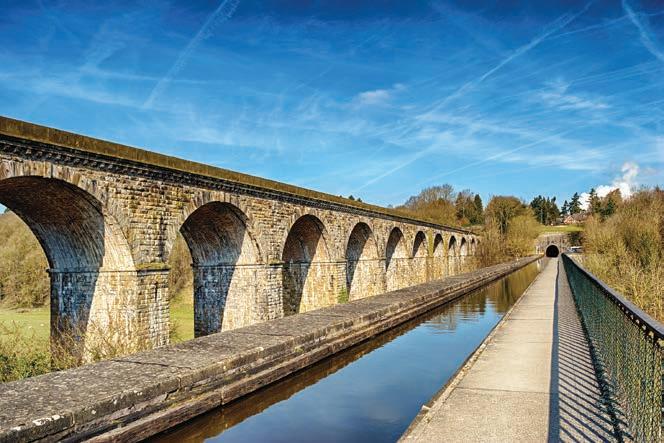
A Central arena, covered with sand. It could be set up with boulders or trees for some events, or even flooded to host mock naval battles.
B The hypogeum, which had tunnels, compartments and animal pens beneath the surface of the arena. The Romans used a complex system of pulleys, counterweights and ropes to bring scenery into the arena, as well as to raise the cages containing the animals for combat.
C Sails to give spectators protection from the sun andrain
D Gilded bronze shields supporting the sails
E Archways containing statues
F Facade made of a type of limestone called travertine
G Special box for the emperor
H Several levels of seating. Seats closer to the arena were more expensive. Behind wealthy citizens sat middle-class citizens. Next came slaves and foreigners, and finally, in the standing areas only, were the poor. Women were also in this top tier, separated from the poor by a row of columns. They sat on wooden bleachers.
I Public entrances where tickets were sold. These entrances had staircases giving access to the upper levels.
J Exits
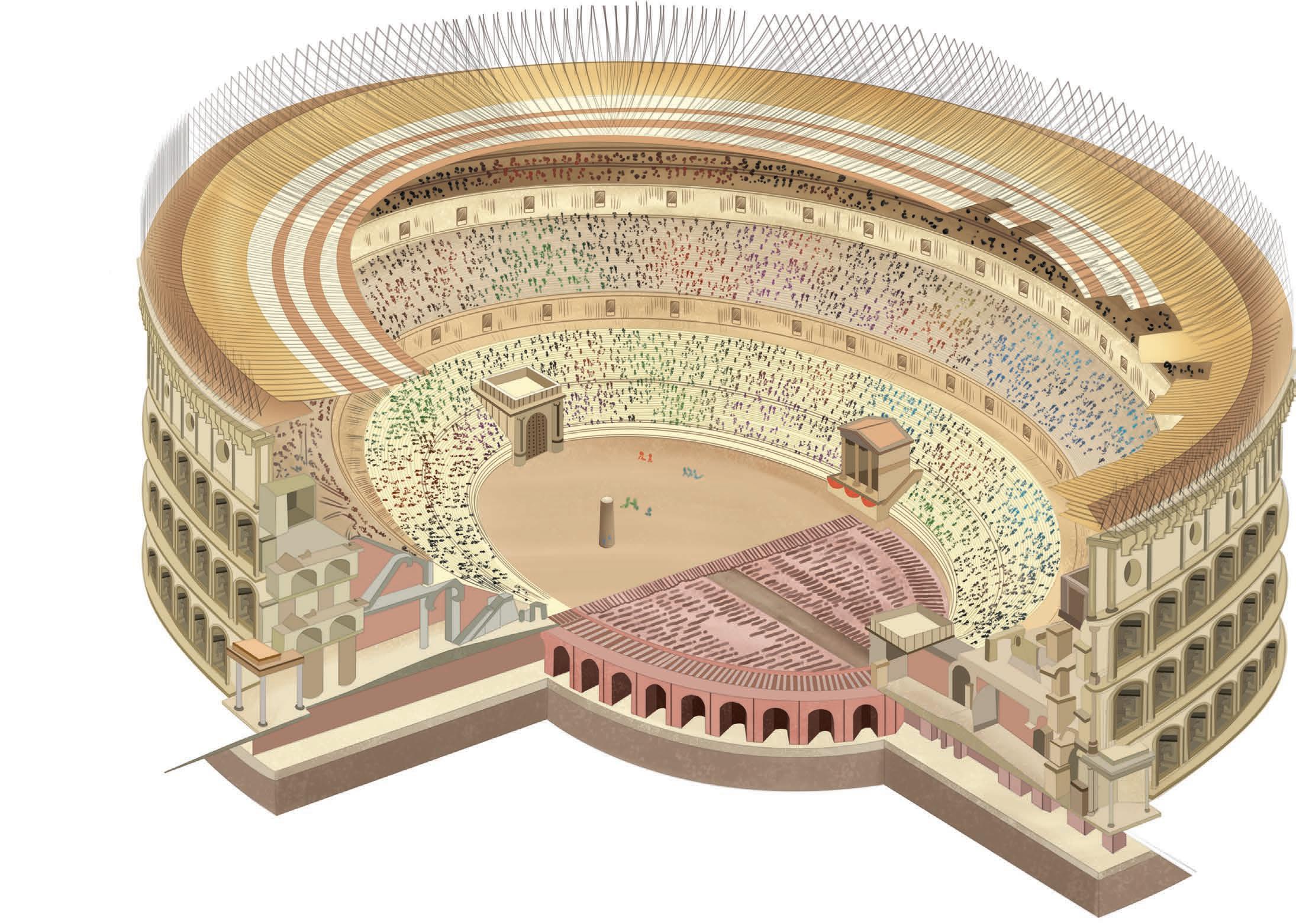

Source 10.4.20 A cross-section of the Colosseum in Rome ➜
Doctors in Rome usually trained in a kind of apprenticeship with an experienced doctor. Most of them were born outside Rome; many were Greek, and even more were very valuable slaves. Some of their ideas were incredibly important to our understanding of the human body today, and other ideas were rather strange.
Galen of Pergamon was born in Greece. He studied anatomy and physiology (the way in which bodies work) in Egypt and developed his skills by treating wounded gladiators. He performed surgery such as cataract removal, was the rst doctor to understand the difference between veins and arteries, and also understood that it was important to stay healthy by exercising, eating a balanced diet, having good hygiene and bathing. He even suggested that the brain, not the heart as ancient people originally thought, controlled the body. Galen was the doctor of several emperors and wrote hundreds of medical texts, some of which remained the standard medical reference text until the 1500s.
However, Roman doctors did not always get it right. Some recommended that epilepsy sufferers drink warm blood drawn from a slain gladiator as a treatment
for this illness. Pliny the Elder, a scholar and general (uncle of Pliny the Younger, who witnessed and recorded the eruption of Vesuvius), reported that ‘The blood of gladiators is drunk by epileptics as though it were the draught of life’. They also thought that cabbage was a kind of wonder drug that cured everything from headaches to digestive illnesses, and used dreams as a way of diagnosing illnesses.
Not everyone could afford medical care or was given it. For example, one of the skeletons found at Herculaneum, another village destroyed by the eruption of Vesuvius in 79 CE, had a number of different health problems that would have caused him a great deal of pain. He had what would have been very painful arthritis in his spine, shoulders and major leg joints. It was clear that he was poor or poorly cared for and had not eaten healthily all of his life because, although he would have been quite strong and muscular, his muscles had worn his bones at because he didn’t have enough calcium in his diet. His biggest problem would have been his teeth, though. They had rotted so badly that the infection had eaten away his upper jaw bone. Imagine how painful that would have been.

Source 10.4.21 A group of physicians in an image from the Vienna Dioscurides, a late 6th century Byzantine illustrated scienti c text. Galen is depicted top center emphasising his importance to scienti c history.
The Roman Empire had been created through the Roman military being able to invade and hold territory. The military was open to people from all backgrounds, and the lower classes could earn a regular wage and have a pension in the form of land at the end of their service. Land ownership gave them greater social status. Soldiers were also often used for building forts and roads. You can learn more about the Roman army in section 10.5.
A huge part of the empire was farmland. Farming and agriculture were very important to feed the large urban populations. Farming jobs were numerous and included working the land through planting, sowing, reaping and harvesting, but also included animal farming and operating mills and granaries. Most of the eld work was done by slaves because they were the cheapest form of labour. The majority of farming took place on large private estates called latifundia, which were owned by wealthy Romans who generally tended to live in town and hired managers to oversee their farms.
Religion was of great importance to the Romans, and there were various jobs
that were part of religious administration, including those of priests and priestesses. The Vestal Virgins were six female priests of the goddess Vesta chosen by the chief priest, who served at the temple for 30 years. They were responsible for maintaining the eternal sacred re of Vesta, which the Romans believed guaranteed the wellbeing of the state. When their service ended, they could marry and own property, which made them more independent than many other Roman women. You can read more about religion in section 10.6.
Augurs and haruspices were priests who interpreted the will of the gods and predicted the future through the study of the ight and entrails of birds. The Etruscan bronze model in Source 10.4.22 is a guide for the haruspicy priests for how to look at a sheep’s liver and predict the future. Each part of the map shows where the liver is connected to the chief Etruscan gods, Tinia, Uni and Minerva (later Jupiter, Juno and Minerva for the Romans). Tinia, for example, can be found top right in a section of possible malevolent or ‘bad’ readings. When looking at the liver, if there was a lesion or blemish on the liver that corresponded with this place on the map, it would be read as a bad omen. The Romans adopted this practice from the Etruscans and took omens very seriously.


Extensive trading in the empire led to a huge number of jobs requiring a high level of skill. Glass makers, tilers, metal workers, painters, builders, potters, jewellers, weavers, experts in roo ng and transport, shopkeepers, blacksmiths, bakers, millers, shermen, boat makers, rope makers and many more highly skilled jobs existed in various trades because of how diverse the economy was and how much trading the Romans took part in. Jobs for craftsmen and artists included sculptures and frescos, and also making weapons for soldiers. This kind of work usually ran in families, and the son of an artist or a designer would grow up to have the same profession.
The Roman baths were hugely popular and functioned as much more than a place to go to and get clean; they were central to a lot of socialising. At the baths, Romans met people, did business deals or hung out with their friends. There were a lot of less than glamorous jobs that existed to meet the needs of people attending the
baths. Various employees specialised in plucking armpit hairs, keeping the bathing facilities clean, making sure the water ran properly through all the different rooms in the bath houses. Others kept the sewers functioning or kept the heating rooms at the right temperature, which meant stoking res in a dark humid and cramped space under the oors to sustain the hot water in the baths above.
Other jobs you might not have wanted to do were connected to washing and dying fabrics and clothes, all done by the fuller. The prime cleaning agents for fabrics were urine or sulphur. The urine was good because of the ammonia in it, which would whiten fabrics and remove stains. Urine collection from the public toilets was therefore quite an important job. Once collected, the urine was used to soak the clothes in fairly large tanks at the fullers. Someone was needed to move the clothes around while they soaked. Sometimes this might be done by stirring the contents of the tank, but most of the time there was someone walking around in the tank in the liquid with the clothes and fabric.


Exploring ancient Roman work
1Describe why not many slaves were freed in ancient Rome.
2Describe what happened to slaves after they were freed.
3Recall what you have learnt about trade thus far. List three dot points that link the ideas that trade led to a huge number of different jobs and opportunities for different kinds of work in ancient Rome.
4 Work in pairs to research ‘The worst jobs in Rome.’
Each person in your pair chooses one job you would not like to do and researches more about that job. You must each choose a different job.
a Find out as many of the points below as you can about the jobs you are researching:
• Which people commonly did this job? Were they rich or poor, citizens or slaves?
• Describe the job in detail.
• Identify what kind of working hours might have been involved, and whether or not it was day or nightwork.
• Explain the health outcomes for people doing this job. Was their health at risk?
• Identify one other interesting fact about the job you are researching (this can be good or bad) and note down why you think this is interesting.
b Now discuss your findings with a partner. Compare and contrast the two different worst jobs. What is the same? What is different?
c Which job is worse? Rate each job out of 5 (5 being the worst and 1 being not so bad) and explain to your partner why you think the one you chose is worse.
Key concepts: empathy, perspectives
There was a lot of entertainment in the ancient Roman world, particularly in the bigger urban areas like Rome and Pompeii. Sophisticated entertainment such as the theatre and more violent forms of entertainment such as gladiator ghts were all immensely popular. Festivals and public games were held using the amphitheatres and the Circus Maximus,
HASS skills: questioning and researching, analysing
where sports like chariot racing and reenacting famous battles were common forms of entertainment. Gambling was also incredibly popular, especially at the horse races.
Public entertainment was common and was always paid for and hosted by a prominent individual, such as the emperor, or a rich senator looking for support, or a successful general who wanted to celebrate his victory.

Source 10.4.24
Video: Exploring a gladiator mosaic
Public plays, public executions, beast hunts and horse racing were favoured. Rome’s most famous amphitheatre, the Colosseum, could accommodate up to 50000 spectators for these kinds of ‘shows’. There are also accounts of the Colosseum being ooded to hold mock naval battles (called naumachiae) for the public to watch. All of these were massive public spectacles or shows and were very much an important part of Roman culture.
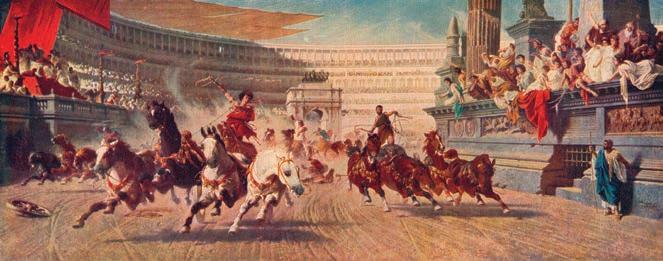
Source 10.4.25 An artist’s impression of a Roman chariot race, 1882. If you look carefully, you can see chariot wheels on the ground and a chariot crashing behind the leaders. Chariot racers usually worked in teams and each team had a big fan following. The reds and blues worn by the spectators show which racing teams they supported (and placed gambling bets on). ➜
Animal hunts allowed the Romans to indulge their fascination for exotic animals, many of which were captured to use in the amphitheatre’s animal hunts and battles.
Chariot races were the Roman version of car racing, involving a driver, a chariot, and multiple horses galloping around a looping racing track in the Circus Maximus. However, this was violent and bloody with no safety for the drivers or their horses. The small carriage only had room for one standing driver, leaving them fully exposed to the rough terrain. The erce race was notorious for death and injuries.
Wild animals were brought in from Africa or Asia to the games to be displayed for the audience. The larger and more ferocious the beasts were, the better the games. Many animals died on the way to Rome, but there are stories of zebra and giraffes making it to the arena to thrill Roman audiences.
Gladiator battles are the most famous of all Roman entertainment. These professional ghters were very rarely free men ghting for glory and riches; most were slaves forced to ght to the death. There was a range of different contests between gladiators, who ranged from lightly armed to heavily armed ghters. Different gladiators had different specialised skills and equipment. Their different weapons and armour were designed to make the contests between them more interesting for the crowd to watch.
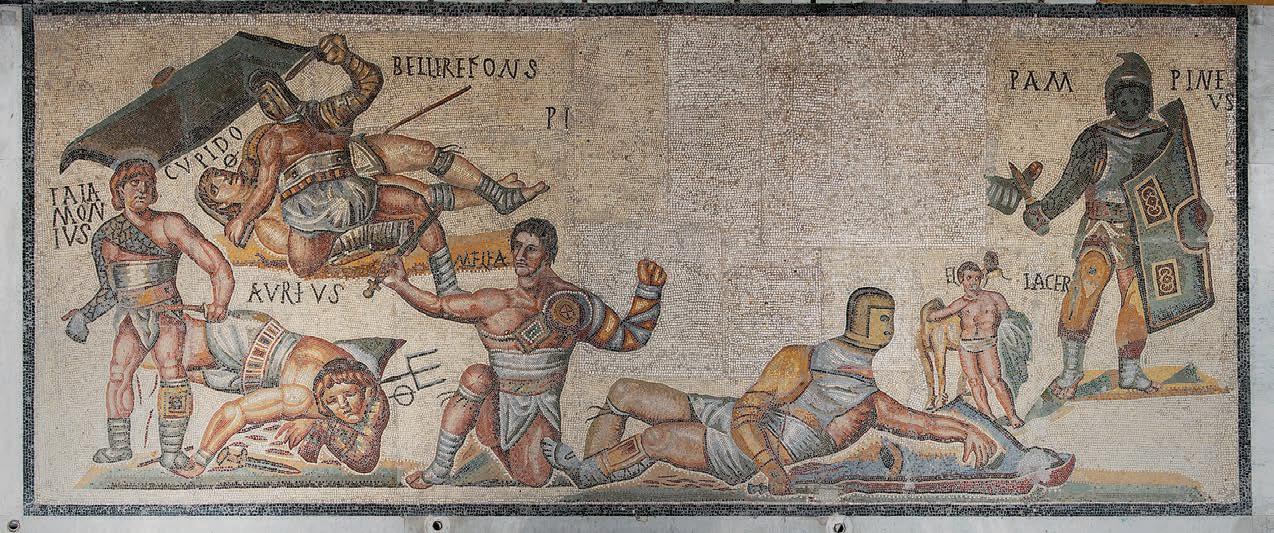
Wrestling and boxing were popular sports, as a tness activity as well as to build strength and impress others. There were no such things as boxing gloves; hands were wrapped in layers of cloth instead.
Board games were a favourite for poorer citizens, who would join in on a game in work breaks or after work. Many of these games used counters and dice, including a type of checkers, tic-tac-toe, and sometimes even games similar to chess.
Theatre was very popular. Performances of comedies and tragedies were common, with actors wearing different coloured masks and costumes to illustrate what character they were.
Bathing was a very social activity. Instead of private bathrooms with individuals bathing separately, bathing was a group activity. Large public baths were able to hold hundreds of people at once. Citizens attended to relax with their friends, gossip and do business deals while they scrubbed the dirt away.
Ball games have been around for a lot longer than you might think. Romans participated in a variety of handball, soccer, eld hockey, and even games similar to dodgeball. Though there have been changes to these games, many of the basic rules and structures have stayed the same.

For the wealthy citizens, exclusive dinner parties for friends and business associates were hugely popular. Dinners were used to show off the host’s wealth and style, with expensive and exotic dishes served in glamorous dining rooms. These dinners would take hours, with many courses of food and wine being served, and would be more like a lavish party today.
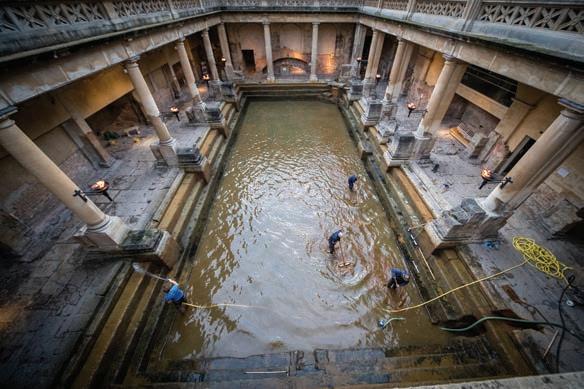
cleaning.
of the Great Bath is drained of 250000 litres of hot natural thermae spa water as part of a spring-cleaning operation, which has to be done regularly to prevent the 1.6-metre-deep baths from becoming murky and to stop algae from growing. The Roman Baths were built c.70 CE and take water from Britain's largest thermal spring. These baths are one of the best examples of a preserved Roman bath complex in Europe and are visited by over one million tourists a year.

End of section 10.4 review Go online to access the interactive section review and more!
10.4 Review questions Recall
1 Describe how the Romans made trading as easy as possible.
2 Identify three foods that the Romans ate that are the same as ours today and three foods that are different from ours today.
3 Identify who might live in an insulae and who might live in a domus
4 Explain why there was such a diverse range of jobs and work in ancient Rome.
5 Identify three different jobs slaves might do, and explain how some slaves had really good jobs.
6 Explain why farming was such an important job.
7 Choose one job you would not like to do in ancient Rome. Now explain why this job existed and why it was important.
8 Identify who paid for the really big public games and spectacles and explain why you think they did this.
9 Describe three different types of gladiators in ancient Rome and the equipment they used. Interpret
10 Why do you think popular entertainments in amphitheatres were so important throughout the Roman Empire?
11 Come back to the question asked at the beginning of this section again. After learning about all of the different aspects of everyday life, use your analysis skills to explain why you think the sources in this section are archaeological rather than written. Use examples from the sources to support your ideas.
12 Using at least four examples from this section:
a Identify what has stayed the same, and what has changed, since the time of ancient Rome.
b Explain why you think there has been continuity and change in the period since ancient Rome and now. (Hint: think about the legacy of Rome that was discussed at the beginning of this chapter.)
Argue
13 Explain what benefits people had, and what challenges people faced living in ancient Rome. Give examples, using different people or groups of people, in your answer.
Key concepts: empathy, perspectives, continuity and change, cause and effect
HASS skills: analysing, evaluating, communicating and reflecting
• How did the Romans build their military?
• What was Roman warfare like?
• Who did the Romans have conflict with?
• What weapons and weaponry did the Romans use?
The Roman army was arguably the longest surviving and most effective ghting force in military history. Without the army, Rome would not have conquered or been able to hold the territory it gained to build an empire that covered ve million square km. Control over the diverse and widespread territories that Rome had included in its empire was only possible because Rome could deploy such an effective and ef cient ghting force in the army.
The army went through many changes. Originally, only citizens who owned land could ght and were conscripted by the government in times of con ict. They went back to their regular jobs after the ghting nished. This kind of army is called a militia because it is not a permanent or professional ghting force.
During the 3rd and 2nd centuries BCE, the Romans found themselves seriously threatened by the people of Carthage in North Africa in a series of wars called the Punic Wars. In the Second Punic War (218–201 BCE), the Carthaginians were led by a bold and brilliant general named Hannibal.
Hannibal’s father, Hamilcar Barca, was also a famous Carthaginian general. After Rome’s victory in the First Punic War (264–241 BCE), it was clear that Rome wanted to control the entire region around the Mediterranean Sea, which would have included Carthage. At the time, Hispania was controlled by Carthage, so Hamilcar took his family and army to Hispania to begin preparations to defeat Rome. However, both Hamilcar and his successor Hasdrubal the Fair were both killed in battle, leaving Hannibal in charge. He was 26 years old.
conscripted being forced to join the army by the government to defend your country in a time of war. Conscription is something that has continued –Australian soldiers were last conscripted by the Australian Government in the 1960s for the Vietnam War.
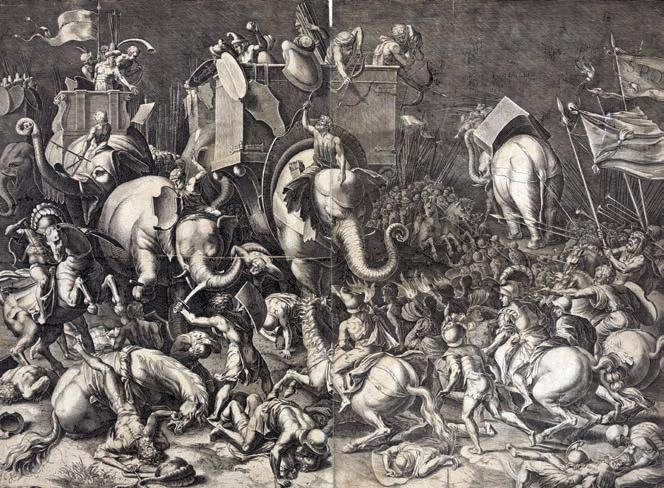
Hannibal attacked Saguntum, a city in eastern Hispania, and the Second Punic War began in 219 BCE. Hannibal decided to attack the Romans at home in Italy, while in the meantime the Romans made plans to invade Carthage. Hannibal’s journey to Italy and his assault on the Romans became one of history’s most daring marches. He led his forces through Spain over the Pyrenees Mountains, and across southern France. This is remarkable because his forces were said to have included 90000 soldiers, 12000 cavalry soldiers, and 40 elephants. Hannibal left detachments of men to guard the regions he conquered as he travelled. When they tried to cross the snowy Alps to enter Italy, many of the soldiers died because of the bitter cold weather, and as a result of falls from the narrow and icy mountain paths.
About half of the force that crossed the Alps reached Italy. Despite this loss of men, Hannibal defeated the Romans twice in quick succession. He campaigned across Italy until his biggest victory came when Hannibal and his troops crushed the Romans near the village of Cannae in south-eastern Italy. In this battle, the Carthaginians killed over 60000 Roman soldiers. This shocking defeat was forever remembered by the Romans as one of the greatest they ever suffered.
Hannibal continued to ght in Italy, but he was gradually losing territory. The Romans changed their tactics, and by avoiding major battles they drained the strength from Hannibal’s army through constant skirmishes. This turned the war in their favour.
Meanwhile, the Romans drove the Carthaginians out of Hispania and invaded their home in North Africa. This made Hannibal return home to help defend Carthage in 203 BCE . A year later, Hannibal and his troops were defeated by the Roman General Scipio at the Battle of Zama, which ended the war. In exchange for peace, Rome forced Carthage to give up Hispania and the Mediterranean islands it controlled. It took almost 50 more years of war for the Romans to actually take control of Hispania, but the Romans burned Carthage to the ground.
As recognition of his outstanding achievement in defeating Hannibal, Scipio was allowed to add the honorary title ‘Africanus’ to his name permanently so that everyone would know that he had defeated the Africans from Carthage, who had been the greatest enemy that Rome had faced until then. He is still known as Scipio Africanus.
After reading about Hannibal and Scipio Africanus, explain:
1Identify what caused the Carthaginians to go to Italy.
2Explain what caused the Roman army to change its tactics so that it could defeat the Carthaginians.
3Explain what effect the victory had on Rome.
Key concepts: cause and effect, continuity and change
HASS skills: communicating and reflecting, analysing
From about 300 BCE, Rome had four legions. These legions had been used to defeat Hannibal in the Second Punic War, but long decades of con ict between Rome, Carthage and then Spain led to a manpower shortage and change was needed.
Army general Gaius Marius got the soldiers to sign on for service for roughly 20 years, guaranteeing them a career. He also personally provided their pay, equipped them with standardised weapons and armour at his own expense, and he promised them a pension and land when their service was over. All of these new conditions made the soldiers loyal to him rather than the government. This caused all kinds of problems for the government later on when it had no armies of its own to defend against ambitious Roman generals like Sulla and Caesar, who used their loyal troops to attack Rome and take power from the government.
At the end of the Roman Republic and the beginning of Imperial Rome, the rst emperor, Augustus, reorganised the Roman army again, changing the length of service and creating a military treasury so that the government was responsible for paying the soldiers instead of the generals.
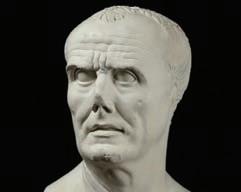
The army was a key part of the Roman Empire, and the emperors relied on its allegiance. Augustus prevented any other general from having complete command over any legions, and while other generals led armies in his name, he made sure that the legions all ultimately stayed under his command. Augustus also realised it was important for the emperor always to have the title of Commander (Imperator) and be seen as a soldier. Indeed, one of the emperor Nero’s failings was that he was a poor soldier and commander. Augustus established the imperial bodyguards, called the Praetorian Guard, a section of the army stationed in
Gaius Marius was an army general who became consul during the Roman Republic. Marius was the son of a man who, though Roman, lived 100 km south-east of Rome and did not come from a family that had a connection to the senate. Marius was therefore a novus homo (‘a new man’), because he had no ancestors or relatives who had been senators. Marius was incredibly popular. He was elected as consul seven times, which was more often than anyone had ever been elected consul before. When Rome faced invasion from its neighbours, Marius revolutionised the army, making it stronger and more ef cient than before. His most important changes were to allow men who had no property to enter the army, and to pay and equip the men himself. Before Marius, a man had to be a citizen with enough wealth before they were able to serve in a legion. Marius changed this, allowing any free man to serve. This increased the size of the army and meant that men were able to raise themselves up in the world by succeeding in the army and becoming wealthy.
Rome, initially tasked with protecting the emperor and his family.
The Praetorian Guard was involved in several signi cant historical events, including the assassination of the emperor Caligula and the installation of Claudius as emperor. The importance of the army to the emperor is obvious from a coin by the emperor Vitellius, which says that he is in power in ‘agreement with the army’.


The majority of soldiers in the Roman army were Roman citizens. They signed up to ght for anywhere between 16 and 25 years. The average service was for 20 years, and at the end of this the soldiers were generally awarded land or a large sum of money. In this way, the army was made up of trained and experienced soldiers. It also ensured that land went to loyal soldiers who could be recalled if they were needed.
There were also non-citizen soldiers called auxiliaries. They joined for 25 years and were awarded Roman citizenship at the end of this time. Roman citizenship was very valuable because it came with many privileges.
gladius (sword), hasta (spear), a javelin called a pilum, and bows and arrows. The soldiers were trained to ght with their weapons and practised regularly.
The soldiers wore helmets and armour for body protection. Up until Gaius Marius’s reforms, legionaries bought their own equipment.
The army was divided up into legions of around 5400 soldiers each. Legions were led by a senior of cer who was usually a senator or a governor. Legions were made up of 10 groups of soldiers called cohorts. Cohorts were then further divided into groups of 80 men called centuries. The of cers, or leaders, of each century were called centurions.
The Roman soldiers used a variety of weapons, including a pugio (dagger),
By the late republican period, all legionaries carried a gladius, two pila (spears with detachable heads) and a large rectangular shield called the scutum, which had rounded corners. Cohorts had different emblems on their shields, and each soldier would inscribe his name, cohort and century on the back (much like the ‘dog tag’ worn by soldiers today), and they all wore chainmail.
Larger weapons, such as the ballista (large crossbow) and the onager (catapult), were used in bigger battles.

When the army was not ghting, it was training. Route marches might take place several times a month, and manoeuvres would be practised. However, there were civilian duties too. Bridge and road building were carried out, hospitals were staffed, and soldiers worked the kilns, fetched fuel and baked bread while in camp. The Vindolanda writing tablets from Britain are a brilliant insight into life at a Roman camp and have personal letters and camp accounts showing how orderly the army was while the soldiers were in camp. However, the whole legion might not be in camp at the same time; sometimes troops were divided across a province, acting as policemen or guards to the Roman governor.
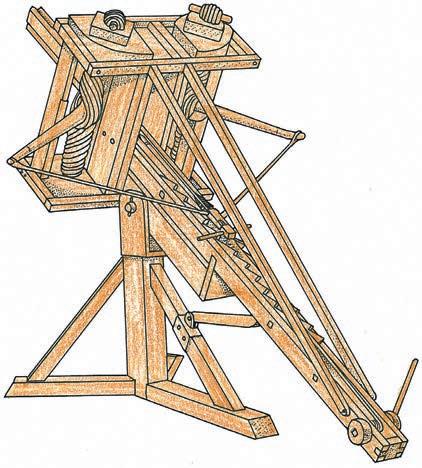
Source 10.5.5 A heavy ballista. This was one of the most powerful pieces of Roman artillery used to attack enemy defences, especially useful in siege warfare. It was sometimes mounted for defence on fortress towers. The ballista was a kind of heavy crossbow about 1.5 metres wide, and could accurately project missiles (arrows, stone balls, stones, beams with iron), with an average weight from 30 to 100 kg over a distance of 200–400 metres. Eight people were needed to use the ballista. The soldiers working on the ballista were called ballistarii
The Romans became excellent at siegeworks. Julius Caesar took almost 10 years to conquer Gaul (modern France). He used a combination of ruthless executions, intense battles and negotiation to nally subdue Gaul and claim it for Rome. His most worthy opponent was Vercingetorix, leader of the Arverni Tribe, who was a very good general and had been trained in Roman military strategy and tactics.
At the battle of Alesia (a city in eastern Gaul) in 52 BCE, the Romans carried out a military blockade where Vercingetorix and his army had regrouped.
Vindolanda writing tablets a set of wooden writing tablets from the Roman fort of Vindolanda in northern England. The tablets are thin slices of wood around the size of postcards written on in ink by the soldiers and officers at the fort. Most of the tablets date to around 100 CE.

Source 10.5.6 Weapons and shields. Roman legionary soldiers carrying their shield, the scutum, a pilum and a short sword. This is a drawing representing the carving on the base of the Antonius Pius column in Rome, Italy, made by the emperor to celebrate his successes. Each soldier also wears the famous segmented armour the lorica segmentata.
Caesar directed his troops to build one of the most extensive siegeworks in history to keep the defenders in and potential reinforcements out. These siegeworks have been excavated by archaeologists. A reconstruction of them is shown in Source 10.5.7.
The town was on top of a hill with rivers on either side, and the Gauls had dug trenches and erected a stone wall around the settlement. Caesar decided that Alesia could only be taken by siege, so ordered his men to encircle the town with two walls spanning approximately 11 Roman

miles (16.7 km) that included 23 smaller forts (redoubts) manned by sentinels and night watches. If the Gauls wanted to get in or out, they would have to cross a eld of wood blocks with iron hooks xed in them, a eld of sharpened stakes in pits, a barricade of impenetrable arti cial underwood, two trenches ( lled with water), and a palisade with watch towers.
Vercingetorix’s eventual surrender was the nal major military engagement of the Gallic Wars, and secured Roman control over Gaul. This was also an enormous success for Caesar.
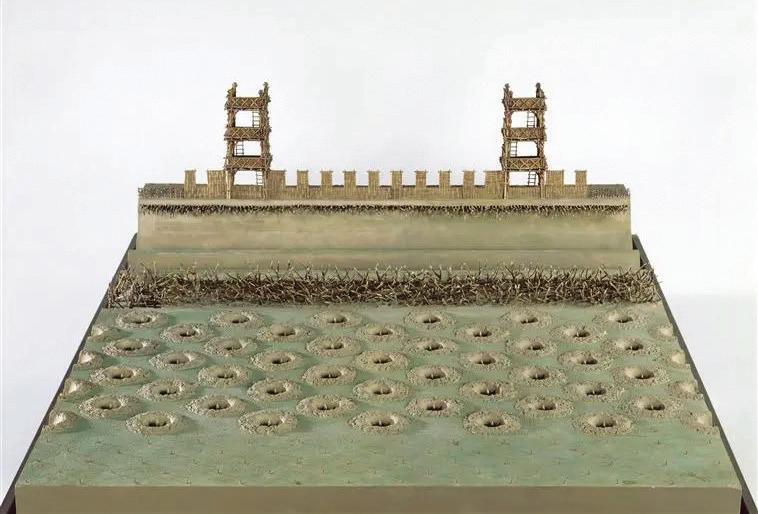
Source 10.5.8
of the siegeworks. You can see walls, watchtowers and trenches behind the barricade of brushwood and the pits full of sharpened stakes.
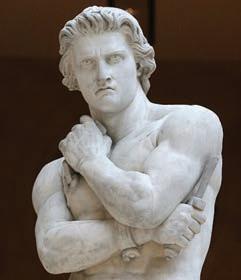
Spartacus was a slave and a gladiator. He was originally from Thrace (in Greece) and had at one time trained with the Roman army. When he became a slave, his military training made him a good gladiator. However, in 73 BCE he escaped from gladiatorial school along with 70 other gladiators. They hid and camped near Mount Vesuvius and then travelled north, trying to escape to freedom. As they travelled, their group grew in size until Spartacus was commanding an army of 100000 rebel slaves. They fought and won two battles against the Roman army and got so close to Rome at one time that the Roman government, the senate, became very worried about the threat from Spartacus’s forces and appointed a number of generals with special powers to defeat this formidable slave army.
Spartacus and the gladiators attacked lots of smaller towns and settlements as they moved throughout Italy. Many of Spartacus’s men wanted to take revenge on the Romans who had made them slaves. At one point, they were close to the Alps in the north but, although Spartacus wanted to leave Italy, his men didn’t agree. Eventually, they were stopped by a military general called Crassus. Crassus defeated Spartacus’s army with great dif culty and help from another general called Pompey the Great. Spartacus was killed in this battle. Afterwards, as punishment for their actions, Crassus cruci ed 6000 of the rebel slaves alongside the main road into Rome as a warning to all the other slaves about what would happen if they rose up against their Roman masters.
Most historians agree that Spartacus was not trying to make a political point with his actions – he wanted to escape from life as a slave and a gladiator and knew he would have to ght for his freedom. However, many have come to see Spartacus as a revolutionary hero, who challenged the power of Rome and gave hope to other slaves. These are very different perspectives about Spartacus, and this disagreement makes him an individual whose in uence and signi cance have been argued about, or contested.
Empathy is being able to understand the points of view of other people. For historians, this is a key concept. It is an interesting concept because it also means considering how differently people view things, and how they experience things differently. We all know that everyone interprets and understands things slightly differently from each other. For historians, this makes understanding the past a challenge because witnesses and people who were involved in an event and people who study the event all have different points of view about the event. For example, a freak storm might blow the tin roof off a building. Everyone who was there will agree that the roof blew off. But some of them will argue that the way the roof flew through the sky afterwards was the most amazing part, whereas others will emphasise the tremendous noise created as the roof peeled away from the walls. However, people who write about it and study it later (historians) might focus on the cause of the storm, or the damage the roof caused when it landed on the road, as the most important aspects of the whole event.
None of these versions of what happened are wrong. They are all just different perspectives of the same event. When there are different perspectives of something that has occurred, this can sometimes lead to opposing views and disagreement. As historians, this is when we can observe that different views are contestable (disputed or subject to question). Our job as historians is to work with these different ‘contestable’ versions of an incident or event and decide what we can learn about the whole event, even when the information we have is not in agreement.
When we study history, it is our job to try to understand as many perspectives or points of view as possible. This is how we use the key historical concepts of perspective and empathy. Both help us to decide what is reliable evidence about the past. But it is also how we explore the concept of contestability
Choose two different people from this chapter and write a diary entry for each of them for the same event, but from different points of view. For example, you might decide to write about the battle experiences of a slave in Spartacus’s army and a soldier in the Roman army fighting against the slave army. Or you might write about organising a big dinner party in an upper-class senator’s home from the point of view of the wife of the senator and from the point of view of a slave who is owned by the family. What you are doing when you write these diary entries is using your empathy to examine different perspectives. These perspectives might contest with each other. All of these are key historical concepts.
Key concepts: perspectives, empathy, contestability
HASS skills: analysing, communicating and reflecting
Go
End of section 10.5 review
10.5 Review questions
Recall
1 Identify who was allowed to fight in the army originally, in the early years of Rome. Identify how the government recruited the soldiers in its militia.
2 Name two different early conflicts that Rome fought in.
3 How long did a soldier sign up to serve in the army for?
4 Describe what the army would do when it was not fighting.
5 Describe the structure of the legion.
6 Describe how Caesar used siegeworks to defeat Vercingetorix.
Interpret
7 Explain why the way Marius recruited and paid the solders was such a big change and explain why this caused problems for the government.
8Explain why the Romans decided to make an example of the slaves in Spartacus’s army who were captured alive after they were defeated in battle.
Argue
9 Explain why the army was so important to the emperor. In your answer, think about what you learnt about how vast the empire became.
10 Practise your understanding of perspective by arguing for or against the following statement:
The Roman army was the best in the world.
To do this, follow the steps below:
• Collect your ideas in a T chart.
• Put all the ideas you have chosen into at least two paragraphs: the first explaining the strengths and weaknesses of the Roman army, and the second stating how the evidence in your first paragraph supports your perspective that it was or was not the best army.
Key concepts: significance, contestability HASS skills: analysing, evaluating, communicating and reflecting
• What were the significant beliefs and values of the people of Rome?
Religion in ancient Rome had a very important place in the daily lives of the people. Like the Egyptians and the Greeks, the Romans had small shrines or altars in their homes to the household gods, the Lares, who would make sure the family stayed happy, healthy and safe. All of their communities featured large and small temples, and the festivals and holidays for the gods were frequent and included very public and private celebrations. Romans also used religion as part of their decisionmaking processes. The ancient Romans were polytheistic, meaning they believed there were many gods who had different roles to play in determining events in the world.
The ancient Romans generally believed that the actions of the gods could control the fate of the people. Many emperors held great celebrations and events at places such as the Colosseum. They performed sacri ces to try to keep the gods happy and supportive of everything the Romans did. Over time, the role of the emperor became partly a religious one. He was chief priest during his lifetime and as such had an important set of responsibilities that connected him to the gods and gave him control over such things as the calendar because it revolved around important religious events. He could advise the elected of cials and he interpreted omens. It was also believed that some rulers would become gods when they died, such as Julius Caesar and his adopted son Augustus, the rst emperor.
Many temples were built to worship the gods across the Roman Empire. People would leave offerings to particular gods and ask for help in their lives. For example, a person might leave an offering to Apollo, god of healing, if they were unwell. But if they were preparing for battle, they might pray to Mars, god of war. People also worshipped many gods within their homes and set up shrines for their favourite gods alongside their shrine to the Lares.
temples places for worshipping gods. In ancient Rome, a temple would have an altar, where animals were sacrificed. hearth the central fireplace in a home

The Vestal Virgins were priestesses of the goddess Vesta, goddess of the hearth and protector of the family. The Vestal Virgins were selected as young girls to become priestesses by the chief priest and dedicated 30 years of their lives to their duty, which was to ensure that the eternal ame of Rome, housed in the Temple of Vesta on the Palatine Hill, continued to burn. If the ame went out, it was believed to be a sign that Rome would be destroyed. If one of the priestesses was discovered to have let the ame go out, she was seen to have failed in her duty. The punishment for this was to be buried alive. Because the Vestal Virgins were considered to be sacred women, to kill one was a crime. Therefore, they were buried alive so that it was the earth that killed them, not an individual person.
The ancient Romans had a lot of ideas and traditions that they believed would help them in times of trouble or would help them prevent trouble. Therefore, before they did anything really important, the Romans would try to understand the will of the gods through interpreting omens.
One way to do this was by taking auguries. Auguries were the interpreting of fortunes by looking at birds. Certain patterns in the movement and ight of birds were thought to be good and bad omens. An augur would analyse the ight of birds to determine if something was going to be good or bad. If someone was starting a new business, going on a trip, or trying to decide whether to attack the enemy, they would rst consult the augur
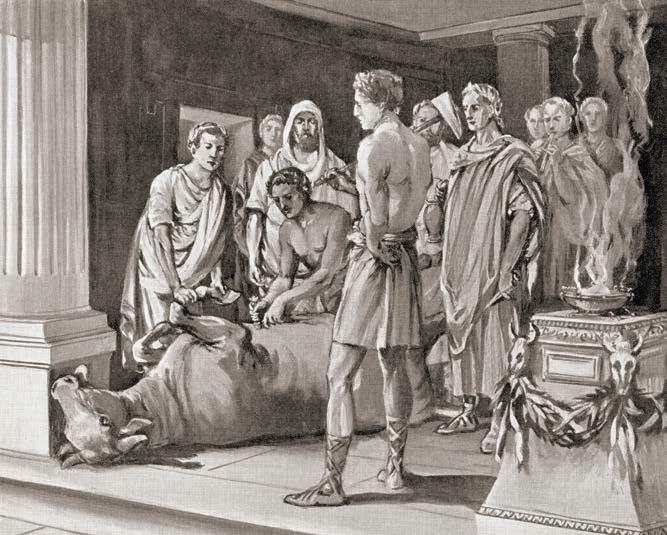
Another way Romans would take omens was through haruspices. Haruspices are omens taken from the entrails of sacri ced animals. As you learnt in the ‘work’ section, the haruspicy priest would look at the intestines or the livers of animals and predict the future.
No official state business was ever held without taking the omens and auspices. Not everyone listened to the advice given by the priests, but generally the Romans avoided bad omens where they could for public and private business. Many Romans also wore amulets and lucky charms to prevent bad things happening. Important things such as marriages were planned for certain days and months to prevent them from being overshadowed by bad omens.


A famous example of someone who did not tend to pay much attention to omens is Julius Caesar. He is said to have fallen on his face when arriving in Africa and the soldiers feared this terrible omen meant their upcoming campaign would fail. In response to their fear, he grabbed hold of the sand and said, ‘Africa, I have tight hold of you’, turning the fall into a good omen. However, according to the ancient source Plutarch, Caesar had plenty of warning about when he would die. He ignored two warnings from the priest to stay at home on the day of his murder, the Ides of March. There were also strange birds in the forum, a slave’s hand burst into flames in his home but the slave was not harmed, and his wife had a terrible dream the night before. Caesar ignored the warnings and omens and went to the senate, where he was murdered by a large group of his friends and colleagues. Perhaps he should have been more careful on that day!
The Sibylline Books were also very important to the Romans. These were written in Greek and contained a selection of omens and predictions. They were said to have been bought by the rst Roman king from an old Greek woman who was (perhaps) an oracle. These books were so important that 10 people, ve patricians and ve plebeians, looked after them. Their job was to keep the books safe and hidden. This was eventually expanded to 15 people, plus two Greek interpreters.
The books were consulted during any time that something looked bad, or when something unexpected happened, such as a comet appearing in the sky. Plagues, famines, res, oods or invasions were all reasons for the Romans to consult the books. The books contained advice about what to do, or what rites to perform to please the gods so that they could prevent bad fortunes from befalling Rome.

The beliefs held by the ancient Romans about what happened when a person died tended to vary widely. One thing that was
universally believed was that there was reward in the afterlife for good people, who either went to the Elysian Fields or the Plains of Asphodel, and that the punishment for the wicked was to go to a dark and scary place, but that they could earn their way out for good behaviour. The ancient Romans had speci c practices for dealing with the body of a loved one. The body of the dead person would generally be laid out so that their friends and family could visit and view the body. This would take place for about seven days.
The most common ways in which bodies of dead Romans were disposed of was by cremation. But, over time, some of these religious practices changed. The people instead began to have their bodies buried in the earth or in very large tombs. Ancient Roman laws generally made it illegal to bury a person’s body or ashes inside the city. This meant that Roman tombs and cemeteries were always outside the city walls; bodies were often buried in tombs and monuments alongside the roads into Rome and Roman cities. You can still see the large tombs built alongside the main road into Rome, the ancient Via Appia, if you visit there today.
oracle a person or thing considered to provide insight, wise counsel or prophetic predictions, most notably including precognition of the future
cremation to dispose of a dead body by burning it to ashes


King of the gods
•God of sky and thunder
• Patron god of Rome

•God of fresh water and the sea, earthquakes, hurricanes and horses
•Often depicted with his trident
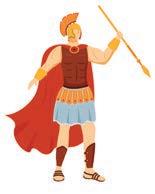
•God of war, guardian of agriculture
•The embodiment of aggression and what was considered manliness
•Father of Romulus
•God of music, healing, light and truth
•Twin brother of Diana

•God of fire, volcanoes, metalwork and the forge
•Patron god of Rome

•God of translators and interpreters, trade and travel
•Messenger of the gods
Source 10.6.4 Important gods of ancient Rome ➜
patron someone who supports others with money, gifts or favours. A patron god of a place was seen to support that place with divine favour.
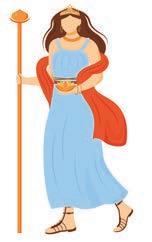
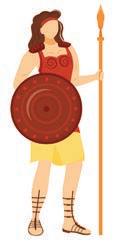
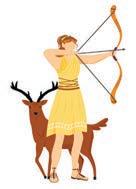
Juno Ceres
Queen of the gods
•Wife and sister of Jupiter
•Protector of Rome’s women
•Patron goddess of Rome
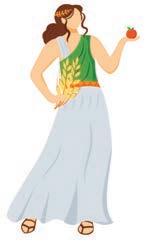
•Goddess of agriculture and harvests
•Protector of farmers, pastoralists and plebeians
Minerva Venus
•Goddess of wisdom, arts, trade and strategy
•Born from the head of Jupiter – she leapt out of his head, fully grown and wearing armour!

•Mother of the Roman people
•Goddess of love, beauty, fertility, sex anddesire
Diana Vesta
•Twin sister of Apollo
•Goddess of the hunt, the moon and birth
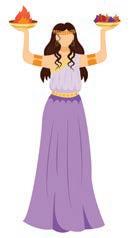
Source 10.6.5 Important goddesses of ancient Rome ➜
•The sacred fire of the Vestal Virgins
•Goddess of hearth, home and family
Check your understanding
Investigate how the Romans adopted and adapted gods and religious practices from other societies.
Explain the connections between Roman religion and other religions. For each of the gods and goddesses below, list whether they:
a. are synchronised with, similar to or unchanged from another religion
b. have Etruscan or Greek influence.
• Jupiter
• Apollo
• Pluto
• Janus
• Juno
• Mars
• Minerva
• Neptune
Key concepts: significance
• Saturn
• Venus
• Vesta
HASS skills: analysing
In ancient Rome, people lived their lives by following tradition and customs. In particular, there was a core set of values that people tried to follow in order to live well.
Look at the following list of values and rank them in order of how important you think they are. Share your ranking with a partner.
The values are known by their Latin names:
• Fides – loyalty and trustworthiness, which were considered to be an important part of business relationships and the law.
• Pietas – piety and religious devotion. In order to uphold the value of pietas, people had to conduct all the proper rituals and sacrifices to the gods. They also had to always act morally and with good intent.
• Gravitas – self-discipline and composure. People who achieved gravitas were in control of their emotions and behaviours, and faced problems in a calm manner. Gravitas also referred to someone who was considered wise and was respected.
• Virtus – the quality of manliness (‘vir’ means ‘man’). This virtue changed in meaning, depending on what was thought of as manly. For most ancient Romans, virtus meant someone who could act rationally, who was a good fighter and a good leader of his family.
• Dignitas – the ultimate quality to achieve, if someone was able to uphold all the other values at once, they achieved dignitas or honour. It was about being viewed by others as someone worthy and important.
Key concepts: significance
HASS skills: communicating and reflecting, analysing, evaluating

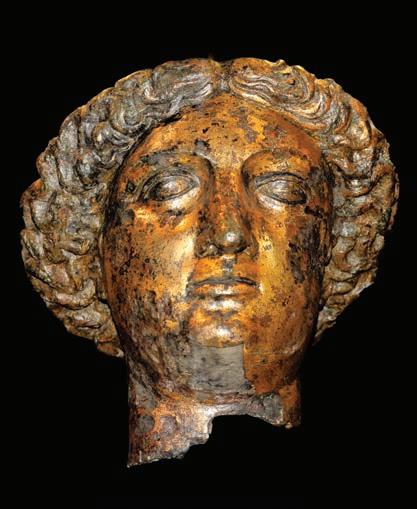
The ancient Romans did not just trade goods with their neighbours, they also adopted some of their neighbours’ religious beliefs and practices. The ancient Romans adopted and adapted from others what they felt would improve their empire or would make their people happier. Much of this was, at its core, a recognition of the importance of the different ideas, values and attitudes of the people who lived in the various parts of the empire – but only as long as Rome retained control over the whole lot, of course.
Myths often appear as simple stories lled with brave heroes, maidens in distress, and all-powerful gods. But there is much more to them than this. The gods of the Romans were thought to be like people. They had many human qualities – they love, hate, are jealous and caring – and because of this, Romans were able to recognise their own lives in these stories and understand their relationship with the world as well as their connection to the gods. The moral lesson learnt from the stories in the myths was that Romans needed to face their destiny with strength, determination and nobility. In this way, myths helped individuals cope with the challenges of their lives.
mythology a story, often with some kind of moral message that is part of a religion, that describes a heroic deed or the origin of something
You may have noticed when looking at the list of gods that they are very similar to the ancient Greek gods and goddesses. This is because the ancient Romans adopted ancient Greek religious beliefs in many ways. They merged Greek beliefs with their own when they imagined their gods. Once of their most important goddesses, Minerva, was an Etruscan goddess originally. When Rome invaded Britain, the Celts had their own goddess, called Sulis. She reminded the Romans of their goddess Minerva and so they created ‘Sulis-Minerva’. Many cults grew up in Rome so that people could still carry out their own religious practices and beliefs. The cults of Cybele (from Asia Minor – modern Türkiye) and Isis (from Egypt) were both very popular.
Many myths told stories about being brave – for instance, Lucretia, who sacri ced herself to overthrow the king; or Scaevola, who put his hand into the re to prove his loyalty. Other myths are connected to the gods, and therefore to religion, very centrally in Roman culture –for instance, the story of how the bee got its stinger from Jupiter to protect its honey; or the story of Orpheus and Eurydice, which is also a Greek myth, about Orpheus trying to reclaim his wife from death only to fail when he didn’t trust the advice of Pluto, the god of the underworld, about how to get Eurydice home.
Perhaps the most famous Roman myths are connected to the foundation of Rome. The Romans dated the beginning of Rome to 21 April 753 BCE. The Romans dated their years and calendars by how long it had been since this date. However, what really occurred on that day is something of a mystery.
Roman stories of Rome’s origins include a lot of mythology and the involvement of gods. Although the myths should not be understood as historical fact, there is some historical ‘truth’ in the myths.
Studying myths is fun and it can tell historians a great deal about what the people of a society thought, believed and valued. It is also interesting that much of what was included in the myths does have a connection to historical events in some way.
One story is that Rome was founded by Aeneas, son of the goddess Venus, one of the few Trojans who was not killed in the Trojan War ghting against the ancient Greeks. Aeneas ed Troy as it was invaded and burned to the ground. He sailed all the way to Italy and created a new city there. This myth links the foundation of Rome to the important and very ancient Greek story of the Trojan War (c.1100 BCE) and to the goddess Venus.
Another story is that Rome was founded by Romulus. Romulus and Remus were twin sons of a princess named Rhea Silva. Their father was said to be the Roman god of war, Mars, although in another version the king was their father. In the land where they lived,
the king worried that the boys might one day try to overthrow him.
Because of his fear, the king arranged to have Romulus and Remus placed in a basket and left by the River Tiber to die. But the sons were saved. First, they were nursed by a she-wolf (a female wolf) and then they were found by a shepherd, who took them home to be raised as his own children.
The boys grew up and were natural leaders. They killed their father, the king, just as the king had feared would happen, after he took Remus as a prisoner. Romulus and Remus decided to create a new city together on the banks of the Tiber, but they argued and in anger, Romulus fought Remus and killed him. Romulus then went on to create the city of Rome alone and named the city after himself.
Romulus is said to have founded the city on 21 April 753 BCE. He made himself king of the city and established a group of leading citizens of 100 noblemen. These men would become the patricians of Rome.
patrician wealthy upper-class person in ancient Rome who often had a political role in society
Activity 10.8
Using historical sources as evidence
The scene in Source 10.6.8 is carved onto an altar, which was used to worship the gods Mars and Venus. In the bottom left-hand corner, you can see Romulus and Remus being suckled by the she-wolf. The children have been discovered by the shepherds (shown behind the children), who are carrying shepherd’s crooks (curved sticks), which were used to herd sheep. The man lying in the bottom right-hand corner represents the River Tiber, where the baby boys were left.


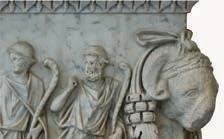
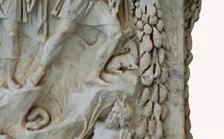

Go online to access the interactive section review and more!
1 Research what an altar is and what it was used for in ancient Rome. Note down your answer.
2 Research what an altar is used for today. Has there been a change since Roman times, or continuity in the use of altars?
3 Describe everything you can see in the scene in Source 10.6.8. What do you think is the most important part of the carving? Why?
4 Why do you think that this scene was carved on an altar used to worship the gods Mars and Venus? What is the connection of these gods to the story of Romulus and Remus? Explain what you think the Romans were trying to say about themselves through this link to the founding of their culture and the gods Mars and Venus.
Key concepts: sources, evidence, continuity and change, significance, perspectives
End of section 10.6 review
HASS skills: questioning and researching, communicating and reflecting
10.6 Review questions Recall
1 Why was religion so important in everyday life to the Romans?
2 What did people believe happened to emperors after they died?
3 What was a Vestal Virgin?
4 Which god was considered king of the gods?
5 Explain why temples were built throughout the Roman Empire.
6 Where did Romans bury the bodies or ashes of the dead? Interpret
7Explain what the ancient Roman people valued most. Try to summarise the kind of person a Roman was meant to be.
8Explain why the Romans worshipped so many gods.
9Explain what role myths played in the life of ancient Romans. Argue
10 Use your evaluation skills to argue in what ways ancient Roman values and beliefs were similar to ours today, and in what ways they were different.
Key concepts: continuity and change, significance, empathy
HASS skills: communicating and reflecting, analysing
• Who should we consider as significant individuals in ancient Roman history and why?
JULIUS CAESAR (100–44 BCE)
Julius Caesar is one of the most famous and well-known ancient Romans. He was a famous politician, general and writer. He was celebrated for the way he led the legions in Gaul, now modern-day France, and during the years that he was involved in a civil war against his enemies in Rome. He was also remembered for how he extended the empire as far as the English Channel. He was the rst Roman to visit the United Kingdom. One way that Caesar made himself famous was by writing accounts of his own military campaigns and victories. He also became the lover of the most powerful woman in Egypt, Queen Cleopatra, with whom he had a son. Caesar was eventually declared dictator of Rome for life. But many Romans believed that, as a dictator, he held too much power and did not listen to his political opponents. Due to Caesar’s power and in uence, many high-ranking wealthy Romans decided to put an end to his leadership. On 15 March 44 BCE, they killed Caesar by stabbing him to death in the Senate House. Julius Caesar’s death was described by the author Plutarch, in his biography Life of Caesar 66.4–14:
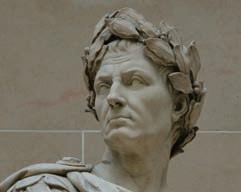
When, after sitting down, Caesar continued to reject the requests and started to grow angry with one or another … Tilius grasped his toga with both hands and pulled it down from his neck – the signal for the attack. It was Casca who gave the first blow with his dagger, in the neck, a wound which was neither mortal or even deep, probably because he was nervous at the beginning of such a bold venture, and Caesar, as he turned, was therefore able to grab the knife and hold onto it … All of those who had prepared themselves for murder produced their naked daggers, and Caesar was encompassed by them all, wherever he turned confronting blows and dagger aimed at his face and eyes, driven here and there like a wild beast and entangled in the hands of them all – for they all had to participate in the sacrifice and taste the blood … It is said that he received twenty-three [knife wounds], and many of the conspirators were wounded by each other as they tried to direct so many blows into one body.
Source 10.7.1 Plutarch, Life of Caesar, adapted in M Dillon and L Garland, Ancient Rome: From Early Republic to the Assassination of Julius Caesar, 2005
Did you know that our current calendar is adapted from one created by Julius Caesar?
Different societies in the ancient world dated time differently. For example, the ancient Egyptians, during the New Kingdom period, had three seasons that revolved around the flooding of the Nile, and each of their weeks lasted 10 days. The way they noted the passing of the years was also very different because they dated them by the reign of the pharaohs and began again at year one for each new ruler.
In the modern world, time is divided into seconds, minutes, hours, weeks, days, months and years. In Australia, we follow the Gregorian calendar, named after Pope Gregory XIII, who introduced it in 1582. This calendar is adapted from the Julian calendar implemented by the famous Roman, Julius Caesar.
Julius Caesar was aware that the moon and sun did not move across the sky at the same pace as each other, which meant that the Romans’ calendars continually got out of whack because some of their events were based on the lunar calendar and other events were based on the solar calendar. For example, a mid-winter festival was sometimes a month late. He also got tired of the solution handed to the Romans by the Greeks, which was to put an extra month in every two to three years to get it all back on track. So, Caesar hired a mathematician from Egypt to work out a permanent solution, and because of this we have a calendar that includes a leap year.
The Gregorian calendar, adapted from Caesar’s calendar, is the most widely used calendar today, enabling international communication and trade. In this calendar, a year of 365 days is divided into 12 months, and each month has between 28 and 31 days. Every four years there is a leap year, which adds an extra day to February to account for the fact that a full revolution around the sun takes 365.2422 days (so, slightly more than an even 365 days). If an extra day was not added every four years, the calendar would not match Earth’s orbit around the sun.
The Gregorian calendar is not the only calendar used today. Islamic, Buddhist and Jewish calendars are still used around the world to determine key religious holidays in these religions. As you saw in Chapter 7, the First Peoples in Australia view time as continuous rather than as a line of one event after another.
Marcus Tullius Cicero was, like Marius, a novus homo with no noble ancestors. He was a lawyer known for his brilliant public speaking and debate skills. He lived during the end of the Roman Republic, as Julius Caesar fought against other powerful commanders for the right to rule on his own. Cicero supported the idea of Rome remaining a republic and was voted as consul for one year in 63 BCE. However, Cicero was unable to prevent the dictatorship of Julius Caesar, and he was proscribed, captured and killed after he insulted Mark Antony. Mark Antony had ordered his execution after Cicero publicly humiliated Antony in a number of speeches called ‘The Philippics’, which survive today. Antony had Cicero’s head and hands displayed in the forum, and Antony’s wife is said to have pierced Cicero’s tongue with her hairpin. But Cicero is best known for his writing. He wrote many letters in his lifetime and over 900 of these letters survived. This means they were copied and kept, instead of lost over time as many other written works were. Cicero wrote discussions on all sorts of topics that interested him, from the nature of government to the best way to speak publicly. Cicero’s writing, like archaeological evidence, provides historians with important information about what life, and especially what politics, was like in ancient Rome.
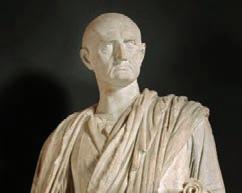
AUGUSTUS (27 BCE to 14 CE)
Augustus was the adopted son and great-nephew of Julius Caesar. After Caesar’s death, he struggled for power and was involved in civil war with others who tried to seize control of Rome, including Cleopatra and her husband Mark Antony. Ultimately, Augustus won and was made consul initially, and then emperor, by the senate. This meant the end of the Roman Republic and its belief in elected leaders. Augustus became emperor for life. Generally, Augustus was seen as a good ruler. He had many impressive buildings created and brought in new laws to help the poor and keep order in the streets. He also agreed to work closely with the senate and bring peace to the empire after years of discord. However, his popularity may have also been because he was emperor and had total control. Augustus had anyone who posed a serious threat to him killed by a process called proscription. This involved the names of enemies being written on a list so that anyone could kill them and receive a reward. Not long after Augustus died, he was declared to be a god by the next emperor, Tiberius. After this event, all emperors were considered to become gods after they died.
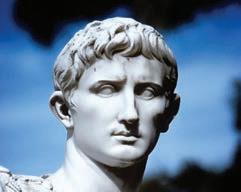
Livia Drusilla was a highly in uential Roman. She became the third wife of Augustus, and gained power because of her marriage. Interestingly, she was married to another man, an enemy of Augustus, and pregnant with her second child when she met Augustus. Her husband had been put on the lists of the proscribed, so she was on the run with her husband and children, eeing Augustus’s army when they met. Augustus was deeply impressed by her, so he made a deal with her husband. In return for sparing his life and letting him go, Augustus made her husband divorce her and leave their children with her. Augustus then married her, later adopted both of her sons, and they spent the rest of their lives together, apparently quite happy overall. Livia had already shown herself to be somebody who could take advantage of the opportunities that came her way when she agreed to marry Augustus, but she was able to in uence people very effectively. Some historians have described her as smart and savvy because she attained in uence at a time when most women could not vote or even appear in public without a husband or male guardian present. Livia presented herself as supportive of her husband’s reform policies. She turned a blind eye to his affairs with other women and served the empire as the symbol of the loyal wife. However, behind the scenes, Livia spent much of her adult life making sure her son became the future heir to the throne – and she succeeded. Her son Tiberius became the next emperor to rule after Augustus.

criteria standards or rules against which something can be judged
Why does history record the outcome of a great battle or the invention of a new technology, but does not track what you had for breakfast yesterday? History focuses on recording and analysing events that are significant. A battle is significant because many people die and who rules a country is often determined. Your breakfast choice does not have the same impact. So, how do we determine and evaluate the significance of key historical events, and the roles and achievements of individual people?
This is done every day in the news. Watch the news on television or your device and consider which global events are mentioned first and why. This will give you an idea of why we consider some events to be more significant than others.
Some criteria for establishing what is significant might include:
1 Many people’s lives were affected.
2 The event affected some people very deeply.
3 The event caused significant consequences.
4 The event is remembered or commemorated long after it happened.
5 A key person had an impact.
Read the profiles of the significant individuals in this section. Using the criteria listed here, and any other criteria you think are relevant to significance, rank the people in order from most signi cant to least signi cant. Justify your choices with a brief explanation.
Key concepts: sources, evidence, continuity and change, cause and effect, significance
Historians collect sources for what they want to learn about, and then determine what the evidence from these sources reveals.
A good historian uses a range of different sources in their inquiry, so they can form the most complete picture possible. There are a range of important questions that historians ask when analysing what evidence can be taken from a source. These include:
•What is the source?
•Where is it from?
•When was it created?
•Who created it?
For a written source, these questions help a historian work out how the
HASS skills: analysing, evaluating, communicating and reflecting
background of the author has in uenced what they have written. If someone was an eyewitness, they may be more reliable than if they are reporting an event secondhand. If the author of a text is writing about an opponent, they may be unreliable because they might be overly critical. The same principle applies if they are writing about themselves, or someone they admire, because they may exaggerate their achievements or leave out negative details. The political or religious beliefs of an author can also affect a source’s trustworthiness.
This type of information is important for working out what a source is really saying. For an archaeological source, these questions are often harder to answer. Archaeological sources can be compared to other nds to determine what evidence they reveal.
Once historians have analysed a source’s background, they can evaluate how relevant the source is for the topic they are investigating by asking:
•Is it useful?
•Is it reliable?
Just because a source may be onesided or untruthful does not necessarily mean that it is not useful. The usefulness of a source is directly related to how much information it reveals about what is being studied, or the site that is being excavated. As an example, a gold mask might be a very impressive nd, but a piece of written text from the same site may provide more useful information.
Some sources might be biased, meaning they only tell history from one point of view. The Roman historian Tacitus is famous for his bias. He wrote very negative, critical things about the imperial family who ruled Rome at the time. He did this because he thought that Rome should be ruled by the politicians in the senate, rather than being controlled by one in uential family. But Tacitus was one of the politicians in the senate, so what he actually believed was that real power should belong to himself and his peers. This belief made him, and what he wrote, biased. Even though Tacitus’s works are one-sided, they are still important to the study of this period. Historians need to take account of bias when they are assessing reliability.

A major problem with history is that we can never fully understand everything that happened in earlier times. Most of what occurred has not been recorded, and what remains is often incomplete or only reveals one side of the story. Historians need to be careful to note the difference between what is fact and what is opinion.
•Facts are things that are well supported by evidence and generally accepted by historians. An example of a historical fact would be that Julius Caesar was assassinated in Rome on the Ides of March in 44 BCE
•Opinions are a person’s ideas about what happened in the past; they cannot be proved to be correct. For example, any theory about why Caesar was assassinated is an opinion.
Like detectives, when historians have collected enough evidence, and assessed the reliability of the evidence, they present their case, outlining their view of what happened.
In Activity 10.9, you will look at a number of sources relating to Augustus, the rst emperor of Rome. Under his rule, the Roman world changed from the republic (in which the senate and people ruled) to a new political system called the principate Although Augustus attained almost complete power over the Roman world, he argued at the time, and wrote a lot about, how he had saved the republic and handed power back to the senate and people of Rome.
unfairly shows only one point of view or is prejudiced
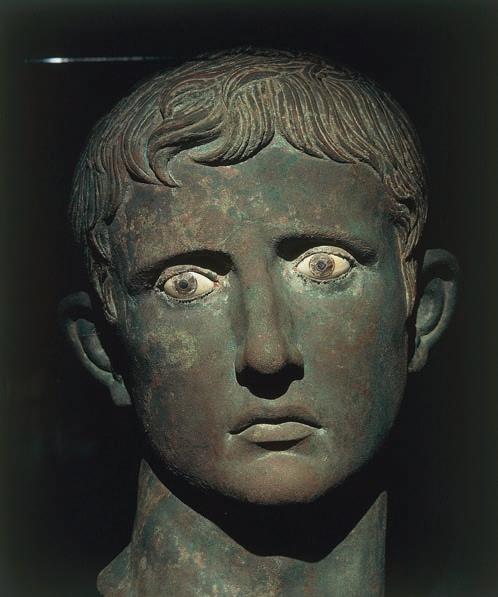
After I had extinguished civil wars, and at a time when … I was in complete control of affairs I transferred the Republic from my own control to the will of the Senate and the Roman people.
Res Gestae Divi Augusti, 34
Source 10.7.4 An extract from the inscription on Augustus’s tomb, in which he describes handing power back to the Roman people. This text was written before his death.
He [Augustus] gradually pushed ahead and absorbed the function [power] of the senate, the officials and even the law. Opposition did not exist … Political equality was a thing of the past; all eyes watched for imperial commands.
Tacitus, Annals, Book 1
Source 10.7.5 Roman historian Tacitus, writing approximately 100 years after Augustus’s death
Augustus was a Roman statesman and military leader who was the first emperor of the Roman Empire, reigning from 27 BC until his death in AD 14. His status as the founder of the Roman Principate has consolidated an enduring legacy as one of the most effective and controversial leaders in human history. https://en.wikipedia.org/wiki/Augustus, accessed 8 November 2019
Source 10.7.6 Modern-day Wikipedia article on Augustus ➜
Identify the following in Questions 1–4 below.
1 Which sources are primary sources?
2 Which sources are secondary sources?
3 What historical facts can you find in the sources? Write a dot point list.
4 What opinions can you find in the sources? Write a dot point list.
5 Wikipedia is an online encyclopaedia, where entries are written by volunteers from a variety of backgrounds. The entries do not go through the same rigorous checking process that most other published information must undergo. With this in mind, explain the pros and cons of using Wikipedia as a source.
Key concepts: continuity and change, cause and effect, significance
HASS skills: questioning and researching, communicating and reflecting
Perspective and contestability
The concept of perspective is a person’s point of view, the position from which they see and understand events going on around them. The concept of contestability occurs when particular interpretations about the past are open to debate, as a result of a lack of evidence or different perspectives, for example.
The following questions refer to perspectives and contestability found in Activity 10.9.
1 Which source/s show bias? Bias is another word for ‘perspective’. Explain why you think these sources have this perspective.
2 Which source/s are the most useful for understanding Augustus’s role in the Roman government? Explain your answer, using the information you gathered to answer Question 1.
Key concepts: continuity and change, significance
HASS skills: questioning and researching, communicating and reflecting
Online quiz
End of section 10.7 review Go online to access the interactive section review and more!
Review questions
Teachers can assign tasks and track results



10.7 Review questions
Source 10.8.1 This terracotta oil lamp in the shape of a gladiator’s helmet from ancient Rome was a sort of souvenir from the gladiatorial games.
Recall
1 Give two reasons why an event might be considered historically significant.
2 Which significant individual is a ‘new man’ (novos homo) and what does this mean?
3 Who was Livia Drusilla’s husband?
4 How did Cicero die?
5 How can historians find out about people from ancient Rome who are not labelled ‘significant’?
Interpret
6 What similarities do the significant people described in this section share? What are their differences?
7 Choose one of the individuals described. Conduct some further research and create a timeline of their life, including at least five key dates. When choosing the dates, you need to think about what makes an event in someone’s life significant enough to be included in a timeline.
Argue
8 It is important for us to continue to investigate ancient Rome and conserve what we nd. Do you agree or disagree with this statement? Explain your answer by giving reasons why you feel one way or the other.
9Explain the extent to which it is reliable to believe that all people commemorated in sculptures should be seen as significant individuals.
Key concepts: sources, evidence, continuity and change, cause and effect, significance
The remains of ancient Rome exist all around us, even if we cannot always see them. Ancient Rome has in uenced how societies work, aspects of many European languages and the sorts of buildings that we use for entertainment. Governments that describe themselves as being republics, such as the United States, adopted the idea of a republic from the ancient Romans. The United States, like many other countries, is ruled by senates and assemblies and, like the Roman Republic, emphasises the idea that rulers should be elected.
To this day, we see parts of ancient Roman life in buildings, art and the layout of
HASS skills: questioning and researching, analysing, evaluating
major cities around the world. The ancient Romans gave us many practical legacies, including 50 per cent of the words used in many languages in Europe, the roads that people still travel along in areas where the empire extended, sewerage systems, aqueducts, and public baths and gyms. By learning about ancient Rome, we can understand that even though the Romans lived about 2000 years ago, there are things that we share with them as humans. By studying the ancient Romans, we can see continuity and change in our own culture.
That just about wraps up this topic. How do you feel you went working through the chapter? Before you attempt the following activities, visit the Interactive Textbook to rate your con dence with this topic either online or via a downloadable checklist.
As part your study of Ancient History, you should do some thinking about what you can learn about ancient Rome from ancient and modern source material. Look back through this chapter and find three sources. At least two must be primary (ancient) sources. The third source can also be a primary (ancient) source, or it can be a secondary (modern) source like the example below – Source 10.9.1.
For each source, create a short summary, describing it as if you were writing about it for someone who could not see or read the source. Try to be as detailed as possible.
In this source, you can see …
Explain how this source shows one key thing that you already know about ancient Rome.
This source supports the idea that the ancient Romans …
Explain how this source supports what you have learnt about ancient Romans.
This source supports … because it shows …
On the next page is an example of how you could tackle this activity.
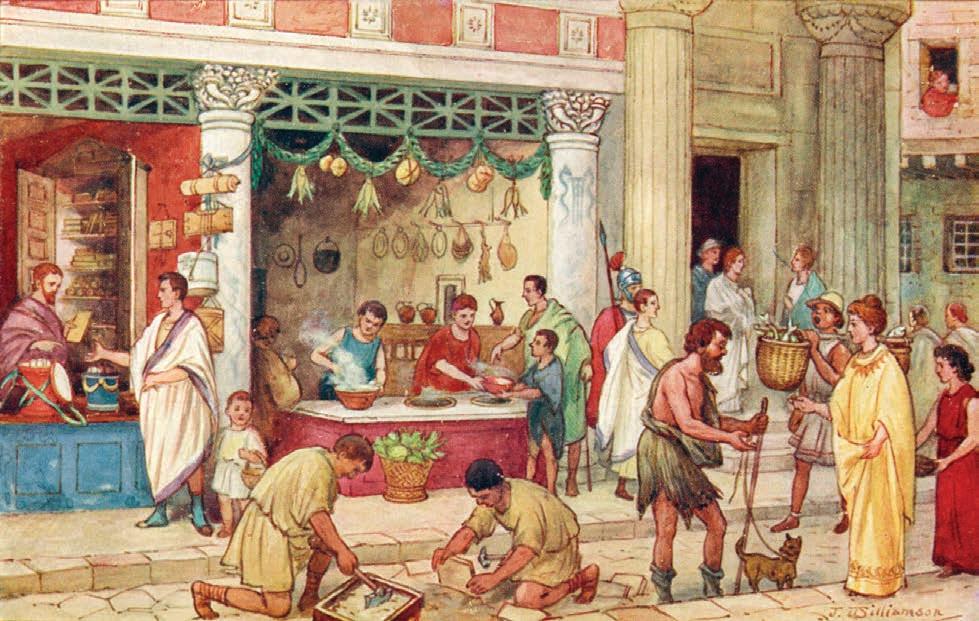
Source 10.9.1 The Roman Empire – a typical street scene in ancient Rome. If you go to Pompeii today, it is not hard to imagine the streets when they would have looked like this with the local people going about their daily business, which might be meeting their friends, buying their groceries, xing the pavers. Produce, food, crafts, merchants and people of all social classes can be seen in this image. Illustration by J Williamson.
This source (Source 10.9.1) shows what daily life would have been like for the Romans. The street is busy with lots of di erent shops and lots of people buying and selling things or meeting their friends in the area. There are also people doing some repair work on the road who might be working for the government. This looks a lot like the places today where we do our shopping, and while we are there we might stop to drink, eat or chat with friends. This source supports the idea that Romans had a good standard of living with lots of di erent types of goods (the shops and market stalls) and services (the people xing the road) available to them.
Explain how the source can be used as evidence of something you have learnt. For example, this source helps us to understand that trade was important to the Romans because there are a lot of di erent items on sale in this market. It also helps us understand that Roman citizens had a culture like ours where there are lots of di erent types of work. This all means that many people living in Rome had quite a high standard of living.
Select one of the famous faces mentioned in this chapter. Complete some more research on this person and then copy and complete the following research table.
When were they born?
What did other people think of them? (Try to find a quote from someone who lived in ancient Rome.)
Did they have a family?
Where didthey live?
What did they look like?

Paste a picture or a description here.
How did they die?
Use your research to analyse the success of the Roman Empire.
What did they do?
Were they celebrated or punished by society?
Why should they be remembered?
Topic: Evaluate the importance of a key aspect of ancient Rome and argue that it was the reason Rome succeeded in ruling as a powerful empire for hundreds of years
In your answer, explain the key aspect you have chosen in detail. Describe how it contributed to Rome’s expansion, and discuss how and why this factor should be considered the most important cause of Rome’s success.
You must support your argument by providing key names, dates, statistics and terms that are relevant to ancient Rome.
Key concepts: sources, evidence, continuity and change, cause and effect, significance
HASS skills: questioning and researching, analysing, evaluating
This chapter is available in the digital version of this textbook.
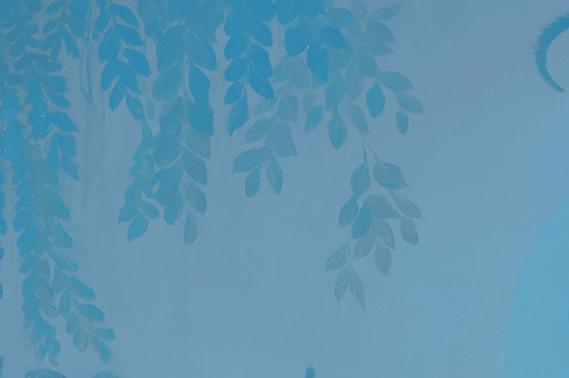






This digital chapter can be accessed via Cambridge GO

This chapter is available in the digital version of this textbook.
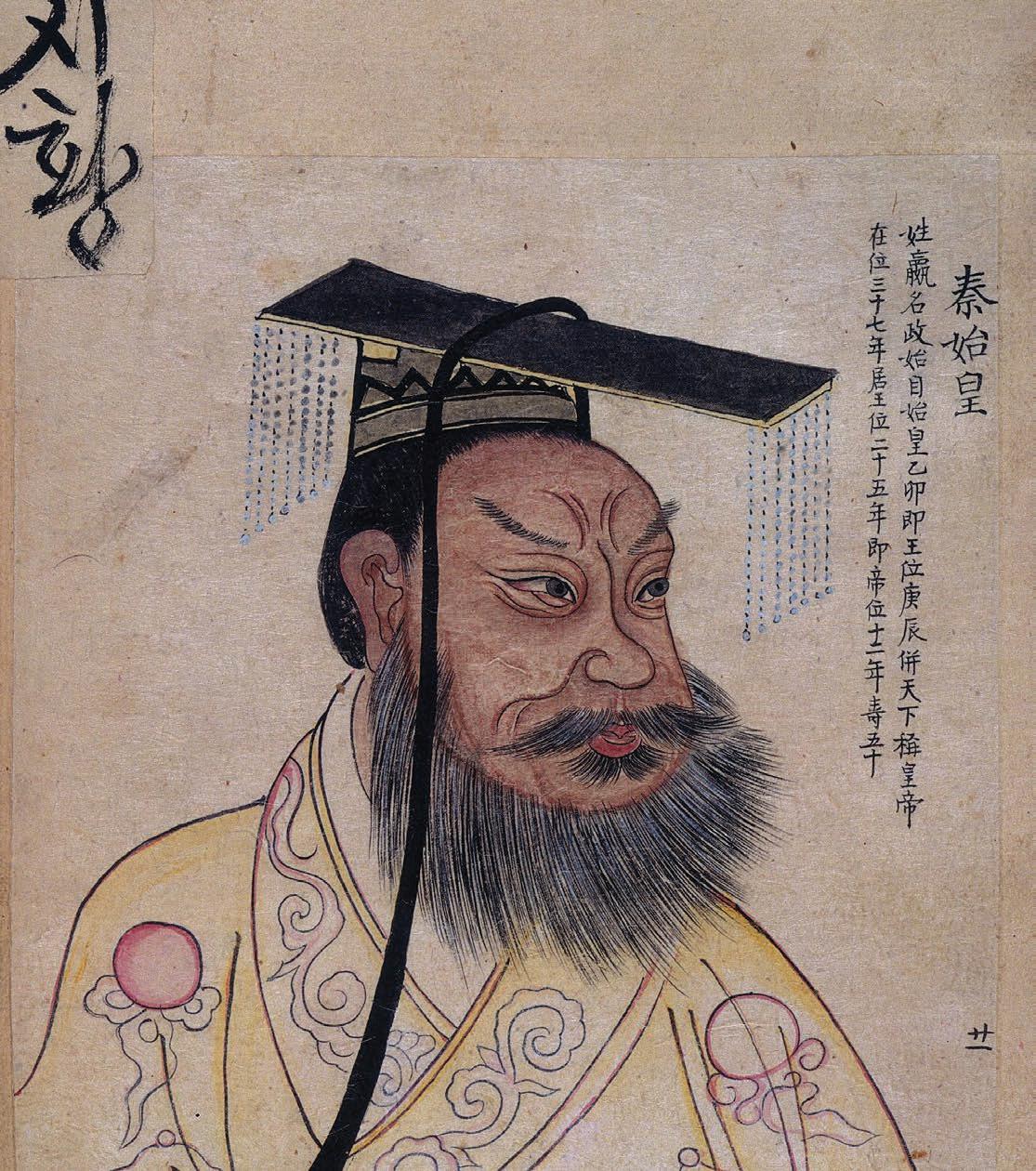





This digital chapter can be accessed via Cambridge GO
History has many connections with other subjects in the Humanities. Have you considered how what you have learnt about the ancient past and ancient societies relates to the other topics you will cover this year? Here’s a sample:
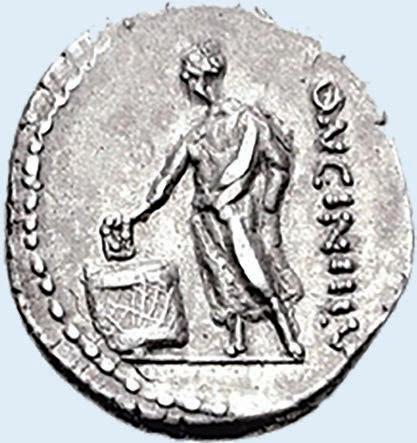
Geography
Investigation
We can learn many important things about the past and the present from archaeological sites that have revealed important written and material artefacts and buildings. However, these important archaeological sites are often in places where people still live. Globally population is also increasing, meaning we need more places for people to live and to grow the food they need. Therefore, urban and farmland areas are growing and spreading.
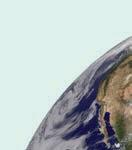




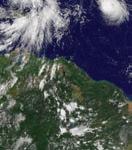



Investigate how urban sprawl, and more land use for farming, have a ected one of the following important archaeological sites: Pompeii; Herculaneum; the great pyramids in Egypt; the tomb of Qin Shi Huangdi where the terracotta warriors lie; the Acropolis of Athens.


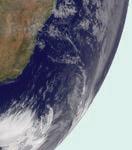




In May 2020, Rio Tinto destroyed the Juukan Gorge caves, which were part of a sacred site for the Puutu Kunti Kurrama and Pinikura (PKKP) people – the Traditional Owners of the land. The caves were among the oldest of their kind in the world, with some of the artefacts found there dating back 28 000 years. Rio Tinto destroyed the caves so that it could access iron ore in the area. The company had a number of di erent options to mine the iron that would not have destroyed the caves, but it chose to destroy the caves instead. Rio Tinto has been condemned internationally for what it did.
The response of Rio Tinto has been to o er compensation to the Puutu Kunti Kurrama and Pinikura (PKKP) people. Is this justice?
• Look up and write down a de nition of ‘justice’.
• Do some research about the plans put into place by Rio Tinto to try to make up for its destruction of these caves. Create a mind map or use a graphic organiser to structure your research. You should aim to discover ‘what, when, where, why, how’.
• Once you have collected your research information, look back over your de nition of justice and decide if justice can be achieved by Rio Tinto. Can it make up for its actions? What do you think? Yes/No? Why do you think what you do? Collect three pieces of evidence to support your decision and be prepared to present them in an Oxford debate in class.
Should museums be free to visit, or should they charge an entry fee?
Research the di erent perspectives about whether or not we should pay to enter museums. Create a PMI chart to show your ndings. Which section of your chart had the most information? Is this the section that you agree with? Write a paragraph explaining your perspective using the information you collected on your PMI chart.
Research how many people have visited the new WA museum Boola Bardip since it opened.
Think about why businesses set a certain price for a product. The WA museum Boola Bardip is a business. How much should the museum charge as an entry fee? How might the museum adjust its entry price according to demand?

Throughout your studies this year, we have asked you to take special notice of certain key concepts across the four HASS subjects. In the following activities, we would like you to retrieve what you know from your memory bank about these six key concepts, and demonstrate your understanding of the concepts in writing.
We hope the activities present another opportunity to see how the key concepts are related across the HASS subjects. We also hope the activities allow you to summarise your work in Humanities and Social Sciences in Year 7 and can be looked at again to revise your studies when you start Year 8!
Activity 1 – Create a summary of how the concepts you’ve learnt about this year connect to each other
STEP 1: Go back through the chapters and identify what each of the concepts in the table below means. Reread the de nition of the concepts in this book rst. Now copy and complete the table by de ning each concept in the table in your own words (one has been done for you).
De nition
The process of making a choice is not always easy. Because economists study how people satisfy unlimited wants with the use of scarce resources, they are concerned with strategies that will help us make the best choices. Every time a choice is made, something is given up.
STEP 2: Identify links between concepts by grouping them into pairs or groups of three. For example: you might connect Sources and Evidence and Making choices together because we need to use information from sources to help us make good economic choices. Write out your ideas as a series of brainstorms until you have used all of the concepts in the table. Share your brainstorms with a partner. How is your work the same and di erent from each other? Give your partner one piece of positive feedback and o er one idea that might help them improve their work.
STEP 3: Create a diagram that demonstrates how these concepts are interconnected. Use arrows to show how each concept connects to each other and write your reason for making this connection along each arrow. An example is shown for you below.
Sources are pieces of information about people, events or ideas.
Sources can be used as pieces of evidence
All good claims or points made in an argument need evidence to support them
We need to collect information from sources to help us make decisions about how to use the resources available to us
Making good economic choices depends on comparing the costs and benefits of using the available resources
We need to use sources as evidence to justify the decisions we make
Evidence is information that helps us to support a claim or argument
STEP 4: Repeat Steps 2 and 3 until you have connected all of the concepts into pairs or groups of three.
EXTENSION CHALLENGE: Can you interconnect all of these concepts in one diagram?
Activity 2 – Writing task: using key concepts meaningfully
In your studies of the Humanities and Social Sciences, you will need to con dently and correctly use the terms related to your subject. Write a paragraph of 100–150 words in response to the question below using all the key concepts listed. Ensure that your use of these terms shows your understanding of what each term means.
HINT: The question is asking you to do more than de ne each of these concepts and then put these de nitions together in a paragraph.
To answer the question effectively, in a well-constructed paragraph, you will need to go through several steps.
STEP 1: Identify the key words of the question. Highlight, underline or circle them. These are the important things that must be addressed in your paragraph.
STEP 2: What does the word ‘explain’ in the question below mean? De ne it. Write this de nition down.
STEP 3: Use the diagram you constructed in Activity 1 to help you plan how you will address the key words in the question (identi ed in Step 1) in your paragraph. Make sure you have also explained the connection between the words on the list. To make an e ective plan, you might draw a ow chart, brainstorm or use a graphic organiser. You might need to do more than one plan before you are happy with your nal ideas.
Question: Explain how big ideas you have learnt in HASS over Year 7 relate to each other.
Use these words correctly in your answer:
• the Westminster system
• rights and responsibilities
• making choices
• place
• sources
• evidence.
STEP 4: Before you start writing, analyse the assessment rubric for information on how you might structure a response that scores high marks. Highlight the key ideas in the right-hand column (5 mark column) of the assessment rubric, so that you know exactly what is expected of a response that gets top marks.
QUICK REVIEW: Does the plan you wrote for Step 3 help you get the best marks on the marking key? If the answer is yes, start writing. If the answer is no, go back and adjust your plan. Ask a partner and/or your teacher for feedback on your plan before you start to write.
Assessment rubric: Using key concepts meaningfully
Word limit: 100–150 words
Topic sentence
The topic sentence is unclear and appears unrelated to the task.
Evidence Little or no attempt has been made to use evidence.
Explanation
Answering the question
Limited or no explanation has been attempted within the response.
A simple link to the topic/question has been attempted.
The topic sentence is not clear and/or accurate, and/or does not clearly address the task.
Some attempt has been made to use evidence; however, it appears generalised and/or is inaccurate or irrelevant.
Some attempt has been made to explain.
The topic sentence is clear and/or accurate, and satisfactorily addresses the task.
There is some supporting evidence that is mostly relevant and/or accurate.
Explains in a general way.
The topic sentence is clear and accurate, speci c, and clearly addresses the task.
There is a good use of supporting evidence that is accurate and relevant.
Explains clearly with some detail in a logical way.
The topic sentence is clear, detailed, accurate, speci c, and clearly addresses the task.
There is excellent use of supporting evidence that is detailed, accurate and relevant.
Constructs a logical and complex argument that explains the topic accurately, clearly and in detail.
Provides simple points that link to the topic/ question, the ideas or the direction of the response may not be clearly structured.
E ort and organisation
The response is incomplete or disorganised. No attempt to check spelling and grammar, indicating poor or no planning, drafting or proofreading.
The response is poorly presented, disorganised and contains several spelling and grammatical errors, indicating little planning, drafting and proofreading.
Produces a logical response to the topic/question. An attempt has been made to structure the response. Some analytical thinking about the topic/ question is evident. Makes some connections between the evidence and the topic/question.
The response is satisfactorily presented, may contain some spelling and grammatical errors, indicating limited planning, drafting and proofreading.
Produces a coherent response to the topic/question that is structured clearly. Some analysis of the topic/question.
Connects relevant evidence and some to the topic/question.
Produces a consistent, logical response to the topic/question that is well structured. Analysis is clearly connected to relevant evidence and the topic/question
The response is well presented, contains few spelling and grammatical errors, and shows evidence of some planning, drafting and proofreading.
The response is neatly presented, checked for spelling and grammar, and shows evidence of careful planning, drafting and proofreading.
Chapter 1 The Australian Constitution
Act of Parliament statute law, resulting from a Bill successfully passing through Parliament and gaining royal assent
Australian Constitution a set of rules that came into effect on 1 January 1901. It outlines some of the rights of Australians and how power is shared between federal and state parliaments.
bicameral refers to the two houses of Parliament in New South Wales, Victoria, Western Australia, South Australia and Tasmania
Bill a drafted law that has not yet been passed by Parliament check and balance the sharing of power between groups, individuals and institutions that allows one group to prevent the abuse of power by another group
civil liberties basic rights of individuals that are protected by law (e.g. freedom of religion and freedom of speech)
concurrent powers existing at the same time; powers held by both state and federal parliaments
constitutional monarchy a form of government where the monarch is the head of state delegated legislation laws made by authorities other than Parliament, which are delegated the power to do this by an Act of Parliament
democracy a political system where a government’s power is vested in its citizens, who vote through elections to shape decisions
Federation the process of uniting several states to form a single national government
election a local, state or national ballot cast by citizens who vote for a person from a political party or a person standing independently
electorate a de ned area within a state or territory that is represented by a member of a political party or an independent exclusive powers powers that can be exercised only by the federal Parliament
Governor the monarch’s representative at a state level
Governor-General the monarch’s representative at a federal level
justice the system of laws in a country that judges and punishes people, but can also mean fairness in the way people are treated legislative power the legal power or capacity to make laws
preamble an introductory statement or declaration
referendum a general vote on an issue affecting the Australian Constitution that all enrolled voters must vote on
residual powers those matters on which the states can legislate, as they are not referred to in the Australian Constitution
state a de ned area within Australia controlled by its own political unit, which has the power to pass its own laws. These laws are protected by the Australian Constitution, except where they contradict Commonwealth law.
territory a de ned area within Australia controlled by its own political unit, but its laws can be revoked by the federal government
unicameral refers to a Parliament having one house, such as in Queensland, the Northern Territory and the Australian Capital Territory
Westminster system based on the British political system developed in Westminster, London. It is another term for parliamentary government, in which the executive is drawn from the legislature. Government is formed by the majority party or coalition in the lower house of Parliament. The leader of that party or coalition becomes the Prime Minister.
writ a form of written command that is legally binding
Chapter 2 Australia’s legal system
barrister a lawyer who can give specialised legal advice and can argue a case in both higher and lower courts
beyond reasonable doubt a legal concept in a criminal trial in which a person can only be found guilty if the judge or jury, after examining the evidence, nds that it conclusively shows the accused committed the crime and there is no other likely cause plaintiff the person making a legal complaint against someone else in court in a civil case rule of law the principle that nobody is above the law. This can be seen in the requirement that government actions and decisions must be in line with the laws the government creates.
solicitor a lawyer who is trained to prepare cases and give advice on legal subjects, who can also represent people in lower courts
Chapter 3 Consumers and businesses
accustomed to be more used to or familiar with something
adaptive the ability of producers and businesses to change their practices and products as consumer preferences change
businesses a key group in the economy who use factors of production to produce goods and services
catalogue the complete list of items available for viewing or purchasing
certify the process of acknowledging or verifying that a good is produced in a certain way
cocoa a bean that is the key ingredient in the production of chocolate
competitive the idea that businesses must stand out compared to their rivals in order to attract consumers and be successful
consumers a key group in the economy who purchase goods and services from businesses
cost of production the value of the resources (or factors of production) required to produce a good or service
disequilibrium an economic concept where economic forces are imbalanced and change needs to occur in order to return to equilibrium dominant something is the most common or major way of doing things
DVD (digital versatile disc) a round disc that stores digital media such as videos and music. The media can be accessed by playing the DVD through a machine called a DVD player.
economic markets places where two groups interact and exchange resources with each other. They can be physical or non-physical (i.e. virtual).
economic model a way of simplifying realworld economics using diagrams to help us study it better
economic problem the dilemma of having unlimited needs and wants, but limited resources to satisfy those needs and wants
economics the study of how our society produces goods and services with our limited resources, and how these goods and services are consumed
equilibrium an economic concept where all economic forces are in balance and stability is created
ethical something that has been done or made in a morally good way (i.e. it does not harm people or the environment)
ethical challenges controversies regarding the way in which a good is produced in terms of its impact on people and the environment
competitors other businesses in a market that produce similar goods or services and are therefore in competition
consumer behaviour the way in which consumers make decisions about what to purchase
ethical consumption consumers purchasing goods and services that have been made without causing harm to people or the planet
forced labour instances when people are made to work against their will or in poor working conditions
fundamental something that is very important or core to the study of economics
global awareness the idea that people are becoming more aware and informed about experiences of people in other parts of the world
government regulation the laws put in place by the government to protect workers and the environment
independent businesses small and often family/individually run businesses that employ a small number of staff labour one of the four factors of production that include the human resources used to produce goods and services
multinational corporations large businesses that operate across multiple countries and employ large numbers of people needs goods and services that are essential for human survival
opportunity cost the value of the next best alternative forgone
predominantly something is done most commonly or often
pricing the way in which businesses decide how much money to sell their products for prioritise to value something more than other things
profit the surplus (or extra) money that a business received for selling a good or service after factoring in the cost of production (i.e. price of product – cost of production = pro t received)
rational a decision that is made by weighing up the advantages and disadvantages and choosing the best option
resources money, materials or inputs that can be put towards producing a good or service
video on demand media content that can be accessed by consumers at their convenience without xed times (which is the case on traditional media formats such as television)
wants goods and services that are nonessential for survival but enhance quality of life
sacrifice the act of giving up something scarcity the concept that we have limited availability of resources on Earth strategy a way of making decisions that considers the advantages and disadvantages to make the best decision streaming media content that can be accessed via the internet
worker exploitation when workers experience limited rights and poor pay
agreement a set of expectations and terms that have been acknowledged and arranged between two or more parties
assets any property owned by a person or company regarded as having nancial value business model the way that a business conducts its operations
business opportunity a situation in which a business identi es an opening in the market and can take advantage of it
business plan a document outlining the goals and strategies of a business campaign to organise a coordinated course of action against a particular group or idea
cassette a small plastic box that contains a tape that can be used to play music
CD (compact disc) a at circular plastic disc that contains digital information that can be accessed by a CD player
communicator a person who has the ability to express their ideas effectively with a team or with consumers
competitive to have an advantage or edge over rivals in an economic market
competitors other businesses working in a similar market that act as rivals
concise short and succinct
creative control the ability of individuals and businesses to choose to make their own decisions regarding aspects of the business
customer experience the overall satisfaction a customer has from using a particular product or service
debt a sum of money that is owed to another party (usually to a bank or other loaning body)
diversity having people from different backgrounds (whether age, gender, race or other identity features)
empathetic able to understand and relate to how others feel
employee anyone that is hired by a business for work on an ongoing basis
entrepreneurs individuals who set up new businesses with nancial and/or personal risks
entrepreneurship the act of setting up or establishing a new business gap in the market when consumer needs for a particular good or service are not being met by the existing products on offer gig economy a type of market in which workers have exible working conditions and are connected directly to consumers through a digital app grants sums of money that are given to organisations by the government for speci c purposes
independent contractors people who provide services to a company but are not employees of the company
initiative the ability to be proactive about situations and take action before a problem arises
innovation the act of using new and creative solutions to challenges
innovation-active a way of running a business that emphasises the importance of having new business approaches and practices leader a person who has the skill to motivate and energise a team to achieve collective goals
operating costs the expenses that a company must pay in order to run its business (such as costs of workers, costs of machinery, costs of renting of ces or factories)
pooled bringing multiple things together private transport services services that allow customers to travel from one point to another in a private vehicle (i.e. not on public transport)
problem-solving skills the ability to proactively identify and respond to challenges
reporting obligations the requirement of companies to provide information to government bodies about their nances and operations
ride-share a model of business where a company connects contracted drivers with customers via a digital app
risk-taking actions that involve some degree of potential personal or nancial sacri ce in return for a reward
setting up costs the initial nancial expenses incurred as a result of establishing a business
sonic boom the noise made when an object reaches the speed of sound and breaks the sound barrier
start-up a business that has been created by an entrepreneur from scratch
stocks (also called shares) a portion of a company that is sold off to generate money for investment purposes
strategic thinker a person who has the ability to pursue long-term and short-term goals through weighing up costs and bene ts sustainable a product, or way of doing something, that is able to be maintained in the long term
liabilities any legal or nancial responsibilities that an individual or company has market dominance the ability of a business to have a large command of consumer interest in a particular market
non-verbal communication our body language and the way that indicates our feelings and expression
trademarks symbols, logos or branding that is legally protected by a company
Chapter 5 Water in Australia
agricultural industry the business involved in cultivating plants and livestock
amphibians animals that live on land and water but must produce their eggs in water
aquaculture the breeding and harvesting of sh and other freshwater organisms
aquifer layers of rock or sand that contain water
arid very dry, often without rainfall to support plants
artificial made by people, often as a copy of something natural
availability how easily people can access a service or facility
available water resources water that can be accessed easily and cheaply
bores holes drilled into the ground to access underground water resources
climate the long-term trends in the weather conditions of a place, such as its average rainfall and temperature
climate change long-term variation in Earth’s rainfall and temperature patterns
condensation the process by which water vapour in the atmosphere cools and changes into liquid water
crop yield an amount of a crop produced cull the selective slaughter of animals to reduce their population
deficit an amount of a resource below what is needed
drainage basin an area of land where precipitation collects and drains into a central point such as a river channel
drought a long period of water shortage, usually as a result of low rainfall
environment the air, water and land of a particular area, which contains people, animals and plants
environmental resources materials that are from the natural environment, such as water and wood
ephemeral something that happens only for a short time
filtered the process of removing solids and impurities from water
finite resources resources that have a limit or end
fossil fuels fuels that were formed underground from plant and animal remains millions of years ago. Examples include gas, coal and oil.
evaporation the process of a liquid changing to a gas, especially by heating
exploitation the use of something in order to get an advantage from it
fieldwork gathering information and data about a natural or human environment outside the classroom
fresh water water with less than 0.5 per cent of dissolved salts
geographical processes a series of events or actions that change environments, spaces and places
gigalitre a metric unit of capacity equal to one billion litres
glaciers large masses of ice that move slowly. They are frozen rivers of ice that form when snow accumulates and is compacted.
groundwater replenishment the act of re lling aquifer supplies with water
hard surfaces human-made surfaces, such as concrete, that cover the natural ground and limit the amount of water that can in ltrate the soil to become groundwater harvest to pick and collect crops, or to collect plants, animals or sh to eat
hydro electricity electricity produced by the force of fast-moving water such as rivers or waterfalls
hydrological relating to the study of water on Earth – for example, where it is and how it is used
ice caps thick layers of ice that permanently cover an area of land
infiltration the process by which water is absorbed into the ground
infinite resources resources that are without limits
infrastructure the physical structures and facilities needed within a community, such as roads, buildings and pipelines
interconnection the relationship between places and people, and the ways in which they in uence one another
irrigation the practice of supplying land with water so that crops and plants will grow La Niña the cooling of water in the central and eastern Paci c Ocean
megalitre a metric unit of capacity equal to one million litres
monsoon a season of heavy rain non-renewable resources resources existing in limited quantities that cannot be replaced after they have all been used nutrients any substance that plants or animals need in order to live and grow
ore a type of rock or soil that can be mined to obtain metal
perennial something that happens repeatedly or all the time
phenomenon an occurrence or observable fact
porous something that has many small holes so liquid or air can pass through, especially slowly potable water that is clean and safe to drink potential water resources water that is not easily obtained
precipitation water that falls from the clouds towards the ground, especially as rain or snow purified the process of removing dirty or harmful substances from water regenerate to grow again regulated controlled by rules or laws renewable resources resources that can be produced as quickly as they are used reverse osmosis when a liquid moves through a porous membrane in the opposite direction of the natural process run-off water that is not absorbed by the land and ows from high areas to low areas sewage waste matter such as human urine or solid waste
sleet rain that also contains some ice species a group of plants or animals that are classi ed as having the same characteristics stunting to prevent the growth or development of the body
transpiration the process of losing water through the surface or skin of a body or a plant
tributaries rivers or streams that ow into a larger river or a lake
urban relating to towns and cities
wastewater water that has been used in the home, business or industry
surplus an amount of a resource above what is needed
sustainability the wise use of resources so that they are available into the future sustainable causing little or no damage to the environment and therefore able to continue for a long time
water crisis occurs when the amount of fresh water that is easily available within a region is less than what the region needs water scarcity a lack of freshwater resources to meet the demands of water usage within a region
weir a small dam or barrier stopping the ow of a river
accessibility resources or services are available and affordable for all people to use
affordability the ability to afford a service or attendance of a facility – for example, going to the doctor
autonomy the ability to make your own decisions
change the ways in which something is different from the past
consultation a meeting to discuss something or get advice
cultural ties meaning related to habits, traditions or beliefs in a society equity all people have equal access to resources that meet their basic needs
foot traffic the number of people walking through an area
historical ties meaning related to aspects of the past
intangible something that exists but you cannot see or touch it
linguistic connected with language liveability the qualities of a place that enable a person to live there with a good standard of living. To work out whether a place has a high or low level of liveability, we consider the quality of economic, environmental and social living conditions in that place.
marginalisation the act of treating someone as if they are not important megacity a city with 10 million or more residents
metropolitan area a major city and its nearby suburbs or towns that form a continuous urban area
pedestrian people who are walking rather than travelling in a vehicle
perception the way something is viewed or understood
periphery the external boundary of an area population density a standard measurement of people per square kilometre, which can be calculated at different scales (suburbs, cities, countries, regions)
pull factor the reasons people move into an area
push factor the reasons people move away from an area
rural–urban migration when people move from rural areas to urban areas, usually for better opportunities such as employment and education
sanitation the system for taking dirty water and other waste products away from buildings to keep places clean and protect people’s health
scale the size of an area and how it is viewed in relation to another area
sense of place the meaning that a person or group attaches to a speci c area or space space how different places, and the features within places, are distributed tangible things that you can physically see and touch
urban consolidation keeping residential development and population growth restricted to the urban areas that already exist
Chapter 7 Deep Time history of Australia
accuracy the analysis of a source to establish correctness by identifying purpose, corroborating the information with another source and assessing bias
anthropological to do with the study of humankind
urban planning the process of planning the layout and infrastructure of a place urban renewal the improvement, or sometimes the replacement, of buildings in a city
youth young people aged between 12 and 24
anthropologist scientist engaged in the study of humankind, both from past and present societies
archaeologist a person who studies human history by digging and uncovering sites, and investigating objects and other remains artefact an object made by a person, such as a tool or a piece of furniture. It can tell us something about the people and society it came from.
biodiversity the variety of life on Earth, including plants, animals and microrganisms
constellation a group of stars that appear to form a recognisable pattern in the night sky contestability where interpretations of the past differ
context the analysis of sources to understand the nature of society and the historical period in which the source is created, the signi cant events related to the source, and the language and ideas of the time
continuity something continuing for a long period of time without being changed or stopped
cultural heritage an expression of the ways of living developed by a community and passed on from generation to generation cultural landscape a place with many layers of history that evolves through design and use over time. A cultural landscape embodies the associations and uses that evoke a sense of history for a speci c place.
Deep Time history refers to the events and processes over vast spans of time displacement forced removal of people from their ancestral lands, often resulting in loss of culture, connection and livelihood dispossession the taking of lands and resources without consent
Elders knowledge holders respected by First Peoples, often called Aunty or Uncle empathy the ability to relate to other people
fish traps methods for capturing sh in seas, rivers, creeks and streams, such as pools of shallow water against arti cially built walls or fences or woven nets or baskets placed in weir and pond systems
fish weir a way of channelling sh into sh traps by using a fence or wall built into the water of a river, creek or stream. The fence allows the water to freely ow through it.
fossil evidence information gathered from the shape of a bone, a shell, or a plant or animal that has been preserved in rock for a very long period
grains small, hard, dry seeds from grasslike plants, used as a staple food source, often ground into our for making bread historical significance relating to the longterm importance of an event, person or idea, this is a term people today apply to identify important things that happened in the past kinship a social system that establishes a person’s relationships and responsibilities to other people and entities
Knowledge stories/Dreaming stories knowledge connected to speci c Country, places or things, with deepening levels, connected to dance, song, art, ceremony and cultural practices, passed on through kinship language group a community of people who speak a common language, often re ecting cultural, historical and ancestral ties lobbying communicating with government of cials to try to in uence their decision material evidence physical objects that can help explain an event or a site or solve a history mystery
mosaic pattern a combination of diverse pieces of land, as in grass and adjoining forest
origin analysis of a source to establish who created the source as well as where and when it was produced
perspective the way we see something, a point of view or attitude towards or about something
purpose analysis of a source to establish the original reason for its creation
natives a colonial word for First Peoples that is no longer used as it has derogatory meanings
oral history the recording of past events in a spoken form, including through song, story or dance
reciprocal something done in return for something else
regenerative food cultivation a method of farming that creates biodiverse, sustainable and resilient food systems
settlers people who move to a new place and establish a permanent society
Songlines are a means of storing and learning knowledge, ancient and modern. They are stories embodied in the land, sea and skies to be remembered and passed on through song, dance, art, ceremony and, most importantly, through attachment to Country. A Songline is a system for the retention and transmission of knowledge to enhance lives (from: https:// cambridge.edu.au/redirect/11216).
source any written or non-written material that can be used to investigate and provide information
strata layers of material in the ground deposited one upon another (singular: stratum) tundra an environment where tree growth is made dif cult by permanently cold temperatures and short growing seasons usefulness the analysis of a source to determine how relevant it is in relation to historical questions
yam a type of root vegetable
Chapter 8 Ancient Egypt
ankh a symbol like a cross with a loop (an oval shape or circle) at the top, used in ancient Egypt to mean ‘life’
bas-relief a type of art in which shapes are cut from the surrounding stone so that they stand out slightly against a at surface canopic jars jars for preserving the internal organs of the deceased, as part of the process of mummi cation. Different jars were made for different organs.
chariot a two-wheeled vehicle that was used in ancient times for racing and ghting. It was pulled by a horse or horses.
civilisation a society that has developed an organised system of government, social customs and religious beliefs, as well as forms of technology that include writing and the arts
clubfoot a condition that causes the foot to turn inward and downward. In severe cases, the bottom of the foot faces sideways or upward and makes walking very dif cult.
dynasty a succession of rulers from the same family. In ancient Egypt and China, some dynasties included rulers that were not related to the ruling family.
exile a forced absence from one’s home or country. Anyone who was exiled was not permitted to return.
famine when there is not enough food for everyone in society
frescos pictures painted directly onto fresh plaster
garrisons a place where a group of soldiers are stationed
Hapi (or Hapy) the god of the annual ooding of the Nile in ancient Egyptian religion
inundation the yearly ooding of the Nile River
militia a military force that is raised from the civil population in an emergency. A militia is not a permanent or professional military force.
mummification a method of preserving a dead body by removing the internal organs and drying out the body
nation-state an area of land ruled by a central government with clear and xed boundaries
polytheistic believing in many gods
primary sources documents or artefacts that were created at the time of the historical event or era
representation the way that someone or something is shown or described
sarcophagus a stone cof n decorated with sculpture or inscriptions
natron a salt mixture from dry lake beds in ancient Egypt. It has been used for thousands of years as a cleaning product for both the home and body. It was the mineral used during mummi cation ceremonies in ancient Egypt because it absorbs water and behaves as a drying agent.
Nile River the main river running through Egypt
satire humour expressed through irony, exaggeration or ridicule to expose and criticise people’s stupidity or vices
shaduf hand-operated device for lifting water from rivers, used in ancient Egypt from c.2000 BCE to irrigate the land
silt rich, ne soil carried in the waters of a river
tribute goods or services that one group gives to another as a sign of respect or, as was often the case in ancient Egypt, of submission or allegiance
unification the process of combining things or people
was-sceptre a stylised animal head at the top of a long, straight staff with a forked end. It was a symbol of great power and was probably originally a mace, a weapon.
Acropolis the complex of temples and other buildings built on the hill in the centre of Athens
agora an open public space used for markets or assemblies
archonship high of ces in command of important jobs in the city-state of ancient Athens
barracks a place where soldiers live and train
city-state a city that rules itself and the area immediately surrounding it conserve to protect something so that it is not damaged or destroyed
dramatist an individual who writes dramas ethical understanding to consider different perspectives on what is morally right
garrison a group of troops stationed in a town or city
grain crops plants used to grow grain to use in making food such as bread Greco-Persian Wars a series of con icts between the Greek city-states and the Persian Empire military state a society that is organised around the military. All of the Spartan boys who were citizens had to go into state military training. This was the only job they were allowed to do, and they started at age 7 when they moved out of the family home and into the military barracks.
mythological something that is imaginary, from myths or legends pantheon all the gods in a religion or mythology
Peloponnese a south-western mass of land in Greece surrounded by sea. It is joined to the mainland by a narrow strip of land called the Isthmus of Corinth. Sparta was dominant in the Peloponnese for centuries.
Peloponnesian War a series of con icts between Athens and Sparta, and their allies
Persian Immortals an elite military unit for two centuries between 550 BCE and 330 BCE. Ten thousand-strong, the Immortals represented the best of the empire’s troops. They operated as the emperor’s guard and were part of the army.
playwright a person who writes plays rump jumps an exercise that involved the person jumping up and hitting their feet sophist a teacher in ancient Greece who specialised in philosophy
terracing cutting into slopes to create at platforms of land, which can then be used to plant crops and prevent rain from running off the sloped surfaces of the hills
Chapter 10 Ancient Rome
analysis (in the study of history) to identify the purpose of sources and determine their accuracy and reliability
barbarian someone from another place who spoke a different language. For ancient Romans, a barbarian was any person who was not part of the Roman Empire. biased one-sided, unfairly shows only one point of view or is prejudiced
conscripted being forced to join the army by the government to defend your country in a time of war. Conscription is something that has continued – Australian soldiers were last conscripted by the Australian Government in the 1960s for the Vietnam War. consul the leader of Rome. During the Roman Republic, two consuls were elected to of ce every year.
contestability (in the study of history) this occurs when interpretations about the past are up for debate, especially between different historians cremation to dispose of a dead body by burning it to ashes
criteria standards or rules against which something can be judged
dictator someone who rules with total power over a country or territory
Etruscans an ancient civilisation of people who lived to the north of the city of ancient Rome evaluation (in the study of history) proposing explanations and drawing conclusions about a historical event, development or issue and its connections with the present
terrain the landforms of a particular area typology using the characteristics of an object to classify them over time. It helps in showing how an object has changed over time.
underworld a place where the ancient Greeks believed the soul went when a person died. It was ruled by the god Hades.
fermenting a chemical process that breaks down substances into simpler ones. It is caused by microorganisms like bacteria, yeast and mould.
founding when something new is created by a people, generally a city or place hearth the central replace in a home
Latins ancient Italian tribe of people who lived in the area bordering Rome to the south
legacy an object, idea or story left behind or handed down by people from the past monument statue or building created to commemorate an important event
mythology a story, often with some kind of moral message that is part of a religion, that describes a heroic deed or the origin of something
oracle a person or thing considered to provide insight, wise counsel or prophetic predictions, most notably including precognition of the future
patrician wealthy upper-class person in ancient Rome who often had a political role in society
patron someone who supports others with money, gifts or favours. A patron god of a place was seen to support that place with divine favour.
proscription a list posted in Rome of all those who were outlawed and could be killed by anyone for a reward
Romanisation the process of making something similar to the beliefs and practices of Rome sack to invade and destroy a city
senator politician who has been elected to a senate
tectonic plates parts of Earth’s surface that move in relation to each other. Where the edges of the plates occur, the heated inner core of the planet breaks as volcanic activity on the surface.
temples places for worshipping gods. In ancient Rome, a temple would have an altar, where animals were sacri ced.
floodplain an area of at land near a river that is often ooded when the river becomes too full
infantry soldiers who ght on foot karma in Jainism, it is believed that karma determines quality of life. Karma is thought to be a physical substance that sticks to the soul. The happiness of life results from how much karma sticks to the soul because of good or bad actions and thoughts that are carried out.
livestock the term for animals like cows, sheep, pigs, goats and chickens that people raise
monsoon season a period of time between May and September where the wind blows from the south-west, bringing with it a large number of storms
plain a large area of at land
plateau a large, at area that is high above sea level, often surrounded by mountains pyre a platform with wood and other ammable items on it where a dead body is placed to be burned
Rigveda the oldest of the sacred texts of Hinduism
samsara the cycle of life, death and rebirth
ancestors people you are descended from like a parent, grandparent, greatgrandparent, great-great-grandparent and so on
autonomy the right to rule or live independently
Vindolanda writing tablets a set of wooden writing tablets from the Roman fort of Vindolanda in northern England. The tablets are thin slices of wood around the size of postcards written on in ink by the soldiers and of cers at the fort. Most of the tablets date to around 100 CE
caste a system of dividing Hindu society into classes
cavalry soldiers who ride horses
bodhisattva a follower of Mahayana Buddhism who is able to reach nirvana (a state without suffering) but delays doing so out of compassion for the suffering of others bolt a large roll of cloth
consort a wife or companion of a ruler corroborate to support or con rm an idea or claim with evidence
currency any type of item used in trade; often coins or notes, but it also can be items of high value such as gold, gems or silk divination the practice of foretelling the future through supernatural means
dynastic succession a process of passing power and authority from one person to a family member, traditionally often father to son
elixir of immortality a potion or medicine to keep you alive forever
feudal a societal structure based on rank where higher ranks owe protection to lower ranks. Lower ranks give a tribute in return, usually agricultural goods.
grave goods items buried alongside a body; usually personal possessions or items to help their journey to the afterlife
kilns ovens for drying or baking mud and clay
magnanimity the quality of being highly moral in forgiveness and overlooking insults from others
matriarchal society a society ruled by women mausoleum a very large and expensive grand tomb
military campaign a series of con icts or battles that are aimed at reaching the same goal
monetised to have a currency, usually in the form of coins
osteoarchaeologist an archaeologist who specialises in the study of bones
preservation to prevent decay or damage to historical artefacts and sites
querns stone tools used for grinding grain
shrine a place used for religious rituals
smelting a process of heating rocks and sediment to extract metals
sovereign a king or ruler who has total and permanent authority
vassal a person or state that must pay tribute to a king in return for protection virtues qualities of goodness or moral excellence